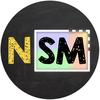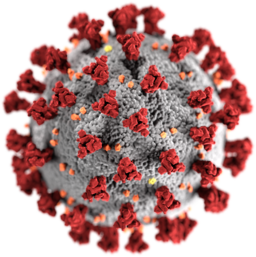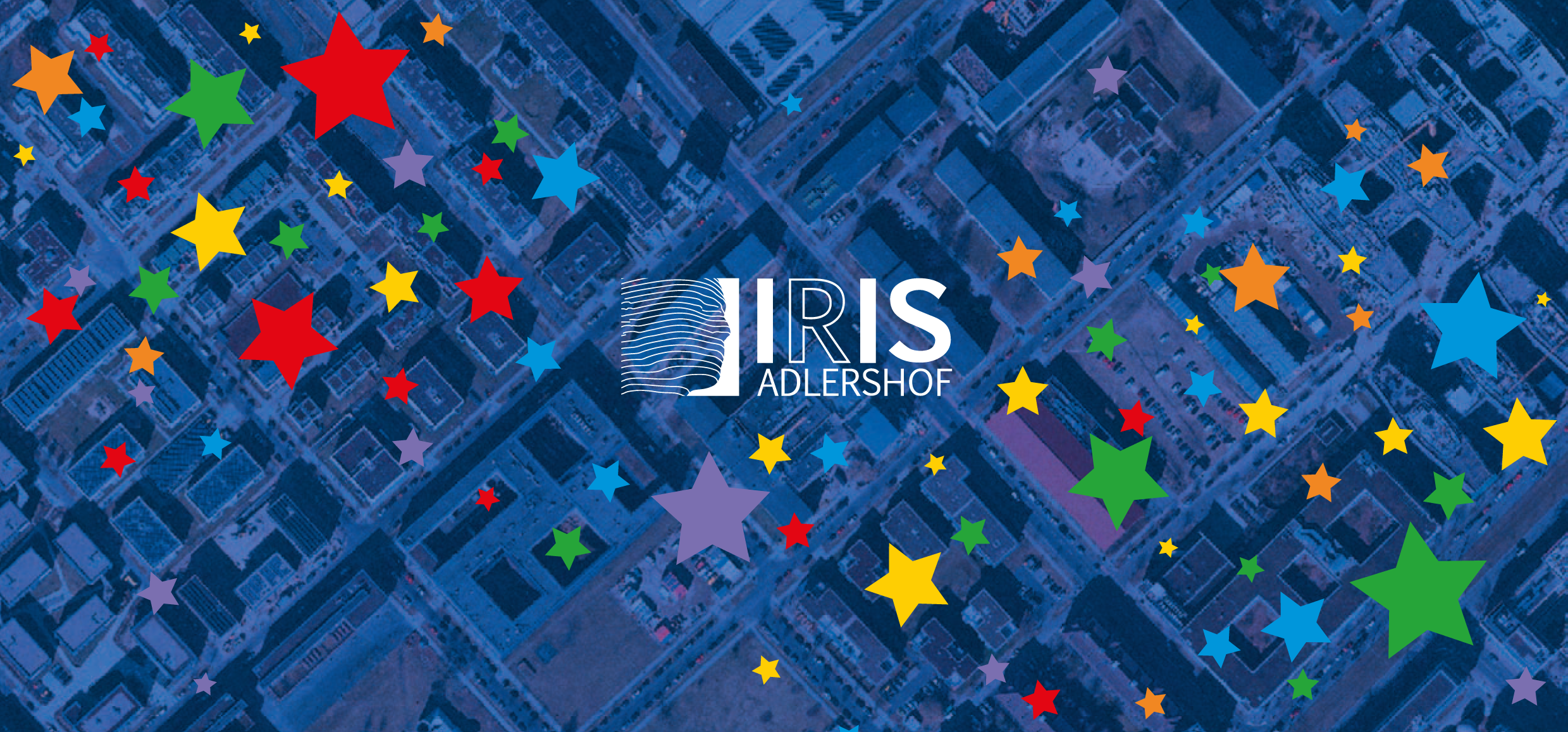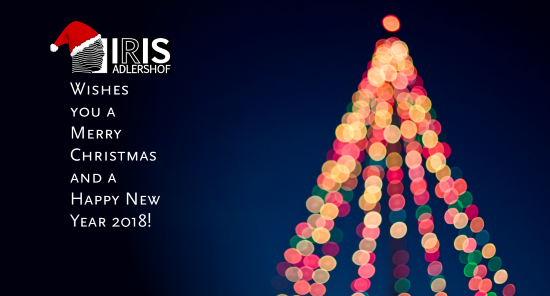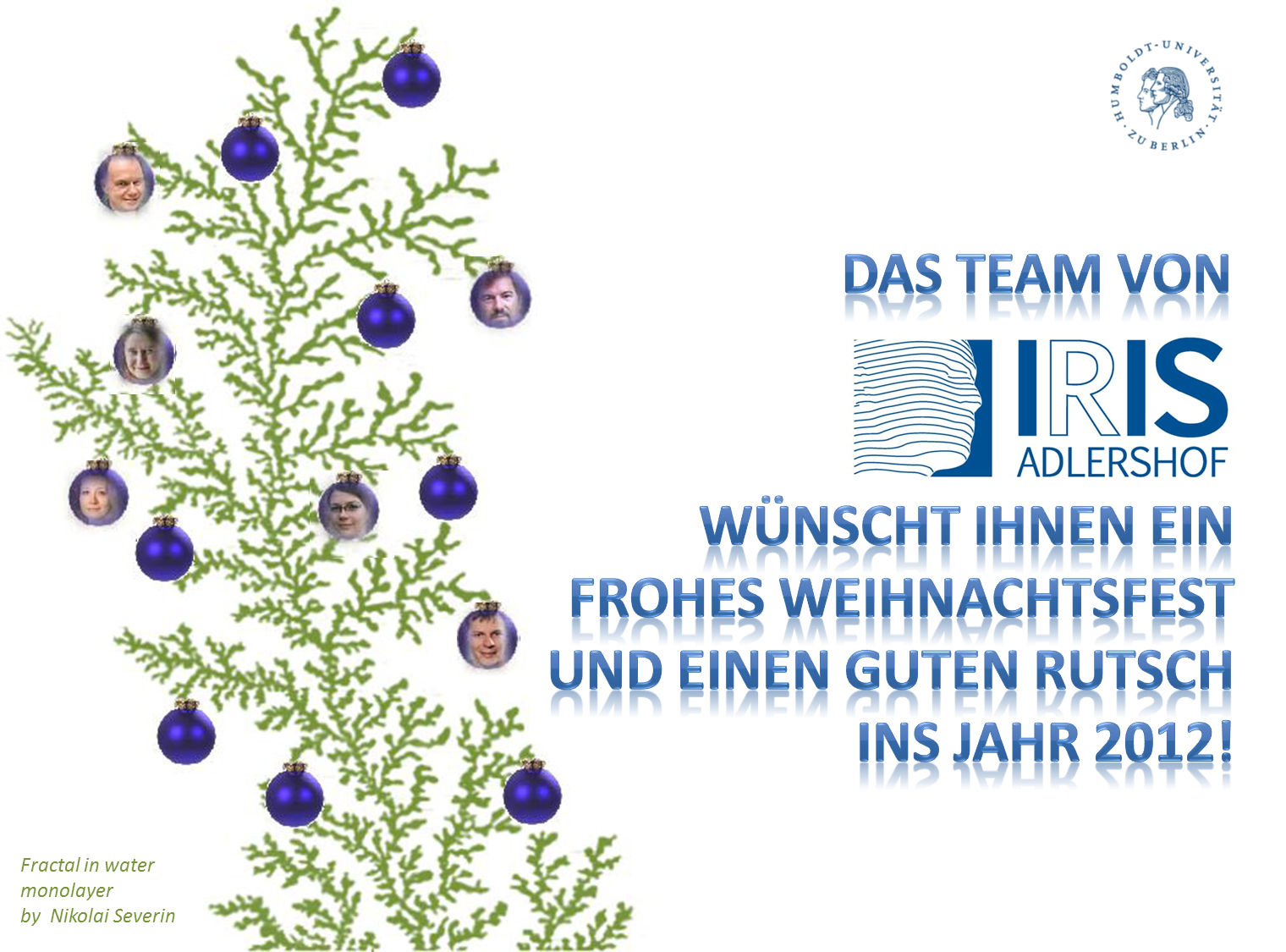ARCHIV AKTUELLES
02.09.2024Prof. Jan Plefka in das Kuratorium der VolkswagenStiftung berufen
Jan Plefka, Professor für theoretische Physik (Quantenfeld und Stringtheorie) am Institut für Physik der HU Berlin und Mitglied von IRIS Adlershof, wurde von der Bundesregierung in das Kuratorium der VolkswagenStiftung berufen. Das Kuratorium ist das oberste Entscheidungsgremium der VolkswagenStiftung. Es besteht aus 14 Persönlichkeiten aus Wissenschaft und Gesellschaft, die jeweils zur Hälfte von der Bundesregierung und der Niedersächsischen Landesregierung berufen werden. Zu den Aufgaben des Kuratoriums gehören die Festlegung der Förderleitlinien, die Auswahl der Förderprojekte, die Kontrolle der geförderten Projekte sowie die Beratung des Vorstands. Zur Person mehr... 18.07.2024Prof. Nicola Pinna pioneered a novel technique for coating nano-particles and creates yolk-shell nanostructures.Prof. Pinna, member of IRIS Adlershof, and colleagues have revolutionized the Stöber method, originally for amorphous SiO2 colloids, by extending it to metal-organic frameworks (MOFs) and coordination polymers (CPs). Their innovative approach harnesses the slow, continuous diffusion of triethylamine (TEA) vapor to precisely control the deprotonation of organic ligands, paving the way for creating finely crafted amorphous CP spheres. 03.07.2024DFG bewilligt neue Forschungsgruppe MFOSA im Bereich der Quantenfeldtheorie
Eine Gruppe führender theoretischer Physiker*innen hat sich zusammengeschlossen, um die Grundlagen von Streuamplituden - fundamentalen Größen in der Quantenfeldtheorie - zu erforschen. Die Deutsche Forschungsgemeinschaft (DFG) fördert diese neue Forschungsgruppe unter der Leitung von Prof. Dr. Claude Duhr von der Universität Bonn für vier Jahre mit einer Summe von etwa 4 Millionen Euro. Maßgeblich beteiligt sind auch Forschende des IRIS Adlershof (HU): Prof. Dr. Valentina Forini und Prof. Dr. Jan Plefka, die ihre Expertise in den Bereichen Quantenfeldtheorie, Stringtheorie und Gravitationsphysik einbringen. Streuamplituden beschreiben die Wechselwirkungen zwischen Elementarteilchen und sind von zentraler Bedeutung für unser Verständnis der fundamentalen Naturkräfte – der elektromagnetischen, der starken und schwachen Kernkraft, sowie der Gravitation. Die Forschungsgruppe wird innovative Methoden entwickeln, um diese komplexen mathematischen Objekte zu berechnen und ihre zugrundeliegende Struktur zu entschlüsseln. Zu den Hauptzielen gehören:
Prof. Plefka wird insbesondere seine Arbeit zu Weltlinien-Quantenfeldtheorien einbringen, die innovative Ansätze für die Gravitationswellenphysik liefert. Prof. Forini wird ihre Expertise in der Anwendung von Unitaritätstechniken auf gekrümmte Raumzeiten, insbesondere Anti-de-Sitter-Räume, beisteuern. Die Forschungsgruppe vereint Expertinnen und Experten aus verschiedenen Bereichen der theoretischen und mathematischen Physik von sechs führenden deutschen Forschungseinrichtungen sowie der University of Hertfordshire (UK). Durch die enge Zusammenarbeit und den Austausch von Ideen sollen bahnbrechende Fortschritte in diesem wichtigen Forschungsgebiet erzielt werden. Die gewonnenen Erkenntnisse werden nicht nur das fundamentale Verständnis der Naturgesetze erweitern, sondern auch direkte Anwendungen in der Teilchen- und Gravitationsphysik ermöglichen. Dies betrifft zum einen hochpräzise Vorhersagen für den Ausgang von Streuprozessen am Large Hadron Collider am CERN in Genf, sowie die Berechnung der Gravitationswellenformen aus Begegnungen von schwarzen Löchern und Neutronensternen in unserem Universum, die in modernen Gravitationswellendetektoren gemessen werden. Kontakt:
20.06.2024Dr. Gustav Mogull erhält den Karl-Scheel-Preis der Physikalischen-Gesellschaft zu Berlin 2024
Dr. Gustav Mogull, Nachwuchswissenschaftler am Institut für Physik der Humboldt-Universität zu Berlin und assoziert mit dem Max-Planck-Institut für Gravitationsphysik (Albert-Einstein-Institut), erhält den renommierten Karl-Scheel-Preis für seine bahnbrechenden Arbeiten auf dem Gebiet der Allgemeinen Relativitätstheorie und Gravitationswellenphysik. Seit der ersten Beobachtung von Gravitationswellen im Jahr 2015 hat sich ein neues Forschungsfeld zur Untersuchung von Schwarzen Löchern, Neutronensternen und zur Überprüfung der Allgemeinen Relativitätstheorie in extremen Gravitationsfeldern entwickelt. Dr. Mogull hat mit der von ihm in der Arbeitsgruppe von IRIS Adlershof-Mitglied Prof. Dr. Jan Plefka entwickelten Weltlinien-Quantenfeldtheorie (WQFT) einen neuartigen theoretischen Rahmen geschaffen, um hochpräzise analytische Vorhersagen für die klassische Zweikörperproblematik in der Allgemeinen Relativitätstheorie zu berechnen. Mit Hilfe der WQFT konnte Dr. Mogull in einer Reihe von Arbeiten, die in hochrangigen Journalen wie Physical Review Letters veröffentlicht wurden, wichtige physikalische Observablen für die Dynamik von Schwarzen Löchern und Neutronensternen herleiten. Seine Ergebnisse finden bereits Anwendung in der Modellierung von Gravitationswellensignalen für die Datenanalyse aktueller und zukünftig geplanter Gravitationswellendetektoren. Der Preis würdigt Dr. Mogulls herausragende theoretische Arbeiten zur Zweikörperproblematik, die für künftige hochpräzise Tests der Allgemeinen Relativitätstheorie und unser Verständnis von Gravitationswellen von großer Bedeutung sind. Der entscheidende Fortschritt der WQFT liegt in der Übertragung von Methoden der Quantenfeldtheorie, die gewöhnlicherweise die Elementarteilchenphysik beschreibt, auf die Wechselwirkung von schwarzen Löchern. In diesem Sinne ersetzt man die theoretische Beschreibung der Streuung von Protonen in Teilchenbeschleunigern durch die Streuung von schwarzen Löchern in unserem Universum. Der mit 5.000 Euro dotierte Karl-Scheel-Preis wird jährlich von der Deutschen Physikalischen Gesellschaft für hervorragende Leistungen auf dem Gebiet der Physik verliehen. Gustav Mogull hat an der University of Cambridge studiert und in Edinburgh mit Arbeiten zur Streuamplituden in der Quantenfeldtheorie promoviert. Nach einem Postdoc-Aufenthalt in Uppsala (Schweden) ist er seit 2020 Long-Term Postdoc am DFG Graduiertenkolleg „Rethinking Quantum Field Theory“ (Sprecher: Prof. Dr. J. Plefka), das kürzlich für eine zweite Förderphase verlängert wurde. Die nun ausgezeichneten Arbeiten sind im Rahmen dieses Forschungsprojekts entstanden, Herr Mogull ist hier auch aktiv an der Kobetreuung von Promotionen und Masterarbeiten im Kolleg beteiligt. Er hat kürzlich ein Fellowship der Royal Society erhalten, das ihn zu einer Lectureship an der Queen Mary University London ab Herbst 2024 führen wird. Kontakt: Dr. Mogul und Prof. Dr. Plefka, Institut für Physik, GRK 2575. 19.06.2024Durchbruch in der Gravitationswellenphysik:
| ||||||||||||||||||||||||||||||||||||||||||||||||||||||||||||||||||||||||||||||||||||||||||||||||||||||||||||||||||||||||||||||||||||||||||||||||||||||||||||||||||||||||||||||
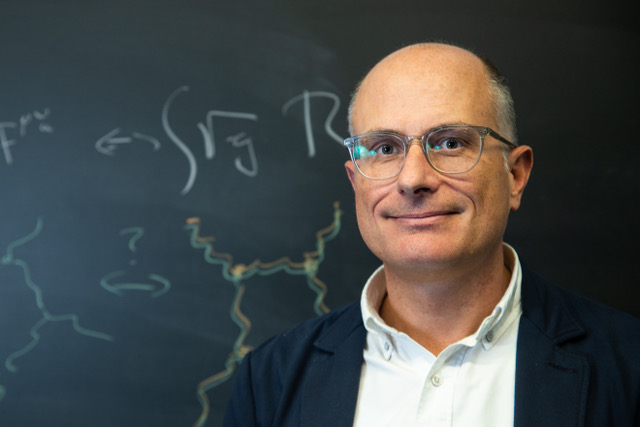 |
| Jan Plefka, Mitglied von IRIS Adlershof |
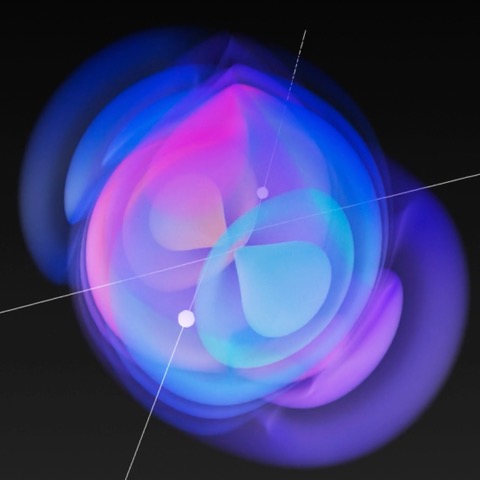 |
| Visualisierung der gravitativen Bremsstrahlung aus der Streuung zweier schwarzer Löcher inklusive Wellenprofil |
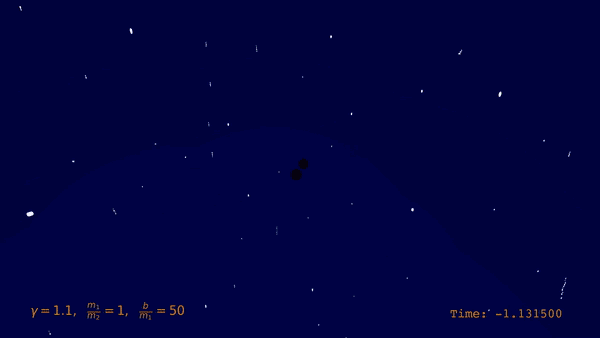 |
| Visualisierung der gravitativen Bremsstrahlung aus der Streuung zweier schwarzer Löcher (BSc-Arbeit O. Babayemi) |
Unter der Leitung von IRIS Adlershof-Mitglied Jan Plefka hat ein internationales Team die Dynamik zweier aufeinandertreffender Schwarzer Löcher mit der bisher höchsten jemals erreichten Präzision berechnet. Ihre in der renommierten Zeitschrift Physical Review Letters als "Editor's Choice" veröffentlichte Arbeit liefert neue Einblicke in die enormen Gravitationswechselwirkungen zwischen diesen extremen Objekten in unserem Universum.
Die Streuung Schwarzer Löcher ist ein fundamentales Problem der Allgemeinen Relativitätstheorie Einsteins mit weitreichenden Folgen für die Astrophysik und Gravitationswellenastronomie. Das Verständnis der Gravitationswechselwirkungen und der abgestrahlten Gravitationsstrahlung bei der Kollision zweier Schwarze Löcher oder Neutronensterne ist entscheidend für die Interpretation von Beobachtungen mit Gravitationswellendetektoren wie LIGO und zukünftigen Detektoren der dritten Generation, die in den 2030er Jahren in Betrieb gehen sollen.
Die neuen Berechnungen der Forscher von der Humboldt-Universität zu Berlin, dem Max-Planck-Institut für Gravitationsphysik und dem CERN bringen die theoretische Beschreibung der Schwarzen-Loch-Streuung auf eine noch nie dagewesene Genauigkeit - die fünfte Post-Minkowski‘sche Ordnung und nächstführende Selbstkraftordnung. Diese enorm anspruchsvolle Vier-Schleifen-Berechnung erforderte modernste Integrationstechniken und Hochleistungsrechner.
"Die Lösung dieses Problems markiert eine neue Grenze für Mehrschleifen-Berechnungen und effektive Feldtheorie-Techniken", sagte der Gruppenleiter Jan Plefka. Co-Autor Benjamin Sauer kommentierte: "Wir mussten jeden Aspekt optimieren, von der Erzeugung des Integranden bis hin zur Entwicklung neuer Integrationsmethoden." Insgesamt mussten einige Millionen von 16 dimensionalen Integralen, die den Streuwinkel beschreiben, auf eine Basis von 470 Masterintegralen reduziert werden, die dann berechnet wurden.
Bemerkenswerterweise fanden die Forscher, dass der resultierende Streuwinkel auf diesem neuen Präzisionsniveau eine erstaunliche Einfachheit aufweist, ohne dass neue transzendente Funktionen jenseits von Polylogarithmen des Gewichts drei in Erscheinung treten. Alle theoretischen Checks, sowohl interne als auch durch Übereinstimmung mit nicht-relativistischen Grenzfällen waren erfolgreich.
Mit diesem Durchbruch haben die Forscher die Grundlage dafür gelegt, ihre Berechnungen in fortschrittliche Gravitationswellenmodelle für die nächste Generation von Gravitationswellendetektoren einzubinden. Die höhere Präzision wird extrem genaue Tests der Einstein‘schen Theorie und neue Einblicke in die Kern- und Gravitationsphysik von Doppelsystemen rotierender Schwarzer Löcher ermöglichen.
"Unsere Ergebnisse bringen die Vorhersage von Gravitationswellen, die von Begegnungen Schwarzer Löcher ausgehen, auf eine noch nie dagewesene Genauigkeit", sagte der Co-Autor Gustav Uhre Jakobsen. "Dies eröffnet brillante neue Möglichkeiten, fundamentale Physik aus künftigen Gravitationswellenbeobachtungen zu extrahieren."
Die Forschungsarbeit wurde von der Deutschen Forschungsgemeinschaft im Rahmen des GRK 2575 „Rethinking Quantum Field Theory“ und dem Europäischen Forschungsrat mittels des Advanced Grants „GraWFTy“ von Jan Plefka finanziert.
Artikel:
Conservative Black Hole Scattering at Fifth Post-Minkowskian and First Self-Force Order
Mathias Driesse, Gustav Uhre Jakobsen, Gustav Mogull, Jan Plefka, Benjamin Sauer, and Johann Usovitsch
Phys. Rev. Lett. 132, 241402 – Published 13 June 2024
DOI: 10.1103/PhysRevLett.132.241402
Kontakt:
Prof. Dr. Jan Plefka
Sprecher Graduiertenkolleg 2575 „Rethinking Quantum Field Theory“
ERC Advanced Grant „GraWFTy"
Humboldt-Universität zu Berlin, IRIS Adlershof &
Institut für Physik, Arbeitsgruppe Quantenfeld- und Stringtheorie
Zum Großen Windkanal 2, D-12489 Berlin
Postanschrift: Unter den Linden 6, 10099 Berlin
Email: jan.plefkahu-berlin.de
Tel: +49 (0)30 2093 66409
Sekr.: +49 (0)30 2093 66413
qft.physik.hu-berlin.de
www2.hu-berlin.de/rtg2575/
X: @JanPlefka
19.06.2024Verbesserte Oberflächensensitivität für Raman-Signale durch aufbringbare poröse Goldmembran
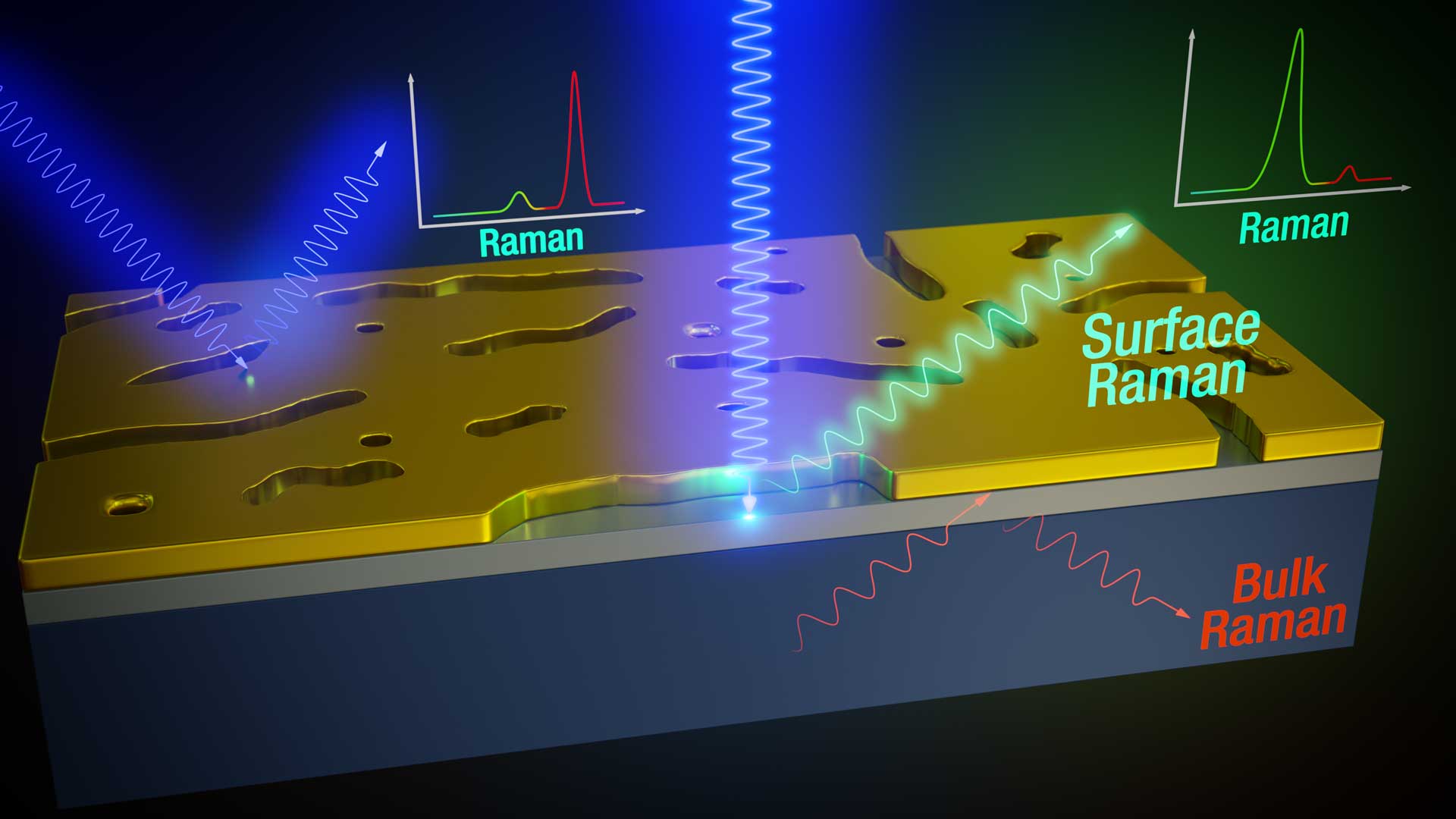
In einer kürzlich erfolgten Zusammenarbeit der Emmy Noether-Forschungsgruppe „Physics of low-dimensional systems“ um IRIS Adlershof-Mitglied Dr. Sebastian Heeg an der HU Berlin haben Forscher des Leibniz-Instituts für Kristallzüchtung (IKZ), der Université Le Mans und der ETH Zürich mit der Entwicklung der oberflächensensitiven Raman-Streuung eine neue Methode der Raman-Spektroskopie realisiert. Dieser neue Ansatz behebt eine wesentliche Einschränkung der konventionellen Raman-Spektroskopie, bei der die Signale von Oberflächen oder dünnen Filmen oft schwach sind und durch dominante Signale der Grundsubstanz (Bulk) verdeckt werden.
Oberflächen spielen in Wissenschaft und Industrie eine zentrale Rolle, da hier die meisten Wechselwirkungen mit der Umwelt stattfinden, einschließlich chemischer Reaktionen, Adhäsion, Reibung und Interaktionen mit Licht. Die Oberflächeneigenschaften können sich in Bezug auf die chemische Zusammensetzung, die atomare Anordnung und die elektronische Struktur erheblich von den Eigenschaften der Grundsubstanz unterscheiden, was sich auf technologische Fortschritte wie Katalysatoren und Solarzellen auswirkt. Die Raman-Spektroskopie, ein leistungsfähiges, nicht-destruktives Verfahren zur Analyse von Molekülschwingungen, gibt Aufschluss über die chemische Zusammensetzung, Kristallinität, Defekte und Dehnung eines Materials. Sie ist besonders wertvoll für die Charakterisierung von Nanomaterialien, dünnen Filmen und biologischen Proben, bei denen präzise Oberflächeninformationen unerlässlich sind.
Die Anwendung der konventionellen Raman-Spektroskopie ist bei Oberflächen und dünnen Filmen durch dominante Bulk-Signale eingeschränkt. Das Aufbringen poröser Goldmembranen (PAuMs) ermöglicht jedoch die Untersuchung oberflächenspezifischer Raman-Signale mit noch nie dagewesener Klarheit. PAuMs enthalten unregelmäßige, schlitzförmige Nanoporen, die als plasmonische Antennen wirken. Wenn PAuM auf einer Oberfläche oder einem dünnen Film von Interesse platziert wird, verstärken die Nanoporen das Raman-Signal der direkt darunter liegenden Oberfläche, während die Membran selbst die Signale des Bulks unterdrückt. Die Kombination dieser Effekte verbessert das Verhältnis von Oberflächen- zu Bulksignalen um drei Größenordnungen und ermöglicht eine tatsächlich oberflächenempfindliche Raman-Streuung.
Die Forscher verwendeten Graphen als Modelloberfläche und beobachteten, dass die Nanoporen in den Membranen das Ramansignal von Graphen um das Hundertfache verstärken. Wenn man einen Abstandshalter zwischen Graphen und PAuM anbringt, zeigt sich, dass die Raman-Verstärkung auf die ersten 2-3 nm des Materials unter der Membran beschränkt ist, was eine echte Oberflächenempfindlichkeit zeigt. Eine erste prototypische Anwendung betrifft die Quantifizierung der Dehnung in einer 12,5 nm dünnen Si-Quantentopfschicht unter Verwendung von PAuMs. Die Schicht ist Teil einer Silizium-Germanium-Heterostruktur, die für die Verwendung von Spin-Qubits als vielversprechende und sich schnell entwickelnde Technologie für Quantencomputer entwickelt wurde.
In einem zweiten Anwendungsfall werden PAuMs zur Untersuchung der Oberfläche eines dünnen LaNiO3-Films, eines metallischen Perowskits, der als Elektrodenmaterial verwendet wird, eingesetzt. Die elektrische Leitfähigkeit von LaNiO3-Filmen ist stark an ihre kristallografische Struktur gekoppelt und kann durch die Filmdicke reguliert werden. Als PAum auf LaNiO3 aufgebracht wurde, beobachteten die Autoren eine Raman-Modenaufspaltung, die von der Filmoberfläche ausgeht und auf einen Unterschied in der Oberflächenstruktur im Vergleich zum Bulk hinweist. Dieses Ergebnis stimmt mit theoretischen Vorhersagen und Beobachtungen aus rastertunnelmikroskopischen Untersuchungen überein.
„Unsere Arbeit verbindet zwei verschiedene Forschungsfelder.“, sagt Dr. Heeg. „Konzeptionell erweitern wir das Gebiet der plasmonenverstärkten Raman-Spektroskopie, die fast ausschließlich zur Untersuchung und Erkennung von molekularen Verbindungen und Nanostrukturen eingesetzt wird, auf den Bereich der Festkörpermaterialien wie Silizium-Quantentöpfe, dünne komplexe Oxidfilme und entsprechende Oberflächen.“ Das Team erforscht nun das Potenzial der Methode mit Partnern in Berlin und internationalen Kollaborateuren.
Dr. Pietro Marabotti, Einstein International Postdoctoral Fellow in Heegs Gruppe und Mitautor der Studie, merkt an, dass „unser Ansatz nicht auf kristalline Oberflächen beschränkt ist, die wir als Vorzeigebeispiel nutzen, sondern auch zur Untersuchung von z.B. biologischen Oberflächen oder oberflächengebundenen chemischen Reaktionen verwendet werden kann.“ Forscher, die sich für die Methode interessieren, sind eingeladen, sich mit dem Team in Verbindung zu setzen.
Bulk-suppressed and surface-sensitive Raman scattering by transferable plasmonic membranes with irregular slot-shaped nanopores
Roman M. Wyss, Günther Kewes, Pietro Marabotti, Stefan M. Koepfli, Karl-Philipp Schlichting, Markus Parzefall, Eric Bonvin, Martin F. Sarott, Morgan Trassin, Maximilian Oezkent, Chen-Hsun Lu, Kevin-P. Gradwohl, Thomas Perrault, Lala Habibova, Giorgia Marcelli, Marcela Giraldo, Jan Vermant, Lukas Novotny, Martin Frimmer, Mads C. Weber, and Sebastian Heeg
Nat. Commun. 15, 5236 (2024).
DOI: 10.1038/s41467-024-49130-2 OPEN ACCESS
ACCESS
➔ Beitrag zur Arbeit in den ETH News
➔ Beitrag zur Arbeit von der Humboldt Innovation
Kontakt:
Dr. Sebastian Heeg
Humboldt-Universität zu Berlin
IRIS Adlershof & Institut für Physik
Tel.: 030 2093-82295
E-Mail: sebastian.heegphysik.hu-berlin.de
Website: https://www.physik.hu-berlin.de/en/pld
05.06.2024DFG verlängert den Sonderforschungsbereich FONDA
 Der SFB „FONDA – Grundlagen von Workflows für die Analyse großer naturwissenschaftlicher Daten“ wurde von der Deutschen Forschungsgemeinschaft (DFG) um eine Förderperiode von vier Jahren verlängert. Sprecher des SFB ist IRIS Adlershof-Mitglied Prof. Dr. Ulf Leser vom Institut für Informatik der Humboldt-Universität zu Berlin.
Der SFB „FONDA – Grundlagen von Workflows für die Analyse großer naturwissenschaftlicher Daten“ wurde von der Deutschen Forschungsgemeinschaft (DFG) um eine Förderperiode von vier Jahren verlängert. Sprecher des SFB ist IRIS Adlershof-Mitglied Prof. Dr. Ulf Leser vom Institut für Informatik der Humboldt-Universität zu Berlin.
Der SFB FONDA widmet sich der Erforschung von Methoden zur Steigerung der Produktivität bei der Entwicklung, Ausführung und Wartung von Datenanalyse-Workflows (DAWs) für große wissenschaftliche Datensätze. In der heutigen Forschung werden in allen wissenschaftlichen Disziplinen immer größere Datenmengen erzeugt. Diese müssen mit komplexen DAWs analysiert werden, die auf verteilten und parallelen Recheninfrastrukturen laufen. Traditionell sind diese Workflows auf Geschwindigkeit optimiert, was zu individuellen Lösungen führt, die schwer reproduzierbar und für andere Forschende schwer nutzbar sind.
Ziel von FONDA ist es, Methoden und Werkzeuge zu entwickeln, die die Entwicklungszeit und -kosten von DAWs erheblich reduzieren. Dies soll durch neue Abstraktionen, Modelle und Algorithmen erreicht werden, die die Grundlage für eine neue Generation von Workflow-Infrastrukturen bilden können. Der SFB untersucht unter anderem folgende Fragen: Wie können DAWs entwickelt werden, die auf verschiedenen Soft- und Hardware-Infrastrukturen gleichermaßen effizient laufen? Wie müssen diese Workflows gestaltet sein, damit sie sich an veränderte Eingabedaten oder Anforderungen anpassen können? Und wie können zuverlässige Datenanalysesysteme gebaut werden, die ihre eigenen Voraussetzungen erkennen und kontrollieren, um die Zuverlässigkeit ihrer Ausführung zu steigern?
22.05.2024Joachim Sauer erhält Blaise-Pascal-Medaille 2024 in Chemie
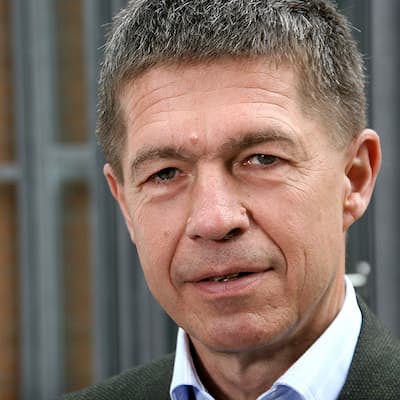 Für seine wegweisenden Forschungsleistungen im Bereich katalytischer Reaktionen auf der Grundlage der Quantenchemie wurde dem renommierten Chemiker und IRIS Adlershof-Gründungsmitglied Prof. Joachim Sauer von der European Academy of Sciences (EURASC) die Blaise-Pascal-Medaille 2024 in Chemie verliehen. Die EURASC würdigt damit seine innovativen Forschungsmethoden wie hybride Quantenmechanik-Berechnungen und Grand-Canonical-Monte-Carlo-Simulationen, die das Verständnis der heterogenen Katalyse auf ein neues Niveau gehoben haben. Mit der Verleihung der Medaille, die nach dem französischen Mathematiker, Physiker und Philosophen Blaise Pascal benannt ist, wird Prof. Sauer in eine Liste von Personen aufgenommen, die sich durch herausragende Beiträge zu Wissenschaft, Technologie und Forschungsausbildung auszeichnen. Die Preisverleihung findet am 29. und 30. Oktober 2024 in der Academia das Ciências de Lisboa in Lissabon statt.
Für seine wegweisenden Forschungsleistungen im Bereich katalytischer Reaktionen auf der Grundlage der Quantenchemie wurde dem renommierten Chemiker und IRIS Adlershof-Gründungsmitglied Prof. Joachim Sauer von der European Academy of Sciences (EURASC) die Blaise-Pascal-Medaille 2024 in Chemie verliehen. Die EURASC würdigt damit seine innovativen Forschungsmethoden wie hybride Quantenmechanik-Berechnungen und Grand-Canonical-Monte-Carlo-Simulationen, die das Verständnis der heterogenen Katalyse auf ein neues Niveau gehoben haben. Mit der Verleihung der Medaille, die nach dem französischen Mathematiker, Physiker und Philosophen Blaise Pascal benannt ist, wird Prof. Sauer in eine Liste von Personen aufgenommen, die sich durch herausragende Beiträge zu Wissenschaft, Technologie und Forschungsausbildung auszeichnen. Die Preisverleihung findet am 29. und 30. Oktober 2024 in der Academia das Ciências de Lisboa in Lissabon statt.
Wir gratulieren unserem Gründungsmitglied herzlich zu dieser Auszeichnung.
13.05.2024DFG verlängert das Graduiertenkolleg 2575 „Rethinking Quantum Field Theory“
Die Quantenfeldtheorie (QFT) als Vereinigung von Quantenmechanik und spezieller Relativitätstheorie stellt eine der wesentlichen intellektuellen Leistungen des letzten Jahrhunderts dar, in der ein Großteil der modernen theoretischen Physik gipfelt. In den letzten Jahren gaben Neuerungen Anlass Kernkonzepte der QFT ernsthaft zu überdenken. Dazu gehören die Methodik der Störungstheorie, die Theorie der Feynman-Integrale, Dualitäten und verborgene Symmetrien, die herausragende Rolle der effektiven Feldtheorien, und die Gradientenfluss-Methodik in der Gitterfeldtheorie.
Das GRK 2575 (Sprecher: IRIS-Mitglied Jan Plefka) hat in der ersten Förderperiode wichtige Beiträge zu diesem innovativen Forschungsbereich geleistet. Es zielt auf eine Umgestaltung der theoretischen Grundlagen des Feldes ab, gekoppelt an die Entwicklung neuer Technologien für die Phänomenologie der Teilchenphysik und der Gravitationswellenforschung. Das bewährte Qualifizierungsprogramm soll in der 2. Förderperiode fortgesetzt werden.
18.04.2024Erstaunlicher Durchbruch in der Batterietechnologie durch innovative Kathoden auf Schwefelbasis
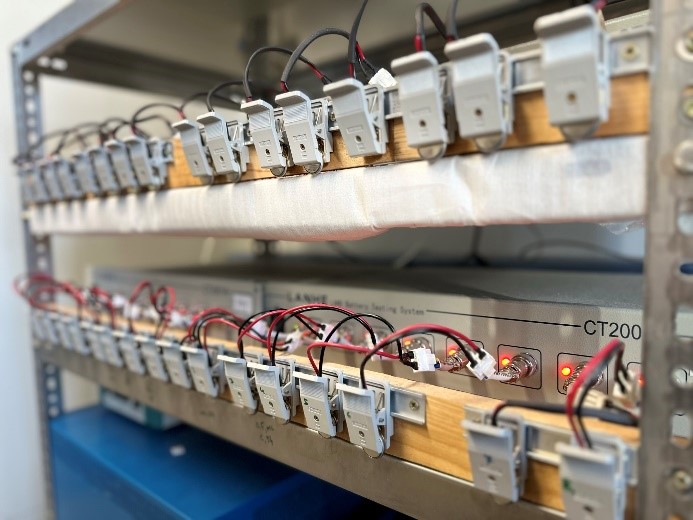 |
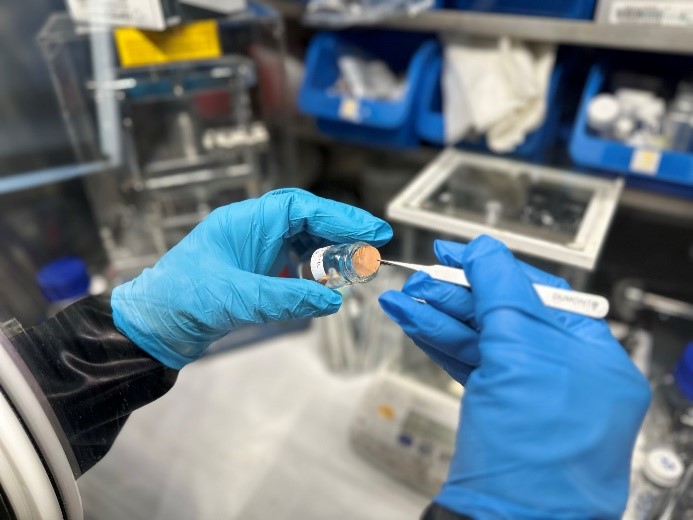 |
| Batterieteststrecke am bojdysLAB | Batterie-Zellenfertigung am bojdysLAB |
Prof. Dr. Michael J. Bojdys ist ein Experte auf dem Gebiet der nachhaltigen Energiematerialien und trägt im Rahmen der BMBF-Initiative “GreenCHEM” dazu bei, die chemische Industrie in der Berliner Hauptstadtregion durch die Verbindung von Wissenschaft und Industrie zu einer auf nachhaltigen Rohstoffen basierenden Kreislaufwirtschaft zu transformieren.
Für weitere Informationen und Details zur Studie stehen Ihnen Prof. Dr. Michael J. Bojdys und sein Team, Barbora Balcarova und Guiping Li, als wissenschaftliche Ansprechpartner zur Verfügung. Sie können unter der E-Mail-Adresse michael.janus.bojdyshu-berlin.de oder via bojdyslab.org kontaktiert werden.
28.03.2024Automated calculation of surface properties in crystals
The surface properties of complex crystalline materials can be calculated reliably and automatically using only the fundamental laws of physics, thanks to a new computer-based method. Writing in the journal npj computational materials, researchers from the University of Oldenburg in Germany outline how their method could speed up the search for new materials for important technologies such as photovoltaics, batteries or data transmission.
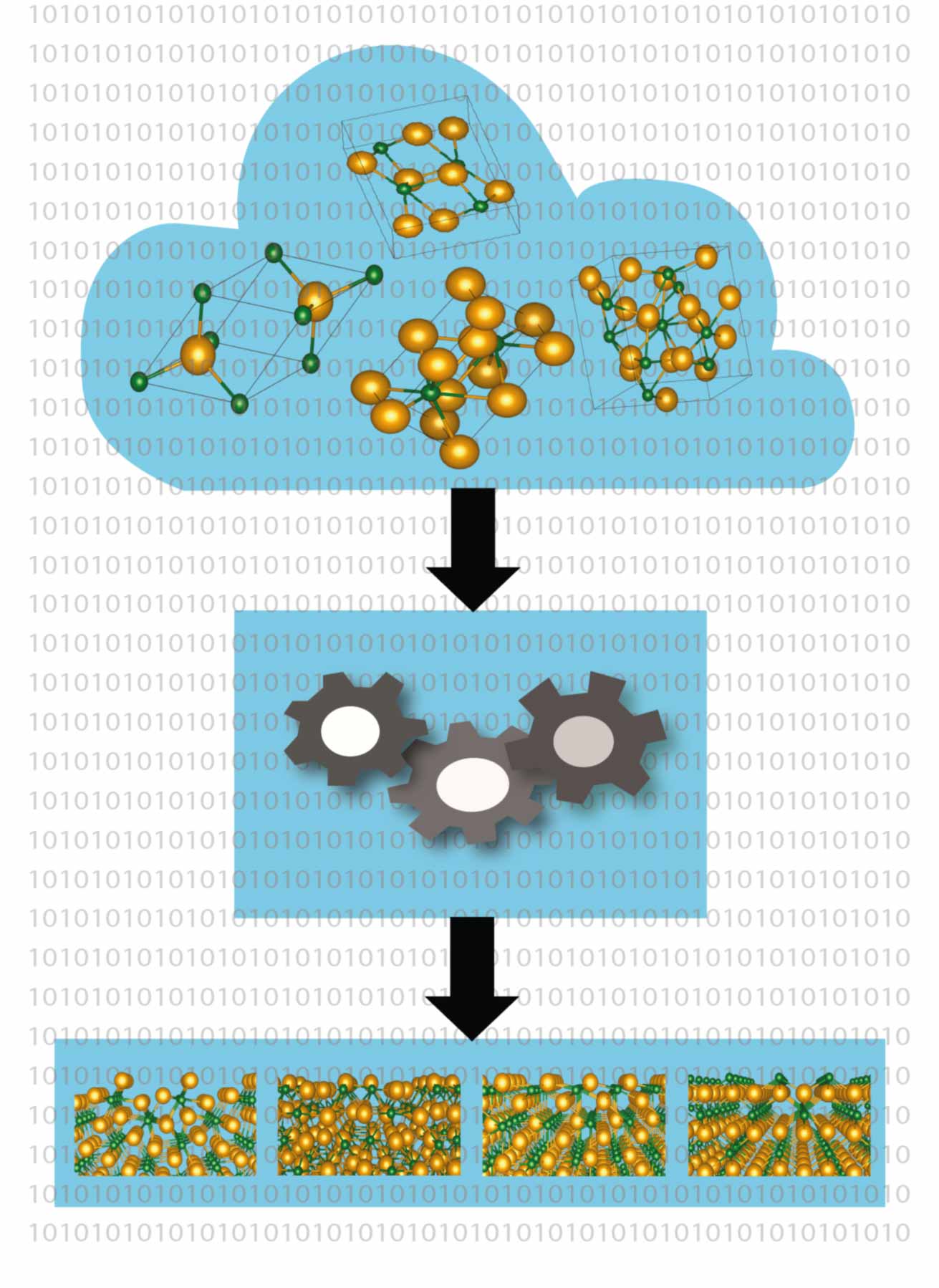
Computer-aided methods are becoming an increasingly powerful tooI in the search for new materials for key technologies such as photovoltaics, batteries and data transmission. Member of IRIS Adlershof Prof. Dr. Caterina Cocchi and Holger-Dietrich Saßnick from the University of Oldenburg’s Institute of Physics have now developed a high-throughput automatised method to calculate the surface properties of crystalline materials starting directly at the level of established laws of physics (first principles). In an article published in the journal npj computational materials, they report that this can speed up the search for relevant materials for applications in key areas such as the energy sector. They also plan to combine the method with artificial intelligence and machine learning techniques to further accelerate the process.
So far similar methods have focused on bulk materials rather than surfaces, the two physicists explain. “All the relevant processes for energy conversion, production, and storage occur on surfaces,” says Cocchi, who heads the Theoretical Solid State Physics research group at the University of Oldenburg. However, calculating the material properties of surfaces is far more challenging than for complete crystals because the surface facets often have a complex structure due to factors such as defects in the crystal structure or the uneven growth of a crystal, she explains.
This complexity poses problems for researchers in the field of materials science: “It is often not possible to clearly determine the properties of samples in experiments," says Cocchi. This motivated Cocchi and her colleague Saßnick to develop an automated procedure for high-quality screening of the characteristics of new compounds.
The result of their work was incorporated into the aim2dat computer programme, which only requires the chemical composition of a compound as input. The information about the crystal’s structure is extracted from existing databases. The software then calculates the conditions under which the surface of the material is chemically stable. In a second step it determines key properties, in particular the energy required to excite electrons into conduction states or detach themselves from a surface. This parameter plays an important role in materials that convert solar energy into electricity, for example. "We don't make any assumptions in our calculations; we use only the fundamental equations of quantum mechanics, which is why our results are very reliable," Cocchi explains.
The two scientists demonstrated the applicability of the method using the semiconductor cesium telluride. The crystals of this material, which is used as an electron source in particle accelerators, can occur in four different forms. “The composition and quality of the material samples are difficult to control in experiments,” notes Saßnick. Nevertheless, the Oldenburg researchers were able to perform a detailed analysis of the physical properties for the different configurations of the caesium telluride crystals.
Cocchi and Saßnick have embedded the software in a publicly accessible programme library so that other researchers can also use and improve the procedure. “Our method has great potential as a tool for discovering new materials – and in particular physically and structurally complex solids – for all kinds of applications in the energy sector," says Cocchi.
Originalpublikation:
Saßnick, HD., Cocchi, C. “Automated analysis of surface facets: the example of cesium telluride.” npj Computational Materials 10, 38 (2024). https://doi.org/10.1038/s41524-024-01224-7
Weitere Informationen:
https://uol.de/en/est
19.03.2024Markus Krutzik zu Quantentechnologie bei "Weiß der Adler"
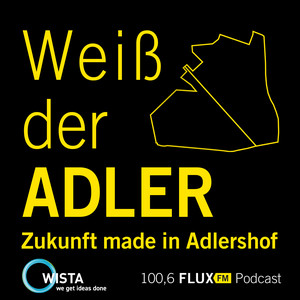 It's magic! Wissenschaft und Magie, das schließt sich eigentlich aus. Nur, wenn Quantenforscher:innen über ihren Fachbereich sprechen, dann fallen schon mal diese Worte…
It's magic! Wissenschaft und Magie, das schließt sich eigentlich aus. Nur, wenn Quantenforscher:innen über ihren Fachbereich sprechen, dann fallen schon mal diese Worte…Für viele Staaten ist die Forschung an der Quantentechnologie der Schlüssel zur Zukunft. Wohl auch deshalb will der Standort Berlin-Adlershof hier ganz vorn mitspielen.
Wie das funktionieren und was Quantenforschung alles können soll, darüber spricht in dieser Ausgabe FluxFM-Podcaster Danilo Höpfner mit IRIS Adlershof Mitglied Markus Krutzik vom Ferdinand-Braun-Institut / HU Berlin sowie Gabrielle Thomas von Menlo Systems.
➔ Podcast-Folge auf FluxFM
07.02.2024Neues Hightech-Instrument für die Nanospektroskopie-Forschung von Sebastian Heeg
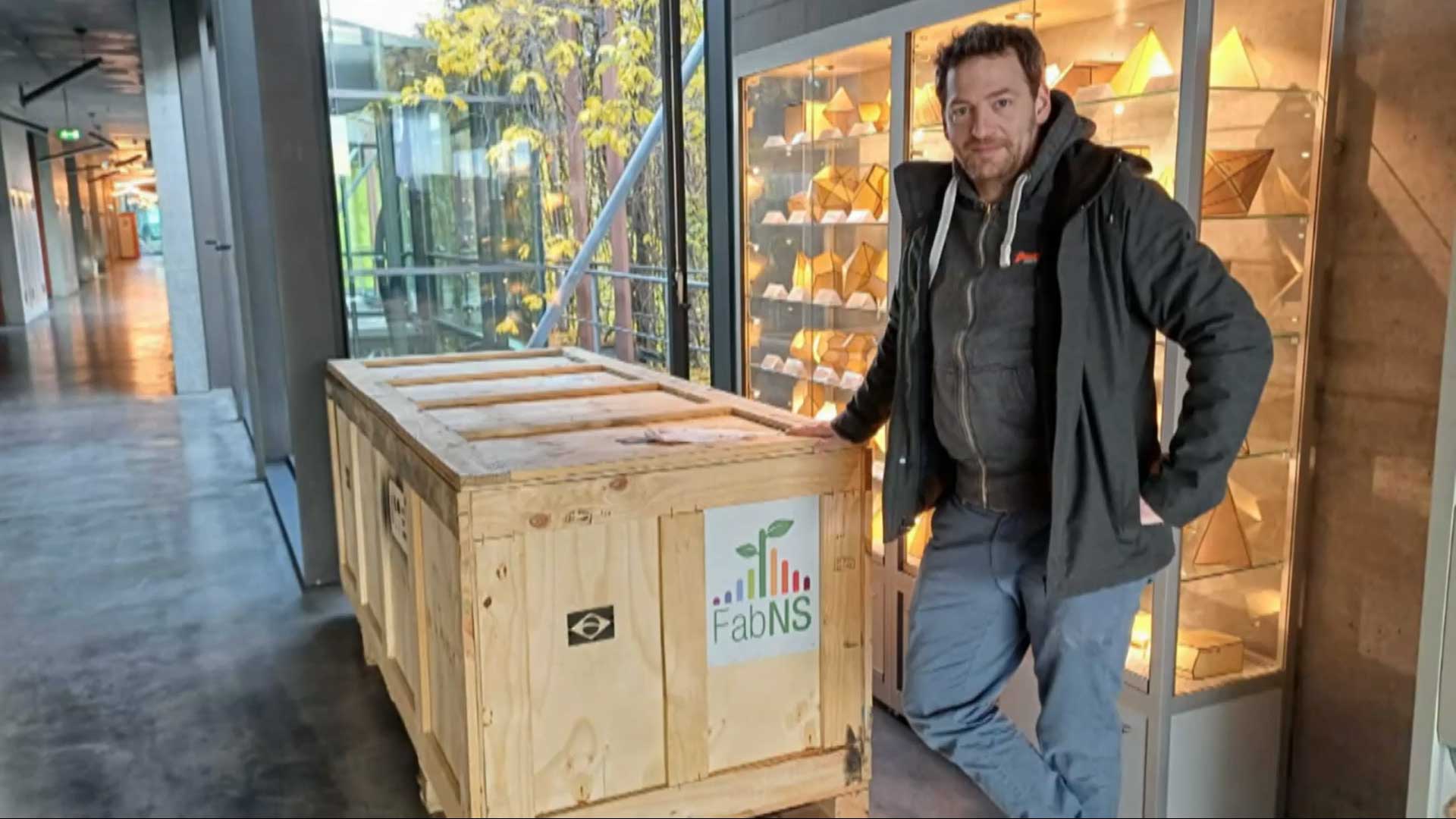 Sebastian Heeg, Nachwuchsgruppenleiter am Institut für Physik und Mitglied von IRIS Adlershof, konnte jetzt zwei Labore offiziell eröffnen. Herzstück ist das Porto Nanoscope des brasilianischen Tech-Start-ups FabNS, das nach zweijähriger Wartezeit im November 2023 geliefert wurde.
Sebastian Heeg, Nachwuchsgruppenleiter am Institut für Physik und Mitglied von IRIS Adlershof, konnte jetzt zwei Labore offiziell eröffnen. Herzstück ist das Porto Nanoscope des brasilianischen Tech-Start-ups FabNS, das nach zweijähriger Wartezeit im November 2023 geliefert wurde.
FabNS hat damit einen Meilenstein gesetzt, denn Brasilien, das historisch von ausländischer Technologie abhängig war, schlägt nun eine andere Richtung ein und beginnt, selbst hochmoderne wissenschaftliche Instrumente zu exportieren. Diese Freiheit zwischen Import und Export bringt Brasilien in eine Protagonistenposition in der globalen Technologie. Die Arbeitsgruppe von Sebastian Heeg wird dem Start-up als erster Kunde im Rahmen einer Entwicklungspartnerschaft mit wertvollem Feedback wichtige Unterstützung geben können.
Das Porto Nanoscope bildet die Struktur von Nanomaterialien mittels spitzenverstärkter Raman-Spektroskopie ab. Dies ermöglicht eine 1.000-fache Vergrößerung im Vergleich zu herkömmlichen Mikroskopen und damit eine Auflösung von Strukturen im Subnanometerbereich. Damit lassen sich die Oberflächen von 2D-Materialien wie Graphen, einer Schicht aus hexagonal angeordneten Kohlenstoffatomen, untersuchen. Das Verständnis und die Modifikation der Eigenschaften von 2D-Materialien auf diesen kleinsten Längenskalen soll zukünftig für nanoskalige Fotodetektoren, flexible Displays und Transistoren genutzt werden.
Sebastian Heeg ist von dem neuen Messgerät begeistert. Die Brasilianer hätten ein Gerät von hoher Stabilität, Effizienz und Leistungsfähigkeit geschaffen. Es könne alles, was er für seine Forschung brauche: „This system is the best system.“ Das neue System wird auch anderen Wissenschaftlern, zum Beispiel dem Center for the Science of Materials Berlin (CSMB), für ihre Forschung zur Verfügung stehen.
➔ TV-Beitrag aus den brasilianischen Nachrichten
Kontakt:
Dr. Sebastian Heeg
Humboldt-Universität zu Berlin
IRIS Adlershof & Institut für Physik
Tel.: 030 2093-82295
sebastian.heegphysik.hu-berlin.de
30.01.2024Dr. Niklas Grabicki für den Dissertationspreis Adlershof nominiert

Am Dienstag, 13. Februar 2024 ab 15:00 Uhr präsentieren drei Nachwuchsforschende das Thema ihrer Dissertation im Erwin Schrödinger-Zentrum.
Zu den drei Nominierten, die bei der Veranstaltung ihre Arbeit präsentieren, zählt auch Dr. Niklas Grabicki. Er promovierte bei IRIS-Mitglied Prof. Dr. Oliver Dumele, der inzwischen an der Albert-Ludwigs-Universität Freiburg lehrt. Dr. Niklas Grabicki hat im Rahmen seiner Dissertation funktionale Moleküle synthetisiert, die als neue molekulare Sensoren oder licht-responsive Magneten klassifiziert werden können. Potenzielle Anwendungsgebiete dieser neuen funktionalen Moleküle reichen von gezieltem Membrantransport bis hin zur Datenspeicherung.
Des weiteren wurden Dr. Andrei Bud (AG Farkas) und Dr. Lisa Kröll (AG Rolfs) nominiert. Die Preisverleihung wird auch per Livestream übertragen.
Wir drücken Niklas fest die Daumen!
22.11.2023Kai Wegner und Dr. Ina Czyborra besuchen IRIS Adlershof
IRIS Adlershof begrüßte den Besuch des Regierenden Bürgermeisters von Berlin, Kai Wegner, und der Senatorin für Wissenschaft, Gesundheit und Pflege, Dr. Ina Czyborra. IRIS-Mitglied Prof. Emil List-Kratochvil gewährte ihnen Einblicke in unser Reinraumlabor, in dem unsere Kollegen aktiv an neuen Materialien forschen, und erläuterte den hohen Gästen laufende Projekte.
Im Anschluss an den Besuch feierten unsere Gäste das 20-jährige Bestehen des Campus Adlershof, das sie gemeinsam mit Prof. Julia von Blumenthal, Präsidentin der Humboldt-Universität zu Berlin, und Roland Sillmann, WISTA, eröffneten. Der rege Austausch und die Diskussionen auf der Feier wurden durch engagierte Vorträge von Prof. Elmar Kulke, IRIS-Mitglied Prof. Eva Unger und Prof. Thomas Kosch ergänzt.
IRIS Adlershof, als Teil dieser Erfolgsgeschichte, gratuliert dem gesamten Campus zu den gemeinsam erreichten Meilensteinen!
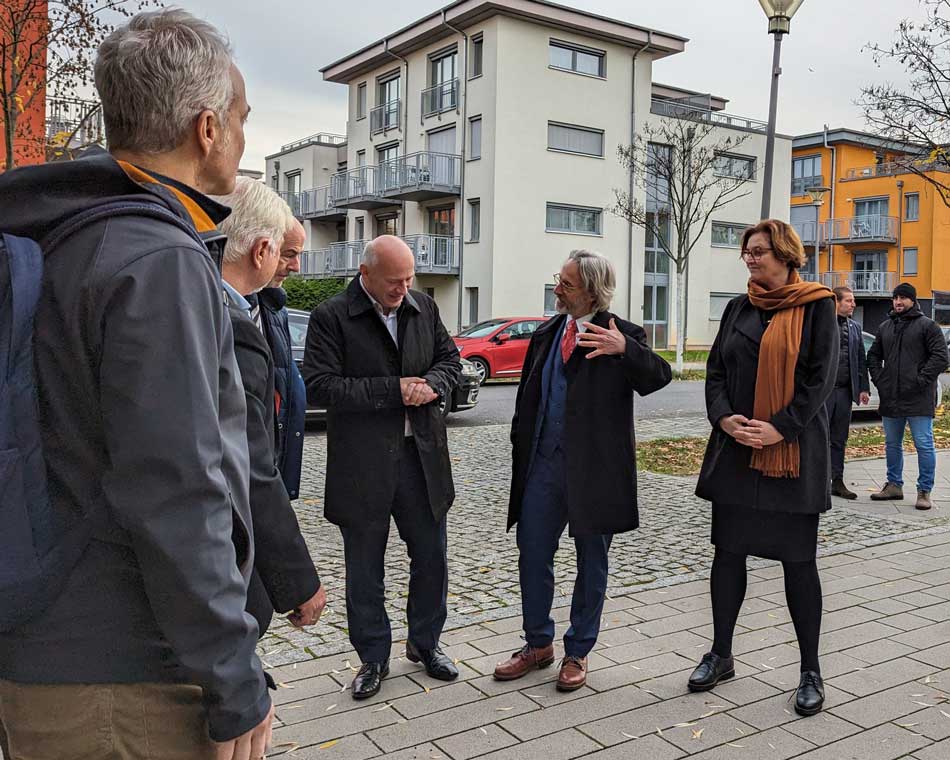 |
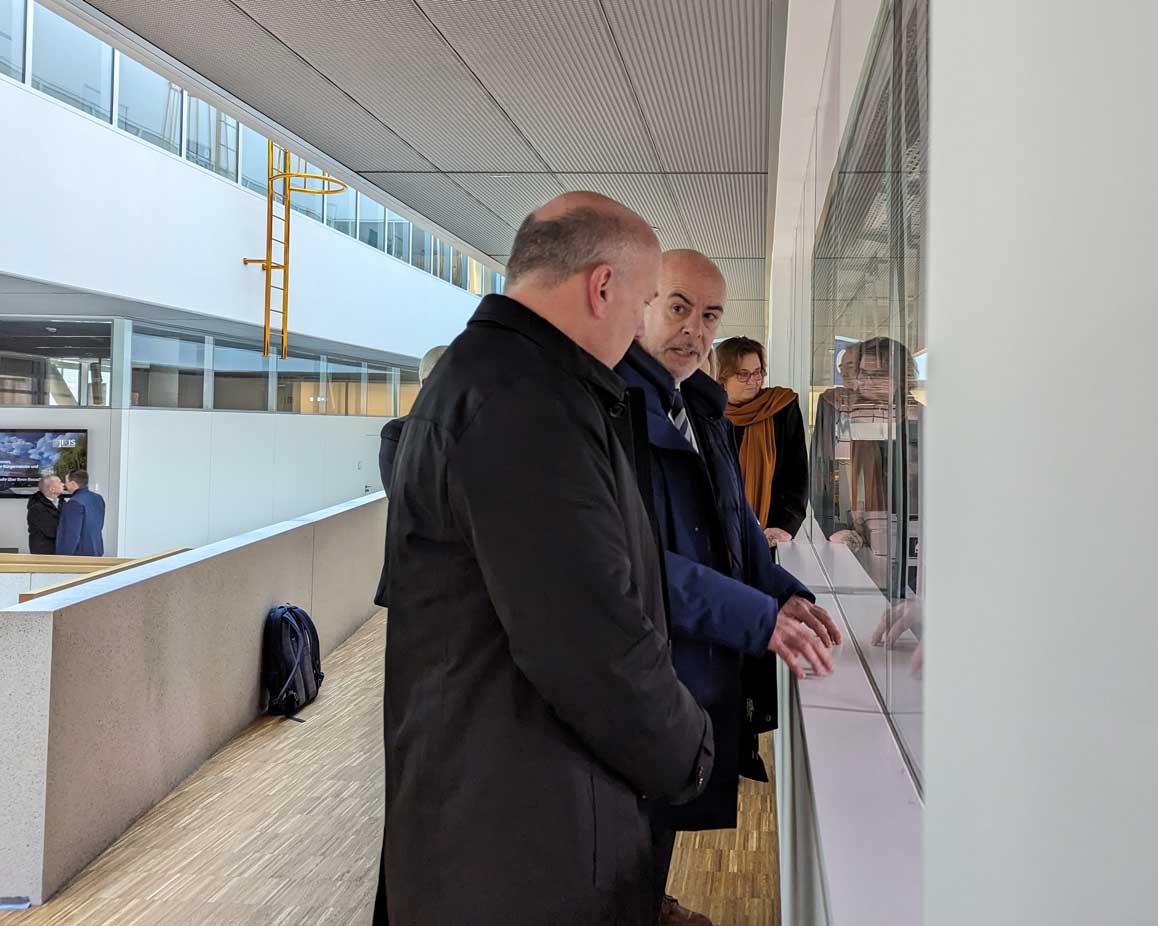 |
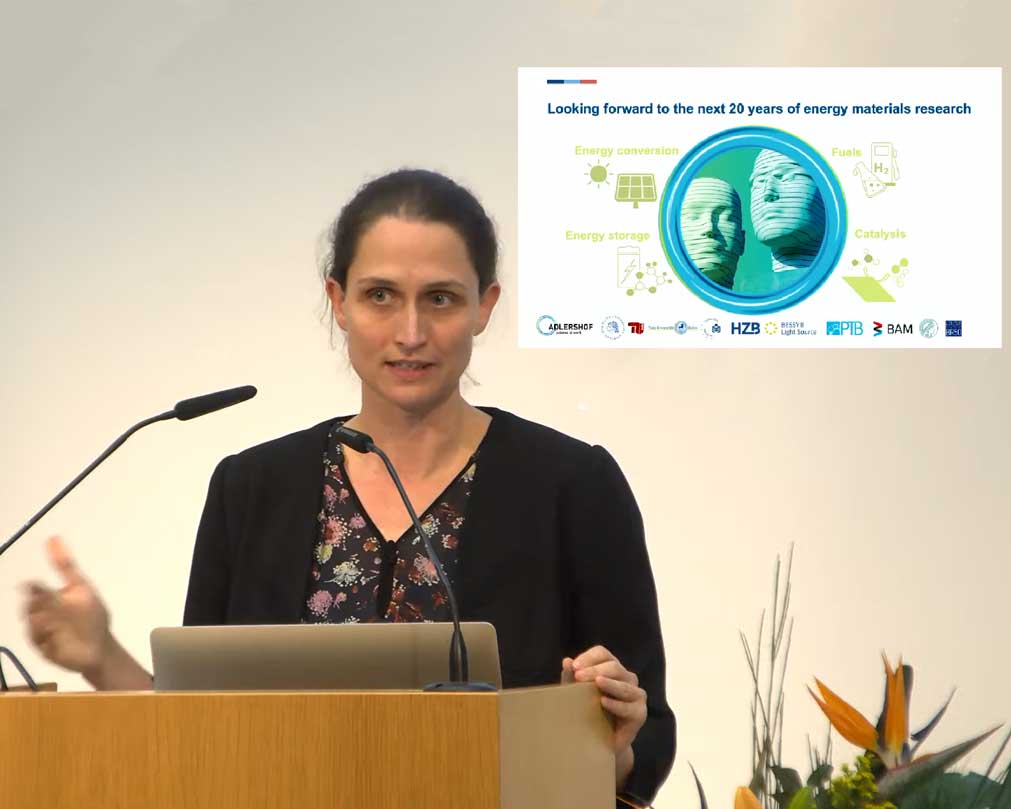 |
| (vlnr:) Prof. Ulf Leser, Dr. Nikolai Puhlmann, Prof. Emil List-Kratochvil, Kai Wegner, Prof. Christoph Schneider und Dr. Ina Czyborra vor dem IRIS Adlershof | Prof. Emil List-Kratochvil erklärt dem Regierenden Bürgermeister von Berlin, Kai Wegner, die laufende Forschung an neuen Materialien | Prof. Eva Unger blickt auf die nächsten 20 Jahre Energie-Materialforschung bei Festakt: 20 Jahre Campus Adlershof |
01.11.2023Oliver Dumele geht nach Freiburg
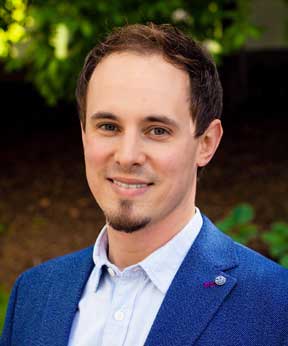 Dr. Oliver Dumele, Mitglied von IRIS Adlershof, hat einen Ruf der Albert-Ludwigs-Universität Freiburg auf die W3-Professor "Funktionsorganische Materialien" angenommen und seinen Dienst in Freiburg am 01.11. 2023 angetreten.
Dr. Oliver Dumele, Mitglied von IRIS Adlershof, hat einen Ruf der Albert-Ludwigs-Universität Freiburg auf die W3-Professor "Funktionsorganische Materialien" angenommen und seinen Dienst in Freiburg am 01.11. 2023 angetreten.
Oliver Dumele studierte Chemie an der Universität Mainz und der UC Berkeley in den USA. Nach seiner Diplomarbeit am Max-Planck-Institut für Polymerforschung in Mainz und einem Industriepraktikum bei BASF in Ludwigshafen promovierte er an der ETH Zürich in der Schweiz. In einer anschließenden Postdoc-Phase forschte er an der Northwestern University in den USA. Seit 2019 ist er Nachwuchsgruppenleiter am Institut für Chemie der Humboldt-Universität zu Berlin, wo er seit 2022 die BMBF-Gruppe zum Thema „Organische Batterieelektroden aus Gerüstverbindungen“ leitet. Seine Arbeit wurde mit einschlägigen Auszeichnungen gewürdigt, wie dem Dozentenpreis des Fonds der chemischen Industrie, dem Young Investigator Award der Europäischen Chemischen Gesellschaft und kürzlich dem Ernst-Haage-Preis der Max-Planck-Gesellschaft.
Er bleibt weiterhin Mitglied von IRIS Adlershof.
19.10.2023Feierliche Eröffnung des Center for the Science of Materials Berlin
Nachhaltige Batterien, neuartige Katalysatoren, effiziente Solarzellen und 3D-Drucktechnologie – all das entsteht in Zukunft im neuen Center for the Science of Materials Berlin (CSMB) der Humboldt-Universität zu Berlin, das am Donnerstag, den 19. Oktober, im IRIS-Forschungsbau in Berlin-Adlershof feierlich eröffnet wurde. Nicht nur die HU-Nachrichtenseite, auch die Zeitung B.Z. veröffentlichte einen bemerkenswerten Artikel über 'Berlins neues Forschungs-Schmuckstück'.
„Viele globale Herausforderungen im Zusammenhang mit einer nachhaltigen Ressourcennutzung lassen sich nur durch Innovation im Bereich der Materialwissenschaften meistern“, erklärt CSMB-Gründungsdirektor Prof. Stefan Hecht. Mit dem neuen Materialforschungszentrum bündelt die Humboldt-Universität die am Wissenschafts- und Technologiestandort Adlershof vorhandene Expertise für Innovationsprozesse und in den Materialwissenschaften. Im CMSB arbeiten Wissenschaftler:innen an Zukunftsmaterialien, mit deren Hilfe globale Nachhaltigkeitsziele erreicht werden sollen. Forschende verschiedener Disziplinen, universitäre und außeruniversitäre Einrichtungen sowie Gründer:innen ziehen dabei an einem Strang. Die Entwicklung innovativer Materialien soll am CSMB mithilfe moderner Methoden wie Hochdurchsatzsynthese und -screening, in-operando Synchrotronanalytik, Datenwissenschaften und künstlicher Intelligenz beschleunigt werden.
Gemeinsam an Zukunftsmaterialien forschen
In den Laboren des CSMB arbeiten schon jetzt 150 Wissenschaftler:innen in gemeinsam betriebenen Laboren, sogenannten Joint Labs, zusammen. Dort treffen Forschende aus der Chemie, der Physik sowie der Informatik auf Kolleg:innen aus den Lebens- und Kulturwissenschaften, die ihren jeweils spezifischen Blick auf Materialien einbringen. Auch Gründer:innen von Start-up-Unternehmen haben Zugang zu den neuen Laboren. Gemeinsam forschen sie an hocheffizienten Solarzellen, nachhaltigen Natrium-Ionen-Batterien, neuartigen Katalysatoren für die effiziente Erzeugung von grünem Wasserstoff oder auch druckbaren Organmodellen, mit denen Medikamente ohne Tierversuche getestet werden können.
Hochmoderner Forschungsbau in Berlin-Adlershof
Das hochmoderne Forschungsgebäude des CSMB stellt den Forschenden eine ausgezeichnete Infrastruktur bereit: Elektronenmikroskope, die Materialien auf atomarer Ebene im Nanometerbereich abbilden, Ultrakurzzeitspektroskopie, mit der chemische Prozesse im Femtosekundenbereich verfolgt werden können, sowie innovative Drucktechniken.
Das CSMB ist die konsequente Weiterentwicklung des ersten integrierten Forschungsinstituts der Humboldt-Universität, dem IRIS Adlershof, durch das der Grundstein für interdisziplinäre Zusammenarbeit sowie für einen neuen, hochmodernen Forschungsbau gelegt wurde.
Hier sind einige Eindrücke, gesammelt von unserem Kollegen Collin:
19.10.2023Jan Plefka und Stefan Hecht unter den 100 wichtigsten Wissenschaftlern Berlins

Das Team der Berliner Wissenschaftsredaktion beim Tagesspiegel hat die 100 führenden Persönlichkeiten in der Berliner Forschungsszene für das Jahr 2023 identifiziert. Diese Experten haben im Laufe des Jahres die Forschungsregion Berlin mit ihren bemerkenswerten Errungenschaften und Innovationen maßgeblich beeinflusst. Einige von ihnen haben ihre jeweiligen Fachbereiche mit bahnbrechenden Studien und innovativen Forschungsmethoden bereichert, beträchtliche Forschungsgelder eingeworben und herausragende Bildungsarbeit geleistet. Andere haben aktiv an öffentlichen Diskursen teilgenommen, die Stadtgesellschaft geprägt und internationale Netzwerke geknüpft, um die Forschungseinrichtungen der Region mit der Welt zu verbinden. Diese Forscher tragen allesamt dazu bei, das Profil der Wissenschaftsszene zu schärfen und die Grundlagen für zukünftige Erkenntnisse und Innovationen zu legen. Unter den Ausgewählten sind zwei Mitglieder von IRIS Adlershof.
Jan Plefka: Forschung am Puls des Universums
Einer der ausgewählten Top-Wissenschaftler ist Jan Plefka, ein Forscher am Institut für Physik und am Integrative Research Institute for the Sciences (IRIS) der Humboldt-Universität zu Berlin in Adlershof. Seine Arbeit konzentriert sich auf faszinierende Fragen zur Entstehung schwarzer Löcher, zur Gültigkeit von Einsteins Theorien im Bereich starker Gravitationsfelder und zur Suche nach Anzeichen für eine Physik, die über die bekannten Naturkräfte und Teilchen hinausgeht. In seiner Forschung bedient er sich der Quantenfeldtheorie, einer mathematischen Beschreibung der grundlegenden Bausteine unseres Universums, um beispielsweise Gravitationswellen zu untersuchen.
Stefan Hecht: Innovationen in der Materialwissenschaft
Ein weiterer herausragender Wissenschaftler, der es in die Top 100 geschafft hat, ist Stefan Hecht, Professor für Chemie und Gründungsdirektor des Center for the Science of Materials Berlin. Stefan Hecht hat sich der Materialwissenschaft verschrieben und forscht intensiv an lichtgesteuerten Polymeren. Besonders bemerkenswert ist seine Entwicklung der "Xolographie," eine Methode für den hochpräzisen 3D-Druck, die er zur Marktreife gebracht hat. Sein Engagement für die Förderung von Unternehmensgründungen an Hochschulen wurde in diesem Jahr mit der renommierten Unipreneurs-Auszeichnung gewürdigt.
Die Auswahl dieser beiden herausragenden Forscher von IRIS Adlershof unter den Top 100 Wissenschaftlern Berlins würdigt ihren bedeutenden Beitrag zur Forschung und ihre beeindruckenden Leistungen in ihren jeweiligen Fachgebieten. Jan Plefka und Stefan Hecht setzen ihre Fachkenntnisse und ihre Hingabe ein, um wichtige Fragen zu beantworten und Innovationen voranzutreiben, die unsere Welt von morgen gestalten werden
13.10.2023IOP–HU early career researcher conference on condensed matter physics
The Institute of Physics (IOP), Chinese Academy of Sciences (CAS), and Humboldt-Universtät zu Berlin recently concluded their IOP-HU Early Career Researcher Conference on Condensed Matter Physics in Liyang, and it was hailed as a resounding success. The event, held from October 13th to 14th, offered a platform for early career researchers to present their groundbreaking research and engage with domestic and international experts in the field, including the director of IRIS Adlershof, Prof. Jürgen P. Rabe, and the IRIS professors Christoph T. Koch, Claudia Draxl and Mathias Scheffler.
Event Highlights:
Day 1 - Early Career Researcher Conference: On the first day, junior postdoctoral candidates, senior PhD candidates, and students took the stage to present talks and posters, sharing their innovative research findings. The participants also had the invaluable opportunity to learn about postdoctoral fellowship opportunities at IOP CAS and partner institutes, followed by stimulating discussions with principal investigators from both organisations.Day 2 - PI Program and Discussions with Early Career Researchers: The second day of the conference featured stimulating talks from distinguished researchers on a range of topics, including theory and simulation, scanning probe and electron microscopy, and magnetism and quantum information. These sessions fostered intellectual exchange and collaboration between seasoned researchers and the next generation of scientists.
Day 3 - Participants had the exclusive opportunity to embark on an optional visit to Beijing, a modern city with profound history and marvelous culture, further immersing themselves in the world of scientific excellence.
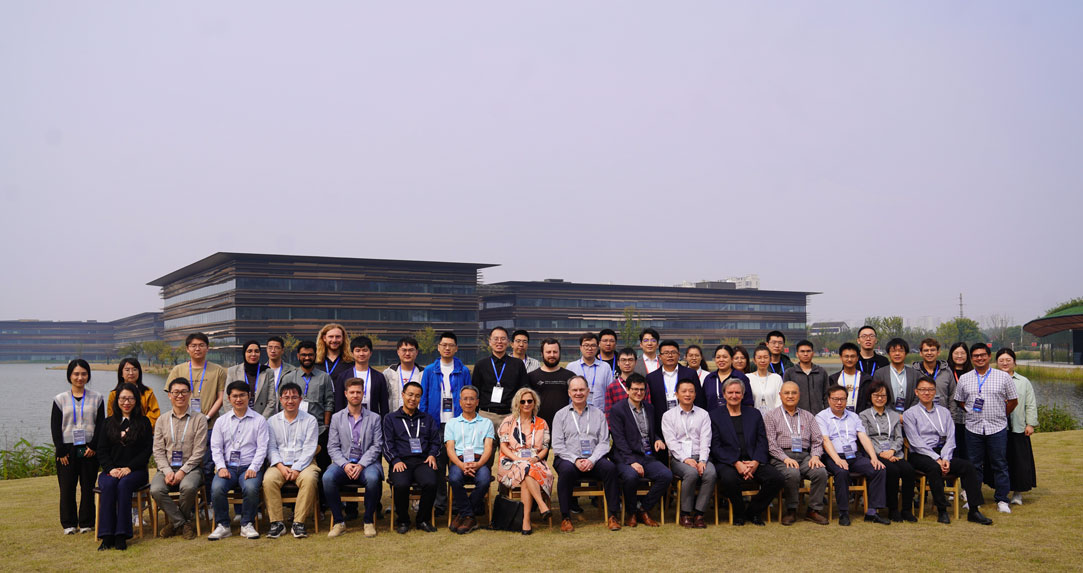
13.10.2023The IOP–Humboldt Postdoctoral Fellowship in Physics
Nominations are open for postdoctoral fellowships between two cities, Berlin and Beijing, as part of a joint physics program between the Integrative Research Institute for the Sciences (IRIS Adlershof) of Humboldt-Universität zu Berlin (HU Berlin) and the Institute of Physics, Chinese Academy of Sciences, (IOP) Beijing.
FELLOWSHIP PROGRAM
Established in 2020, the prestigious two-year research fellowships are intended for exceptional early-career scientists, in preparation for an independent career in research at the frontier of condensed matter physics, quantum materials or device physics. Successful candidates will spend one year in Berlin and one in Beijing at the research groups of their choice, supported by up to 4,500 EUR/month. The selected fellows are expected to be appointed in 2023 and 2024. A first networking event is scheduled in Berlin. Fellows will work at the Campus Adlershof of HU Berlin and the IOP Zhongguancun Beijing Campus. The fellows have the possibility to visit and interact with associated Partners at the Max Born Institute, the Helmholtz-Zentrum Berlin and its Electron Storage Ring BESSY II, the Leibniz-Institut für Kristallzüchtung or the Fritz-Haber Institute of the Max Planck Society.The prestigious two-year research fellowships are intended for exceptional early-career scientists, in preparation for an independent career in research at the frontier of condensed matter physics, quantum materials or device physics. Successful candidates will spend one year in Berlin and one in Beijing at the research groups of their choice, supported by up to 4,500 EUR/month.
The selected fellows will be appointed from August 2022 onwards. A first networking event is programmed in Berlin. Fellows will work at the Campus Adlershof of HU Berlin and the IOP Zhongcuancun Beijing Campus. The fellows have the possibility to visit and interact with associated Partners at the Max Born Institute, the Helmholtz-Zentrum Berlin and its Electron Storage Ring BESSY II, the Freie Universität Berlin, at the Leibniz-Institut für Kristallzüchtung or the Fritz-Haber Institute of the Max Planck Society.
A full list of participating groups can be found at HU Physics and the IOP website. Exemplary fields and participating groups includeCondensed Matter Theory
Prof. Claudia Draxl, Prof. Sheng Meng, Prof. Hongming Weng, Prof. Chen Fang, Prof. Xinguo Ren, Prof. Jiangping Hu, Prof. Zhong Fang, Prof. Tao Xiang, Prof. Matthias Scheffler
Ultrafast Laser Spectroscopy
Prof. Zhiyi Wei, Prof. Jianing Chen
Photoemission Spectroscopy and Surface Science
Prof. Norbert Koch, Prof. Tian Qian, Prof. Xingjiang Zhou, Prof. Jiandong Guo
Optoelectronic Devices and Quantum Transport
Prof. Emil List-Kratochvil, Prof. Thomas Schröder, Prof. Guangyu Zhang, Prof. Yongqing Li
Scanning Probe Microscopy
Prof. Jürgen P. Rabe, Prof. Carlos-Andres Palma, Prof. Kui Jin, Prof. Shuheng Pan, Prof. Hong-Jun Gao
Quantum Information
Prof. Tim Schröder, Prof. Oliver Benson, Prof. Li Lu
Electron Microscopy
Prof. Christoph Koch, Prof. Xuedong Bai
ELIGIBILITY CRITERIA
Commitment to a one-year research stay at IOP followed by a further year at HU Berlin. Special travel preferences will be considered. A PhD degree in physics, chemistry, mathematics, or materials, obtained no more than five years prior to the application deadline. Previous international experience, such as conference talks and research abroad.
HOW TO APPLY
Applicants should send their CV and one publication (in PDF format), along with a cover letter and two reference letters to: fellowshipsphysik.hu-berlin.de. Only candidates specifying two or more preferred host research groups in Berlin and Beijing will be considered.- Program closing date: November 15th, 2023.
DECISION
The decision announcements for the 2023 program are sent no later than 2 months after the closing date. Decisions will be made by a joint committee from IOP and HU Berlin. The HU Berlin and IOP specifically encourage qualified female scholars to apply.25.09.2023Eva Unger über ihre Forschung an Perowskiten im Adlershof Journal
 „Perowskit ist ein Sammelbegriff für Materialien mit einer bestimmten Kristallstruktur“, erklärt Eva Unger, Chemieprofessorin an der HU Berlin und Mitglied des IRIS Adlershof. Als Halbleiter eignen sich Perowskite hervorragend für den Einsatz in Solarzellen. Kleinflächige Perowskitsolarzellen erreichen im Labor bereits ähnliche Wirkungsgrade wie klassische Siliziumsolarzellen. Das Potenzial ist groß, denn Perowskite lassen sich kostengünstig herstellen und sogar mit anderen Solarzellmaterialien kombinieren. Welche Fragen Eva Unger und ihr Team auf dem Weg zum großflächigen Einsatz von Perowskitsolarzellen noch klären müssen, behandelt die neue Ausgabe des Adlershof Journals.
„Perowskit ist ein Sammelbegriff für Materialien mit einer bestimmten Kristallstruktur“, erklärt Eva Unger, Chemieprofessorin an der HU Berlin und Mitglied des IRIS Adlershof. Als Halbleiter eignen sich Perowskite hervorragend für den Einsatz in Solarzellen. Kleinflächige Perowskitsolarzellen erreichen im Labor bereits ähnliche Wirkungsgrade wie klassische Siliziumsolarzellen. Das Potenzial ist groß, denn Perowskite lassen sich kostengünstig herstellen und sogar mit anderen Solarzellmaterialien kombinieren. Welche Fragen Eva Unger und ihr Team auf dem Weg zum großflächigen Einsatz von Perowskitsolarzellen noch klären müssen, behandelt die neue Ausgabe des Adlershof Journals.
zum Artikel...
06.09.2023Prof. Stefan Hecht von Bildungsministerin Stark-Watzinger für sein Engagement bei Ausgründungen ausgezeichnet
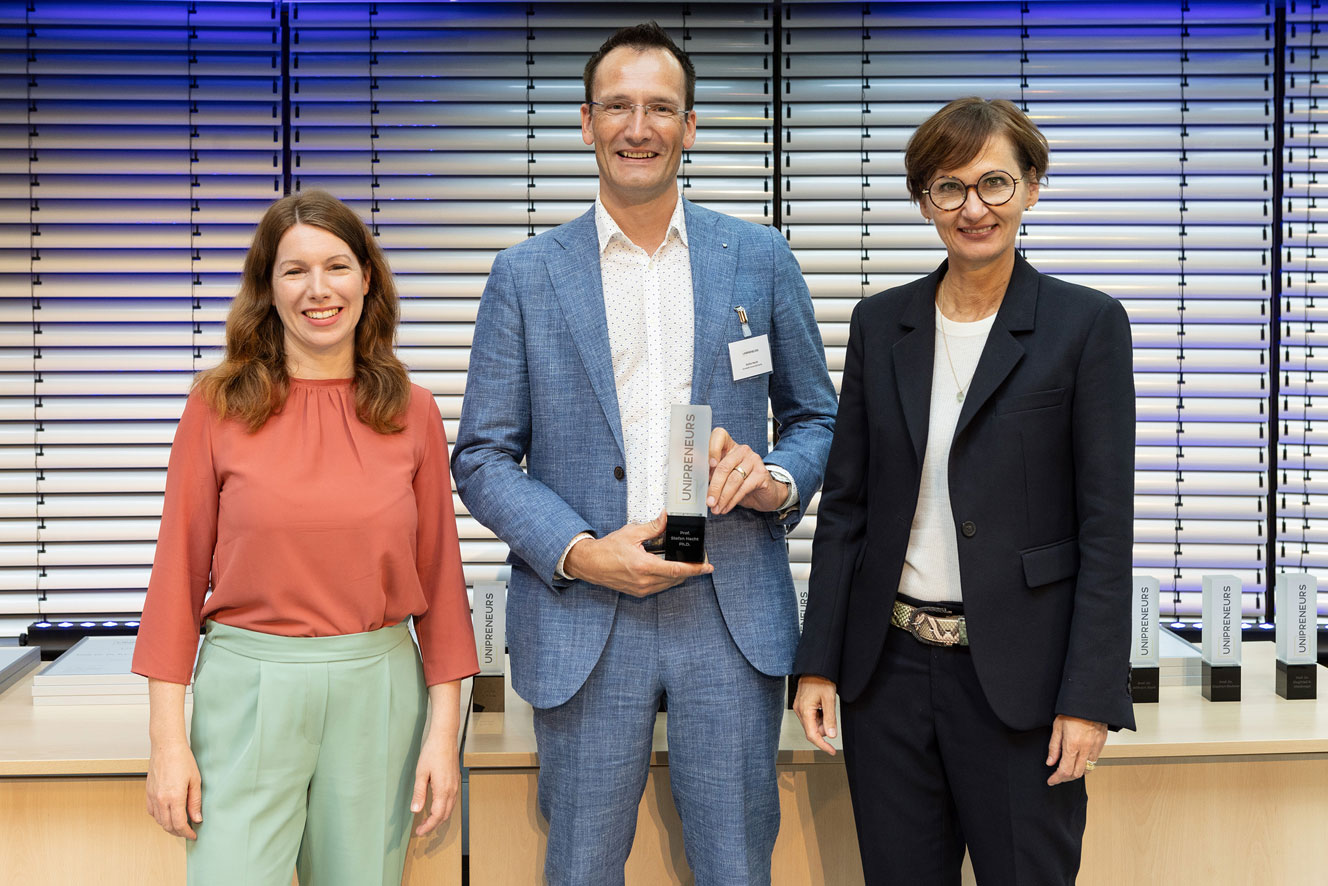 IRIS-Mitglied Professor Stefan Hecht, Direktor des Center for the Science of Materials Berlin (CSMB) und Professor für Chemie an der Humboldt-Universität zu Berlin, wurde gemeinsam mit 19 weiteren Hochschullehrerinnen und -lehrern für sein herausragendes Engagement bei Hochschulausgründungen mit der #UNIPRENEURS Auszeichnung geehrt.
IRIS-Mitglied Professor Stefan Hecht, Direktor des Center for the Science of Materials Berlin (CSMB) und Professor für Chemie an der Humboldt-Universität zu Berlin, wurde gemeinsam mit 19 weiteren Hochschullehrerinnen und -lehrern für sein herausragendes Engagement bei Hochschulausgründungen mit der #UNIPRENEURS Auszeichnung geehrt.
Die feierliche Preisverleihung wurde von Bundesministerin für Bildung und Forschung, Bettina Stark-Watzinger, sowie Dr. Anna Christmann, Beauftragte für Digitale Wirtschaft und Startups im Bundesministerium für Wirtschaft und Klimaschutz, durchgeführt.
"Wenn man mit Forschung wirklich relevante Probleme löst, dann findet sie auch kommerzielle Verwendung", betont Stefan Hecht. So entwickelte der Spezialist für photoschaltbare Moleküle eine Methode, um mit zwei kreuzenden Lichtstrahlen flüssiges Spezialplastik auszuhärten. Der Patentinhaber gründete die Xolo GmbH mit zwei Bekannten und entwickelt dort einen 3D-Drucker, der bereits von Forschern eingesetzt wird.
Seine Erfahrungen teilt er mit innovativen Start-Ups und arbeitet zum Teil eng mit ihnen in seinen Laboren zusammen.
Auch in seiner Rolle als Gründungsdirektor des CSMB am Campus Adlershof verfolgt er eine klare Vision: "Wir wollen nicht nur ein Ort für 'enquiring minds' sein, sondern auch für 'innovative minds'. Das Zentrum soll Forschende anziehen, die nicht nur Fragen beantworten, sondern ihre Antworten auch in praktische Anwendungen umsetzen." Es sei der ideale Ort, um z.B. nachhaltige Energiewerkstoffe zu entwickeln, die von Anfang bis Ende gut durchdacht sind: von Design und Nachhaltigkeitsüberlegungen bis zur Validierung und Umsetzung.
Bundesministerin Bettina Stark-Watzinger äußerte sich begeistert: "Wir wollen das Gründungsgeschehen an unseren Hochschulen stärken. Professorinnen und Professoren spielen dabei eine zentrale Rolle. Sie tragen maßgeblich zur Gründungskultur an Hochschulen bei und sind wichtige Impulsgeber für die Innovationskraft und Zukunftsfähigkeit Deutschlands."
Auch Dr. Anna Christmann würdigte die Leistungen der Professorinnen und Professoren: "Die ausgezeichneten Professorinnen und Professoren von UNIPRENEURS verkörpern die herausragende Verbindung von akademischer Exzellenz und unternehmerischem Geist. Ihre Verdienste für den Transfer der Innovationen in die Wirtschaft sind von unschätzbarem Wert für den Innovationsstandort Deutschland und verdienen höchste Anerkennung."
UNIPRENEURS ist eine Initiative zur Stärkung von Ausgründungen an deutschen Hochschulen und vergibt die höchste Anerkennung in Deutschland für herausragendes Engagement im Bereich des Unternehmertums an Hochschulen. Die "Auszeichnung der besten Hochschulprofessorinnen und -professoren für Gründerinnen und Gründer" von UNIPRENEURS ehrt unternehmerisches Engagement an Hochschulen und trägt dazu bei, Unternehmertum in den Hochschulen noch prominenter zu machen. Aus nahezu 700 Nominierungen wurden 20 herausragende Professorinnen und Professoren durch ein renommiertes Kuratorium ausgewählt.
IRIS Adlershof gratuliert seinem Gründungsmitglied herzlich zu dieser wundervollen Auszeichnung.
Kontakt:
Prof. Stefan Hecht
Humboldt University in Berlin
CSMB, IRIS Adlershof, & Department of Chemistry
Tel.: 030 2093-7365
shhu-berlin.de
20.08.2023Prof. Dr. Valentina Forini back at HU
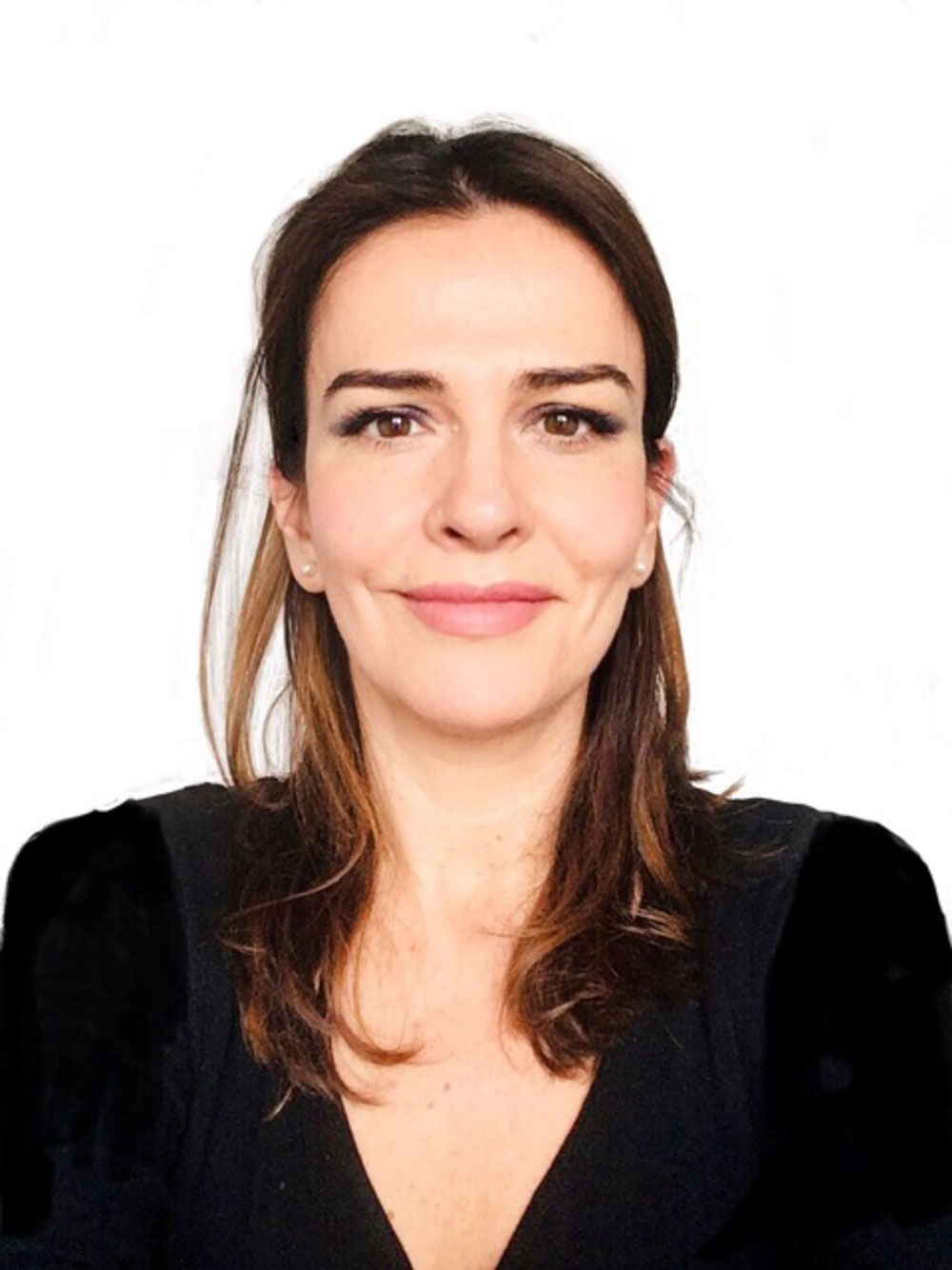 Frau Dr. Valentina Forini hat den Ruf auf die W2-Professur "Theoretische Teilchenphysik: Eichfelder und Stringtheorie" am Institut für Physik der Humboldt-Universität zu Berlin angenommen, die zunächst von der DFG im Rahmen einer Heisenberg-Professur gefördert wird.
Frau Dr. Valentina Forini hat den Ruf auf die W2-Professur "Theoretische Teilchenphysik: Eichfelder und Stringtheorie" am Institut für Physik der Humboldt-Universität zu Berlin angenommen, die zunächst von der DFG im Rahmen einer Heisenberg-Professur gefördert wird.
Mit ihrem Hintergrund in theoretischer Physik schlägt sie eine Brücke zwischen mathematischer und Hochenergiephysik, wobei sie sich besonders auf die String- und Quantenfeldtheorie konzentriert. Sie ist bekannt für die Entwicklung fortschrittlicher Methoden zur quantitativen Analyse ihres Quantenverhaltens und ihrer Beziehung durch die AdS/CFT-Korrespondenz, wobei sie das Zusammenspiel von Raumzeit und Materie erforscht.
Dr. Forini ist seit 2018 Dozentin für Mathematik an der City University of London und ist außerdem als Teilprojektleiterin und Gastprofessorin mit der Humboldt-Universität verbunden, unterstützt durch das Kolleg Mathematik Physik Berlin.
Ihre Karriere umfasst Rollen als Projektleiterin im europäischen Netzwerk EuroPLEx, Principal Investigator im Graduiertenkolleg 2575 "Rethinking Quantum Field Theory", sowie renommierte Forschungsstipendien wie das Simons Emmy Noether Fellowship 2018/19 am Perimeter Institute for Theoretical Physics in Waterloo (CA), das Einstein Junior Fellowship von 2018 bis 2021 an der Humboldt-Universität. Hier war sie von 2012 bis 2017 auch Emmy-Noether-Gruppenleiterin. Sie wurde 2018 IRIS-Juniormitglied und ist seit 2021 ordentliches Mitglied von IRIS Adlershof.
Ihre akademische Laufbahn führte sie an verschiedene Institutionen, darunter das Max-Planck-Institut für Gravitationsphysik in Golm und die Universität Barcelona. Dr. Forini promovierte 2006 in Physik an der Universität Trient und habilitierte sich 2017 in Theoretischer Physik. Zu ihren Qualifikationen gehören auch ein Laurea in Physik von der Universität Perugia und ein Diplom in Klavier vom Musikkonservatorium in Perugia.
Wir gratulieren Frau Forini herzlich zu ihrer Berufung, die sie zum kommenden Wintersemester antreten wird.
Auch wenn du nie wirklich weg warst:
Wilkommen zurück, Valentina!
04.08.2023Einstein International PostDoctoral Fellow am Institut für Physik und IRIS Adlershof
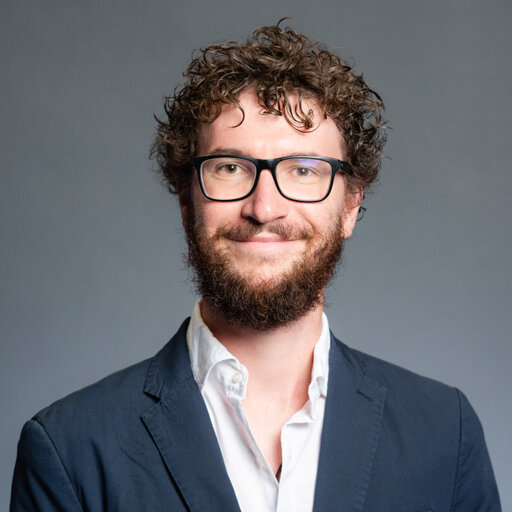 |
| Dr. Pietro Marabotti |
Dr. Pietro Marabotti erhielt seinen Doktor in Energie- und Nuklearwissenschaften an der Politecnico di Milano in Italien. Dank eines Einstein International Postdoctoral Fellowship wird er nun in der Emmy-Noether Nachwuchsgruppe „Physik der niedrigdimensionalen Systeme“ von Dr. Sebastian Heeg, Mitglied von IRIS Adlershof, an eindimensionalen linearen Kohlenstoffketten (Carbin) in Kohlenstoffnanoröhren forschen.
Pietro Marabotti plant einen neuartigen, auf verschränkten Photonenpaaren basierten Aufbau zur hochauflösenden Nahfeldmikroskopie im Infrarotbereich zu verwirklichen. Mit diesem System sollen strukturelle Nichtlinearitäten in Carbin, wie zum Beispiel Defekte und Krümmungen und das Potential von Carbin als molekularer Lichtwandler untersucht werden. Die Einstein-Stiftung fördert Pietro Marabotti mit insgesamt 375.000 Euro über 3,5 Jahre.
Wir freuen uns auf die Zusammenarbeit und heißen Pietro im IRIS Adlershof herzlich willkommen.
13.07.2023Das IRIS Sommerfest 2023
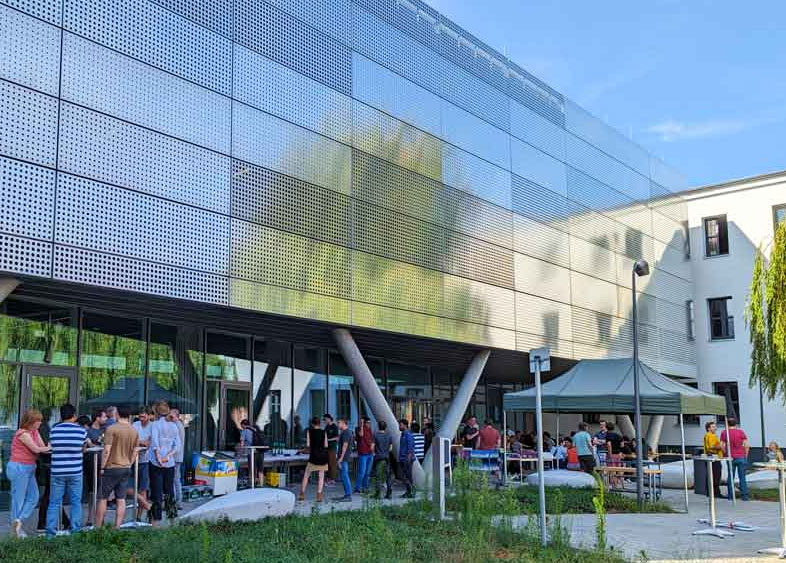 |
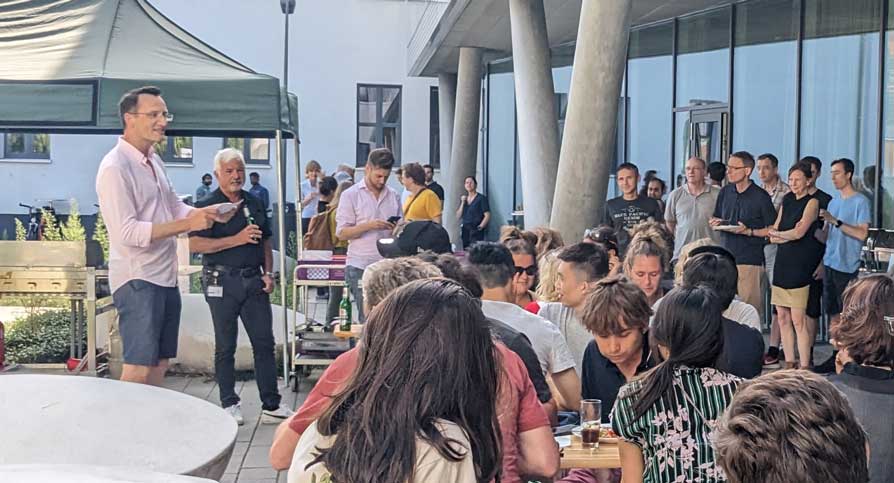 |
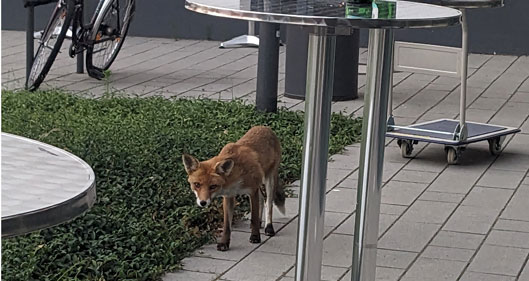 |
Gestern, am 12. Juli, feierten IRIS Adlershof und CSMB eine Sommerfest, zu der alle Mitarbeiter herzlich eingeladen waren.
Die Feierlichkeiten begannen mit einer inspirierenden und bewegenden Rede von Prof. Stefan Hecht und fanden vor dem IRIS-Forschungsbau statt, wo die Teilnehmer das schöne Wetter genießen, und sich dennoch im Schatten abkühlen konnten. Eisgekühlte Getränke sorgten für die nötige Erfrischung, verschiedene gegrillte Spezialitäten und eine Auswahl an schmackhaften Salaten für die Stärkung. Ein nicht registrierter Gast schlich sich auf die Veranstaltung, um vergeblich nach Resten von gebratenem Hühnchen zu suchen.
Im Laufe des Abends bedankten sich viele Teilnehmer für diese schöne Möglichkeit, sich mit anderen Wissenschaftlern aus den verschiedenen Gruppen und Start-ups auszutauschen und zu vernetzen.
Weit nach Sonnenuntergang halfen die verbliebenen Gäste beim Aufräumen mit.
10.07.2023Wissenschaftliche Einblicke in die Rekord-Tandemsolarzelle
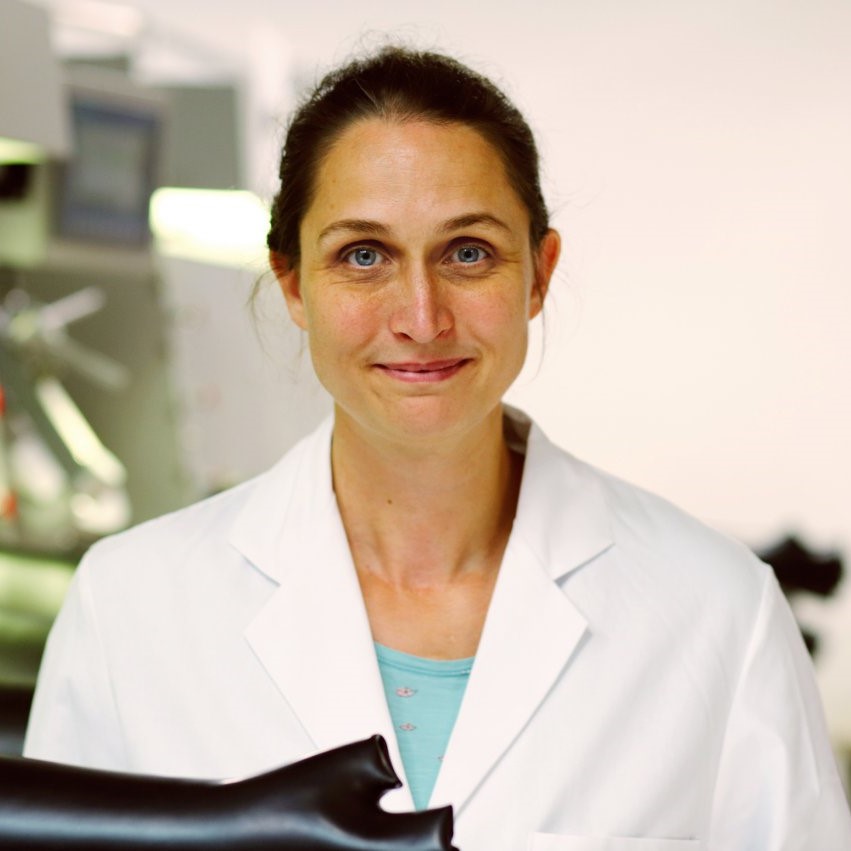 Die weltbesten Tandemsolarzellen aus einer Silizium-Unterzelle und einer Perowskit-Topzelle können heute ca. ein Drittel der einfallenden Sonnenstrahlung in elektrische Energie umwandeln. Das sind Rekordwerte, insbesondere für eine potentiell sehr preisgünstige Technologie. Ein Team am HZB, dem auch das Mitglied von IRIS Adlershof, Prof. Eva Unger, angehört, liefert nun erstmals die wissenschaftlichen Daten und beschreibt im renommierten Fachjournal Science, wie diese Entwicklung gelungen ist (DOI: 10.1126/science.adf5872).
Die weltbesten Tandemsolarzellen aus einer Silizium-Unterzelle und einer Perowskit-Topzelle können heute ca. ein Drittel der einfallenden Sonnenstrahlung in elektrische Energie umwandeln. Das sind Rekordwerte, insbesondere für eine potentiell sehr preisgünstige Technologie. Ein Team am HZB, dem auch das Mitglied von IRIS Adlershof, Prof. Eva Unger, angehört, liefert nun erstmals die wissenschaftlichen Daten und beschreibt im renommierten Fachjournal Science, wie diese Entwicklung gelungen ist (DOI: 10.1126/science.adf5872).
Die in dem Artikel erstmals genau beschriebene Tandemsolarzelle hatte einen Weltrekord im Wirkungsgrad erzielt und im Dezember 2022 damit Schlagzeilen erzeugt: Sie wandelt 32,5% des einfallenden Sonnenlichts in elektrische Energie um. Das Forschungsfeld ist sehr wettbewerbsorientiert, weshalb viele Arbeitsgruppen in diesem Gebiet forschen. In den letzten Jahren gab es eine kontinuierliche Steigerung der Wirkungsgradwerte durch verschiedene Forschungseinrichtungen und Photovoltaik-Firmen weltweit. Das Forschungszentrum KAUST (Saudi-Arabien) hat daher den Rekord des HZB mittlerweile schon wieder übertroffen. Das HZB-Team hat dafür nun eine solide und wissenschaftlich streng begutachtete Fachpublikation mit genauen Datensätzen aus den Messungen sowie detaillierten Angaben zum Aufbau der Tandemzelle vorgelegt.
Für die Herstellung dieser Zelle wurde eine deutlich verbesserte Perowskit-Verbindung und ein neuartiges Molekül Piperazinium Iodid verwendet, womit Verluste reduziert werden konnten. Durch spezielle Messmethoden konnten die Forscher die grundlegenden Prozesse an den Grenzflächen und in den einzelnen Schichten der Tandemzelle im Detail analysieren und weiter optimieren. Die Herstellung und Entwicklung der Tandemzelle war dank der Zusammenarbeit mit Gruppen aus Potsdam, San Sebastian (Spanien) und Kunas (Litauen) möglich. Erst die Kombination aller Modifikationen ermöglichte es, Höchstwerte der Photospannung (Leerlaufspannung), sowie des Photostroms und folglich in puncto Effizienz zu erzielen.
Durch die andauernden Fortschritte in dem Gebiet besteht die Hoffnung, dass diese Technologie in den nächsten Jahren einen großen Beitrag zu einer nachhaltigen Energieversorgung im Kampf gegen den Klimawandel leisten kann, weil auch die Aufskalierung und industrielle Produktion von Perowskit/Silizium-Tandemsolarzellen machbar ist.
Im kommenden CSMB–IRIS Kolloquium am 25. Juli zum Thema „Chemical transformation processes in halide perovskite semiconductors“ wird Prof. Eva Unger dieses Thema weiter vertiefen.
01.07.2023Abschluss des erfolgreichen Sonderforschungsbereichs SFB 951 - Hybridanorganische/Organische Systeme für Optoelektronik (HIOS) nach 12 Jahren
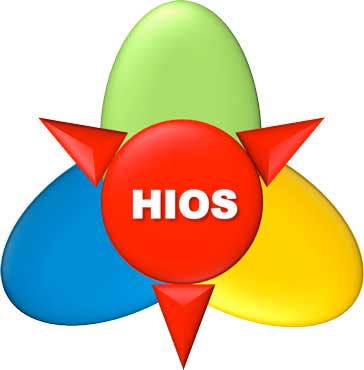 Nach einer Laufzeit von 12 Jahren ist der Sonderforschungsbereich SFB 951 - Anorganische/Organische Hybridsysteme für Optoelektronik (HIOS) nach seiner maximalen Förderdauer erfolgreich beendet worden. In dieser Zeit arbeitete IRIS Adlershof eng mit dem SFB 951 zusammen und pflegte eine produktive Partnerschaft. Die Verbindung zwischen uns ging über die thematische Ausrichtung hinaus, da viele Mitglieder von IRIS, einschließlich Nachwuchswissenschaftlern, aktiv am SFB 951 beteiligt waren.
Nach einer Laufzeit von 12 Jahren ist der Sonderforschungsbereich SFB 951 - Anorganische/Organische Hybridsysteme für Optoelektronik (HIOS) nach seiner maximalen Förderdauer erfolgreich beendet worden. In dieser Zeit arbeitete IRIS Adlershof eng mit dem SFB 951 zusammen und pflegte eine produktive Partnerschaft. Die Verbindung zwischen uns ging über die thematische Ausrichtung hinaus, da viele Mitglieder von IRIS, einschließlich Nachwuchswissenschaftlern, aktiv am SFB 951 beteiligt waren.
Die Geschäftsstelle des SFB 951 befand sich im Forschungsgebäude von IRIS und spiegelte die enge Integration und Zusammenarbeit zwischen den beiden Institutionen wider. Gemeinsam haben wir Projekte wie Kolloquien, Workshops, Konferenzen, Feste und Publikationen durchgeführt. Diese Bemühungen trugen maßgeblich zur Förderung der Forschung und zur Innovation im Bereich der anorganischen/organischen Hybridsysteme bei.
Wir möchten allen Beteiligten für die enge und äußerst erfolgreiche Zusammenarbeit unseren herzlichen Dank aussprechen. Die fruchtbare Partnerschaft zwischen IRIS Adlershof und dem SFB 951 hat wesentlich zum Fortschritt und den Errungenschaften in diesem interdisziplinären Bereich beigetragen.
22.06.2023Prof. Yan Lu ans HIPOLE und Uni Jena berufen
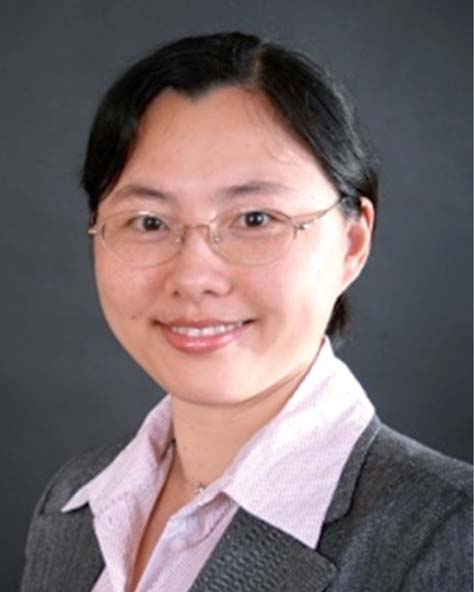 IRIS-Mitglied Prof. Dr. Yan Lu wird zum Wintersemester eine Professur an der Universität Jena antreten. Außerdem wird sie Co-Sprecherin des „Helmholtz-Institut für Polymere in Energieanwendungen" (HIPOLE), welches aller Vorraussicht nach am 1. Juli 2023 offiziell gegründet wird.
IRIS-Mitglied Prof. Dr. Yan Lu wird zum Wintersemester eine Professur an der Universität Jena antreten. Außerdem wird sie Co-Sprecherin des „Helmholtz-Institut für Polymere in Energieanwendungen" (HIPOLE), welches aller Vorraussicht nach am 1. Juli 2023 offiziell gegründet wird.
Ziel von HIPOLE ist die Entwicklung von nachhaltigen Polymermaterialien für Energietechnologien, die rasch in die Anwendung gebracht werden können, insbesondere von Polymer-basierten Batterien und Perowskit-Solarzellen mit polymeren Additiven. Gründungsdirektor ist Prof. Dr. Ulrich S. Schubert von der Universität Jena, mit dem Yan Lu bereits in den vergangenen Jahren geforscht hat.
mehr...Wir gratulieren herzlich!
19.06.2023 Open Access textbook "Scattering Amplitudes in Quantum Field Theory" by Jan Plefka et al.

 We are very happy to announce the new open access textbook "Scattering Amplitudes in Quantum Field Theory". Jan Plefka reviews the modern theory of scattering amplitudes together with Badger, Henn, and Zoia.
We are very happy to announce the new open access textbook "Scattering Amplitudes in Quantum Field Theory". Jan Plefka reviews the modern theory of scattering amplitudes together with Badger, Henn, and Zoia.
These lecture notes bridge a gap between introductory quantum field theory (QFT) courses and state-of-the-art research in scattering amplitudes. They cover the path from basic definitions of QFT to amplitudes relevant for processes in the Standard Model of particle physics. The book begins with a concise yet self-contained introduction into QFT, including perturbative quantum gravity. It then presents modern methods for calculating scattering amplitudes, focusing on tree-level amplitudes, loop-level integrands and loop integration techniques. These methods help reveal intriguing relations between gauge and gravity amplitudes, and are of increasing importance for obtaining high-precision predictions for collider experiments, such as those at CERN's Large Hadron Collider, as well as for foundational mathematical physics studies in QFT, including recent applications to gravitational wave physics.
These course-tested lecture notes include numerous exercises with detailed solutions. Requiring only minimal knowledge of QFT, they are well-suited for MSc and PhD students as a preparation for research projects in theoretical particle physics. They can be used as a one-semester graduate level course, or as a self-study guide for researchers interested in fundamental aspects of QFT.
more...16.06.2023The IOP-HU workshop on condensed matter physics

The Institute of Physics, Chinese Academy of Sciences and Humboldt-Universität Berlin (IOP–HU) Condensed Matter Physics Workshop 2023 is a two–day workshop which will take place on October 13th–14th in Liyang (near Shanghai & near Suzhou) with an optional visit to IOP Beijing campus on October 15th.
The workshop is directed at early career researchers looking to present their research and interact with domestic and international condensed matters physicists. Every year a few topics are chosen based on the speakers. Ten travel awards will cover travel and accommodation expenses for international early career researchers.
This year, the program will cover:
- Density functional theory and simulation
- Scanning probe and electron microscopy
- Magnetism and quantum information
The workshop will consist of sessions of invited talks and contributed poster sessions. Young researchers are encouraged to participate in the workshop and present their work in the form of posters. The workshop is expected to be a highly exciting and stimulating event. We look forward to meeting you in Beijing in October, 2023.
more...16.06.2023Dozentenpreis des FCI für Oliver Dumele
 Der Dozentenpreis des Fonds der chemischen Industrie (FCI) zählt zu einem der renommiertesten und höchst dotierten Auszeichnungen im Bereich der Nachwuchsförderung wird an herausragende Nachwuchswissenschaftler im Bereich der Chemie verliehen. Die Preisträger werden von Mitgliedern des Fonds-Kuratoriums, ehemaligen Dozentenpreisträgern oder Sprechern der Fachkollegien der Deutschen Forschungsgemeinschaft vorgeschlagen und in einem zweistufigen Nominierungsverfahren ausgewählt.
Der Dozentenpreis des Fonds der chemischen Industrie (FCI) zählt zu einem der renommiertesten und höchst dotierten Auszeichnungen im Bereich der Nachwuchsförderung wird an herausragende Nachwuchswissenschaftler im Bereich der Chemie verliehen. Die Preisträger werden von Mitgliedern des Fonds-Kuratoriums, ehemaligen Dozentenpreisträgern oder Sprechern der Fachkollegien der Deutschen Forschungsgemeinschaft vorgeschlagen und in einem zweistufigen Nominierungsverfahren ausgewählt.
Am 16. Juni 2023 wurde er an Herrn Dr. Oliver Dumele (HU Berlin, Inst. Chemie & IRIS Adlershof), Prof. Dr. A. J. Barbara Lechner (TUM) und Dr. Sabine Richert (U Freiburg) vergeben. Mit dem Preisgeld werden auch weitere Schritte in ihrer Karriere gefördert.
In seiner aktuellen Forschung beschäftigt sich Herr Dumele mit organischen Funktionsmaterialien auf molekularer sowie supramolekularer Ebene und in kovalent-organischen Gerüstverbindungen (COFs). Neuartige aromatische Bausteine werden in Gerüstverbindung eingebaut und sollen somit fundamentale Fragestellungen beantworten oder als Batterieelektroden einen Beitrag zu neuen Energiespeichern leisten. Weiterhin werden derzeit rein-organische Photomagnet-Schalter, die ihren elektronischen Spinzustand durch Lichtimpuls ändern können, in seiner Arbeitsgruppe für zukünftige Anwendungen in der Quanteninformationstechnologie entwickelt. mehr...
Herzlichen Glückwunsch zu einer weiteren tollen Auszeichnung!
23.05.2023The IOP–Humboldt Postdoctoral Fellowship in Physics
Nominations are open for postdoctoral fellowships between two cities, Berlin and Beijing, as part of a joint physics program between the Integrative Research Institute for the Sciences (IRIS Adlershof) of Humboldt-Universität zu Berlin (HU Berlin) and the Institute of Physics, Chinese Academy of Sciences, (IOP) Beijing.
FELLOWSHIP PROGRAM
Established in 2020, the prestigious two-year research fellowships are intended for exceptional early-career scientists, in preparation for an independent career in research at the frontier of condensed matter physics, quantum materials or device physics. Successful candidates will spend one year in Berlin and one in Beijing at the research groups of their choice, supported by up to 4,500 EUR/month. The selected fellows are expected to be appointed in 2023 and 2024. A first networking event is scheduled in Berlin. Fellows will work at the Campus Adlershof of HU Berlin and the IOP Zhongguancun Beijing Campus. The fellows have the possibility to visit and interact with associated Partners at the Max Born Institute, the Helmholtz-Zentrum Berlin and its Electron Storage Ring BESSY II, the Leibniz-Institut für Kristallzüchtung or the Fritz-Haber Institute of the Max Planck Society.The prestigious two-year research fellowships are intended for exceptional early-career scientists, in preparation for an independent career in research at the frontier of condensed matter physics, quantum materials or device physics. Successful candidates will spend one year in Berlin and one in Beijing at the research groups of their choice, supported by up to 4,500 EUR/month.
The selected fellows will be appointed from August 2022 onwards. A first networking event is programmed in Berlin. Fellows will work at the Campus Adlershof of HU Berlin and the IOP Zhongcuancun Beijing Campus. The fellows have the possibility to visit and interact with associated Partners at the Max Born Institute, the Helmholtz-Zentrum Berlin and its Electron Storage Ring BESSY II, the Freie Universität Berlin, at the Leibniz-Institut für Kristallzüchtung or the Fritz-Haber Institute of the Max Planck Society.
A full list of participating groups can be found at HU Physics and the IOP website. Exemplary fields and participating groups includeCondensed Matter Theory
Prof. Claudia Draxl, Prof. Sheng Meng, Prof. Hongming Weng, Prof. Chen Fang, Prof. Xinguo Ren, Prof. Jiangping Hu, Prof. Zhong Fang, Prof. Tao Xiang, Prof. Matthias Scheffler
Ultrafast Laser Spectroscopy
Prof. Zhiyi Wei, Prof. Jianing Chen
Photoemission Spectroscopy and Surface Science
Prof. Norbert Koch, Prof. Tian Qian, Prof. Xingjiang Zhou, Prof. Jiandong Guo
Optoelectronic Devices and Quantum Transport
Prof. Emil List-Kratochvil, Prof. Thomas Schröder, Prof. Guangyu Zhang, Prof. Yongqing Li
Scanning Probe Microscopy
Prof. Jürgen P. Rabe, Prof. Carlos-Andres Palma, Prof. Kui Jin, Prof. Shuheng Pan, Prof. Hong-Jun Gao
Quantum Information
Prof. Tim Schröder, Prof. Oliver Benson, Prof. Li Lu
Electron Microscopy
Prof. Christoph Koch, Prof. Xuedong Bai
ELIGIBILITY CRITERIA
Commitment to a one-year research stay at IOP followed by a further year at HU Berlin. Special travel preferences will be considered. A PhD degree in physics, chemistry, mathematics, or materials, obtained no more than five years prior to the application deadline. Previous international experience, such as conference talks and research abroad.
HOW TO APPLY
Applicants should send their CV and one publication (in PDF format), along with a cover letter and two reference letters to: fellowshipsphysik.hu-berlin.de. Only candidates specifying two or more preferred host research groups in Berlin and Beijing will be considered.- First 2023 Program closing date: June 15th, 2023.
- Second 2023 Program closing date: November 15th, 2022.
DECISION
The decision announcements for the 2023 program are sent no later than 2 months after the closing date. Decisions will be made by a joint committee from IOP and HU Berlin. The HU Berlin and IOP specifically encourage qualified female scholars to apply.11.05.2023Joachim Sauer zum Mitglied der American Academy of Arts and Sciences ernannt
 Prof. Dr. rer. nat. Dr. h.c. Joachim Sauer, der als Senior Researcher am Institut für Chemie der Humboldt-Universität zu Berlin forscht, wurde aufgrund seiner Forschungstätigkeit am Institut für Chemie, in zwei Sonderforschungsbereichen an der Humboldt-Universität sowie im Exzellenzcluster UNICAT, zum Mitglied der American Academy of Arts and Sciences ernannt. Die Aufnahme in die Academy erfolgt in einer formellen Zeremonie am 30. September 2023 in Cambridge, Massachusetts.
Prof. Dr. rer. nat. Dr. h.c. Joachim Sauer, der als Senior Researcher am Institut für Chemie der Humboldt-Universität zu Berlin forscht, wurde aufgrund seiner Forschungstätigkeit am Institut für Chemie, in zwei Sonderforschungsbereichen an der Humboldt-Universität sowie im Exzellenzcluster UNICAT, zum Mitglied der American Academy of Arts and Sciences ernannt. Die Aufnahme in die Academy erfolgt in einer formellen Zeremonie am 30. September 2023 in Cambridge, Massachusetts.
Die American Academy of Arts and Sciences ist eine der ältesten und angesehensten Ehrengesellschaften der USA und wurde 1780 gegründet. Sie ehrt herausragende Leistungen und versammelt Führungskräfte aus allen Bereichen, um neue Ideen zu untersuchen und Themen von Bedeutung für die Nation und die Welt anzusprechen und zusammenzuarbeiten.
Wir gratulieren unserem Gründungsmitglied!
12.04.2023Prof. Eva Unger im 5-Minuten-Interview "Only5mins! - Self-healing properties of perovskite solar key to industrial development."
IRIS-Mitglied Eva Unger gab dem pv magazine ein kurzes Interview und ging dabei überwiegend auf das Viperlab-Projekt und die Selbstheilungskräfte von Perovskite-Solarzellen ein.
11.04.2023Einen Schritt näher in Richtung Quanteninternet
 |
| Illustration: Defektzentren in Diamantnanostrukturen können als Quantenbits genutzt werden. Über Quantenoperationen kann die Quanteninformation in einzelnen Photonen gespeichert und in Glasfasern im zukünftigen Quanteninternet übertragen werden. |
Forschern der von Prof. Tim Schröder, Mitglied von IRIS Adlershof, geleiteten Arbeitsgruppe „Integrierte Quantenphotonik“ der Humboldt-Universität zu Berlin, ist es weltweit zum ersten Mal gelungen, Photonen mit stabilen Photonenfrequenzen, die von Quantenlichtquellen, oder, genauer gesagt, von Stickstoff-Fehlstellen-Defektzentren in Diamantnanostrukturen emittiert wurden, zu erzeugen und nachzuweisen. Dies wurde durch eine sorgfältige Wahl des Diamantmaterials, hochentwickelte Nanofabrikationsmethoden durchgeführt im Joint Lab Diamant Nanophotonik des Ferdinand-Braun-Instituts, Leibniz-Institut für Höchstfrequenztechnik und spezielle experimentelle Kontrollprotokolle ermöglicht. Durch die Kombination der Methoden kann das Rauschen der Elektronen, das bisher die Datenübertragung gestört hat, signifikant reduziert werden und die Photonen werden auf einer stabilen (Kommunikations-) Frequenz ausgesendet.
Zudem zeigen die Berliner Forscher, dass man perspektivisch mit Hilfe der entwickelten Methoden die gegenwärtigen Kommunikationsraten zwischen räumlich getrennten Quantensystemen mehr als 1000-fach erhöhen kann, so dass sie einem zukünftigen Quanteninternet einen wichtigen Schritt näher gekommen sind.
Einzelne Qubits wurden in optimierte Diamantnanostrukturen integriert. Diese Strukturen sind 1000-mal dünner als ein menschliches Haar und ermöglichen es, einzelne ausgesendete Lichtteilchen in Glasfasern gerichtet zu überführen. Bei der Herstellung der Nanostrukturen wird allerdings die Materialoberfläche auf atomarer Ebene beschädigt und freie Elektronen erzeugen unkontrollierbare Störungen für die erzeugten Lichtteilchen. Ein Rauschen, das vergleichbar ist mit einer unstabilen Radiofrequenz, führt zu Schwankungen in der Photonenfrequenz und verhindert somit erfolgreiche Quantenoperationen, wie beispielsweise Verschränkung.
Eine Besonderheit in dem genutzten Diamantmaterial ist, dass relativ viele Fremdatome (Stickstoff) in dem Kristallgitter vorhanden sind. Diese schirmen möglicherweise die Quantenlichtquelle von Störelektronen an der Oberfläche der Nanostruktur ab. „Die genauen physikalischen Prozesse müssen allerdings in Zukunft noch näher untersucht werden“, erklärt Laura Orphal-Kobin, Sprecherin des wissenschaftlichen Nachwuchses von IRIS Adlershof, die gemeinsam mit Tim Schröder an den Quantensystemen forscht.
Optically Coherent Nitrogen-Vacancy Defect Centers in Diamond Nanostructures
L. Orphal-Kobin, K. Unterguggenberger, T. Pregnolato, N. Kemf, M. Matalla, R.-S. Unger, I. Ostermay, G. Pieplow, und T. Schröder
Physical Review X (2023)
Kontakt:
Laura Orphal-Kobin, Telefon: +49 30 2093 82146, Email: orphalphysik.hu-berlin.de
Prof. Dr. Tim Schröder, Telefon: +49 30 2093 82140, Email: tim.schroederphysik-hu-berlin.de
Humboldt-Universität zu Berlin, Institut für Physik und IRIS Adlershof, Integrated Quantum Photonics Group & Joint Lab Diamond Nanophotonics, Ferdinand-Braun-Institut
30.03.2023Prof. Jan Plefka erhält ERC Advanced Grant
 |
| Prof. Jan Plefka |
Jan Plefka erhält einen renommierten Advanced Grant des European Research Council (ERC). Ihm und seinem Team am Institut für Physik und am IRIS Adlershof der HU Berlin, stehen in den kommenden 5 Jahren 2,2 Millionen Euro für das GraWFTy Projekt (High-Precision Gravitational Wave Physics from a Worldline Quantum Field Theory) zur Verfügung, um Gravitationswellen mithilfe der Quantenfeldtheorie zu beschreiben. Die so möglichen Vorhersagen werden für die Wellendetektoren der nächsten Generationen benötigt.
Der ERC Advanced Grant
ERC Advanced Grants sind ist mit bis zu 2,5 Millionen Euro dotiert und unterstützen exzellente und selbst initiierte Forschungsprojekte führender Spitzenforscher. Es handelt sich um die höchstdotierte europäische Forschungsförderung. Die Preisträger sind exzeptionell führende Persönlichkeiten, die sich durch Originalität und Signifikanz ihrer Ansätze auszeichnen.
Zur Person
Professor Jan Plefka ist ein renommierter theoretischer Physiker und Professor an der Humboldt-Universität zu Berlin. Nach Physikstudium und Promotion 1995 an der Universität Hannover war er Postdoc in New York, Amsterdam und am MPI Potsdam. Er war Gastprofessor an der ETH Zürich und am CERN. Seine Forschungen beschäftigen sich mit der Quantenfeldtheorie und ihrer Beziehung zur Gravitation. Hierbei konnte er wichtige Beiträge zu Fragen der Quantengravitation und der Stringtheorie, insbesondere im Bereich der AdS/CFT-Korrespondenz und zu versteckten Symmetrien in supersymmetrischen Quantenfeldtheorien liefern. In jüngster Zeit hat er innovative quantenfeldtheoretische Methoden für Fragen der klassischen Gravitationswellenphysik entwickelt, für dessen Ausbau er nun den ERC Advanced Grant erhielt.
Er ist Sprecher des DFG Graduiertenkollegs 2575, “Rethinking Quantum Field Theory”.
Jan Plefka wurde mehrfach ausgezeichnet, darunter mit einem Feodor Lynen Stipendium der Humboldt-Stiftung und der Lichtenberg-Professur der Volkswagen Stiftung.
Das GraWFTy Projekt: High-Precision Gravitational Wave Physics from a Worldline Quantum Field Theory
Gravitationswellen sind winzige Wellen des Raumzeitgewebes, die sich mit Lichtgeschwindigkeit durch unser Universum bewegen. Sie entstehen, sobald Massen beschleunigt werden.
Sie sind eine direkte Vorhersage der Einstein’schen Relativitätstheorie, die er in seinen Berliner Jahren bereits 1916 vorhergesagt hat. Sie wurden erstmals 100 Jahre später im Jahr 2015 im LIGO Detektor direkt nachgewiesen. Sie sind durch die Verschmelzung von zwei schwarzen Löchern entstanden und haben sich nach einem Milliarden-Lichtjahre langen Weg bei uns durch winzigste Auslenkungen bemerkbar gemacht.
Derzeit sind 3 Gravitationswellen-Observatorien in Betrieb: LIGO, Virgo und Kagra. Sie detektieren routinemäßig Gravitationswellen, die von Verschmelzungen von schwarzen Löchern und Neutronensternen ausgehen. Bis heute konnten etwa 90 solcher Ereignisse detektiert werden.
In den 2030er Jahren wird eine neue Generation von boden- und weltraumgestützten Gravitationswellendetektoren in Betrieb gehen, die die Empfindlichkeiten dieser Messungen deutlich erhöhen werden. Um diesen Empfindlichkeiten gerecht zu werden, muss die theoretische Physik hochgenaue Wellenformen aus Einsteins Theorie vorhersagen, die weit über den aktuellen Stand der Technik hinausgehen.
Das GraWFTy Projekt wird diese Vorhersagen für die hochpräzise Form von Gravitationswellen liefern. Mit deren Hilfe können fundamentale Fragen der Physik studiert werden:
- Ist Einsteins Theorie im Bereich starker Gravitationsfelder korrekt?
- Wie entstehen schwarze Löcher, was ist ihre Population im Universum?
- Können wir Signale für Physik jenseits der bekannten Naturkräfte und Teilchen sehen?
 |
| Visualisierung der gravitativen Bremsstrahlung aus der Streuung zweier schwarzer Löcher (BSc-Arbeit O. Babayemi) |
Jan Plefka erklärt seinen Ansatz: "Gemeinsam mit meiner Arbeitsgruppe konnten wir seit 2020 eine innovative Methode entwickeln, die dieses Problem der klassischen Physik mit Methoden der Quantenfeldtheorie angeht. Die Quantenfeldtheorie ist die mathematische Beschreibung der Elementarteilchenphysik, also gerade der kleinsten Bausteine unseres Universums und deren Wechselwirkungen. Es ist überaus faszinierend, dass diese Sprache auch auf die klassische Gravitationsphysik mit hoher Effizienz angewandt werden kann. Verkürzt gesagt ersetzen wir die Streuung von Protonen, so wie sie in Beschleunigern wie des LHC am CERN stattfindet, in unserem Formalismus durch die Streuung von schwarzen Löchern oder Neutronensternen. Dabei gibt es natürlich zunächst die Vereinfachung, dass wir nun die Quanteneffekte in den umfangreichen Rechnungen vernachlässigen können – die im Fall der Gravitation auch noch ungenügend verstanden sind. Dies wird jedoch durch die Komplexität der Einstein’schen Theorie im Vergleich zu dem Standardmodell der Teilchenphysik wieder kompensiert.
Der große Vorteil unseres sogenannten "Weltlinien" Zugangs ist, dass wir direkt auf die observablen Größen im Detektor abzielen können und dabei die moderne mathematische Technologie der Quantenfeldtheorie, namentlich der Feynmanintegrale, nutzen können. Ein weiterer besonderer Aspekt ist, dass der Spin der schwarzen Löcher in unserer Beschreibung durch eine Supersymmetrie beschrieben wird. Über deren Existenz hat man bislang in der Elementarteilchenphysik spekuliert. Wir konnten zeigen, dass sie in der effektiven Beschreibung von rotierenden schwarzen Löchern auftritt. Die Idee zu diesem Ansatz entspringt der Stringtheorie.
Für mich stellt dieses Projekt einen besonderen Schritt in meiner Karriere dar. Bisher habe ich meine Forschungen primär auf die Frage der Quantengravitation und ihrer Beziehung zu Eichfeldtheorien fokussiert. Das war primär mathematische Physik und fernab von real messbaren Dingen. Mit GraWFTy wende ich nun diese in einem abstrakten Kontext entwickelten Ideen auf drängende, aktuelle Fragen der Gravitationswellenphysik an. Wir konnten die Effizienz dieses Zugangs bereits beweisen. Der ERC Advanced Grant wird mir erlauben, diese Forschungen voll zu entfalten."
Kontakt
Prof. Dr. Jan Christoph Plefka
jan.plefkaphysik.hu-berlin.de
Institut für Physik und IRIS Adlershof
Zum Großen Windkanal 2, 12489 Berlin
20.03.2023Millionenförderung zweier Quantentechnologie-Verbundprojekte:
Das Institut für Physik sowie das IRIS Adlershof der Humboldt-Universität sind an beiden Projekten beteiligt
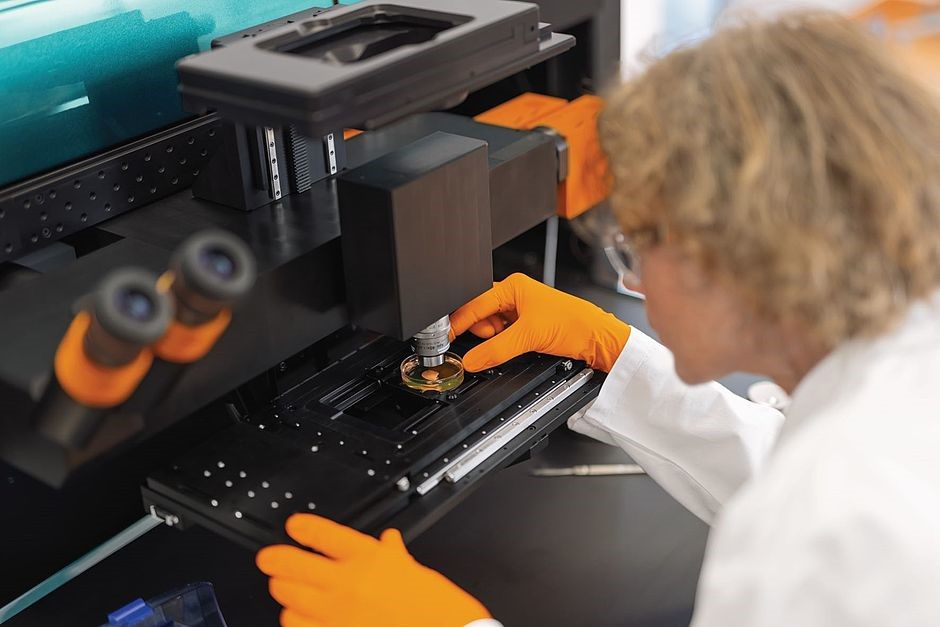 |
| Forschende arbeiten an der neuartigen QEED-Mikroskopie für eine quantenbasierte Krebs-Frühdiagnostik. Bild: LaVision BioTec GmbH |
Quantentechnologien versprechen eine Vielzahl völlig neuartiger Anwendungen. Neben Quantencomputern gehören vor allem die Quantensensorik und die Quantenkommunikation zu den Bereichen der Quantentechnologie, in denen die ersten auch kommerziell erfolgreichen Produktentwicklungen erwartet werden. Das Bundesministerium für Bildung und Forschung fördert nun die Humboldt-Universität Berlin (HU) in zwei neuen Verbundprojekten im Bereich der Quantentechnologien.
Das erste geförderte Projekt - QEED - beschäftigt sich mit der Quantensensorik mit verschränkten Photonen – und zwar für Anwendungen in der medizinischen Forschung und Krebsdiagnostik. Der als BMBF-„Leuchtturm-Projekt“ für 5 Jahre geförderte Verbund (Projektvolumen: 11,9 Mio. Euro; HUB: 1,7 Mio Euro) wird dabei gemeinsam ein sehr leistungsfähiges Mikroskop entwickeln, das im mittleren Infrarot (MIR) arbeiten kann. Um dafür Messinformationen aus dem klinisch sehr relevanten MIR in das besonders schnell und rauscharm detektierbare nahe Infrarot (NIR) zu übertragen, wird ein neuartiges, spektral auflösendes Bildgebungsverfahren basierend auf verschränkten Photonenpaaren verwendet.
In der Gruppe „Nichtlineare Quantenoptik“ am Institut für Physik und dem IRIS Adlershof, der HU, geleitet von Dr. Sven Ramelow, der auch als wissenschaftlicher Direktor des Gesamtverbundes fungiert, werden die Hochleistungs-Quanteninterferometer-Modulen entwickelt und die dem Verbundprojekt zugrunde liegenden quantensensorischen Messverfahren optimiert. Die Kerninnovation dabei ist die signifikante Erhöhung der Rate der erzeugten verschränkten Photonenpaare, sowie die deutliche Erweiterung des MIR-Messbereichs im Vergleich zum Stand der Forschung.
Unter den insgesamt 10 Projektpartnern befinden sich fünf Forschungseinrichtungen - darunter drei aus Berlin: das FBH-Berlin, die Charité-Universitätsmedizin Berlin, und die HU-Berlin. Auch fünf Unternehmenspartner sind Teil des Teams und werden neben ihrer Arbeit im Projekt nach Projektabschluss, eine Kommerzialisierung des Mikroskops und dessen Komponenten vorantreiben. Das Projekt ist am 01.01.23 offiziell gestartet.
Im zweiten geförderten Verbundprojekt „Hochleistungsfähige Lichtquellen für die Quantenkommunikation“ – MIHQU (Projektvolumen: 5,3 Mio. Euro; HU: 1,4 Mio Euro) geht es um die Quantenkommunikation, einen wichtigen Baustein für die künftige Sicherheit digitaler Infrastrukturen in unserer Gesellschaft. In der Quantenkommunikation basiert der Austausch kryptografischer Schlüssel auf grundlegenden physikalischen Gesetzen, wodurch die Sicherheit, im Gegensatz zu derzeit verwendeter Verschlüsselung, grundlegend gewährleistet bleibt - auch bei Angriffen durch neuartige, bisher unbekannte Algorithmen oder durch leistungsstarke Quantencomputer.
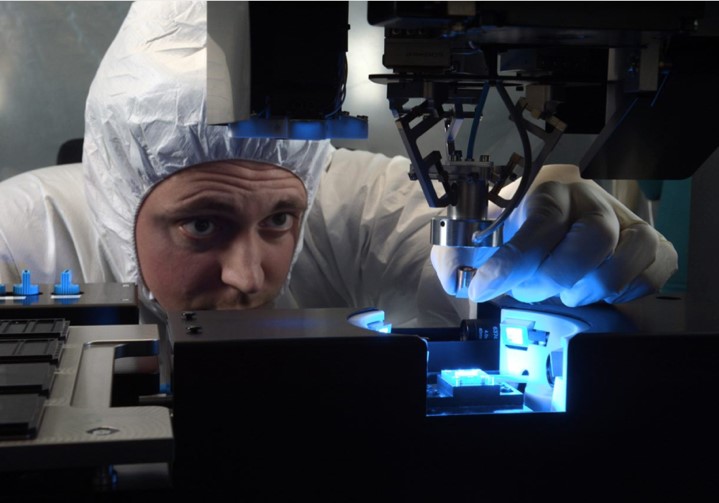 |
| Bild: AIXEMTEC GmbH, Herzogenrath |
Ziel des Projektes ist es, dafür Quellen für Photonenpaare so zu miniaturisieren, dass deren reproduzierbare industrielle Herstellung in Kleinserie etabliert werden kann. An der Humboldt-Universität arbeitet die Gruppe „Nichtlineare Quantenoptik“ hauptsächlich an der Entwicklung von Funktionsmodellen der Quellen als Grundlage der darauffolgenden Integration.
Zu den fünf Projektpartnern gehören neben der HU Berlin (Dr. Sven Ramelow mit seiner Gruppe „Nichtlineare Quantenoptik“) das Deutsche Zentrum für Luft- und Raumfahrt e.V., Berlin in Person von Prof. Janik Wolters, der das Projekt koordinieren wird, die Technische Universität Berlin, sowie zwei Firmenpartner – die son-x GmbH, Aachen und die AIXEMTEC GmbH, Herzogenrath. Das Projekt startete am 01.03.2023.
Projektsteckbrief QEEDProjektsteckbrief MIHQU
Infobox: Nichtlineare Interferometer mit verschränkten Photonen
Spontane parametrische Fluoreszenz (spontaneous parametric down-conversion, SPDC) in nichtlinear-optischen Kristallen ist ein Standard-Prozess zur Erzeugung korrelierter bzw. verschränkter Photonenpaare für die Quantenkommunikation, quantenunterstützte Bildgebung oder Quantensensorik. Benutzt man nun zwei identische SPDC Prozesse, die kohärent gepumpt werden, und überlagert die Emissionen, so kann man gleichzeitige, identische Interferenzen für beide Photonen eines Paares – die sogenannten Signal- und Idlerphotonen – beobachten. Ein solcher Aufbau wie in der Abbildung unten dargestellt stellt ein solches sogenanntes „nichtlineares Interferometer“ dar. (Chekhova, Ou, “Nonlinear interferometers in quantum optics“, AOP 8, 1, 104 (2016)).
Schema eines nichtlinearen Interferometers, hier in Mach-Zehnder-Konfiguration
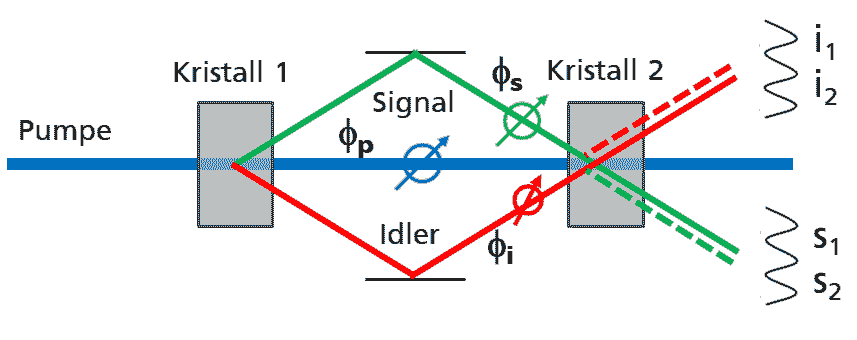 Wesentlich dabei ist, dass die verschränkten Photonenpaare als ein einziges Quantenobjekt interferieren! Damit wirkt sich eine Phase (oder Absorption) der Idlerphotonen als Interferenzsignal auch bei den Signalphotonen aus (und umgekehrt). Das Interferenzmuster – also dessen Phasenlage und Kontrast - hängt also von den Transmissionskoeffizienten von Pumpstrahlung, Idler und Signalphotonen sowie von der Gesamt-Phasendifferenz (ϕs+ ϕi - ϕp) ab, die alle drei Wellen im Interferometer akkumuliert haben. Insbesondere lassen sich damit also Phase und Absorptionen des Idlers alleinig durch Messung der Signalphotonen bestimmen. Dieser Effekt wird als „Messung mit nicht-detektierten Photonen“ bezeichnet, da die eigentlich „messenden“ Idler-Photonen niemals selbst gemessen werden müssen. Erzeugt man Photonenpaare nun mit großer Wellenlängenspreizung (z.B. Signal im Sichtbaren, Idler im mittleren Infrarot), so kann die von den Idlerphotonen aufgenommene spektrale Information (Absorption, Dispersion) durch die Messung der wellenlängenabhängigen Interferenz im Signal mit einem Siliziumdetektor registriert werden. Diese sind ganz besonders leistungsfähig und rauscharm und ermöglichen dadurch eine Vielzahl von sehr praktischen Anwendungen dieses Messprinzips.
Wesentlich dabei ist, dass die verschränkten Photonenpaare als ein einziges Quantenobjekt interferieren! Damit wirkt sich eine Phase (oder Absorption) der Idlerphotonen als Interferenzsignal auch bei den Signalphotonen aus (und umgekehrt). Das Interferenzmuster – also dessen Phasenlage und Kontrast - hängt also von den Transmissionskoeffizienten von Pumpstrahlung, Idler und Signalphotonen sowie von der Gesamt-Phasendifferenz (ϕs+ ϕi - ϕp) ab, die alle drei Wellen im Interferometer akkumuliert haben. Insbesondere lassen sich damit also Phase und Absorptionen des Idlers alleinig durch Messung der Signalphotonen bestimmen. Dieser Effekt wird als „Messung mit nicht-detektierten Photonen“ bezeichnet, da die eigentlich „messenden“ Idler-Photonen niemals selbst gemessen werden müssen. Erzeugt man Photonenpaare nun mit großer Wellenlängenspreizung (z.B. Signal im Sichtbaren, Idler im mittleren Infrarot), so kann die von den Idlerphotonen aufgenommene spektrale Information (Absorption, Dispersion) durch die Messung der wellenlängenabhängigen Interferenz im Signal mit einem Siliziumdetektor registriert werden. Diese sind ganz besonders leistungsfähig und rauscharm und ermöglichen dadurch eine Vielzahl von sehr praktischen Anwendungen dieses Messprinzips.
Dr. Sven Ramelow
Leiter der Gruppe "Nichtlineare Quantenoptik" am
Institut für Physik und IRIS Adlershof der Humboldt-Universität zu Berlin
Tel.: 030 2093-7799
sven.ramelowphysik.hu-berlin.de
02.03.2023Reges Interesse beim zweiten IRIS-Junior-Frühstück
Heute konnten sich die IRIS-Nachwuchswissenschaftler wieder bei einem Frühstück mit Kaffee und Tee, Obst und saftigen Bagels zu wissenschaftlichen und weiteren interessierenden Themen austauschen und sich näher kennenlernen. Dazu trafen sie sich im gemütlich eingerichteten Common Room im IRIS-Haus 1. Nach einigen appetitanregenden Kurzvorträgen gab es Laborführungen durch den IRIS-Forschungsbau zum Thema Materialwissenschaften, insbesondere Photovoltaik und OLED. Aufgrund des großen Interesses wurden die Wissenschaftler in drei Gruppen aufgeteilt und diese separat durch die Labore geführt. Wissenschaftler aus den Gruppen von Prof. Koch und Prof. List-Kratochvil zeigten ihre Arbeitsplätze und erklärten ihre Experimente. Die Teilnehmer aus HZB, WIAS und den Instituten für Physik und Chemie konnten die Instrumente sehen und verstehen, wie sie funktionieren.
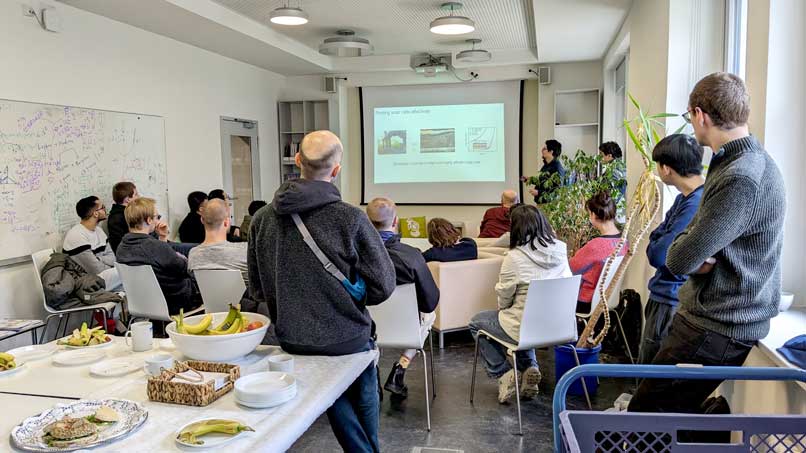
Dr. Edgar Nandayapa gibt eine Einführung in die HyD-Gruppe und und das Drucken von Solarzellen.
Wir bedanken uns bei Pablo und Laura, die das Ganze wieder organisiert haben!
24.02.2023xolo GmbH als erstes Investment des 'Deep Tech & Climate Fonds' ausgewählt
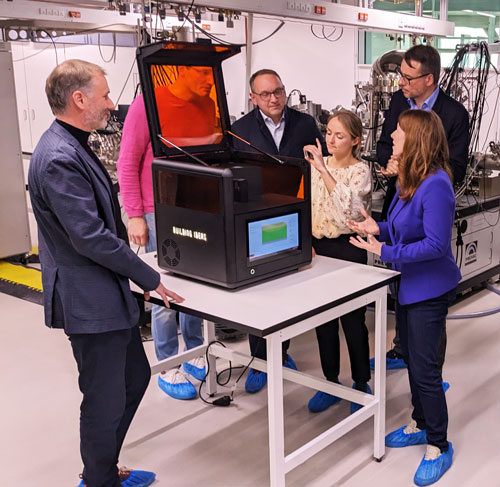 |
| V.l.n.r.: Dirk Radzinski (CEO, xolo), Prof. Stefan Hecht (CSO, xolo), Frank Cartsen Herzog (HZG Group), Dr. Elisabeth Schrey (DeepTech & Climate Fonds), Tobias Faupel (DeepTech & Climate Fonds), Dr. Anna Christmann (Bundesministerium Wirtschaft und Klimaschutz) |
Das Berliner Unternehmen xolo wurde 2019 von IRIS Adlershof-Mitglied Stefan Hecht, Martin Regehly und Dirk Radzinski in Berlin gegründet und hat mit der Xolographie eine neuartige volumetrische 3D-Drucktechnologie entwickelt, die schnell druckt und sehr glatte Oberflächen produziert. Die Xolographie nutzt zwei Lichtstrahlen mit unterschiedlichen Wellenlängen, die im Harz aufeinandertreffen und es zum gewünschten Material erhärten. Dadurch ist eine Auflösung von wenigen Mikrometern möglich. Das Verfahren ist dazu um ein Vielfaches schneller als bisherige Methoden und ermöglicht das Drucken von zentimetergroßen Objekten in wenigen Sekunden statt wie bisher in mehreren Stunden. Das Drucken wird dadurch günstiger und potenziell lohnender für Massenanfertigungen. Es ist außerdem nicht auf formgebende Stützstrukturen angewiesen und ermöglicht die Verwendung von Materialien, die bisher nicht für den 3D-Druck geeignet waren.
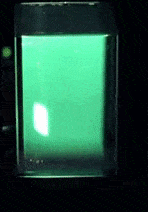 |
| xolo Aneurisma Print Source: xolo, youtube |
Xolo hat nun acht Millionen Euro von Deep Tech & Climate Fonds (DTCF), HZG Group, Onsight Ventures und Square One erhalten, um den Übergang zur Nutzung im industriellen Maßstab zu ermöglichen. Die ersten 10 Geräte wurde gezielt an Foschungsinstitute ausgeliefert, um verschiedene Anwendungsfelder zu testen, so z.B. in der Medizintechnik bei der Reproduktion von Organen oder in der Optik bei der Herstellung von Hochpräzisionslinsen.
Die Investition soll der Xolographie zum Durchbruch verhelfen und den Insustrie- und Forschungsstandort Deutschland stärken.
16.02.2023Kanadische Delegation zu Besuch am IRIS Adlershof
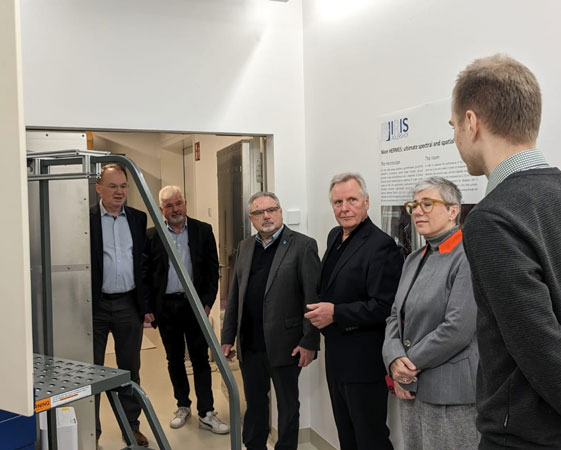 |
|
v.l.n.r.: Prof. Jürgen P. Rabe, Dr. Nikolai Puhlmann, Prof. Fred Wrona, Dr. Helge Neumann, Ms. Natalka Cmoc, Dr. Johannes Müller
|
Um sich zu darüber informieren, wie sich das IRIS Adlershof erfolgreich mit anderen Instituten und Unternehmen am Wissenschaftsstandort Berlin Adlershof vernetzt, besuchte uns heute eine Delegation aus Kanada. IRIS-Direktor Prof. Jürgen P. Rabe gab einen kurzen Einblick in das Institut, im Anschluß berichtete Dr. Helge Neumann von der WISTA über den Wissenschaftsstandort Adlershof. Es folgte eine Führung durch das Foschungsgebäude. Dr. Felix Hermerschmidt zeigte das Verbundlabor mit dem beeindruckenden Glovebox-Cluster, darauf folgte eine Erklärung des NION-TEMs mit seiner atomaren Auflösung durch Johannes Müller und eine Tour über den Campus.
Ms. Natalka Cmoc, die Generaldirektorin für Wissenschaft & Strategie des Public Services & Procurement Canada, war sichtlich beeindruckt, und auch Prof. Dr. Fred Wrona (Universität Calgary, Kanada) zeigte sich höchst interessiert und lobte die vielfältigen Möglichkeiten, die der naturwissenschaftlichen Spitzenforschung am IRIS Adlershof geboten werden.
14.02.2023Dissertationspreis Adlershof für 2023 geht an Dr. Jannes Münchmeyer
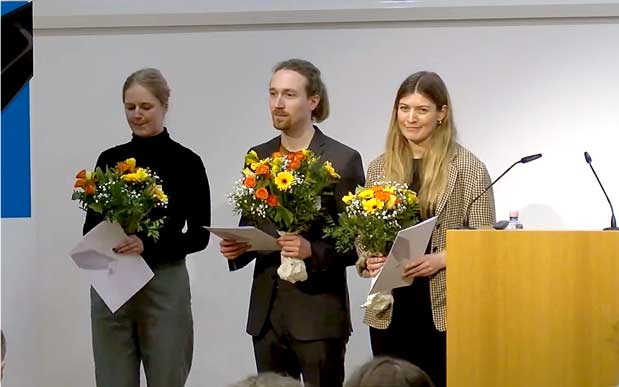 |
| v.l.n.r: Dr. Dominique Lungwitz, Dr. Jannes Münchmeyer, Dr. Julia Baum |
Am 14. Februar 2023 wurde zum 21. Mal in Folge der Dissertationspreis Adlershof verliehen. Herr Dr. Jannes Münchmeyer erhielt den mit 3.000 Euro dotierten Preis, der jährlich gemeinsam von dem Forschungsnetzwerk IGAFA e. V., der Humboldt-Universität zu Berlin und der WISTA Management GmbH gestiftet und organisiert wird.
Erdbebenfrühwarnung ist ein essentieller Schritt zur Vermeidung großer Schäden: Zwischen dem Beginn eines Bebens und dem Auftreten starker Erschütterungen liegen oft wertvolle Sekunden, um Schutzmaßnahmen zu ergreifen. Doch wie früh sind Warnungen möglich und wo setzen die Physik und die natürliche Stochastizität von Erdbeben uns Grenzen? Dr. Jannes Münchmeyer zeigte in seiner Doktorarbeit, wie Künstliche Intelligenz helfen kann, diese Fragen zu beantworten und welche Auswirkungen seine Ergebnisse auf den Umgang mit Erdbebenrisiken haben können. Er wurde von IRIS-Mitglied Ulf Leser betreut.
Zwei weitere herausragende Forscherinnen haben es in die Endauswahl geschafft: Dr. Dominique Lungwitz (Humboldt-Universität zu Berlin) befasste sich in ihrer Doktorarbeit in der Arbeitsgruppe von Prof. Norbert Koch, Mitglied von IRIS Adlershof, mit „Polymere Halbleiter für die Zukunft: Auf dem Weg zu effizienten und kostengünstigen OLEDs und Solarzellen“ und Dr. Julia Baum (Humboldt-Universität Berlin) untersuchte in ihrer Dissertation „Üble Nachrede bleibt hängen: Wie „Fake News“ unsere Urteile beeinflussen“. Beide erhielten für ihre Nominierung ein Preisgeld von 1.000 Euro.
IRIS Adlershof gratuliert ganz herzlich zu diesem wunderbaren Erfolg!
18.01.2023Stefan Hechts Visionen des CSMB im Adlershof Journal
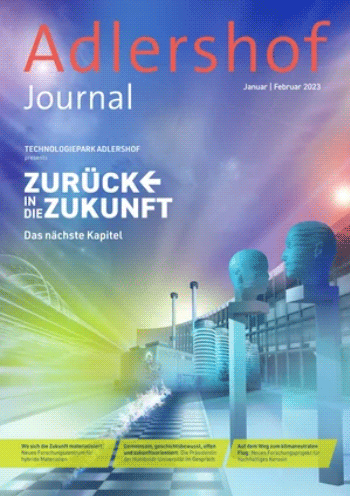 Chemieprofessor und CSMB-Gründungsdirektor Stefan Hecht ist sich sicher: „Viele globale Herausforderungen im Zusammenhang mit einer nachhaltigen Ressourcennutzung lassen sich nur durch Innovation im Bereich der Materialwissenschaften meistern.“ Das Mitglied von IRIS Adlershof erhofft sich dabei eine erfolgreiche interdisziplinäre Zusammenarbeit mit anderen universitären wie außeruniversitären Einrichtungen. Mit welchen Methoden er die Materialforschung vorantreiben will, erklärt er in der neuen Ausgabe des Adlershof Journals.
Chemieprofessor und CSMB-Gründungsdirektor Stefan Hecht ist sich sicher: „Viele globale Herausforderungen im Zusammenhang mit einer nachhaltigen Ressourcennutzung lassen sich nur durch Innovation im Bereich der Materialwissenschaften meistern.“ Das Mitglied von IRIS Adlershof erhofft sich dabei eine erfolgreiche interdisziplinäre Zusammenarbeit mit anderen universitären wie außeruniversitären Einrichtungen. Mit welchen Methoden er die Materialforschung vorantreiben will, erklärt er in der neuen Ausgabe des Adlershof Journals.
zum Artikel...
12.01.2023Dehnung eines gespannten 2D-Halbleiters führt zur Hybridisierung verschiedener Energiezustände und ermöglicht die Emission einzelner Photonen
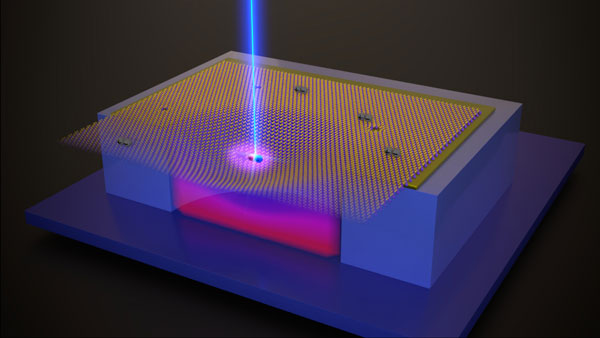 Durch die kontrollierte Dehnungen von WSe2-Membranen konnten Dr. Sebastian Heeg und seine Kollegen die verschiedenen Arten von Exzitonen anhand ihrer energetischen Abhängigkeit von der Dehnung charakterisieren. Bei bestimmten Dehnungsniveaus wurden dehnungsunabhängige Defektzustände und dehnungsabhängige dunkle Exzitonen energetisch degeneriert und ihre Photolumineszenzintensität nahm um eine Größenordnung zu. Weitere Beweise für die Hybridisierung des Zustands, wie z. B. vermiedene Energieverschiebungen und die Abstimmbarkeit der zur Auslösung der Hybridisierung erforderlichen Dehnung bei der Temperatur, wurden ebenfalls gezeigt. "Die hohe Abstimmbarkeit des hybridisierten Zustands, die durch unsere Bauelementarchitektur ermöglicht wird, ist wahrscheinlich der Schlüssel für den Betrieb von Einzelquantenemittern in WSe2", betont Pablo Hernández López, Doktorand in der Gruppe von Dr. Heeg und Mitautor der Arbeit. "Andererseits öffnet die Charakterisierung und Abstimmung der Energiehierarchie der Exzitonen, die in suspendierten Materialien vorhanden sind, mit unserem Ansatz der elektrostatischen Dehnung die Tür für weitere spannende Entdeckungen in der Zukunft".
Durch die kontrollierte Dehnungen von WSe2-Membranen konnten Dr. Sebastian Heeg und seine Kollegen die verschiedenen Arten von Exzitonen anhand ihrer energetischen Abhängigkeit von der Dehnung charakterisieren. Bei bestimmten Dehnungsniveaus wurden dehnungsunabhängige Defektzustände und dehnungsabhängige dunkle Exzitonen energetisch degeneriert und ihre Photolumineszenzintensität nahm um eine Größenordnung zu. Weitere Beweise für die Hybridisierung des Zustands, wie z. B. vermiedene Energieverschiebungen und die Abstimmbarkeit der zur Auslösung der Hybridisierung erforderlichen Dehnung bei der Temperatur, wurden ebenfalls gezeigt. "Die hohe Abstimmbarkeit des hybridisierten Zustands, die durch unsere Bauelementarchitektur ermöglicht wird, ist wahrscheinlich der Schlüssel für den Betrieb von Einzelquantenemittern in WSe2", betont Pablo Hernández López, Doktorand in der Gruppe von Dr. Heeg und Mitautor der Arbeit. "Andererseits öffnet die Charakterisierung und Abstimmung der Energiehierarchie der Exzitonen, die in suspendierten Materialien vorhanden sind, mit unserem Ansatz der elektrostatischen Dehnung die Tür für weitere spannende Entdeckungen in der Zukunft".
mehr...
Strain control of hybridization between dark and localized excitons in a 2D semiconductor
P. Hernández López, S. Heeg, C. Schattauer, S. Kovalchuk, A. Kumar, D.J. Bock, J.N. Kirchhof, B. Hoefer, K. Greben, D. Yagodkin, L. Linhart, F. Libisch, K.I. Bolotin
Nature Communications, 13, 7691 (2022) OPEN ACCESS
ACCESS
DOI: 10.1038/s41467-022-35352-9
16.12.2022Prof. Michael Hintermüller zum Sprecher des Exzellenzclusters Math+ gewählt
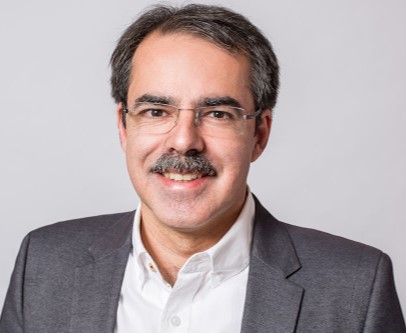 Am 18. November fand der alljährliche MATH+ Day 2022 mit über 100 Teilnehmern statt. Die Mitgliederversammlung wählte Prof. Michael Hintermüller, Mitglied von IRIS Adlershof, für die nächsten zwei Jahre zum Sprecher. Der bisherige Co-Sprecher Hintermüller rochiert so mit Prof. Christof Schütte. Zu den weiteren neu gewählten Vorstandsmitgliedern gehört außerdem Prof. Holger Reich als neuer Sprecher der Berlin Mathematickl School (BMS), der das IRIS-Mitglied Prof. Jürg Kramer in dieser Funktion ablöst. Herzliche Glückwünsche!
Am 18. November fand der alljährliche MATH+ Day 2022 mit über 100 Teilnehmern statt. Die Mitgliederversammlung wählte Prof. Michael Hintermüller, Mitglied von IRIS Adlershof, für die nächsten zwei Jahre zum Sprecher. Der bisherige Co-Sprecher Hintermüller rochiert so mit Prof. Christof Schütte. Zu den weiteren neu gewählten Vorstandsmitgliedern gehört außerdem Prof. Holger Reich als neuer Sprecher der Berlin Mathematickl School (BMS), der das IRIS-Mitglied Prof. Jürg Kramer in dieser Funktion ablöst. Herzliche Glückwünsche!
mehr...
13.12.2022Weihnachtsfeier des IRIS-Nachwuchses
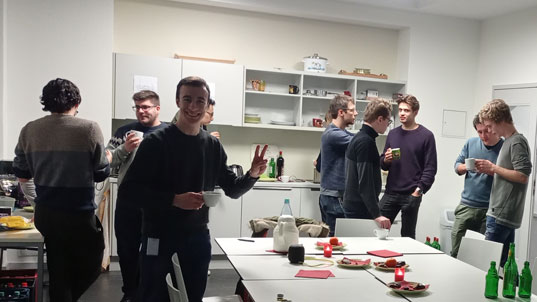 Am 13.12. feierten die Nachwuchswissenschaftler des IRIS Adlershof eine kleine Weihnachtsfeier in einem Gemeinschaftsraum im IRIS-Forschungsbau. Dem Anlass entsprechend wurden ihnen wissenschaftliche Quiz-Fragen in Bezug auf Weihnachten gestellt, sodass sich viele interessante Gespräche ergaben. Die weihnachtliche Musik durfte dabei natürlich auch nicht fehlen. Mit Stollen und Glühwein zur Stärkung feierten sie so die Weihnachtszeit und teilten ihre Liebe zur Wissenschaft mit ihren Kollegen und Freunden.
Am 13.12. feierten die Nachwuchswissenschaftler des IRIS Adlershof eine kleine Weihnachtsfeier in einem Gemeinschaftsraum im IRIS-Forschungsbau. Dem Anlass entsprechend wurden ihnen wissenschaftliche Quiz-Fragen in Bezug auf Weihnachten gestellt, sodass sich viele interessante Gespräche ergaben. Die weihnachtliche Musik durfte dabei natürlich auch nicht fehlen. Mit Stollen und Glühwein zur Stärkung feierten sie so die Weihnachtszeit und teilten ihre Liebe zur Wissenschaft mit ihren Kollegen und Freunden.
24.11.2022Erstes IRIS-Junior-Frühstück mit anschließender Laborführung
Am 21. November 2022 trafen sich die IRIS-Nachwuchswissenschaftler zu einem Frühstück und einer Laborführung mit dem Schwerpunkt Quantenoptik.
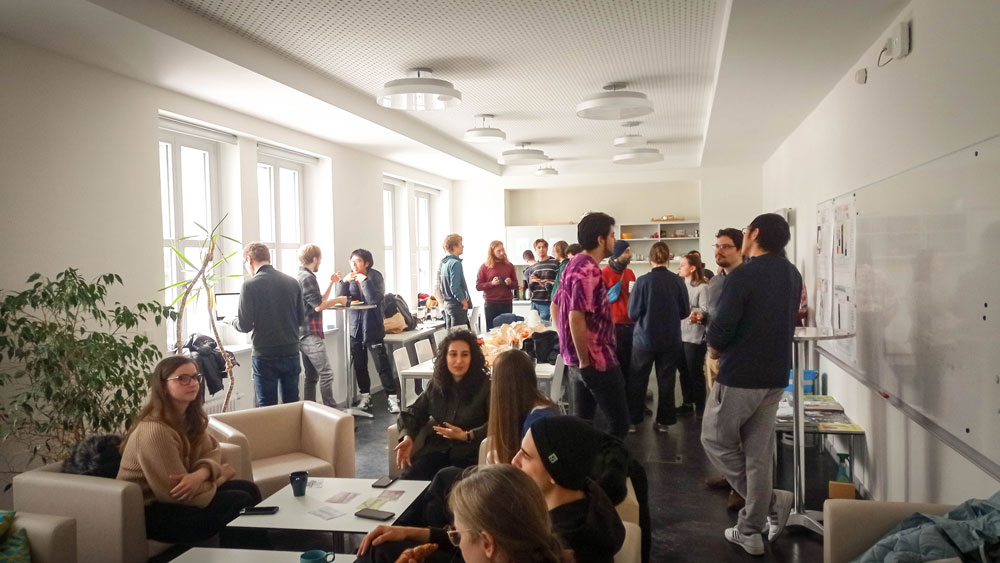
Pablo Hernández López, Nachwuchsvertreter und Organisator, erklärt: „Unsere Kollegen Elisa & Martin (AG Markus Krutzik) und Julian & Jonas (AG Tim Schröder) zeigten ihre Labore und stellten ihre Forschungsgebiete vor. Diese Veranstaltung war die erste einer Reihe von Laborführungen, die im nächsten Jahr fortgesetzt wird.
Vielen Dank an die Referenten und an alle, die gekommen sind. Es war großartig, so viele nette Kollegen kennenzulernen und einen Einblick in andere interessante Forschungsthemen am IRIS Adlershof zu gewinnen."
22.11.2022Humboldt-ProMINT-Kolleg erfolgreich in der Ausschreibung Interdisziplinäre Zentren der Humboldt-Universität zu Berlin
 Das Humboldt-ProMINT-Kolleg wird ab 2023 ein Interdisziplinäres Zentrum der Humboldt-Universität zu Berlin.
Das Humboldt-ProMINT-Kolleg wird ab 2023 ein Interdisziplinäres Zentrum der Humboldt-Universität zu Berlin.
Ziel des Interdisziplinären Zentrums Humboldt-ProMINT-Kolleg ist die exzellente Erforschung von Prozessen der wissenschaftlichen Erkenntnisgewinnung in der MINT-Lehrkräftebildung an der Humboldt-Universität zu Berlin. Dabei stellen die Mitglieder des Kollegs die Themen „Technologiegestütztes Lehren und Lernen“, „Messprozesse und Umgang mit Daten“, „Problemlösen“ sowie „Modelle und Modellierungsprozesse“ in das Zentrum ihrer Arbeit.
Zukünftig widmet sich das IZ ProMINT-Kolleg der Stärkung der fachdidaktischen Forschung durch die Intensivierung der internationalen Forschungskooperationen, der Vernetzung von Fachdidaktik und Fachwissenschaft durch Innovation und Transfer sowie der Verbreitung von wissenschaftlichen Forschungsergebnissen durch Third Mission und Wissenschaftskommunikation.
Es schließt damit an seine über die Jahre gewachsene Struktur als ProMINT-Kolleg und sein Renommee innerhalb und außerhalb der Universität an und überführt dies in die sichtbareren, effizienteren und nachhaltigeren Strukturen eines interdisziplinären Zentrums.
Das Humboldt-ProMINT-Kolleg wurde 2010 auf Initiative der MINT-Fachdidaktiker*innen der HU und mit Unterstützung der Deutsche Telekom Stiftung gegründet. Ein zentrales Anliegen des Kollegs ist es seitdem, die wissenschaftliche Fundierung der MINT-Lehrkräftebildung inhaltlich und strukturell als eines der zentralen Tätigkeitsfelder an der HU auf- und auszubauen. Zwölf Jahre nach seiner Gründung gehört das Humboldt-ProMINT-Kolleg zu den wichtigsten und mit einem Drittmittelvolumen von ca. 2,7 Millionen Euro auch zu den erfolgreichsten Projekten der Lehrerbildung an der HU.
Weitere Informationen: https://www.promint.hu-berlin.de
27.10.2022Einstein-Professur für Chemiker Stefan Hecht stärkt Berliner Materialwissenschaften
Das Gründungsmitglied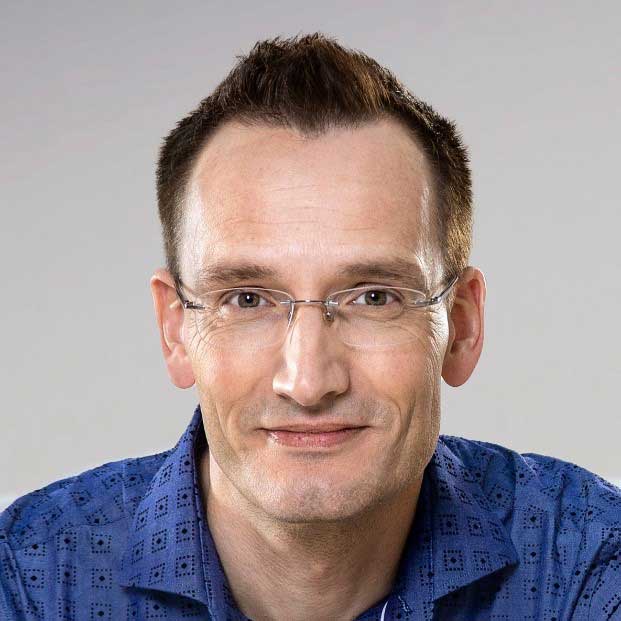 von IRIS Adlershof, Stefan Hecht, widmet sich zukünftig als Einstein-Professor der Herausforderung, neue Materialien mit verbesserten Eigenschaften zu entwickeln. Seit Oktober beschäftigen sich der Chemiker und sein Team mit der Entwicklung lichtgesteuerter molekularer Materialien und volumetrischer 3D-Druckverfahren (Xolographie) am Campus Adlershof. Insbesondere möchte er Materialentwicklungsprozesse beschleunigen: „Neben einem umfassenden Verständnis aller relevanten Parameter, bei dem uns künstliche Intelligenz sicherlich helfen kann, müssen wir vor allem anfangen zu lernen, evolutionäre Prinzipien zu nutzen. Dann wird sich das beste Material quasi von selbst durchsetzen.“
von IRIS Adlershof, Stefan Hecht, widmet sich zukünftig als Einstein-Professor der Herausforderung, neue Materialien mit verbesserten Eigenschaften zu entwickeln. Seit Oktober beschäftigen sich der Chemiker und sein Team mit der Entwicklung lichtgesteuerter molekularer Materialien und volumetrischer 3D-Druckverfahren (Xolographie) am Campus Adlershof. Insbesondere möchte er Materialentwicklungsprozesse beschleunigen: „Neben einem umfassenden Verständnis aller relevanten Parameter, bei dem uns künstliche Intelligenz sicherlich helfen kann, müssen wir vor allem anfangen zu lernen, evolutionäre Prinzipien zu nutzen. Dann wird sich das beste Material quasi von selbst durchsetzen.“
Neben diesem neuen wissenschaftlichen Schwerpunkt möchte Hecht vor allem die Berliner Forschung im Bereich der Materialwissenschaften weiter stärken und die insbesondere am Campus Adlershof vorhandenen Expertisen in einem neuen interdisziplinären Materialforschungszentrum bündeln. „Durch intensive disziplinen- und institutionenübergreifende Zusammenarbeit können noch viele Synergien im Berliner Forschungsraum gehoben werden“, so Hecht.
mehr...
27.10.2022Tandemsolarzellen mit Perowskit: Nanostrukturen helfen mehrfach
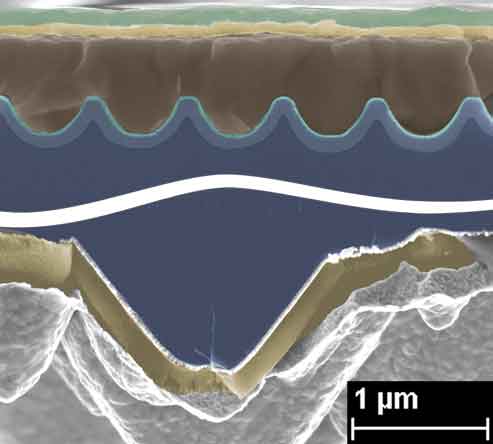
Tandemsolarzellen aus Perowskit und Silizium ermöglichen deutlich höhere Wirkungsgrade als Siliziumsolarzellen allein. Mehrere Arbeitsgruppen am HZB forschen daran, solche Tandemsolarzellen gezielt zu entwickeln und zu optimieren. Mit großem Erfolg, Tandemzellen aus dem HZB haben bereits mehrere Weltrekorde erreicht. Zuletzt erzielten HZB-Forschungsteams im November 2021 mit einer Tandemzelle aus Perowskit- und Silizium einen zertifizierten Wirkungsgrad von 29,8%. Dies war ein absoluter Weltrekord, der acht Monate ungeschlagen an der Spitze stand. Erst im Sommer 2022 ist es einem Schweizer Team an der EPFL gelungen, diesen Wert zu übertreffen.
An der Entwicklung der Rekord-Tandemzelle war unter anderem IRIS Adlershof-Mitglied Prof. Eva Unger beteiligt. Nun stellen die Wissenschaftler in Nature Nanotechnologie die Details vor. Die Zeitschrift lud sie darüber hinaus ein, ein so genanntes „Research Briefing“ zu verfassen, in dem sie ihre Arbeit kurz zusammenfassen und einen Ausblick auf künftige Entwicklungen geben.
„Unsere jeweiligen Kompetenzen ergänzen sich sehr gut“, erklärt Prof. Dr. Christiane Becker. Ihr Team hat eine nanooptische Texturierung in die Tandemzelle eingebracht: Eine sanft gewellte Nanotextur auf der Silizium-Oberfläche. „Überraschend war, dass diese Textur gleich mehrere Vorteile bringt“, betont Becker: „Die Nanotextur reduziert nicht nur wie erwartet die Reflexionsverluste, sondern führt auch noch dazu, dass sich der extrem dünne Film aus Perowskit deutlich regelmäßiger bildet.“ Außerdem reduziert eine dielektrische Pufferschicht auf der Rückseite des Siliziums die parasitäre Absorption bei Wellenlängen im nahen Infrarotbereich.
Als Fazit halten die Forschenden fest: Mit maßgeschneiderten Nanotexturen lassen sich überraschend vielseitige Verbesserungen erreichen. Diese Ergebnisse sind nicht nur für Tandemzellen aus Perowskit- und Silizium wertvoll, sondern auch für Leuchtdioden auf Perowskit-Basis.
P. Tockhorn, J. Sutter, A. Cruz, et al.
Nano-optical designs for high-efficiency monolithic perovskite–silicon tandem solar cells.
Nat. Nanotechnol. (2022). https://doi.org/10.1038/s41565-022-01228-8
25.10.2022Bundesforschungsministerin in Adlershof
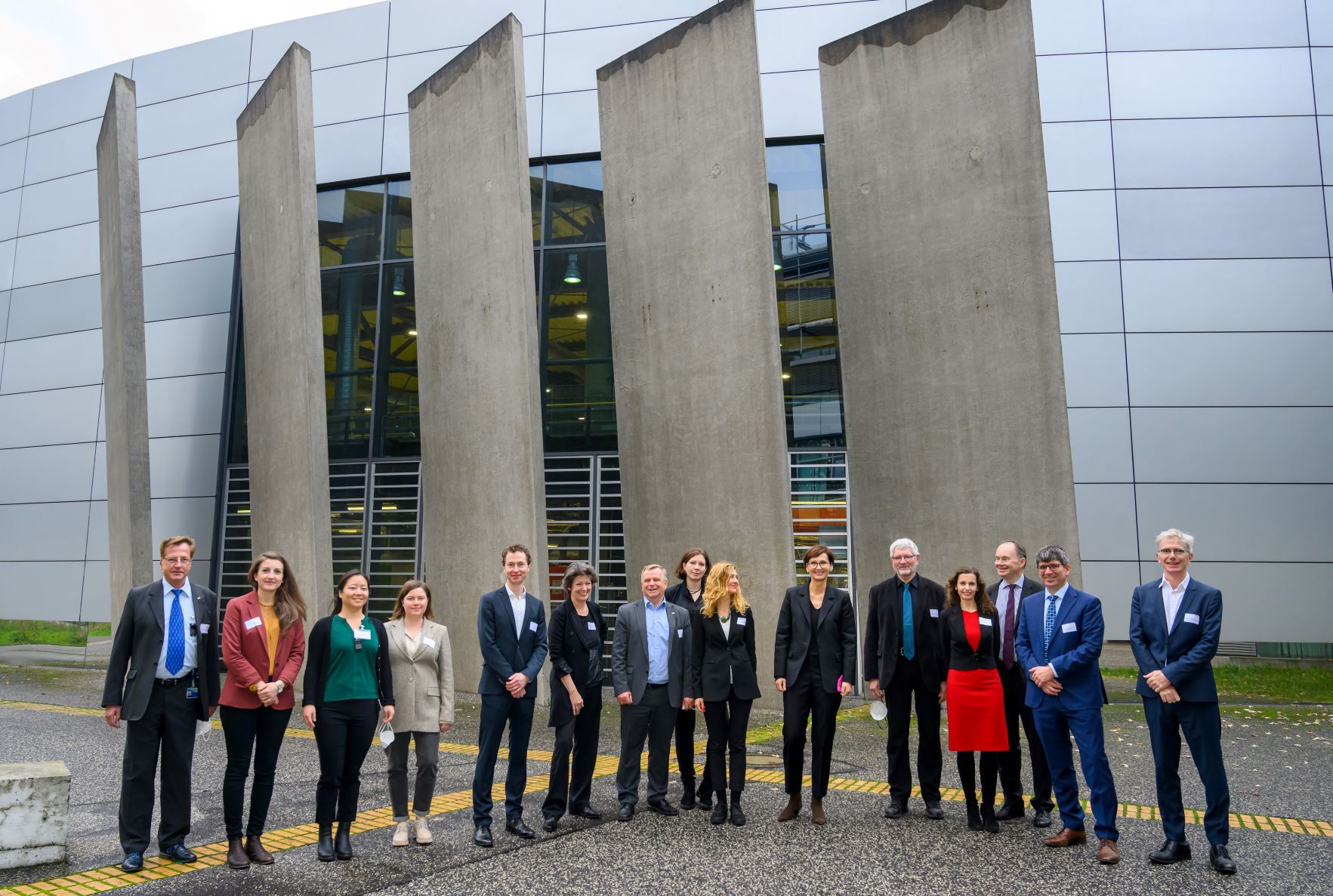
10.10.2022Interview mit Dr. Sven Ramelow zum Physiknobelpreis 2022
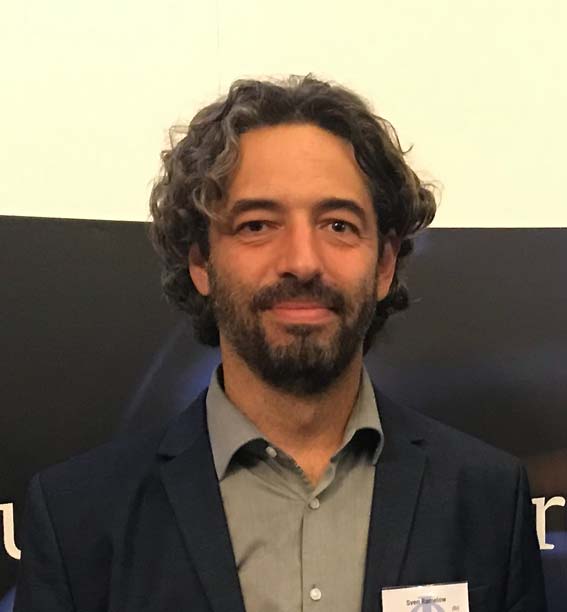 |
| Dr. Sven Ramelow |
Dr. Sven Ramelow leitet seit 2016 die Emmy Noether-Nachwuchsgruppe "Quanten-Bildgebung und Spektroskopie im Mittleren Infrarot". Zuvor hat er nach seinem Studium an der HU beim Ehrendoktor der HU, Prof. Anton Zeilinger, an der Universität Wien promoviert und als Post-Doc mit ihm an Experimenten zur Verletzung der Bellschen Ungleichung gearbeitet, für die unter anderem der diesjährige Physik-Nobelpreis verliehen wird. Weitere Stationen waren die University of Queensland (Brisbane, Australien) und die Cornell University (Ithaca, USA), bevor er zurück zur Humboldt-Universität kam. Er ist seit 2017 Mitglied von IRIS Adlershof.
Martin Bogner, IRIS Adlershof:
Lieber Herr Dr. Ramelow, der Nobelpreis in Physik 2022 wurde an Prof. Alain Aspect, Dr. John Clauser und Prof. Anton Zeilinger "für Experimente mit verschränkten Photonen, Nachweis der Verletzung der Bellschen Ungleichungen und Pionierarbeit in der Quanteninformationswissenschaft" vergeben. Hat es Sie überrascht, das Prof. Zeilinger den Nobelpreis erhalten hat?
Dr. Sven Ramelow: Jein. Es wurde ja seit über 10 Jahren immer wieder vermutet und man konnte online sogar darauf Wetten abschließen. Zu Recht! Aber wenn es dann tatsächlich passiert, ist das natürlich für den Moment eine sehr schöne, positive Überraschung.
Das Thema hört sich kompliziert an - was sind denn verschränkte Photonen und die Bellsche Ungleichung?
Wenn man die Eigenschaften von zwei verschränkte Photonen jeweils an verschiedenen, weit entfernten Orten misst, können die Ergebnisse für bestimmte Messeinstellungen immer gleich sein. Dies ist erst einmal auch nichts Besonderes. Es könnte ja einfach so sein, dass die Photonen einfach mit jeweils gleichen Eigenschaften erzeugt und danach nur verteilt wurden.
Die beiden Photonen hätten sich also bei der Entstehung als verschränkte Photonen entschieden, welches z.B. Spin up und welches Spin down erhält?
Genau, das könnte man so vermuten. Man bezeichnet diesen Erklärungsversuch als "lokale, versteckte Variablen" oder "lokalen Realismus". Und er deckt sich ja auch zu 100% mit unseren Alltagserfahrungen: Dinge hätten "an sich" Eigenschaften, die unabhängig davon sind, ob ich diese messe oder anschaue. Allerdings wurde in den 1960er Jahren durch John Bell eine Art von Experiment vorgeschlagen, mit dem man diese Art der Erklärung sicher ausschließen kann. Und genau solche Experimente - heute spricht man von Bell-Tests bzw. Verletzung der Bellschen Ungleichungen - wurden von allen 3 Preisträgern erfolgreich durchgeführt.
Worin liegen denn die praktischen Herausforderungen bei einem solchen Versuchsaufbau?
Zunächst einmal benötig man natürlich ein Quelle von verschränkten Photonen. Heutzutage sind solchen Quellen bereits (für andere Zwecke - z.B. Quantenkryptographie) kommerziell erhältlich, aber zum Zeitpunkt der Pionier-Arbeiten der 3 Preisträger mussten diese aufwendig konstruiert und aufgebaut werden. Dann müssen die einzelnen Photonen an zwei möglichst weit entfernten Orten möglichst effizient gemessen werden - eine große messtechnische Herausforderung. Und zuletzt müssen die Messwinkel sehr schnell und vor allem zufällig verändert, sowie die Daten sehr aufwendig statistisch analysiert werden.
Wo kann man mehr dazu erfahren?
Prof. Zeilinger hat dazu einige sehr gut erklärende Bücher geschrieben, die auch allgemeinverständlich sind. Zudem gibt es in jedem Sommersemester seit ein paar Jahren am Institut für Physik die Vorlesung "Advanced Optical Sciences", bei der es bei einem der 2-3 Hauptthemen immer um solche Bell-Experimente geht.
Arbeiten Sie in Ihrer Nachwuchsgruppe auch an verschränkten Photonen?
Ich würde eher sagen wir arbeiten MIT verschränkten Photonen. Im Moment versuchen wir diese für bestimmte neue Anwendungen und sogar mögliche Produkte im Bereich der Mikroskopie und Spektroskopie nutzbar zu machen. Zum Beispiel arbeiten wir an einem Gerät für die Erkennung vom Mikroplastik-Partikeln in Abwasser, sowie einer neuen Art von Mikroskop für die Krebsdiagnostik. Die Grundlagenforschung dafür wurde übrigens erst 2014 in der Arbeitsgruppe von Prof. Zeilinger gemacht - damals noch ohne jegliche Absicht einer möglichen Anwendung, sondern wirklich aus reiner Neugier.
Ab wann schätzen Sie werde ich mit meinem Handy quantenverschlüsselte Textnachrichten verschicken?
Ich glaube nicht, dass das eine Anwendung von Quantenverschlüsselung sein wird. Aber vielleicht wird es in den nächste 5-10 Jahren andere geben - in Bereichen wo extreme Datensicherheit erforderlich ist.
Vielen Dank für das interessante Gespräch!
09.10.2022Ist die Welt noch zu retten? - Prof. Dr. Eva Unger im "Köpfe der Nachhaltigkeit"-Interview
Welche Ideen Forscher:innen für eine nachhaltige Zukunft haben, stellt das Nachhaltigkeitsportal humboldts17 in der Reihe „Köpfe der Nachhaltigkeit“ vor.
In der fünften Folge wurde Prof. Dr. Eva Unger, Mitglied von IRIS Adlershof, vorgestellt. Sie untersucht und entwickelt sogenannte Perowskit-Halbleiter, die in Solarzellen eingesetzt werden können und aus Sonnenlicht Strom produzieren und gibt Antworten auf die Frage:
„Wie können wir als Wissenschaftlerinnen und Wissenschaftler dabei mithelfen, dass Prozesse und Technologien schneller in die Anwendung kommen?“
05.10.2022Spitzen-Arbeitsbedingungen für die Spitzenforschung: Feierliche Eröffnung des IRIS-Forschungsbaus
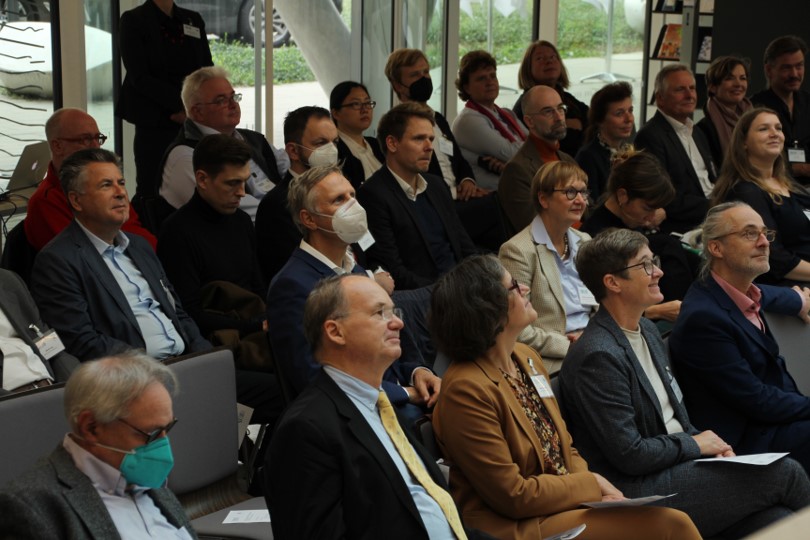
Auf dem Campus Adlershof wurde der hochinstallierte IRIS‑Forschungsbau, gemeinsam finanziert von Bund, Land und Humboldt-Universität, während der Pandemie fertig gestellt und bezogen. Das Gebäude ist heute im Beisein der Senatorin für Wissenschaft, Gesundheit, Pflege und Gleichstellung und von HU-Präsidentin Julia von Blumenthal feierlich eröffnet worden. Der Forschungsbau ist Sitz des IRIS Adlershof und bietet mit Labor-, Büro- und Kommunikationsflächen auf rund 4.500 Quadratmetern optimale Bedingungen für die Zusammenarbeit von Arbeitsgruppen aus Physik und Chemie der Humboldt-Universität sowie mit Kooperationspartnern aus außeruniversitären Forschungsinstitutionen und der Wirtschaft.
Wissenschaftssenatorin Ulrike Gote erklärt: „Der hochmoderne Forschungsbau liegt inmitten von zahlreichen Instituten und Unternehmen im Wissenschafts- und Technologiepark Adlershof. In dieser Lage und mit seinen weitläufigen Laborbereichen bietet er den rund 160 Mitarbeiterinnen und Mitarbeitern optimale Bedingungen für die Forschung und Entwicklung hybrider Systeme für Elektronik, Optoelektronik und Photonik. Der Forschungsbau ist ein wichtiger Baustein für die herausragende Wissenschafts- und Forschungslandschaft Berlins.“
„Der IRIS-Forschungsbau stellt eine herrausragende Verbesserung der Forschungsinfrastruktur auf dem Campus Adlershof und eine große Bereicherung für Wissenschaftlerinnen und Wissenschaftler, Studierende, sowie für unsere Partner am Standort Berlin-Adlershof dar“, sagt HU-Präsidentin Julia von Blumenthal anlässlich der Eröffnung.
„Durch die integrative Architektur mit Verbund- wie Speziallaboren werden physikalische, chemische, material- und ingenieurswissenschaftliche, sowie IT- und AI-Methoden hier zusammengeführt. Davon erhoffen sich alle Beteiligten vor Ort, wie auch unsere strategischen internationalen Kooperationspartner erhebliche Innovationsschübe“, sagt Prof. Dr. Jürgen P. Rabe, langjähriger Direktor des IRIS Adlershof.
Im IRIS-Forschungsbau lernen und forschen Mitarbeiterinnen und Mitarbeiter unterschiedlicher Disziplinen zusammen an der Entwicklung neuartiger hybrider Materialien. Hybrid bedeutet dabei, dass etwa anorganische Halbleitermaterialien mit organischen Materialien auf einer Nanoskala zusammengebracht werden, um neue Materialien mit besseren oder auch völlig neuen Funktionalitäten zu entwickeln.
Als Herzstück des Gebäudes hat das IRIS-Team ein großes Verbundlabor mit einem integrierten Reinraumtrakt errichten lassen. Hier werden Arbeitsmethoden aus Physik und Chemie zusammengeführt. Darüber hinaus verfügt das neue Gebäude über hochspezialisierte Labore, in denen Forschende die hier entwickelten, neuen Materialien auf Herz und Nieren prüfen. Ein Highlight ist ein elektromagnetisch abgeschotteter Raum mit entkoppeltem Fundament, in dem eines der modernsten Transmissionselektronenmikroskope der Welt steht.
Die Anordnung der Labore und Büros sowie die großzügigen Kommunikationsflächen im IRIS- Forschungsbau schaffen beste Voraussetzungen, damit die unterschiedlichen Disziplinen sich austauschen und voneinander lernen können. Der Bau befindet sich in unmittelbarer Nähe der Institute für Physik und Chemie der Humboldt-Universität. Er schlägt nicht nur eine Brücke zwischen unterschiedlichen Disziplinen, sondern auch zwischen Theorie und Experiment, verbindet Grundlagenforschung, anwendungsorientierte Forschung und Hightech-Unternehmen. Hier forschen auch Wissenschaftlerinnen und Wissenschaftler aus außeruniversitären Einrichtungen wie dem Helmholtz-Zentrum Berlin für Materialien und Energie (HZB) und dem Fritz-Haber-Institut der Max-Planck-Gesellschaft. Vergangenes Jahr haben das HZB, zwei Max-Planck-Institute und die HU begonnen, ein gemeinsames Forschungslabor für Katalyse, das CatLab, im IRIS-Forschungsbau aufzubauen. Im Fokus der Forschung des CatLab steht Grüner Wasserstoff.
Eine Aufzeichnung der Eröffnungsfeier können Sie auf Youtube abrufen:
16.09.2022FAIRmat im Adlershof Journal
 Physikprofessorin Claudia Draxl koordiniert das Konsortium FAIRmat, dessen Ziel es ist, neben den Endergebnissen materialwissenschaftlicher Veröffentlichungen auch alle anderen Messdaten aufzubewahren. Warum es so wichtig ist, dass Materialforschende ihre Messdaten aufbereiten und miteinander austauschen und welche Rolle das Vorgängerprojekt NOMAD dabei spielt, verrät sie in der aktuellen Ausgabe des Adlershof Journals.
Physikprofessorin Claudia Draxl koordiniert das Konsortium FAIRmat, dessen Ziel es ist, neben den Endergebnissen materialwissenschaftlicher Veröffentlichungen auch alle anderen Messdaten aufzubewahren. Warum es so wichtig ist, dass Materialforschende ihre Messdaten aufbereiten und miteinander austauschen und welche Rolle das Vorgängerprojekt NOMAD dabei spielt, verrät sie in der aktuellen Ausgabe des Adlershof Journals.
zum Artikel...
30.08.2022"Non-Standard Models" - ein unterhaltsamer und informativer YouTube-Channel
Haben Sie sich jemals gefragt, wie Physiker auf neue Theorien kommen? Wie konnten Theoretiker solch komplexe Phänomene vorhersagen, Jahre bevor sie experimentell beobachtet wurden? Kommen Sie mit und tauchen Sie ein in die Welt der theoretischen Physik!
Non-Standard Models ist ein YouTube-Kanal, der unterhaltsame und informative Antworten auf Forschungsfragen gibt, die über das Standardmodell der Teilchenphysik hinausgehen, wie „Gibt es zusätzliche Raumdimensionen und für was wären sie gut?“ oder „Was ist, wenn das Higgs-Boson tatsächlich ein zusammengesetztes Teilchen wäre?“.
 Dieses Filmprojekt wurde von den Promovierenden des Graduiertenkollegs 2575 „Rethinking Quantum Field Theory“ initiiert. Sie erstellen die ansprechenden Animationen selbst und und machen damit die Erklärungen leicht verständlich für Physikstudenten, aber auch interessierte Laien. Den ersten Auftritt hatten Sie auf der Langen Nacht der Wissenschaft, in Zukunft werden weitere Interviews mit PIs und Promovierenden des GRKs erscheinen.
Dieses Filmprojekt wurde von den Promovierenden des Graduiertenkollegs 2575 „Rethinking Quantum Field Theory“ initiiert. Sie erstellen die ansprechenden Animationen selbst und und machen damit die Erklärungen leicht verständlich für Physikstudenten, aber auch interessierte Laien. Den ersten Auftritt hatten Sie auf der Langen Nacht der Wissenschaft, in Zukunft werden weitere Interviews mit PIs und Promovierenden des GRKs erscheinen.mehr auf YouTube, Instagram (ohne log-in) und TikTok
08.08.2022"Integrability, dualities and deformations" Konferenz am IRIS Adlershof
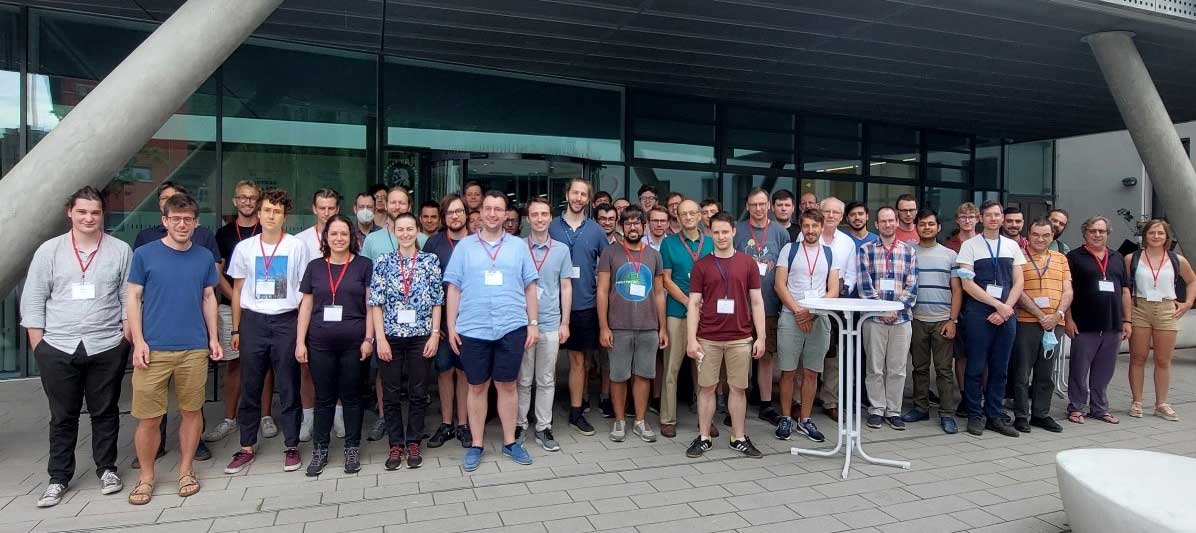
Letzte Woche fand die zweite Veranstaltung der Konferenz "Integrability, dualities and deformations" am IRIS Adlershof statt. Die Konferenz brachte 75 erfahrene theoretische Physiker zusammen, die an integrablen Modellen, Worldsheet-Dualitäten, nicht-kommutativer Feldtheorie und der Korrespondenz zwischen Eichtheorie und Gravitation arbeiten, um die neuesten Entwicklungen auf ihren Gebieten zu diskutieren, neue Verbindungen zwischen diesen verwandten Gebieten zu finden und spannende Erkenntnisse auszutauschen. Zusätzlich zu den 18 großartigen Vorträgen konnte man die Teilnehmer jeden Tag bis in die späten Abendstunden an verschiedenen Stellen rund um das IRIS-Gebäude anregend über ihre Berechnungen diskutieren sehen. Die Vorträge wurden auch per Livestream auf YouTube übertragen, und Aufzeichnungen der einzelnen Vorträge werden in den kommenden Wochen zur Verfügung gestellt.
Weitere Informationen finden Sie auf der Website der Konferenz: https://indico.cern.ch/event/1139791/
02.08.2022"Modeling Materials at Realistic time Scales via Optimal Exploitation of Exascale Computers and Artificial Intelligence" Workshop und Hands-on Tutorial erfolgreich abgeschlossen
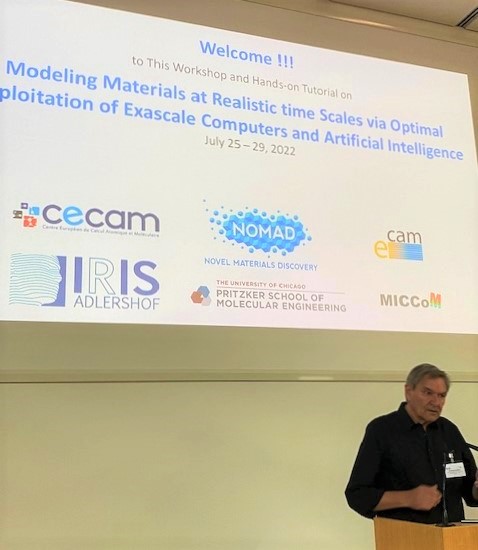 |
| Prof. Matthias Scheffler eröffnet den gemeinsamen Workshop und Hands-on Tutorial |
In der Woche vom 25. bis 29. Juli fand der erfolgreich abgehaltene Workshop sowie Hands-on Tutorial zum Thema Modeling Materials at Realistic time Scales via Optimal Exploitation of Exascale Computers and Artificial Intelligence statt. Die Veranstaltung wurde vom IRIS Adlershof sowie der Humboldt-Universität zu Berlin ausgetragen und war eine Zusammenarbeit dieser mit der Pritzker School der University of Chicago, CECAM, NOMAD, ECAM und MICCOM.
In den ersten drei Tagen vom 25. bis 27. Juli hielten führende Experten verschiedener Fachgebiete Vorträge zu Rechneranwendungen und damit verbundenen Methoden der künstlichen Intelligenz in Bezug auf den Fortschritt in den Materialwissenschaften. An den Abenden des 25. und 26. Juli gab es Dinner mit Poster Sessions für weiteren wissenschaftlichen und kollektiven Austausch. Am Nachmittag des 27. Juli folgte ein Ausflug zu einer Graffiti-Tour am Teufelsberg mit anschließendem Dinner.
Der 28. und 29. Juli wurden dann für Tutorials mit praktischen Beispielen genutzt, die sich auf die Simulation von Molekulardynamiken fokussierten.
01.08.2022Einstein Junior Fellowship für Dr. Sven Ramelow
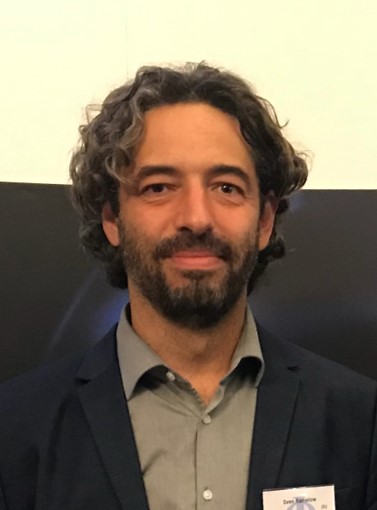 Der Experimentalphysiker und Leiter der Emmy Noether-Nachwuchsgruppe "Nichtlineare Quantenoptik", Dr. Sven Ramelow, verfolgt am IRIS Adlershof und dem Institut für Physik der Humboldt-Universität zu Berlin das Projekt "Sensorik mit verschränkten Photonen im mittleren Infrarot". Sein Ansatz fußt auf quantenbasierten Messungen mit sogenannten undetektierten Photonen: einem neuartigen Verfahren, bei dem anhand von verschränkten Photonenpaaren Messinformationen in verschiedenen Infrarot-Bereichen aufgelesen werden, ohne dafür Infrarotlaser oder -detektoren zu verwenden. Erste industrienahe Anwendungen sind bereits unter Beteiligung des Forschers in der Entwicklungsphase.
Der Experimentalphysiker und Leiter der Emmy Noether-Nachwuchsgruppe "Nichtlineare Quantenoptik", Dr. Sven Ramelow, verfolgt am IRIS Adlershof und dem Institut für Physik der Humboldt-Universität zu Berlin das Projekt "Sensorik mit verschränkten Photonen im mittleren Infrarot". Sein Ansatz fußt auf quantenbasierten Messungen mit sogenannten undetektierten Photonen: einem neuartigen Verfahren, bei dem anhand von verschränkten Photonenpaaren Messinformationen in verschiedenen Infrarot-Bereichen aufgelesen werden, ohne dafür Infrarotlaser oder -detektoren zu verwenden. Erste industrienahe Anwendungen sind bereits unter Beteiligung des Forschers in der Entwicklungsphase.
Nun wurde Sven Ramwlow von der Einstein Stiftung Berlin mit einem Einstein Junior Fellowship ausgezeichnet. Wir gratulieren ihm sehr herzlich und freuen uns auf die weitere gute Zusammenarbeit.
mehr...
19.07.2022Niels Helle-Meyer zum Vizepräsidenten Haushalt, Personal und Technik gewählt
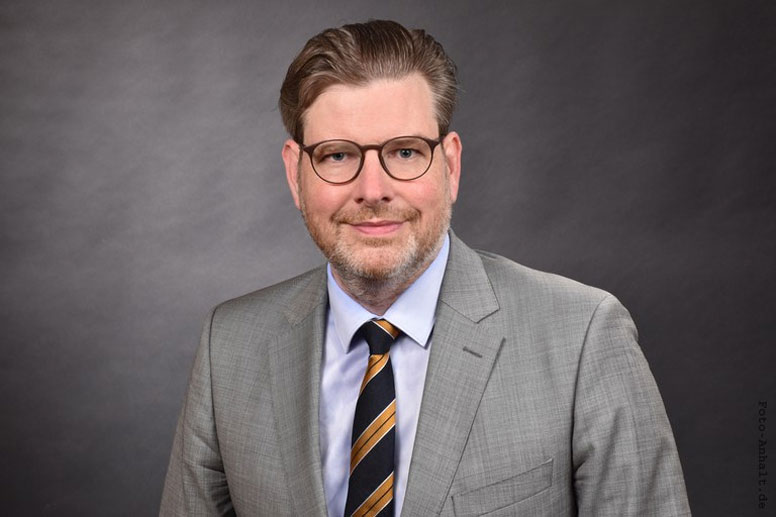
Auf seiner Sitzung am 19. Juli 2022 stimmte das Konzil mit großer Mehrheit für Niels Helle-Meyer.
Niels Helle-Meyer:
„Ich freue mich sehr über die Wahl zum Vizepräsidenten Haushalt, Personal und Technik. Für mich ist diese Wahl eine Auszeichnung nach mittlerweile fast 20 Jahren im Wissenschaftsmanagement. Mit Respekt begegne ich der Aufgabe in Zeiten, in denen nicht nur unser Wissenschaftssystem vor großen Veränderungen steht, Mitverantwortung für eine der wichtigsten, exzellenten Universitäten in Deutschland zu übernehmen.“
Niels Helle-Meyer ist seit 2017 Kanzler der Europa-Universität Viadrina in Frankfurt (Oder). Zuvor war der Jurist fünf Jahre lang Kanzler und kaufmännischer Geschäftsführer der Zeppelin Universität Friedrichshafen und Geschäftsführer der Naturwissenschaftlich-Technischen Akademie in Isny im Allgäu. Von 2006 bis 2012 war er Gründungskanzler der HafenCity Universität Hamburg. (mehr...)
IRIS Adlershof gratuliert sehr herzlich und freut sich auf eine erfolgreiche Zusamenarbeit.
20.06.2022"Women in Natural Science School 2022 – Energy for (your) future" erfolgreich abgeschlossen
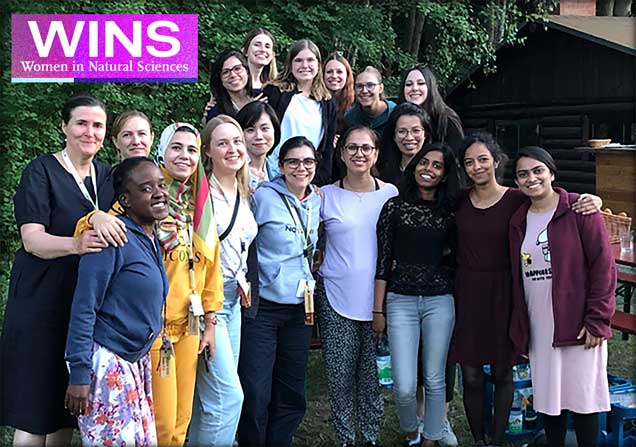 IRIS Mitglied Prof. Caterina Cocchi hat zusammen mit Dr. Zsuzsanna Heiner und Dr. Petra Metz die WiNS School 2022 in Blossin, Brandenburg (10. – 13. Juni 2022) organisiert und durchgeführt. Rund 30 Frauen 14 verschiedener Nationalitäten aus allen Karrierestufen, die in unterschiedlichen Bereichen der Naturwissenschaften tätig sind – von Astrophysik bis Biochemie, von Umweltwissenschaften bis Maschinenbau – verbrachten gemeinsam vier Tage in der Natur, um über wissenschaftliche und technologische Herausforderungen in den Bereichen Energieerzeugung, -speicherung und -verbrauch zu diskutieren. Das wissenschaftliche Programm, das aus einer ausgewogenen Mischung aus eingeladenen Vorträgen und mündlichen Beiträgen der Teilnehmer bestand, wurde durch ein eintägiges Seminar zu Karriereentwicklung, persönlicher Befähigung und Gemeinschaftsbildung ergänzt. Zwei der Wissenschaftskommunikation gewidmete Sitzungen ergänzten diese reichhaltige Agenda.
IRIS Mitglied Prof. Caterina Cocchi hat zusammen mit Dr. Zsuzsanna Heiner und Dr. Petra Metz die WiNS School 2022 in Blossin, Brandenburg (10. – 13. Juni 2022) organisiert und durchgeführt. Rund 30 Frauen 14 verschiedener Nationalitäten aus allen Karrierestufen, die in unterschiedlichen Bereichen der Naturwissenschaften tätig sind – von Astrophysik bis Biochemie, von Umweltwissenschaften bis Maschinenbau – verbrachten gemeinsam vier Tage in der Natur, um über wissenschaftliche und technologische Herausforderungen in den Bereichen Energieerzeugung, -speicherung und -verbrauch zu diskutieren. Das wissenschaftliche Programm, das aus einer ausgewogenen Mischung aus eingeladenen Vorträgen und mündlichen Beiträgen der Teilnehmer bestand, wurde durch ein eintägiges Seminar zu Karriereentwicklung, persönlicher Befähigung und Gemeinschaftsbildung ergänzt. Zwei der Wissenschaftskommunikation gewidmete Sitzungen ergänzten diese reichhaltige Agenda.
Die Teilnehmerinnen dieser Veranstaltung sind nun Teil des WiNS-Netzwerks und haben sich verpflichtet, als Vorbilder für die nächste Generation von Wissenschaftlerinnen zu fungieren.
Einige Eindrücke der Teilnehmerinnen:
This weekend was so inspiring, thanks you all! – Josefin, undergraduate student
Thank you for organizing such an excellent event! These days are the highlight in my career and in my life as well! – Sarah, doctoral candidate
Thank you for providing us this platform and opportunity to explore ourselves! – Namita, Assistant Professor
mehr...
15.06.2022Laura Orphal-Kobin und Pablo Hernández López zu Vertretern des wissenschaftlichen Nachwuchses von IRIS Adlershof gewählt
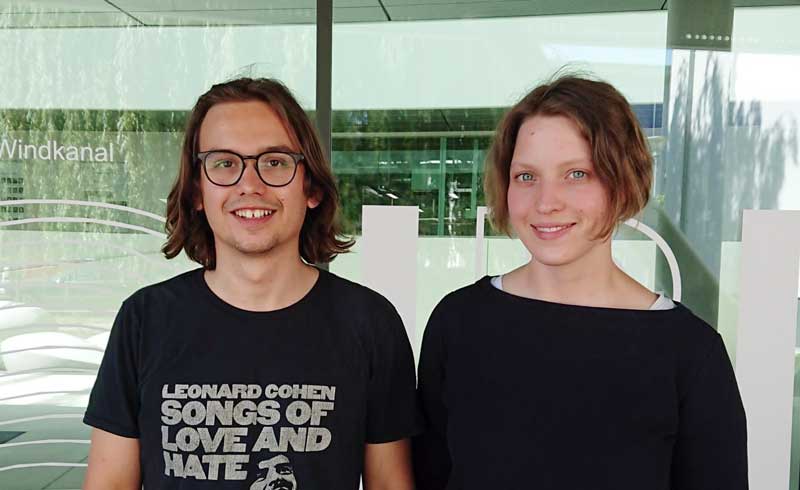 |
| Pablo Hernández López & Laura Orphal-Kobin, die neu gewählten Nachwuchsvertreter |
Die Nachwuchswissenschaftler von IRIS Adlershof haben heute Frau Laura Orphal-Kobin zu ihrer Repräsentantin in den IRIS-Gremien sowie Herrn Pablo Hernández López zu ihrem Stellvertreter gewählt. Damit ist der wissenschaftliche Nachwuchs in den IRIS-Mitgliederversammlungen sowie im IRIS-Rat mit Rede-, Antrags- und Stimmrecht vertreten.
Laura Orphal-Kobin promoviert in der Arbeitsgruppe von Dr. Tim Schröder im Rahmen der Graduiertenschule "Berlin School of Optical Sciences and Quantum Technologies". Sie forscht dazu an der Optimierung von Diamant-Nanostrukturen.
Pablo Hernández López ist Doktorand in der Arbeitsgruppe von Dr. Sebastian Heeg und forscht an ein- und zweidimensionalen neuen Materialien. Er ist Mitglied der Graduiertenschule "Advanced Materials".
IRIS Adlershof gratuliert Laura und Pablo herzlich zu ihrer Wahl und freut sich auf eine gute Zusammenarbeit!
08.06.2022The IOP–Humboldt Postdoctoral Fellowship in Physics
Nominations are open for postdoctoral fellowships between two cities, Berlin and Beijing, as part of a joint physics program between the Integrative Research Institute for the Sciences (IRIS Adlershof) of Humboldt-Universität zu Berlin (HU Berlin) and the Institute of Physics, Chinese Academy of Sciences, (IOP) Beijing.
FELLOWSHIP PROGRAM
The prestigious two-year research fellowships are intended for exceptional early-career scientists, in preparation for an independent career in research at the frontier of condensed matter physics, quantum materials or device physics. Successful candidates will spend one year in Berlin and one in Beijing at the research groups of their choice, supported by up to 4,500 EUR/month.
The selected fellows will be appointed from August 2022 onwards. A first networking event is programmed in Berlin. Fellows will work at the Campus Adlershof of HU Berlin and the IOP Zhongcuancun Beijing Campus. The fellows have the possibility to visit and interact with associated Partners at the Max Born Institute, the Helmholtz-Zentrum Berlin and its Electron Storage Ring BESSY II, the Freie Universität Berlin, at the Leibniz-Institut für Kristallzüchtung or the Fritz-Haber Institute of the Max Planck Society.
The initial call includes the following topics and participating groups:Condensed Matter Theory
Prof. Claudia Draxl, Prof. Sheng Meng, Prof. Hongming Weng, Prof. Chen Fang, Prof. Xinguo Ren, Prof. Jiangping Hu, Prof. Zhong Fang, Prof. Tao Xiang, Prof. Matthias Scheffler, Prof. Caterina Cocchi
Ultrafast Laser Spectroscopy
Prof. Zhiyi Wei, Prof. Jianing Chen
Photoemission Spectroscopy and Surface Science
Prof. Norbert Koch, Prof. Tian Qian, Prof. Xingjiang Zhou, Prof. Jiandong Guo
Optoelectronic Devices and Quantum Transport
Prof. Emil List-Kratochvil, Prof. Thomas Schröder, Prof. Guangyu Zhang, Prof. Yongqing Li
Scanning Probe Microscopy
Prof. Jürgen P. Rabe, Prof. Carlos-Andres Palma, Prof. Kui Jin, Prof. Shuheng Pan, Prof. Hong-Jun Gao
Quantum Information
Prof. Tim Schröder, Prof. Oliver Benson, Prof. Li Lu
Electron Microscopy
Prof. Christoph Koch, Prof. Xuedong Bai
ELIGIBILITY CRITERIA
- Commitment to a one-year research stay at IOP followed by a further year at IRIS Adlershof, HU Berlin. Special cases committing to one-year at IRIS Adlershof followed by a further year at IOP will be considered.
- A PhD degree in physics, chemistry, mathematics, or materials, obtained no more than five years prior to the application deadline.
- Previous international experience, such as conference talks, research stays abroad and so on.
HOW TO APPLY
Applicants should send their CV and one publication (in PDF format), along with a cover letter and two reference letters to: fellowshipsphysik.hu-berlin.de. Only candidates specifying two or more preferred host research groups in Berlin and Beijing will be considered.- 2022 Program closing date: June 30th, 2022.
- 2023 Program closing date: November 30th, 2022.
DECISION
Decision will be made by a joint committee from IOP and HU Berlin. The decision announcements will be sent from July 2022 onwards.The HU Berlin and IOP specifically encourage qualified female scholars to apply.
08.06.2022Oliver Dumele durch BMBF Projekt "BattFutur" gefördert
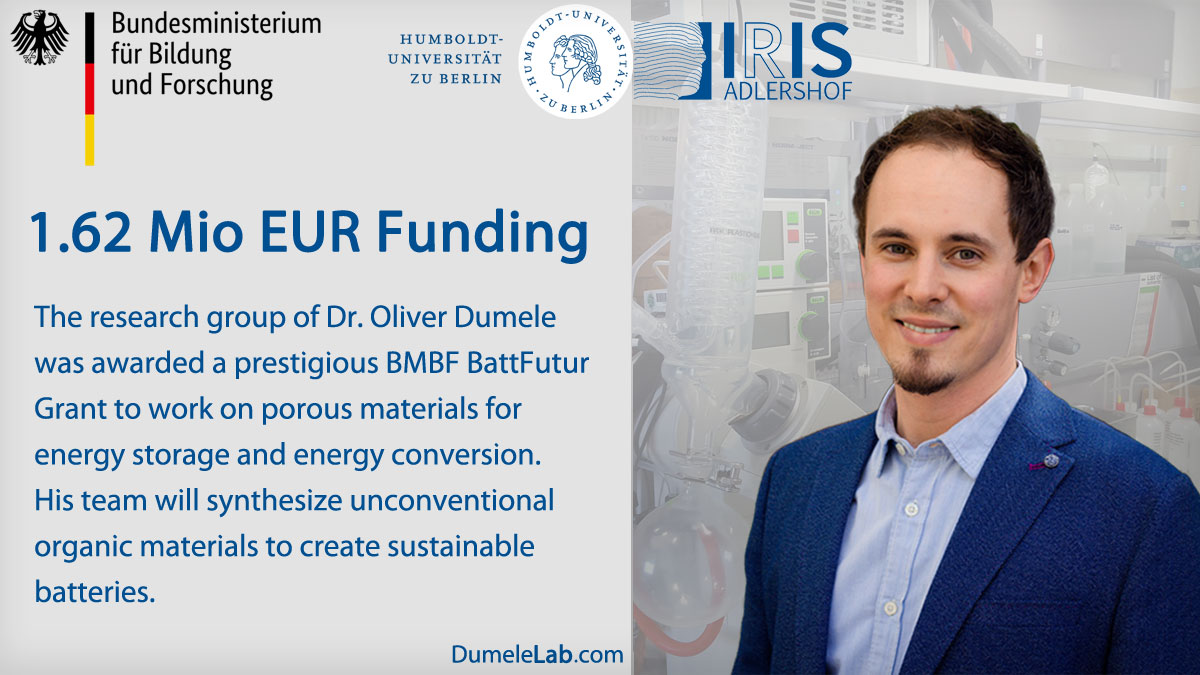
Die Batterietechnologie ist aufgrund ihrer Bedeutung für eine Vielzahl unterschiedlicher Anwendungsfelder, wie beispielsweise die Elektromobilität, stationäre Energiespeicher, Haushaltsgeräte und Hochleistungswerkzeuge, eine Schlüsseltechnologie für den Standort Deutschland, die zur Erreichung der Klimaschutzziele der Bundesregierung beitragen kann.
Um im globalen Wettbewerb bestehen zu können, ist die Aus- und Weiterbildung des wissenschaftlichen Nachwuchses im Bereich der Batterieforschung notwendig. Dazu wurde 2020 vom BMBF das Förderprogramm "BattFutur" inds Lebens gerufen.
IRIS-Mitglied Oliver Dumele wird im Juli diesen Jahres seine Förderung in diesem Programm antreten. Die Synthese nachhaltiger organischer Energie-Materialien wird dabei mit 1,62 Mio Eur gefördert.
Wir wünschen Oliver Dumele viel Erfolg bei seinem wichtigen Forschungsvorhaben!
03.06.2022IRIS-Stipendiatin Archana Manoharan hat ihre Dissertation erfolgreich verteidigt
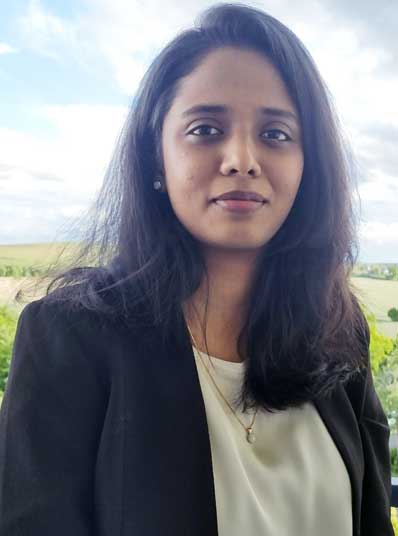
Solarenergie ist eine zuverlässige Energiequelle zur Deckung des schnell wachsenden Energiebedarfs in der heutigen Welt. Eine Absorberschicht ist das Herzstück einer Solarzelle, die das Sonnenlicht absorbiert und die entstehenden Ladungsträger zu den elektrischen Kontakten transportiert. Das Kesterit Cu2ZnSnS4 (CZTS) ist ein vielversprechender Kandidat, der aus reichlich vorkommenden und ungiftigen Elementen besteht. CZTS hat aufgrund seines hohen Absorptionskoeffizienten von etwa ~1x10-4cm-1 und seiner optimalen Bandlücke von 1,4 eV großes Interesse auf sich gezogen. Es ist jedoch eine Herausforderung, die elektronischen Eigenschaften dieser komplexen quaternären Struktur zu verstehen.
In ihrer Dissertation versuchte Archana Manoharan, die elektronischen Eigenschaften von CZTS zu verstehen. Die Röntgenabsorptions-Nahkantenstruktur (XANES) ist ein leistungsfähiges Instrument für diesen Zweck. Die Interpretation der XANES von komplexen Materialien ist nicht trivial und erfordert daher eine theoretische Modellierung. Alle Berechnungen wurden mit dem exiting-Code durchgeführt.
Die Unterschiede zwischen den berechneten und gemessenen Spektren in CZTS blieben jedoch eine offene Frage. Daher zeigte sie den Einfluss von Defektkomplexen auf die Eigenschaften der angeregten Zustände von CZTS. Zunächst wurden die Verschiebungen der Kernniveaus bei der Defektbildung verstanden, da sie empfindlich auf die chemische Umgebung reagieren. Die spektralen Signaturen wurden für die ausgewählten ungleichwertigen Schwefelstellen erhalten. Es wurde eine detaillierte Analyse der Auswirkungen der lokalen chemischen Umgebung durchgeführt. Anhand der aus dieser Analyse gewonnenen Erkenntnisse wurd die Art der Defekte bestimmt, die die gemessenen Spektren dominieren.
IRIS Adlershof unterstützte diese Forschung mit einem Stipendium, so dass Archana sich auf die Fertigstellung des Projekts und die Veröffentlichung der Ergebnisse konzentrieren konnte.
Sie hat ihre Dissertation am 3. Juni 2022 erfolgreich verteidigt.
Herzlichen Glückwunsch, Frau Dr. Manoharan!
01.06.2022Der Chemiker Prof. Robert Schlögl wird neuer Präsident der Alexander von Humboldt-Stiftung
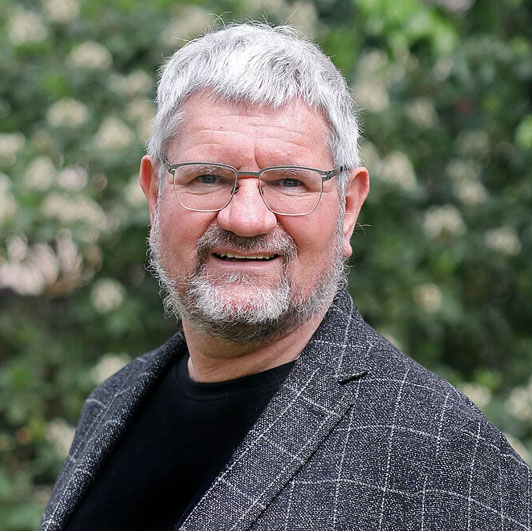 Robert Schlögl, Direktor am Fritz-Haber-Institut der Max-Planck-Gesellschaft (FHI) sowie Honorarprofessor am Institut für Chemie der Humboldt-Universität zu Berlin tritt sein Amt am 1. Januar 2023 an.
Robert Schlögl, Direktor am Fritz-Haber-Institut der Max-Planck-Gesellschaft (FHI) sowie Honorarprofessor am Institut für Chemie der Humboldt-Universität zu Berlin tritt sein Amt am 1. Januar 2023 an.
Robert Schlögl, 1954 geboren, ist ein international ausgewiesener und vernetzter Wissenschaftler mit dem Forschungsschwerpunkt Energieumwandlungsprozesse und Katalysatoren. Als Experte für Energiesysteme der Zukunft und die komplexen Herausforderungen der Energiewende ist er auch in der Politikberatung und Wissenschaftskommunikation sehr erfahren. Im Rahmen eines vom Helmholtz-Zentrum für Materialien und Energie Berlin (HZB), den beiden Max-Planck-Instituten FHI und CEC, sowie dem IRIS Adlershof der Humboldt-Universität zu Berlin betriebenen gemeinsamen Katalyse-Forschungslabors, nutzt eine vielköpfige Arbeitsgruppe um Prof. Schlögl sowie den Professoren Reuter und Roldán die Infrastruktur des neuen IRIS Forschungsbaus und arbeitet dabei eng mit IRIS Adlershof zusammen.
Wir wünschen Herrn Schlögl für seine neue Aufgabe viel Erfolg und freuen uns auf weitere gute Zusammenarbeit.
mehr…
30.05.2022Nakib Protik mit einem Humboldt-Forschungsstipendium ausgezeichnet
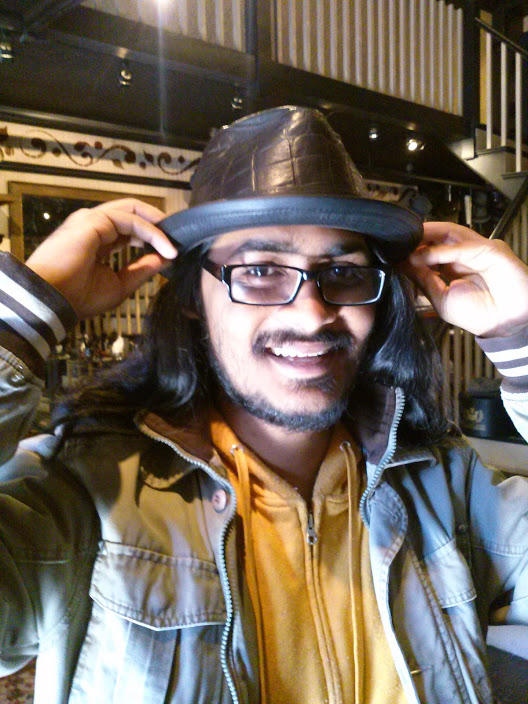 Dr. Nakib Protik ist Empfänger eines Alexander von Humboldt-Forschungsstipendiums für Postdoktoranden. Er promovierte 2019 am Boston College (USA) in Physik und forschte anschließend an der Harvard University (USA) sowie am Institut Català de Nanociència i Nanotecnologia (Spanien).
Dr. Nakib Protik ist Empfänger eines Alexander von Humboldt-Forschungsstipendiums für Postdoktoranden. Er promovierte 2019 am Boston College (USA) in Physik und forschte anschließend an der Harvard University (USA) sowie am Institut Català de Nanociència i Nanotecnologia (Spanien).
Als Forschungsstipendiat der Alexander von Humboldt Stiftung wird Dr. Protik nun in der Gruppe von Prof. Claudia Draxl, Mitglied von IRIS Adlershof, zur Verbesserung der parameterfreien Beschreibung der Wechselwirkung von Ladungs- und Wärmeträgern mit neutralen, geladenen und magnetischen Verunreinigungen in Quantenmaterialien forschen. Diese Arbeit soll auch eine Verbindung zu einer breiten Palette von Anwendungen herstellen, die von der Stromgewinnung aus Abwärme bis zur Spintronik reicht.
Wir gratulieren Herrn Protik herzlich zur erfolgreichen Einwerbung des Forschungsstipendiums und wünschen ihm für seine Arbeit viel Erfolg. Herzlich Willkommen am IRIS Adlershof!
18.05.2022Eröffnung des AdMaLab im IRIS Adlershof
Am vergangenen Donnerstag, 12. Mai 2022 begrüßten Vertreter des INAM e.V. und der Humboldt-Universität zu Berlin zahlreiche Gäste aus Wirtschaft, Politik, Forschung und Lehre zur Eröffnungsveranstaltung des Inkubatorenprogramms „AdMaLab – The Berlin Materials and Hardware Lab“ im Forschungsbau des IRIS Adlershof der Humboldt-Universität.
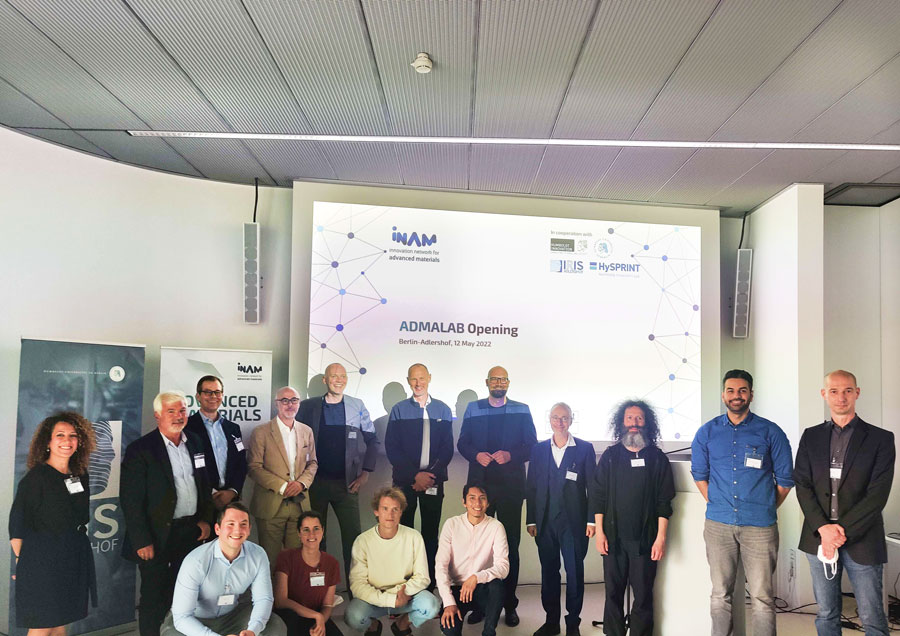
Im Rahmen des Förderprogramms „Berlin Startup Stipendium“ hat die Berliner Senatsverwaltung für Wirtschaft, Energie und Betriebe dem INAM e.V. und seinen Kooperationspartnern rund 1,1 Millionen EUR zur Verfügung gestellt, um ein auf materialwissenschaftliche Gründungen zugeschnittenes Inkubatorprogramm aufzusetzen.
Zur feierlichen Eröffnungsveranstaltung konnten das AdMaLab-Team um Oliver Hasse, Geschäftsführer des Innovation Network for Advanced Materials (INAM) e.V. und Prof. Dr. Emil List-Kratochvil, stellv. Direktor des IRIS Adlershof und Forschungsgruppenleiter Hybrid Devices als Ehrengäste den Berliner Wirtschafts-Staatssekretär Michael Biel und Prof. Dr. Christoph Schneider, Vizepräsident für Forschung der Humboldt-Universität zu Berlin, Vertreterinnen und Vertreter der ersten teilnehmenden Startups sowie zahlreiche internationale Gäste aus Wirtschaft, Forschung, Lehre und Politik im Forschungsbau IRIS Adlershof begrüßen.
In seinem Grußwort betonte Vizepräsident Schneider die Signalwirkung, die das AdMaLab für den Standort Adlershof hat: „Mit dem IRIS werden disziplinäre und sektorielle Zugänge verknüpft und Grundlagenforschung, Wirtschaft sowie Gründerinnen und Gründer unter einem Dach vereint. Als erstes Inkubatoren-Programm für materialwissenschaftliche Startups in Berlin trifft das AdMaLab-Programm den Kern dieses Anliegens. Wir freuen uns dabei sehr über die erfolgversprechende Kooperation von INAM e.V. und Humboldt-Universität“.
Wirtschafts-Staatssekretär Michael Biel betonte die Bedeutung des Programms: „Berlin hat es in den letzten zwei Jahrzehnten geschafft, in der Hauptstadt eines der führenden Startup-Ökosysteme in Europa – und vermutlich sogar darüber hinaus – aufzubauen. Dass sich nicht nur immer mehr Gründerinnen und Gründer in Berlin ansiedeln, sondern auch höchst innovative Programme wie das AdMaLab zu deren Unterstützung entwickeln, ist ein wichtiger Teil dieser Erfolgsgeschichte. Dies gilt umso mehr für den Bereich der Deep-Tech und Hochtechnologie-Startups, die einen essenziellen Beitrag zum Technologie-Transfer zwischen Spitzenforschung und Wirtschaft leisten. Adlershof und die anderen zehn Berliner Zukunftsorte spielen hierfür eine zentrale Rolle. Es ist ein wichtiges Anliegen für den Senat, die Start-ups dauerhaft in der Hauptstadt zu halten und Real-Labore zu stärken, damit neue Entwicklungen auch bei uns am Innovationsstandort Berlin in die Anwendung kommen können."
Dr. Dirk Rohde, Head of Technology Management des Berliner Spezialchemie-Unternehmens Atotech GmbH betonte in seinem Festvortrag einmal mehr die Bedeutung von Startups als Ideenschmiede für die Wirtschaft: „Wir sind dem INAM e.V. beigetreten, um unsere interne FuE um den Input der kreativen Startups zu erweitern, welche außerhalb des manchmal engen Korsetts der kundennahen Produktentwicklung arbeiten. Unser Gründer Ernst Schering, Sohn von Wirtsleuten, startete als Apotheker ins Berufsleben. Mit seinem Unternehmergeist erweiterte er jedoch schnell das klassische Angebot seiner Apotheke. So wie damals bedarf es auch heute der Kreativleistung und Risikobereitschaft junger, forschungsnaher Unternehmerinnen und Unternehmer, um den zukünftigen Herausforderungen unserer Branche besser begegnen zu können.“
Oliver Hasse, Geschäftsführer des INAM e.V. stellte das AdMaLab-Programm, in das mehr als sechs Jahre Erfahrung in der Zusammenarbeit mit und Entwicklung von High-Tech-Startups geflossen sind, vor: „Mit dem Inkubatorprogramm AdMaLab setzt der Berliner Senat ein starkes Zeichen: ‚analoge‘ Innovationen haben und brauchen ihren Platz im Startup-Eco-System Berlin. Innovative Unternehmensgründer aus dem sogenannten Hardware Deep Tech-Bereich bekommen durch das AdMaLab eine wichtige – vermutlich sogar essenzielle – Unterstützung in der schwierigen Gründungsphase. Es fehlt oft nicht nur Geld, sondern auch Zugang zu Laboratorien zur Produktenwicklung.“
09.05.2022Neue Produktionsmethode für flexible, langlebige Anoden mit hoher Kapazität im Verhältnis zum Gewicht
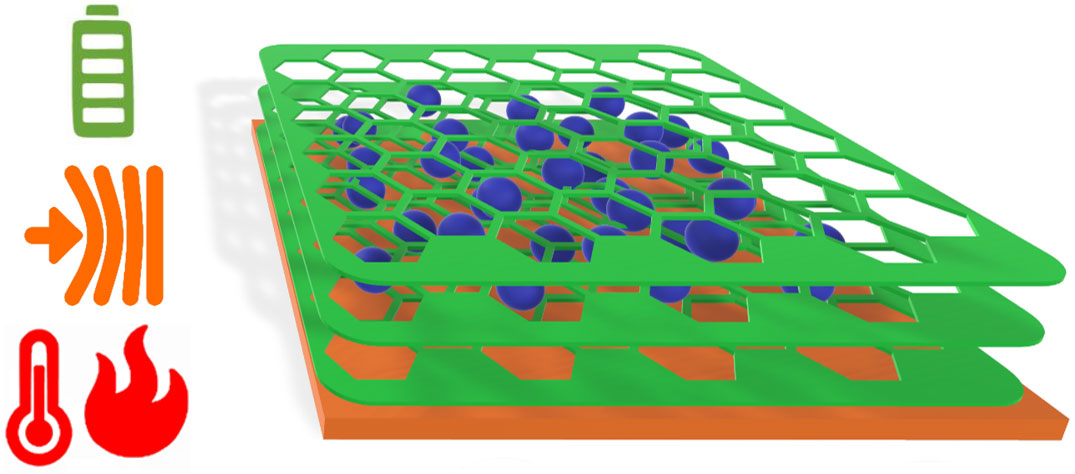 Ein Team von Forschern der Humboldt-Universität zu Berlin, des Leibniz-Instituts für Polymerforschung Dresden (IPF) e. V. und des Karlsruher Instituts für Technologie (KIT) hat eine Anode mit überlegener Leistung für tragbare Batterieanwendungen hergestellt, die nahe an die Grenzen der theoretischen Kapazität heranreicht. Einzigartig ist, dass die erhaltenen Anoden flexibel sind, ohne Oberflächenumbau oder Rissbildung, und sie überstehen Hitzeschocks ohne Leistungseinbußen.
Ein Team von Forschern der Humboldt-Universität zu Berlin, des Leibniz-Instituts für Polymerforschung Dresden (IPF) e. V. und des Karlsruher Instituts für Technologie (KIT) hat eine Anode mit überlegener Leistung für tragbare Batterieanwendungen hergestellt, die nahe an die Grenzen der theoretischen Kapazität heranreicht. Einzigartig ist, dass die erhaltenen Anoden flexibel sind, ohne Oberflächenumbau oder Rissbildung, und sie überstehen Hitzeschocks ohne Leistungseinbußen.
27.04.2022FAIRe Forschungsdaten für die Materialwissenschaften
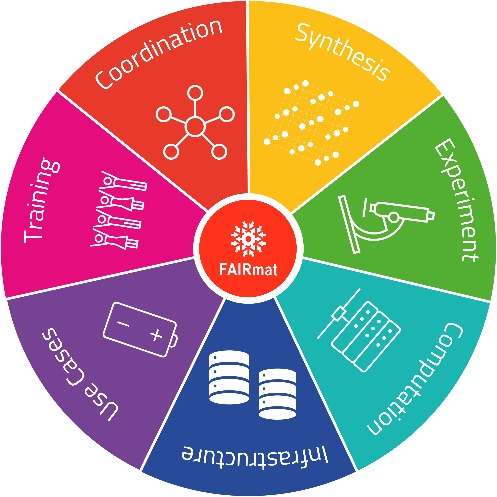 |
| Die Wirkweise des FAIRmat-Konsortiums (Copyright: FAIRmat) |
Der Lebensstil unserer Gesellschaft wird in hohem Maße von den Errungenschaften der Physik der kondensierten Materie, der Chemie und den Materialwissenschaften bestimmt. Touchscreens, Batterien, Elektronik oder Implantate: Viele neue Produkte in den Bereichen Energie, Umwelt, Gesundheit, Mobilität und Informationstechnik beruhen weitgehend auf verbesserten oder sogar neuartigen Materialien. Die enormen Mengen an Daten, die täglich in diesen Forschungsfeldern produziert werden, stellen einen neuen Rohstoff dar – und sind damit Gold wert. Voraussetzung dafür ist jedoch, dass diese Daten umfassend charakterisiert werden und der Wissenschaft zur Verfügung stehen.
06.04.2022WISTA zu Gast bei IRIS Adlershof
Am Dienstag, den 5. April 2022, besuchten die Geschäftsführung sowie der Aufsichtsrat unseres Standortpartners WISTA Management GmbH den neuen Forschungsbau von IRIS Adlershof. Nach einer kurzen Einführung durch IRIS-Direktor Prof. Jürgen P. Rabe gab es eine Führung durch einige Labore des Forschungsbaus. Am Gloveboxcluster des Verbundlabors durften die Gäste selbst Hand anlegen und beim NION-TEM konnten sie einzelne Atome sehen. Besonders die Staatssekretärin für Wissenschaft, Frau Armaghan Naghipour, und der Staatssekretär für Wirtschaft, Herr Michael Biel, zeigten reges Interesse an unserer Forschung.
 |
||||
| IRIS-Direktor Jürgen P. Rabe, IRIS Geschäftsführer Nikolai Puhlmann, sowie Dekanin Prof. Caren Tischendorf diskutieren im Verbundlabor des Forschungsbau aktuelle Fragestellungen mit WISTA Geschäftsführer Roland Sillmann sowie den WISTA-Aufsichtsratsmitgliedern. |
||||
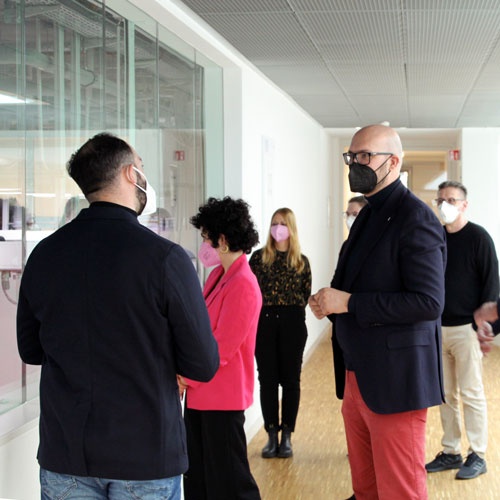 |
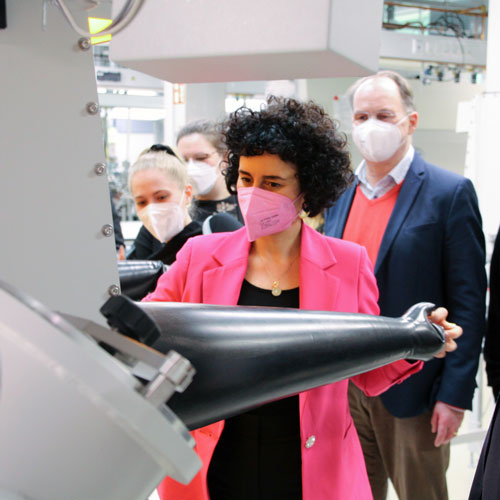 |
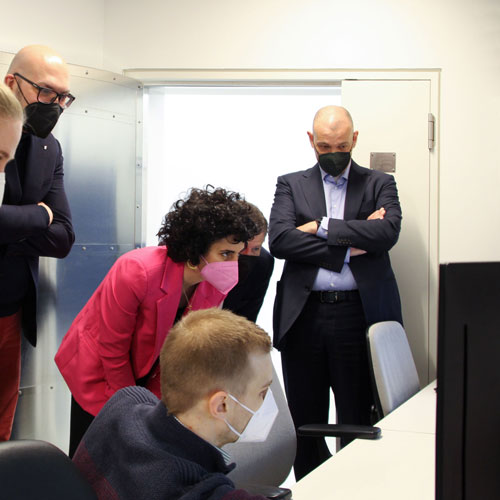 |
||
| Dr. Ligorio gibt am großen Glasfenster im Foyer des IRIS-Forschungsbaus Einblicke in aktuelle Wissenschaft. | StS Armaghan Naghipour treibt an der Glovebox Forschung voran. | StS Michael Biel, StS Armaghan Naghipour und WISTA-Geschäftsführer Roland Sillmann (v.l.n.r) lassen sich einzelne Atome zeigen. | ||
28.03.2022Michael J. Bojdys: "Wie die Wissenschaftscommunity geflüchteten Wissenschaftler:innen helfen kann"
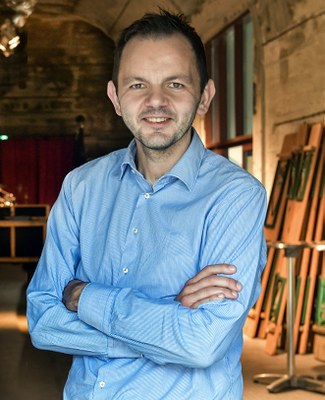 Allein in den ersten 19 Tagen nach dem Einmarsch in die Ukraine sind 6300 Wissenschaftler:innen ins Ausland geflüchtet. Michael J. Bojdys, Mitglied von IRIS Adlershof, ist seit 2018 Beiratsmitglied der „Young Scientists“ (Junge Wissenschaftler) am Weltwirtschaftsforum. In einem Beitrag dort erklären er und seine Kollegen, wie die Wissenschaftscommunity angesichts der aktuellen Lage in der Ukraine geflüchteten Forschenden helfen und diese unterstützen kann. Sie identifizierten vier Schlüsselbereiche, in denen kooperative Maßnahmen ukrainische Wissenschaftler unterstützen können:
Allein in den ersten 19 Tagen nach dem Einmarsch in die Ukraine sind 6300 Wissenschaftler:innen ins Ausland geflüchtet. Michael J. Bojdys, Mitglied von IRIS Adlershof, ist seit 2018 Beiratsmitglied der „Young Scientists“ (Junge Wissenschaftler) am Weltwirtschaftsforum. In einem Beitrag dort erklären er und seine Kollegen, wie die Wissenschaftscommunity angesichts der aktuellen Lage in der Ukraine geflüchteten Forschenden helfen und diese unterstützen kann. Sie identifizierten vier Schlüsselbereiche, in denen kooperative Maßnahmen ukrainische Wissenschaftler unterstützen können:
- Finanzierungsmöglichkeiten für Forschungsnetze auf individueller und institutioneller Ebene,
- Einstellung von gefährdeten Akademikerinnen und Akademiker,
- Einstellung von technischem Personal und gefährdeten Arbeitnehmerinnen und Arbeitnehmer,
- direkte Zusammenarbeit mit Behörden.
04.03.2022Bremsstrahlung von Schwarzen Löchern und Neutronensternen aus der Quantenfeldtheorie

Fig 1: Visualisierung der gravitativen Bremsstrahlung aus der Streuung zweier schwarzer Löcher (BSc-Arbeit O. Babayemi)
Wenn zwei massive Objekte (Schwarze Löcher, Neutronensterne oder Sterne) aneinander vorbeifliegen, lenken die gravitativen Wechselwirkungen nicht nur ihre Bahnen ab, sondern sie erzeugen auch Gravitationsstrahlung oder gravitative Bremsstrahlung, in Analogie zum Elektromagnetismus. Die resultierende Gravitationswellen eines solchen Streuereignisses wurden in führender Ordnung in der Newton’schen Gravitationskonstante bereits in den 1970er Jahren mit traditionellen Methoden der Allgemeinen Relativitätstheorie in einer umfangreichen Serie von vier Arbeiten berechnet. Bremsstrahlungsereignisse sind für die aktuelle Generation von Gravitationswellendetektoren noch unerreichbar, da das Signal nicht periodisch und typischerweise weniger intensiv ist. Dennoch sind sie interessante Ziele für zukünftige Suchen mit zukünftigen erd- und weltraumbasierten Observatorien.
In der AG Quantenfeldtheorie um IRIS Adlerhof-Mitglied Prof. Plefka wurde nun ein neuer Ansatz zur Bestimmung dieser Wellenformen (Fig 1) und den Ablenkungen mit Methoden der perturbativen Quantenfeldtheorie entwickelt, der sich als deutlich effizienter als die traditionellen Zugänge erweist. Er basiert auf einer hybriden Quantenfeldtheorie, in der die schwarzen Löcher (oder Sterne) als Punktteilchen idealisiert werden und mit der Gravitationsfeld wechselwirken. Die Berechnung fußt dann auf einer systematischen diagrammatischen Entwicklung mittels Feynmangraphen. D.h. die Methoden die ursprünglich für die Streuung von Elementarteilchen entwickelt wurden können nun auch in astrophysikalischen Szenarien zum Einsatz kommen.
Mit dieser innovativen Methode - der „Worldline Quantum Field Theory“ - konnte kürzlich in einer Serie von drei Publikationen in Physical Review Letters unser Verständnis dieses grundlegenden physikalischen Prozesses deutlich erweitert werden. In [1] wurden die Ergebnisse aus den 1970er Jahre in weitaus effizienterer Weise reproduziert, hierzu war lediglich die Berechnung von drei Feynmangraphen (Fig 2) vonnöten. In [2] konnte die Wellenform für den Fall rotierender schwarzer Löcher und Neutronensterne erweitert werden. In einer kürzlichen Publikation [3] wurden die Streuwinkel und Änderungen in den Impulsen und Rotationen durch den Streuprozess in nächst-nächst-führender Ordnung der Gravitationskonstante erstmalig bestimmt. Hierbei kamen elaborierte Techniken zur Berechnung von Feynmanintegralen zum Einsatz. Die Rotationsfreiheitsgrade der schwarzen Löcher können in dieser neuen Formulierung interessanterweise mir einer supersymmetrischen Weltlinientheorie beschrieben werden [4], die sonst in Erweiterungen des Standardmodells der Teilchenphysik zum Zuge kommt.
Diese Forschungen finden im Kontext des DFG Graduiertenkollegs 2575 „Rethinking Quantum Field Theory“ statt, das in Zusammenarbeit mit dem MPI für Gravitationsphysik und DESY an Innovationen in der Quantenfeldtheorie forscht.

Publikationen:
| [1] | Classical Gravitational Bremsstrahlung from a Worldline Quantum Field Theory G. U. Jakobsen, G. Mogull, J. Plefka, and J. Steinhoff Phys. Rev. Lett. 126 (2021) 201103 arxiv: 2101.12688 OPEN  ACCESS ACCESS |
[3] | Conservative and radiative dynamics of spinning bodies at third post-Minkowskian order using worldline quantum field theory G. U. Jakobsen and G. Mogull erscheint in PRL arxiv: 2201.07778 OPEN  ACCESS ACCESS |
|
| [2] | Gravitational Bremsstrahlung and Hidden Supersymmetry of Spinning Bodies G. U. Jakobsen, G. Mogull, J. Plefka, and J. Steinhoff Phys. Rev. Lett. 128 (2022) 011101 arxiv: 2106.10256 OPEN  ACCESS ACCESS |
[4] | SUSY in the sky with gravitons G. U. Jakobsen, G. Mogull, J. Plefka, and J. Steinhoff JHEP 2201 (2022) 027 arxiv: 2109.04465 OPEN  ACCESS ACCESS |
Weitere Informationen:
Videos des Streuprozesses auf Youtube (aus der BSc Arbeit von O. Babayemi)
Prof. Dr. Jan Plefka
Sprecher Graduiertenkolleg 2575 „Rethinking Quantum Field Theory“
Institut für Physik & IRIS Adlershof, Arbeitsgruppe Quantenfeld- und Stringtheorie
Email: jan.plefkahu-berlin.de
Tel: +49 (0)30 2093 66409
Sekr.: +49 (0)30 2093 66413
http://qft.physik.hu-berlin.de
https://www2.hu-berlin.de/rtg2575/
17.02.2022Incubation Programme for innovators in ADVANCED MATERIALS
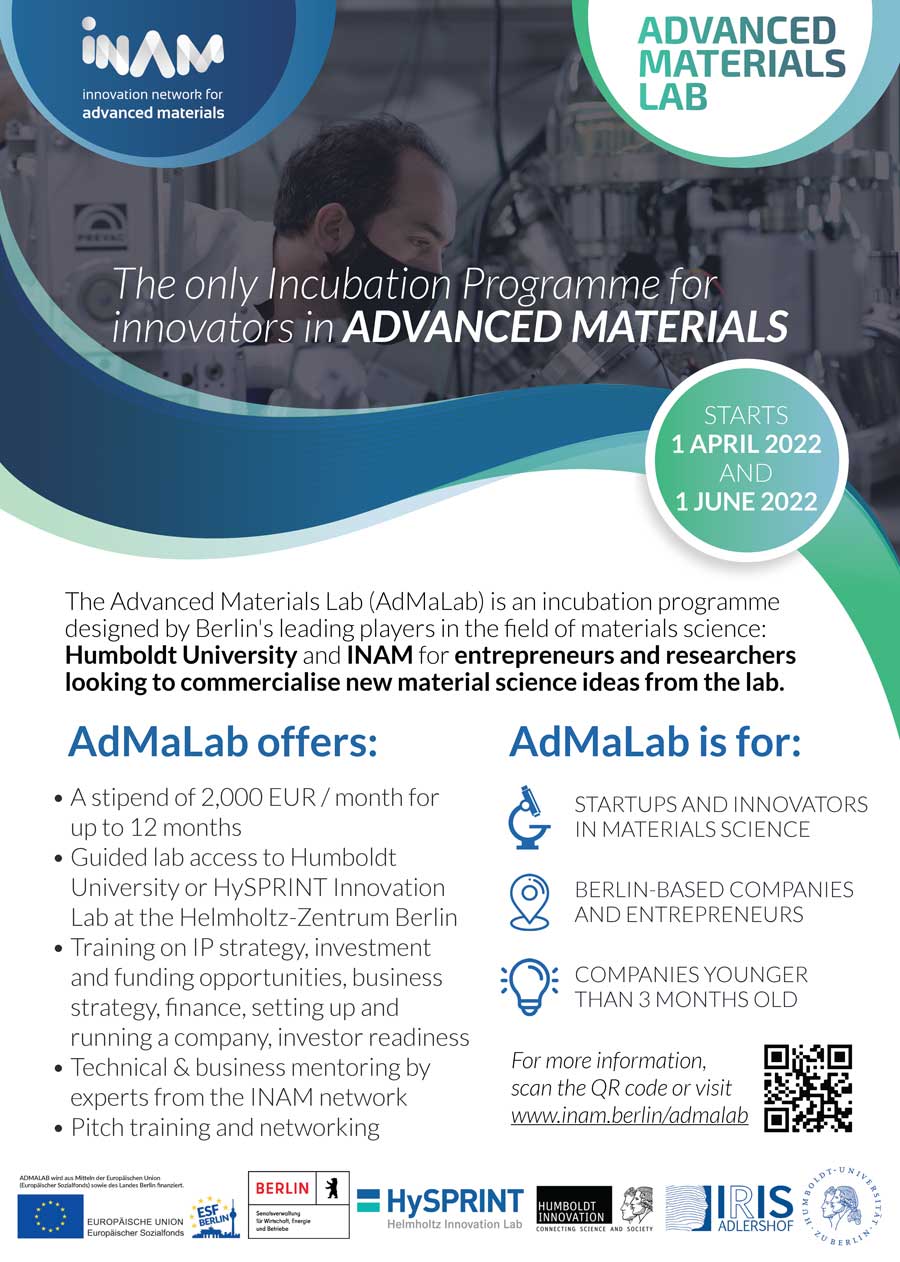
We will be considering applications for programmes starting on
- 1 April 2022 (application deadline: 28 February 2022) and
- 1 June 2022 (application deadline: 30 April 2022)
15.02.2022Julia von Blumenthal zur nächsten Präsidentin der HU gewählt
Prof. Dr. 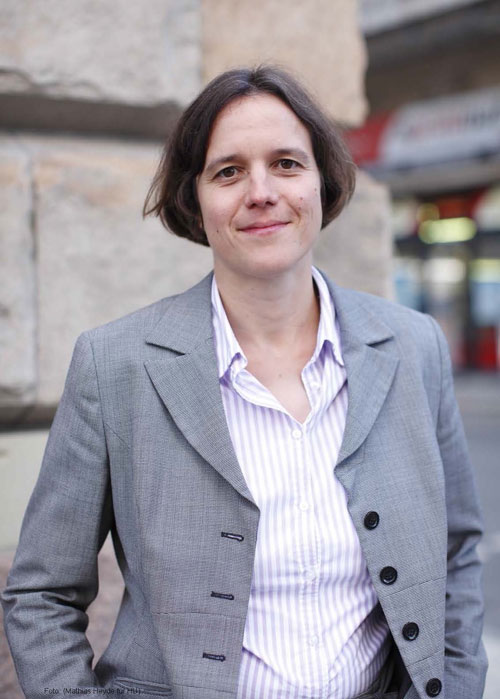 Julia von Blumenthal ist am 15.2.2022 vom Konzil der Humboldt-Universität zu Berlin (HU) mit 44 Ja-Stimmen bei 12 Nein-Stimmen und 2 ungültigen Stimmen zur neuen Präsidentin der HU gewählt worden. Sie hat die Wahl angenommen. "Ich danke dem Konzil und dem Kuratorium der Humboldt-Universität für das in mich gesetzte Vertrauen. Ich freue mich darauf, diese verantwortungsvolle Aufgabe zu übernehmen. Als Universität ist es unsere Aufgabe, Studierenden das Wissen und die Fähigkeiten zu vermitteln, die sie brauchen, um die Gesellschaft der Zukunft mitzugestalten. Mit exzellenter Forschung tragen wir dazu bei, die Herausforderungen von heute und die Fragen von morgen zu beantworten.", so von Blumenthal.
Julia von Blumenthal ist am 15.2.2022 vom Konzil der Humboldt-Universität zu Berlin (HU) mit 44 Ja-Stimmen bei 12 Nein-Stimmen und 2 ungültigen Stimmen zur neuen Präsidentin der HU gewählt worden. Sie hat die Wahl angenommen. "Ich danke dem Konzil und dem Kuratorium der Humboldt-Universität für das in mich gesetzte Vertrauen. Ich freue mich darauf, diese verantwortungsvolle Aufgabe zu übernehmen. Als Universität ist es unsere Aufgabe, Studierenden das Wissen und die Fähigkeiten zu vermitteln, die sie brauchen, um die Gesellschaft der Zukunft mitzugestalten. Mit exzellenter Forschung tragen wir dazu bei, die Herausforderungen von heute und die Fragen von morgen zu beantworten.", so von Blumenthal.
Seit Oktober 2018 ist Julia von Blumenthal Präsidentin der Europa-Universität Viadrina Frankfurt (Oder). Zuvor war sie Dekanin der Kultur-, Sozial- und Bildungswissenschaftlichen Fakultät der Humboldt-Universität zu Berlin und hat seit 2009 eine Professur am Institut für Sozialwissenschaften im Lehrbereich Innenpolitik der Bundesrepublik Deutschland der Humboldt-Universität Berlin (derzeit beurlaubt).
Vorraussichtlich zu Beginn des Wintersemesters 2022/23 wird sie Interims-Präsident Peter Frensch ablösen.
08.02.2022Viele Doktorandenkurse der Berlin University Alliance und der Humboldt Graduate School
In the next months many workshop for interested doctoral candidates are offered. Please register in time!
 Berlin University Alliance Events:
Berlin University Alliance Events:Career Day 2022 - Berlin University Alliance
You are still considering what job is a match for you and don’t know where to start looking? Save the date for our virtual “Career Day 2022 for Doctoral Candidates – New Horizons" offered by the Berlin University Alliance! This event will introduce young scientists to a variety of career tracks inside and outside academia to give support in making informed and suitable career decisions.
Several World Cafés will provide an interactive space for exchanging experiences, sharing knowledge and networking with professionals from various fields. During Round Tables you can join our special discussions on pursuing a career in academia or how the transition to the wider job market can succeed. In January 2022 you will find further information and the complete programon our website.
Datum: 22.02.2022
Target Group: Doctoral Candidates in all years
Format: Online
Language: English
Participation is free of charge
-------------------------------------------------------
Erfolgreich in die Promotion – Berlin University Alliance Online-Retreat
Offen für alle Promovierenden der Berlin University Alliance
Für alle, die in Berlin mit der Promotion beginnen, bietet die Berlin University Alliance einen zweitägigen Retreat an. Dieser Retreat wird im April 2022 noch einmal Online stattfinden. Du wirst während des Retreats in kleinen Workshops Techniken lernen, die Dir helfen, gut vorbereitet in Deine Promotion zu starten und kannst Dich mit anderen Promovierenden der HU, FU, TU und Charité austauschen und vernetzen. Vielleicht lernst Du hier sogar Personen kennen, die Dich bis zum Abschluss Deiner Promotion begleiten? Der Graduate Studies Support der Berlin University Alliance freut sich auf Deine Teilnahme!
Datum: 05./06.04.2022
Zielgruppe: Promovierende aller Fachrichtungen in den ersten sechs Monaten ihrer Promotion
Format: Online über Konferenz-Tool Lounjee und in Gathertown
Sprache: Deutsch
Die Teilnahme ist kostenfrei (inkl. Verpflegung und Unterbringung)
-------------------------------------------------------
Kick Off your Doctorate – Berlin University Alliance Online-Retreat
Open to all Doctoral Candidates within the Berlin University Alliance
For all those starting their doctorate in Berlin, the Berlin University Alliance offers a two-day retreat. In April 2022, this retreat will be held again online. During the retreat, you are going to learn techniques that will help you to kick off your doctorate and you can meet and network with other doctoral candidates from HU, FU, TU and Charité. Maybe you will even get to know people who will accompany you until the completion of your doctorate? The Graduate Studies Support of the Berlin University Alliance is looking forward to your participation!
Datum: 07./08.04.2022
Target Group: Doctoral candidates in all disciplines in the first six months of their doctorate
Format: Online via conference tool Lounjee and in Gathertown
Language: English
Participation is free of charge (incl. food and lodging)
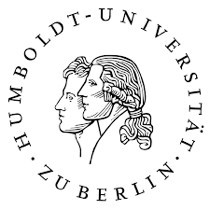 Humboldt Graduate School Workshops:
Humboldt Graduate School Workshops:Planning the Completion of your Dissertation
Open to all Doctoral Candidates within the Berlin University Alliance
Trainer: Mr. Mark Edwards
Date: 07. + 09.03.2022; 09:00–12:00
Target Group: Candidates in last year of doctorate
Language: English
Participation is free of charge.
-------------------------------------------------------
Scientific Writing & Publishing (Life Sciences & Natural Sciences)
Open to all Doctoral Candidates within the Berlin University Alliance
Trainer: Dr. Martina Michalikova
Date: 11.03.; 18.03.; 25.03.; 01.04.2022; 09:00–13:00
Target Group: Candidates from Life Sciences & Natural Sciences in all years of doctorate
Language: English
Participation is free of charge.
-------------------------------------------------------
Disputationstraining
Offen für alle Promovierenden der Humboldt-Universität
Trainer: Dr. Nele Rother
Date: 31.03.2022 und 01.04.2022; 09:00-16:00
Target Group: Promovierende in der Abschlussphase (alle Fachrichtungen)
Language: Deutsch
Die Teilnahme ist kostenfrei.
-------------------------------------------------------
Presenting Science Online
Open to Doctoral Candidates from Member Programs, Associated Programs and Cooperations
The workshop can then be attended by others, if it is not fully booked 14 days before beginning.
Trainer: Ms. Millie Baker
Date: 23.–25.02.2022; 10:00–15:00
Target Group: Candidates in the 1st and 2nd year of doctorate
Language: English
The workshop can then be attended, if it is not fully booked 14 days before beginning.
-------------------------------------------------------
Grant Application Writing
Open to Doctoral Candidates from Member Programs, Associated Programs and Cooperations
The workshop can then be attended by others, if it is not fully booked 14 days before beginning.
Trainer: Dr. Sabine Preusse
Date: 28.03.; 29.03.; 04.04.; 05.04.2022; 09:00–12:30
Target Group: Candidates in 2nd and 3rd year of doctorate
Language: English
02.02.2022Humboldt-Universität zu Berlin appoints Eva Unger to professorship

IRIS Adlerhof-Mitglied Eva Unger hat heute ihre Ernennungsurkunde zur W2-Professorin an der Humboldt-Universität zu Berlin erhalten. Prof. Dr. Eva Unger leitet am HZB ein großes Team und entwickelt aufskalierbare Technologien zur Herstellung von Perowskit-Halbleitern für preisgünstige und hocheffiziente Solarzellen.
Prof. Dr. Eva Unger forscht seit 2016 am HZB mit Affilierung an der Universität Lund in Schweden. Nach dem Aufbau ihres Forschungsteams im Rahmen einer BMBF-geförderten Nachwuchsgruppe, ist sie nun Leiterin der Abteilung "Lösungsprozessierung für Hybride Materialien und Bauelemente" am HZB. Mit ihrem Team entwickelt sie unter anderem Herstellungsverfahren, um Halbleiterschichten aus Perowskit auf größeren Flächen abzuscheiden. Außerdem forscht ihr Team an der Entwicklung von funktionellen Tinten für die Abscheidung von Perowskithalbleitern, analysiert Filmwachstumsprozesse und bringt die Entwicklung von kombinatorischen Syntheseverfahren voran.
Neben großflächigen Perowskitsolarzellprototypen arbeitet das Team mit anderen Forschergruppen am Helmholtz Zentrum Berlin an großflächigen Tandem-Solarmodulen, die Perowskit- mit Silizium-Schichten kombinieren. Außerdem engagiert sich Eva Unger für Open Science und Open Data-Projekte und baut gemeinsam mit vielen internationalen Partnern eine Datenbank für Perowskit-Solarzellen auf.
Eva Unger wurde Ende Januar auf eine W2 S-Professur an die Humboldt-Universität zu Berlin berufen, ermöglicht durch das Förderprogram der Helmholtz-Gemeinschaft für die Erstberufung exzellenter Wissenschaftlerinnen. Im Sommersemester wird sie einen Spezialisierungskurs zu "Die Chemie von Solarzellen" anbieten.
IRIS Adlershof gratuliert Frau Professorin Eva Unger ganz herzlich und freut sich auf die weitere fruchtbringende Zusammenarbeit.
18.01.2022Professor Jürgen P. Rabe zum Direktor von IRIS Adlershof wiedergewählt
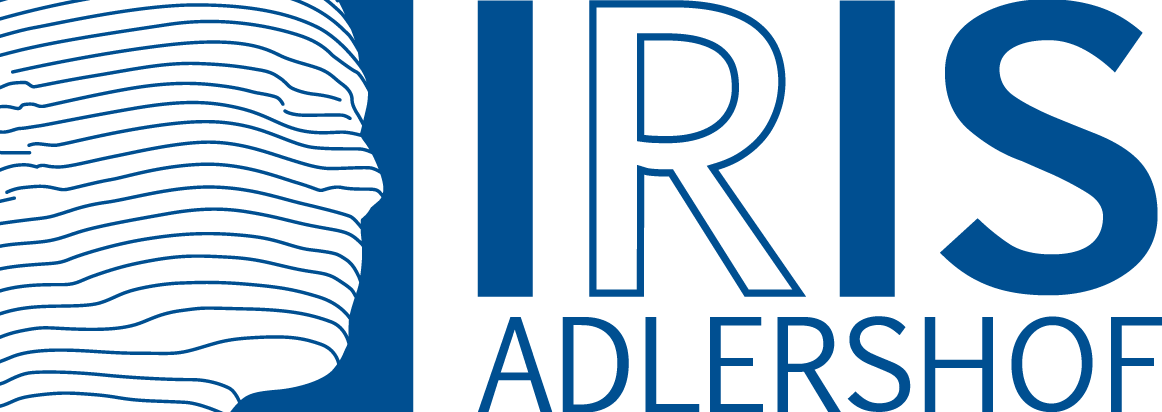 Die IRIS-Mitgliederversammlung hat für die dritte Förderphase von IRIS Adlershof (01.11.2021-31.10.2024) einen neuen IRIS-Rat gewählt. Prof. Jürgen P. Rabe wurde zum Direktor, Prof. Emil-List-Kratochvil und Prof. Norbert Koch zu seinen Stellvertretern wiedergewählt. Darüber hinaus wählte die Mitgliederversammlung Prof. Claudia Draxl, Prof. Stefan Hecht sowie Prof. Matthias Staudacher zu Ratsmitgliedern. Die Wahlen erfolgten einstimmig. Nach dem Wechsel von Dr. Julian Miczajka an das Max-Planck-Institut für Physik nimmt Dr. Sven Ramelow die Aufgaben des Nachwuchsvertreters im IRIS-Rat kommisarisch wahr.
Die IRIS-Mitgliederversammlung hat für die dritte Förderphase von IRIS Adlershof (01.11.2021-31.10.2024) einen neuen IRIS-Rat gewählt. Prof. Jürgen P. Rabe wurde zum Direktor, Prof. Emil-List-Kratochvil und Prof. Norbert Koch zu seinen Stellvertretern wiedergewählt. Darüber hinaus wählte die Mitgliederversammlung Prof. Claudia Draxl, Prof. Stefan Hecht sowie Prof. Matthias Staudacher zu Ratsmitgliedern. Die Wahlen erfolgten einstimmig. Nach dem Wechsel von Dr. Julian Miczajka an das Max-Planck-Institut für Physik nimmt Dr. Sven Ramelow die Aufgaben des Nachwuchsvertreters im IRIS-Rat kommisarisch wahr.
IRIS Adlershof gratuliert allen Ratsmitgliedern sehr herzlich zu ihrer Wahl und wünscht ihnen für ihre verantwortungsvolle Aufgabe viel Erfolg.
22.12.2021Drucken eines elektronischen Regenbogens - Kombination aus Farbdruck und chemischem Tuning ermöglicht gedruckte Spektrometer
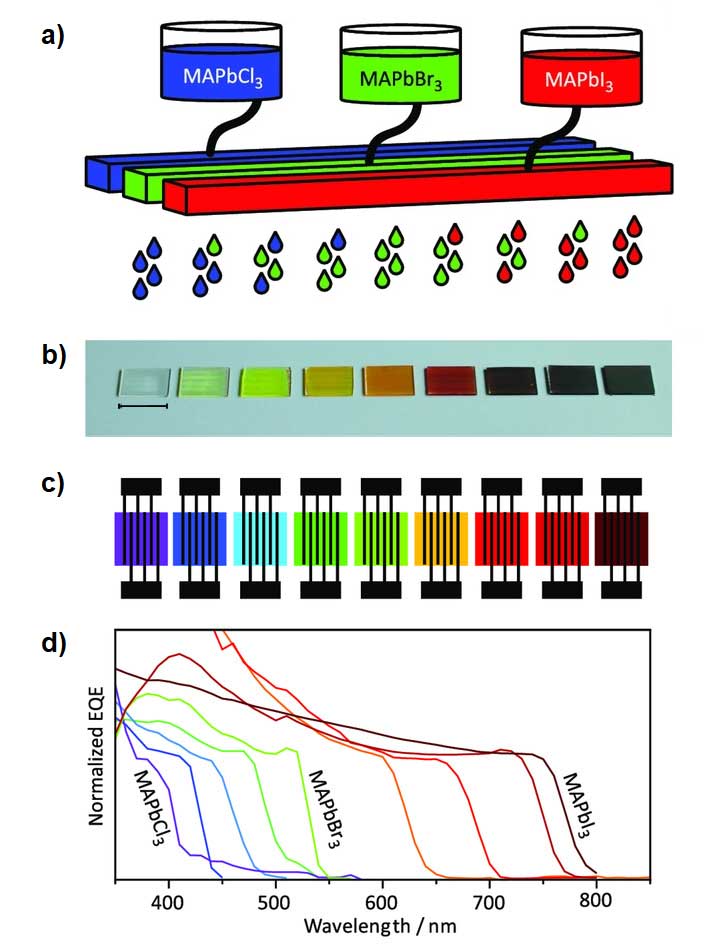 Forscher des Innovation Lab HySPRINT am Helmholtz-Zentrum Berlin (HZB) und vom IRIS Adlershof der Humboldt-Universität zu Berlin (HU) haben mit einem Tintenstrahldruckverfahren eine Reihe von Photodetektoren auf Basis eines hybriden Perowskit-Halbleiters hergestellt. Durch das Mischen von nur drei Tinten konnten die Forscher die Eigenschaften des Halbleiters während des Druckvorgangs präzise einstellen. Der Tintenstrahldruck ist in der Industrie bereits eine etablierte Herstellungsmethode, die eine schnelle und kostengünstige Verarbeitung von Lösungen ermöglicht. Die Erweiterung der Inkjet-Fähigkeiten von der großflächigen Beschichtung hin zur kombinatorischen Materialsynthese eröffnet neue Möglichkeiten für die Herstellung verschiedenartiger elektronischer Komponenten in einem einzigen Druckschritt.
Forscher des Innovation Lab HySPRINT am Helmholtz-Zentrum Berlin (HZB) und vom IRIS Adlershof der Humboldt-Universität zu Berlin (HU) haben mit einem Tintenstrahldruckverfahren eine Reihe von Photodetektoren auf Basis eines hybriden Perowskit-Halbleiters hergestellt. Durch das Mischen von nur drei Tinten konnten die Forscher die Eigenschaften des Halbleiters während des Druckvorgangs präzise einstellen. Der Tintenstrahldruck ist in der Industrie bereits eine etablierte Herstellungsmethode, die eine schnelle und kostengünstige Verarbeitung von Lösungen ermöglicht. Die Erweiterung der Inkjet-Fähigkeiten von der großflächigen Beschichtung hin zur kombinatorischen Materialsynthese eröffnet neue Möglichkeiten für die Herstellung verschiedenartiger elektronischer Komponenten in einem einzigen Druckschritt.
Wundermaterial Metallhalogenid-Perowskite
Metallhalogenid-Perowskite faszinieren Forscher in Wissenschaft und Industrie durch die große Bandbreite möglicher Anwendungen. Die Herstellung elektronischer Bauteile mit diesem Material ist besonders reizvoll, weil sie aus einer Lösung, d.h. aus einer Tinte heraus möglich ist. Kommerziell erhältliche Salze werden in einem Lösungsmittel gelöst und dann auf ein Substrat aufgebracht. Die Gruppe um Prof. Emil List-Kratochvil, Mitglied von IRIS Adlershof und Leiter einer gemeinsamen Forschungsgruppe des HZB und der HU, konzentriert sich darauf, solche Bauelemente mit Hilfe fortschrittlicher Herstellungsverfahren wie dem Tintenstrahldruck herzustellen. Forscher am HZB haben bereits Solarzellen und LEDs aus Perowskiten im Inkjetdruck hergestellt. Die Inkjet-Fähigkeiten wurden 2020 weiter ausgebaut, als die Gruppe von Dr. Eva Unger erstmals einen kombinatorischen Ansatz für den Inkjet-Druck nutzte, um verschiedene Perowskit-Zusammensetzungen auf der Suche nach einem besseren Solarzellenmaterial zu drucken.
In der aktuellen Arbeit fand das Team um Prof. Emil List-Kratochvil eine spannende Anwendung: eine Reihe gedruckter Perowskite als wellenlängenselektive Photodetektoren. "Kombinatorischer Tintenstrahldruck kann nicht nur zum Untersuchen verschiedener Materialzusammensetzungen für Solarzellenmaterialien verwendet werden," erklärt er, "sondern ermöglicht uns auch die Herstellung mehrerer, separater Bauelemente in einem einzigen Druckschritt." Im Hinblick auf ein industrielles Verfahren würde dies die Produktion mehrerer elektronischer Bauelemente in großem Maßstab ermöglichen. In Kombination mit gedruckten elektronischen Schaltkreisen würden die Photodetektoren ein einfaches Spektrometer bilden: papierdünn, auf eine beliebige Oberfläche gedruckt, potenziell flexibel, ohne die Notwendigkeit eines Prismas oder Gitters zur Trennung der eingehenden Wellenlängen.
Emil List-Kratochvil ist Professor für Hybride Bauelemente an der Humboldt-Universität zu Berlin, Mitglied von IRIS Adlershof und Leiter eines 2018 gegründeten Joint Labs, das die HU gemeinsam mit dem HZB betreibt. Darüber hinaus arbeitet ein Team um List-Kratochvil gemeinsam mit der HZB-Wissenschaftlerin Dr. Eva Unger, die seit einigen Tage ebenso Mitglied von IRIS Adlershof ist, im Helmholtz-Innovationslabor HySPRINT am HZB an der Entwicklung von Beschichtungs- und Druckverfahren für hybride Perowskite.
Using Combinatorial Inkjet Printing for Synthesis and Deposition of Metal Halide Perovskites in Wavelength‐Selective PhotodetectorsV.R.F. Schröder, F. Hermerschmidt, S. Helper, C. Rehermann, G. Ligorio, H. Näsström, E.L. Unger, and E.J.W. List-Kratochvil
Adv. Eng. Mater. (2021) 2101111 OPEN
 ACCESS
ACCESSDOI: 10.1002/adem.202101111
mehr...
15.12.2021Prof. Ulf Leser wird neues IRIS-Mitglied
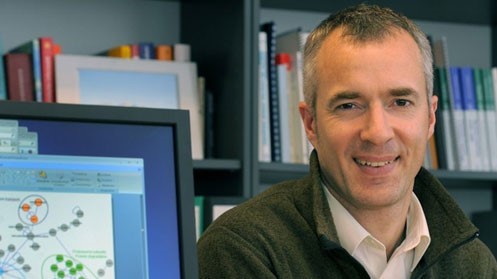 Wir sind hoch erfreut, Prof. Dr. Ulf Leser als weiteres Mitglied von IRIS Adlershof willkommen zu heißen.
Wir sind hoch erfreut, Prof. Dr. Ulf Leser als weiteres Mitglied von IRIS Adlershof willkommen zu heißen.
Er ist ordentlicher Professor am Institut für Informatik der Humboldt-Universität zu Berlin. Seine Forschungsschwerpunkte sind biomedizinisches Datenmanagement und Text Mining, Infrastrukturen von groß angelegten wissenschaftlichen Datenanalysen und statistische Bioinformatik mit Schwerpunkt Krebsforschung.
Er ist Sprecher des Sonderforschungsbereichs Foundations of Workflows for Large-Scale Scientific Data Analysis (FONDA) und des Verbundforschungsprojekts Comprehensive Data Integration for Precision Oncology (PREDICT). Von 2014 - 2019 war er Sprecher des Graduiertenkollegs Service-oriented Architectures for Health Care Systems (SOAMED). Darüber hinaus ist er derzeit Principal Investigator in den interdisziplinären Graduiertenschulen Berlin School of Integrative Oncology (BSIO) und Computational Methods for Precision Oncology (CompCancer), in der Heibrids Graduate School an Data Science, der Forschungseinheit Beyond the Exome und dem Einstein Center for Digital Future Berlin (ECDF).
IRIS Adlershof freut sich auf eine gute und fruchtbringende Zusammenarbeit.
10.12.2021Kultusministerkonferenz und DZLM vereinbaren Zehnjahres-Programm für den Mathematikunterricht
Die Kultusministerkonferenz verabschiedete am 9. Dezember 2021 einstimmig das umfassende Zehnjahres-Programm „QuaMath - Unterrichts- und Fortbildungs-Qualität in Mathematik entwickeln“ zur Stärkung der mathematischen Bildung in Deutschland. Sie reagiert auf das Problem, dass nur knapp die Hälfte aller Jugendlichen die mathematischen Kompetenzen erreicht, die die Kultusministerkonferenz (KMK) in ihren Regelstandards festgelegt hat und fördert damit eine wegweisende Weiterentwicklung des Mathematikunterrichts.
IRIS Adlershof-Mitglied Professor Dr. Jürg Kramer, Abteilungsdirektor am IPN, und ehemaliger Leiter des DZLM, sieht in dem QuaMath-Programm einen bildungspolitischen Meilenstein: „Die Herausforderungen im Mathematikunterricht wurden identifiziert und auch wissenschaftlich nachgewiesen. Die Bündelung vorhandener Ressourcen mit erheblichen zusätzlichen Mitteln durch die Kultusministerkonferenz zeigt, dass sie die Probleme aktiv angeht. In enger Kooperation der Mathematik-Verantwortlichen der Länder mit der Fortbildungsforschung und -praxis konnte das Programm nun über Ländergrenzen hinweg etabliert werden. Denn nur in Zusammenarbeit kann erkannt werden, was wirklich gebraucht wird.“
Das QuaMath-Programm wird vom Deutschen Zentrum für Lehrerbildung Mathematik (DZLM) am Leibniz-Institut für die Pädagogik der Naturwissenschaften und Mathematik (IPN) forschungsbasiert entwickelt und gemeinsam mit den Ländern umgesetzt. Vor allem mit Anregungen zur Unterrichtsentwicklung, fachdidaktisch fundierten Fortbildungsmaßnahmen und durch die Vernetzung aller Beteiligten soll das Programm mehr als 10.000 Schulen erreichen.
Für das QuaMath-Programm erhält das DZLM ab 2023 eine Fördersumme in Höhe von 17,6 Mio. Euro für die ersten 5,5 Jahre. Die Länder investieren zudem jährlich weitere 5,5 Mio. Euro für Länderkoordination sowie Multiplikatorinnen und Multiplikatoren. mehr...
IRIS Adlershof gratuliert ganz herzlich zu diesem wunderbaren Erfolg!
08.12.2021IRIS Adlershof wird durch drei neue Mitglieder verstärkt
Der IRIS-Rat hatte beschlossen, weiteren Wissenschaftlern eine ordentliche Mitgliedschaft im IRIS Adlershof anzubieten. Wir freuen uns sehr, dass unser Angebot angenommen wurde und dürfen sie Ihnen vorstellen:

Dr. Eva Unger ist Leiterin der Abteilung Lösungsprozesse für hybride Materialien und Bauelemente am Helmholtz Zentrum Berlin für Materialien und Energie und arbeitet schon seit einiger Zeit im Rahmen des Joint Lab Generative manufacturing processes for hybrid components (GenFab) eng mit IRIS Adlershof zusammen. Insbesondere interessiert Sie sich für skalierbare Abscheidungsmethoden von hochwertigen Halbleitern wie Metallhalogenid-Perowskite und ein vertieftes Verständnis der Schichtbildung. Eva Unger hat kürzlich einen Ruf auf eine Professur am Institut für Chemie der HU erhalten.
Der Theoretische Physiker und Materialwissenschaftler Professor Matthias Scheffler, Leiter des Novel Materials Discovery (NOMAD) Labors des Fritz-Haber-Instituts der Max-Planck-Gesellschaft und Honorarprofessor am Institut für Physik der HU, forscht zu fundamentalen Aspekten der chemischen und physikalischen Eigenschaften von Oberflächen sowie zur methodischen Entwicklungen der künstlichen Intelligenz für Fragestellungen der Materialwissenschaften. Seit 2020 leitet er das europäische Excellenzcenter NOMAD und ist Co-Sprecher des NFDI Konsortiums FAIRmat.
Die Physikerin Julia Stähler ist Professorin am Institut für Chemie der HU mit dem Forschungsschwerpunkt Ultrakurzzeitspektroskopie an nanostrukturierten Materialien, insbesondere auch an anorganisch/organischen Hybridsystemen. Sie ist Teilprojektleiterin im Sonderforschungsbereich 951 HIOS, einem der Leuchtturmprojekte von IRIS Adlershof.
Dazu kommen zwei weitere, aber nicht ganz neue Mitglieder: Die beiden bisherigen Juniormitglieder, Prof. Dr. Michael J. Bojdys und Dr. Valentina Forini, haben eine volle Mitgliedschaft erhalten, womit IRIS Adlershof nun 27 Mitglieder hat.
IRIS Adlershof gratuliert seinen neuen Mitgliedern sehr herzlich und freut sich auf eine gute und fruchtbringende Zusammenarbeit.
07.12.2021IRIS Adlershof konnte drei neue Junior-Mitglieder gewinnen
IRIS Adlershof ist erfreut die drei Nachwuchswissenschaftler Dr. Oliver Dumele, Dr. Nichol Furey, und Dr. Sebastian Heeg als Juniormitglieder willkommen zu heißen.

Dr. Oliver Dumele ist Leiter einer Liebig-Nachwuchsgruppe am Institut für Chemie der HU. Er ist ein organischer Synthesechemiker mit Expertise in supramolekularer Chemie und Selbstorganisationssystemen. Er glaubt, dass 2D-Schichtstrukturen faszinierende supramolekulare Plattformen sind.
Dr. Nichol Furey ist Freigeist-Fellow der Volkswagenstiftung am Institut für Physik der HU und am IRIS Adlershof. Sie forscht zur Algebraische Struktur der Elementarteilchenphysik sowie zu Oktonionen und zum Standardmodell der Teilchenphysik.
Dr. Sebastian Heeg leitet eine Emmy-Noether-Nachwuchsgruppe am Institut für Physik der HU. Er interessiert sich für die Untersuchung niederdimensionaler Festkörpersysteme, beispielsweise Graphene und Nanotubes, mit optischer Spektroskopie.
IRIS Adlershof gratuliert seinen neuen Junior-Mitgliedern sehr herzlich und freut sich auf eine gute und fruchtbringende Zusammenarbeit.
06.12.2021Verlängerung von IRIS Adlershof
 Das Kuratorium der Humboldt-Universität zu Berlin hat am letzten Freitag die Verlängerung von IRIS Adlershof bis zum 31.10.2024 beschlossen. Es folgt damit einem entsprechenden Vorschlag des Akademischen Senats der HU, der sich auf die erfolgreiche Evaluation von IRIS Adlershof durch eine externe Expertenkommission gründet.
Das Kuratorium der Humboldt-Universität zu Berlin hat am letzten Freitag die Verlängerung von IRIS Adlershof bis zum 31.10.2024 beschlossen. Es folgt damit einem entsprechenden Vorschlag des Akademischen Senats der HU, der sich auf die erfolgreiche Evaluation von IRIS Adlershof durch eine externe Expertenkommission gründet.
Wir freuen uns sehr über die mit dieser Entscheidung verbundene Möglichkeit der Fortführung der bisherigen erfolgreichen interdisziplinären naturwissenschaftlichen Forschung.
03.12.2021IRIS Adlershof und INAM e.V. fördern Startups im Bereich Materialwissenschaften mit dem Inkubator "AdMaLab – The Berlin Hardware and Materials Lab"
 Das Land Berlin stellt dem Innovation Network for Advanced Materials (INAM e.V.) und seinen Kooperationspartnern, wie dem IRIS Adlershof der Humboldt-Universität zu Berlin, rund 1,1 Millionen EUR zur Verfügung, um ein auf materialwissenschaftliche Gründungen speziell zugeschnittenes Inkubatorprogramm aufzusetzen. Neben einem begleiteten Zugang zum hochwertig ausgestatteten und neu eröffneten Forschungsbau des IRIS Adlershof und zum Innovation Lab HySPRINT des Helmholtz-Zentrum Berlin, werden Stipendien zur Verfügung gestellt, die es den Gründerinnen und Gründern ermöglichen, sich der Entwicklung ihrer Geschäftsideen und Produkte zu widmen.
Das Land Berlin stellt dem Innovation Network for Advanced Materials (INAM e.V.) und seinen Kooperationspartnern, wie dem IRIS Adlershof der Humboldt-Universität zu Berlin, rund 1,1 Millionen EUR zur Verfügung, um ein auf materialwissenschaftliche Gründungen speziell zugeschnittenes Inkubatorprogramm aufzusetzen. Neben einem begleiteten Zugang zum hochwertig ausgestatteten und neu eröffneten Forschungsbau des IRIS Adlershof und zum Innovation Lab HySPRINT des Helmholtz-Zentrum Berlin, werden Stipendien zur Verfügung gestellt, die es den Gründerinnen und Gründern ermöglichen, sich der Entwicklung ihrer Geschäftsideen und Produkte zu widmen.
Ab Freitag, 3. Dezember 2021, 12:00 Uhr können sich Gründerinnen und Gründer mit Fokus auf Neue Materialien auf einen Platz im Inkubatorprogramm bewerben. Nähere Informationen zum Bewerbungsprozess finden sich unter www.inam.berlin/admalab. Neben der innovativen operativen Tätigkeit wird auch ein intensives Mentoring- und Trainingsprogramm angeboten, das durch die Humboldt Innovation GmbH und Expertinnen und Experten aus verschiedenen Fachbereichen unterstützt wird.
Am 15. Dezember 2021 um 10.00Uhr stellen die Projektbeteiligten das Stipendium im Rahmen eines Webinars vor. Interessenten können sich hier registrieren.
Das Land Berlin hat mit dem Berliner Startup-Stipendium, aus dem die Gelder fließen, ein Förderprogramm ausgelobt, um aus den innovativen Ideen von Gründungswilligen Produkte entstehen zu lassen. Mit den Fördergeldern aus dem Europäischen Sozialfonds und des Landes Berlin können Stipendiaten in verschiedenen Themenbereichen ihre Geschäftsideen vorantreiben und es konnten bereits über 120 innovative Gründungsvorhaben unterstützen werden. Dieser Erfolg kann nun mit dem AdMaLab im Bereich der Materialwissenschaften weiter ausgebaut werden.
23.11.2021Stipendien für den Übergang vom Studium zur Promotion
Die Humboldt-Universität vergibt im Rahmen der Exzellenzstrategie erneut Humboldt Research Track Scholarships.
Das sechsmonatige Übergangsstipendium richtet sich an hervorragende Absolventinnen und Absolventen oder Studierende kurz vor Abschluss eines Masterstudiums und dient der Vorbereitung eines Promotionsvorhabens. Es umfasst eine monatliche Förderung in Höhe von 800 Euro.
Um mehr Promotionsinteressierten mit Behinderung oder chronischer Krankheit den Weg zu einer Promotion zu eröffnen, werden Bewerbungen aus dieser Zielgruppe besonders berücksichtigt.
Die aktuelle Bewerbungsfrist läuft bis zum 15. Januar 2022 für einen Förderbeginn ab 1. April 2022.
mehr...
19.10.2021Stefan Hecht zum Mitglied der European Academy of Sciences gewählt
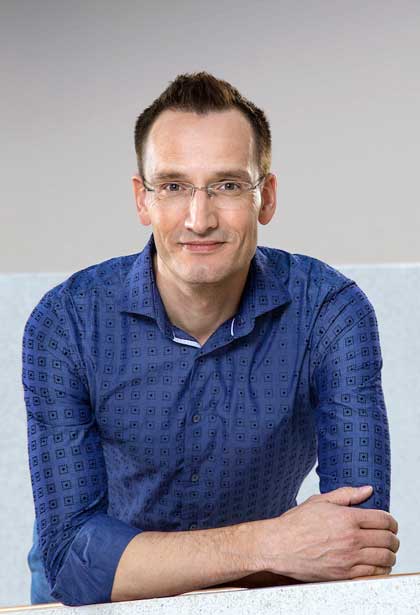 Die European Academy of Sciences (EURASC) hat Prof. Stefan Hecht, Ph.D., Direktor des DWI - Leibniz-Institut für Interaktive Materialien, Gastprofessor am Institut für Chemie der HU Berlin sowie Gründungsmitglied von IRIS Adlershof, zum Fellow ernannt.
Die European Academy of Sciences (EURASC) hat Prof. Stefan Hecht, Ph.D., Direktor des DWI - Leibniz-Institut für Interaktive Materialien, Gastprofessor am Institut für Chemie der HU Berlin sowie Gründungsmitglied von IRIS Adlershof, zum Fellow ernannt.
Die E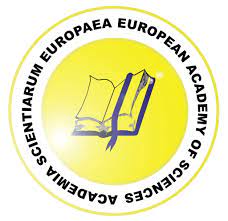 URASC widmet sich wissenschaftlicher Exzellenz sowie hochmoderner Grundlagenforschung und der interdisziplinären Zusammenarbeit, die die Basis für jede wissenschaftliche und technologische Innovation darstellt. Sie ist ein gemeinnütziger und unabhängiger Zusammenschluss der angesehensten europäischen Wissenschaftlerinnen und Wissenschaftler, die Spitzenforschung und die Entwicklung fortschrittlicher Technologien betreiben, mit über 770 Mitgliedern in verschiedenen Fachbereichen, unter ihnen auch Nobelpreisträger.
URASC widmet sich wissenschaftlicher Exzellenz sowie hochmoderner Grundlagenforschung und der interdisziplinären Zusammenarbeit, die die Basis für jede wissenschaftliche und technologische Innovation darstellt. Sie ist ein gemeinnütziger und unabhängiger Zusammenschluss der angesehensten europäischen Wissenschaftlerinnen und Wissenschaftler, die Spitzenforschung und die Entwicklung fortschrittlicher Technologien betreiben, mit über 770 Mitgliedern in verschiedenen Fachbereichen, unter ihnen auch Nobelpreisträger.
„Es ist eine besondere Ehre, diesem illustren Kreis angehören zu dürfen. Die Ernennung bekräftigt sowohl die Anerkennung unserer Forschungsarbeiten als auch deren gesellschaftlichen Nutzen“, erläutert Stefan Hecht. Vor allem seine jüngsten Ergebnisse und Erfolge im Bereich des 3D-Drucks, genauer der Entwicklung der Xolografie, reflektieren diese Leistung. Das Verfahren basiert auf der lichtinduzierten Härtung einer transparenten hochviskosen Harzmischung und zwar nur an Stellen, in denen sich zwei unterschiedliche Farben bzw. Wellenlängen des Lichtes kreuzen. Die sich kreuzenden (X) Lichtstrahlen erzeugen dabei das gesamte (holos) Objekt in einem Druck (grafie), daher der Name „Xolografie“.
IRIS Adlershof freut sich über diese besondere Auszeichnung und gratuliert seinem Mitglied herzlich.
mehr...
15.10.2021Zündende Elektrolumineszenz in Poly(triazinimid)-Filmen
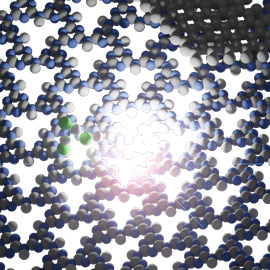 Ein Team von Forschenden des King's College London, der Humboldt-Universität zu Berlin, der Carl von Ossietzky Universität Oldenburg und des Helmholtz-Zentrums Berlin (HZB), unter Leitung von Prof. Michael J. Bojdys, Mitglied von IRIS Adlershof, hat die Synthese, Struktur und optischen Eigenschaften von Poly(triazinimid), einem Mitglied der Familie der graphitischen Kohlenstoffnitride, untersucht. Ihre Fortschritte bei der Materialqualität und Verarbeitung ermöglichten den Bau der ersten einschichtigen, organischen Leuchtdiode (OLED) mit einem in Lösung verarbeiteten graphitischen organischen Material als metallfreie Emissionsschicht.
Ein Team von Forschenden des King's College London, der Humboldt-Universität zu Berlin, der Carl von Ossietzky Universität Oldenburg und des Helmholtz-Zentrums Berlin (HZB), unter Leitung von Prof. Michael J. Bojdys, Mitglied von IRIS Adlershof, hat die Synthese, Struktur und optischen Eigenschaften von Poly(triazinimid), einem Mitglied der Familie der graphitischen Kohlenstoffnitride, untersucht. Ihre Fortschritte bei der Materialqualität und Verarbeitung ermöglichten den Bau der ersten einschichtigen, organischen Leuchtdiode (OLED) mit einem in Lösung verarbeiteten graphitischen organischen Material als metallfreie Emissionsschicht.
Organische Halbleiter haben in den letzten Jahrzehnten in akademischen und industriellen Kreisen großes Interesse geweckt. Grund dafür sind ihre vorteilhaften Eigenschaften wie (i) ein hoher Absorptionskoeffizient im Vergleich zu herkömmlich verwendetem Silizium sowie (ii) eine weniger energieintensive Herstellung und (iii) die Zusammensetzung aus Elementen, die auf der Erde reichlich vorhanden sind. Die Fortschritte auf diesem Forschungsgebiet versprechen neue, kosten- und energieeffiziente Technologien für die Unterhaltungselektronik, intelligente Verpackungen und flexible Lichtquellen.
Bisher erforschte organische Halbleiter leiden häufig unter Degradationsprozessen und Defekten, insbesondere wenn sie elektrochemisch verändert ("dotiert") werden, aufgrund von Dotierstoffdrift und -migration oder aufgrund von Oxidation, wenn sie atmosphärischen Bedingungen ausgesetzt sind. Die einzigartigen Eigenschaften von Poly(triazinimid) ermöglichen es der Forschung, die Probleme anzugehen, die herkömmliche organische Halbleiter plagen. Poly(triazinimid) ist sehr stabil gegenüber Hitze und Luft. Darüber hinaus ermöglicht die graphitische Morphologie von Poly(triazinimid) die Exfoliierung des Materials in dünne, in Lösung verarbeitbare Schichten und verringert gleichzeitig die Migration und Drift von chemisch gebundenen Dotierstoffen.
"Mit der verbesserten Materialqualität sind wir nun in der Lage, tiefer in die empfindlicheren Merkmale dieses Materials einzutauchen, wie etwa dessen elektronische Struktur und Schwingungsmodi. Dies wird unser Verständnis dieses Materials sowie verwandter Materialien erheblich verbessern und uns dabei helfen, die OLED-Leistung zu verbessern und über zukünftige, hochwertige Anwendungen von Poly(triazinimid) nachzudenken", sagt David Burmeister, Doktorand am bojdysLAB.
Diese Arbeit wurde veröffentlicht in:
“Optimized synthesis of solution-processable crystalline poly(triazine imide) with minimized defects for OLED application” Burmeister, D.; Tran, H. A.; Müller, J.; Guerrini, M.; Cocchi, C.; Plaickner J.; Kochovski, Z.: List-Kratochvil, E.; Bojdys,* M. J. Angew. Chem. Int. Ed. 2021.
DOI: 10.1002/anie.202111749
10.10.2021Erfolgreicher Projektstart des NFDI-Konsortiums FAIRmat
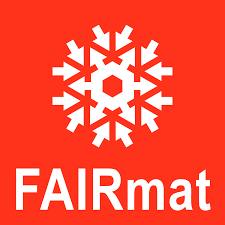 Eine Woche ist es nun alt, das NFDI-Konsortium FAIRmat, unter der Leitung von HU-Professorin, dem Mitglied von IRIS Adlershof, Claudia Draxl. Die Sprecherin blickt zufrieden auf den Projektstart:
Eine Woche ist es nun alt, das NFDI-Konsortium FAIRmat, unter der Leitung von HU-Professorin, dem Mitglied von IRIS Adlershof, Claudia Draxl. Die Sprecherin blickt zufrieden auf den Projektstart:
„Wir konnten 30 engagierte neue Mitarbeiter*innen begrüßen und der Einzug in unser neues Headquarter im IRIS Haus steht kurz bevor. Bereits ein erstes großes Kolloquium mit dem renommierten FAIR-Data-Experten Barend Mons und insgesamt 130 online und offline Teilnehmenden konnten wir realisieren. Sowohl die Antragstellung als auch der gelungene Projektstart wäre ohne die Unterstützung von IRIS Adlershof nicht möglich gewesen.“
FAIRmat („FAIR Data Infrastructure for Condensed-Matter Physics and the Chemical Physics of Solids“) ist Teil der Nationalen Forschungsdateninfrastruktur (NFDI). Die NFDI ist ein bundesweites Netzwerk, das derzeit aufgebaut und von 2019 bis 2028 mit bis zu 90 Millionen Euro pro Jahr von Bund und Ländern gefördert wird, um Forschungsdaten systematisch zu verwalten.
FAIRmat repräsentiert das vielfältige Forschungsgebiet der Sektion Kondensierte Materie (SKM) der Deutschen Physikalischen Gesellschaft (DPG) sowie die chemische Physik von Festkörpern. Das Projekt erhält Fördermittel für den Aufbau einer Infrastruktur, die es ermöglicht, materialwissenschaftliche Daten FAIR zu machen: auffindbar (Findable), zugänglich (Accessible), interoperabel (Interoperable) und wiederverwendbar (Re-purposable). Damit wird es Forschenden in Deutschland und darüber hinaus ermöglichen, Daten langfristig zu speichern, zu teilen, zu finden und zu analysieren.
FAIRmat hat in der ersten Phase eine Laufzeit von fünf Jahren. Insgesamt 60 Projektleiter*innen aus 34 deutschen Institutionen werden dabei zusammenarbeiten. Neben der HU Berlin sind auch das Leibniz-Institut für Kristallzüchtung (IKZ), das Max Planck Institute for Chemical Energy Conversion (MPI CEC), das Fritz-Haber-Institut der Max-Planck-Gesellschaft (FHI), die Technische Universität München (TUM), das Karlsruher Institut für Technology (KIT) und der gemeinnützigen Verein FAIR-DI e.V. als Mitantragsteller an dem Projekt beteiligt.
08.07.2021 Prof. Jan Plefka in den Senat der DFG gewählt
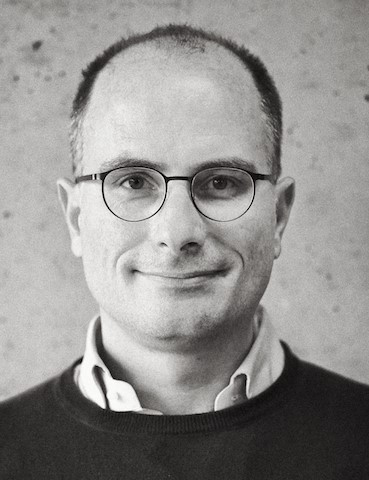 Die Mitgliederversammlung der Deutschen Forschungsgemeinschaft (DFG) hat am 07.07.21 auf ihrer Sitzung im Rahmen der virtuellen DFG-Jahresversammlung vier neue Mitglieder in den Senat der größten Forschungsförderorganisation und zentralen Selbstverwaltungseinrichtung der Wissenschaft in Deutschland gewählt. Fünf Senatsmitglieder wurden für eine weitere Amtszeit gewählt. Der Senat ist das zentrale wissenschaftliche Gremium, in dem über alle Angelegenheiten der DFG von wesentlicher Bedeutung beraten und beschlossen wird, soweit sie nicht dem Hauptausschuss vorbehalten sind.
Die Mitgliederversammlung der Deutschen Forschungsgemeinschaft (DFG) hat am 07.07.21 auf ihrer Sitzung im Rahmen der virtuellen DFG-Jahresversammlung vier neue Mitglieder in den Senat der größten Forschungsförderorganisation und zentralen Selbstverwaltungseinrichtung der Wissenschaft in Deutschland gewählt. Fünf Senatsmitglieder wurden für eine weitere Amtszeit gewählt. Der Senat ist das zentrale wissenschaftliche Gremium, in dem über alle Angelegenheiten der DFG von wesentlicher Bedeutung beraten und beschlossen wird, soweit sie nicht dem Hauptausschuss vorbehalten sind.
Insgesamt gehören dem Senat 39 Mitglieder an. Von ihnen werden 36 von der Mitgliederversammlung gewählt; sie sind zugleich auch die wissenschaftlichen Mitglieder des Hauptausschusses.
Für den Bereich Theoretische Physik wurde Jan Plefka, Professor am Institut für Physik der Humboldt-Universität zu Berlin und IRIS Mitglied, gewählt. Bereits seit 2016 ist er Mitglied im Senatsausschuss für die Sonderforschungsbereiche der DFG
Wir gratulieren Herrn Plefka herzlich und wünschen viel Freude und Erfolge in diesem neuen Aufgabengebiet!
02.07.2021„FAIRmat“: Zukunftsorientierte Infrastruktur für eine Schatzkiste an Materialdaten
 Das FAIRmat-Konsortium unter der Leitung von Claudia Draxl, Professorin der Humboldt-Universität, ist eines der Projekte, die heute von der Gemeinsamen Wissenschaftskonferenz (GWK) in einem mehrstufigen Wettbewerb der Nationalen Forschungsdateninfrastruktur (NFDI) ausgewählt wurden. Das Projekt erhält damit Fördermittel für den Aufbau einer Infrastruktur, die es ermöglicht, materialwissenschaftliche Daten FAIR zu machen: auffindbar (Findable), zugänglich (Accessible), interoperabel (Interoperable) und wiederverwendbar (Re-purposable). Damit wird es Forschenden in Deutschland und darüber hinaus ermöglicht, Daten langfristig zu speichern, zu teilen, zu finden und zu analysieren. Während der Laufzeit von fünf Jahren werden insgesamt 60 Projektleiter*innen aus 34 deutschen Institutionen gemeinsam im FAIRmat-Konsortium arbeiten.
Das FAIRmat-Konsortium unter der Leitung von Claudia Draxl, Professorin der Humboldt-Universität, ist eines der Projekte, die heute von der Gemeinsamen Wissenschaftskonferenz (GWK) in einem mehrstufigen Wettbewerb der Nationalen Forschungsdateninfrastruktur (NFDI) ausgewählt wurden. Das Projekt erhält damit Fördermittel für den Aufbau einer Infrastruktur, die es ermöglicht, materialwissenschaftliche Daten FAIR zu machen: auffindbar (Findable), zugänglich (Accessible), interoperabel (Interoperable) und wiederverwendbar (Re-purposable). Damit wird es Forschenden in Deutschland und darüber hinaus ermöglicht, Daten langfristig zu speichern, zu teilen, zu finden und zu analysieren. Während der Laufzeit von fünf Jahren werden insgesamt 60 Projektleiter*innen aus 34 deutschen Institutionen gemeinsam im FAIRmat-Konsortium arbeiten.
Die Erkenntnisse aus der Physik der kondensierten Materie, der Chemie und den Materialwissenschaften bestimmen maßgeblich den Wohlstand und Lebensstil unserer Gesellschaft: Neue Produkte und Erzeugnisse in den Bereichen Energie, Umwelt, Gesundheit, Mobilität und IT sind auf verbesserte oder gar neuartige Materialien angewiesen. Die enormen Mengen an Forschungsdaten, die in diesen Wissenschaftsbereichen täglich produziert werden, sind daher ein Schatz des 21. Jahrhunderts. Dieser Schatz ist jedoch wenig wert, wenn die Daten nicht umfassend beschrieben und verfügbar gemacht werden. Wie können wir dieses Rohmaterial veredeln, also die Daten in Wissen und Wert verwandeln? Dafür ist eine FAIRe Dateninfrastruktur ein Muss.

(HU Berlin)
Hier setzt FAIRmat ("FAIR Data Infrastructure for Condensed-Matter Physics and the Chemical Physics of Solids") an, ein Konsortium unter der Leitung von HU-Professorin und IRIS Adlershof Mitglied Claudia Draxl. Mit dem Aufbau einer FAIRen Forschungsdateninfrastruktur für die genannten Gebiete will das Konsortium den Materialdatenschatz bergen und damit zu einem grundlegenden Wandel in Wissenschaft und Forschung beitragen. Neben der HU Berlin sind auch das Leibniz-Institut für Kristallzüchtung (IKZ), das Max Planck Institute for Chemical Energy Conversion (MPI CEC), das Fritz-Haber-Institut der Max-Planck-Gesellschaft (FHI), die Technische Universität München (TUM), das Karlsruher Institut für Technology (KIT) und der FAIR-DI e.V. als Mitantragsteller an dem Projekt beteiligt.
FAIRmats stellvertretender Sprecher Matthias Scheffler vom Fritz-Haber-Institut der Max-Planck-Gesellschaft erklärt: "Wir interpretieren das Akronym FAIR zukunftsorientiert: Forschungsdaten sollten auffindbar (Findable) und für Künstliche Intelligenz bereit (Artificial-Intelligence Ready) sein. Diese neue Perspektive wird die wissenschaftliche Kultur und Praxis voranbringen."
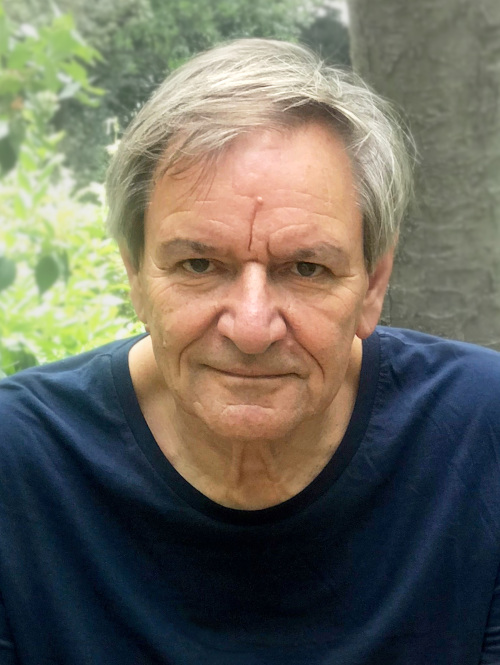
Matthias Scheffler (FHI Berlin)
Das FAIRmat-Konsortium ist Teil der Nationalen Forschungsdateninfrastruktur (NFDI). Die NFDI ist ein bundesweites Netzwerk, das derzeit aufgebaut und von 2019 bis 2028 mit bis zu 90 Millionen Euro pro Jahr von Bund und Ländern gefördert wird, um Forschungsdaten systematisch zu verwalten. Dass die Humboldt-Universität beim Aufbau dieser bedeutenden Infrastruktur eine führende Rolle einnimmt, freut Peter Frensch, Vizepräsident für Forschung der Humboldt-Universität Berlin: „Mit dem NOMAD HUB - dem NOMAD Data Center at HU Berlin - bereiten wir hier in Berlin bereits das Hauptquartier für den Bereich der NFDI-Infrastruktur vor, der sich mit materialwissenschaftlicher Grundlagenforschung beschäftigt."
FAIRmat deckt ein breites Spektrum an Forschungsgebieten in der Physik und verwandten Bereichen ab. Dementsprechend vielfältig und heterogen sind Grundkonzepte und Messtechniken, Arbeitsweisen und Forschungsdaten. Hier ist der Bedarf an einer FAIRen Dateninfrastruktur äußerst dringlich. FAIRmat fördert die effiziente gemeinsame Nutzung von Forschungsdaten und deren Aufbereitung für die Wiederverwendung und Analyse durch Werkzeuge der Künstlichen Intelligenz (KI). Dadurch ermöglicht FAIRmat ein neues Niveau und eine neue Qualität der Wissenschaft.
Dabei verfolgt das Konsortium einen Bottom-up-Ansatz, der sich an den Bedürfnissen der Wissenschaftler*innen orientiert und bereits jetzt große Unterstützung aus der Community erfährt. So ist FAIRmat in die Sektion Kondensierte Materie der Deutschen Physikalischen Gesellschaft ebenso gut eingebunden wie in die Max-Planck-Gesellschaft (z.B. Big-Data-Netzwerk, CPTS), in eine Vielzahl von Universitäten und Instituten sowie in verschiedene internationale Aktivitäten (z.B. RDA, GO FAIR, EOSC). FAIRmat basiert auf den umfassenden Erfahrungen von Claudia Draxl und Matthias Scheffler mit der weltweit größten Dateninfrastruktur der computergestützten Materialwissenschaften, dem Novel Materials Discovery (NOMAD) Laboratory, welches seit 2014 online ist.

"Natürlich suchen wir jetzt hochmotivierte Wissenschaftler*innen aus den Domänenwissenschaften und der IT, die unsere Begeisterung für einen Paradigmenwechsel in der grundlegenden Materialwissenschaft teilen, um unser Team zu verstärken und die FAIRmat-Prinzipien gemeinsam zu realisieren", sagt Claudia Draxl. Ihr Begrüßungsvideo können Sie sich hier ansehen.
Mehr Informationen zu FAIRmat.
Stellenausschreibungen für FAIRmat.
Mehr Informationen zur NFDI.
04.06.2021Lichtblick für die Quantenforschung
Ein IRIS-Forschungsteam und seine Partner haben erstmals die Teilchenaustauschphase von Photonen direkt gemessen.
Die Teilchen, denen das Forscherteam auf der Spur ist, sind schwer zu fassen. Die Physiker untersuchen die Quantenteilchen der elektromagnetischen Wellen, auch Photonen genannt, aus denen Licht besteht. „Dass Photonen bosonisch sind, konnte bislang nur durch indirekte Messungen und mathematische Berechnungen gezeigt werden“, sagt Kurt Busch. „In unserem jüngsten Experiment haben wir die Teilchenaustauschphase von Photonen erstmals direkt gemessen und haben damit einen direkten Beleg für ihren bosonischen Charakter erbracht.“
Das Experiment etabliert eine neue Methode zur Erzeugung und Zertifizierung von Quanten-Zuständen von Licht. Dies ist sehr wichtig im neuen Gebiet der Quanteninformationsverarbeitung, auf deren Basis derzeit neuartige, wesentlich leistungsfähigere Computer entwickelt werden.
mehr...
19.05.2021Neues Video über das GRK 2575 online
Ein gutes Beispiel für die erfolgreiche Förderung von Nachwuchsforschern am IRIS Adlershof ist Graduiertenkolleg 2575 "Rethinking Quantum Field Theory". In diesem Video geben Mitglieder einen kurzen Einblick in Ihre Arbeit:
12.05.2021NFDI Konsortium FAIRmat zur Förderung empfohlen
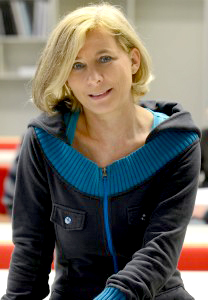 Ein
Ein Team um Claudia Draxl, Mitglied von IRIS Adlershof, hat einen zentralen Meilenstein erreicht: Das von Draxl konstituierte Konsortium FAIRmat wurde am 10. Mai von dem NFDI-Expertengremium der Deutschen Forschungsgemeinschaft (DFG) zur Förderung empfohlen.
Team um Claudia Draxl, Mitglied von IRIS Adlershof, hat einen zentralen Meilenstein erreicht: Das von Draxl konstituierte Konsortium FAIRmat wurde am 10. Mai von dem NFDI-Expertengremium der Deutschen Forschungsgemeinschaft (DFG) zur Förderung empfohlen.
Dies ist ein wichtiger Erfolg im dreistufigen Antragsprozess zum Aufbau der Nationalen Forschungsdateninfrastruktur (NFDI). FAIRmat bewarb sich gemeinsam mit 16 weiteren Konsortien im Oktober 2020 und erhielt bereits Anfang des Jahres eine positive Rückmeldung zu der im Dezember 2020 stattgefundenen virtuellen Begutachtung. Die abschließende Förderentscheidung trifft die Gemeinsame Wissenschaftskonferenz (GWK) Anfang Juli.
Ziel der NFDI ist es, die Datenbestände von Wissenschaft und Forschung systematisch zu erschließen, nachhaltig zu sichern und zugänglich zu machen sowie (inter-)national zu vernetzen. FAIRmat vertritt die Interessen der experimentellen, theoretischen und rechnerischen Physik der kondensierten Materie und der Materialwissenschaft.
IRIS Adlershof gratuliert herzlich und drückt weiterhin die Daumen!
06.05.2021Start der ersten Einstein Research Unit der Berlin University Alliance zum Thema Quantencomputing
 Quantencomputer gelten als eine der Schlüsseltechnologien des 21. Jahrhunderts. Wie können sie die rechnerische Leistung von Computern revolutionieren? Welche neuen Einsichten bieten sie für die Hochenergiephysik oder die Quantenchemie? Mit diesen Fragen wird sich die erste Einstein Research Unit (ERU) der Berlin University Alliance (BUA) beschäftigen. Das interdisziplinäre Forschungsteam der Verbundpartnerinnen Freie Universität Berlin, Humboldt-Universität zu Berlin, Technische Universität Berlin und Charité – Universitätsmedizin, welches auch die IRIS Adlershof Mitglieder Prof. Dr. Oliver Benson und Dr. Tim Schröder umfasst, hat es sich zur Aufgabe gemacht, das Potenzial der quanten-digitalen Transformation zu klären. Dabei werden auf einzigartige Weise Expertise in theoretischer und experimenteller Physik, angewandter Mathematik, Informatik und Maschinenlernen zusammengebracht. Die Einstein Research Unit „Perspectives of a quantum digital transformation: Near-term quantum computational devices and quantum processors“ wird mit jährlich zwei Millionen Euro für zunächst drei Jahre gefördert.
Quantencomputer gelten als eine der Schlüsseltechnologien des 21. Jahrhunderts. Wie können sie die rechnerische Leistung von Computern revolutionieren? Welche neuen Einsichten bieten sie für die Hochenergiephysik oder die Quantenchemie? Mit diesen Fragen wird sich die erste Einstein Research Unit (ERU) der Berlin University Alliance (BUA) beschäftigen. Das interdisziplinäre Forschungsteam der Verbundpartnerinnen Freie Universität Berlin, Humboldt-Universität zu Berlin, Technische Universität Berlin und Charité – Universitätsmedizin, welches auch die IRIS Adlershof Mitglieder Prof. Dr. Oliver Benson und Dr. Tim Schröder umfasst, hat es sich zur Aufgabe gemacht, das Potenzial der quanten-digitalen Transformation zu klären. Dabei werden auf einzigartige Weise Expertise in theoretischer und experimenteller Physik, angewandter Mathematik, Informatik und Maschinenlernen zusammengebracht. Die Einstein Research Unit „Perspectives of a quantum digital transformation: Near-term quantum computational devices and quantum processors“ wird mit jährlich zwei Millionen Euro für zunächst drei Jahre gefördert.
Weitere Informationen zum Programm sowie der Bewerbung finden Sie hier.
29.04.2021Ausschreibung: Marga Faulstich-Programm für HU-Frauen* mit Gründungsvorhaben - bis zum 16. Mai 2021 bewerben!
 Bis zum 16. Mai 2021 haben HU-Frauen* mit Gründungsvorhaben die Möglichkeit, sich für das Marga Faulstich-Programm zu bewerben. Das Programm findet von Juni bis November 2021 statt. Es werden gezielt Wissenschaftlerinnen*, Doktorandinnen*, Post-Doktorandinnen* und Studentinnen* der Humboldt Universität zu Berlin motiviert und empowert, ihre Geschäftsidee weiterzuentwickeln und bis zur Marktreife auszuarbeiten. Den Teilnehmerinnen wird auf ihrem Gründungsweg neben einer Mentoring-Partnerschaft mit einer erfolgreichen Unternehmerin, Know-how vermittelt, Beratung und Coaching angeboten sowie Strategien für die Zukunft aufgezeigt. Im Bereich der Gründungsberatung steht mit der Humboldt-Innovation GmbH, einer Tochtergesellschaft der Humboldt-Universität zu Berlin, eine starke Kooperationspartnerin zur Seite.
Bis zum 16. Mai 2021 haben HU-Frauen* mit Gründungsvorhaben die Möglichkeit, sich für das Marga Faulstich-Programm zu bewerben. Das Programm findet von Juni bis November 2021 statt. Es werden gezielt Wissenschaftlerinnen*, Doktorandinnen*, Post-Doktorandinnen* und Studentinnen* der Humboldt Universität zu Berlin motiviert und empowert, ihre Geschäftsidee weiterzuentwickeln und bis zur Marktreife auszuarbeiten. Den Teilnehmerinnen wird auf ihrem Gründungsweg neben einer Mentoring-Partnerschaft mit einer erfolgreichen Unternehmerin, Know-how vermittelt, Beratung und Coaching angeboten sowie Strategien für die Zukunft aufgezeigt. Im Bereich der Gründungsberatung steht mit der Humboldt-Innovation GmbH, einer Tochtergesellschaft der Humboldt-Universität zu Berlin, eine starke Kooperationspartnerin zur Seite.
Weitere Informationen zum Programm sowie der Bewerbung finden Sie hier.
13.04.2021Gruppe von Wissenschaftlern unter Beteiligung von IRIS Adlershof gelingt optische Distanzerfassung von Nanopartikeln mit Genauigkeit von 2.8 Nanometern in Echtzeit
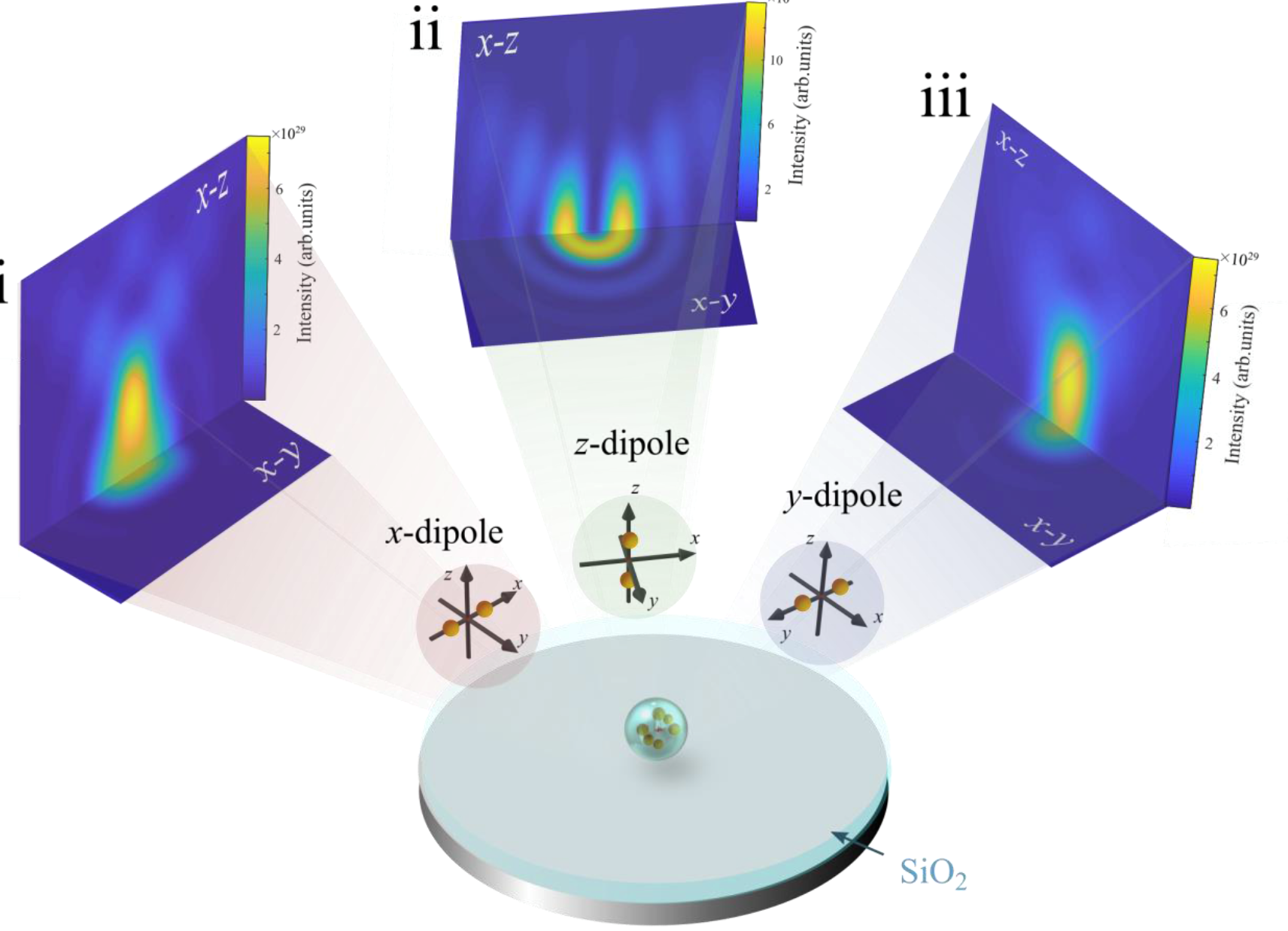
Calculated self-interference of a single nanoparticle
placed on a mirror substrate with a silica layer as the
spacer. (i), (ii) and (iii) show different cuts through the
far-field patterns of oriented dipoles oscillating along
the x,y and z-axis, respecitvely
Mehr dazu finden Sie hier.
Axial Localization and Tracking of Self-interference Nanoparticles by Lateral Point Spread Functions
Y. Liu, Z. Zhou, F. Wang, G. Kewes, S. Wen, S. Burger, M. Ebrahimi Wakiani, P. Xi, J. Yang, X. Yang, O. Benson, and D. Jin
Nat. Commun. 12 (2021) 2019, DOI: 10.1038/s41467-021-22283-0
01.04.2021Stijn van Tongeren, Emanuel Malek und Markus Krutzik sind neue IRIS-Juniormitglieder
IRIS Adlershof ist erfreut die drei Nachwuchsgruppenleiter Dr. Stijn van Tongeren, Dr. Emanuel Malek und Dr. Markus Krutzik als Juniormitglieder willkommen zu heißen.
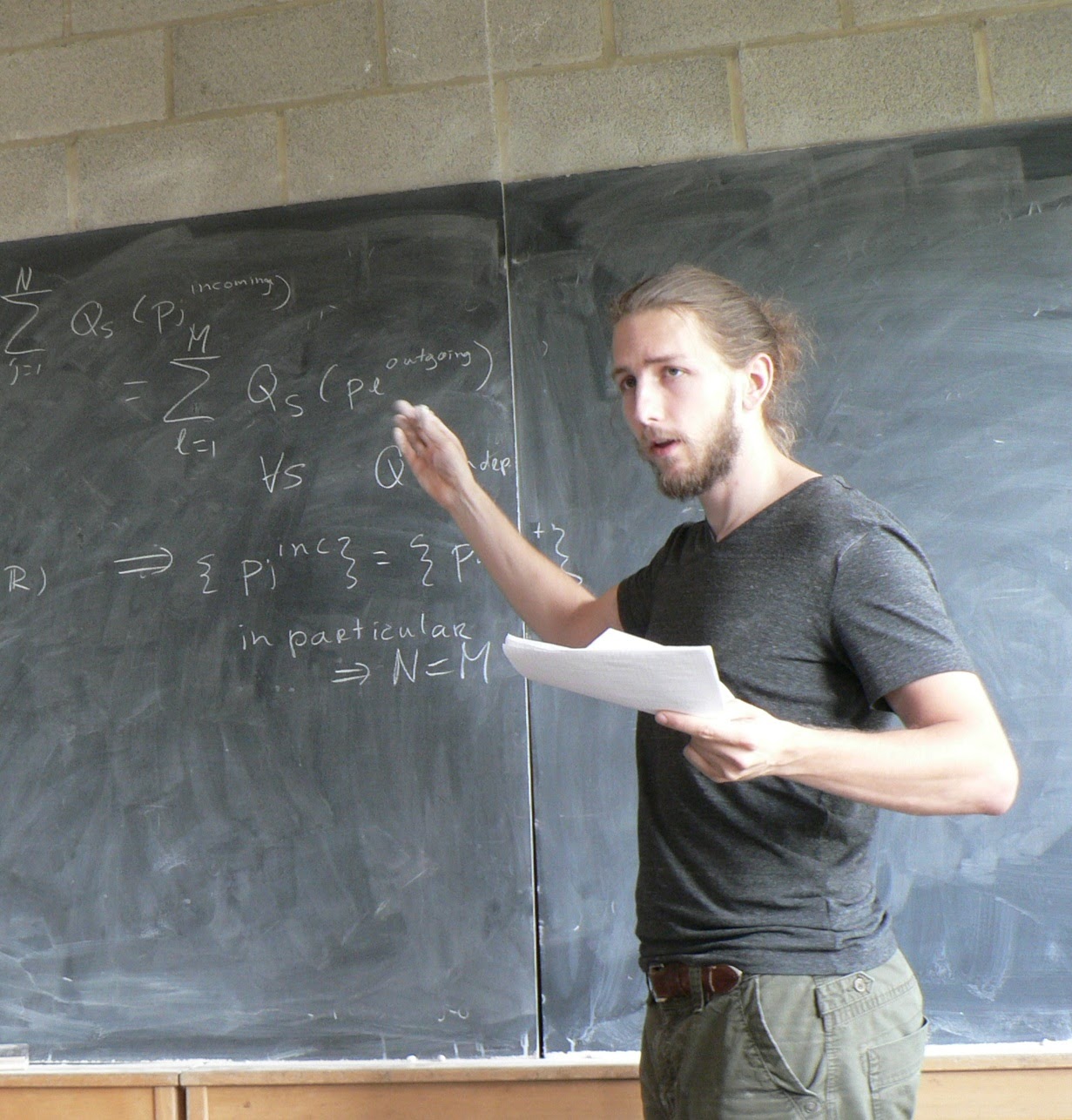
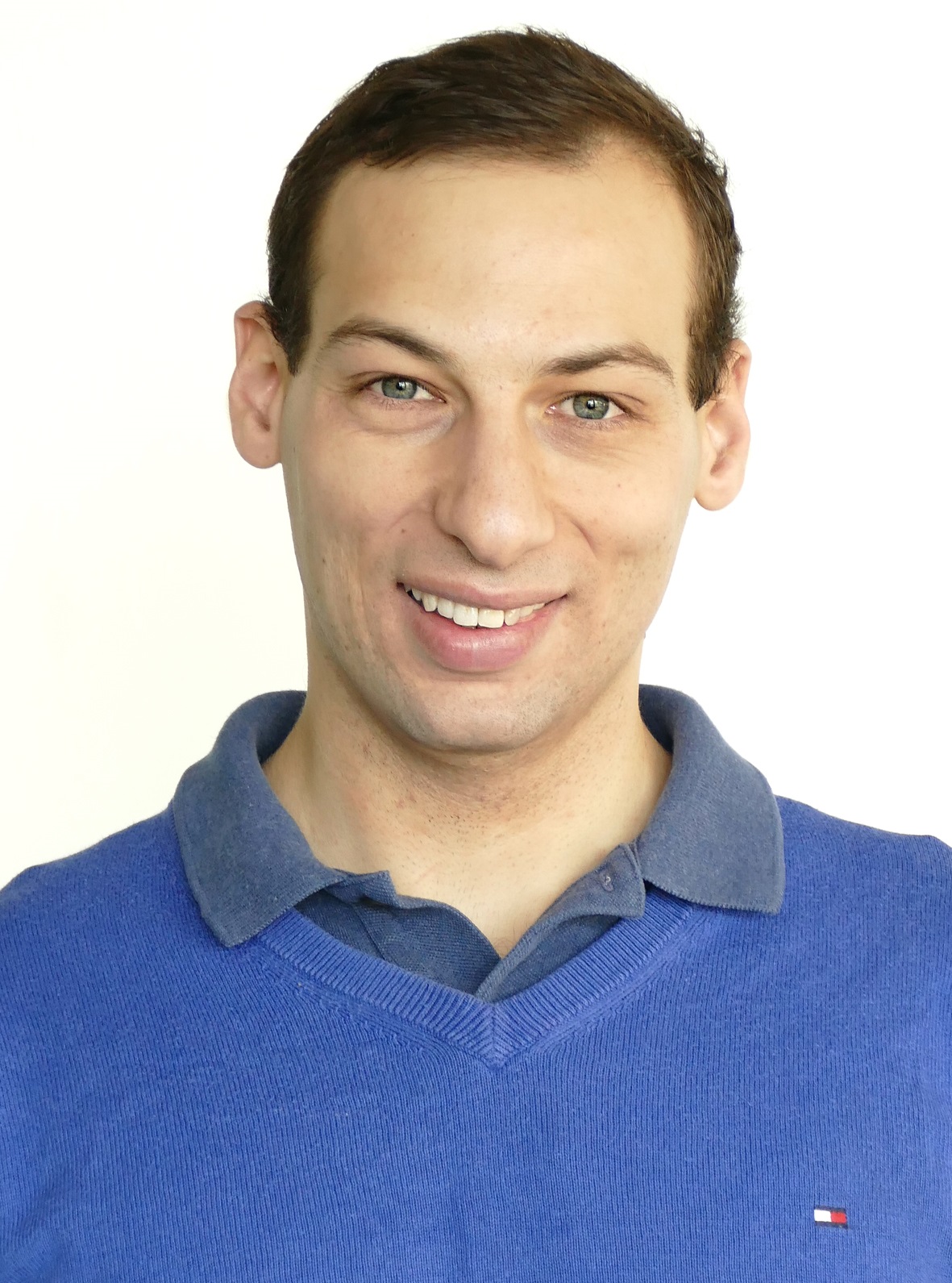
Dr. Emanuel Malek leitet seit August 2020 am Institut für Physik der Humboldt-Universität zu Berlin eine Nachwuchsgruppe zum Thema „Erforschung der Landschaft der Stringtheorie Flussvakua durch Exceptional Field Theory“. Dabei kollaboriert er eng mit den IRIS-Gruppen von Prof. Plefka, Prof. Staudacher und Dr. Hohm. Die Nachwuchsgruppe wird durch das Emmy-Noether-Programm der Deutschen Forschungsgemeinschaft mit über 1,2 Millionen Euro für sechs Jahre unterstützt. Nach seiner Promotion an der University of Cambridge im Jahr 2014 verbrachte Dr. Malek ein Jahr als Postdoctoral Fellow an der University of Cape Town in Südafrika, gefolgt von einer dreijährigen Tätigkeit als Research Fellow an der Ludwig-Maximilians-Universität München. Anschließend forschte er für zwei weitere Jahre am Max-Planck-Institut für Gravitationsphysik in Potsdam.
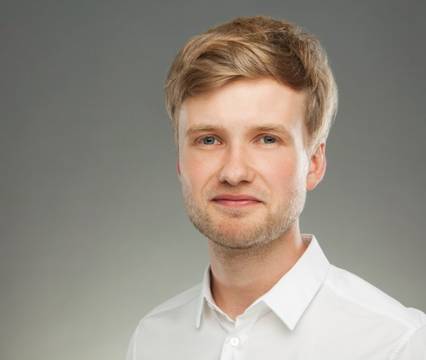
Seit 2019 leitet Dr. Markus Krutzik das „Joint Lab Integrated Quantum Sensors“ am Ferdinand-Braun-Institut, Leibniz-Institut für Höchstfrequenztechnik, wo er bereits seit 2017 als Gastwissenschaftler tätig war. Außerdem ist er bereits seit 2015 Gruppenleiter am Institut für Physik der Humboldt-Universität zu Berlin, wo er an Quantensensoren und optischen Technologien für Anwendungen in der Raumfahrt forscht. Seine Forschung konzentriert sich auf die Entwicklung der nächsten Generation von Quantensensoren im Chipmaßstab für industrietaugliche Lösungen. Krutzik promovierte an der Humboldt-Universität zu Berlin im Jahr 2014. Anschließend arbeitete er zwischen 2014 und 2015 als PostDoc am Cold Atom Laboratory des Jet Propulsion Laboratory der NASA, wo er auch zwischen 2016 und 2018 als technischer Berater tätig war.
IRIS Adlershof gratuliert seinen neuen Mitgleidern und freut sich auf eine fruchtbare Zusammenarbeit.
24.03.2021Erik Panzer erhält den Hermann Weyl Preis 2020
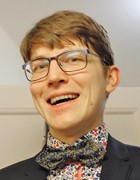
Der ehemalige Nachwuchswissenschaftler von IRIS Adlershof, Erik Panzer, der inzwischen an der Universität Oxford forscht, wurde für seine „wegweisenden Leistungen zur Berechnung von Amplituden in Eichtheorien, die Entwicklung neuer mathematischer Strukturen, welche sich die Sprache der Symmetrien zunutze machen sowie seine Beiträge zur Beschreibung wichtiger physikalischer Phänomene der Natur“ mit dem Hermann Weyl Preis 2020 des Internationalen Kolloquiums für Gruppentheoretische Methoden ausgezeichnet.
Panzer promovierte im Jahr 2015 an der Humboldt-Universität zu Berlin unter Anleitung von IRIS Adlershof Mitglied Dirk Kreimer. Anschließend arbeitete er zwischen 2015 und 2020 als Post-Doctoral Research Fellow an der Universität Oxford, wo er nun seit Oktober 2020 als Royal Society Research Fellow tätig ist. Seine Forschungsschwerpunkte umfassen Feynman integrale, Hyperlogarithmen, (elliptische) Polylogarithmen, (elliptische) multiple Zetafunktionen, motivic periods, kombinatorische Hopf Algebren, Renormalisierung sowie Dyson-Schwinger-Gleichungen.
Der Hermann Weyl Preis wird verliehen an junge Wissenschaftler, die kreative Spitzenforschung im Bereich des Verständnisses der Physik durch Symmetrien leisteten.
IRIS gratuliert herzlich.
03.03.2021Erfolgreiche Zusammenarbeit mit der Industrie bei gemeinsamer Veröffentlichung zu per Tintenstrahl gedruckter Elektroden in OLEDs
Forscher des HySPRINT-Verbundlabors GenFab (Generative Manufacturing Processes for Hybrid Components) der Humboldt-Universität zu Berlin (HU) und des Helmholtz-Zentrums Berlin (HZB) haben eine vom Berliner Unternehmen OrelTech hergestellte leitfähige Tinte erfolgreich in lösungsprozessierten organischen LEDs integriert.

Nach dem Drucken der partikelfreien Silbertinte wird ein Argonplasma verwendet, um die Silberionen in der Tinte zu metallischem Silber zu reduzieren. „Da dieser Prozess bei niedriger Temperatur stattfindet, eignet er sich für temperaturempfindliche Substrate wie flexible Kunststofffolien“, erklärt Dr. Konstantin Livanov, Mitbegründer und Technischer Leiter von OrelTech.
Die Forscher stellten organische Leuchtdioden unter Verwendung der Silbertinte als transparente leitende Elektrode auf dem flexiblen Substrat PET her. Die resultierenden Bauteile zeigen vergleichbare Lichtleistungseigenschaften wie diejenigen, die auf dem ansonsten weit verbreiteten Indiumzinnoxid (ITO) basieren. Entscheidend ist jedoch, dass die Silberelektroden beim mechanischen Biegen eine überlegene Stabilität gegenüber ITO zeigten.
Dr. Felix Hermerschmidt, leitender Forscher im gemeinsamen Labor von HU und HZB, bestätigt: "Die auf der OrelTech-Tinte basierenden OLEDs bleiben noch bei solch einem Biegeradius intakt, bei dem die auf ITO basierenden OLEDs brüchig werden und versagen." Dies eröffnet verschiedene Anwendungsmöglichkeiten für die gedruckten Bauelemente.
Die Arbeit wurde in der Fachzeitschrift "Flexible and Printed Electronics" veröffentlicht und ist Open Access verfügbar. GenFab, unter der Leitung des IRIS Adlershof Mitglieds Prof. List-Kratochvil, zieht für weitere Forschungs- und Entwicklungsarbeiten in Labore und Büros im neuen IRIS-Forschungsgebäude ein.
Publikation:
ITO-free OLEDs utilizing inkjet-printed and low temperature plasma-sintered Ag electrodes
M. Hengge, K. Livanov, N. Zamoshchik, F. Hermerschmidt, and E..J. W. List-Kratochvil
Flex. Print. Electron. 6 (2021) 015009.
DOI: 10.1088/2058-8585/abe604
25.01.2021HZB und Humboldt-Universität vereinbaren den Aufbau eines Katalyse-Forschungslabors
Das Helmholtz-Zentrum Berlin (HZB) und die Humboldt-Universität zu Berlin (HU) haben eine Kooperationsvereinbarung geschlossen mit dem Ziel, ein gemeinsames Forschungslabor für Katalyse im IRIS-Forschungsbau der HU in Adlershof aufzubauen. Der IRIS-Forschungsbau bietet optimale Bedingungen für die Erforschung und Entwicklung von komplexen Materialsystemen.
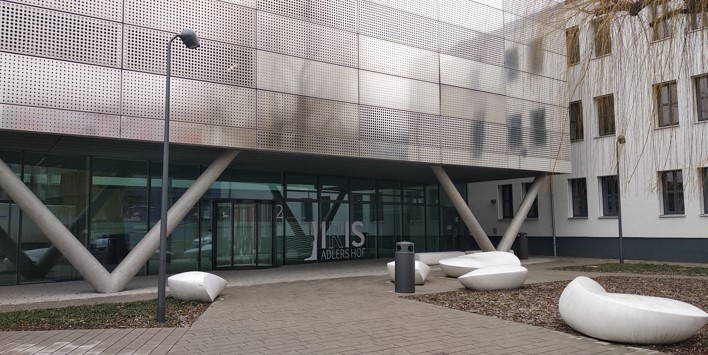 Katalysatoren sind der Schlüssel für viele Technologien und Prozesse, die für den Aufbau einer klimaneutralen Wirtschaft benötigt werden. In der Berliner Forschungslandschaft entwickelt sich seit einiger Zeit ein Hotspot der Katalyseforschung. Im Rahmen der Exzellenzinitiative entstanden neue Cluster wie UniSysCat, in denen etablierte Forschungsinstitute ihre Aktivitäten bündeln. Die chemische Industrie ist über das Labor BASCat eingebunden. Ein wichtiges Forschungsfeld ist die Produktion von „grünem“ Wasserstoff: Um Wasserstoff und synthetische Kraftstoffe klimaneutral mit erneuerbaren Energien zu produzieren, werden innovative Katalysatoren benötigt. Das kürzlich gestartete Aufbauprojekt CatLab, das im Rahmen der Wasserstoffstrategie gefördert wird, verfolgt völlig neue Ansätze, die auf Dünnschichttechnologien basieren und echte Innovationssprünge versprechen.
Katalysatoren sind der Schlüssel für viele Technologien und Prozesse, die für den Aufbau einer klimaneutralen Wirtschaft benötigt werden. In der Berliner Forschungslandschaft entwickelt sich seit einiger Zeit ein Hotspot der Katalyseforschung. Im Rahmen der Exzellenzinitiative entstanden neue Cluster wie UniSysCat, in denen etablierte Forschungsinstitute ihre Aktivitäten bündeln. Die chemische Industrie ist über das Labor BASCat eingebunden. Ein wichtiges Forschungsfeld ist die Produktion von „grünem“ Wasserstoff: Um Wasserstoff und synthetische Kraftstoffe klimaneutral mit erneuerbaren Energien zu produzieren, werden innovative Katalysatoren benötigt. Das kürzlich gestartete Aufbauprojekt CatLab, das im Rahmen der Wasserstoffstrategie gefördert wird, verfolgt völlig neue Ansätze, die auf Dünnschichttechnologien basieren und echte Innovationssprünge versprechen.
IRIS-Labore für Katalyseforschung ausgestattet
Um das große Potenzial der Berliner Katalyseforschung weiter zu forcieren, haben nun die Humboldt-Universität zu Berlin und das HZB eine weitere Kooperationsvereinbarung geschlossen. Damit soll ein Teil der IRIS-Labore zusätzlich für die Entwicklung und Untersuchung heterogener Katalysatorsysteme ertüchtigt werden. IRIS Adlershof steht für Integrative Research Institute for the Sciences. Mit ca. 4.500 Quadratmeter hochmoderner Labor-, Büro- und Kommunikationsflächen bietet der IRIS-Forschungsbau optimale Bedingungen für die Erforschung und Entwicklung von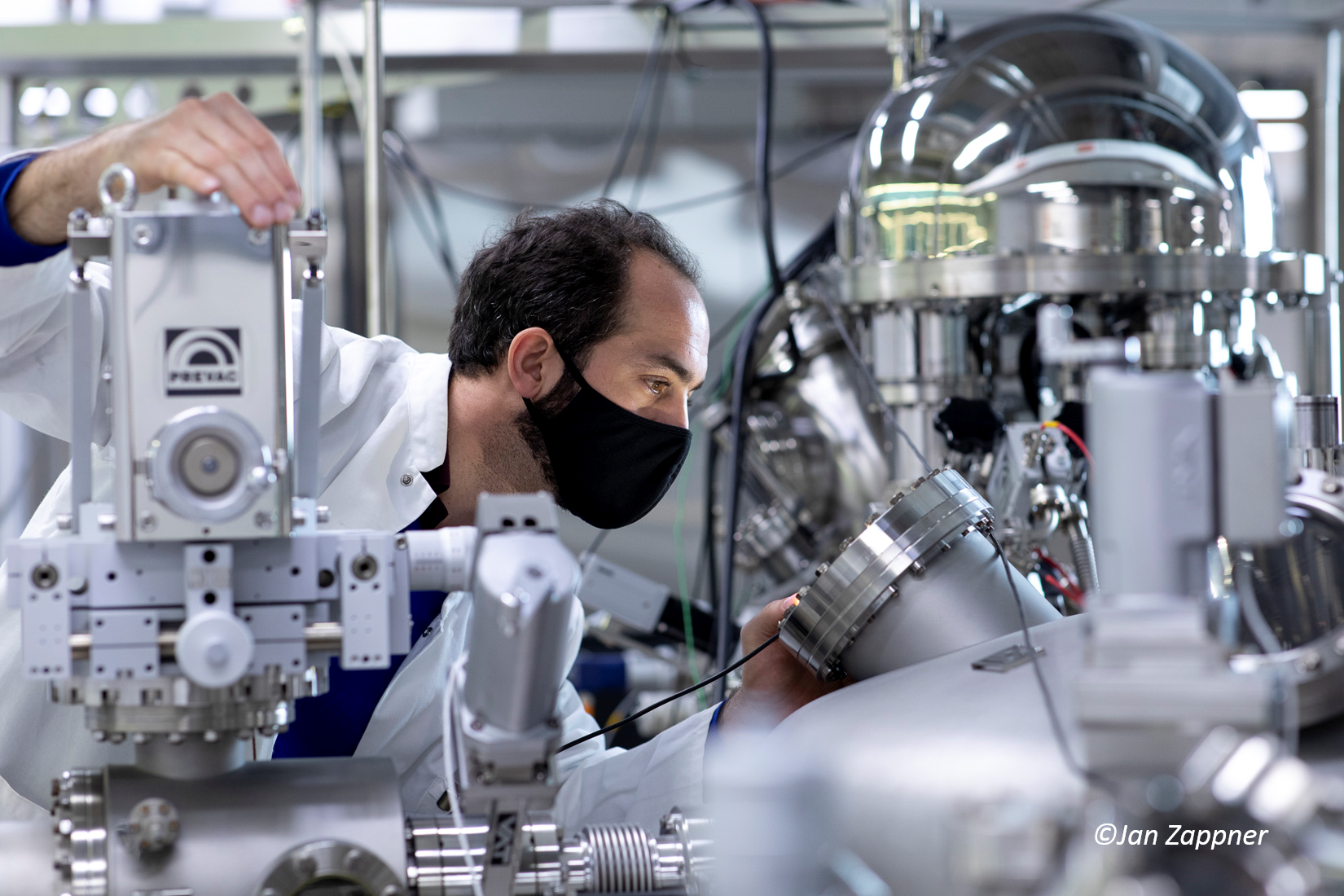 komplexen Materialsystemen z.B. für Elektronik, Optoelektronik und Photonik. Ein Großraumlabor ist für die Installation von Laborreaktoren vorgesehen, um die katalytische Aktivität und Selektivität der Materialsysteme zu bestimmen. Um Katalysatoren in Aktion zu untersuchen, werden im schwingungsstabilisierten Kellergeschoss Elektronenmikroskope aufgestellt. Dazu kommen weitere in-operando Untersuchungsmethoden wie Röntgenbeugung, Photoelektronen-, Raman- und UV-Vis-Spektroskopie, die durch die high-end Analysemöglichkeiten der benachbarten Synchrotronstrahlungsquelle BESSY II des HZB komplettiert werden. Neben der Zusammenarbeit in der Entwicklung und Verwendung analytischer Methoden ist auch eine enge Zusammenarbeit im Bereich Dünnschichttechnologie, unter der Verwendung von additiven Fertigungsverfahren und Nanostrukturierungs- und Synthesemethoden, geplant.
komplexen Materialsystemen z.B. für Elektronik, Optoelektronik und Photonik. Ein Großraumlabor ist für die Installation von Laborreaktoren vorgesehen, um die katalytische Aktivität und Selektivität der Materialsysteme zu bestimmen. Um Katalysatoren in Aktion zu untersuchen, werden im schwingungsstabilisierten Kellergeschoss Elektronenmikroskope aufgestellt. Dazu kommen weitere in-operando Untersuchungsmethoden wie Röntgenbeugung, Photoelektronen-, Raman- und UV-Vis-Spektroskopie, die durch die high-end Analysemöglichkeiten der benachbarten Synchrotronstrahlungsquelle BESSY II des HZB komplettiert werden. Neben der Zusammenarbeit in der Entwicklung und Verwendung analytischer Methoden ist auch eine enge Zusammenarbeit im Bereich Dünnschichttechnologie, unter der Verwendung von additiven Fertigungsverfahren und Nanostrukturierungs- und Synthesemethoden, geplant.
Innovationen durch interdisziplinäre Zusammenarbeit
Im IRIS-Forschungsbau arbeiten Fachleute unterschiedlicher Disziplinen eng in einem großen Verbundlabor zusammen. Davon erhoffen sich die Partner Innovationsschübe: Physik und Chemie sowie Experiment und Theorie nähern sich einem Problem von jeweils unterschiedlichen Seiten. So bildet ein tiefes physikalisch-chemisches Verständnis von komplexen Grenzflächen eine exzellente Basis für die Entwicklung von Energiematerialien. Die Anordnung der Labore und Büros sowie die großzügigen Kommunikationsflächen schaffen beste Voraussetzungen, damit die unterschiedlichen Disziplinen sich austauschen und voneinander lernen können.
Kooperationsvereinbarung ist auch juristisch innovativ
Die Kooperation zwischen der HU und dem HZB zum Katalyse-Forschungslabor wird aufgrund der aktuellen Änderung des Berliner Hochschulgesetzes zur Zusammenarbeit wissenschaftlicher Einrichtungen erstmalig auf einer öffentlich-rechtlichen Grundlage gestaltet. Dies soll die Kooperation erleichtern. Das Verfahren zur Erfassung, Bewertung und Dokumentation der beiderseitigen Kooperationsbeiträge ist einfacher und weniger bürokratisch. So können sich die Forschenden auf ihre Kernaufgabe - die Forschung - konzentrieren.
18.01.2021Stefan Hecht ist neues Mitglied der Deutschen Akademie der Technikwissenschaften
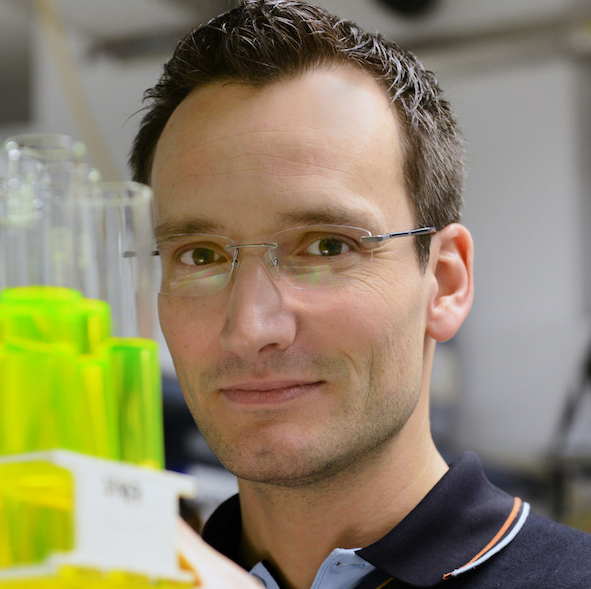 Die Deutsche Akademie der Technikwissenschaften (acatech) hat den Chemiker Stefan Hecht zu ihrem neuen Mitglied gewählt. Mit ihm und dem Mathematiker Jürg Kramer ist IRIS-Adlershof somit prominent in der acatech vertreten. Über die Wahl in die Deutsche Akademie der Technikwissenschaften freut sich Hecht sehr: „Diese Wahl bedeutet für mich Anerkennung und Motivation zugleich. Es ehrt mich außerordentlich, gemeinsam mit renommierten Kollegen technologische Lösungen und Handlungsempfehlungen für drängende Zukunftsthemen zu entwickeln.“, so der Chemiker. Als neues acatech-Mitglied wird er sich insbesondere auf dem Gebiet der Materialwissenschaften engagieren.
Die Deutsche Akademie der Technikwissenschaften (acatech) hat den Chemiker Stefan Hecht zu ihrem neuen Mitglied gewählt. Mit ihm und dem Mathematiker Jürg Kramer ist IRIS-Adlershof somit prominent in der acatech vertreten. Über die Wahl in die Deutsche Akademie der Technikwissenschaften freut sich Hecht sehr: „Diese Wahl bedeutet für mich Anerkennung und Motivation zugleich. Es ehrt mich außerordentlich, gemeinsam mit renommierten Kollegen technologische Lösungen und Handlungsempfehlungen für drängende Zukunftsthemen zu entwickeln.“, so der Chemiker. Als neues acatech-Mitglied wird er sich insbesondere auf dem Gebiet der Materialwissenschaften engagieren.
Als eine von Bund und Ländern geförderte nationale Akademie vertritt die acatech die Technikwissenschaften im In- und Ausland und führt einen aktiven wissenschaftsbasierten Dialog zu technologiebezogenen Zukunftsfragen. Schwerpunkte sind:
• Wissenschaftliche Empfehlungen und Stellungnahmen
• Wissenstransfer und Vernetzung von Wissenschaft und Wirtschaft
• Nachwuchsförderung der Technikberufe
• Internationale Vertretung der Technikwissenschaften.
Die Mitglieder der Akademie werden aufgrund ihrer herausragenden wissenschaftlichen Leistungen und ihrer hohen Reputation in die Akademie aufgenommen. Derzeit gehören der acatech mehr als 400 Mitglieder aus den Ingenieur- und Naturwissenschaften, der Medizin sowie den Geistes- und Sozialwissenschaften an.
mehr...
08.01.2021Humboldt-Preis für IRIS-Nachwuchswissenschaftler Aron Vanselow
Auszeichnung für eine der besten Masterarbeiten 2020 an der Humboldt-Universität zu Berlin
Der Preis, der jährlich nur an wenige M.Sc. Studierende der gesamten Universität für "hervorragende akademische Leistungen", die sich insbesondere mit den "Humboldtschen Idealen" befassen, würdigt die Arbeit von Herrn Vanselow: "Mid-infrared frequency-domain optical coherence tomography with undetected photons". Die entsprechende Veröffentlichung wurde in der neuesten Ausgabe von Optica, der Zeitschrift der Optical Society, gedruckt und als Forschungshighlight von IRIS Adlershof präsentiert.
Frequency-domain optical coherence tomography with undetected mid-infrared photons
A. Vanselow, P. Kaufmann, I. Zorin, B. Heise, H. M. Chrzanowski, S. Ramelow
Optica 12 (2020) 1729, DOI:10.1364/OPTICA.400128
Herr Vanselow arbeitete in der Gruppe „Nichtlineare Quantenoptik“ unter der Leitung von Dr. Sven Ramelow, Nachwuchsgruppenleiter am IRIS Adlershof. Es ist bereits die zweite Auszeichnung der Arbeit nach dem "Quantum Futur Award".
Quantum Futur Award 2019
IRIS Adlershof gratuliert dem jungen Preisträger herzlich.
06.01.2021Interview mit der "Magierin der Oktaven" im Adlershof Journal
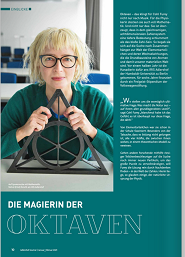 Nichol Furey forscht seit einem halben Jahr am IRIS Adlershof und wendet sich den Grundlagen der Quantenfeldtheorie mit einem ungewöhnlichen Ansatz zu. Wie sie die Weltformel finden möchte und warum sie hier bestens aufgehoben ist, erklärt sie in der aktuellen Ausgabe des Adlershof Journals.
Nichol Furey forscht seit einem halben Jahr am IRIS Adlershof und wendet sich den Grundlagen der Quantenfeldtheorie mit einem ungewöhnlichen Ansatz zu. Wie sie die Weltformel finden möchte und warum sie hier bestens aufgehoben ist, erklärt sie in der aktuellen Ausgabe des Adlershof Journals.
zum Artikel...
29.12.2020Xolographie als leistungsfähige neue Methode für den 3D-Druck
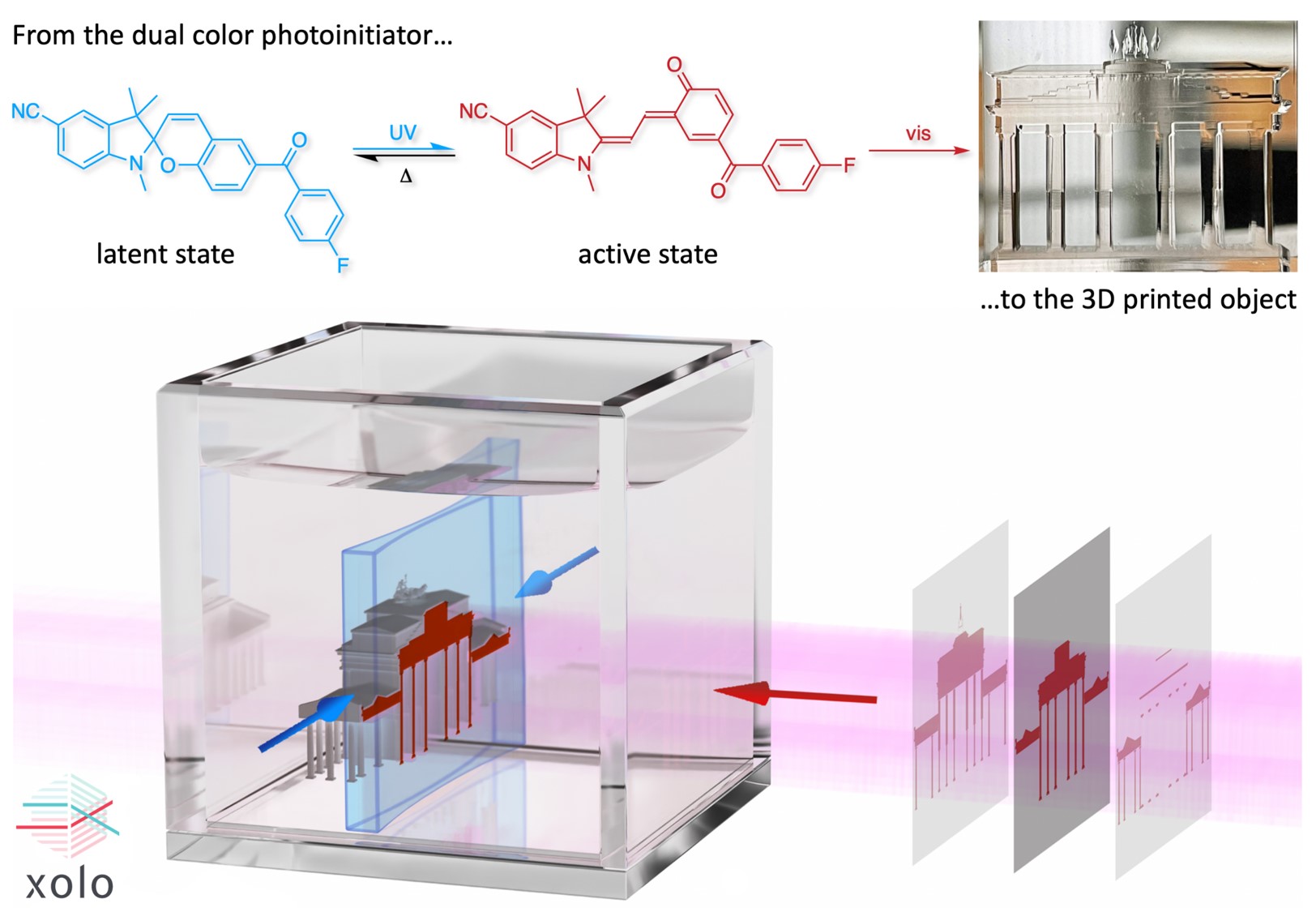 Es sieht aus wie Science-Fiction und könnte die Zukunft des 3D-Druck sein: Ein blauer Lichtschnitt wandert durch eine Flüssigkeit, währenddessen treten Lichtprojektionen durch die Fenster eines eckigen Glasgefäßes. Wie beim Replikator der Star Trek Raumschiffe materialisiert das gewünschte Objekt. Was früher Stunden dauerte, schwebt nach kurzer Zeit in der Flüssigkeit im Gefäß, wird anschließend entnommen und unter UV-Licht gehärtet.
Es sieht aus wie Science-Fiction und könnte die Zukunft des 3D-Druck sein: Ein blauer Lichtschnitt wandert durch eine Flüssigkeit, währenddessen treten Lichtprojektionen durch die Fenster eines eckigen Glasgefäßes. Wie beim Replikator der Star Trek Raumschiffe materialisiert das gewünschte Objekt. Was früher Stunden dauerte, schwebt nach kurzer Zeit in der Flüssigkeit im Gefäß, wird anschließend entnommen und unter UV-Licht gehärtet.
Das zugrundeliegende Verfahren, die Xolographie, wurde von einem Team um den Chemiker Stefan Hecht, Mitglied von IRIS Adlershof, den Physiker Martin Regehly und den Gründer Dirk Radzinski innerhalb der letzten zwei Jahre in der Startup-Firma xolo GmbH in Berlin-Adlershof entwickelt. In der renommierten Zeitschrift Nature beschreiben sie nun erstmalig ihre neuartige Methode.
Grundlage ihrer Erfindung sind photoschaltbare Moleküle – Hechts Spezialgebiet – die nur am Kreuzungspunkt (Xolographie) von Lichtstrahlen zweier unterschiedlicher Farben eine zielgenaue Aushärtung im gesamten Volumen (holos) des Ausgangsmaterials ermöglichen. In Kombination mit einem neuen Druckverfahren (Xolographie) basierend auf einem vom Laser erzeugten Lichtschnitt und über einen Projektor eingestrahlte Schnittbilder, werden die gewünschten Objekte ausgehend von virtuellen 3D-Modellen erzeugt.
Im Gegensatz zum konventionellen 3D-Druck, bei dem das Objekt Schicht für Schicht erzeugt wird, liegen die Vorteile der Xolographie in der deutlich höheren Geschwindigkeit und es können glatte Oberflächen erzeugt werden. So lassen sich komplexe, mehrteilige Systeme in nur einem Arbeitsschritt fertigen. "
Xolography for linear volumetric 3D printing
M. Regehly, Y. Garmshausen, M. Reuter, N.F. König, E. Israel, D.P. Kelly, C.-Y. Chou, K. Koch, B. Asfari, and S. Hecht
Nature 588 (2020) 620, DOI: 10.1038/s41586-020-3029-7
17.12.2020Hi-Accuracy – Micro level developments driving great innovations in display technologies
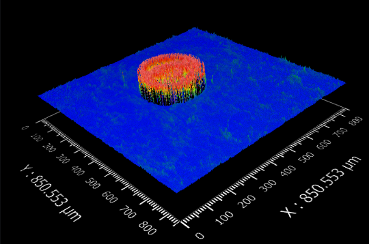
Hi-Accuracy is an ambitious EC Horizon 2020 funded project that aims to develop new ways to produce high-resolution displays, improving how they are used in existing technologies and creating exciting new opportunities for new applications. It commenced in April 2020 and is coordinated by the Austrian non-profit research institute Joanneum Research Forschungsgesellschaft mbH.
In a joint approach, 11 project partners from 6 European countries are developing new printable materials and innovative additive fabrication processes to create next generation display technologies. Materials such as quantum dots (QD), novel organic semiconductors and conductive inks that can be produced at low cost with minimal environmental impact are being developed. Hi-Accuracy will employ a variety of deposition, and new additive fabrication processes, such as electro-static jetting (ESJET), reverse-offset printing (ROP), nano-imprint lithography (NIL), Vapour Deposition (ESAVD) and assisted ion deposition (AAID) to deliver the speed and accuracy required to successfully produce the structures commercially. Hi-Accuracy’s printed structures will be manufactured in a range of resolutions on flexible substrates that could be applied to virtually any surface. These technologies will utilise printed electronics down to µm size, for Organic Large Area Electronics (OLAE), Thin Film Transistor (TFT) and Display Applications.
The end goal for these advances is the development of cost effective, adaptable and more sustainable printed QD based displays with greater resolution and brightness than is currently possible. The three year Hi-Accuracy project is focused on producing a small scale ‘proof of concept’ display screen. But it is anticipated that longer term applications of the technology will be on larger, high-resolution displays for use in venues including transport hubs, civic centres, sports stadia, exhibition halls and road side information and advertising signage. At the other end of the scale it is expected that the Hi-Accuracy’s lightweight, ultra high definition displays will become the basis of personal devices including smart watches, phones, virtual reality headsets and augmented reality screens, as well as being used as Point of Sale displays and digital vehicle dashboards. Centro Ricerche FIAT (CRF) is a Hi-Accuracy partner and has proposed exciting in-car applications of this kind such as the futuristic Chrysler Portal concept.
The global market for printed, flexible and organic electronics is projected to grow annually by about 8.5% to a value exceeding $77billion (US) by 2029, and Hi-Accuracy aims to place Europe at the heart of this growth.
Dr. Pufinji Obene of Precision Varionic International, a UK based Hi-Accuracy consortium partner, said ‘with input from our industry partners, SONY, Huawei and Polar, this innovative project aims to produce a highly marketable display technology, which will be the catalyst for improvements to existing devices, including mobile phones, making the use of screens more immersive and engaging for us all.’
The Hi-Accuracy consortium is: Joanneum Research forschungsgesellschaft mbH, Bionanonet Forschungsgesellschaft mbH, Centro Ricerche Fiat SCpA, Dycotec Materials Ltd, Fraunhofer Institute for Applied Polymer Research IAP, Humboldt-Universität zu Berlin, Interuniversitair Micro-Electronica Centrum, NeuDrive Ltd, Precision Varionic International Ltd, Teknologian tutkimuskeskus VTT Oy, University College London
To learn more about these innovations, as well as details about the partner organisations, click here.
This project has received funding from the European Union’s Horizon 2020 research and innovation programme under grant agreement No. 862410
17.12.2020Digitale Werkzeuge für Sensoren und Quanten
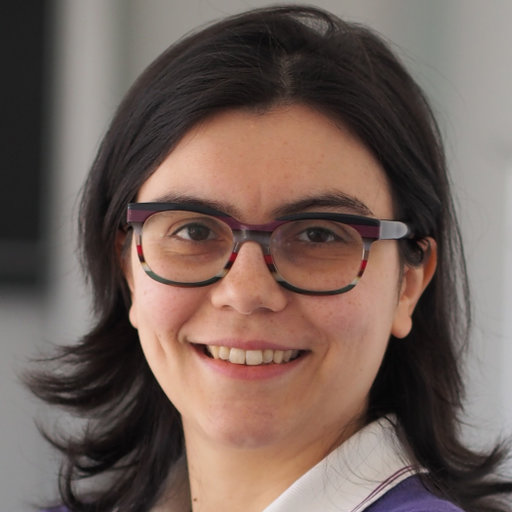 Im Programm „Digitalisierung in den Naturwissenschaften“ fördert das Niedersächsische Wissenschaftsministerium insgesamt fünf Vorhaben an der Universität Oldenburg für drei Jahre mit insgesamt knapp 4,5 Millionen Euro.
Im Programm „Digitalisierung in den Naturwissenschaften“ fördert das Niedersächsische Wissenschaftsministerium insgesamt fünf Vorhaben an der Universität Oldenburg für drei Jahre mit insgesamt knapp 4,5 Millionen Euro.
Gemeinsam mit Partnern wollen die Oldenburger Forscher zum Beispiel die Nanowelt mit neuen digitalen Werkzeugen erkunden oder Systeme entwickeln, um Daten von Satelliten oder Umweltsensoren mit Hilfe von Verfahren der künstlichen Intelligenz automatisch auszuwerten.
Zu den Hauptantragstellern der geförderten Oldenburger Projekte gehört auch die Physikerin Caterina Cocchi, Leiterin der Arbeitsgruppe Theoretische Festkörperphysik am Institut für Physik der Universität Oldenburg und Mitglied von IRIS Adlershof.
In Caterina Cocchis Projekt SMART – „Simulations meet experiments on the nanoscale: Opening up the quantum world to artificial intelligence“ –sollen quantenmechanische Prozesse mit innovativen Methoden der Computerphysik und Ultrakurzzeitphysik aufklärt werden, insbesondere die Interaktion von Licht und Materie auf der Skala von wenigen Nanometern.
mehr...
30.11.2020Das Institute of Physics der Chinesischen Akademie der Wissenschaften und IRIS Adlershof starten gemeinsames PostDoc-Programm

.gif) Das Institute of Physics (IOP) der Chinesische Akademie der Wissenschaften (CAS) und das IRIS Adlershof der Humboldt-Universität zu Berlin haben ein gemeinsames PostDoc-Programm eingerichtet und eine erste Ausschreibungsrunde veröffentlicht. Die prestigeträchtigen zweijährigen Forschungsstipendien richten sich an außergewöhnliche Nachwuchswissenschaftler*innen, die sich auf eine unabhängige Karriere in der Forschung an der Grenze der Festkörperphysik, der Quantenmaterialien oder der Gerätephysik vorbereiten. Erfolgreiche Kandidaten verbringen ein Jahr in Beijing und eines in Berlin bei Forschungsgruppen ihrer Wahl. Antragsschluss ist der 28. Februar 2021.
Das Institute of Physics (IOP) der Chinesische Akademie der Wissenschaften (CAS) und das IRIS Adlershof der Humboldt-Universität zu Berlin haben ein gemeinsames PostDoc-Programm eingerichtet und eine erste Ausschreibungsrunde veröffentlicht. Die prestigeträchtigen zweijährigen Forschungsstipendien richten sich an außergewöhnliche Nachwuchswissenschaftler*innen, die sich auf eine unabhängige Karriere in der Forschung an der Grenze der Festkörperphysik, der Quantenmaterialien oder der Gerätephysik vorbereiten. Erfolgreiche Kandidaten verbringen ein Jahr in Beijing und eines in Berlin bei Forschungsgruppen ihrer Wahl. Antragsschluss ist der 28. Februar 2021.
mehr...
25.11.2020Deutsches Zentrum für Lehrerbildung Mathematik (DZLM) wird verstetigt
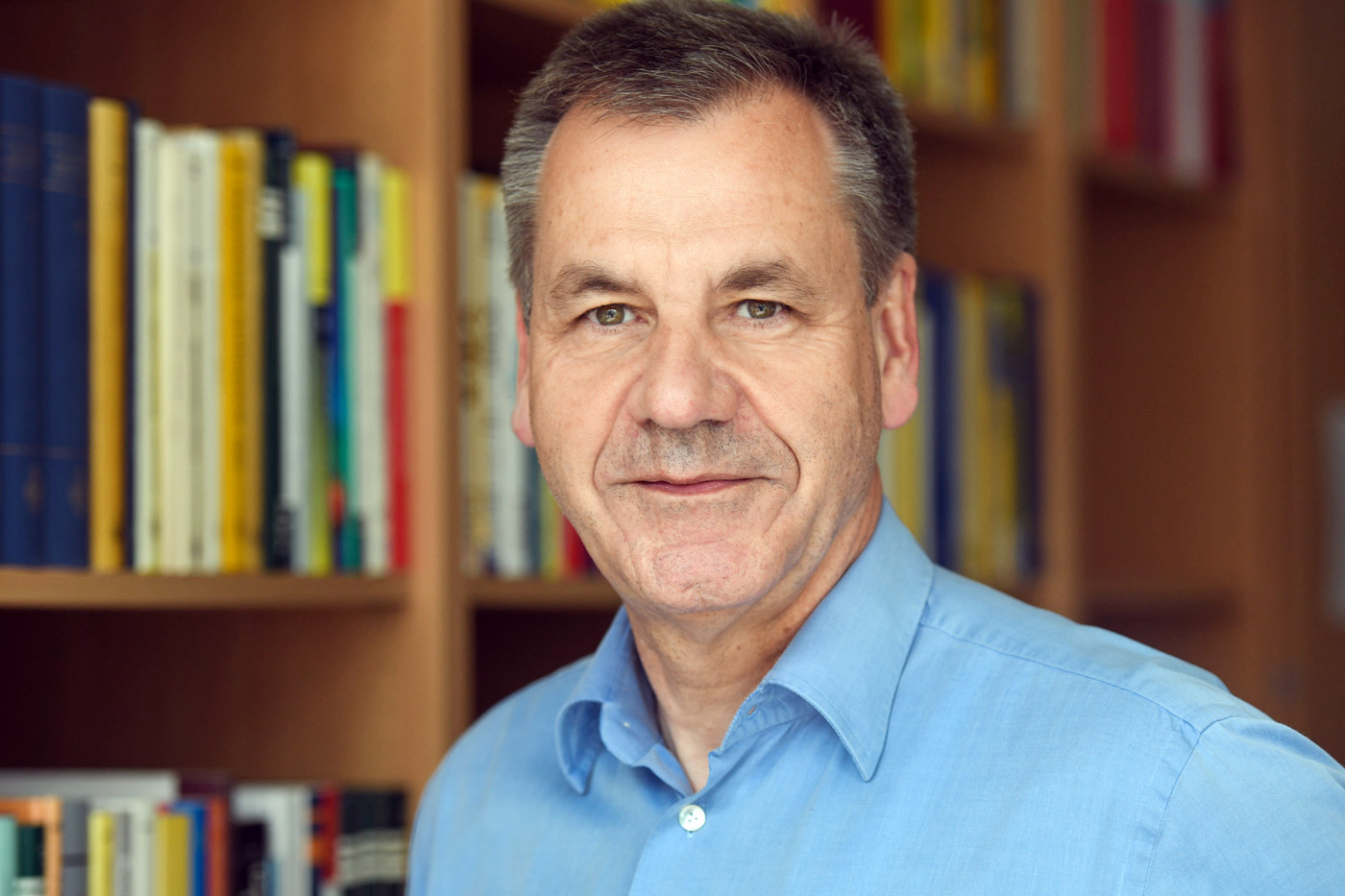 Das Deutsche Zentrum für Lehrerbildung Mathematik (DZLM) wird Teil der am Leibniz-Institut für die Pädagogik der Naturwissenschaften und Mathematik (IPN) in Kiel neu eingerichteten Abteilung „Fachbezogener Erkenntnistransfer“. Das DZLM ist ein Netzwerk aus neun Hochschulen unter Leitung der Humboldt-Universität zu Berlin. Seit zehn Jahren entwickelt, implementiert und erforscht es bundesweit wirksame Fortbildungsangebote für Multiplikatorinnen und Multiplikatoren, Lehrkräfte und Kita-Fachkräfte im Fach Mathematik. Initiiert wurde das DZLM von der Deutsche Telekom Stiftung, von der es bislang mit mehr als zehn Millionen Euro finanziert wurde.
Das Deutsche Zentrum für Lehrerbildung Mathematik (DZLM) wird Teil der am Leibniz-Institut für die Pädagogik der Naturwissenschaften und Mathematik (IPN) in Kiel neu eingerichteten Abteilung „Fachbezogener Erkenntnistransfer“. Das DZLM ist ein Netzwerk aus neun Hochschulen unter Leitung der Humboldt-Universität zu Berlin. Seit zehn Jahren entwickelt, implementiert und erforscht es bundesweit wirksame Fortbildungsangebote für Multiplikatorinnen und Multiplikatoren, Lehrkräfte und Kita-Fachkräfte im Fach Mathematik. Initiiert wurde das DZLM von der Deutsche Telekom Stiftung, von der es bislang mit mehr als zehn Millionen Euro finanziert wurde.
„Die Arbeiten des DZLM haben gezeigt, dass Fortbildende weit mehr Kompetenzen benötigen, als nur sehr gute Lehrkräfte in ihren Fächern zu sein“, erläutert der bisheriger Direktor des DZLM und zukünftiger Direktor der neuen IPN-Abteilung, Professor Jürg Kramer, der auch Mitglied von IRIS Adlershof ist. „Unser Ansatz ist es daher, Fortbildende nicht nur fortbildungsmethodisch und erwachsenenpädagogisch, sondern ganz gezielt zu fachspezifischen Fragen bezüglich Inhalten und Lernprozessen von Lehrkräften in Fortbildungen zu qualifizieren. So gelingt es ihnen deutlich besser, Lehrkräfte und pädagogische Fachkräfte in deren täglicher Berufspraxis wirkungsvoll zu unterstützen. Wir freuen uns sehr, dass wir diese Arbeiten nun am IPN fortsetzen können“
IRIS Adlershof gratuliert herzlich und freut sich auf die weitere gute Zusammenarbeit.
mehr...
18.11.2020Berlin wird Zentrum für Nationales Hochleistungsrechnen
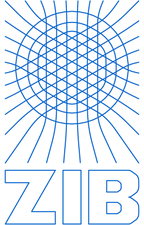 Die Gemeinsame Wissenschaftskonferenz (GWK) von Bund und Ländern etabliert insgesamt acht Zentren für „Nationales Hochleistungsrechnen“ (NHR), eines davon in Berlin. In die Förderung aufgenommen wurde dafür das Zuse-Institut Berlin (ZIB) als Zentrum für Wissenschaftliches Rechnen der Berlin University Alliance (BUA), dem Exzellenzverbund der drei Berliner Universitäten Freie Universität Berlin, Humboldt-Universität zu Berlin, Technische Universität Berlin sowie der Charité – Universitätsmedizin Berlin. Prof. Alexander Reinefeld, Wissenschaftlicher Direktor am Zuse-Institut und Mitglied von IRIS Adlershof, freut sich: "Mit einer Fördersumme von ca. 72 Mio EUR hat das Zuse-Institut nun Planungssicherheit für die Beschaffung, Erneuerung und den Betrieb von HPC-Systemen über die nächsten zehn Jahre, wovon die universitäre Forschung insbesondere in Berlin und damit auch IRIS Adlershof profitieren wird." Er betont, dass mit der finanziellen Unterstützung durch das Land Berlin und den Bund auch die Fachberatung ausgebaut werden kann, um den Wissenschaftlern die effiziente Nutzung der komplexen Supercomputer und Datenanalysesysteme zu erleichtern.
Die Gemeinsame Wissenschaftskonferenz (GWK) von Bund und Ländern etabliert insgesamt acht Zentren für „Nationales Hochleistungsrechnen“ (NHR), eines davon in Berlin. In die Förderung aufgenommen wurde dafür das Zuse-Institut Berlin (ZIB) als Zentrum für Wissenschaftliches Rechnen der Berlin University Alliance (BUA), dem Exzellenzverbund der drei Berliner Universitäten Freie Universität Berlin, Humboldt-Universität zu Berlin, Technische Universität Berlin sowie der Charité – Universitätsmedizin Berlin. Prof. Alexander Reinefeld, Wissenschaftlicher Direktor am Zuse-Institut und Mitglied von IRIS Adlershof, freut sich: "Mit einer Fördersumme von ca. 72 Mio EUR hat das Zuse-Institut nun Planungssicherheit für die Beschaffung, Erneuerung und den Betrieb von HPC-Systemen über die nächsten zehn Jahre, wovon die universitäre Forschung insbesondere in Berlin und damit auch IRIS Adlershof profitieren wird." Er betont, dass mit der finanziellen Unterstützung durch das Land Berlin und den Bund auch die Fachberatung ausgebaut werden kann, um den Wissenschaftlern die effiziente Nutzung der komplexen Supercomputer und Datenanalysesysteme zu erleichtern.
IRIS gratuliert herzlich und freut sich auf die weitere fruchtbringende Zusammenarbeit.
mehr...
18.11.2020Joachim Sauer erhält die Bunsen-Denkmünze 2020
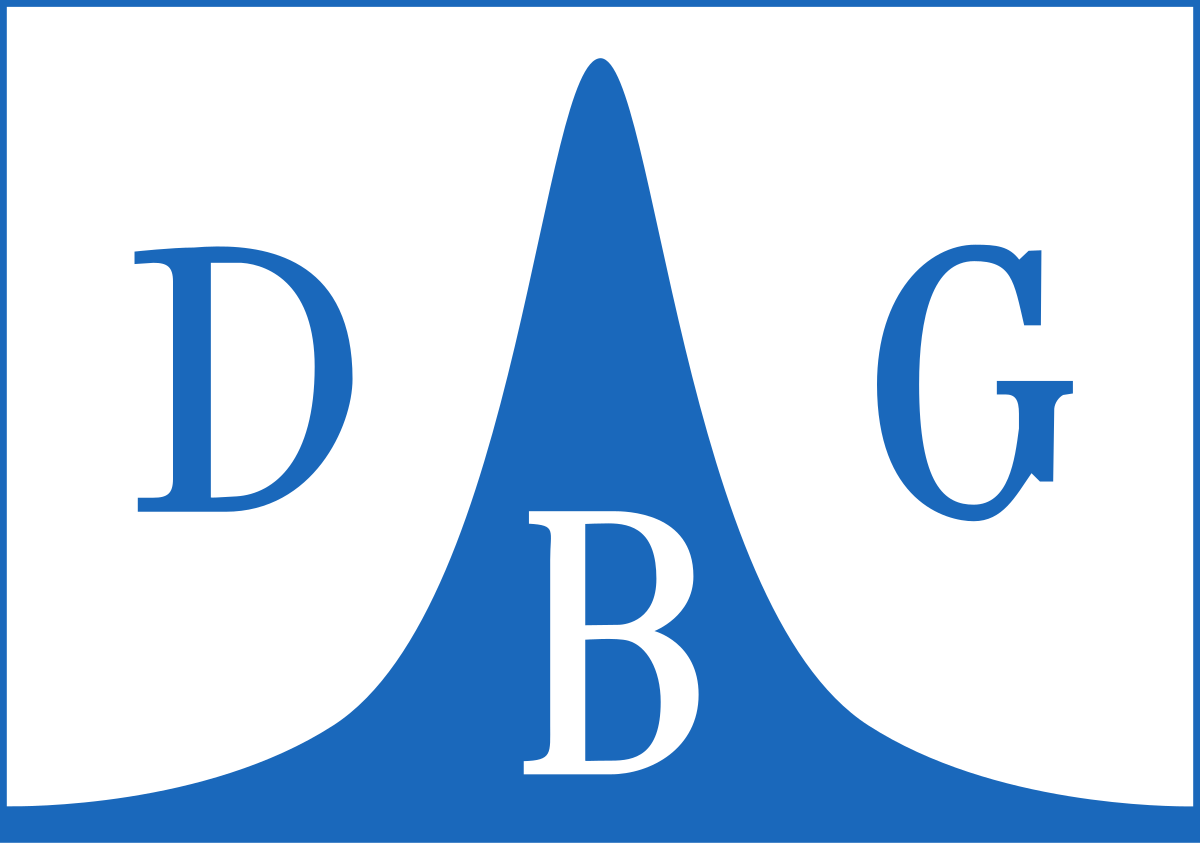 Die Deutsche Bunsen-Gesellschaft für Physikalische Chemie zeichnet HU-Professor Sauer, ehemaliges Mitglied und einer der Gründer von IRIS Adlershof, in Anerkennung seiner grundlegenden Arbeiten aus. Die Bunsen-Denkmünze wird seit 1908 an „Persönlichkeiten verliehen, welche die Ziele der physikalischen Chemie durch wissenschaftliche oder praktische Leistungen in hervorragender Weise gefördert haben“.
Die Deutsche Bunsen-Gesellschaft für Physikalische Chemie zeichnet HU-Professor Sauer, ehemaliges Mitglied und einer der Gründer von IRIS Adlershof, in Anerkennung seiner grundlegenden Arbeiten aus. Die Bunsen-Denkmünze wird seit 1908 an „Persönlichkeiten verliehen, welche die Ziele der physikalischen Chemie durch wissenschaftliche oder praktische Leistungen in hervorragender Weise gefördert haben“.
IRIS Adlershof gratuliert herzlich.
mehr...
13.11.2020Implementation of Flexible Embedded Nanowire Electrodes in Organic Light‐Emitting Diodes
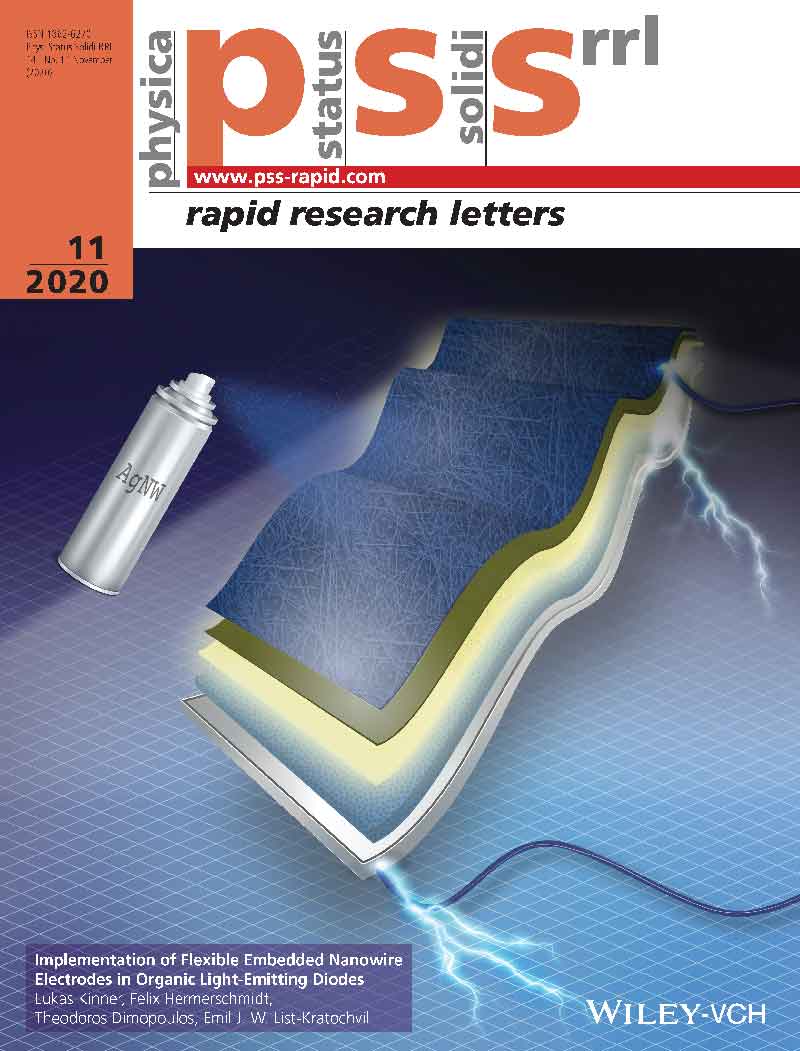 Researchers in the HySPRINT joint lab Generative manufacturing processes for hybrid components (GenFab) of Humboldt-Universität zu Berlin (HU) and Helmholtz-Zentrum Berlin (HZB) have developed together with the Austrian Institute of Technology (AIT) a method to produce flexible transparent electrodes based on silver nanowires. Specifically, the nanowires are spray coated and embedded within a polymer resin on top of polyethylene terephthalate (PET) substrate.
Researchers in the HySPRINT joint lab Generative manufacturing processes for hybrid components (GenFab) of Humboldt-Universität zu Berlin (HU) and Helmholtz-Zentrum Berlin (HZB) have developed together with the Austrian Institute of Technology (AIT) a method to produce flexible transparent electrodes based on silver nanowires. Specifically, the nanowires are spray coated and embedded within a polymer resin on top of polyethylene terephthalate (PET) substrate.
The researchers fabricated organic light-emitting diodes employing the developed ITO‐free nanowire electrodes. These show considerably higher luminance values at the same efficacy compared to their ITO‐based counterparts. As Dr. Theodoros Dimopoulos, senior scientist at AIT, points out, "Replacing ITO in optoelectronic devices is a key area of research and this work shows the possibilities of doing so without loss in performance."
GenFab, led by IRIS Adlershof member Prof. List-Kratochvil, is moving in laboratory rooms in the new IRIS-research building for further development.The work has been published in physica status solidi rapid research letters and is featured on the cover of the November 2020 issue of the journal.
Publication
Lukas Kinner, Felix Hermerschmidt, Theodoros Dimopoulos, and Emil J. W. List-Kratochvil
Implementation of Flexible Embedded Nanowire Electrodes in Organic Light‐Emitting Diodes
Phys. Status Solidi RRL 14 (2020) 2000305
20.10.2020Die Zukunft der Biomedizin?
Forscher der Humboldt-Universität und des Experimental and Clinical Research Centers (ECRC) haben das erste Infrarot basierte Mikroskop mit Quantenlicht gebaut. Durch ein gezieltes Verschränken der Photonen gelang ihnen eine Abbildung von Gewebeproben mit vorher unsichtbaren Bio-Merkmalen.
Forscher*innen der Emmy-Noether-Gruppe "Nichtlineare Quantenoptik" des Instituts für Physik und des IRIS Adlershof der Humboldt-Universität zu Berlin sowie des Experimental and Clinical Research Centers (ECRC), einer gemeinsamen Einrichtung von Charité – Universitätsmedizin zu Berlin und dem Max-Delbrück-Centrum für Molekulare Medizin in der Helmholtz-Gemeinschaft, sind mit ihrem neuen Experiment auf der Titelseite der Fachzeitschrift Science Advances zu sehen. Ihnen gelang es erstmalig verschränkte Lichtteilchen (Photonen) für Mikroskopaufnahmen zu verwenden. Diese sehr überraschende Methode zur Quanten-Bildgebung mit undetektierten Photonen, wurde erst 2014 in der Arbeitsgruppe um den berühmten Quantenphysiker Anton Zeilinger in Wien entdeckt. Die ersten Aufnahmen zeigen Gewebeproben eines Mäuseherzens.
Die Gewebeprobe wird mit „unsichtbarem“ Licht im mittleren Infrarot (MIR) untersucht, ohne dieses Licht jemals zu sehen. Die Forscher verwenden hierfür einen normalen Laser und eine kommerzielle CMOS-Kamera. Dadurch ist dieser Ansatz für MIR-Mikroskopie nicht nur robust, schnell und rauscharm, sondern auch kostengünstig - was sie für Anwendungen in der realen Welt sehr vielversprechend macht. Dieser Einsatz von Quantenlicht könnte so zukünftig das Gebiet der biomedizinischen Mikroskopie unterstützen.
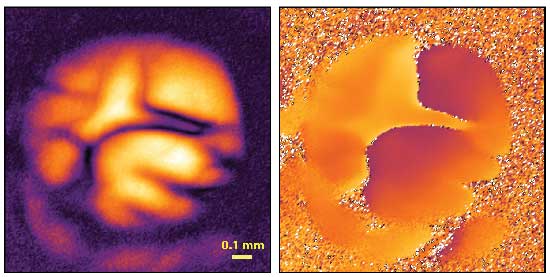
Quantenmikroskopie eines Mausherzens. Verschränkte Photonen ermöglichen die Erstellung eines hochauflösenden MIR-Bildes unter Verwendung einer CMOS-Kamera und extrem niedrigen Beleuchtungsintensitäten. Im Bild: Absorption (links) und Phaseninformation (rechts) aus einem Bereich in einem Mausherz. Der gelbe Balken entspricht 0,1 mm, was etwa der Breite eines menschlichen Haares entspricht.
Die derzeitige Kameratechnik wird weitestgehend von silizium-basierten Technologien dominiert. Es gibt Milliarden von CCD- (charge coupled device) und CMOS- (complementary metal oxide semiconductor) Sensoren in Digitalkameras, Mobiltelefonen oder (autonomen) Fahrzeugen. Diese wandeln Licht (Photonen) in elektrische Signale (Elektronen) um. Aber wie auch unsere menschlichen Augen können diese Geräte den wichtigen mittleren IR-Bereich nicht sehen. Dieser Bereich ist für diese Geräte gewissermaßen unsichtbar, jedoch bspw. für die biomedizinischen Wissenschaften sehr interessant, da er wertvolle biochemische Informationen enthält, die es ermöglichen, verschiedene Biomoleküle voneinander zu unterscheiden. Die wenigen Kameratechnologien, die es in diesen wichtigen Wellenlängenbereich gibt, sind jedoch sehr teuer, raschbehaftet und unterliegen strengen Exportbeschränkungen. Deshalb bleibt das riesige Potenzial des MIR-Lichts für die Biowissenschaften bisher weitgehend ungenutzt. Doch die Forscher haben eine neue Lösung vorgeschlagen: „Der Einsatz einer wirklich kontraintuitiven bildgebenden Technik mit quantenverschränkten Photonen erlaubt es uns, den Einfluss einer Probe auf einen Lichtstrahl im mittleren Infrarot zu messen, ohne dass dieses Licht jemals detektiert werden muss“, erklärt Inna Kviatkovsky, die Hauptautorin der Studie.
Es handelt sich dabei nicht um eine Umwandlung oder ein so genanntes 'Ghost-Imaging', sondern die Technik beruht auf einem subtilen Interferenzeffekt: Zunächst wird ein Photonenpaar erzeugt, indem ein Pumplaser in einen nichtlinearen Kristall fokussiert wird. Dieser Prozess kann so eingestellt werden, dass eines der Photonen im sichtbaren Bereich und das andere im MIR-Bereich (unsichtbar) liegt. Das MIR-Photon beleuchtet nun die Probe und wird zusammen mit dem sichtbaren Photon und dem Laser zum Kristall zurückgeschickt. Hier findet die entscheidende Quanteninterferenz statt - und zwar zwischen den beiden Möglichkeiten, dass das Photonenpaar bei diesem ersten Durchgang erzeugt wird, und der Möglichkeit, nicht beim ersten Durchgang, sondern beim zweiten Durchgang durch den Kristall erzeugt zu werden. Jegliche Störung, z.B. eine durch die Probe verursachte Absorption, wirkt sich nun auf diese Interferenz aus, und interessanterweise kann diese durch alleinige Betrachtung der sichtbaren Photonen gemessen werden. Mit der richtigen Optik und Ausnutzung der räumlichen Verschränkung der Photonen kann man ein auf diesem Prinzip basierendes MIR-Mikroskop bauen, was das Team in seiner Arbeit zum ersten Mal gezeigt hat.
„Nach einigen anfänglichen Herausforderungen waren wir wirklich überrascht, wie gut dies an einer realen Gewebeprobe funktioniert“, bemerkt Kviatkovsky. „Außerdem bestrahlen wir die Proben nur mit extrem niedrigen Leistungen im MIR - so niedrig, dass keine Kameratechnik der Welt diese Bilder direkt erfassen könnte.“ Obwohl dies natürlich nur die erste Demonstration dieser Mikroskopietechnik ist, entwickelt die Gruppe um Dr. Sven Ramelow bereits eine verbesserte Version der Technik. Die Forscher stellen sich ein mit Quantenlicht betriebenes Mikroskop im mittleren IR-Bereich vor, das die schnelle Messung der detaillierten, lokalisierten Absorptionsspektren für die gesamte Probe ermöglicht. „Im Erfolgsfall könnte dies ein breites Anwendungsspektrum für markierungsfreies Bio-Imaging haben, und wir planen, dies mit unseren Kooperationspartnern vom ECRC intensiv zu untersuchen“, erklärt Dr. Sven Ramelow, Gruppenleiter am Institut für Physik und IRIS Adlershof der Humboldt-Universität und Initiator des Projekts.
Die Forschung wurde von der Deutschen Forschungsgemeinschaft (DFG) im Rahmen des Emmy-Noether-Programms gefördert.
Publikation:
Inna Kviatkovsky, Helen M. Chrzanowski, Ellen G. Avery, Hendrik Bartolomaeus, and Sven Ramelow
„Microscopy with undetected photons in the mid-infrared.“
Veröffentlichung: 14. Oktober 2020 in Science Advances Issue 42, p. xxx
15.09.2020IRIS-Nachwuchsforscher Michael Kathan erhält renommierten Preis für Photochemie
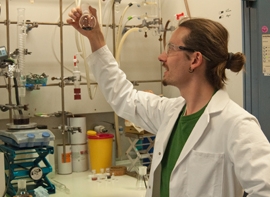 Für seine herausragende Dissertation "Photoswitching Reactivity: From remote-controlled to light-driven chemical systems" wurde Dr. Michael P. Kathan am 14. September 2020 mit dem Albert-Weller-Preis ausgezeichnet. Dies ist die zweite Auszeichnung nach dem Friedrich Hirzebruch-Promotionspreis 2020.
Für seine herausragende Dissertation "Photoswitching Reactivity: From remote-controlled to light-driven chemical systems" wurde Dr. Michael P. Kathan am 14. September 2020 mit dem Albert-Weller-Preis ausgezeichnet. Dies ist die zweite Auszeichnung nach dem Friedrich Hirzebruch-Promotionspreis 2020.
Michael Kathan, Jahrgang 1988, studierte Chemie an der Freien Universität Berlin und ETH Zürich, wo er sich mit Fluorchemie und gespannten Aromaten beschäftigte. Nach seinem Masterabschluss an der Freien Universität Berlin begann er seine Doktorarbeit 2015 in der Arbeitsgruppe von IRIS-Mitglied Prof. Stefan Hecht an der Humboldt-Universität zu Berlin, gefördert durch die Studienstiftung des deutschen Volkes.
Der Forschungsschwerpunkt von Michael Kathan lag auf der Kontrolle von chemischer Reaktivität und adaptiven Materialien mit Licht:
In innovativer Weise nutzte er Licht als Werkzeug, um den Verlauf chemischer Reaktionen kontrollieren und Materialeigenschaften steuern zu können. Dreh- und Angelpunkt der Dissertation von Michael Kathan ist die Entwicklung des Konzeptes der „Photo-Umpolung“, bei der das chemische Verhalten von Molekülen durch das dosierte Bestrahlen mit Licht verschiedener Farben grundlegend verändert werden kann. Die Jury hob in ihrer Begründung hervor, dass es Kathan in beeindruckender Weise gelänge, den Bogen von den physikochemischen Grundlagen über die Herstellung intelligenter Materialien bis hin zu neuen, nachhaltigen Konzepten zu spannen, die gesellschaftlich relevante Fragen aufgreifen. So eröffnet seine Forschung den Zugang zu kostengünstigen Sensormaterialien, die etwa den Frischezustand leicht verderblicher Lebensmittel anzeigen. Der lichtgesteuerte Auf- und Abbau von Kunststoffmaterialien verspricht zudem Fortschritte im Bereich des nachhaltigen Recyclings von Mischungen verschiedener Plastikprodukte.
Den Albert-Weller-Preis verlieh die GDCh gemeinsam mit der Deutschen Bunsen-Gesellschaft am 14. September 2020 auf der digital stattfindenden 27. Lecture Conference on Photochemistry. In diesem Jahr teilen sich die Auszeichnung zwei Nachwuchsforschende: Neben Michael Kathan erhielt sie Yusen Luo, die am Leibniz-IPHT und der Universität Jena promovierte und inzwischen als Post-Doc am Institut für Chemie und Pharmazie der Universität Erlangen tätig ist.
Kathans Forschung führte bereits zu mehreren Publikationen in einschlägigen Fachmedien. Seit dem Abschluss seiner Dissertation im Januar 2019 arbeitet Michael Kathan als Postdoktorand bei Prof. Ben Feringa an der Universität Groningen, Niederlande, an molekularen Motoren.
Wir gratulieren herzlich!
11.09.2020Erstmalige Quantenmessung von Temperatur in einem lebenden Organismus
Die genaue Messung der Temperatur mit gleichzeitig höchster, räumlicher Auflösung in lebenden Organismen ist von großer Wichtigkeit, um Stoffwechselprozesse genau untersuchen zu können. Eine solche Messung war jedoch bislang wegen fehlender präziser und zuverlässiger Nanothermometer oder Nanotemperatursonden unmöglich. Ein internationales Forscherteam um Prof. Oliver Benson, Mitglied von IRIS Adlershof und Prof. Masazumi Fujiwara von der Osaka City Universitity hat nun einen nur wenige Nanometer großen Quantensensor entwickelt und Temperaturveränderungen in einem Fadenwurm nach Verabreichung einer pharmakologischen Substanz messen können. Die Resultate öffnen den Weg für vielfältige Anwendungen der neuartigen Quantensensorik in der biomedizinischen Forschung, z.B. für die Aufnahme hochauflösender Wärmebilder.
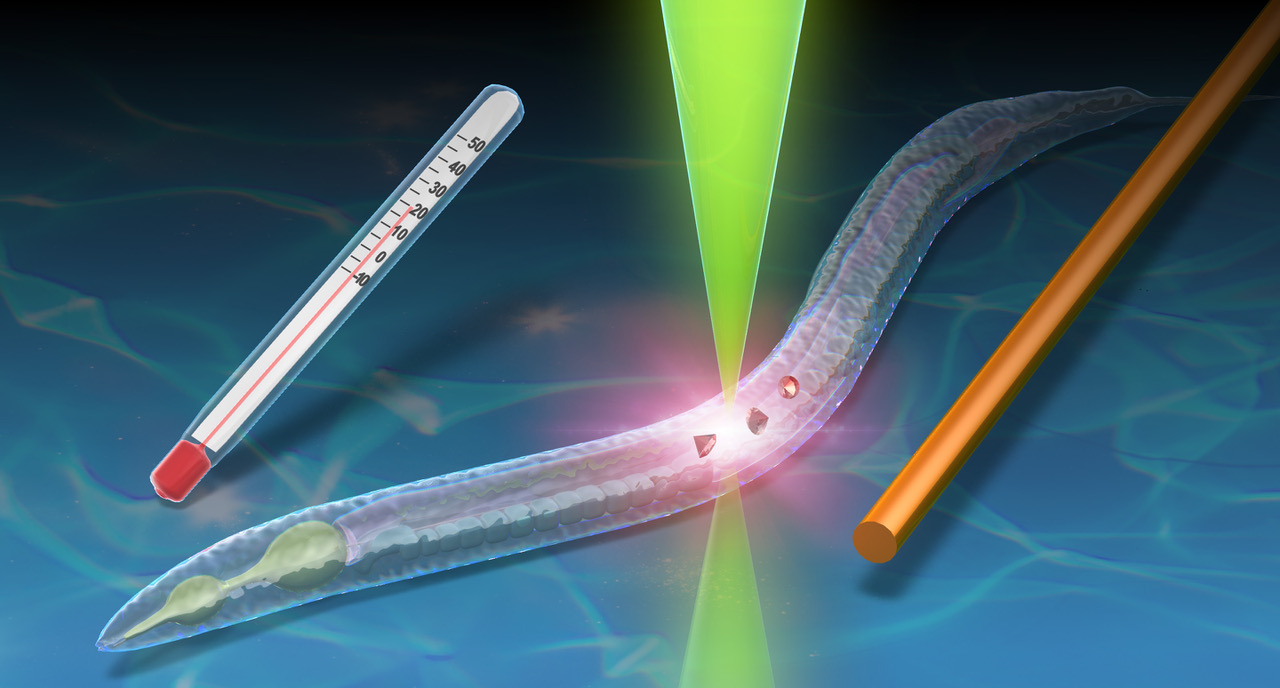
Schema des Experiments: Mit Hilfe von Laserlicht (grün) kann die charakteristische Mikrowellenresonanzlinie (in orange: Mikrowellenantenne) von Nanodiamanten in einem Fadenwurm (typische Länge 1 mm) unter einem Mikroskop aufgenommen werden. Da diese von der Temperatur abhängt, kann eine Temperaturänderung sehr präzise und lokal gemessen werden. (©Masazumi Fujiwara, Osaka City University, E-mail an Oliver Benson)
Weitere Informationen:
Die Wissenschaftler verwendeten in ihrem Experiment kleine Diamanten mit Durchmessern von wenigen 10 Nanometern (1 Nanometer = 1 Millionstel Millimeter). Diese Nanodiamanten enthalten leuchtende (fluoreszierende) Quantendefekte, die man unter einem optischen Mikroskop beobachten kann. Mit Hilfe von eingestrahlten Mikrowellen kann man die Helligkeit der leuchtenden Quantendefekte verändern. Bei einer ganz bestimmten Mikrowellenfrequenz erscheinen die Defekte etwas dunkler. Diese so genannte Resonanzfrequenz hängt von der Temperatur ab. Die Forscher konnten nun die Verschiebung der Resonanzfrequenz sehr genau bestimmen und damit die Temperaturänderung am Ort der Nanodiamanten präzise bestimmen.
Die Nanodiamanten wurden in einen Fadenwurm (C. Elegans) eingebracht. C. Elegans ist ein sehr gut verstandenes Modellsystem und wird in sehr vielen biophysikalischen und biochemischen Experimenten untersucht. Durch Gabe einer bestimmten pharmakologischen Substanz konnten in einzelnen Zellen des Wurms die Mitochondrien, gewissermaßen die “Kraftwerke” der Zellen, zu erhöhter Aktivität angeregt werden. Dies zeigte sich dann als eine leichte lokale Temperaturerhöhung von wenigen Grad.
Die Forscher zeigten sich fasziniert von den Ergebnissen des Experimentes. "Ich hätte nie gedacht, dass die neuen Methoden der Quantentechnologie sogar bei lebenden Organismen so gut funktionieren.“ sagte Masazumi Fujiwara, Professor an der Osaka City Universität. „Mit diesen vielversprechenden Resultaten sind wir sehr zuversichtlich, dass die Quantensensorik sich auch in der Biochemie und Biomedizin etablieren wird.“ ergänzt Prof. Oliver Benson von der Humboldt-Universität. Die Forscherteams arbeiten nun daran, ihre Messmethode weiter zu verbessern und zu automatisieren, damit sie leicht in Standardmikroskopie-Aufbauten integriert werden kann.
Funding:
Osaka City University Strategic Research Grant. Murata Science Foundation.
JSPS-KAKENHI (20H00335, 16K13646, 17H02741, 19K14636, 17H02738).
MEXT-LEADER program. Sumitomo Research Foundation.
Deutsche Forschungsgemeinschaft (FOR 1493).
Kontakt:
Oliver Benson
Nano-Optik
Institut für Physik und IRIS Adlershof der Humboldt-Universität zu Berlin
Newtonstraße 15
12489 Berlin
030 2093 4711
oliver.bensonphysik.hu-berlin.de
Real-time nanodiamond thermometry probing in vivo thermogenic responses
M. Fujiwara, S. Sun, A. Dohms, Y. Nishimura, K. Suto, Y. Takezawa, K. Oshimi, L. Zhao, N. Sadzak, Y. Umehara, Y. Teki, N. Komatsu, O. Benson, Y. Shikano, and E. Kage-Nakadai,
Science Advances (2020). DOI: 10.1126/sciadv.aba9636
09.09.2020Das Graduiertenkolleg 2575 „Rethinking Quantum Field Theory“ nimmt seine Arbeit auf.
.png) Das von der Deutschen Forschungsgemeinschaft (DFG) geförderte Graduiertenkolleg (GRK) 2575 „Überdenken der Quantenfeldtheorie - Rethinking Quantum Field Theory“ hat seine Arbeit aufgenommen. Pandemiebedingt verzögerte sich die Einstellung der ersten beiden Kohorten auf den Herbst 2020. Zum Oktober geht das Kolleg aber nun mit 15 Promovierenden aus 10 Ländern und zwei Postdoktoranden an den Start. Das GRK wird sich mit drängenden theoretischen Fragen und wesentlichen Innovationen der Quantenfeldtheorie beschäftigen, die über etablierte Methoden hinausgehen. „Die Quantenfeldtheorie ist ein hochentwickelter spezialisierter Formalismus der theoretischen Physik zur Beschreibung von wechselwirkenden Vielteilchensystemen. Dennoch sind noch grundlegende Fragen offen, insbesondere in der Beziehung zur Gravitation, und gerade in den letzten Jahren haben sich hier faszinierende, ja beinahe revolutionäre Innovationen eingestellt, die im Rahmen des Graduiertenkollegs weiter erforscht werden“, sagt der Sprecher Prof. Dr. Jan Plefka, Leiter der Arbeitsgruppe Quantenfelder und Stringtheorie am Institut für Physik. Die Pandemie erschwert jedoch weiterhin die Arbeit. „Glücklicherweise sind wir Theoretiker auch im Home Office mit Laptop, Papier und Bleistift, Mathematica und Zoom beinahe voll arbeitsfähig. Was jedoch zu kurz kommt ist der spontane Austausch zwischen uns, etwa im Common Room beim Kaffee oder beim gemeinsamen Lunch, bei denen häufig neue Ideen entstehen. Jedes Meeting ist nun geplant.“ So werden sämtliche Kurse, Kolloquien und Seminare auch im Wintersemester 2020/21 virtuell durchgeführt werden müssen. Auch ist aktuell unklar, ob das erste Retreat im November wie geplant in Präsenz durchgeführt werden kann. „Die Organisation ist in vollem Gange. Gerade die erste Tagung ist uns sehr wichtig, um allen Beteiligten die Möglichkeit zu geben, sich in ungezwungenem Rahmen kennen zu lernen", erklärt PD Dr. Oliver Bär, der Koordinator des GRKs.
Das von der Deutschen Forschungsgemeinschaft (DFG) geförderte Graduiertenkolleg (GRK) 2575 „Überdenken der Quantenfeldtheorie - Rethinking Quantum Field Theory“ hat seine Arbeit aufgenommen. Pandemiebedingt verzögerte sich die Einstellung der ersten beiden Kohorten auf den Herbst 2020. Zum Oktober geht das Kolleg aber nun mit 15 Promovierenden aus 10 Ländern und zwei Postdoktoranden an den Start. Das GRK wird sich mit drängenden theoretischen Fragen und wesentlichen Innovationen der Quantenfeldtheorie beschäftigen, die über etablierte Methoden hinausgehen. „Die Quantenfeldtheorie ist ein hochentwickelter spezialisierter Formalismus der theoretischen Physik zur Beschreibung von wechselwirkenden Vielteilchensystemen. Dennoch sind noch grundlegende Fragen offen, insbesondere in der Beziehung zur Gravitation, und gerade in den letzten Jahren haben sich hier faszinierende, ja beinahe revolutionäre Innovationen eingestellt, die im Rahmen des Graduiertenkollegs weiter erforscht werden“, sagt der Sprecher Prof. Dr. Jan Plefka, Leiter der Arbeitsgruppe Quantenfelder und Stringtheorie am Institut für Physik. Die Pandemie erschwert jedoch weiterhin die Arbeit. „Glücklicherweise sind wir Theoretiker auch im Home Office mit Laptop, Papier und Bleistift, Mathematica und Zoom beinahe voll arbeitsfähig. Was jedoch zu kurz kommt ist der spontane Austausch zwischen uns, etwa im Common Room beim Kaffee oder beim gemeinsamen Lunch, bei denen häufig neue Ideen entstehen. Jedes Meeting ist nun geplant.“ So werden sämtliche Kurse, Kolloquien und Seminare auch im Wintersemester 2020/21 virtuell durchgeführt werden müssen. Auch ist aktuell unklar, ob das erste Retreat im November wie geplant in Präsenz durchgeführt werden kann. „Die Organisation ist in vollem Gange. Gerade die erste Tagung ist uns sehr wichtig, um allen Beteiligten die Möglichkeit zu geben, sich in ungezwungenem Rahmen kennen zu lernen", erklärt PD Dr. Oliver Bär, der Koordinator des GRKs.
Das Graduiertenkolleg wird von 13 Principal Investigators getragen und schließt sämtliche Arbeitsgruppen in der theoretischen Teilchenphysik am Institut für Physik ein. Weitere Kooperationspartner sind das Max-Planck-Institut für Gravitationsphysik und das Helmholtz Zentrum DESY. „Gerade die inhaltliche Breite machen das GRK so attraktiv. Sie bietet den jungen Nachwuchswissenschaftlern viele Möglichkeiten, über den Tellerrand ihres eigenen Projektes zu schauen", erläutert der stellvertretende Sprecher Prof. Dr. Agostino Patella. „Es ist das ausgesprochene Ziel des GRKs, die Promovierenden umfassend und breit auszubilden und sie somit auf eine wissenschaftliche Karriere vorzubereiten."
Die Quantenfeldtheorie als Vereinigung von Quantenmechanik und spezieller Relativitätstheorie stellt eine der wesentlichen intellektuellen Leistungen des letzten Jahrhunderts dar. Diese theoretischen Fortschritte, eng verbunden mit experimentellen Beobachtungen, führten zum Standardmodell der Elementarteilchenphysik. Mit der experimentellen Entdeckung des Higgsbosons im Jahr 2012 verfügen wir heute somit über eine empirisch validierte und mathematisch konsistente Theorie bis zu höchsten Energieskalen. Dennoch weisen eine Reihe von terrestrischen Experimenten, sowie die astrophysikalisch gesicherte Existenz von dunkler Materie und Energie darauf hin, dass das Standardmodell nicht die finale Theorie der Teilchenphysik sein kann. Parallel hierzu zwingen drängende theoretische Fragen, wie die Natur der Quantengravitation, das Hierarchieproblem oder die Entdeckung von Dualitäten zwischen verschiedenen Quantenfeldtheorien, etablierte Formulierungen zu überdenken. In jüngerer Zeit sind entscheidende Innovationen in der Quantenfeldtheorie erreicht worden, die zu einem ernsthaften Überdenken ihrer Grundprinzipien geführt haben. Diese beinhalten neue Methoden der Störungstheorie, Dualitäten und versteckte Symmetrien, die prominente Rolle effektiver Feldtheorien, moderne Methoden für Streuamplituden sowie der Gradientenfluss in der Gitterfeldtheorie. Die weitere Entwicklung dieser Methoden und Konzepte der modernen Quantenfeldtheorie in der Form eines Überdenkens der Quantenfeldtheorie stellen die gemeinsame Basis dieses Graduiertenkollegs dar. Hieraus folgt ein anspruchsvolles Qualifizierungsprogramm, das sich am aktuellen Forschungsstand orientiert.
Weitere Informationen finden Sie hier.
05.09.2020Neue Nachwuchsgruppe „Erforschung der Landschaft der Stringtheorie Flussvakua durch Exceptional Field Theory“ im Rahmen des Emmy-Noether-Programms der Deutschen Forschungsgemeinschaft
 Dr. Emanuel Malek etabliert ab August am Institut für Physik der Humboldt-Universität zu Berlin eine Nachwuchsgruppe zum Thema „Erforschung der Landschaft der Stringtheorie Flussvakua durch Exceptional Field Theory“. Die Gruppe wird durch das Emmy-Noether-Programm der Deutschen Forschungsgemeinschaft mit über 1,2 Millionen Euro für 6 Jahre unterstützt. Nach seiner Promotion an der University of Cambridge im Jahr 2014 verbrachte Dr. Malek ein Jahr als Postdoctoral Fellow an der University of Cape Town in Südafrika, gefolgt von einer dreijährigen Tätigkeit als Research Fellow an der Ludwig-Maximilians-Universität München. Anschließend forschte er für zwei weitere Jahre am Max-Planck-Institut für Gravitationsphysik in Potsdam. An der Humboldt-Universität wird Dr. Malek seine Arbeit auf dem Gebiet der theoretischen Physik fortsetzen und dabei in engem Austausch mit den Mitgliedern des IRIS Adlershof, Prof. Dr. Jan Plefka, Prof. Dr. Matthias Staudacher und Dr. Olaf Hohm, stehen.
Dr. Emanuel Malek etabliert ab August am Institut für Physik der Humboldt-Universität zu Berlin eine Nachwuchsgruppe zum Thema „Erforschung der Landschaft der Stringtheorie Flussvakua durch Exceptional Field Theory“. Die Gruppe wird durch das Emmy-Noether-Programm der Deutschen Forschungsgemeinschaft mit über 1,2 Millionen Euro für 6 Jahre unterstützt. Nach seiner Promotion an der University of Cambridge im Jahr 2014 verbrachte Dr. Malek ein Jahr als Postdoctoral Fellow an der University of Cape Town in Südafrika, gefolgt von einer dreijährigen Tätigkeit als Research Fellow an der Ludwig-Maximilians-Universität München. Anschließend forschte er für zwei weitere Jahre am Max-Planck-Institut für Gravitationsphysik in Potsdam. An der Humboldt-Universität wird Dr. Malek seine Arbeit auf dem Gebiet der theoretischen Physik fortsetzen und dabei in engem Austausch mit den Mitgliedern des IRIS Adlershof, Prof. Dr. Jan Plefka, Prof. Dr. Matthias Staudacher und Dr. Olaf Hohm, stehen.
Dr. Maleks Forschungsgruppe entwickelt neue Rechenwerkzeuge, um Vorhersagen aus der Stringtheorie für unser Universum zu gewinnen. Stringtheorie basiert auf der Idee, dass alle Materie aus winzigen vibrierenden Saiten (englisch: Strings) besteht und ist unser bester Versuch, die Schwerkraft mit der Quantenmechanik zu vereinen. Eine Kernvorhersage der Stringtheorie sind sechs weitere räumliche Dimensionen in unserem Universum, zusätzlich zu unseren alltäglichen drei räumlichen Dimensionen. Zwar sind diese extra Dimensionen zu klein, um direkt beobachtet zu werden, aber ihre Form bestimmt direkt die Partikel und Kräfte, die wir in unserem 3-dimensionellem Universum beobachten. Bisher war es jedoch, wegen fehlendem mathematischen Formalismus, nicht möglich, eine große Klasse an Formen der extra Dimensionen, sogenannte Flusskompaktifizierungen, systematisch zu analysieren. Um dieses Hindernis zu umgehen, entwickeln und benutzen Dr. Malek und seine Forschungsgruppe die neue mathematischen Technicken der Exceptional Field Theory, was zum ersten Mal eine systematische Untersuchung der möglichen Formen der extra Dimensionen der Stringtheorie erlaubt. Die hierdurch entstehenden Einsichten sind unerlässlich, um Stringtheorie in Zukunft experimentell testen zu können.
IRIS Adlershof wüncht Dr. Malek für das Erreichen dieser Ziele viel Erfolg und freut sich auf eine fruchtbare Zusammenarbeit.
26.08.2020Stefan Hecht zum Mitglied der Academia Europaea gewählt
Die Academia Europaea hat Prof. Stefan Hecht, Mitglied von IRIS Adlershof, als neues Mitglied aufgenommen. Die Akademie hat ihren Sitz in London und wurde im Jahr 1988 gegründet. Sie umfasst derzeit mehr als 4.000 Mitglieder, darunter 54 Nobelpreisträger.
Ziel der Akademie ist es, Bildung und Forschung in Europa zu fördern sowie den interdisziplinären und internationalen Austausch in der Wissenschaft zu stärken. Darüber hinaus berät die Akademie als unabhängiger Partner Regierungen und internationale Organisationen in wissenschaftlichen Fragestellungen. Die Mitglieder sind führende Experten aus den Bereichen Chemie, Physik, Biologie, Medizin, Mathematik, Informatik und Technik, den Sozial- und Geisteswissenschaften sowie den Wirtschafts- und Rechtswissenschaften.
„Die Wahl in die Sektion Chemie der Academia Europaea ist eine große Ehre und ich bin sehr glücklich über diese besondere persönliche Anerkennung meiner Forschungsarbeiten", erklärt Stefan Hecht. Seine Schwerpunkte liegen auf dem Gebiet der makro- und supramolekularen Chemie und der organischen Materialsynthese mit besonderem Interesse für Licht-kontrollierte und -getriebene Prozesse sowie Polymerisierung auf Oberflächen.
Die Sektion Chemie deckt alle Bereiche der experimentellen und theoretischen Chemie ab, die sich mit der Untersuchung von Materie und ihren Eigenschaften befasst. Darüber hinaus widmen sich die Mitglieder den Fragen, wie und warum sich Stoffe verbinden oder trennen, um andere Stoffe zu bilden und wie Stoffe mit Energie wechselwirken. Die Sektion bildet die Schnittstelle zu anderen Disziplinen und verwandten Gebieten der Pharmazie, der chemischen Verfahrenstechnik und der Materialwissenschaften, wo sich die Forschung in erster Linie mit chemischen Aspekten und weniger mit klinischen oder ingenieurwissenschaftlichen Fragestellungen befasst.
„Durch die Mitgliedschaft wird mir ein herausragendes Netzwerk zu Teil, das ich in Zukunft für den fachübergreifenden Austausch nutzen möchte. Es ist ein Privileg durch die beratende Arbeit der Akademie auch an politischen Weichenstellungen beratend mitwirken zu können“, so Stefan Hecht.
21.08.2020Valentina Forini im Podcast der Einstein Stiftung
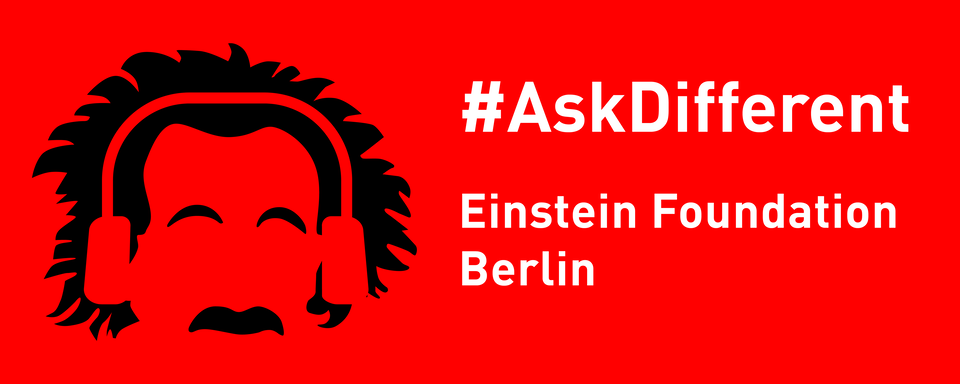 Mit der neuen Podcast-Reihe #AskDifferent erweitert die Einstein Stiftung Berlin ihr wissenschaftskommunikatives Portfolio. Geförderte und mit der Stiftung verbundene Wissenschaftlerinnen und Wissenschaftler geben persönliche Einblicke in ihr hochspezialisiertes Arbeitsfeld und ihren Lebensweg.
Mit der neuen Podcast-Reihe #AskDifferent erweitert die Einstein Stiftung Berlin ihr wissenschaftskommunikatives Portfolio. Geförderte und mit der Stiftung verbundene Wissenschaftlerinnen und Wissenschaftler geben persönliche Einblicke in ihr hochspezialisiertes Arbeitsfeld und ihren Lebensweg.
In Folge #2 You will be challenged erzählt die Physikerin Valentina Forini, Mitglieder von IRIS Adlershof und Dozentin an der City University of London von ihren zwei Leidenschaften, der Musik und der hochabstrakten String Theory.
mehr...
19.08.2020Wissenschaft als Katalysator des Wandels – „Lebendiger Blog“ weltweit gestartet
Im Juni 2020 begann ein internationales Team von gut 30 Wissenschaftler*innen die Arbeit an einem in seiner Art bislang einzigartigen gemeinsamen Text
Unter den Autor*innen aus Wissenschaftsinstitutionen weltweit war Fraser Stoddart, der 2016 den Nobelpreis für Chemie erhielt. Die Forschenden gingen der Frage nach: Wie soll unser "Zuhause“ in der Wissenschaft aussehen? Ihre Antwort, kurzgefasst: bunt, spannend und exzellent. Die gemeinsame Überzeugung, die dem Text vorangestellt wurde: "Vielfalt wertzuschätzen, das führt zu wissenschaftlicher Exzellenz, zu Fortschritt und ist vor allem richtig“.
Für ihre Arbeit am Artikel schlossen sich die Autoren spontan über soziale Medien und durch Echtzeit-Kommunikation zu ad-hoc-Teams zusammen.
Michael J.Bojdys, Juniormitglied von IRIS Adlershof, brachte verschiedene Verlagshäuser zur gemeinsamen Publikation des Artikels zusammen. Die Bereitschaft dort war wegen des universellen Charakters der angesprochenen Probleme groß, so Bojdys:
"Dieses Stück sprach für sich selbst, es brauchte nicht allzu viel Überzeugung. Wenn die Leute nicht bereit sind, den moralistischen Argumenten zu folgen, dass dieses Stück zur rechten Zeit kommt und wichtig ist, dann doch wenigstens, dass dieser Aufsatz Aufmerksamkeit erzeugen wird. Und das wird er, da bin ich mir sicher."
Vor allem aber hätten die Autoren hart daran gearbeitet, einen Ton des Fortschritts und der Zusammenarbeit zu finden, und nicht der Konfrontation. "Wir wählten die Sprache eines positiven Ausblicks, wie ein wissenschaftliches Miteinander aussehen könnte. Das ist es, was die Verleger letztlich überzeugt hat."
Ausgangspunkt für den Blog "Diverse Views in Science" sind drei Fragen, die Wissenschaftler*innen aus der ganzen Welt aus ihrer Perspektive beantworten:
- Welche wissenschaftlichen Probleme werden die Trends im kommenden Jahrzehnt bestimmen?
- Wie erleben Sie in Ihrem Leben, in Ihrem Labor und in Ihrem Gastland Vielfalt, Gerechtigkeit und Inklusion?
- Was ist Ihre Botschaft an die nächste Generation von Wissenschaftlern, und was sind Ihre Tipps für ihren Erfolg?
Dieser Blog ist eine lebendige, wachsende Sammlung von Ideen, wie Wissenschaftler*innen zusammen leben und arbeiten sollten.
Die ersten Fragen und Antworten dienten als Grundlage für den Aufsatz „A diverse view of science to catalyse change“. Dieser wurde am 17. August 2020 veröffentlicht in den Zeitschriften Nature Chemistry, Chemical Science, Journal of the American Chemical Society, Angewandte Chemie International Edition, Canadian Journal of Chemistry und Croatica Chemica Acta.
17.08.2020Rufannahme und Ernennung von Prof. Dr. Jan Lüning

Das Institut für Physik und IRIS Adlershof sind hocherfreut über die Rufannahme und Ernennung zum Professor von Prof. Dr. Jan Lüning auf die W3-S-Professur "Elektronische Eigenschaften von Materialien / Röntgenanalytik" am Institut für Physik der Humboldt-Universität zu Berlin. Herr Lüning ist seit 1.6.2019 auch wissenschaftlicher Geschäftsführer für den Bereich "Materie" am Helmholtz-Zentrum Berlin (HZB). Er ist ein international anerkannter Experte für die Forschung mit Synchrotronstrahlung, der vor seinem Wechsel zum HZB auch an der Marie-Curie Universität in Paris und am Synchrotron in Stanford forschte.
IRIS Adlershof gratuliert Herrn Lüning sehr herzlich und freut sich auf eine gute Zusammenarbeit.
13.08.2020Dr. Michael J. Bojdys wechselt zum King's College London

Dr. Michael J. Bojdys, seit April 2018 ERC-Nachwuchsgruppenleiter am Institut für Chemie der Humboldt-Universität zu Berlin und Mitglied von IRIS Adlershof wechselt nun zum King's College London. Dort wird er als Reader in Chemistry tätig sein. er bleibt auch weiterhin Mitglied von IRIS Adlershof. Vor seiner Zeit an der Humboldt-Universität zu Berlin hat Dr. Bojdys bereits an der Karls-Universität Prag, der TU Berlin sowie der University of Liverpool geforscht.
IRIS Adlershof gratuliert herzlich, wünscht Dr. Bojdys viel Erfolg in seiner neuen Tätigkeit und freut sich auf die weitere gute Zusammenarbeit.
20.07.2020Prof. Christoph Koch zum Direktor des Instituts für Physik gewählt
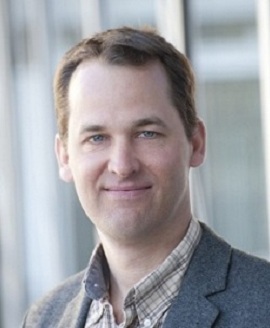 Professor Christoph T. Koch, PhD ist zum neuen Direktor des Instituts für Physik der Humboldt-Universität zu Berlin (HU) gewählt worden. Prof. Koch ist seit 2015 an der HU und konzentriert sich auf die Entwicklung neuer Methoden in der quantitativen Transmissionselektronenmikroskopie und deren Anwendung auf materialwissenschaftliche Forschung. Seit 2016 ist er Mitglied von IRIS Adlershof und wirkt dort unter anderem in der Forschungsbaukommission mit. Zu seinem Stellvertreter wurde Prof. Dr. Heiko Lacker gewählt. IRIS Adlershof gratuliert beiden herzlich und wünscht ihnen in ihrer neuen Funktion viel Erfolg.
Professor Christoph T. Koch, PhD ist zum neuen Direktor des Instituts für Physik der Humboldt-Universität zu Berlin (HU) gewählt worden. Prof. Koch ist seit 2015 an der HU und konzentriert sich auf die Entwicklung neuer Methoden in der quantitativen Transmissionselektronenmikroskopie und deren Anwendung auf materialwissenschaftliche Forschung. Seit 2016 ist er Mitglied von IRIS Adlershof und wirkt dort unter anderem in der Forschungsbaukommission mit. Zu seinem Stellvertreter wurde Prof. Dr. Heiko Lacker gewählt. IRIS Adlershof gratuliert beiden herzlich und wünscht ihnen in ihrer neuen Funktion viel Erfolg.
01.07.2020Science-Fiction zu Science machen

In der aktuellen Ausgabe des WISTA-Magazins "Potenzial" dreht sich alles um das IRIS Adlershof. In den folgenden drei Artikeln werden dabei verschiedene Bereiche des IRIS Adlershof vorgestellt:
Science-Fiction zu Science machen
Prof. Jürgen P. Rabe, Direktor des Integrative Research Institute for the Sciences IRIS Adlershof, über Brücken bauen, Verbundlabore und den neuen Forschungsbau.
Knotenpunkt zwischen Grundlagenforschung, Lehre und Industrie
Wie das Integrative Research Institute for the Sciences IRIS Adlershof diverse Technologie-Start-ups unterstützt.
Advanced Materials im Fokus
Wo Teams eine große Familie bilden – Adlershofer Graduiertenschule bietet Top-Qualifikation.
Weitere Informationen finden Sie hier.
15.06.2020Conference on a FAIR Data Infrastructure for Materials Genomics was a Big Success
539 participants from 33 countries and 6 continents: the Conference on a FAIR Data Infrastructure for Materials Genomics was a big success. IRIS Adlershof members were also involved.
With the five plenary speakers:
- Barend Mons (Leiden University, Co-Leader of the GO-FAIR Initiative, President of CODATA - The FAIR Guiding Principles in Times of Crisis),
- Claudia Draxl (Humboldt-Universität zu Berlin, IRIS Adlershof, FAIR-DI e.V. - New Horizons for Materials Research - Role of FAIR Data),
- York Sure-Vetter (Director of the NFDI Directorate, KIT - The German Research Data Infrastructure: Concepts, Challenges and Chances),
- James Warren (Director of the Materials Genome Program, NIST - The US Material Genome Initiative and the Materials Data Infrastructure), and
- Tong-Yi Zhang (Director of the Materials Genome Institute, Shanghai University - From Data to Knowledge: Data Driven Discovery of Formulas),
as well as 28 renown invited speakers, essentially all worldwide leading experts were present. In addition, numerous young scientists presented their research at a poster session and two satellite workshops on Data Acquisition in Angle-Resolved Photoemission Spectroscopy and NFDI@Teaching. IRIS Adlershof member Christoph Koch was involved in the latter as speaker, he also acted as one of the moderators.
High-resolution videos of all the 33 talks and the discussions as well as the poster pitch videos are available on the conference website, on the NOMAD Laboratory YouTube Channel and on KouShare.
The conference was organized by FAIR-DI e.V., an association dedicated to building a worldwide data infrastructure for big data from material science, engineering, and astronomy that follows the FAIR principles.
15.06.2020Perowskit-LED aus dem Drucker – auf dem Weg zu einem neuen Standard für die Elektronik
.jpg)
© Claudia Rothkirch/HU Berlin
Einem Team von Forschern des HZB und der Humboldt-Universität zu Berlin ist es zum ersten Mal gelungen, Leuchtdioden (LEDs) aus einem hybriden Perowskit-Halbleitermaterial per Tintenstrahldruck herzustellen. Das Tor zu einer breiten Anwendung solcher Materialien in vielerlei elektronischen Bauelementen ist damit geöffnet. Der Durchbruch gelang den Wissenschaftlern mithilfe eines Tricks: dem „Impfen“ der Oberfläche mit bestimmen Kristallen.
Die Mikroelektronik ist geprägt durch verschiedene funktionelle Materialien, deren Eigenschaften sie für bestimmte Anwendungen auszeichnen. So werden Transistoren und Datenspeicher aus Silizium gefertigt, und auch die meisten photovoltaischen Zellen für die Stromgewinnung aus Sonnenlicht bestehen aus diesem Halbleitermaterial. Um Licht in optoelektronischen Elementen wie Leuchtdioden (LEDs) zu erzeugen, kommen hingegen Verbindungshalbleiter wie Galliumnitrid zum Einsatz. Je nach Materialklasse unterscheiden sich zudem die Herstellungsverfahren.
Raus aus dem Zoo aus Materialien und Methoden
.jpg)
Wesentliche Arbeiten zu den druckbaren Perovskit-LEDs fanden hier statt.
© HZB/Phil Dera
Eine Vereinfachung versprechen hybride Perowskit-Materialien – halbleitende Kristalle, deren organische und anorganische Bestandteile in einer bestimmten Kristallstruktur angeordnet sind. „Je nach Zusammensetzung lassen sich daraus alle Arten von mikroelektronischen Bauelementen fertigen“, sagt Prof. Dr. Emil List-Kratochvil, Leiter einer gemeinsamen Forschergruppe von HZB und Humboldt-Universität. Hinzu kommt: Perowskit-Kristalle ermöglichen eine vergleichsweise simple Art der Verarbeitung. „Sie lassen sich aus einer flüssigen Lösung herstellen, damit kann man das gewünschte Bauteil Schicht für Schicht direkt aus dem Substrat heraus aufbauen“, erklärt der Physiker.
Nach Solarzellen nun auch Leuchtdioden aus dem Drucker
Dass sich Solarzellen aus einer Lösung solcher Halbleiterverbindungen heraus drucken lassen, haben die Wissenschaftler am HZB in den letzten Jahren bereits gezeigt – und sind
heute bei dieser Technologie weltweit führend. Nun gelang es dem gemeinsamen Team von HZB und HU Berlin erstmals, auch funktionsfähige Leuchtdioden auf diese Weise herzustellen. Dazu verwendete die Forschergruppe einen Metall-Halogenid-Perowskit: ein Material, das eine besonders hohe Effizienz bei der Lichterzeugung verspricht – das aber andererseits schwierig zu verarbeiten ist. „Bislang war es nicht möglich, solche Halbleiterschichten aus einer flüssigen Lösung mit ausreichender Qualität zu erzeugen“, sagt List-Kratochvil. So ließen sich LEDs nur aus organischen Halbleitern drucken, die aber nur eine bescheidene Leuchtkraft liefern. „Die Herausforderung war es, die salzartige Vorstufe, die wir mit dem Drucker auf das Substrat aufbrachten, mit einer Art Lockmittel dazu zu bewegen, rasch und gleichmäßig zu kristallisieren“, erklärt der Wissenschaftler. Das Team wählte dafür einen „Impfkristall“: ein beigefügtes Salz, das sich auf dem Substrat anheftet und wie ein Gerüst für das Wachstum der Perowskit-Struktur dient.
Deutlich bessere optische und elektronische Merkmale
So schufen die Forscher gedruckte LEDs mit einer weit höheren Leuchtkraft und deutlich besseren elektrischen Eigenschaften als sie bislang mit additiven Fertigungsverfahren erreichbar waren. Doch für Emil List-Kratochvil ist dieser Erfolg nur ein Zwischenschritt auf dem Weg zu einer künftigen Mikro- und Optoelektronik, die seiner Meinung nach ausschließlich auf hybriden Perowskit-Halbleitern basiert. „Die Vorteile, die eine universell einsetzbare Klasse von Materialien bietet, aus der sich beliebige Bauteile mit einem einzigen einfachen und kostengünstigen Verfahren fertigen lassen, sind bestechend“, meint der Wissenschaftler. In dem Berliner Labor von HZB und HU will er daher nach und nach alle relevanten elektronischen Bauelemente auf diese Weise herstellen. Emil List-Kratochvil ist Professor für Hybride Bauelemente an der Berliner Humboldt-Universität (HU) und Leiter eines 2018 gegründeten Joint Labs, das von der HU gemeinsam mit dem HZB betrieben wird. Darüber hinaus arbeitet im „Helmholtz Innovation Lab HySPRINT“ ein Team um List-Kratochvil und der HZB-Wissenschaftlerin Dr. Eva Unger an der Entwicklung von Beschichtungs- und Druckverfahren – im Fachjargon auch additive Fertigung genannt – für hybride Perowskite, das sind Kristalle mit Perowskit-Struktur, die sowohl anorganische als auch organische Bestandteile enthalten.
Die Arbeit wurde im Journal Materials Horizons veröffentlicht:
„Finally, inkjet-printed metal halide perovskite LEDs – utilizing seed crystal templating of salty PEDOT:PSS“
Felix Hermerschmidt, Florian Mathies, Vincent R. F. Schröder, Carolin Rehermann, Nicolas Zorn Morales, Eva L. Unger, Emil. J. W. List-Kratochvil. DOI: 10.1039/d0mh00512f
Ralf Butscher
15.06.2020Entwicklung von hochauflösenden Drucktechnologien – Start des Projekts HI-ACCURACY

Das europäische Projekt HI-ACCURACY, unter Beteiligung der Hybrid Devices Group der Humboldt-Universität zu Berlin und Koordination durch Johanneum Research, startete am 1. April 2020. HI-ACCURACY wird vom Forschungsrahmenprogramm HORIZON 2020 der Europäischen Kommission mit einem Gesamtvolumen von rund 5 Millionen Euro gefördert und läuft bis März 2023.
Der Weltmarkt für gedruckte, flexible und organische Elektronik beläuft sich laut aktuellen Schätzungen auf 28,3 Milliarden Euro mit einer jährlichen Wachstumsrate von >8%. Dieser Markt wird hauptsächlich von der Displayindustrie dominiert, die auf der Suche nach neuen und innovativen Wegen ist, um die Bildschirmauflösung zu erhöhen und neue Benutzeroberflächen in den gesamten Anzeigebereich aufzunehmen. Die hochauflösende Drucktechnologie ist ein wichtiger Faktor, um diese Ziele zu erreichen.
HI-ACCURACY zielt auf die Herstellung von Strukturen mit sehr hoher Auflösung bis in den μm-Bereich und damit auf die nächste Generation der großflächigen Herstellung flexibler organischer Elektronik ab. Dieses Ziel soll durch ein einzigartiges Angebot an hochmodernen Materialien und Drucktinten kombiniert mit skalierbaren, kostengünstigen Druck- und Beschichtungsverfahren, die kein oder nur ein minimales Vakuum benötigen, erreicht werden. Damit wird HI-ACCURACY die Herstellung von Front- und Backplane-Strukturen mit Strukturgrößen von annähernd 1 μm demonstrieren, die bei Frequenzen von >1MHz arbeiten können.
Weitere Informationen finden Sie hier.
Weitere Informationen zur Arbeit der Hybrid Devices Group finden Sie hier.
08.06.2020Fischer-Nernst-Studienpreis des Instituts für Chemie der HU für Max Heyl
 Der diesjährige Fischer-Nernst-Studienpreis des Instituts für Chemie der Humboldt-Universität zu Berlin geht an Max Heyl für seine Masterarbeit zur Exfoliation und polymerfreien Transfer von TMDC-Monoschichten mit templatgestreiften Goldsubstraten. Max Heyl hat diese Arbeit im Rahmen des Sonderforschungsbereichs SFB 951 - "Anorganisch / Organische Hybridsysteme für die Optoelektronik (HIOS)" durchgeführt, wo er nun auch weiterhin als Doktorand in der vom Vizedirektor von IRIS Adlershof, Prof. Emil List-Kratochvil, geleiteten Gruppe Hybride Bauelemente forschen wird.
Der diesjährige Fischer-Nernst-Studienpreis des Instituts für Chemie der Humboldt-Universität zu Berlin geht an Max Heyl für seine Masterarbeit zur Exfoliation und polymerfreien Transfer von TMDC-Monoschichten mit templatgestreiften Goldsubstraten. Max Heyl hat diese Arbeit im Rahmen des Sonderforschungsbereichs SFB 951 - "Anorganisch / Organische Hybridsysteme für die Optoelektronik (HIOS)" durchgeführt, wo er nun auch weiterhin als Doktorand in der vom Vizedirektor von IRIS Adlershof, Prof. Emil List-Kratochvil, geleiteten Gruppe Hybride Bauelemente forschen wird.
Wir gratulieren dem Preisträger herzlich !
29.05.2020Neuer Sonderforschungsbereich „FONDA – Grundlagen von Workflows für die Analyse großer naturwissenschaftlicher Daten“ an der Humboldt-Universität zu Berlin
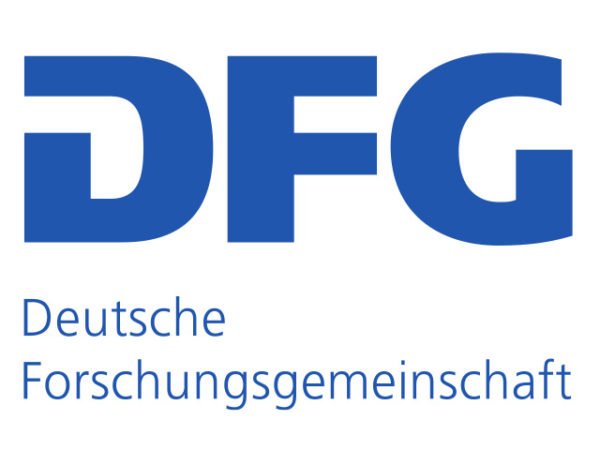 Die Deutsche Forschungsgemeinschaft (DFG) hat einen neuen Sonderforschungsbereich (SFB) an der Humboldt-Universität zu Berlin bewilligt. Der SFB 1404 mit dem Titel „FONDA – Grundlagen von Workflows für die Analyse großer naturwissenschaftlicher Daten“ wird ab dem 01. Juli 2020 für zunächst vier Jahre gefördert. Sprecher des SFB ist Prof. Ulf Leser vom Institut für Informatik der Humboldt-Universität zu Berlin. Im inhaltlichen Fokus des neuen Forschungsverbundes steht die Erforschung von Techniken, Verfahren und Werkzeugen, die eine Steigerung der Produktivität von Wissenschaftler*innen bei der Erstellung und Anwendung von Datenanalyseworkflows ermöglichen. Er konzentriert sich dabei auf die für dieses Ziel wichtigen Eigenschaften der Portierbarkeit, Adaptivität und Zuverlässigkeit. Seitens IRIS Adlershof sind die Professor*innen Claudia Draxl, Christoph T. Koch und Alexander Reinefeld am neuen SFB beteiligt.
Die Deutsche Forschungsgemeinschaft (DFG) hat einen neuen Sonderforschungsbereich (SFB) an der Humboldt-Universität zu Berlin bewilligt. Der SFB 1404 mit dem Titel „FONDA – Grundlagen von Workflows für die Analyse großer naturwissenschaftlicher Daten“ wird ab dem 01. Juli 2020 für zunächst vier Jahre gefördert. Sprecher des SFB ist Prof. Ulf Leser vom Institut für Informatik der Humboldt-Universität zu Berlin. Im inhaltlichen Fokus des neuen Forschungsverbundes steht die Erforschung von Techniken, Verfahren und Werkzeugen, die eine Steigerung der Produktivität von Wissenschaftler*innen bei der Erstellung und Anwendung von Datenanalyseworkflows ermöglichen. Er konzentriert sich dabei auf die für dieses Ziel wichtigen Eigenschaften der Portierbarkeit, Adaptivität und Zuverlässigkeit. Seitens IRIS Adlershof sind die Professor*innen Claudia Draxl, Christoph T. Koch und Alexander Reinefeld am neuen SFB beteiligt.
Wir gratulieren den erfolgreichen Antragsteller*innen und wünschen gutes Gelingen
mehr...
22.05.2020Chinese Government Award 2019 für Fengshuo Zu
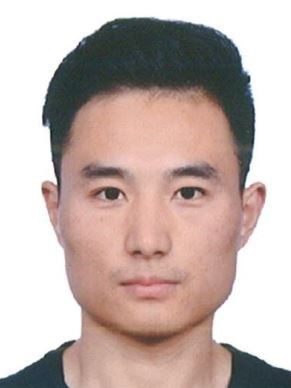 Fengshuo Zu, ehemaliger Doktorand in der Gruppe von IRIS-Mitglied Norbert Koch, hat vom China Scholarship Council den „Chinesischen Regierungspreis 2019 für herausragende selbstfinanzierte Studierende im Ausland“ zuerkannt bekommen. Mittlerweile ist Fengshuo Postdoc in der Koch-Gruppe und untersucht die elektronische Struktur von Metallhalogenid-Perowskiten für hocheffiziente Solarzellen.
Fengshuo Zu, ehemaliger Doktorand in der Gruppe von IRIS-Mitglied Norbert Koch, hat vom China Scholarship Council den „Chinesischen Regierungspreis 2019 für herausragende selbstfinanzierte Studierende im Ausland“ zuerkannt bekommen. Mittlerweile ist Fengshuo Postdoc in der Koch-Gruppe und untersucht die elektronische Struktur von Metallhalogenid-Perowskiten für hocheffiziente Solarzellen.
IRIS Adlershof gratuliert dem Preisträger herzlich!
19.05.2020Bis 01. Juni bewerben! Neue Ausschreibungsrunde des Humboldt Research Track Scholarships

Förderung von forschungsstarken Masterstudierenden auf dem Weg zur Promotion.
Die Förderlinie Humboldt Research Track Scholarship soll herausragenden Studierenden der Humboldt-Universität den Übergang vom Studium in die Promotion erleichtern. Gefördert werden auch Studierende, die keinen Abschluss der Humboldt-Universität haben, aber ggf. an der Humboldt-Universität promovieren wollen. Voraussetzungen für eine Förderung sind ausgezeichnete Studienleistungen und ein Promotionsvorhaben von hoher Qualität und Originalität. Der Antrag kann bereits im Masterstudium gestellt werden; die Förderung setzt jedoch erst mit dem Abschluss ein. Ziel des Stipendiums ist es, sich ganz auf die Vorbereitung eines Dissertationsvorhabens konzentrieren zu können.
Welchen Umfang hat die Förderung?
Monatlich 800 EUR Stipendium über sechs Monate, ggf. Familienzuschlag (gemäß Richtlinien der DFG), Verlängerung in Ausnahmefällen um weitere sechs Monate möglich.
Wie sind die Bewerbungsfristen?
Die Humboldt Research Track Scholarships werden viermal jährlich vergeben. Die Bewerbungszeiträume sind vom
01.06. bis 15.07. für einen Förderbeginn ab 01.10.
01.09. bis 15.10. für einen Förderbeginn ab 01.02.
01.12. bis 15.01. für einen Förderbeginn ab 01.04.
Weitere Informationen finden Sie hier.
30.04.2020Graduiertenschule “Advanced Materials”: Aufnahme der ersten Doktorand*innen
.png) Die Graduiertenschule „Advanced Materials“ (GS-AM) hat in diesem April die erste Kohorte von insgesamt 22 Doktorand*innen der Berliner Universitäten HU, FU, TU sowie der Universität Potsdam aufgenommen. Ziel der GS-AM ist es, Berliner und Potsdamer Doktorand*innen auf dem Forschungsgebiet neuartiger Materialien für Optik, Elektronik und Optoelektronik bestmöglich auszubilden, und ihnen zudem unterstützende außerfachliche Qualifikationen zu vermitteln.
Die Graduiertenschule „Advanced Materials“ (GS-AM) hat in diesem April die erste Kohorte von insgesamt 22 Doktorand*innen der Berliner Universitäten HU, FU, TU sowie der Universität Potsdam aufgenommen. Ziel der GS-AM ist es, Berliner und Potsdamer Doktorand*innen auf dem Forschungsgebiet neuartiger Materialien für Optik, Elektronik und Optoelektronik bestmöglich auszubilden, und ihnen zudem unterstützende außerfachliche Qualifikationen zu vermitteln.
Der Sprecher der Graduiertenschule, Professor Norbert Koch vom Institut für Physik und IRIS Adlershof der HU erläutert: Die Promotionsprojekte unserer Studierenden widmen sich der Erforschung grundlegender und angewandter Aspekte von anorganischen 3D- und 2D-Halbleitern, organischen Halbleitern und ihren Hybriden. Aufgrund des derzeit eingeschränkten Zugangs zu den Universitäten bietet die GS-AM aktuell Onlinekurse zu den Themen „wissenschaftliches Schreiben und Präsentieren“, „Projektmanagement“ sowie „wissenschaftliche Führungsfähigkeit“ an. Alle Beteiligten hoffen, dass ein persönliches Treffen bald wieder möglich sein wird. Bis auf Weiteres liegt der Fokus jedoch auf digitalem Austausch und Interaktion.
Der nächste Bewerbungszeitraum für die Graduiertenschule “Advanced Materials” beginnt im Herbst 2020.
Weitere Informationen
27.04.2020Höchstkapazitäten am theoretischen Limit aus Adlershof
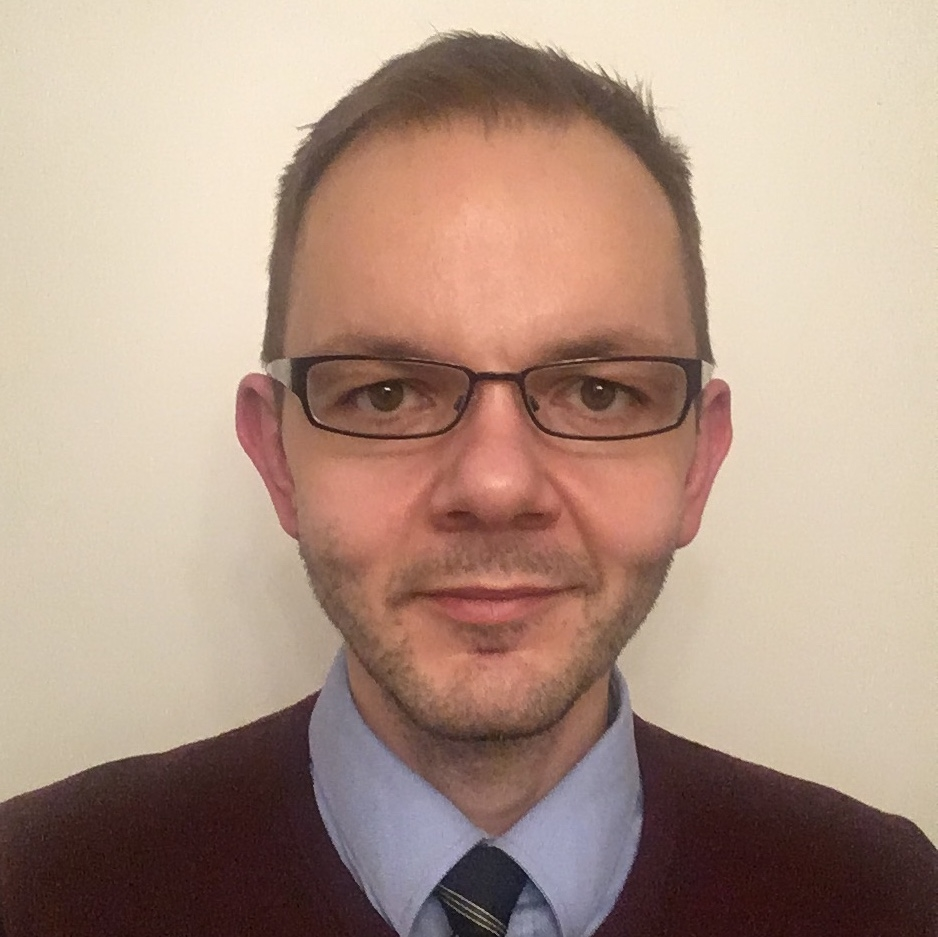 Der Europäische Forschungsrat (ERC) ruft am 27. April die Personen aus, die mit dem „Proof of Concept“ (PoC) Grant ausgezeichnet werden: einer der Empfänger ist Michael J. Bojdys, Materialchemiker am IRIS Adlershof und am Institut für Chemie der Humboldt-Universität zu Berlin. Damit ist Bojdys einer der beiden ersten ERC PoC Preisträger in Berlin seit Gründung des Grants 2018.
Der Europäische Forschungsrat (ERC) ruft am 27. April die Personen aus, die mit dem „Proof of Concept“ (PoC) Grant ausgezeichnet werden: einer der Empfänger ist Michael J. Bojdys, Materialchemiker am IRIS Adlershof und am Institut für Chemie der Humboldt-Universität zu Berlin. Damit ist Bojdys einer der beiden ersten ERC PoC Preisträger in Berlin seit Gründung des Grants 2018.
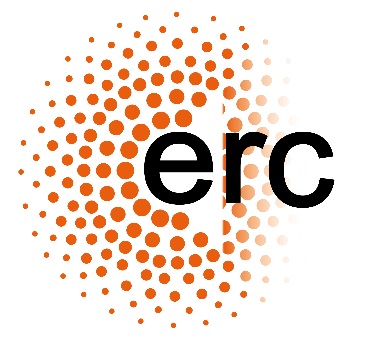 Proof of Concept Grants richten sich ausschließlich an Wissenschaftler*innen, die bereits einen ERC Grant innehaben und ein Forschungsergebnis aus ihrem laufenden oder bereits abgeschlossenen Projekt vorkommerziell verwerten möchten. Dies ist der erste Schritt zum Technologie-Transfer.
Proof of Concept Grants richten sich ausschließlich an Wissenschaftler*innen, die bereits einen ERC Grant innehaben und ein Forschungsergebnis aus ihrem laufenden oder bereits abgeschlossenen Projekt vorkommerziell verwerten möchten. Dies ist der erste Schritt zum Technologie-Transfer.
Im Zuge seines ERC PoC Grants “Ultra-high energy storage Li-anode materials” (LiAnMAT) wird Michael Bojdys zusammen mit VARTA Micro Innovation GmbH und dem Adlershofer Start-Up INURU GmbH, Li-Anodenmaterialien für Hochkapazitätsanwendungen entwickeln. Erste erfolgversprechende Ergebnisse sind Teil einer Patentanmeldung der HU Berlin und des Start-Up Inkubators Humboldt Innovation GmbH: die Kapazität der neuartigen Anoden übersteigt die von kommerziell erhältlichen Anoden um einen Faktor von 10-40.
Dr. Michael J. Bojdys
Leiter der Gruppe "Funktionale Nanomaterialien", Institut für Chemie und IRIS Adlershof, Humboldt-Universität zu Berlin
tel (D): +491774818190
m.j.bojdys.02cantab.net
http://bojdyslab.org/
23.04.2020„Die Wissenschaft bleibt nicht stehen“

Die Humboldt-Universität befindet sich derzeit aufgrund der Coronavirus-Pandemie – wie alle anderen Wissenschaftsbetriebe der Stadt – im Präsenznotbetrieb.Die Gebäude der Universität sind verschlossen – so auch das Institut für Chemie – und nicht alle Mitarbeiterinnen und Mitarbeiter der HU haben Zutritt. Der Chemiker und Forscher Michael Bojdys hält daher Kontakt zu seiner Arbeitsgruppe und seinen Studierenden über digitale Plattformen.
Die komplette Folge finden sie hier.
20.04.2020Technologiepark Adlershof kämpft gegen Covid-19
Viele Adlershofer Unternehmen und wissenschaftliche Einrichtungen forschen und kämpfen gegen das Corona-Virus
Derzeit sind mehr als 30 Unternehmen und wissenschaftliche Einrichtungen in Adlershof damit beschäftigt, gegen das Coronavirus zu kämpfen. Dies hat eine Erhebung der Betreibergesellschaft WISTA Management GmbH ergeben. „Um das Covid-19-Virus zu bekämpfen und einzudämmen, brauchen wir schnell passende Arzneimittel und Impfstoffe“, sagte Wirtschaftssenatorin Ramona Pop (Grüne). „Unsere Berliner Zukunftsorte verfügen hierfür über hervorragende Forschungskompetenzen. Sie alle leisten einen wichtigen Beitrag, um die Coronakrise zu bewältigen."
Das Engagement zeigt laut WISTA-Geschäftsführer Roland Sillmann, „dass Unternehmen und Einrichtungen in einem so breit aufgestellten Wissenschafts- und Technologiepark wie in Berlin Adlershof gerade in Krisenzeiten flexibel agieren und sehr schnell innovative Kräfte entfalten können. Das zumindest stimmt uns zuversichtlich, dass der Technologiepark die gegenwärtige Krise in Gänze erfolgreich durchstehen kann.“ (Quelle: Der Tagesspiegel)
Weitere Informationen finden Sie hier.
01.04.2020Ausschreibung für den Familienfonds 2020
Für das Jahr 2020 können Mittel aus dem Familienfonds der Humboldt-Universität zu Berlin beantragt werden.
Der Familienfonds wurde mit dem Ziel eingerichtet, bestimmte Maßnahmen zur noch besseren Förderung der Vereinbarkeit von Beruf, Studium und Familie an der HU finanziell zu unterstützen. Grundlage ist das umfassende Familienverständnis der Humboldt-Universität zu Berlin entsprechend ihrem Leitbild als familiengerechte Hochschule.
Ab heute können sich alle Mitglieder der HU für die unterschiedlichen Programmlinien bewerben, sofern sie die jeweils genannten Voraussetzungen erfüllen. Anträge können vom 1. April bis zum 15. Mai 2020 gestellt werden (Ausschlussfrist).
Weitere Informationen finden Sie hier.
18.03.2020Bis 15. Mai bewerben! Neue Ausschreibungsrunde des Humboldt Research Track Scholarships
Förderung von forschungsstarken Masterstudierenden auf dem Weg zur Promotion.
Die Förderlinie Humboldt Research Track Scholarship soll herausragenden Studierenden der Humboldt-Universität den Übergang vom Studium in die Promotion erleichtern. Gefördert werden auch Studierende, die keinen Abschluss der Humboldt-Universität haben, aber ggf. an der Humboldt-Universität promovieren wollen. Voraussetzungen für eine Förderung sind ausgezeichnete Studienleistungen und ein Promotionsvorhaben von hoher Qualität und Originalität. Der Antrag kann bereits im Masterstudium gestellt werden; die Förderung setzt jedoch erst mit dem Abschluss ein. Ziel des Stipendiums ist es, sich ganz auf die Vorbereitung eines Dissertationsvorhabens konzentrieren zu können.
Welchen Umfang hat die Förderung?
Monatlich 800 EUR Stipendium über sechs Monate, ggf. Familienzuschlag (gemäß Richtlinien der DFG), Verlängerung in Ausnahmefällen um weitere sechs Monate möglich.
Wie sind die Bewerbungsfristen?
Die Humboldt Research Track Scholarships werden viermal jährlich vergeben. Die Bewerbungszeiträume sind vom
01.04. bis 15.05. für einen Förderbeginn ab 01.08.
01.06. bis 15.07. für einen Förderbeginn ab 01.10.
01.09. bis 15.10. für einen Förderbeginn ab 01.02.
01.12. bis 15.01. für einen Förderbeginn ab 01.04.
Weitere Informationen finden Sie hier.
07.02.2020IRIS-Stipendium für Flavie Davidson-Marquis
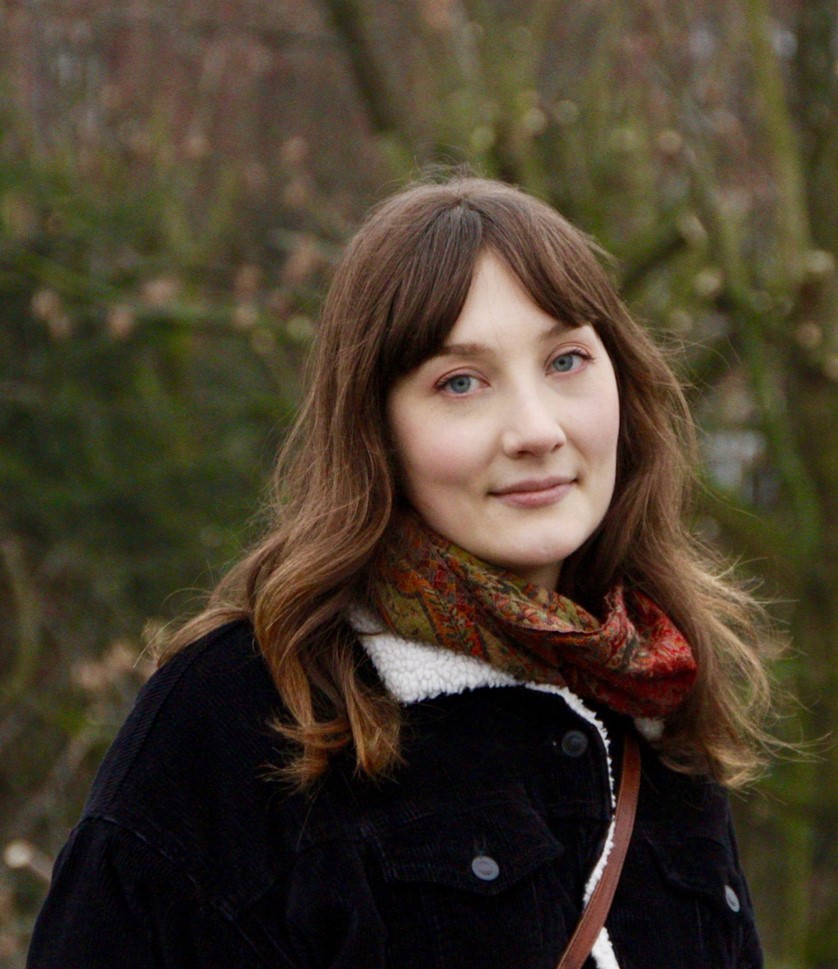
Unsere moderne Gesellschaft ist auf die effiziente Verarbeitung von Informationen angewiesen, aber die konventionelle elektronische Datenverarbeitung stößt an ihre Grenzen. Wir brauchen neue Ansätze, um große Informationsmengen zu speichern und zu verarbeiten. Der Quantencomputer ist der vielversprechendste Kandidat und seine Leistungsfähigkeit (Quantum Supremacy) wurde bereits 2019 gezeigt.
Wenn Photonen als Qubits verwendet werden, müssen sie kontrolliert, verlangsamt und gespeichert werden, z.B. in einem Wellenleiter oder einem Lichtkäfig. Flavie Davidson-Marquis, eine Doktorandin in der Gruppe von Prof. Oliver Benson, Mitglied von IRIS Adlershof, untersucht einen neuartigen Wellenleiter vom Typ Lichtkäfig: Sie erforscht die verbesserte Licht-Materie-Wechselwirkung, die sich aus der Kohabitation von Cäsiumdampf und einem geführten Feld ergibt.
IRIS Adlershof unterstützt diese Forschung mit einem Stipendium, damit sich Frau Davidson-Marquis darauf konzentrieren kann, das Projekt abzuschließen und die Ergebnisse für die Veröffentlichung vorzubereiten.
06.02.2020Prof. Caterina Cocchi auf W3-Professur an die Universität Oldenburg berufen
 Das Ministerium für Wissenschaft und Kultur des Landes Niedersachsen hat das Mitglied von IRIS Adlershof, Frau Professorin Caterina Cocchi, auf die W3-Professur „Theoretische Festkörperphysik“ der Carl von Ossietzky-Universität Oldenburg berufen. Frau Cocchi wird ihren Dienst in Oldenburg mit Beginn des Sommersemsters 2020 antreten. Sie wird der Humboldt-Universität auch weiterhin verbunden bleiben und als Gastwissenschaftlerin und Teilprojektleiterin im Rahmen des SFB 951 „HIOS“ forschen. Ihre IRIS-Mitgliedschaft ist durch den Wechsel nach Oldenburg nicht berührt.
Das Ministerium für Wissenschaft und Kultur des Landes Niedersachsen hat das Mitglied von IRIS Adlershof, Frau Professorin Caterina Cocchi, auf die W3-Professur „Theoretische Festkörperphysik“ der Carl von Ossietzky-Universität Oldenburg berufen. Frau Cocchi wird ihren Dienst in Oldenburg mit Beginn des Sommersemsters 2020 antreten. Sie wird der Humboldt-Universität auch weiterhin verbunden bleiben und als Gastwissenschaftlerin und Teilprojektleiterin im Rahmen des SFB 951 „HIOS“ forschen. Ihre IRIS-Mitgliedschaft ist durch den Wechsel nach Oldenburg nicht berührt.
Wir gratulieren Frau Cocchi ganz herzlich und wünschen ihr für ihre neue Aufgabe viel Erfolg und alles Gute. Wir freuen uns auf die weitere gute Zusammenarbeit.
mehr...
11.12.2019Dr. Tim Schröder und Dr. Olaf Hohm sind neue Mitglieder von IRIS Adlershof
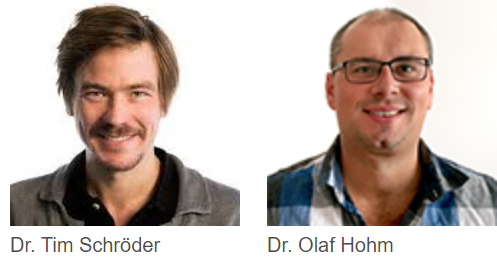 Eine wesentliche Voraussetzung für Quantenkommunikation und -technologie ist die Übertragung von Quanteninformationen über weite Entfernungen, aber weitreichende und stabile Netzwerke können nur mit Quantenverstärkern realisiert werden. Dr. Tim Schröder forscht mit dem ERC Projekt QUERP „Quantum Repeater Architectures Based on Quantum Memories and Photonic Encoding” an solchen Verstärkern und versucht dabei auch, komplementäre Technologien aus der Quantenkommunikation miteinander zu verbinden: In einem hybriden Quanten-Repeater-Modul sollen zwei unterschiedliche Konzepte, wie etwa Quantenspeicher in Zinn-Defektzentren in Diamant, und photonische Cluster-Zustände zusammengeführt werden.
Eine wesentliche Voraussetzung für Quantenkommunikation und -technologie ist die Übertragung von Quanteninformationen über weite Entfernungen, aber weitreichende und stabile Netzwerke können nur mit Quantenverstärkern realisiert werden. Dr. Tim Schröder forscht mit dem ERC Projekt QUERP „Quantum Repeater Architectures Based on Quantum Memories and Photonic Encoding” an solchen Verstärkern und versucht dabei auch, komplementäre Technologien aus der Quantenkommunikation miteinander zu verbinden: In einem hybriden Quanten-Repeater-Modul sollen zwei unterschiedliche Konzepte, wie etwa Quantenspeicher in Zinn-Defektzentren in Diamant, und photonische Cluster-Zustände zusammengeführt werden.
Dr. Olaf Hohm leitet die ERC Consolidation Group „Symmetrien und Kosmologie“. Er entwickelt einen rechnerischen Ansatz auf der Grundlage der Stringtheorie, dem wahrscheinlich vielversprechendsten Kandidat für eine vollständige Theorie der Quantengravitation. Mit diesem Ansatz könnten Fragen, die sich auf die sehr frühe Geschichte des Universums beziehen, beantwortet und sogar die Stringtheorie an Messungen der Hintergrundstrahlung getestet werden.
IRIS Adlershof freut sich sehr auf die Zusammenarbeit mit seinen neuen Mitgliedern und gratuliert herzlich.
10.12.2019“Étoiles de l’Europe 2019” – iSwitch erhält renommierten Preis des französischen Ministeriums für Hochschulbildung, Forschung und Innovation
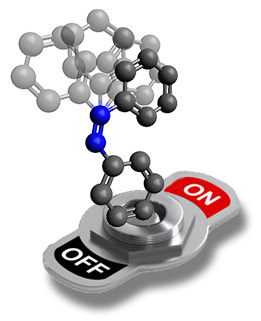 Das Innovative Training Network iSwitch wird für seine herausragende und europäisch ausgerichtete Forschung mit dem „Étoiles de l’Europe“- Preis des französischen Ministeriums für Hochschulbildung, Forschung und Innovation ausgezeichnet. Damit gehört das Projekt, an welchem die Mitglieder von IRIS Adlershof, Prof. Norbert Koch und Prof. Stefan Hecht beteiligt waren, nun wortwörtlich zu den leuchtenden „Sternen Europas“.
Das Innovative Training Network iSwitch wird für seine herausragende und europäisch ausgerichtete Forschung mit dem „Étoiles de l’Europe“- Preis des französischen Ministeriums für Hochschulbildung, Forschung und Innovation ausgezeichnet. Damit gehört das Projekt, an welchem die Mitglieder von IRIS Adlershof, Prof. Norbert Koch und Prof. Stefan Hecht beteiligt waren, nun wortwörtlich zu den leuchtenden „Sternen Europas“.
Die Auszeichnung wird jedes Jahr an zwölf in Frankreich initiierte Forschungs- und Innovationsprojekte vergeben, um die internationale Zusammenarbeit im Bereich Wissenschaft und Technologie auf europäischer Ebene zu honorieren und zu stärken. iSwitch wurde koordiniert von Paolo Samorì, Professor an der Universität Straßburg, und brachte seit 2015 führende internationale Forschungsgruppen an der Schnittstelle von Chemie, Physik und Ingenieurswissenschaften mit dem Ziel zusammen, die nächste Generation von Forschenden im aufstrebenden Forschungsfeld der Material- und Nanowissenschaften auszubilden und zu fördern. Das Netzwerk bestand aus 14 interdisziplinären akademischen und industriellen Partnern aus insgesamt sieben europäischen Ländern (Frankreich, Deutschland, Belgien, Spanien, Italien, Großbritannien und der Schweiz).
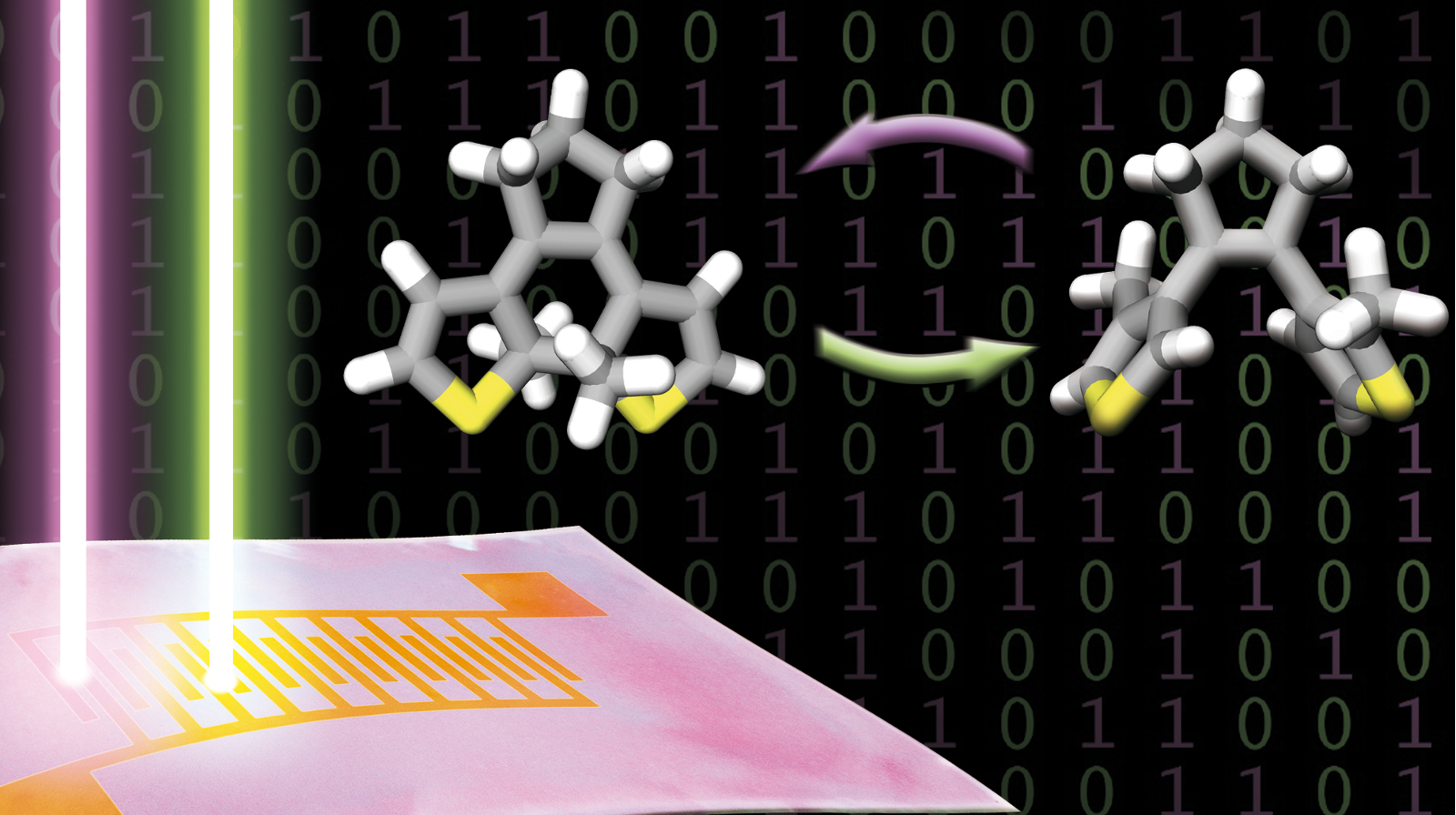 Im Dezember 2018 endete das von der EU im Rahmen von Horizon2020 geförderte Projekt äußerst erfolgreich: Das iSwitch-Trainingsprogramm qualifizierte seine Nachwuchswissenschaftlerinnen und -wissenschaftler für Beschäftigungen bei weltweit führenden Unternehmen wie Johnson & Johnson, an Exzellenzuniversitäten oder angesehenen Forschungseinrichtungen. Zudem setzten die im Projekt gewonnenen Erkenntnisse und entwickelten Technologien wesentliche Impulse auf dem Forschungsgebiet der optoelektronischen Bauteile, beispielsweise für die Herstellung von Netzhautimplantaten und sogenannten smarten Textilien wie spezieller Kleidung, die Temperaturveränderungen messen und daraufhin Form und Farbe anpassen kann.
Im Dezember 2018 endete das von der EU im Rahmen von Horizon2020 geförderte Projekt äußerst erfolgreich: Das iSwitch-Trainingsprogramm qualifizierte seine Nachwuchswissenschaftlerinnen und -wissenschaftler für Beschäftigungen bei weltweit führenden Unternehmen wie Johnson & Johnson, an Exzellenzuniversitäten oder angesehenen Forschungseinrichtungen. Zudem setzten die im Projekt gewonnenen Erkenntnisse und entwickelten Technologien wesentliche Impulse auf dem Forschungsgebiet der optoelektronischen Bauteile, beispielsweise für die Herstellung von Netzhautimplantaten und sogenannten smarten Textilien wie spezieller Kleidung, die Temperaturveränderungen messen und daraufhin Form und Farbe anpassen kann.
IRIS Adlershof gratuliert dem iSwitch Team ganz herzlich für diesen großartigen Erfolg!
11.11.2019DFG fördert neues Graduiertenkolleg „Rethinking Quantum Field Theory“
 Das von der Deutschen Forschungsgemeinschaft (DFG) geförderte Graduiertenkolleg (GRK) „Überdenken der Quantenfeldtheorie - Rethinking Quantum Field Theory“ ist in Sprecherschaft am Institut für Physik und dem IRIS Adlershof der Humboldt-Universität zu Berlin (HU) angesiedelt und wird ab April 2020 für zunächst viereinhalb Jahre mit knapp 4 Mio Euro gefördert. Das GRK wird sich mit drängenden theoretischen Fragen und wesentlichen Innovationen der Quantenfeldtheorie (QFT) beschäftigen, die über etablierte Methoden hinausgehen.
Das von der Deutschen Forschungsgemeinschaft (DFG) geförderte Graduiertenkolleg (GRK) „Überdenken der Quantenfeldtheorie - Rethinking Quantum Field Theory“ ist in Sprecherschaft am Institut für Physik und dem IRIS Adlershof der Humboldt-Universität zu Berlin (HU) angesiedelt und wird ab April 2020 für zunächst viereinhalb Jahre mit knapp 4 Mio Euro gefördert. Das GRK wird sich mit drängenden theoretischen Fragen und wesentlichen Innovationen der Quantenfeldtheorie (QFT) beschäftigen, die über etablierte Methoden hinausgehen.
Die Quantenfeldtheorie (QFT) als Vereinigung von Quantenmechanik und spezieller Relativitätstheorie stellt eine der wesentlichen intellektuellen Leistungen des letzten Jahrhunderts dar. Diese theoretischen Innovationen führten zum Standardmodells der Teilchenphysik (SM) eng verbunden mit experimentellen Beobachtungen. Mit der Entdeckung des Higgsbosons verfügen wir mit dem SM über eine empirisch validierte und mathematisch konsistente Theorie bis zu höchsten Energieskalen. Dennoch weisen eine Reihe von terrestrischer Experimenten, sowie die astrophysikalisch gesicherte Existenz von dunkler Materie und Energie darauf hin, dass das SM nicht die finale Theorie der Teilchenphysik sein kann. Parallel hierzu zwingen drängende theoretische Fragen, wie die Natur der Quantengravitation, das Hierarchieproblem oder die Entdeckung von Dualitäten zwischen verschiedenen QFTs, die etablierte Formulierung der QFT und des SM zu überdenken. In jüngerer Zeit sind entscheidende Innovationen in der QFT erreicht worden, die zu einem ernsthaften Überdenken ihrer Grundprinzipien geführt haben. Diese beinhalten neue Methoden der Störungstheorie, Dualitäten und versteckte Symmetrien, die prominente Rolle von effektiven Feldtheorien in der fundamentalen Physik, moderne Massenschalenmethoden für Streuamplituden sowie die Methode des Gradientenflusses in der Gitterfeldtheorie. Die weitere Entwicklung dieser Methoden und Konzepte der modernen QFT in der Form eines Überdenkens der QFT stellen die gemeinsame Basis dieses Graduiertenkollegs (GRK) dar. Hieraus folgt ein anspruchsvolles Qualifizierungsprogramm, das sich am aktuellsten Forschungsstand orientiert. Das Graduiertenkolleg wird von 12 Wissenschaftlern und Wissenschaftlerinnen getragen und schließt sämtliche Arbeitsgruppen in der theoretischen Teilchenphysik am Institut für Physik ein.Kooperationspartner sind das Max-Planck-Insititut für Gravitationsphysik und das Helmholtz Zentrum DESY. Seitens IRIS Adlershof sind neben GRK-Sprecher Prof. Jan Plefka auch Dr. Valentina Forini, Prof. Dirk Kreimer und Prof. Matthias Staudacher am GRK beteiligt.
IRIS Adlershof gratuliert den erfolgreichen Antragstellern herzlich und wünscht viel Erfolg.
26.10.2019Große Beteiligung beim Symposium IRIS 2019: Best-Poster-Award für Dr. Benedikt Haas
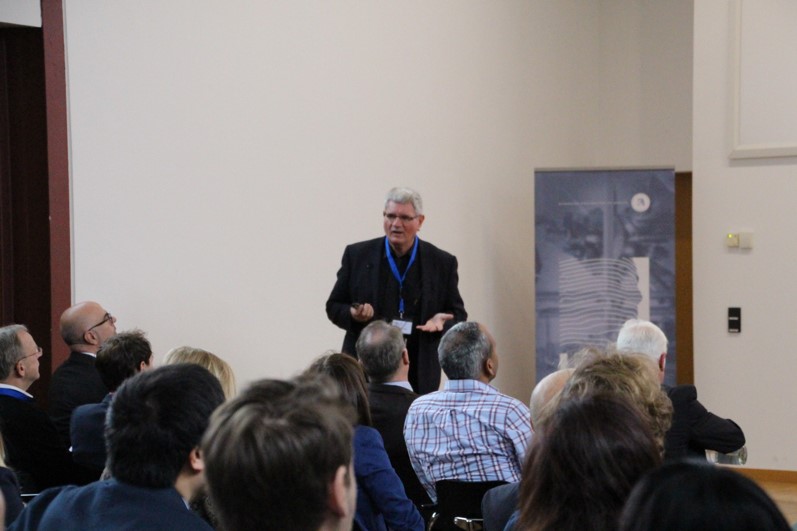 |
Das IRIS Symposium hat sich als jährlicher Höhepunkt fest im wissenschaftlichen Leben von IRIS Adlershof etabliert und stößt auch weit über den Standort Adlershof hinaus auf ein stetig wachsendes Interesse, wie die jährlich steigenden Teilnehmerzahlen eindrucksvoll beweisen. In diesem Jahr standen Ideen zur inhaltlichen Weiterentwicklung von IRIS auf den Gebieten 2D Based Heterostructures, Energy Conversion, Data Science und Emerging Fields im Zentrum des Interesses. Diese Themen wurden einem überaus diskussionsfreudigen Publikum von international ausgewiesenen Forscherinnen und Forschern und Nachwuchswissenschaftlerinnen und Nachwuchswissenschaftlern nahegebracht.
Der wissenschaftliche Nachwuchs hatte auch in diesem Jahr Gelegenheit, den eingeladenen Sprechern und den anderen Teilnehmern des Symposiums eigene Forschungsergebnisse im Rahmen eines Poster-Wettbewerbs vorzustellen. Die Wahl zum besten Poster fiel der Jury, bestehend aus den Nachwuchswissenschaftlern Dr. Zsuzsanna Heiner und Dr. Felix Hermerschmidt sowie dem IRIS-Mitglied Prof. Nicola Pinna, aufgrund der herausragenden Qualität der vorgestellten Beiträge sichtlich schwer.
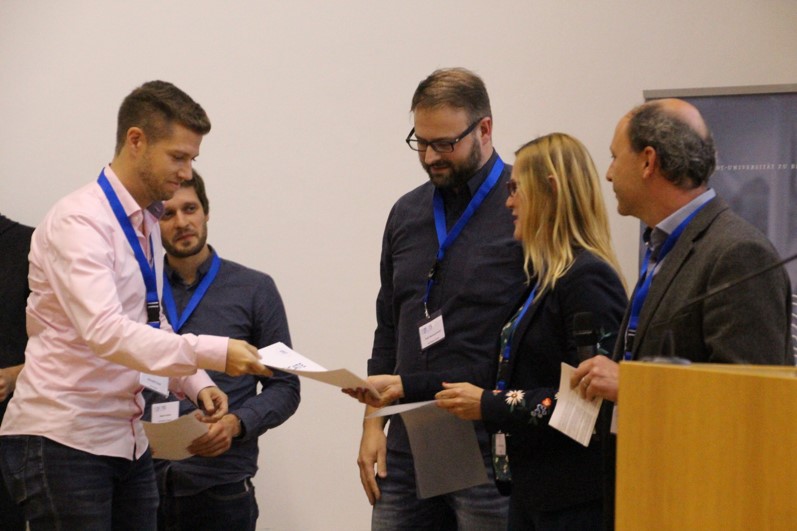 Letztendlich konnte sich Dr. Benedikt Haas unter insgesamt 33 Bewerber/innen mit seinem Poster als Bester durchsetzen. Am Ende des Symposiums nahm Herr Haas, PostDoc in der von IRIS-Mitglied Prof. Christoph T. Koch geleiteten Gruppe "Strukturforschung und Elektronenmikroskopie" den Best-Poster-Award und einen damit verbundenen Gutschein für einen Reisekostenzuschuss bis maximal 500 EUR für eine aktive Teilnahme an einer wissenschaftlichen Tagung entgegen. Die mit Buchgutscheinen im Wert von 150 bzw. 75 EUR dotierten Plätze zwei und drei gingen an die Doktoranden Martin Rothe (AG Nanooptik) und Niklas Mutz (AG Hybride Bauelemente). Die Veranstaltung klang mit Gegrillten und Getränken aus.
Letztendlich konnte sich Dr. Benedikt Haas unter insgesamt 33 Bewerber/innen mit seinem Poster als Bester durchsetzen. Am Ende des Symposiums nahm Herr Haas, PostDoc in der von IRIS-Mitglied Prof. Christoph T. Koch geleiteten Gruppe "Strukturforschung und Elektronenmikroskopie" den Best-Poster-Award und einen damit verbundenen Gutschein für einen Reisekostenzuschuss bis maximal 500 EUR für eine aktive Teilnahme an einer wissenschaftlichen Tagung entgegen. Die mit Buchgutscheinen im Wert von 150 bzw. 75 EUR dotierten Plätze zwei und drei gingen an die Doktoranden Martin Rothe (AG Nanooptik) und Niklas Mutz (AG Hybride Bauelemente). Die Veranstaltung klang mit Gegrillten und Getränken aus.
IRIS Adlershof gratuliert den Preisträgern und bedankt sich bei allen, die aktiv zum Gelingen des Symposiums beigetragen haben.
22.10.2019Das Beste aus beiden Welten: HU-Artikel zum SFB 951 veröffentlicht
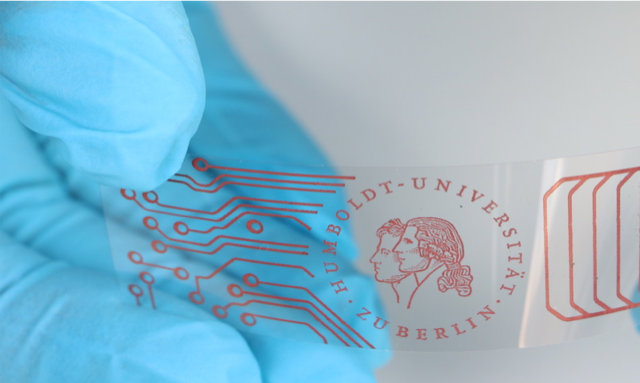 „Den Materialien der Zukunft auf die Spur kommen“ – in einem neu erschienenen Artikel widmet sich die Humboldt-Universität zu Berlin der Forschung des SFB 951 – Hybrid Inorganic/Organic Systems for Opto-Electronics (HIOS), an welcher auch Mitglieder von IRIS Adlershof beteiligt sind. Thematisiert wird die Bedeutsamkeit der in HIOS stattfindenden Grundlagen- und anwendungsorientierten Forschung an Materialien, gerade auch hinsichtlich des unentbehrlichen Einsatzes der Optoelektronik im modernen Alltag und des immer größer werdenden Bedarfs an nachhaltigen und umweltschonenden Stoffen. Im Detail erörtert wird die Forschung der Arbeitsgruppen von Claudia Draxl und Emil List-Kratochvil, beide ebenso wie der Sprecher von HIOS, Norbert Koch, Mitglieder von IRIS Adlershof und Professoren an der Mathematisch-Naturwissenschaftlichen Fakultät der HU.
„Den Materialien der Zukunft auf die Spur kommen“ – in einem neu erschienenen Artikel widmet sich die Humboldt-Universität zu Berlin der Forschung des SFB 951 – Hybrid Inorganic/Organic Systems for Opto-Electronics (HIOS), an welcher auch Mitglieder von IRIS Adlershof beteiligt sind. Thematisiert wird die Bedeutsamkeit der in HIOS stattfindenden Grundlagen- und anwendungsorientierten Forschung an Materialien, gerade auch hinsichtlich des unentbehrlichen Einsatzes der Optoelektronik im modernen Alltag und des immer größer werdenden Bedarfs an nachhaltigen und umweltschonenden Stoffen. Im Detail erörtert wird die Forschung der Arbeitsgruppen von Claudia Draxl und Emil List-Kratochvil, beide ebenso wie der Sprecher von HIOS, Norbert Koch, Mitglieder von IRIS Adlershof und Professoren an der Mathematisch-Naturwissenschaftlichen Fakultät der HU.Nachzulesen ist der Artikel im Presseportal der HU. Hier geht es zur Webseite des SFBs, welcher im Juli diesen Jahres in die dritte Förderperiode gegangen ist. Zur SOLgroup von Claudia Draxl geht es hier, zur Hybrid Devices Group von Emil List-Kratochvil hier.
19.10.2019Workshop des Institute of Physics (IOP) der Chinese Academy of Sciences und IRIS Adlershof in Dongguan, Guandong
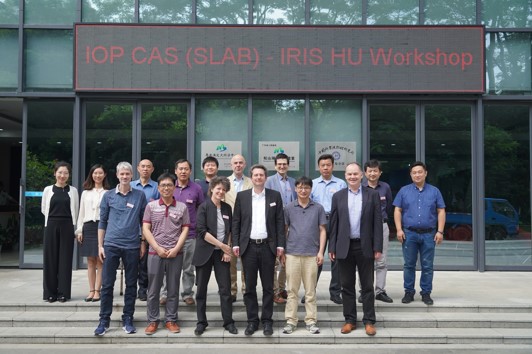 Das Institute of Physics (IOP) der Chinese Academy of Sciences (CAS) und IRIS Adlershof streben eine Intensivierung ihrer wissenschaftlichen Zusammenarbeit an. Nach einem ersten gemeinsamen Workshop am IRIS Adlershof am 25./26. Juni fand nun vom 8. bis 12. Oktober der zweite Workshop am IOP (SLAB) in Dongguan, Guandong statt, gefolgt von Besuchen am IOP in Beijing und an der University of CAS (UCAS, North Campus). Im Mittelpunkt des wissenschaftlichen Interesses standen dabei Themen aus an beiden Instituten prioritär verfolgten Forschungsfeldern wie 2D- und Nano-Materialien, Soft Matter, hybride elektronische Bauelemente, Photoemission, Synchrotronforschung und Quanten Information.
Das Institute of Physics (IOP) der Chinese Academy of Sciences (CAS) und IRIS Adlershof streben eine Intensivierung ihrer wissenschaftlichen Zusammenarbeit an. Nach einem ersten gemeinsamen Workshop am IRIS Adlershof am 25./26. Juni fand nun vom 8. bis 12. Oktober der zweite Workshop am IOP (SLAB) in Dongguan, Guandong statt, gefolgt von Besuchen am IOP in Beijing und an der University of CAS (UCAS, North Campus). Im Mittelpunkt des wissenschaftlichen Interesses standen dabei Themen aus an beiden Instituten prioritär verfolgten Forschungsfeldern wie 2D- und Nano-Materialien, Soft Matter, hybride elektronische Bauelemente, Photoemission, Synchrotronforschung und Quanten Information.
Am Rande des Workshops trafen sich Mitglieder der unter Leitung von IRIS-Direktor Prof. Jürgen P. Rabe stehendem Berliner Delegation auch mit Akademiemitglied Prof. Hongjun Gao, der mit einer offiziellen IOP/CAS-Delegation am 21. Oktober in der Humboldt-Universität erwartet wird.
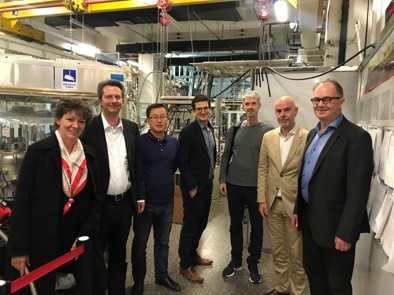 Ab November wird Prof. Carlos-Andres Palma vom IOP, im Rahmen seines von der Alexander von Humboldt-Stiftung gewährten Forschungsstipendiums regelmäßig auch am IRIS Adlershof forschen. Darüber hinaus beabsichtigen die beteiligten Institute den regelmäßigen Austausch von Studierenden, Forschern und Forscherinnen, ein gemeinsames Postdoktoranden-Programm, sowie gemeinsame wissenschaftliche Veranstaltungen.
Ab November wird Prof. Carlos-Andres Palma vom IOP, im Rahmen seines von der Alexander von Humboldt-Stiftung gewährten Forschungsstipendiums regelmäßig auch am IRIS Adlershof forschen. Darüber hinaus beabsichtigen die beteiligten Institute den regelmäßigen Austausch von Studierenden, Forschern und Forscherinnen, ein gemeinsames Postdoktoranden-Programm, sowie gemeinsame wissenschaftliche Veranstaltungen.
04.10.2019Freigeist-Fellowship der VolkswagenStiftung für Dr. Nichol Furey
 Die Mathematische Physikerin Nichol Furey (University of Cambridge) hat ein Freigeist-Fellowship der VolkswagenStiftung verliehen bekommen.
Die Mathematische Physikerin Nichol Furey (University of Cambridge) hat ein Freigeist-Fellowship der VolkswagenStiftung verliehen bekommen.
Dieses Förderinstrument richtet sich an ungewöhnliche und mutige Querdenker aus allen Fachgebieten in den ersten vier Jahren nach ihrer Promotion. Der Begriff spiegelt die fachliche Offenheit des Programms wider, die ausgewählten Wissenschaftlerinnen und Wissenschaftler sollen über das Bekannte hinausdenken: Um Freigeist-Fellow werden zu können, müssen die jungen Forscherpersönlichkeiten nicht nur eine herausragende fachliche Expertise mitbringen, sondern auch über die Grenzen der eigenen Fachdisziplin hinausblicken und kritisches Analysevermögen mit neuen Perspektiven und Lösungsansätzen verbinden.
Frau Furey wird am IRIS Adlershof der Humboldt-Universität zu Berlin ein spezielles Zahlensystem, die Oktaven, untersuchen und möchte beweisen, dass sich das Verhalten von Elementarteilchen mithilfe dieses Systems vorhersagen lässt. In ihrem Projekt "In-depth Study into the Algebraic Structure of Elementary Particle Physics", geht sie damit der Frage nach, ob hinter den inneren Abläufen der Elementarteilchenphysik eine mathematische Logik steckt.
Wer Interesse hat, mehr über dieses spannende Thema zu erfahren, kann Frau Furey als Sprecherin auf dem Symposium IRIS 2019 erleben.
IRIS Adlershof gratuliert der erfolgreichen Nachwuchswissenschaftlerin und freut sich auf eine fruchtbare Zusammenarbeit.
mehr...
01.10.2019Humboldt-Forschungsstipendium für Prof. Carlos-Andres Palma
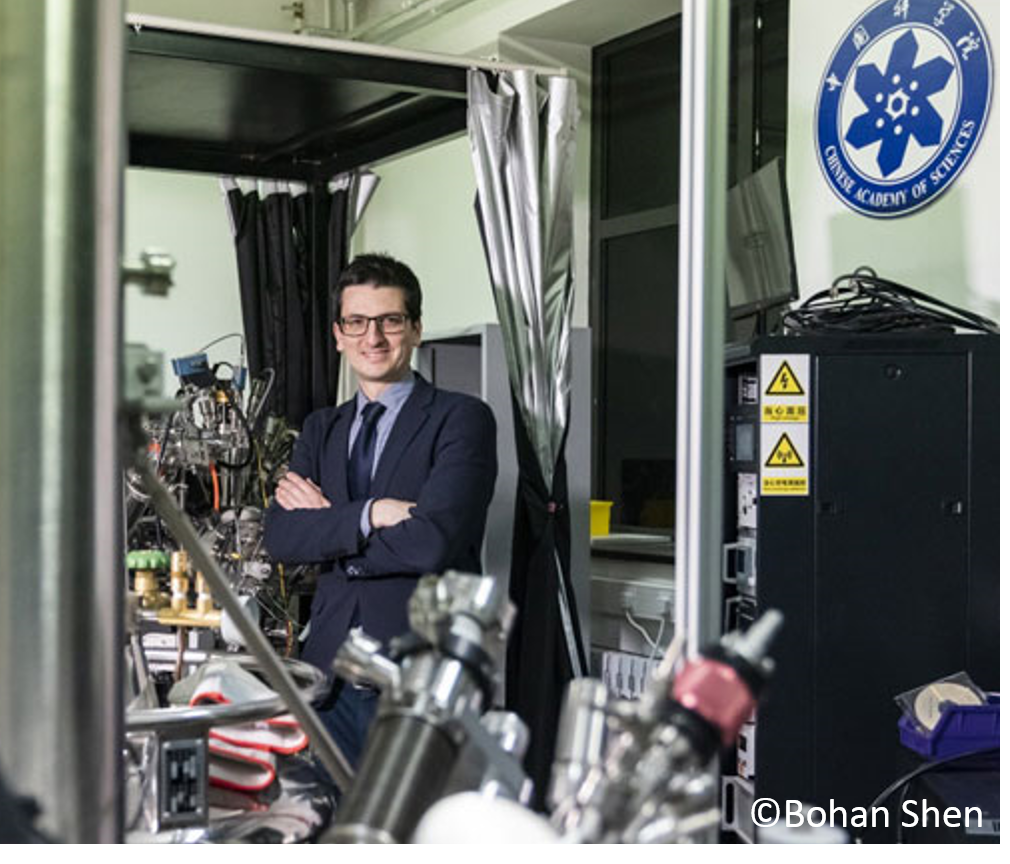 Professor Carlos-Andres Palma ist mit einem Alexander von Humboldt-Forschungsstipendium für erfahrene Wissenschaftler ausgezeichnet worden. Mit diesem Förderinstrument finanziert die Alexander von Humboldt-Stiftung längere Forschungsaufenthalte renommierter internationaler Experten in Deutschland. Am IRIS Adlershof sowie am Institut für Physik der Humboldt-Universität zu Berlin wird Prof. Palma seine Expertise auf dem Gebiet Tieftemperatur Ultrahochvakuum-Rasterkraftmikroskopie (UHV-AFM) und komplementäre Oberflächenanalytik einbringen. Gemeinsam mit der Gruppe von Prof. Jürgen P. Rabe und in Zusammenarbeit mit der Gruppe von Prof. Norbert Koch wird er im Projekt "Niedrigdimensionale Kohlenstoff-sp3-Materialien an genau definierten Grenzflächen" nanografitische Materialien und ihre Phononeneigenschaften untersuchen. Dabei wird er auch mit Prof. Klaus Müllen (MPI Mainz) und Prof. Thomas Frauenheim (Universität Bremen) zusammenarbeiten. Die erste Arbeit hierzu wurde unter dem Titel "Edge Phonon Excitations in a Chiral Self-Assembled Supramolecular Nanoribbon" kürzlich im Journal of Physical Chemistry Letters veröffentlicht.
Professor Carlos-Andres Palma ist mit einem Alexander von Humboldt-Forschungsstipendium für erfahrene Wissenschaftler ausgezeichnet worden. Mit diesem Förderinstrument finanziert die Alexander von Humboldt-Stiftung längere Forschungsaufenthalte renommierter internationaler Experten in Deutschland. Am IRIS Adlershof sowie am Institut für Physik der Humboldt-Universität zu Berlin wird Prof. Palma seine Expertise auf dem Gebiet Tieftemperatur Ultrahochvakuum-Rasterkraftmikroskopie (UHV-AFM) und komplementäre Oberflächenanalytik einbringen. Gemeinsam mit der Gruppe von Prof. Jürgen P. Rabe und in Zusammenarbeit mit der Gruppe von Prof. Norbert Koch wird er im Projekt "Niedrigdimensionale Kohlenstoff-sp3-Materialien an genau definierten Grenzflächen" nanografitische Materialien und ihre Phononeneigenschaften untersuchen. Dabei wird er auch mit Prof. Klaus Müllen (MPI Mainz) und Prof. Thomas Frauenheim (Universität Bremen) zusammenarbeiten. Die erste Arbeit hierzu wurde unter dem Titel "Edge Phonon Excitations in a Chiral Self-Assembled Supramolecular Nanoribbon" kürzlich im Journal of Physical Chemistry Letters veröffentlicht.
Carlos-Andres Palma (36) ist Associate Professor am Institut für Physik der Chinesischen Akademie der Wissenschaften (CAS) - einem führenden Forschungsinstitut für Festkörperphysik, das maßgebliche Beiträge zu Hochtemperatursupraleitern auf Kupfer- und Eisenbasis, zu Weyl-Halbmetallen, zum anonmalen Quanten Hall-Effekt sowie zur Physik topologischer Isolatoren geleistet hat. Vor seiner Tätigkeit am Institut für Physik der CAS war er an der TU München, am Max-Planck-Institut für Polymerforschung, der ETH Zürich, dem University College London und der Universität Straßburg tätig, wo er 2010 promovierte.
Derzeit wird Palma durch den Thousand Youth Talent Plan der Volksrepublik China, dem CAS Instrument Development Förderprogramm, dem CAS Frontier Research Grant sowie dem von der National Natural Science Foundation of China (NSFC) und der Deutschen Forschungsgemeinschaft (DFG) gemeinsam aufgelegten Sino-German Research Grant gefördert. Seine Forschungsinteressen liegen vor allem auf dem Gebiet der Physik präziser molekularer Architekturen an Grenzflächen.
Wer Interesse hat, mehr über Prof. Palmas Forschungsrabeiten zu erfahren kann ihn als Sprecher auf dem Symposium IRIS 2019 erleben.
25.09.2019Quantum Futur Award 2019 für Aron Vanselow
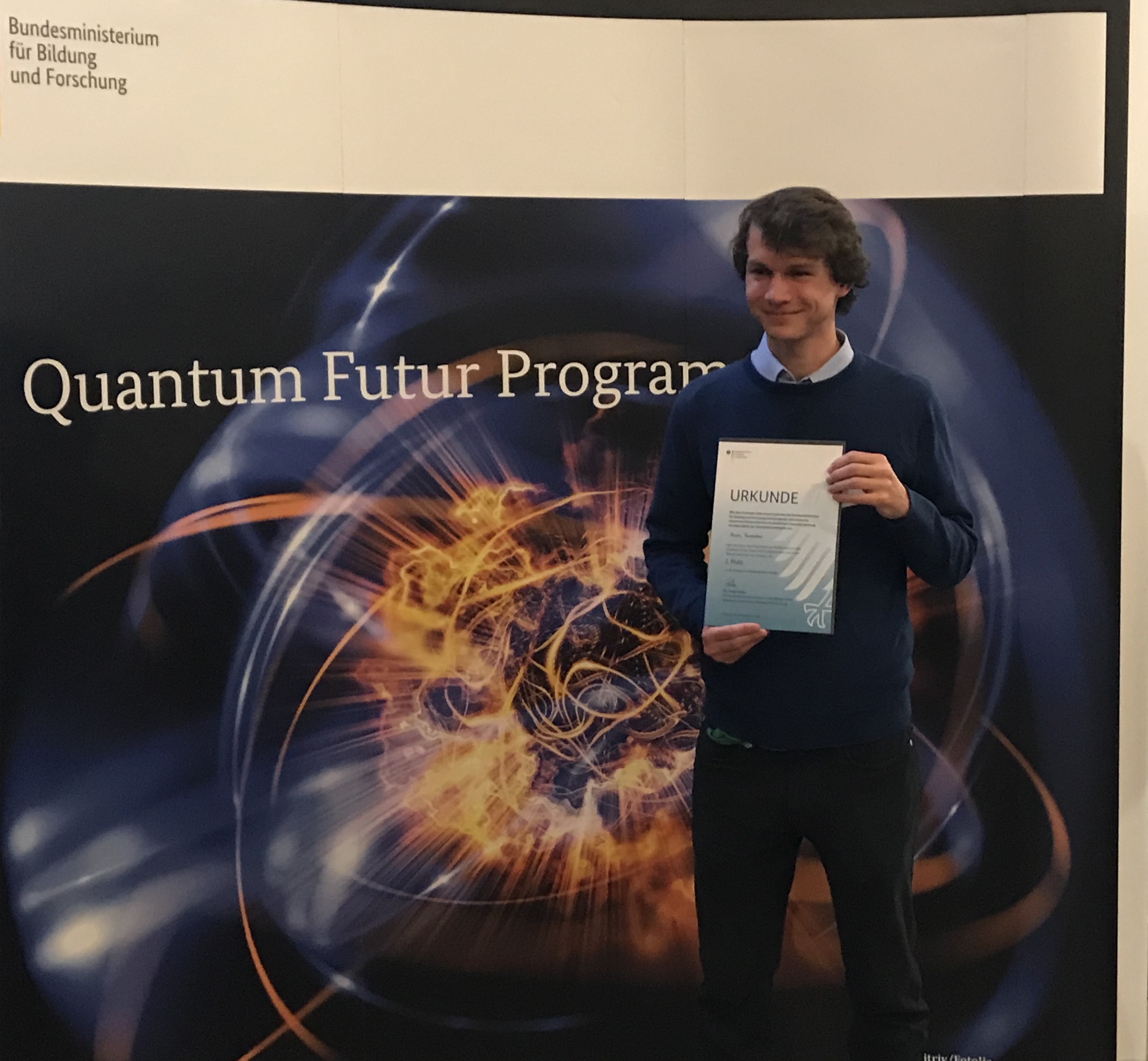
Aron Vanselow hat für seine Masterarbeit zum Thema „Mid-infrared frequency-domain optical coherence tomography with undetected photons“ den zweiten Preis des Quantum Futur Award 2019 des Bundesministeriums für Bildung und Forschung (BMBF) verliehen bekommen. Herr Vanselow hat seine Arbei in der von Dr. Sven Ramelow, Mitglied von IRIS Adlershof, geleiteten Gruppe „Nichtlineare Quantenoptik“ durchgeführt. Einige Resultate dieser Arbeit wurden kürzlich in der Zeitschrift Optics Letters veröffentlicht und haben auch schon zu einer Patenterteilung geführt.
IRIS Adlershof gratuliert dem jungen Preisträger herzlich.
19.09.2019Royal Society of Chemistry Poster Prize für Valentin Reiter-Scherer
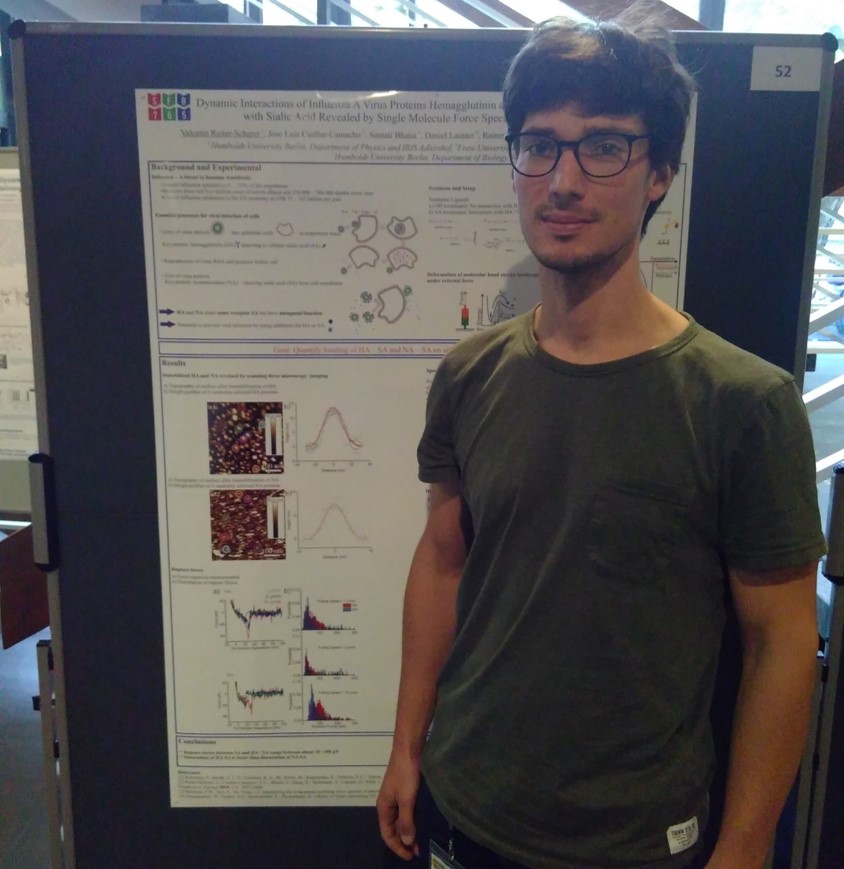 Valentin Reiter-Scherer, Doktorand in der Gruppe von Jürgen P. Rabe, Direktor von IRIS Adlershof, hat auf der Tagung Polydays 2019 der Berlin-Brandenburgischen Gesellschaft für Polymerforschung (BVP) für seinen Beitrag "Dynamic interactions of influenza A virus proteins hemagglutinin and neuraminidase with sialic acid revealed by Single Molecule Force Spectroscopy" den Posterpreis der Royal Society of Chemistry zuerkannt bekommen. Gut gemacht, Valentin!
Valentin Reiter-Scherer, Doktorand in der Gruppe von Jürgen P. Rabe, Direktor von IRIS Adlershof, hat auf der Tagung Polydays 2019 der Berlin-Brandenburgischen Gesellschaft für Polymerforschung (BVP) für seinen Beitrag "Dynamic interactions of influenza A virus proteins hemagglutinin and neuraminidase with sialic acid revealed by Single Molecule Force Spectroscopy" den Posterpreis der Royal Society of Chemistry zuerkannt bekommen. Gut gemacht, Valentin!
05.09.2019ERC Starting Grant für Dr. Tim Schröder
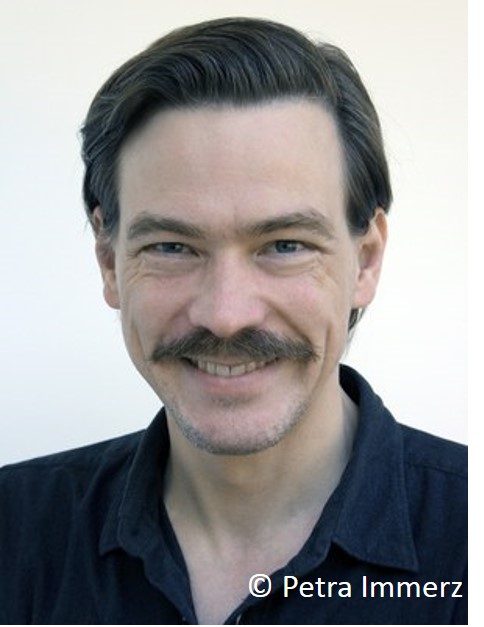 Dr. Tim Schröder, Nachwuchsgruppenleiter am Institut für Physik der Humboldt Universität zu Berlin (HU) und am Ferdinand-Braun-Institut, Leibniz-Institut für Höchstfrequenztechnik (FBH), hat einen ERC Starting Grant eingeworben und wird für fünf Jahre mit 1,5 Millionen Euro gefördert.
Dr. Tim Schröder, Nachwuchsgruppenleiter am Institut für Physik der Humboldt Universität zu Berlin (HU) und am Ferdinand-Braun-Institut, Leibniz-Institut für Höchstfrequenztechnik (FBH), hat einen ERC Starting Grant eingeworben und wird für fünf Jahre mit 1,5 Millionen Euro gefördert.
Mit seinem Projekt QUERP „Quantum Repeater Architectures Based on Quantum Memories and Photonic Encoding” forscht Herr Schröder an der nächsten Generation schneller, sicherer und zukunftskompatibler Kommunikation an der Schnittstelle von integrierter Quantenoptik, -kommunikation und neuen Materialsystemen. Bei seiner Arbeit an diesem Thema kann er auch auf Ressourcen von IRIS Adlershof zurückgreifen. Wir gratulieren herzlich und freuen uns auf eine Fortsetzung der guten Zusammenarbeit.
mehr...
19.07.2019Berlin University Alliance holt den Exzellenztitel
 Die Berlin University Alliance wird als Exzellenzverbund im Exzellenzstrategie-Wettbewerb des Bundes und der Länder gefördert. Das hat der Wissenschaftsrat am 19. Juli 2019 in Bonn mitgeteilt. Die vier Berliner Partnerinnen – die Freie Universität Berlin, die Humboldt-Universität zu Berlin, die Technische Universität Berlin und die Charité – Universitätsmedizin Berlin – konnten mit ihrem Antrag „Crossing Boundaries toward an Integrated Research Environment“ in dem hoch kompetitiven Verfahren überzeugen.
Die Berlin University Alliance wird als Exzellenzverbund im Exzellenzstrategie-Wettbewerb des Bundes und der Länder gefördert. Das hat der Wissenschaftsrat am 19. Juli 2019 in Bonn mitgeteilt. Die vier Berliner Partnerinnen – die Freie Universität Berlin, die Humboldt-Universität zu Berlin, die Technische Universität Berlin und die Charité – Universitätsmedizin Berlin – konnten mit ihrem Antrag „Crossing Boundaries toward an Integrated Research Environment“ in dem hoch kompetitiven Verfahren überzeugen.
mehr...
19.07.2019Artikel des IRIS-Nachwuchsgruppenleiters Michael J. Bojdys wird in Nature Communications veröffentlicht
Der IRIS Nachwuchsgruppenleiter Michael J. Bojdys und sein internationales Team können einen großen Erfolg verbuchen: Ihr Artikel "Real-time optical and electronic sensing with a β-amino enone linked, triazine- containing 2D covalent organic framework" wurde für die Veröffentlichung in der renommierten Fachzeitschrift Nature Communications ausgewählt.
containing 2D covalent organic framework" wurde für die Veröffentlichung in der renommierten Fachzeitschrift Nature Communications ausgewählt.
Bojdys Artikel beschäftigt sich mit „aromatischen 2-dimensionalen, kovalenten organischen Netzwerken“ (2D COFs), einer neuen Klasse poröser organischer Materialien, welche die präzise Eingliederung organischer Einheiten in periodische Strukturen ermöglichen. COFs können chemisch so gestaltet werden, dass sie bestimmte Oberflächenfunktionsgruppen beinhalten, die zur Regulierung optischer und elektronischer Eigenschaften genutzt werden können. Die geringe Stabilität der COFs gegenüber chemischen Triggern hat die praktische Anwendung bisher jedoch unmöglich gemacht.
Zusammen mit einem Te am vom Institute of Organic Chemistry and Biochemistry of the CAS (Prag, Tschechische Republik) haben Bojdys und sein Team von der Humboldt-Universität zu Berlin ein neues Gestaltungsprinzip für COFs erforscht, das auf eine starke, ganzheitliche Konjugation und Einbindung von Donor-Akzeptor-Domänen setzt. In dieser Studie wurde ein neuer, hochstabiler, chemoresistenter β-Aminoenon-gebundener, triazinhaltiger COF als optischer und elektronischer Echtzeit-Sensor für flüchtige Säuren und Basen verwendet. Das Team konnte feststellen, dass die Sensing-Fähigkeit des COF durch Protonierung des Elektronenakzeptors - eines Triazinrings – gezeigt werden kann: Es kam zu einer Erhöhung der elektrischen Leitfähigkeit um zwei Größenordnungen und einer mit bloßen Augen sichtbaren optischen Reaktion. Diese Ergebnisse sind ein vielversprechender Ansatz für die Entwicklung praktischerer Sensoren und Schalter.
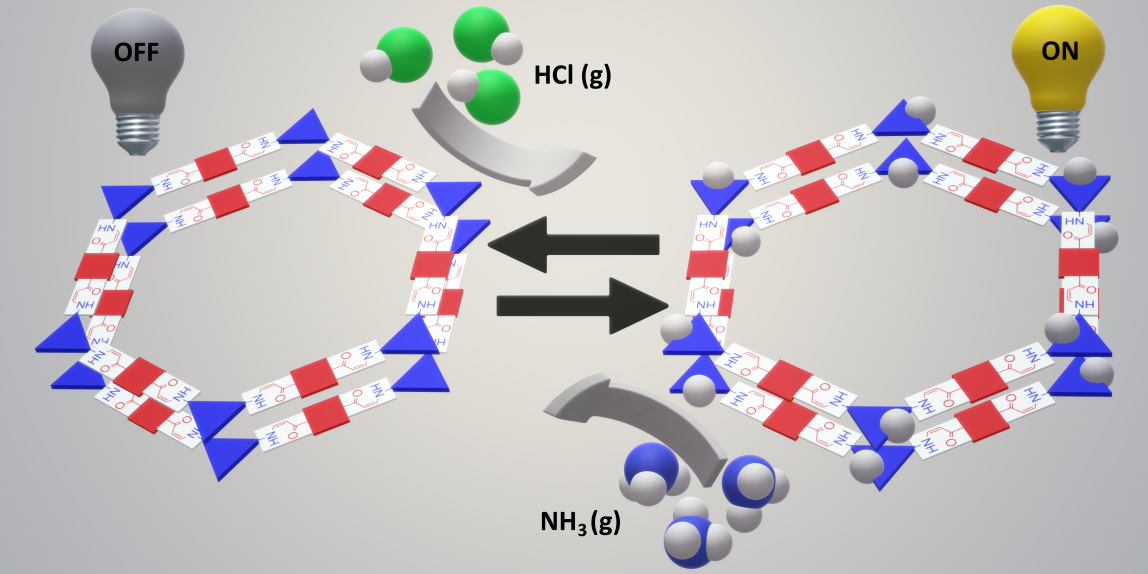 IRIS Adlershof gratuliert Michael J. Bojdys und seinem Team zu dieser erfolgreichen Studie und ihrer Veröffentlichung in der Zeitschrift Nature Communications!
IRIS Adlershof gratuliert Michael J. Bojdys und seinem Team zu dieser erfolgreichen Studie und ihrer Veröffentlichung in der Zeitschrift Nature Communications!
Aufgrund seiner großen Begeisterung für das Konzept von IRIS Adlershof und die hier durchgeführte Forschung kam der ERC-Stipendiat Bojdys 2018 an die Humboldt-Universität zu Berlin und zu IRIS Adlershof. Er leitet die Nachwuchsgruppe "Funktionale Materialien", ihr Forschungsfokus ist die Entwicklung metallfreier, elektronischer Komponenten für Transistoren und Sensoren auf der Basis funktionaler Materialien aus leichten, kovalent gebundenen Atomen. Im Mittelpunkt des Projekts steht die Herausforderung, die von der molekularen, organischen Chemie bekannten Kontrollmechanismen und Modularität auf makroskopische Strukturen zu übertragen.
R. Kulkarni, Y. Noda, D.K Barange, Y.S. Kochergin, P. Lyu, B. Balcarov, P. Nachtigall, and M.J. Bojdys
Nat. Commun 10 (2019) 3228
Die Pressemitteilung der Humboldt-Universität zu Berlin finden Sie hier.
02.07.2019IRIS-Nachwuchsgruppenleiter Michael J. Bojdys auf dem Jahrestreffen der neuen Champions in Dalian (China)
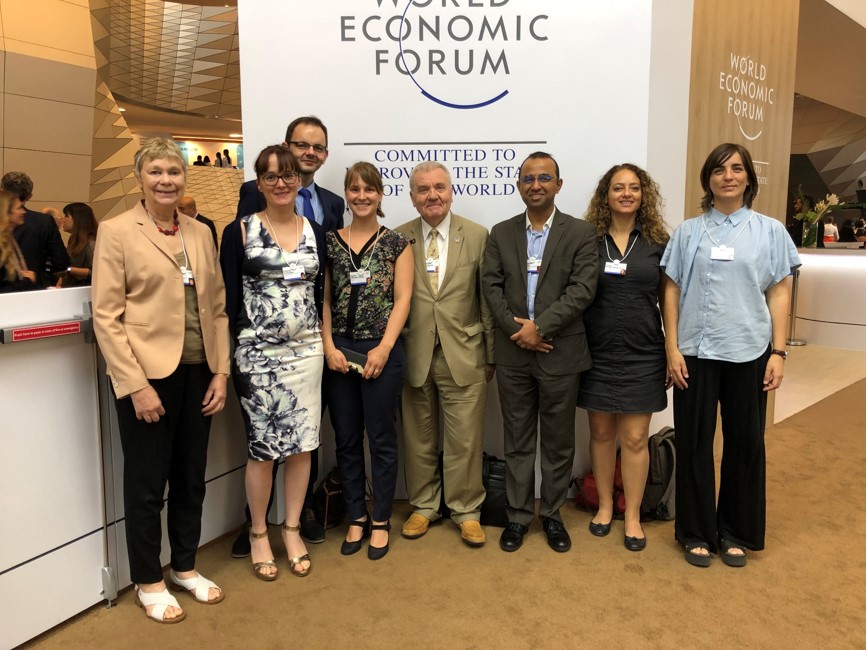 Der Europäische Forschungsrat bringt sich vom 1. bis 3. Juli in Dalian (China) auf dem vom Weltwirtschaftsforum (WEF) organisierten Jahrestreffen der neuen Champions (AMNC), das auch als "Sommer Davos" bekannt ist, mit zukunftsweisenden wissenschaftlichen Erkenntnissen ein. Die diesjährige Veranstaltung befasst sich mit dem Thema "Leadership 4.0: Erfolg in einer neuen Ära der Globalisierung".
Der Europäische Forschungsrat bringt sich vom 1. bis 3. Juli in Dalian (China) auf dem vom Weltwirtschaftsforum (WEF) organisierten Jahrestreffen der neuen Champions (AMNC), das auch als "Sommer Davos" bekannt ist, mit zukunftsweisenden wissenschaftlichen Erkenntnissen ein. Die diesjährige Veranstaltung befasst sich mit dem Thema "Leadership 4.0: Erfolg in einer neuen Ära der Globalisierung".
Zum achten Mal in Folge nimmt der ERC mit einer Delegation teil, die sich aus dem Präsidenten des ERC, Prof. Jean-Pierre Bourguignon, und zehn ERC-Stipendiaten zusammensetzt, die alle in ihren jeweiligen Bereichen führend sind. Einer dieser zehn ERC Stipendiaten ist Dr. Michael J. Bojdys, Nachwuchsgruppenleiter am IRIS Adlershof sowie am Institut für Chemie der Humboldt-Universität zu Berlin.
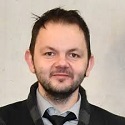 Herr Bojdys freut sich über die Einladung nach Dalian und zieht folgendes Resümee: "Das WEF legte dieses Jahr einen Fokus auf "Leadership 4.0" zur Erfüllung nachhaltiger Entwicklungsziele. Die Technologie für nachhaltige Elektronik, smarte Energiespeicher, Lebensmittelsicherheit und gesünderes Leben existiert teilweise schon, bezahlt durch Steuergelder, wie zum Beispiel die des Europäischen Forschungsrates (ERC), der auch unsere Forschung fördert. Allerdings fehlen den meisten Wissenschaftlern Businesskenntnisse, um ihre Projekte auf den Markt zu bringen. WEF und ERC sehen einen Bedarf für (1) besseres Business-Training von Wissenschaftlern - das heisst: sind Sie in der Lage, einen griffigen und überzeugenden Kurzvortrag zur Wirkung Ihrer Forschung auf die Gesellschaft zu halten? Sind Sie in der Lage, ein "Verkaufsgespräch" mit Geldgebern zu führen? (2) Bessere Finanzierung für die Entwicklung technologischer Prototypen - hier führt das ERC mit den sogenannten "Proof of Concept" Grants an, die nicht nur für die Prototypentwicklung zahlen, sondern auch für eine Marktstudie, und (3) wie können wir Wissenschaftlern helfen, die richtigen Geldgeber für ihre Projekte vor einer Aktienerstimmission zu finden? Eine spannende Initiative ist hier das ERC "Virtual Ventures Fair", welches die Projektleitung erfolgreicher "Proof of Concept" Grants mit Investoren zusammen bringen wird. Ich freue mich insbesondere mit der neuen Leitung des ERC am "Virtual Ventures Fair" Projekt zusammen zu arbeiten - denn wenn wir etwas als Wissenschaftler können, dann ist es, Expertenmeinung via "peer-review" beizutragen."
Herr Bojdys freut sich über die Einladung nach Dalian und zieht folgendes Resümee: "Das WEF legte dieses Jahr einen Fokus auf "Leadership 4.0" zur Erfüllung nachhaltiger Entwicklungsziele. Die Technologie für nachhaltige Elektronik, smarte Energiespeicher, Lebensmittelsicherheit und gesünderes Leben existiert teilweise schon, bezahlt durch Steuergelder, wie zum Beispiel die des Europäischen Forschungsrates (ERC), der auch unsere Forschung fördert. Allerdings fehlen den meisten Wissenschaftlern Businesskenntnisse, um ihre Projekte auf den Markt zu bringen. WEF und ERC sehen einen Bedarf für (1) besseres Business-Training von Wissenschaftlern - das heisst: sind Sie in der Lage, einen griffigen und überzeugenden Kurzvortrag zur Wirkung Ihrer Forschung auf die Gesellschaft zu halten? Sind Sie in der Lage, ein "Verkaufsgespräch" mit Geldgebern zu führen? (2) Bessere Finanzierung für die Entwicklung technologischer Prototypen - hier führt das ERC mit den sogenannten "Proof of Concept" Grants an, die nicht nur für die Prototypentwicklung zahlen, sondern auch für eine Marktstudie, und (3) wie können wir Wissenschaftlern helfen, die richtigen Geldgeber für ihre Projekte vor einer Aktienerstimmission zu finden? Eine spannende Initiative ist hier das ERC "Virtual Ventures Fair", welches die Projektleitung erfolgreicher "Proof of Concept" Grants mit Investoren zusammen bringen wird. Ich freue mich insbesondere mit der neuen Leitung des ERC am "Virtual Ventures Fair" Projekt zusammen zu arbeiten - denn wenn wir etwas als Wissenschaftler können, dann ist es, Expertenmeinung via "peer-review" beizutragen."
mehr...
05.06.2019Organische Elektronik: Neuer Halbleiter aus der Familie der Kohlenstoffnitride
Teams der Humboldt-Universität und des Helmholtz-Zentrum für Materialien und Energie Berlin haben ein neues Material aus der Familie der Kohlenstoffnitride untersucht. Das Triazin-basierte graphitische Kohlenstoffnitrid (TGCN) ist ein Halbleiter, der sich gut für Anwendungen in der Optoelektronik eignen sollte. Die Struktur ist zweidimensional und erinnert an Graphen. Anders als beim Graphen ist die Leitfähigkeit jedoch senkrecht zu den Ebenen 65mal höher als in den Ebenen selbst.
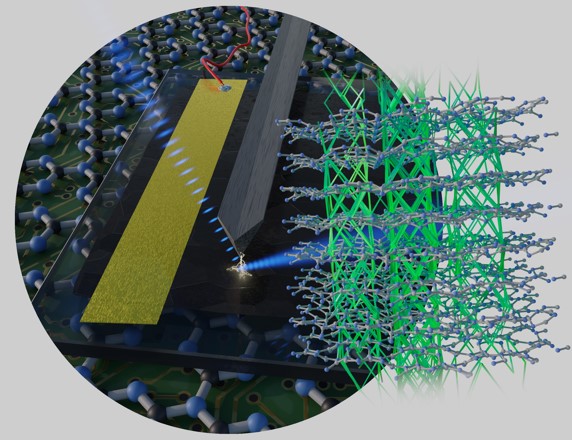 Manche organische Materialien könnten ähnlich wie Siliziumhalbleiter in der Optoelektronik eingesetzt werden. Ob als Solarzellen, Leuchtdioden oder auch als Transistoren – wichtig ist dabei die so genannte Bandlücke, also der Energieunterschied zwischen Elektronen im Valenzband (gebundener Zustand) und dem Leitungsband (beweglicher Zustand). Durch Licht oder eine elektrische Spannung lassen sich Ladungsträger vom Valenzband ins Leitungsband heben – so funktionieren im Prinzip alle elektronischen Bauelemente. Ideal sind Bandlücken zwischen 1-2 Elektronenvolt.
Manche organische Materialien könnten ähnlich wie Siliziumhalbleiter in der Optoelektronik eingesetzt werden. Ob als Solarzellen, Leuchtdioden oder auch als Transistoren – wichtig ist dabei die so genannte Bandlücke, also der Energieunterschied zwischen Elektronen im Valenzband (gebundener Zustand) und dem Leitungsband (beweglicher Zustand). Durch Licht oder eine elektrische Spannung lassen sich Ladungsträger vom Valenzband ins Leitungsband heben – so funktionieren im Prinzip alle elektronischen Bauelemente. Ideal sind Bandlücken zwischen 1-2 Elektronenvolt.
Ein Team um den Chemiker Dr. Michael J. Bojdys vom IRIS Adlershof und dem Institut für Chemie der Humboldt-Universität zu Berlin hat kürzlich ein neues organisches Halbleitermaterial aus der Familie der Kohlenstoffnitride synthetisiert. Das Triazin-basierte graphitische Kohlenstoffnitrid oder TGCN besteht nur aus Kohlenstoff- und Stickstoff-Atomen und lässt sich als brauner Film auf einem Quarzsubstrat aufwachsen. Die C- und N-Atome bilden miteinander sechseckige Waben, ähnlich wie im Graphen, das aus reinem Kohlenstoff besteht. Wie bei Graphen ist auch beim TGCN die kristalline Struktur zweidimensional. Bei Graphen ist die Leitfähigkeit in der Ebene jedoch exzellent, senkrecht dazu deutlich schlechter. Bei TGCN ist es genau umgekehrt: die Leitfähigkeit senkrecht zur Ebene ist rund 65mal höher ist als in der Ebene selbst. Mit einer Bandlücke von 1,7 Elektronenvolt ist TGCN ein guter Kandidat für Anwendungen in der Optoelektronik.
Der Physiker Dr. Christoph Merschjann vom Helmholtz-Zentrum Berlin für Materialien und Energie GmbH (HZB) hat daraufhin im Laserlabor JULiq, einem Joint Lab zwischen HZB und Freier Universität Berlin, die Transporteigenschaften in Proben aus TGCN mit zeitaufgelösten Absorptionsmessungen im Femto- bis Nanosekundenbereich untersucht. Solche Laserexperimente stellen eine der wenigen Möglichkeiten dar, makroskopische Leitfähigkeiten mit mikroskopischen Transportmodellen zu verknüpfen. Aus den Messdaten konnte er ableiten, wie die Ladungsträger durch das Material diffundieren. „Sie verlassen die sechseckigen Waben aus Triazin-Einheiten nicht horizontal, sondern bewegen sich schräg zur nächsten Triazin-Einheit in der Nachbarebene. Dabei führt die Kristallstruktur zu einer bevorzugten Bewegung entlang röhrenartiger Kanäle.“ Dieser Mechanismus könnte erklären, dass die Leitfähigkeit senkrecht zu den Ebenen deutlich höher ist, als in den Ebenen. „TGCN ist daher bislang der beste Kandidat, um gängige anorganische Halbleiter wie Silizium mit ihren teilweise kritischen “Dotanden” aus seltenen Elementen zu ersetzen“, sagt Michael Bojdys. „Unser Herstellungsverfahren, das wir in meiner Gruppe an der Humboldt-Universität entwickelt haben, führt zu flachen Schichten von halbleitendem TGCN auf isolierendem Quartzglas. Das ermöglicht Upscaling und einfache Device-Produktion.“
Diese Ergebnisse wurden kürzlich in der internationalen Edition der renommierten Zeitschrift "Angewandte Chemie" veröffentlicht.
04.06.2019Neue wissenschaftliche Geschäftsführung am Helmholtz-Zentrum Berlin
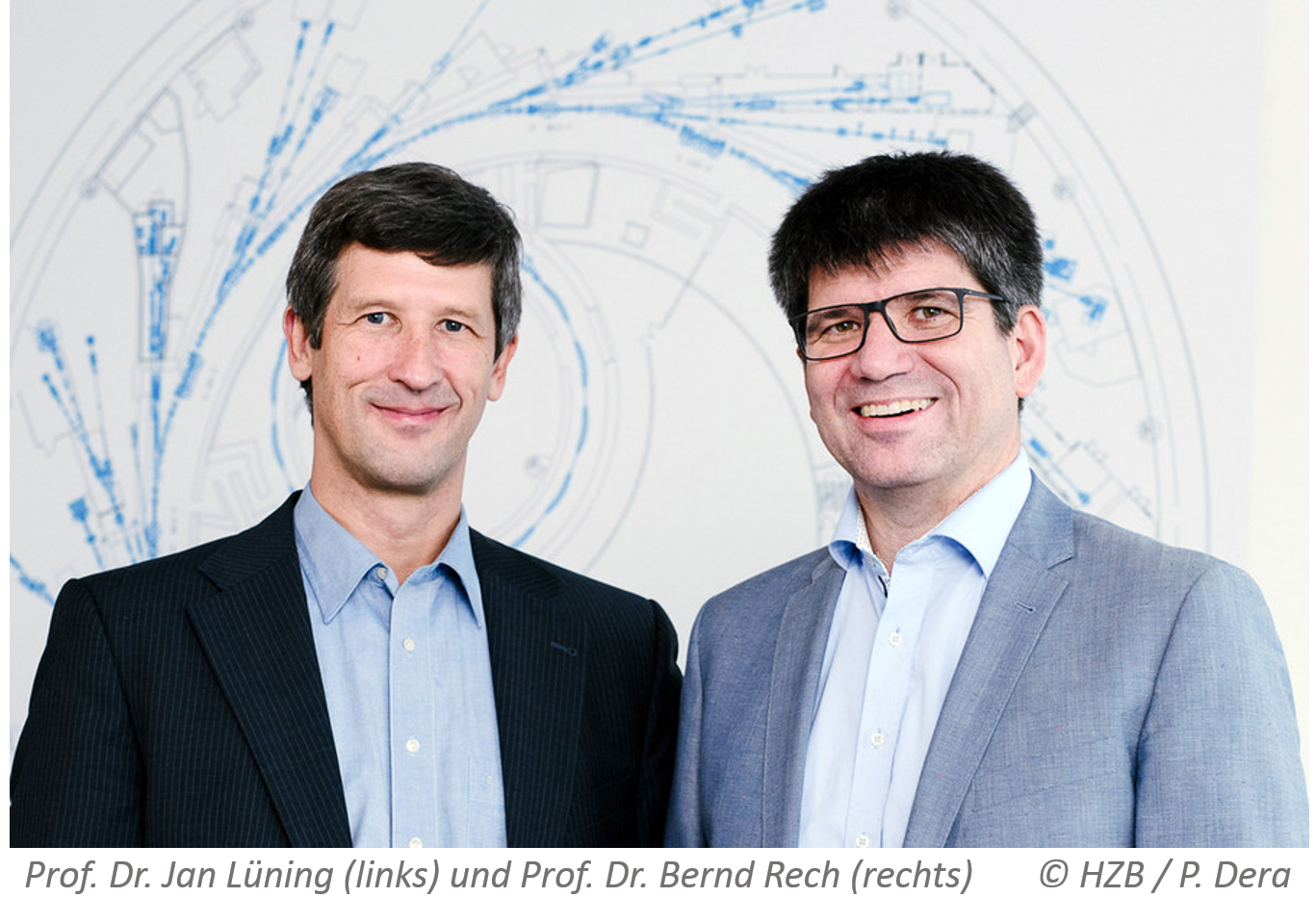 Prof. Dr. Bernd Rech und Prof. Dr. Jan Lüning sind seit 1. Juni 2019 wissenschaftliche Geschäftsführer des Helmholtz-Zentrum Berlin für Materialien und Energie. Bernd Rech verantwortet den Bereich "Energie und Information"; Jan Lüning leitet den Bereich "Materie". Damit hat der Aufsichtsrat des HZB zwei international anerkannte Experten an die wissenschaftliche Spitze des Zentrums bestellt.
Prof. Dr. Bernd Rech und Prof. Dr. Jan Lüning sind seit 1. Juni 2019 wissenschaftliche Geschäftsführer des Helmholtz-Zentrum Berlin für Materialien und Energie. Bernd Rech verantwortet den Bereich "Energie und Information"; Jan Lüning leitet den Bereich "Materie". Damit hat der Aufsichtsrat des HZB zwei international anerkannte Experten an die wissenschaftliche Spitze des Zentrums bestellt.
IRIS Adlershof gratuliert sehr herzlich und freut sich auf die Fortsetzung der engen wissenschaftlichen Zusammenarbeit.
mehr...
31.05.201914th International Symposium on Functional π-Electron Systems im Wissenschafts- und Technologiepark Adlershof
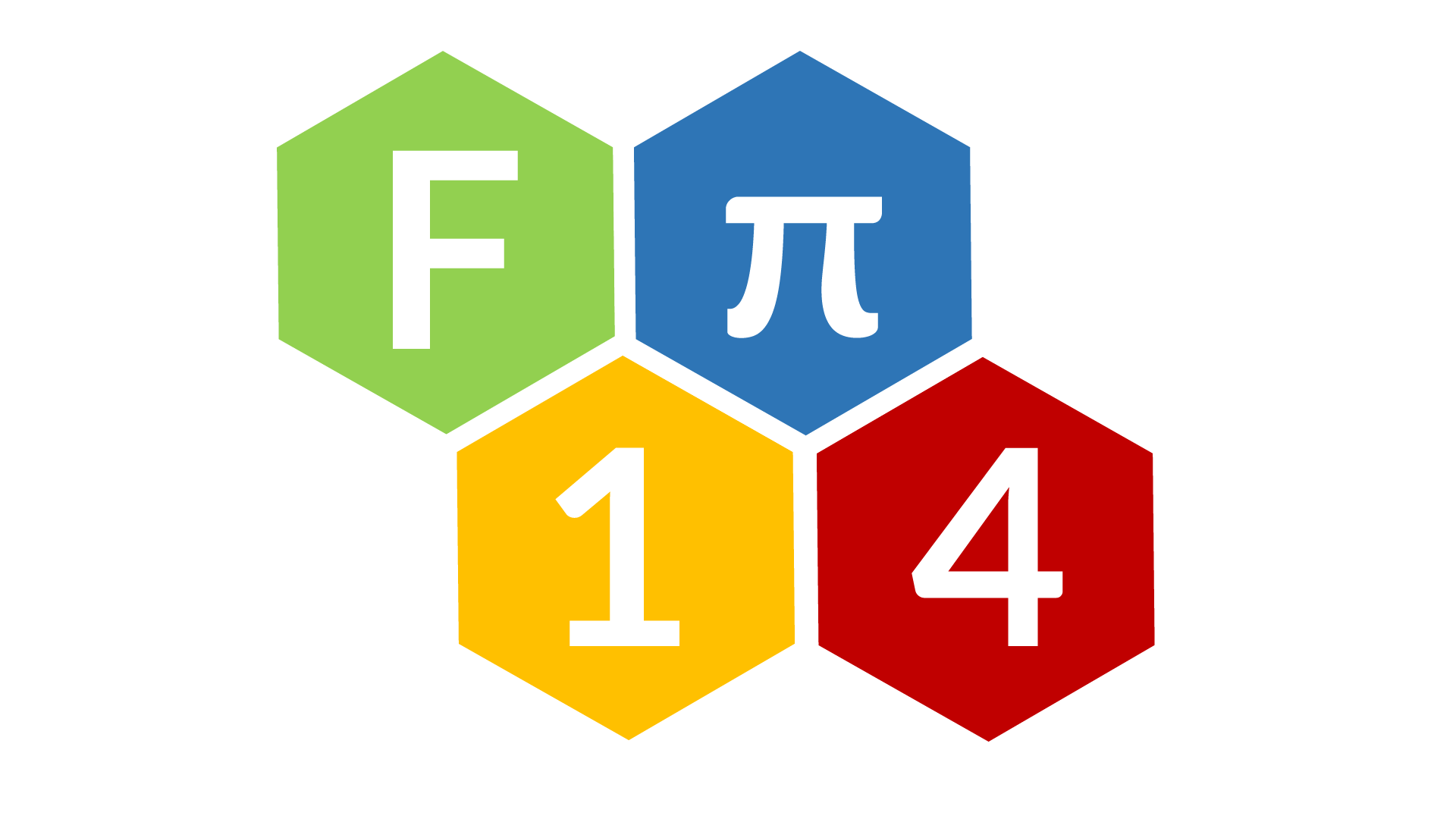 Das „14th International Symposium on Functional π-Electron Systems“ ist Teil einer regelmäßig durchgeführten internationalen Konferenzreihe, die im Jahre 1989 in Osaka (Japan) begann. Das nunmehr 14. Symposium dieser Serie wird vom Helmholtz-Zentrum Berlin für Materialien und Energie GmbH (HZB) und dem IRIS Adlershof der Humboldt-Universität zu Berlin gemeinsam organisiert und unter großer internationaler Beteiligung (über 400 TeilnehmerInnen) vom 2. bis 7. Juni 2019 im Wissenschafts- und Technologiepark Berlin Adlershof durchgeführt. Das wissenschaftliche Programm wurde von Prof. Stefan Hecht (Institut für Chemie der HU) und Prof. Norbert Koch (Institut für Physik der HU), beide Mitglieder von IRIS Adlershof, federführend entwickelt.
Das „14th International Symposium on Functional π-Electron Systems“ ist Teil einer regelmäßig durchgeführten internationalen Konferenzreihe, die im Jahre 1989 in Osaka (Japan) begann. Das nunmehr 14. Symposium dieser Serie wird vom Helmholtz-Zentrum Berlin für Materialien und Energie GmbH (HZB) und dem IRIS Adlershof der Humboldt-Universität zu Berlin gemeinsam organisiert und unter großer internationaler Beteiligung (über 400 TeilnehmerInnen) vom 2. bis 7. Juni 2019 im Wissenschafts- und Technologiepark Berlin Adlershof durchgeführt. Das wissenschaftliche Programm wurde von Prof. Stefan Hecht (Institut für Chemie der HU) und Prof. Norbert Koch (Institut für Physik der HU), beide Mitglieder von IRIS Adlershof, federführend entwickelt.
Im Mittelpunkt des wissenschaftlichen Programms des Symposiums stehen:
- Design und Synthese neuer π-konjugierter Moleküle und Polymere,
- organische und polymere Halbleitermaterialien für Dünnschichttransistoren,
- organische und polymere photovoltaische und sensorische Materialien und Bauelemente,
- organische lichtemittierende Materialien für Display- und Beleuchtungsanwendungen,
- Hybrid- und Perowskitmaterialien und –bauelemente,
- konjugierte Polymere und Oligomere für Chemo- / Biosensoren sowie
- Bioelektronik.
mehr...
23.05.2019SFB 951 “Hybrid Inorganic/Organic Systems for Opto-Electronics (HIOS)” geht in die dritte Förderperiode
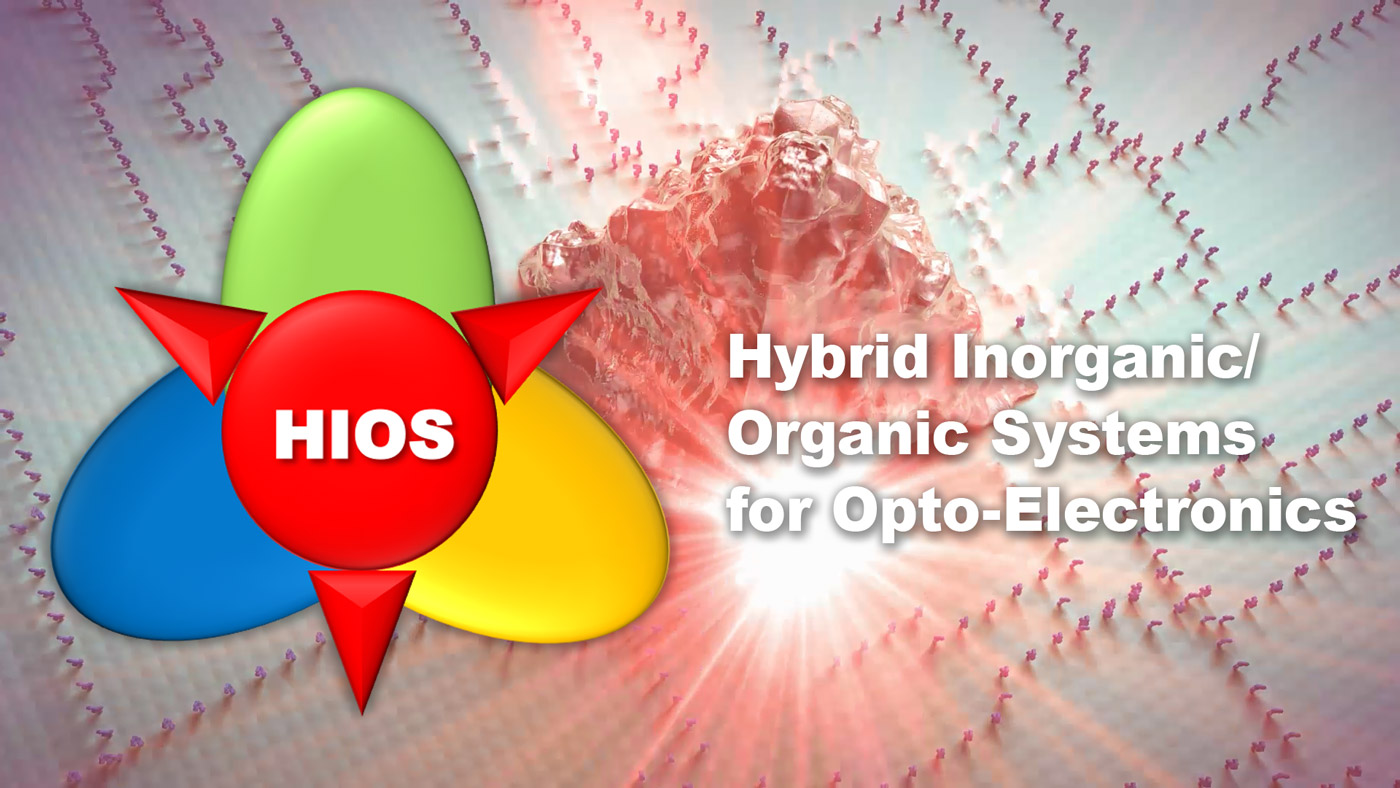 Der Sonderforschungsbereich 951 “Hybrid Inorganic/Organic Systems for Opto-Electronics”(HIOS) wird erneut für weitere vier Jahre gefördert. Dies hat die Deutsche Forschungsgemeinschaft (DFG) auf ihrer diesjährigen Frühjahrssitzung in Bonn entschieden. Seit seiner Einrichtung im Jahre 2011 stehen innovative Hybridsysteme im wissenschaftlichen Fokus des SFB 951. In diesen Hybridsystemen werden anorganische Halbleiter, konjugierte organische Materialien und metallische Nanostrukturen miteinander kombiniert, mit dem langfristigen Ziel, funktionale Elemente für die Optoelektronik im meso- bzw. nanoskopischen Längenbereich mit neuartigen, von den Einzelkomponenten bislang nicht erreichten Eigenschaften, zu realisieren. Dies könnte beispielsweise in hochfrequenten und vielfarbigen Lichtquellen und Sensoren, oder in elektronisch und optisch multifunktionalen Bauelementen kommender Generationen der Informationstechnologie zur Anwendung kommen.
Der Sonderforschungsbereich 951 “Hybrid Inorganic/Organic Systems for Opto-Electronics”(HIOS) wird erneut für weitere vier Jahre gefördert. Dies hat die Deutsche Forschungsgemeinschaft (DFG) auf ihrer diesjährigen Frühjahrssitzung in Bonn entschieden. Seit seiner Einrichtung im Jahre 2011 stehen innovative Hybridsysteme im wissenschaftlichen Fokus des SFB 951. In diesen Hybridsystemen werden anorganische Halbleiter, konjugierte organische Materialien und metallische Nanostrukturen miteinander kombiniert, mit dem langfristigen Ziel, funktionale Elemente für die Optoelektronik im meso- bzw. nanoskopischen Längenbereich mit neuartigen, von den Einzelkomponenten bislang nicht erreichten Eigenschaften, zu realisieren. Dies könnte beispielsweise in hochfrequenten und vielfarbigen Lichtquellen und Sensoren, oder in elektronisch und optisch multifunktionalen Bauelementen kommender Generationen der Informationstechnologie zur Anwendung kommen.
In den vergangenen Jahren haben die Wissenschaftlerinnen und Wissenschaftler des SFB 951 die grundlegenden chemischen, elektronischen und photonischen Wechselwirkungen, die sich aus der unterschiedlichen Natur der in HIOS kombinierten Komponenten ergeben, ausgiebig untersucht und auch umfassend verstanden. Dadurch konnten unter anderem neuartige hybridisierte Quantenzustände und gekoppelte Anregungen an den anorganisch/organischen Grenzflächen entdeckt werden. Diese Fülle beeindruckender Ergebnisse hat die inhaltlichen Grundlagen für die Fortsetzung dieser spannenden Forschung für weitere vier Jahre gelegt.
Die Deutsche Forschungsgemeinschaft (DFG) hat dies nun mit der Entscheidung zur Fortsetzung der Förderung des SFB für eine dritte Periode für den Zeitraum
2019 – 2023 gewürdigt. Sprecher und Vize-Sprecher des SFB, Norbert Koch und Oliver Benson (beide Mitglieder von IRIS Adlershof) freuen sich sehr auf die weitere enge Zusammenarbeit mit insgesamt 21 Teilprojektleiterinnen und Teilprojektleitern der Institute für Physik und für Chemie sowie des IRIS Adlershof der Humboldt-Universität zu Berlin (Sprecherhochschule), der Technischen Universität Berlin, der Freien Universität, der Universität Potsdam, des Helmholtz-Zentrums Berlin für Materialien und Energie sowie des Fritz-Haber-Instituts der Max-Planck-Gesellschaft.
18.05.2019Berliner Exzellenzcluster MATH+ eröffnet
Mehr Informationen über das Exzellenzcluster MATH+ finden Sie hier.
13.05.2019Qiankun Wang receives 2018 Chinese Government Award
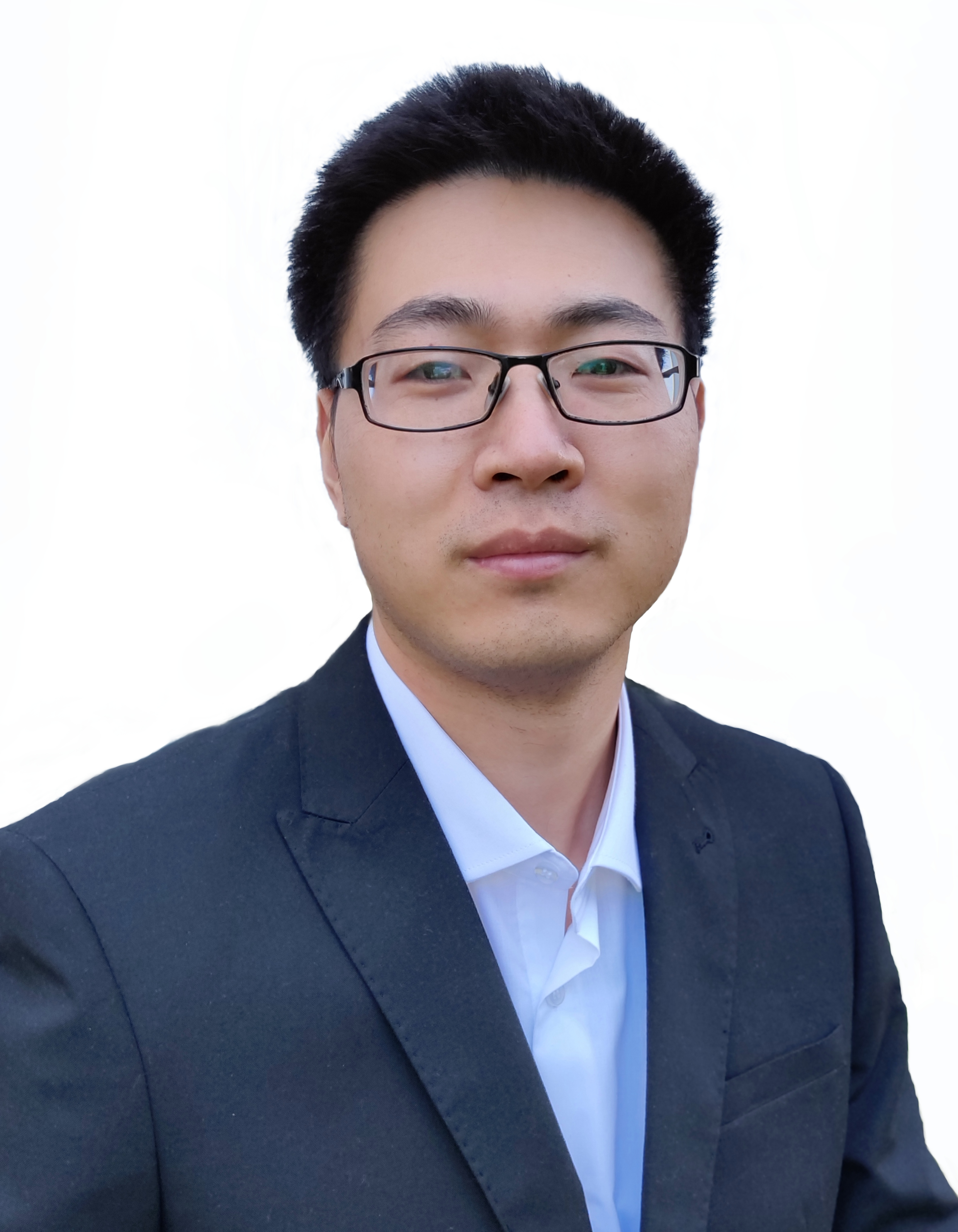
Outstanding Self-financed Students Abroad” of the China Scholarship Council.
Well deserved, Qiankun!
03.05.2019Einstein Junior Fellowship für Frau Dr. Valentina Forini
.jpg) Die theoretische Physikerin Valentina Forini forscht am IRIS Adlershof der Humboldt-Universität zu Berlin im Bereich der mathematischen Physik zur String- und Quantenfeldtheorie. Im Fokus ihrer Forschung steht die Anti-de-Sitter/Conformal Field Theory-Korrespondenz, also die Beschäftigung mit Raum, Zeit und Materie. Forinis Arbeiten zur String- und Eichfeldtheorie haben international Anerkennung gefunden.
Die theoretische Physikerin Valentina Forini forscht am IRIS Adlershof der Humboldt-Universität zu Berlin im Bereich der mathematischen Physik zur String- und Quantenfeldtheorie. Im Fokus ihrer Forschung steht die Anti-de-Sitter/Conformal Field Theory-Korrespondenz, also die Beschäftigung mit Raum, Zeit und Materie. Forinis Arbeiten zur String- und Eichfeldtheorie haben international Anerkennung gefunden.
Angefangen mit der Leitung einer Emmy-Noether-Nachwuchsgruppe am Institut für Physik der Humboldt-Universität zu Berlin von 2012 bis 2017, ist die Physikerin seither in mehrere Forschungsprojekte des IRIS Adlershof eingebunden. Inzwischen wurde Valentina Forini ein Simons Emmy Noether-Stipendium (2018/19) am Perimeter Institute für Theoretische Physik in Kanada verliehen. Am IRIS ist sie auch Projektleiterin für das europäische Marie-Curie-ITN-Netzwerk EuroPLEx. Zusätzlich doziert Forini seit 2018 am Institut für Mathematik der City University of London.
Nun wurde Frau Forini von der Einstein Stiftung Berlin mit einem Einstein Junior Fellowship ausgezeichnet. Wir gratulieren Frau Forini herzlich und freuen uns auf die weitere Zusammenarbeit.
29.03.2019ERC Advanced Grant für Prof. Thomas Elsässer
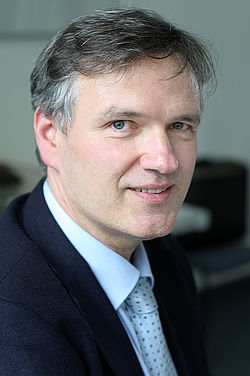 Professor Thomas Elsässer, Direktor am Max-Born-Institut für Nichtlineare Optik und Kurzzeitspektroskopie im Forschungsverbund Berlin e. V. und S-Professor am Institut für Physik der Humboldt-Universität zu Berlin sowie Mitglied von IRIS Adlershof, erhält einen renommierten Advanced Grant des European Research Council (ERC), der fünf Jahre lang Grundlagenforschung zu dynamischen elektrischen Wechselwirkungen von DNA und RNA mit Ionen und ihrer Wasserumgebung unterstützt. Der ERC Advanced Grant ist mit bis zu 2,5 Millionen Euro dotiert und wird an Spitzenforscher in Europa vergeben, die bahnbrechende Hochrisikoprojekte in der Wissenschaft verfolgen.
Professor Thomas Elsässer, Direktor am Max-Born-Institut für Nichtlineare Optik und Kurzzeitspektroskopie im Forschungsverbund Berlin e. V. und S-Professor am Institut für Physik der Humboldt-Universität zu Berlin sowie Mitglied von IRIS Adlershof, erhält einen renommierten Advanced Grant des European Research Council (ERC), der fünf Jahre lang Grundlagenforschung zu dynamischen elektrischen Wechselwirkungen von DNA und RNA mit Ionen und ihrer Wasserumgebung unterstützt. Der ERC Advanced Grant ist mit bis zu 2,5 Millionen Euro dotiert und wird an Spitzenforscher in Europa vergeben, die bahnbrechende Hochrisikoprojekte in der Wissenschaft verfolgen.
Thomas Elsaesser forscht zu ultraschnellen Phänomenen in kondensierter Materie, einschließlich Flüssigkeiten, biomolekularen Systemen und kristallinen Materialien. In seinen Experimenten kombiniert er Methoden der Femtosekunden-Spektroskopie und Strukturforschung mit Röntgenstrahlen. Er nimmt eine international führende Stellung in der Ultrakurzzeitphysik ein. Für seine wissenschaftliche Arbeit erhielt er zahlreiche Auszeichnungen, darunter 2009 seinen ersten ERC Advanced Grant.
IRIS Adlershof gratuliert herzlich und freut sich sehr auf die weitere enge Zusammenarbeit.
mehr...
19.03.20198. „Nano and Photonics“ Meeting auf Schloss Mauterndorf, Österreich
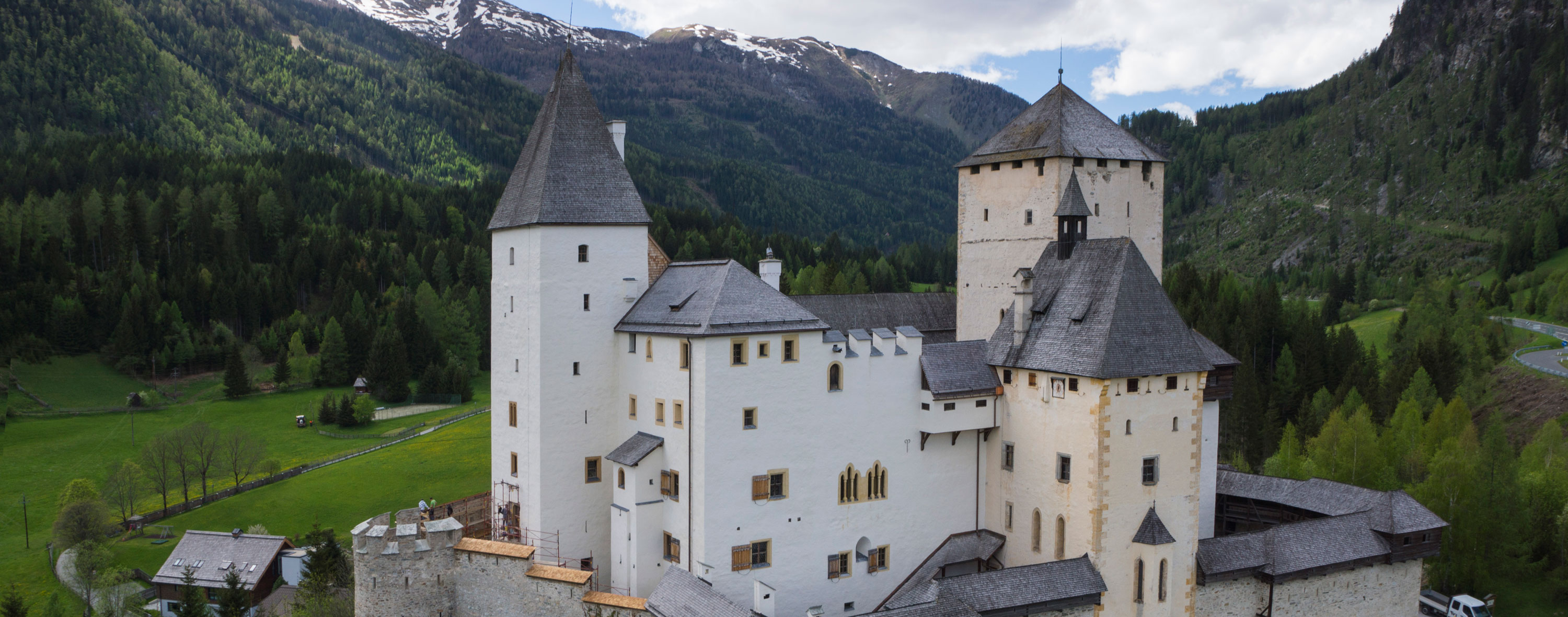 Das 8. „Nano and Photonics Meeting” im Schloss Mauterndorf vom 20.03.-22.3.2019 wird gemeinsam von Wolfgang Knoll (Austrian Institute of Technology), Franz Aussenegg (Universität Graz und Erwin-Schrödinger Institut) und Emil J.W. List-Kratochvil (Humboldt-Universität zu Berlin und Mitglied von IRIS Adlershof) organisiert.
Das 8. „Nano and Photonics Meeting” im Schloss Mauterndorf vom 20.03.-22.3.2019 wird gemeinsam von Wolfgang Knoll (Austrian Institute of Technology), Franz Aussenegg (Universität Graz und Erwin-Schrödinger Institut) und Emil J.W. List-Kratochvil (Humboldt-Universität zu Berlin und Mitglied von IRIS Adlershof) organisiert.
Das diesjährige Programm wurde mit einem Fokus auf „Sensorischen Anwendungen von plasmonischen Nanostrukturen und Photovoltaik Technologien“ zusammengestellt. Zu den eingeladenen Referenten gehören u.a. S. Kawata von der Osaka University, B. Hecht von der Universität Würzburg und T. Dimopoulos vom Austrian Institute of Technology.
Ziel dieser Veranstaltung ist es, ein internationales wissenschaftliches Treffen für alle, die an photonischen Anwendungen der modernen Nanotechnologie interessiert sind, zu organisieren. Damit soll auch eine informelle, europaweite Diskussionsplattform über den aktuellen Stand der Technik, sowohl in der Grundlagenforschung an den verschiedenen Universitäten, als auch in der industriellen Forschung und Entwicklung, geschaffen werden. Die Örtlichkeit, Schloss Mauterndorf, bietet das ideale Umfeld, um das gesamte Themenspektrum ohne jeglichen Zeitdruck zu diskutieren, insbesondere zwischen den Vormittags- und Nachmittags-Sessions sowie am Abend. In diesem Jahr werden 80 Teilnehmer aus 7 verschiedenen Ländern erwartet.
27.02.2019Exzellenzcluster Matters of Activity setzt auf eine neue Kultur des Materialen
 Im Exzellenzcluster "Matters of Activity. Image Space Material" arbeiten Forscherinnen und Forscher aus mehr als 40 Disziplinen in sechs Teilprojekten daran, die Grundlagen für eine neue Art des Denkens in Hinblick auf das Materiale zu schaffen. Zentral ist die Vision, die Objektwelt nicht wie bislang üblich passiv und starr, sondern im Sinne aktiver, veränderlicher und recycelbarer Baustoffe zu denken. Als Inspirationsquelle für mögliche Designs der Zukunft dienen unter anderem situativ anpassbare Faserarchitekturen und komplex strukturierte Biofilme. Gedanklich steht der Cluster der Humboldt-Universität dabei dem Bauhaus ebenso wie der akademischen Strömung des Neuen Materialismus nahe. Seitens IRIS Adlershof sind Prof. Jürgen P. Rabe und Prof. Matthias Staudacher als Principal Investigators beteiligt.
Im Exzellenzcluster "Matters of Activity. Image Space Material" arbeiten Forscherinnen und Forscher aus mehr als 40 Disziplinen in sechs Teilprojekten daran, die Grundlagen für eine neue Art des Denkens in Hinblick auf das Materiale zu schaffen. Zentral ist die Vision, die Objektwelt nicht wie bislang üblich passiv und starr, sondern im Sinne aktiver, veränderlicher und recycelbarer Baustoffe zu denken. Als Inspirationsquelle für mögliche Designs der Zukunft dienen unter anderem situativ anpassbare Faserarchitekturen und komplex strukturierte Biofilme. Gedanklich steht der Cluster der Humboldt-Universität dabei dem Bauhaus ebenso wie der akademischen Strömung des Neuen Materialismus nahe. Seitens IRIS Adlershof sind Prof. Jürgen P. Rabe und Prof. Matthias Staudacher als Principal Investigators beteiligt.
mehr...
18.02.2019Optische Displays in neuem Licht
Wissenschaftler der Humboldt-Universität zu Berlin haben in Zusammenarbeit mit Forschern der Universität Strasbourg und dem University College London erstmals lichtemittierende organische Transistoren realisiert, die durch Lichtpulse ferngesteuert werden können. Die Ergebnisse ihres konzeptionell neuartigen Ansatzes, der lumineszierende Polymere mit photoschaltbaren Molekülen kombiniert, wurden jetzt in Nature Nanotechnology veröffentlicht.
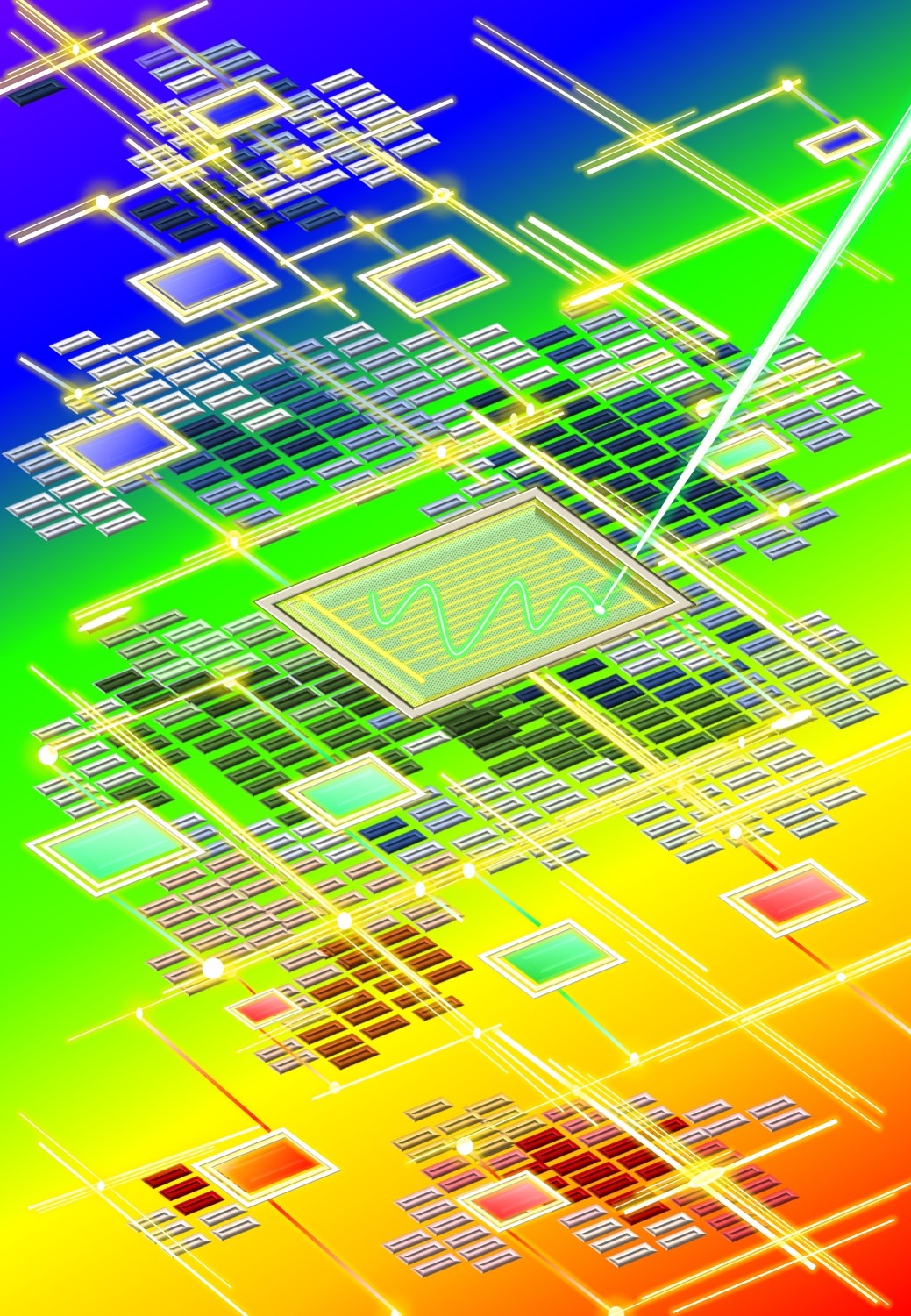 Organische lichtemittierende Transistoren, eine Art Symbiose aus organischem Transistor (OTFT) und organischer Leuchtdiode (OLED), sind Schlüsselkomponenten für verschiedene optoelektronische Anwendungen im Displaybereich. Die Integration mehrerer verschiedener Funktionalitäten in ein und dasselbe Bauteil stellt eine große Herausforderung dar und die nächste Generation von hochauflösenden Bildschirmen erfordert darüber hinaus eine Verdichtung visueller Information in einzelne und ultrakleine Punkte.
Organische lichtemittierende Transistoren, eine Art Symbiose aus organischem Transistor (OTFT) und organischer Leuchtdiode (OLED), sind Schlüsselkomponenten für verschiedene optoelektronische Anwendungen im Displaybereich. Die Integration mehrerer verschiedener Funktionalitäten in ein und dasselbe Bauteil stellt eine große Herausforderung dar und die nächste Generation von hochauflösenden Bildschirmen erfordert darüber hinaus eine Verdichtung visueller Information in einzelne und ultrakleine Punkte.
Ein interdisziplinärer Verbund von Chemikern und Physikern in Berlin, Strasbourg und London hat nun einen großen Schritt vorwärts unternommen und erstmals einen lichtemittierenden organischen Transistor entwickelt, der durch Licht kontrolliert werden kann. Dazu haben sie ein speziell maßgeschneidertes Molekül als kleinstmöglichen optischen Schalter mit einem lumineszierenden Polymer kombiniert. Im so hergestellten Bauelement ändert der molekulare Schalter unter Einwirkung von ultraviolettem und sichtbarem Licht reversibel seine elektronischen Eigenschaften und das Leuchten wird somit gesteuert. Da es für Displayanwendungen nicht ausreicht, lediglich eine Farbe abzustrahlen, haben die Forscher die Schaltermoleküle und Polymere variiert und so auf einander abgestimmt, dass die entsprechenden Transistoren in allen drei Primärfarben, das heißt rot, grün und blau, leuchten und somit das gesamte Farbspektrum abdecken können.
Das enorme Anwendungspotenzial des Ansatzes konnte eindrucksvoll demonstriert werden, indem beliebige Muster, wie beispielsweise Buchstaben, mit einem Laser wiederholt geschrieben und gelöscht wurden und zwar mit extrem hoher Geschwindigkeit und räumlicher Auflösung von wenigen Mikrosekunden und Mikrometern – jenseits der derzeitig besten Retina-Displays. Als Resultat ist es somit prinzipiell möglich, die schnellen und hochauflösenden „smarten“ Displays bequem anzusteuern und beliebig zu konfigurieren.
mehr...
18.01.2019Postdocs für Exzellenzcluster "Matters of Activity. Image Space Material" gesucht
 Postdocs für Exzellenzcluster "Matters of Activity" zu "Molecular Filtering" und "Sensing Knife" gesucht - Bewerbungen noch bis zum 22. Januar!
Postdocs für Exzellenzcluster "Matters of Activity" zu "Molecular Filtering" und "Sensing Knife" gesucht - Bewerbungen noch bis zum 22. Januar!
more...
10.12.2018Perspektiven schaltbarer Systeme und Materialien für die intelligente Elektronik
 Das von der EU geförderte Integrated Training Network „iSwitch“ bringt seit 2015 einige der führenden europäischen Forschungsgruppen an der Schnittstelle von Chemie und Physik zusammen, mit dem Ziel die nächste Generation von Forscherinnen und Forschern im aufstrebenden Forschungsfeld der intelligenten Elektronik auszubilden und zu fördern. Das abschließende Symposium des Netzwerks, das von Prof. Stefan Hecht und Prof. Norbert Koch, beide Mitglieder von IRIS Adlershof, organisiert wird, wird die wichtigsten Forschungsergebnisse und Errungenschaften aufzeigen und die Perspektiven dieses zukunftsweisenden Forschungsfelds diskutieren.
Das von der EU geförderte Integrated Training Network „iSwitch“ bringt seit 2015 einige der führenden europäischen Forschungsgruppen an der Schnittstelle von Chemie und Physik zusammen, mit dem Ziel die nächste Generation von Forscherinnen und Forschern im aufstrebenden Forschungsfeld der intelligenten Elektronik auszubilden und zu fördern. Das abschließende Symposium des Netzwerks, das von Prof. Stefan Hecht und Prof. Norbert Koch, beide Mitglieder von IRIS Adlershof, organisiert wird, wird die wichtigsten Forschungsergebnisse und Errungenschaften aufzeigen und die Perspektiven dieses zukunftsweisenden Forschungsfelds diskutieren.
05.11.2018Distinguished Professor Rich Spontak zu Gast am IRIS Adlershof
 Distinguished Professor Rich Spontak vom Department of Chemical and Biomolecular Engineering der North Carolina State University besucht IRIS Adlershof vom 05. November bis 02. Dezember dieses Jahres als Gastprofessor im Schwerpunktprojekt Experimentalsysteme des Exzellenzclusters Bild Wissen Gestaltung. Professor Spontaks Forschungsschwerpunkte liegen auf den Gebieten Polymermorphologie und Phasenstabilität, multifunktionelle und nanostrukturierte Polymere, Mischungen und Netzwerke sowie der Anwendung von Mikroskopietechniken in der Polymerwissenschaft und -technik. Am 19. November wird er im Rahmen eines IRIS-Seminars zum Thema "Designing selective membranes from the Ground-up: A Polymer Scientists Playground" vortragen.
Distinguished Professor Rich Spontak vom Department of Chemical and Biomolecular Engineering der North Carolina State University besucht IRIS Adlershof vom 05. November bis 02. Dezember dieses Jahres als Gastprofessor im Schwerpunktprojekt Experimentalsysteme des Exzellenzclusters Bild Wissen Gestaltung. Professor Spontaks Forschungsschwerpunkte liegen auf den Gebieten Polymermorphologie und Phasenstabilität, multifunktionelle und nanostrukturierte Polymere, Mischungen und Netzwerke sowie der Anwendung von Mikroskopietechniken in der Polymerwissenschaft und -technik. Am 19. November wird er im Rahmen eines IRIS-Seminars zum Thema "Designing selective membranes from the Ground-up: A Polymer Scientists Playground" vortragen.
08.10.2018Neue BMBF Nachwuchsgruppe „Diamant-Nanophotonik für On-Chip Quantentechnologie“ im Rahmen der BMBF Quantum Futur Förderung
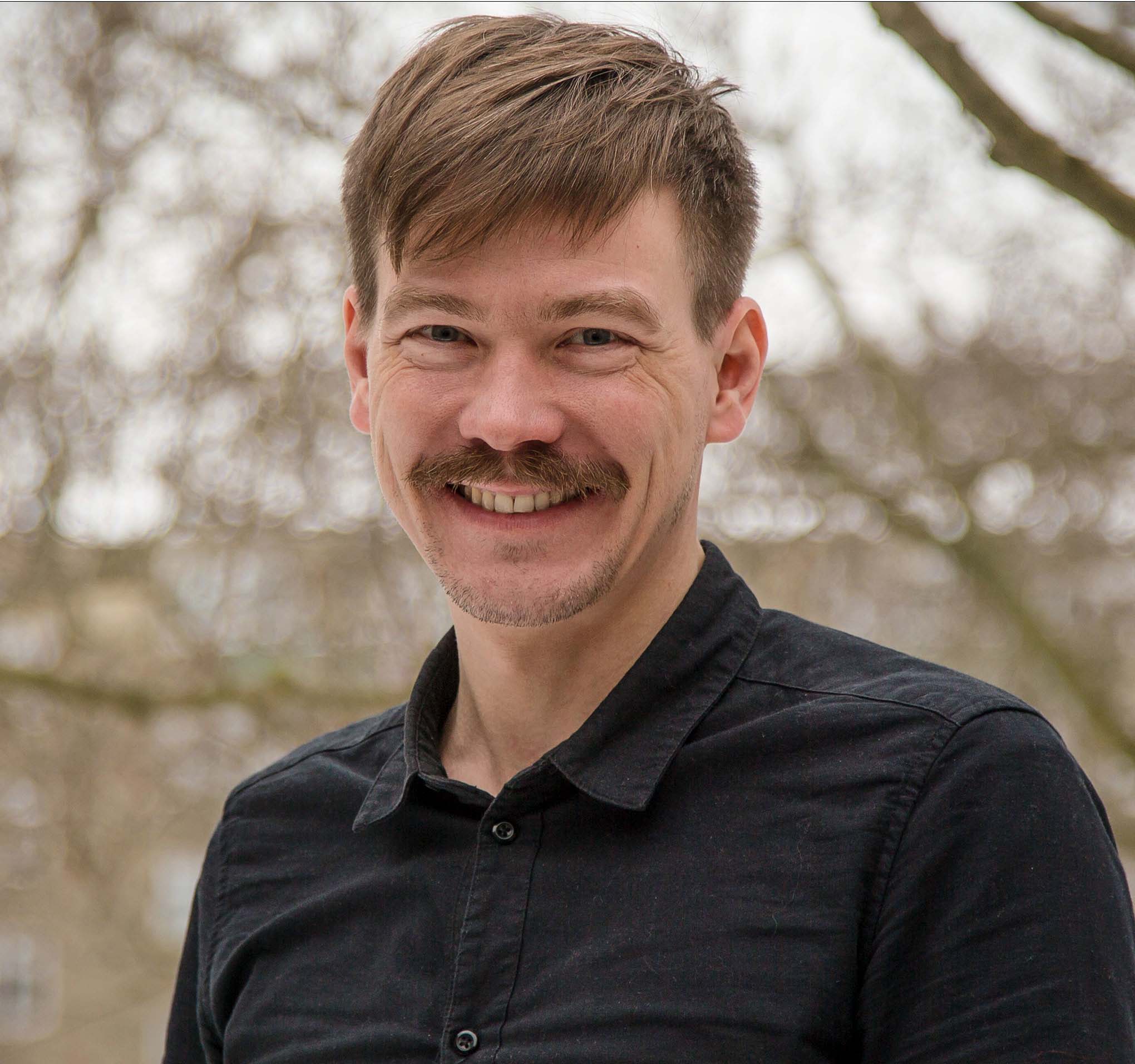 Dr. Tim Schröder etabliert ab Oktober am Institut für Physik der Humboldt-Universität zu Berlin eine Nachwuchsgruppe zum Thema „Spin-Defektzentren in Nanophotonischen Schaltkreisen für die Quanteninformationsverarbeitung.“ Die Gruppe wird durch das 5-jährige BMBF Projekt „Diamant-Nanophotonik für On-Chip Quantentechnologie“ im Rahmen des Programms Quantum Futur gefördert. Vor seiner Rückkehr, und nach seiner Promotion an der Humboldt-Universität zu Berlin in 2012, verbrachte Dr. Schröder vier Jahre als Wissenschaftler am Massachusetts Institute of Technology (MIT, USA) und zwei Jahre als Assistenzprofessor am Niels Bohr Institute (NBI, Dänemark) wo er an hybriden integrierten photonischen Systemen zur Kontrolle von einzelnen Spin-basierten Quantenspeichern in Diamant und Galliumarsenid geforscht hat. Seine Forschung wurde mit dem Carl-Ramsauer-Preis ausgezeichnet und vom Feodor-Lynen Stipendium der Alexander von Humboldt-Stiftung als auch vom Marie-Skłodowska-Curie-Fellowship der Europäischen Union unterstützt. An der Humboldt-Universität wird Dr. Schröder seine Arbeit an diesen Themen fortsetzen und dabei auch auf Ressourcen der IRIS Adlershof zurückgreifen. Zum Beispiel ist eine enge inhaltlich Zusammenarbeit mit der Nano-Optik Arbeitsgruppe von IRIS-Mitglied Prof. Oliver Benson beabsichtigt.
Dr. Tim Schröder etabliert ab Oktober am Institut für Physik der Humboldt-Universität zu Berlin eine Nachwuchsgruppe zum Thema „Spin-Defektzentren in Nanophotonischen Schaltkreisen für die Quanteninformationsverarbeitung.“ Die Gruppe wird durch das 5-jährige BMBF Projekt „Diamant-Nanophotonik für On-Chip Quantentechnologie“ im Rahmen des Programms Quantum Futur gefördert. Vor seiner Rückkehr, und nach seiner Promotion an der Humboldt-Universität zu Berlin in 2012, verbrachte Dr. Schröder vier Jahre als Wissenschaftler am Massachusetts Institute of Technology (MIT, USA) und zwei Jahre als Assistenzprofessor am Niels Bohr Institute (NBI, Dänemark) wo er an hybriden integrierten photonischen Systemen zur Kontrolle von einzelnen Spin-basierten Quantenspeichern in Diamant und Galliumarsenid geforscht hat. Seine Forschung wurde mit dem Carl-Ramsauer-Preis ausgezeichnet und vom Feodor-Lynen Stipendium der Alexander von Humboldt-Stiftung als auch vom Marie-Skłodowska-Curie-Fellowship der Europäischen Union unterstützt. An der Humboldt-Universität wird Dr. Schröder seine Arbeit an diesen Themen fortsetzen und dabei auch auf Ressourcen der IRIS Adlershof zurückgreifen. Zum Beispiel ist eine enge inhaltlich Zusammenarbeit mit der Nano-Optik Arbeitsgruppe von IRIS-Mitglied Prof. Oliver Benson beabsichtigt.
Das übergreifende wissenschaftliche Ziel des Projekts „Diamant-Nanophotonik für On-Chip Quantentechnologie“ ist die hybride Zusammenführung von Defektzentren in Diamant und integrierten nanophotonischen Strukturen in kompakte on-chip Module und die Demonstration von Verschränkungsoperationen zwischen diesen—ein entscheidender Schritt in Richtung Quanteninformationsverarbeitung basierend auf optisch aktiven Festkörpermaterialien. Defektzentren die mit hohen Raten skalierbar verschränkt werden, bilden die Grundlage zu Quantennetzwerken, die für entfernte Quantenkommunikation oder komplexes Quantencomputing genutzt werden können. IRIS Adlershof wüncht Herrn Schröder für das Erreichen dieser Ziele viel Erfolg und freut sich auf eine fruchtbare Zusammenarbeit.
02.10.2018Präsident der Universidade de São Paulo zu Besuch in Adlershof
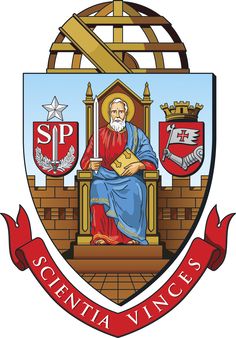 Der Präsident der Universidade de São Paulo (USP), Herr Prof. Vahan Agopyan, sowie der ihn begleitende Vizepräsident für International Beziehungen der USP, Herr Prof. Raul Machado Neto, haben im Rahmen eines mehrtägigen Berlin-Aufenthaltes auch den naturwissenschaftlichen Campus der Humboldt-Universität zu Berlin (HU) besucht, um sich über die hiesigen Studienbedingungen und Forschungsmöglichkeiten zu informieren.
Der Präsident der Universidade de São Paulo (USP), Herr Prof. Vahan Agopyan, sowie der ihn begleitende Vizepräsident für International Beziehungen der USP, Herr Prof. Raul Machado Neto, haben im Rahmen eines mehrtägigen Berlin-Aufenthaltes auch den naturwissenschaftlichen Campus der Humboldt-Universität zu Berlin (HU) besucht, um sich über die hiesigen Studienbedingungen und Forschungsmöglichkeiten zu informieren.
Der Prodekan für Forschung der Mathematisch-Naturwissenschaftlichen Fakultät der HU und Mitglied von IRIS Adlershof, Prof. Jan Plefka sowie IRIS-Geschäftsführer Dr. Nikolai Puhlmann gaben einen Überblick über den naturwissenschaftlichen Campus der HU und über das Konzept und die Entwicklung von IRIS Adlershof. Dabei wurde auch detailliert auf den im Entstehen begriffenen IRIS-Forschungsbau eingegangen. Prof. Ulf Leser und Prof. Henning Meyerhenke vom Institut für Informatik informierten die Gäste über aktuelle Forschungsvorhaben ihres Instituts.
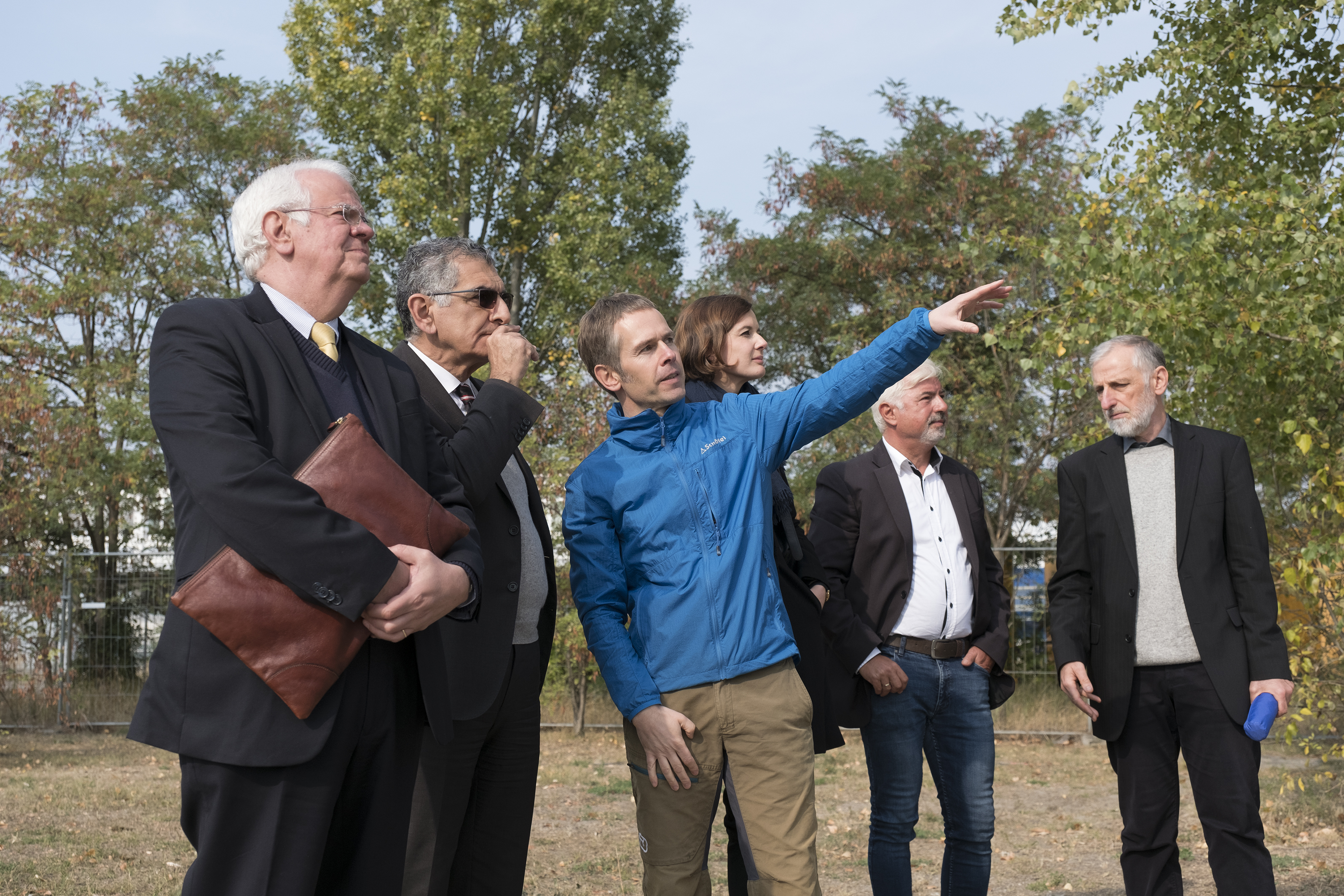 Das von HU und USP gemeinsam betriebene Internationale Graduiertenkolleg IGRT 1740 „Dynamical Phenomena in Complex Networks: Fundamentals and Applications“ wurde den Gästen vom Sprecher des Graduiertenkollegs, Herrn Prof. Jürgen Kurths (Potsdam-Institut für Klimafolgenforschung und HU Berlin), detailliert vorgestellt. Zum Abschluss besichtigten die Gäste den Prototypen eines Cherenkov Teleskops, der im Rahmen des internationalen Großprojekts „Cherenkov Telescope Array (CTA)“, an dem sowohl die HU als auch die USP beteiligt sind, am Standort Adlershof errichtet wurde. Prof. Thomas Lohse vom Institut für Physik der HU erläuterte die Funktionsweise des Teleskops und die wissenschaftlichen Schwerpunkte des CTA-Projekts.
Das von HU und USP gemeinsam betriebene Internationale Graduiertenkolleg IGRT 1740 „Dynamical Phenomena in Complex Networks: Fundamentals and Applications“ wurde den Gästen vom Sprecher des Graduiertenkollegs, Herrn Prof. Jürgen Kurths (Potsdam-Institut für Klimafolgenforschung und HU Berlin), detailliert vorgestellt. Zum Abschluss besichtigten die Gäste den Prototypen eines Cherenkov Teleskops, der im Rahmen des internationalen Großprojekts „Cherenkov Telescope Array (CTA)“, an dem sowohl die HU als auch die USP beteiligt sind, am Standort Adlershof errichtet wurde. Prof. Thomas Lohse vom Institut für Physik der HU erläuterte die Funktionsweise des Teleskops und die wissenschaftlichen Schwerpunkte des CTA-Projekts.
Die Gäste aus São Paulo zeigten sich sehr interessiert und beeindruckt von den an der HU erzielten Forschungsergebnissen und lobten die vielfältigen Möglichkeiten, die der Wissenschaftsstandort Adlershof der naturwissenschaftlichen Spitzenforschung und der Ausbildung des internationalen wissenschaftlichen Nachwuchses bietet.
Die Universidade de São Paulo (USP) ist einer von drei strategischen Profilpartnern der Humboldt-Universität und wird in internationalen Hochschulrankings regelmäßig als eine der Spitzenuniversitäten des südamerikanischen Subkontinents geführt.
01.10.2018BMBF fördert ein Verbundprojekt zur schnellen und abhörsicheren Kommunikation
Die Digitalisierung durchdringt unsere gesamte Gesellschaft – von Industrie 4.0 bis hin zu Gesundheitsanwendungen. Dabei gewinnen Datensicherheit und sichere Kommunikation an Bedeutung. Die Quantenkommunikation ist hierfür ein vielversprechender Ansatz: Sie nutzt Quantenzustände als Informationsträger, die aufgrund fundamentaler physikalischer Gesetze weder kopiert noch unbemerkt mitgelesen werden können. Diesen Aufbruch in die Quantentechnologie unterstützt das Bundesministerium für Bildung und Forschung (BMBF), indem es nun das Verbundprojekt Quanten-Link-Erweiterung (Q.Link.X) in den nächsten drei Jahren mit insgesamt 14,8 Millionen Euro fördert. Die Arbeitsgruppen von IRIS Adlershof-Mitglied Prof. Oliver Benson und IRIS Adlershof-Nachwuchsgruppenleiter Dr. Sven Ramelow sind beteiligt.
Das Ziel des Verbundprojektes sind physikalisch abhörsichere Glasfaser-Netzwerke. Dieser Paradigmenwechsel in der Nachrichtenverschlüsselung weg von konventionellen Verfahren und hin zur Quantentechnologie stößt jedoch auf eine technologische Herausforderung: Bei der Übertragung der Quanteninformation mit Lichtteilchen (Photonen) kommt es zu unvermeidbaren Leitungsverlusten, wodurch die Übertragungsstrecken bisher auf unter 100 Kilometer begrenzt werden. Mit Quantenrepeatern soll diese Grenze ohne Sicherheits-einschränkungen überwunden werden. Repeater (englisch: Wiederholstationen) sind in der Kommunikationstechnik Signalverstärker und -aufbereiter. Anders als diese Repeater muss der Quantenrepeater Signale verschiedener Teilstrecken aber mit Hilfe von Quantenprozessen verknüpfen, um somit größere Distanzen zu überbrücken.
Das Verbundprojekt Quanten-Link-Erweiterung (Q.Link.X) soll nun die Entwicklung von solchen Quantenrepeatern vorantreiben, die Quantenspeicher und Quantenkoppler einsetzen. Diesen Aufbruch in die Quantentechnologie fördert das Bundesministerium für Bildung und Forschung (BMBF) in den nächsten drei Jahren mit insgesamt 14,8 Millionen Euro. Mit Quantenpunkten, Diamant-Farbzentren und einer Kombination atomarer und ionischer Systeme als drei verschiedenen technischen Plattformen sollen Übertragungsstrecken zwischen zehn und 100 Kilometern realisiert werden und die Vorteile der jeweiligen Systeme einander gegenübergestellt werden. Die Arbeiten sollen die Technologie vorbereiten, um in späteren Phasen auch viel längere Strecken zu überbrücken. In Q.Link.X werden erstmals nicht nur einzelne Komponenten eines Quantenrepeaters, sondern komplette Kommunikationsstrecken erforscht und entwickelt.
Im Q.Link.X-Verbund haben sich 24 Partner aus Forschungseinrichtungen von Universitäten bis zu Industrielabors zusammengefunden, um die Schlüsseltechnologie der Quantenrepeater zu erforschen. Die enge Einbindung industrieller Partner und Berater soll die Realisierbarkeit aus industrieller und ingenieurstechnischer Sicht von vornherein erleichtern. Die Ergebnisverwertung in Deutschland soll durch Patente und Ausgründungen des Konsortiums gesichert werden.
24 Partner treiben gemeinsam Q.Link.X voran
Folgende Partner sind an dem Projekt beteiligt: Rheinische Friedrich-Wilhelms-Universität Bonn, Technische Universität München, Technische Universität Dortmund, HighFinesse Laser and Electronic Systems GmbH, Fraunhofer Heinrich-Hertz-Institut Berlin, Technische Universität Berlin, Universität Stuttgart, Universität Paderborn, Universität des Saarlandes, Freie Universität Berlin, Leibniz-Institut für Festkörper- und Werkstoffforschung Dresden, Ruhr-Universität Bochum, Swabian Instruments GmbH, Leibniz Universität Hannover, Max-Planck-Institut für Quantenoptik (Garching), Julius-Maximilians-Universität Würzburg, Universität Bremen, Heinrich-Heine-Universität Düsseldorf, Universität Ulm, Humboldt-Universität zu Berlin, Universität Kassel, Johannes Gutenberg-Universität Mainz, Karlsruher Institut für Technologie und Ludwig-Maximilians-Universität München.
mehr...
28.09.2018Herausragende Berliner Wissenschaft: Sieben Exzellencluster für den Berliner Universitätsverbund
Sieben Exzellenzcluster in der Exzellenzstrategie des Bundes und der Länder für den Berliner Universitätsverbund bewilligt. Mitglieder von IRIS Adlershof sind an folgenden Clustern als PIs beteiligt:
Matters of Activity: Image Space Material - Eine neue Kultur des Materialen (Prof. Jürgen P. Rabe, Prof. Matthias Staudacher)
MATH+ - Wie Berliner Mathematik die Zukunft gestaltet (Prof. Michael Hintermüller)
Unifying Systems in Catalysis (UniSysCat) - Katalyse-Netzwerke verstehen und nutzen lernen (Prof. Stefan Hecht, Prof. Christian Limberg)
Wir gratulieren den beteiligten Forscherinnen und Forschern herzlich und freuen uns auf eine gute Zusammenarbeit !
28.09.2018Falling Walls Lab mit zwei IRIS-Nachwuchsforscher_innen
Great minds, 3 minutes, 1 day:
Am 28. September 2018 werden 18 Nachwuchswissenschaftler_innen und Young Professionals ihre Forschungsprojekte, Ideen und Initiativen in jeweils 3 Minuten im Falling Walls Lab Adlershof vorstellen. Die Siegerin bzw. der Sieger dieses Vorentscheids erhält eine Einladung zum Finale nach Berlin am 8. November und die Möglichkeit der Teilnahme an der Falling Walls Conference. Zwei Nachwuchswissenschaftler_innen von IRIS Adlershof gehen neben 16 weiteren Teinehmern an den Start: Inna Kviatkovsky aus der Arbeitsgruppe von Sven Ramelow, die bereits den IRIS-Roots-Day gewann, sowie Wadim Wormsbecher aus der Arbeitsgruppe von IRIS-Mitglied Jan Plefka.
Die Veranstaltung findet im BAM (Richard-Willstätter-Straße 15, 12489 Berlin) am Freitag, 28. September, um 11:00 - 14:00 Uhr statt. Der Eintritt ist frei.
Wir freuen uns auf eine spannende und abwechslungsreicher Veranstaltung und drücken unseren Nachwuchswissenschaftler_innen die Daumen.
21.09.2018Elternzeitvertretung für IRIS-Geschäftsstelle gesucht
Die IRIS-Geschäftsstelle sucht eine Elternzeitvertretung, vorauss. befristet bis 30.11.2019.
mehr...
10.09.2018Dr. Olaf Hohm kommt mit einem ERC-Grant an die HU
Der Mathematische Physiker Dr. Olaf Hohm, der für sein Forschungsprojekt "Duality Symmetries, Higher Derivatives and their Applications in Cosmology" einen ERC-Consolidator Grant eingeworben hat, ist an das Institut für Physik der Humboldt-Universität zu Berlin gewechselt. Zuvor war er im Rahmen eins Heisenberg-Stipendiums der DFG am MIT in Boston und an der Stony Brook University in New York. Sein aktuelles Forschungsinteresse gilt der Entwicklung eines stringtheoretischen Ansatzes, um Fragen über den Anfang des Universums rein rechnerisch beantworten zu können. Hierbei wird er eng mit den Gruppen der IRIS-Mitglieder Prof. Jan Plefka und Prof. Matthias Staudacher zusammenarbeiten. Dr. Hohm hält einen Vortrag am 26.10.2018 um 13:15 Uhr im IRIS-Bau Raum 2'07.
IRIS Adlershof freut sich auf eine fruchtbare Zusammenarbeit!
05.09.2018Dr. David Bléger wechselt zu CREAVIS, der strategischen Innovationseinheit von EVONIK
 IRIS-Nachwuchsgruppenleiter Dr. David Bléger wechselt zu CREAVIS, der strategischen Innovationseinheit von EVONIK. Nach Studium und Promotion in Frankreich begann er 2009 als PostDoc bei IRIS-Mitglied Stefan Hecht und startete 2013 eine eigene Arbeitsgruppe. Er ist Experte im Design und der Herstellung von Molekülen, Polymeren und verschiedenen organischen Materialien, welche auf chemische und physikalische Stimuli reagieren.
IRIS-Nachwuchsgruppenleiter Dr. David Bléger wechselt zu CREAVIS, der strategischen Innovationseinheit von EVONIK. Nach Studium und Promotion in Frankreich begann er 2009 als PostDoc bei IRIS-Mitglied Stefan Hecht und startete 2013 eine eigene Arbeitsgruppe. Er ist Experte im Design und der Herstellung von Molekülen, Polymeren und verschiedenen organischen Materialien, welche auf chemische und physikalische Stimuli reagieren.
IRIS Adlershof wünscht weiterhin viel Erfolg!
31.08.2018Egon Steeg hat seine Dissertation erfolgreich verteidigt
IRIS-Nachwuchswissenschaftler Egon Steeg hat seine Dissertation zum Thema "Investigations on growth and structure of silver and silver halide nanostructures formed on amphiphilic dye aggregates" erfolgreich verteidigt. Die Arbeit wurde durch den SFB 951 "Hybrid Inorganic/Organic Systems for Opto-Electronics (HIOS)" gefördert und von PD Dr. Stefan Kirstein in der Arbeitsgruppe von IRIS-Direktor Prof. Jürgen P. Rabe betreut.
IRIS Adlershof gratuliert herzlich!
22.08.2018Solarzellen und organische LEDs drucken - HZB & HU kooperieren
Humboldt-Universität zu Berlin und Helmholtz-Zentrum Berlin gründen gemeinsames Labor und Forschergruppe „Generative Fertigungsprozesse für Hybride Bauelemente“.
Solarzellen, LEDs und Detektoren aus organischen und hybriden Halbleitern lassen sich einfach drucken und dabei sogar mit winzigen Nanostrukturen versehen, die ihre Funktionen verbessern. Die Entwicklung von preiswerten Druckverfahren für elektronische und optoelektronische Bauteile steht im Mittelpunkt der neuen gemeinsamen Forschergruppe und des gemeinsamen Labors des Helmholtz-Zentrums Berlin (HZB) und der Humboldt-Universität zu Berlin (HU).
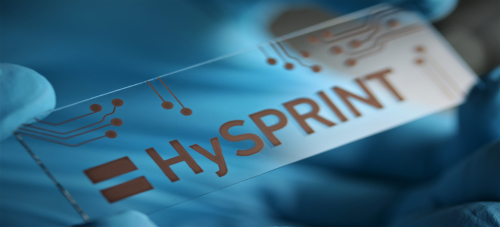 |
|
|
Das aus einer Kupferlösung aufgedruckte HySPRINT-Logo (Helmholtz Innovation Lab) symbolisiert, wie sich dünnste Materialschichten kostengünstig herstellen lassen. Mögliche Anwendungen sind Solarzellen, organische LEDs und Transitoren.Herstellung und Foto: Humboldt-Universität Berlin/List-Kratochvil |
In der neuen Forschergruppe kooperieren die HU-Arbeitsgruppe „Hybride Devices“ unter der Leitung von Prof. Dr. Emil List-Kratochvil, die HZB-Nachwuchsgruppe von Dr. Eva Unger, das Helmholtz Innovation Lab HySPRINT und das von Prof. Dr. Rutger Schlatmann geleitete Kompetenzzentrum Photovoltaik Berlin (PVcomB) miteinander. Die Partner bauen ein Joint Lab an der Humboldt-Universität zu Berlin auf, das den Forschenden die Anschaffung und Nutzung komplementärer Laborinfrastrukturen für verschiedene Beschichtungsverfahren ermöglicht.
Prof. Emil List-Kratochvil ist Leiter der HU-Arbeitsgruppe „Hybrid Devices“ am IRIS Adlershof und beschäftigt sich seit 15 Jahren mit der Entwicklung von elektronischen und optoelektronischen Hybridbauteilen, ressourceneffizienten Abscheidungstechniken (Inkjetdruck) und in-situ Nanostrukturierungs- und Syntheseverfahren. Diese Expertise ergänzt die Zielsetzungen der HZB-Nachwuchsgruppe um Dr. Eva Unger. Sie will lösungsbasierte Herstellungsverfahren entwickeln, um Perowskit-Halbleiterschichten für Solarzellen auf größeren Flächen abzuscheiden. „Die neue Forschergruppe mit Herrn List-Kratochvil ist für uns ein großer Gewinn. Durch seine Erfahrungen in gedruckten elektronischen Bauteilen ist er für uns ein idealer Kooperationspartner“, sagt Unger.
Ihrem Ziel, im Rahmen des Helmholtz Innovation Lab HySPRINT großflächige hybride Tandem-Solarmodule zu entwickeln, ist die Forscherin mit ihrem Team in den letzten Monaten schon näher gekommen. Nun ist das Upscaling der Prozesse der nächste notwendige Schritt, um die Marktreife der neuartigen Solarzellen voranzutreiben. Für die Entwicklung industriell relevanter Herstellungsverfahren ist das Kompetenzzentrum für Photovoltaik (PVcomB) der geeignete Partner. Die gemeinsame Forschergruppe strebt den Aufbau einer Pilotlinie an, um Prototypen von hybriden Bauelementen zu entwickeln.
- Helmholtz Innovation Lab HySPRINT
- HU-Arbeitsgruppe „Hybride Devices“ unter der Leitung von Prof. Dr. Emil List-Kratochvil
- HZB-Nachwuchsgruppe „Hybride Materialien Formierung und Skalierung“ unter der Leitung von Dr. Eva Unger
- Kompetenzzentrum Photovoltaik Berlin unter Leitung von Prof. Dr. Rutger Schlatmann
21.08.2018Dr. Michael Borinsky's Dissertation erscheint in der Buchreihe Springer Theses
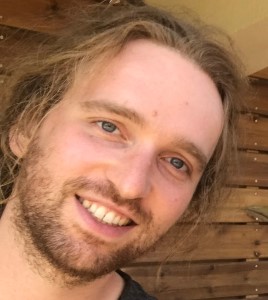 Dr. Michael N. Borinsky's Dissertation wird von Springer Theses, einer Buchserie zur Anerkennung herausragender Forschungsleistungen während der Promotion, zur Veröffentlichung ausgewählt und mit einem Forschungspreis von 500€ ausgezeichnet. Herr Borinsky war IRIS-Nachwuchswissenschaftler und wurde von IRIS-Mitglied Prof. Dirk Kreimer betreut.
Dr. Michael N. Borinsky's Dissertation wird von Springer Theses, einer Buchserie zur Anerkennung herausragender Forschungsleistungen während der Promotion, zur Veröffentlichung ausgewählt und mit einem Forschungspreis von 500€ ausgezeichnet. Herr Borinsky war IRIS-Nachwuchswissenschaftler und wurde von IRIS-Mitglied Prof. Dirk Kreimer betreut.
"Inhalt dieser Arbeit ist eine Erweiterung der Hopfalgebrastruktur der Feynmangraphen und Renormierung von Connes und Kreimer. Zusätzlich wird eine Struktur auf faktoriell wachsenden Potenzreihen eingeführt, die deren asymptotisches Wachstum beschreibt und die kompatibel mit der Hopfalgebrastruktur ist. Die Hopfalgebrastruktur auf Graphen erlaubt die explizite Enumeration von Graphen mit Einschränkungen in Bezug auf die erlaubten Untergraphen. [...] [Teile dieser] Strukturen sind motiviert von null-dimensionaler Quantenfeldtheorie and werden zur Analyse ebendieser benutzt. Als reine Anwendung der Hopfalgebrastruktur wird eine hopfalgebraische Formulierung der Legendretransformation in Quantenfeldtheorien formuliert."1
IRIS Adlershof gratuliert herzlich und wünscht Herrn Borinsky viel Erfolg in seiner weiteren Arbeit.
Dr. Michael Norbert BorinskyGraphs in Perturbation Theory: Algebraic Structure and Asymptotics
Springer Theses, Springer (announced)
Doktorarbeit "Graphs in perturbation theory: Algebraic structure and asymptotics"
DOI: 10.18452/19201, arXiv: arXiv:1807.02046 [hep-th], 1edoc-HU: 18452/19952
13.08.2018Lichtgesteuerte Moleküle: Forscher öffnen neue Wege im Recycling
Entdeckung schafft Grundlage für die Wiederverwertung bisher nicht recycelbarer Kunststoffe.
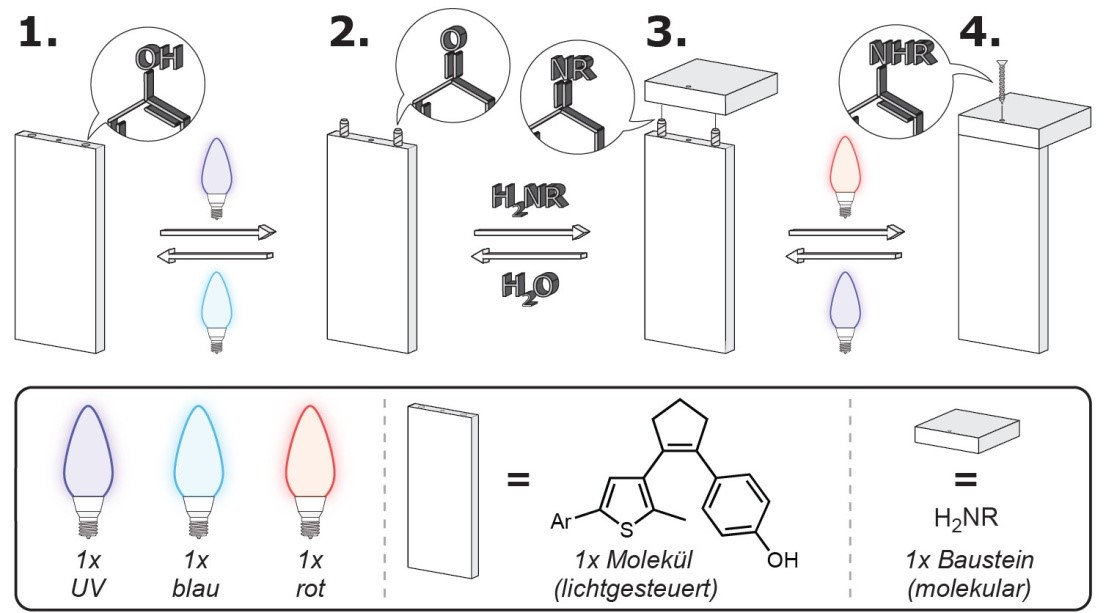
Robuste Kunststoffe bestehen aus molekularen Bausteinen, die durch widerstandsfähige chemische Verbindungen zusammengehalten werden. Da diese sich kaum wieder voneinander lösen lassen, ist das Recycling solcher Stoffe quasi unmöglich. Jetzt entwickelte ein Forscherteam der Humboldt-Universität zu Berlin (HU) ein Molekül, das mit Hilfe von verschiedenfarbigem Licht gezielt chemische Reaktionen antreiben oder umkehren kann. Das Molekül ist dadurch in der Lage, bestimmte Verknüpfungen auf molekularer Ebene je nach Bedarf entweder herzustellen oder aufzubrechen, selbst wenn diese besonders stark sind. Die Entdeckung öffnet neue Wege im Recycling und in der Entwicklung nachhaltiger Materialien. Die lichtgetriebene Wiedergewinnung von individuellen Molekülbausteinen hat großes Potential die Wiederverwertung bisher nicht recycelbarer Kunststoffe zu ermöglichen, ohne dabei einen Kompromiss in Farbe, Form oder Qualität eingehen zu müssen.
„Die Funktionsweise unseres Systems ist dem von Selbstbau-Möbeln sehr ähnlich“, erläutern die beiden Erstautoren Michael Kathan und Fabian Eisenreich. „Wir können jetzt bestimmte Strukturen auf molekularer Ebene ohne Verschleiß immer wieder auf- bzw. abbauen. Als Werkzeug benutzen wir jedoch nicht Hammer und Schraubenzieher, sondern rote und blaue Leuchtdioden mit denen wir unsere Moleküle steuern können.“
Die Forschungsergebnisse wurden jetzt in der Fachzeitschrift Nature Chemistry veröffentlicht.
Weitere Informationen
Veröffentlichung
“Light-driven molecular trap enables bidirectional manipulation of dynamic covalent systems”
von: Michael Kathan, Fabian Eisenreich, Christoph Jurissek, Andre Dallmann, Johannes Gurke und Stefan Hecht
in: Nature Chemistry (2018), DOI: 10.1038/s41557-018-0106-8
24.07.2018Professor Jan Plefka mit Freiräume-Antrag erfolgreich
 Die Humboldt-Universität eröffnet mit der Förderlinie Freiräume Zeit zur Reflexion und zur Konzentration auf einen neuen Forschungsgedanken sowie die Möglichkeit des Austauschs, Lesens und Schreibens ohne die Ablenkung durch das Alltagsgeschäft. Zu den fünf Professor_innen zählt Prof. Jan Plefka, Mitglied im IRIS Adlershof. Er wird für das Wintersemester 2018/19 durch eine Gastdozentur vertreten und die gewonnene Zeit zur intensiven und konzentrierten Erkundung der Verallgemeinerten Unitarität für Gravitationswellen nutzen:
Die Humboldt-Universität eröffnet mit der Förderlinie Freiräume Zeit zur Reflexion und zur Konzentration auf einen neuen Forschungsgedanken sowie die Möglichkeit des Austauschs, Lesens und Schreibens ohne die Ablenkung durch das Alltagsgeschäft. Zu den fünf Professor_innen zählt Prof. Jan Plefka, Mitglied im IRIS Adlershof. Er wird für das Wintersemester 2018/19 durch eine Gastdozentur vertreten und die gewonnene Zeit zur intensiven und konzentrierten Erkundung der Verallgemeinerten Unitarität für Gravitationswellen nutzen:
"Zwei zentrale Theorien der Physik sind kürzlich durch den Nachweis des Higgs-Bosons und Gravitationswellen bestätigt worden: Das Standardmodell der Teilchenphysik und die Einstein’sche Gravitationstheorie. Beide Feldtheorien lassen sich nicht exakt lösen und müssen mit Methoden der Störungstheorie, namentlich Feynman-diagrammatischen Entwicklungen, behandelt werden. Für die Quantenfeldtheorien, wie das Standardmodell, hat es in den letzten Jahren revolutionäre Innovationen, die sog. verallgemeinerte Unitarität, gegeben, die diese diagrammatische Entwicklung umgehen und stark vereinfachen können. So lassen sich hochgradig komplizierte Graviton-Streuprozesse aus nicht-gravitativen und einfacheren Streuungen generieren. Die zentrale Idee dieses Projektes ist es diese Innovation im Bereich der Quantenfeldtheorie auf das Problem der Gravitationswellen in der klassischen Relativitätstheorie zu übertragen, die bei der Kollision massereicher Körper (schwarzer Löcher oder Neutronensterne) entstehen. Weiterhin soll der algebraischen Natur dieser Dualität nachgegangen werden.", so Jan Plefka.
Wir gratulieren herzlich und wünschen viel Freude an diesem spannenden Thema!
11.07.2018Professor Jan Plefka zum Prodekan gewählt
Auf der konstituierende Sitzung des neuen Fakultätsrates nach der Gremienwahl Anfang Juli wurde Prof. Jan Plefka am 11.07.2018 zum neuen Prodekan für Forschung der Mathematisch-Naturwissenschaftlichen Fakultät gewählt. Er folgt damit Prof. Johann-Christoph Freytag, der ebenso Mitglied im IRIS Adlershof war.
Wir gratulieren herzlich!
09.07.2018Optisch gesteuerte elektronische Bauelemente auf Basis von hybriden Materialien
Erstmals wurden zwei-dimensionale Materialien mit einer photoschaltbaren molekularen Schicht dekoriert und aus den resultierenden hybriden Materialien elektronische Bauelemente hergestellt, die durch Licht kontrolliert werden können. Die Ergebnisse dieser fruchtbaren Zusammenarbeit mehrerer europäischer Forschungsgruppen wurden in Nature Communications veröffentlicht.
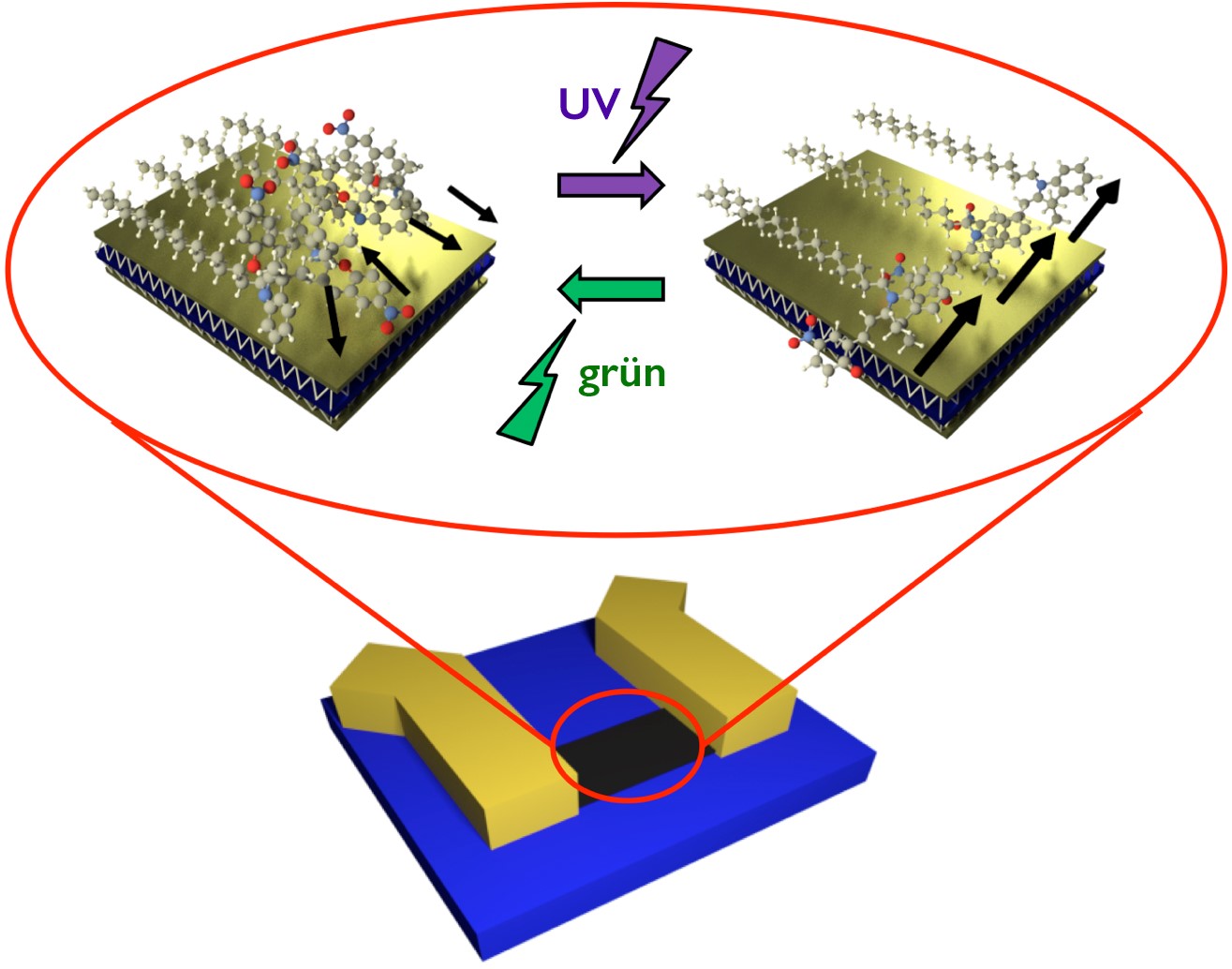 Zweidimensionale (2D) Materialien bestehen aus einer einzigen Atomlage und besitzen außergewöhnliche Eigenschaften, aufgrund derer sie ein vielversprechendes Anwendungspotential, u.a. für optoelektronische Bauelemente und Sensoren sowie Katalysatoren, besitzen. Dank ihrer hohen Oberfläche fungieren 2D-Materialien als ideale Plattform, um die Wechselwirkung mit Molekülen und molekularen Lagen zu studieren und diese in sogenannten Hybridmaterialien zur Herstellung von neuartigen Bauelementen zu nutzen.
Zweidimensionale (2D) Materialien bestehen aus einer einzigen Atomlage und besitzen außergewöhnliche Eigenschaften, aufgrund derer sie ein vielversprechendes Anwendungspotential, u.a. für optoelektronische Bauelemente und Sensoren sowie Katalysatoren, besitzen. Dank ihrer hohen Oberfläche fungieren 2D-Materialien als ideale Plattform, um die Wechselwirkung mit Molekülen und molekularen Lagen zu studieren und diese in sogenannten Hybridmaterialien zur Herstellung von neuartigen Bauelementen zu nutzen.
Chemiker der Humboldt-Universität zu Berlin haben in Zusammenarbeit mit Wissenschaftlern der Universitäten in Strasbourg, Mons und Trento nun erstmals Hybridmaterialien bestehend aus photoschaltbaren Molekülen auf 2D-Materialien beschrieben. Dabei haben sie Spiropyranmoleküle mit Ankergruppen ausgestattet und auf Graphen (eine Monolage des Graphits wie im Bleistift) bzw. Molybdändisulfid (bekannt aus dem Korrosionsschutz) abgeschieden. Beleuchtung mit ultraviolettem bzw. grünem Licht wandelt die Moleküle zwischen zwei unterschiedlichen Formen hin und her, was zu einer optischen Modulation der elektrischen Eigenschaften führt. Somit werden Lichtimpulse (Input), die eine kollektive Reaktion der molekularen Schicht auslösen, zu makroskopisch messbaren, elektrischen Effekten (Output) verstärkt.
“Mit unserem vielseitigen Ansatz, 2D-Materialien molekular maßzuschneidern, bringen wir die supramolekulare Elektronik auf ein neues Level und näher an zukünftige Anwendungen” ist Prof. Stefan Hecht, der im IRIS Adlershof an Hybridmaterialien forscht, überzeugt. Die Arbeit ist richtungsweisend für die Realisierung von multifunktionalen hybriden Bauelementen, angetrieben durch die primäre Energiequelle der Natur – das Sonnenlicht.
Weitere Informationen
Veröffentlichung
“Collective molecular switching in hybrid superlattices for light-modulated two-dimensional electronics”
von: Marco Gobbi, Sara Bonacchi, Jian X. Lian, Alexandre Vercouter, Simone Bertolazzi, Björn Zyska, Melanie Timpel, Roberta Tatti, Yoann Olivier, Stefan Hecht, Marco V. Nardi, David Beljonne, Emanuele Orgiu und Paolo Samorì
in: Nature Communications 2018, 9, 2661, DOI: 10.1038/s41467-018-04932-z
05.07.2018Ausstellung zum Kunstwettbewerb für den IRIS-Forschungsbau
Für den neu entstehenden Forschungsbau von IRIS Adlershof hatte die Senatsverwaltung für Kultur und Europa zusammen mit der Senatsverwaltung für Stadtentwicklung und Wohnen im August 2017 einen Kunstwettbewerb mit 10 eingeladenen Künstlerinnen und Künstlern ausgelobt. Im Februar 2018 hat eine Jury den Entwurf von BORGMAN | LENK mit dem Titel „Zugänge“ zur Realisierung empfohlen (siehe Meldung vom 05.02.2018). Dieser Siegerentwurf, der die Installation von goldfarbigen Bauteilen und Elementen, die im Widerspruch zu den funktionalen Abläufen und Zugängen des Hauses funktionslos gestaltet sind, kann zusammen mit den anderen im Rahmen des Kunstwettbewerbs eingereichten Entwürfen vom 09. bis 20. Juli 2018 im IRIS-Haus besichtigt werden.
02.07.2018Lichtgesteuerte Herstellung bioabbaubarer Kunststoffe
Ein Berliner Forscherteam um Prof. Stefan Hecht, Mitglied von IRIS Adlershof, hat ein neues Katalysatorsystem entwickelt, welches die Regulierung mehrerer Polymerisationsprozesse zur Herstellung von bioabbaubaren Kunststoffen durch Bestrahlung mit Licht verschiedener Farben ermöglicht. Die Ergebnisse dieser Arbeit wurden nun in Nature Catalysis veröffentlicht.
Die Eigenschaften eines Kunststoffes sind stark von Faktoren wie der Art der verknüpften Monomerbausteine sowie der Länge und Zusammensetzung der gebildeten Polymerketten abhängig. Für gewöhnlich sind diese Faktoren durch die Wahl der jeweiligen Polymerisationsbedingungen vorbestimmt. Um darüber hinaus jedoch die Bildung der Polymere fernzusteuern und somit Kunststoffe mit neuartigen und bislang nicht zugänglichen Charakteristika herzustellen, stellt die Regulation durch externe Einflüsse wie Licht ein attraktives Ziel dar. Ähnlich wie bei zahnärztlichen Füllungen dient Licht in diesem Fall dazu, den Ort und die Dauer der chemischen Reaktionen während der Polymerbildung präzise zu kontrollieren.

Eine neue Methode zur lichtregulierten Herstellung von bioabbaubaren Kunststoffen haben nun Wissenschaftler der Humboldt-Universität, der Bundesanstalt für Materialforschung Berlin sowie der Heinrich-Heine-Universität Düsseldorf entwickelt. Im Zentrum der Arbeit steht ein eigens entworfener Katalysator, welcher in der Lage ist, seine Aktivität durch Bestrahlung mit Licht unterschiedlicher Wellenlänge reversibel zu ändern. Damit konnten die Forscher die Herstellung von Polylactid – einem Kunststoff basierend auf Milchsäure – durch gezielte Lichtpulse wiederholt aus- und anschalten, wodurch die Kettenlänge der Polymerstränge eingestellt werden kann. Zudem gelang es zum ersten Mal, den Einbau zweier verschiedener Monomere in ein und das selbe Polymerrückgrat mit Licht zu regulieren.
„Mit unserem ferngesteuerten Katalysator sind wir nun erstmals in der Lage, die Bildung von Polymersträngen durch ein bestimmte Abfolge von Lichtpulsen gewissermaßen zu programmieren“ erläutern Fabian Eisenreich und Michael Kathan, die beiden Erstautoren der Studie, begeistert. Ihre wegweisende Entwicklung ist ein wichtiger Schritt in Richtung intelligenter Herstellungsprozesse von (bioabbaubaren) Kunststoffen, um die wachsenden Anforderungen zukünftiger Anwendungen, wie lichtgesteuertem 3D-Drucken und Photolithographie, erfüllen zu können.
Weitere Informationen
Veröffentlichung
“A photoswitchable catalyst system for remote-controlled (co)polymerization in situ”
von: Fabian Eisenreich, Michael Kathan, Andre Dallmann, Svante P. Ihrig, Timm Schwaar, Bernd M. Schmidt und Stefan Hecht
in: Nature Catalysis (2018), DOI: 10.1038/s41929-018-0091-8
29.06.2018Francesco Bianchi hat seine Dissertation erfolgreich verteidigt
 IRIS-Nachwuchswissenschaftler Francesco Bianchi hat seine Dissertation zum Thema "Energy Transfer in Organic-Inorganic Semiconductor Structures" im IRIS Adlershof erfolgreich verteidigt. Die Arbeit wurde durch den SFB 951 "Hybrid Inorganic/Organic Systems for Opto-Electronics (HIOS)" gefördert und von den IRIS-Mitgliedern Prof. Fritz Henneberger und Prof. Oliver Benson betreut.
IRIS-Nachwuchswissenschaftler Francesco Bianchi hat seine Dissertation zum Thema "Energy Transfer in Organic-Inorganic Semiconductor Structures" im IRIS Adlershof erfolgreich verteidigt. Die Arbeit wurde durch den SFB 951 "Hybrid Inorganic/Organic Systems for Opto-Electronics (HIOS)" gefördert und von den IRIS-Mitgliedern Prof. Fritz Henneberger und Prof. Oliver Benson betreut.
Wir gratulieren herzlich!
28.06.2018Kettenreaktion schaltet Moleküle in der Tiefe
Berliner Chemiker haben durch eine neue Methode das Anwendungspotential optischer Schaltermoleküle maßgeblich verbessert. Die Ergebnisse dieser Arbeit wurden in der Fachzeitschrift Chem veröffentlicht.
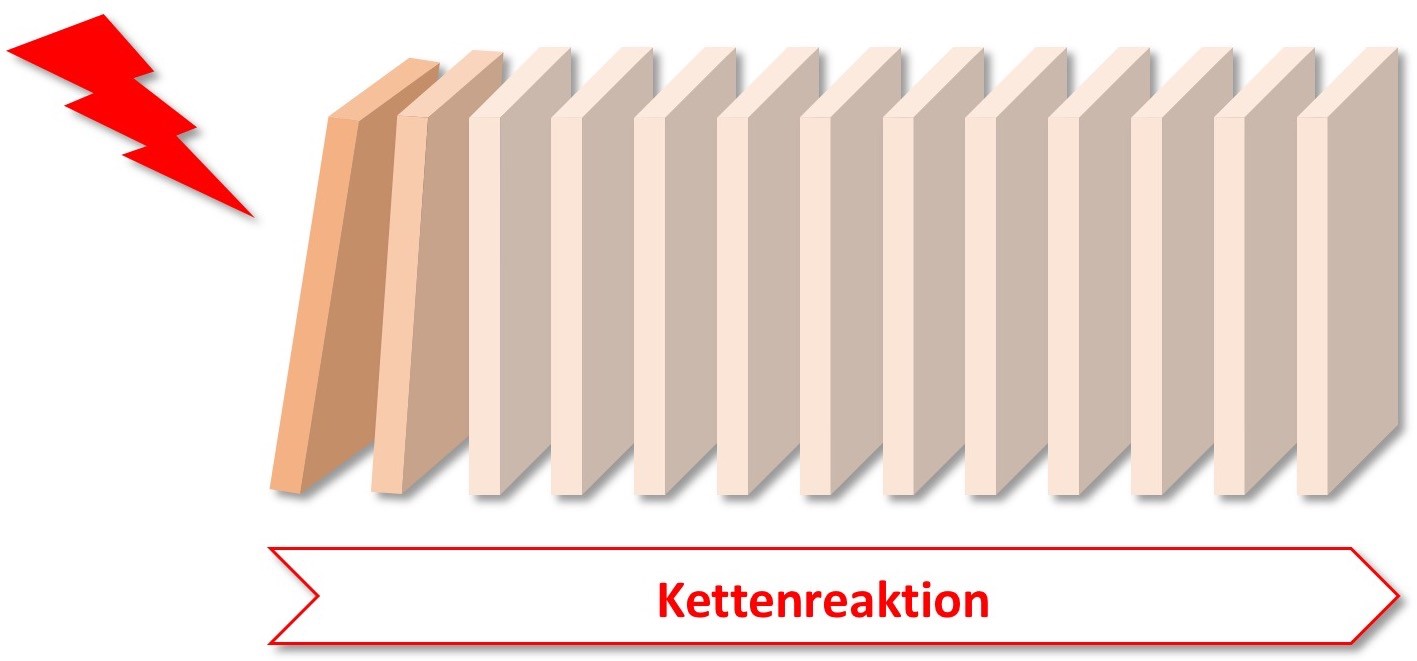 Intelligente Materialien halten zunehmend Einzug in unseren Alltag, da sie ihre Eigenschaften verschiedenen Umgebungseinflüssen, wie Temperatur und Licht, anpassen können. Man denke an selbsttönende Sonnenbrillengläser, die sich in Abhängigkeit von der Helligkeit abdunkeln oder aufhellen. Als Schlüsselkomponenten der zum Einsatz kommenden Materialien dienen molekulare Photoschalter, d.h. Moleküle, die unter Einwirkung von Licht einer bestimmten Wellenlänge ihre Eigenschaften, z.B. ihre Farbe oder ihre Fähigkeit den elektrischen Strom zu leiten, verändern. Allerdings benötigen Photoschalter in der Regel energiereiches UV-Licht und lassen sich dazu weder vollständig noch besonders effizient betreiben, da man zumeist wesentlich mehr Lichtteilchen (Quanten) benötigt als Moleküle geschaltet werden. Diese Limitationen begrenzen die Anwendungsgebiete von Photoschaltern bislang enorm, da Licht umso schlechter in Materialien eindringen kann, je energiereicher es ist.
Intelligente Materialien halten zunehmend Einzug in unseren Alltag, da sie ihre Eigenschaften verschiedenen Umgebungseinflüssen, wie Temperatur und Licht, anpassen können. Man denke an selbsttönende Sonnenbrillengläser, die sich in Abhängigkeit von der Helligkeit abdunkeln oder aufhellen. Als Schlüsselkomponenten der zum Einsatz kommenden Materialien dienen molekulare Photoschalter, d.h. Moleküle, die unter Einwirkung von Licht einer bestimmten Wellenlänge ihre Eigenschaften, z.B. ihre Farbe oder ihre Fähigkeit den elektrischen Strom zu leiten, verändern. Allerdings benötigen Photoschalter in der Regel energiereiches UV-Licht und lassen sich dazu weder vollständig noch besonders effizient betreiben, da man zumeist wesentlich mehr Lichtteilchen (Quanten) benötigt als Moleküle geschaltet werden. Diese Limitationen begrenzen die Anwendungsgebiete von Photoschaltern bislang enorm, da Licht umso schlechter in Materialien eindringen kann, je energiereicher es ist.
Chemiker der Humboldt-Universität und der Universität Potsdam haben nun eine Methode entwickelt, bei der Photoschalter mit geringen Mengen energiearmer roter Lichtquanten vollständig geschaltet werden können, und somit gleich alle beiden oben genannten Probleme gelöst. Durch Zufall kamen sie dem Phänomen auf die Spur, dass die Oxidation weniger Schaltermoleküle ausreicht, die gesamte Probe zu schalten. In Folge wurde die zugrundeliegende Kettenreaktion im Detail aufgeklärt und optimiert, um die Verwendung von Farbstoffen und somit die Nutzung von rotem Licht zu ermöglichen. Damit ist es nun möglich, die Quantenausbeute, die normalerweise deutlich unter 100% liegt, erstmals auf fast 200% zu schrauben – Weltrekord!
Die Tragweite ihrer Entdeckung ist beträchtlich, sind sich Dr. Alexis Goulet-Hanssens und Prof. Stefan Hecht, der am Institut für Chemie und IRIS-Adlershof forscht, sicher: „Mit unserer Methode können wir erstmals Schaltermoleküle effizient in der Tiefe adressieren. Somit können wir sowohl optische Bauelemente effizient betreiben als auch durch das biologische Fenster hindurch tief in die Haut eindringen“ erläutern sie und sind im Hinblick auf mögliche Anwendungen in der Optoelektronik und Medizintechnik begeistert.
Weitere Informationen
Veröffentlichung
“Hole Catalysis as a General Mechanism for Efficient and Wavelength-Independent Z/E Azobenzene Isomerization”
von: Alexis Goulet-Hanssens, Clemens Rietze, Evgenii Titov, Leonora Abdullahu, Lutz Grubert, Peter Saalfrank und Stefan Hecht
in: Chem (2018), DOI: 10.1016/j.chempr.2018.06.002
21.06.2018Best-Poster-Award für Laura Orphal auf dem Symposium IRIS 2018
 |
|
| Direktor Jürgen P. Rabe, Preisträgerin Laura Orphal, Jury-Mitglied Emil List-Kratochvil |
Das IRIS Symposium hat sich als jährlicher Höhepunkt fest im wissenschaftlichen Leben von IRIS Adlershof etabliert und stößt auch über den Standort Adlershof hinaus auf ein stetig wachsendes Interesse, wie die jährlich steigenden Teilnehmerzahlen eindrucksvoll beweisen. In diesem Jahr standen Ideen zur inhaltlichen Weiterentwicklung von IRIS auf den Gebieten Advanced Microscopies, Hybrid Materials for Optics and Electronics, Mathematical Physics of Complex Systems und Quantum Technologies im Zentrum des Interesses. Diese Themen wurden einem überaus diskussionsfreudigen Publikum von international ausgewiesenen Forscherinnen und Forschern sowie Vertretern von Wirtschaftsunternehmen nahegebracht.
Um dem wissenschaftlichen Nachwuchs Gelegenheit zu geben, den eingeladenen Sprechern und den Teilnehmern des Symposiums eigene Forschungsergebnisse vorzustellen, wurde das diesjährige Symposium um einen Poster-Wettbewerb erweitert. Die Wahl zum besten Poster fiel der Jury, bestehend aus dem Vertreter der IRIS-Nachwuchswissenschaftler/innen Julian Miczajka, sowie den IRIS-Mitgliedern Prof. Yan Lu und Prof. Emil List-Kratovchvil, aufgrund der herausragenden Qualität der vorgestellten Beiträge sichtlich schwer.
Letztendlich konnte sich Laura Orphal unter insgesamt 31 Bewerber/innen mit Ihrem Poster als Beste durchsetzen. Laura Orphal, Masterstudentin in der Gruppe 'Photonik', welche derzeit von IRIS-Mitglied Prof. Oliver Benson geleitet wird, nahm den Best-Poster-Award und einen damit verbunden Buchgutschein am Ende des Symposiums von IRIS-Direktor Prof. Jürgen P. Rabe entgegen, bevor die Veranstaltung mit Gegrillten und Getränken ausklang.
18.06.2018Lise-Meitner Preis 2018 für Anne Spiering
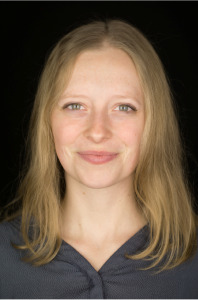 |
|
| Anne Spiering, M.Sc. |
Anne Spiering, ehemalige Masterstudentin in der Gruppe "Quantenfeld- und Stringtheorie", welche von IRIS Adlershof-Mitglied Jan Plefka geleitet wird, hat für ihre Masterarbeit "From Yangian symmetry to factored scattering" den diesjährigen Lise-Meitner Preis in der Kategorie Mono-Master des Fördervereins des Instituts für Physik zugesprochen bekommen. Die Jury urteilte: "in her Master thesis she showed her ability to further develop advanced and highly complex concepts in particle physics. In addition to being of high scientific value, her thesis is also written in a pedagogically highly valuable manner." Frau Spiering setzt derzeit Ihre Laufbahn mit einer Promotion am Trinity College Dublin mit einer Promotion in mathematischer Physik fort.
Wir gratulieren sehr herzlich!
10.06.2018IRIS Adlershof auf der Langen Nacht der Wissenschaften
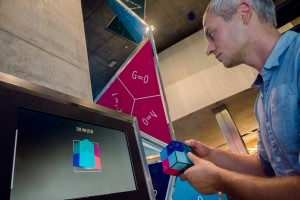 |
| Der Würfel der Physik in Aktion; Foto: Stephan Röhl |
Auch in diesem Jahr stellten Mitglieder von IRIS Adlershof im Rahmen der Langen Nacht der Wissenschaften einige ihrer Projekte einer breiten Öffentlichkeit vor.
IRIS-Mitglied Alexander Reinefeld bot am Konrad-Zuse-Zentrum für Informationstechnik Vorträge und Führungen u. a. zum Ursprung des Computers, zu autostereoskopischen Displays und zu computergestützter Molekülentwicklung an. Im Max-Born-Institut für Nichtlineare Optik und Kurzzeitspektroskopie bei IRIS-Mitglied Thomas Elsässer konnten sich Besucher in Laborbesichtigungen, Ausstellungen und anhand von Experimenten zu extrem kurzen Lichtimpulsen und Lasern informieren. Im Institut für Physik haben IRIS-Nachwuchswissenschaftler interessante Einblicke in die Physik von Makromolekülen gegeben und IRIS-Mitglied Jan Plefka konnte aktuelle Forschungsergebnisse in seinem Vortrag "Die Welt als Hologramm: Neues aus der Stringtheorie" im überfüllten Gehrtsen-Hörsaal zeigen.
Ein Highlight war die Präsentation "Der Würfel der Physik" (#cubeofphysics) des Exzellenzclusters Bild Wissen Gestaltung im Foyer des Lise-Meitner-Hauses. Die IRIS-Mitglieder Jürgen P. Rabe und Matthias Staudacher präsentierten dort zusammen mit Prof. Christian Kassung aus den Kulturwissenschaften, der Szenografin Franziska Paul und weiteren Mitarbeitern mithilfe einer interaktiven Medienstation und einer meterhohen Installation Wege von der Newtonschen Mechanik hin zur Weltformel.07.06.2018Professorin Claudia Draxl in die Österreichische Akademie der Wissenschaften aufgenommen
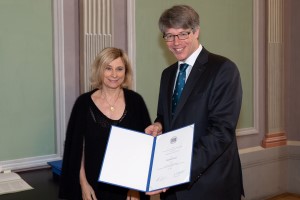 |
| Prof. Claudia Draxl und Prof. Oliver Jens Schmitt, Präsident am ÖAW |
Die Österreichische Akademie der Wissenschaften (ÖAW) begrüßt 29 neue Mitglieder in ihren Reihen. Bei der jährlichen Wahlsitzung wurden 16 Forscherinnen und 13 Forscher aus unterschiedlichsten Fachdisziplinen der Geistes-, Sozial- und Kulturwissenschaften sowie der Mathematik, der Natur- und Technikwissenschaften aufgrund ihrer herausragenden wissenschaftlichen Leistungen und ihres fachlichen Ansehens in die Akademie aufgenommen. Darunter ist auch Prof. Claudia Draxl, die mit ihrer Arbeitsgruppe "Theoretische Festkörperphysik" seit 2012 am IRIS Adlershof forscht.
Wir gratulieren herzlich!
07.06.2018Studienpreis der Physikalischen Gesellschaft zu Berlin für Julian Miczajka
 Die Physikalische Gesellschaft zu Berlin hat den von der Siemens AG geförderten Physik-Studienpreis 2018 an herausragende Absolventinnen und Absolventen des Diplom- bzw. Master-Physikstudiums verliehen. Unter den Preisträgern ist auch der gewählte Vertreter des wissenschaftlichen Nachwuchses von IRIS Adlershof, Julian Miczajka. Herr Miczajka ist derzeit Doktorand in der Arbeitsgruppe von IRIS-Mitglied Professor Jan Plefka und beschäftigt sich dort mit einer exzeptionellen Klasse von Higher-Spin-Theorien im flachen Raum, insbesondere mit deren Zusammenhang zu versteckten Symmetrien, Integrabilität und Dualität. Der Preis wird am 12. Juli 2018 im Rahmen einer öffentlichen Festveranstaltung im Magnus-Haus verliehen.
Die Physikalische Gesellschaft zu Berlin hat den von der Siemens AG geförderten Physik-Studienpreis 2018 an herausragende Absolventinnen und Absolventen des Diplom- bzw. Master-Physikstudiums verliehen. Unter den Preisträgern ist auch der gewählte Vertreter des wissenschaftlichen Nachwuchses von IRIS Adlershof, Julian Miczajka. Herr Miczajka ist derzeit Doktorand in der Arbeitsgruppe von IRIS-Mitglied Professor Jan Plefka und beschäftigt sich dort mit einer exzeptionellen Klasse von Higher-Spin-Theorien im flachen Raum, insbesondere mit deren Zusammenhang zu versteckten Symmetrien, Integrabilität und Dualität. Der Preis wird am 12. Juli 2018 im Rahmen einer öffentlichen Festveranstaltung im Magnus-Haus verliehen.
mehr...
05.06.2018Emmy Noether-Nachwuchsgruppe für Dr. Stijn van Tongeren
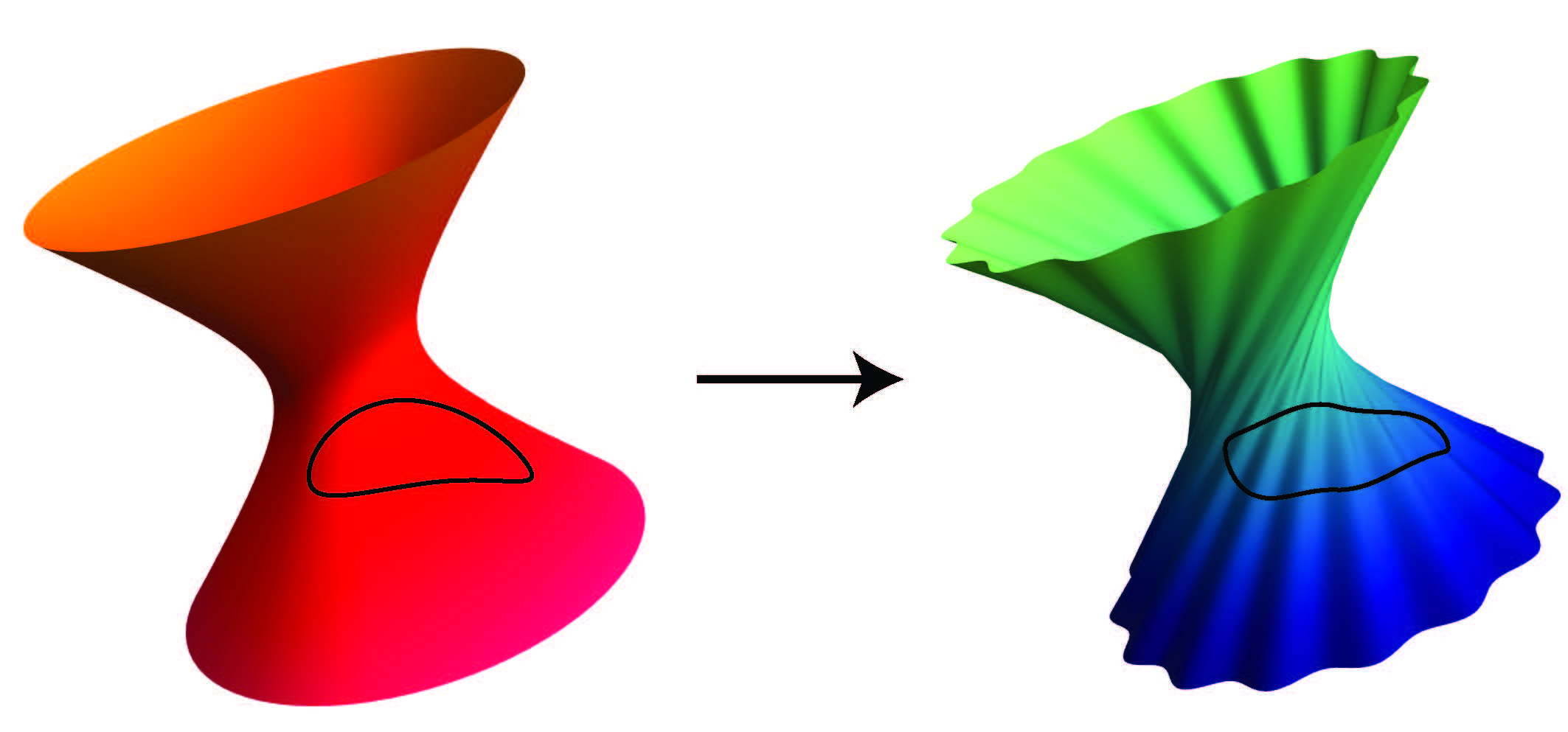 Dr. Stijn van Tongeren, ein Mitglied der AG Mathematische Physik von Raum, Zeit und Materie wurde ausgewählt, eine Emmy Noether-Nachwuchsgruppe zu leiten. Dies wird ihm erlauben, für bis zu fünf Jahre seine eigene unabhängige Forschungsgruppe hier an der Humboldt-Universität und am IRIS Adlershof in Zusammenarbeit mit der AG Mathematische Physik von Raum, Zeit und Materie zu leiten. Er und seine Gruppe werden ab September 2018 an Deformationen von AdS/CFT und verwandten integrablen Strukturen arbeiten.
Dr. Stijn van Tongeren, ein Mitglied der AG Mathematische Physik von Raum, Zeit und Materie wurde ausgewählt, eine Emmy Noether-Nachwuchsgruppe zu leiten. Dies wird ihm erlauben, für bis zu fünf Jahre seine eigene unabhängige Forschungsgruppe hier an der Humboldt-Universität und am IRIS Adlershof in Zusammenarbeit mit der AG Mathematische Physik von Raum, Zeit und Materie zu leiten. Er und seine Gruppe werden ab September 2018 an Deformationen von AdS/CFT und verwandten integrablen Strukturen arbeiten.
Wir gratulieren Herrn van Tongeren sehr herzlich und freuen uns auf eine spannende und fruchtbringende weitere Zusammenarbeit!
04.06.2018Humboldt Forschungspreis für Professor Seth Marder
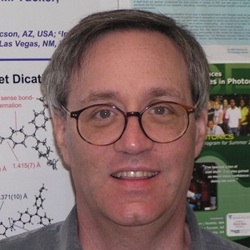 Seth Marder, Professor für Chemie und Materialwissenschaften am Georgia Institute of Technology, wurde mit dem renommierten Forschungspreis der Alexander von Humboldt-Stiftung ausgezeichnet. Herr Marder ist international anerkannt für seine führende Rolle bei der Entwicklung von Struktur-Eigenschafts-Beziehungen für organische und metallorganische Materialien für optische und elektronische Anwendungen. Zu seinen herausragenden Leistungen gehört die Schaffung einer neuen Klasse von extrem effizienten Zwei-Photonen-absorbierenden Materialien, die dazu beitrugen, das Gebiet der Zwei-Photonen-3D-Mikrofabrikation zu etablieren, das heute eine kommerzielle, weltweit angewandte Technologie ist. Er hat auch maßgeblich an der Entwicklung organischer elektronischer Materialien mitgewirkt, insbesondere hat er zu Dotierstoffen geforscht, die zur Umwandlung von Halbleitermaterialien in Materialien mit beträchtlichen Leitfähigkeiten verwendet werden können. Während seines Aufenthalts in Deutschland wird Herr Marder seine Studien über die Auswirkungen von Dotierstoffen auf die Eigenschaften von organischen und anorganischen Materialien fortsetzen. Dabei wird er von Professor Norbert Koch am IRIS Adlershof und am Institut für Physik der Humboldt-Universität zu Berlin betreut.
Seth Marder, Professor für Chemie und Materialwissenschaften am Georgia Institute of Technology, wurde mit dem renommierten Forschungspreis der Alexander von Humboldt-Stiftung ausgezeichnet. Herr Marder ist international anerkannt für seine führende Rolle bei der Entwicklung von Struktur-Eigenschafts-Beziehungen für organische und metallorganische Materialien für optische und elektronische Anwendungen. Zu seinen herausragenden Leistungen gehört die Schaffung einer neuen Klasse von extrem effizienten Zwei-Photonen-absorbierenden Materialien, die dazu beitrugen, das Gebiet der Zwei-Photonen-3D-Mikrofabrikation zu etablieren, das heute eine kommerzielle, weltweit angewandte Technologie ist. Er hat auch maßgeblich an der Entwicklung organischer elektronischer Materialien mitgewirkt, insbesondere hat er zu Dotierstoffen geforscht, die zur Umwandlung von Halbleitermaterialien in Materialien mit beträchtlichen Leitfähigkeiten verwendet werden können. Während seines Aufenthalts in Deutschland wird Herr Marder seine Studien über die Auswirkungen von Dotierstoffen auf die Eigenschaften von organischen und anorganischen Materialien fortsetzen. Dabei wird er von Professor Norbert Koch am IRIS Adlershof und am Institut für Physik der Humboldt-Universität zu Berlin betreut.
Wir gratulieren Herrn Marder sehr herzlich und freuen uns auf eine spannende und fruchtbringende Zusammenarbeit!
30.05.2018Internationale Studierende zu Besuch am IRIS Adlershof
 Eine Gruppe von Studierenden und Professor/innen des Morehouse und des Spelman College, zweier sogenannter „Historically Black Colleges and Universities" oder Colleges der „Black Ivy League“, aus Atlanta (USA) hat im Rahmen eines mehrtägigen Berlin-Aufenthaltes den naturwissenschaftlichen Campus der Humboldt-Universität zu Berlin besucht, um sich über die hiesigen Studienbedingungen und Forschungsmöglichkeiten zu informieren. IRIS Geschäftsführer Dr. Nikolai Puhlmann und IRIS Mitglied Prof. Christoph Koch sowie Mohammad Fardin Gholami, Doktorand in der Gruppe von IRIS Direktor Prof. Jürgen P. Rabe, gaben einen Einblick in Forschung und Graduiertenausbildung am IRIS Adlershof. Die Gäste zeigten sich sehr interessiert und beeindruckt vom im Entstehen begriffenen IRIS-Forschungsbau sowie von den vielfältigen Möglichkeiten für den internationalen wissenschaftlichen Nachwuchs am Standort Adlershof.
Eine Gruppe von Studierenden und Professor/innen des Morehouse und des Spelman College, zweier sogenannter „Historically Black Colleges and Universities" oder Colleges der „Black Ivy League“, aus Atlanta (USA) hat im Rahmen eines mehrtägigen Berlin-Aufenthaltes den naturwissenschaftlichen Campus der Humboldt-Universität zu Berlin besucht, um sich über die hiesigen Studienbedingungen und Forschungsmöglichkeiten zu informieren. IRIS Geschäftsführer Dr. Nikolai Puhlmann und IRIS Mitglied Prof. Christoph Koch sowie Mohammad Fardin Gholami, Doktorand in der Gruppe von IRIS Direktor Prof. Jürgen P. Rabe, gaben einen Einblick in Forschung und Graduiertenausbildung am IRIS Adlershof. Die Gäste zeigten sich sehr interessiert und beeindruckt vom im Entstehen begriffenen IRIS-Forschungsbau sowie von den vielfältigen Möglichkeiten für den internationalen wissenschaftlichen Nachwuchs am Standort Adlershof.
30.05.2018Humboldt Forschungspreis für Professor Niklas Beisert
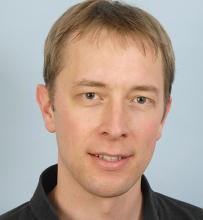 Niklas Beisert, Professor für mathematische Physik an der ETH Zürich, Schweiz, wurde mit dem renommierten Forschungspreis der Alexander von Humboldt-Stiftung ausgezeichnet. Herr Beisert ist ein weltweit führender Forscher im Bereich der Quantenfeldtheorie und der integrablen Modelle. Seine Arbeiten waren maßgeblich für die Entstehung des Forschungsbereiches der Integrabilität in der String-Eichtheorie Dualität, die erstmalig zu exakten Resultaten in vierdimensionalen Quantenfeldtheorien geführt haben. Er beschäftigte sich darüber hinaus außerordentlich erfolgreich mit hochkomplexen Fragen der Quantengravitation und hat ein Programm zum Beweis der Integrabilität in supersymmetrischen Modellen vorgelegt.
Niklas Beisert, Professor für mathematische Physik an der ETH Zürich, Schweiz, wurde mit dem renommierten Forschungspreis der Alexander von Humboldt-Stiftung ausgezeichnet. Herr Beisert ist ein weltweit führender Forscher im Bereich der Quantenfeldtheorie und der integrablen Modelle. Seine Arbeiten waren maßgeblich für die Entstehung des Forschungsbereiches der Integrabilität in der String-Eichtheorie Dualität, die erstmalig zu exakten Resultaten in vierdimensionalen Quantenfeldtheorien geführt haben. Er beschäftigte sich darüber hinaus außerordentlich erfolgreich mit hochkomplexen Fragen der Quantengravitation und hat ein Programm zum Beweis der Integrabilität in supersymmetrischen Modellen vorgelegt.
Der Forschungspreis ermöglicht Herrn Beisert insgesamt ein Jahr gemeinsam mit seinen Kollegen Jan Plefka, Matthias Staudacher und Dirk Kreimer vom IRIS Adlershof sowie von den Instituten für Physik und für Mathematik der Humboldt-Universität zu Berlin an der exakten nicht-perturbativen Lösung von Quantenfeldtheorien zu arbeiten, und tiefergehende Untersuchungen zu versteckten Symmetrien in Quantenfeldtheorien zu verfolgen. Er wird im akademischen Jahr 2018/2019 zunächst sieben Monate als Gast am IRIS Adlershof verbringen und mit seiner Expertise das IRIS-Forschungsfeld "Raum-Zeit-Materie" weiter stärken.
Wir gratulieren Herrn Beisert sehr herzlich und freuen uns auf eine spannende und fruchtbringende Zusammenarbeit!
28.05.2018José David Cojal González hat seine Dissertation erfolgreich verteidigt
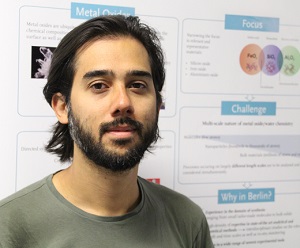 IRIS-Nachwuchswissenschaftler José David Cojal González hat seine Dissertation zum Thema "Self-Assembly and Electronic Properties of π-expanded Macrocycles" erfolgreich verteidigt. Die Arbeit wurde durch SFB 658 "Elementary Processes in Molecular Switches at Surfaces" und SFB 951 "Hybrid Inorganic/Organic Systems for Opto-Electronics (HIOS)" sowie IRIS Adlershof gefördert und von Prof. Jürgen P. Rabe betreut.
IRIS-Nachwuchswissenschaftler José David Cojal González hat seine Dissertation zum Thema "Self-Assembly and Electronic Properties of π-expanded Macrocycles" erfolgreich verteidigt. Die Arbeit wurde durch SFB 658 "Elementary Processes in Molecular Switches at Surfaces" und SFB 951 "Hybrid Inorganic/Organic Systems for Opto-Electronics (HIOS)" sowie IRIS Adlershof gefördert und von Prof. Jürgen P. Rabe betreut.
IRIS Adlershof gratuliert herzlich!
17.05.2018Michael J. Bojdys an die Humboldt-Universität gewechselt
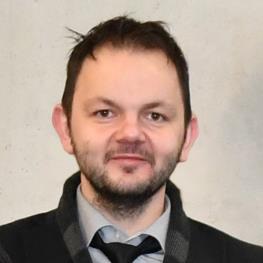 |
| Dr. Michael J. Boidys |
Auf dem Symposium IRIS 2018 wird er seine aktuelle Forschung mit dem Vortrag "2D or not 2D? Metal-free nanomaterials beyond graphene" präsentieren.
IRIS Adlershof freut sich auf eine fruchtbare Zusammenarbeit!
08.05.2018Alexander von Humboldt-Professur für Arno Rauschenbeutel
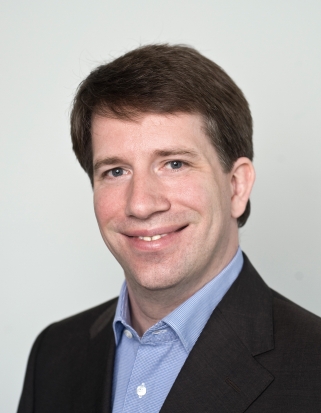 |
| Foto: Jacqueline Godany |
Auf einer Festveranstaltung am Dienstagabend in Berlin wurde Prof. Dr. Arno Rauschenbeutel mit dem höchstdotierten Forschungspreis Deutschlands ausgezeichnet: der Alexander von Humboldt-Professur. Er wird ab sofort am Institut für Physik der Humboldt-Universität und auch am IRIS Adlershof forschen. Federführend bei der erfolgreichen Bewerbung um die Humboldt-Professur war der Experte für Quantenoptik Prof. Dr. Oliver Benson, Mitglied von IRIS Adlershof. Dass dieser und mit ihm die Humboldt-Universität den zuvor an der Technischen Universität Wien tätigen Arno Rauschenbeutel als Humboldt-Professor vorgeschlagen und ihm damit ganz neue Freiräume für seine Forschung eingeräumt haben, empfindet Rauschenbeutel als großen Vertrauensbeweis.
mehr...
Im IRIS Adlershof wird er seine aktuelle Forschung im Rahmen eines Sonderkolloquiums des SFB 951 HIOS sowie auf dem Symposium IRIS 2018 vorstellen.
IRIS Adlershof gratuliert herzlich!
17.04.2018Humboldt-Innovation GmbH der HU für "Beste Innovationsförderung" ausgezeichnet
Die Humboldt-Innovation GmbH (HI) ist vom Deutschen Institut für Erfindungswesen (DIE e.V.) in der Kategorie „Beste Innovationsförderung“ mit der Dieselmedaille 2018 ausgezeichnet worden.Die 2005 gegründete Humboldt-Innovation GmbH ist ein 100-prozentiges Tochterunternehmen der HU und engagiert sich an der Schnittstelle von Wissenschaft und Wirtschaft.
mehr...
06.04.2018Innovatives Training Netzwerk SAGEX "Streuamplituden: Von der Geometrie zum Experiment" wird gefördert
Das Innovative Training Netzwerk der Europäischen Kommission SAGEX "Streuamplituden: Von der Geometrie zum Experiment" wurde zur Förderung akzeptiert, und wird am 1. September 2018 seine Arbeit aufnehmen. Zwei Early-Stage-Researcher (PhD) Stellen werden an der Humboldt-Universität zu Berlin finanziert werden: Eine in der Arbeitsgruppe "Mathematische Physik von Raum, Zeit und Materie"(Prof. Dr. Matthias Staudacher) and eine weitere in the Arbeitsgruppe "Quantenfeldtheorie und Stringtheorie" (Prof. Dr. Jan Plefka), beides Arbeitsgruppen am IRIS Adlershof. Bewerbungen werden voraussichtlich ab April angenommen.
mehr...
03.04.2018Humboldt-Universität Projektpartner im nationalen Entwicklungsverbund „Die Zukunft des MINT-Lernens“
 Gemeinsam mit den Universitäten Kiel, Koblenz-Landau, Würzburg sowie der TU Kaiserslautern wird die Humboldt-Universität ab Herbst 2018 Konzepte für guten MINT-Unterricht in der digitalen Welt entwickeln, erproben und in die Aus- und Fortbildung von Lehrkräften der MINT-Fächer integrieren Die Telekom Stiftung unterstützt das Projekt mit 1,6 Millionen €.
Gemeinsam mit den Universitäten Kiel, Koblenz-Landau, Würzburg sowie der TU Kaiserslautern wird die Humboldt-Universität ab Herbst 2018 Konzepte für guten MINT-Unterricht in der digitalen Welt entwickeln, erproben und in die Aus- und Fortbildung von Lehrkräften der MINT-Fächer integrieren Die Telekom Stiftung unterstützt das Projekt mit 1,6 Millionen €.
mehr...
22.03.2018IRIS-Nachwuchswissenschaftlerin Anne Fuhrmann mit Carl-Roth-Förderpreis der Gesellschaft Deutscher Chemiker ausgezeichnet
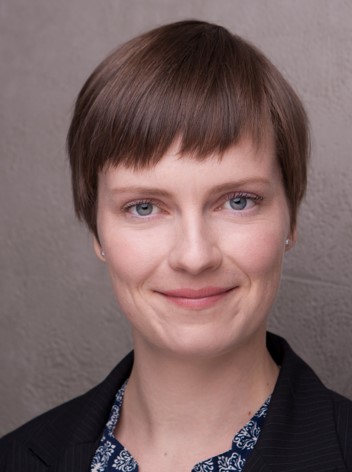 Auf dem 20. Jungchemikerforum in Konstanz wurde Anne Fuhrmann, Doktorandin am Institut für Chemie und am IRIS Adlershof der Humboldt-Universität zu Berlin, mit dem Carl-Roth-Förderpreis der Gesellschaft Deutscher Chemiker (GDCh) „in Anerkennung ihrer innovativen Beiträge zur Entwicklung von Polymernetzwerken mit optisch schaltbaren Heilungseigenschaften für intelligente und nachhaltige Materialien“ ausgezeichnet. Der Carl-Roth-Förderpreis wird jährlich für die besten Nachwuchswissenschaftler innerhalb Deutschlands im Bereich der nachhaltigen Chemie für „Ressourcen schonende Synthesewege oder innovative Anwendungen von Chemikalien“ verliehen.
Auf dem 20. Jungchemikerforum in Konstanz wurde Anne Fuhrmann, Doktorandin am Institut für Chemie und am IRIS Adlershof der Humboldt-Universität zu Berlin, mit dem Carl-Roth-Förderpreis der Gesellschaft Deutscher Chemiker (GDCh) „in Anerkennung ihrer innovativen Beiträge zur Entwicklung von Polymernetzwerken mit optisch schaltbaren Heilungseigenschaften für intelligente und nachhaltige Materialien“ ausgezeichnet. Der Carl-Roth-Förderpreis wird jährlich für die besten Nachwuchswissenschaftler innerhalb Deutschlands im Bereich der nachhaltigen Chemie für „Ressourcen schonende Synthesewege oder innovative Anwendungen von Chemikalien“ verliehen.
Frau Fuhrmann hat im Rahmen ihrer Doktorarbeit in der Arbeitsgruppe um IRIS-Mitglied Prof. Stefan Hecht Kunststoffbeschichtungen entwickelt, die mit Hilfe von Licht gezielt Beschädigungen heilen können. Eine durch Erwärmen hervorgerufene Selbstausbesserung des Materials findet nur dort statt, wo die beschädigte Stelle vorher mit Licht einer bestimmten Farbe beleuchtet wurde. Die vielversprechenden Ergebnisse dieser Studie wurden u.a. in Nature Communications veröffentlicht.
IRIS Adlershof gratuliert der Preisträgerin herzlich.
15.03.2018Professor E. List-Kratochvil begeistert an der Humboldt-Kinder-Uni
 An der Humboldt-Kinder-Uni soll alles so sein wie an einer richtigen Uni: Es gibt echte Vorlesungen zu interessanten Themen, kluge Professorinnen und Professoren, einen großen Hörsaal. Am 15. März hielt unser Mitglied Prof. Dr. Emil J.W. List-Kratochvil vor den Grundschülern eine Vorlesung mit dem Titel Biegbare Bildschirme - Fluoreszierende Fische - Rote Rüben.
An der Humboldt-Kinder-Uni soll alles so sein wie an einer richtigen Uni: Es gibt echte Vorlesungen zu interessanten Themen, kluge Professorinnen und Professoren, einen großen Hörsaal. Am 15. März hielt unser Mitglied Prof. Dr. Emil J.W. List-Kratochvil vor den Grundschülern eine Vorlesung mit dem Titel Biegbare Bildschirme - Fluoreszierende Fische - Rote Rüben.
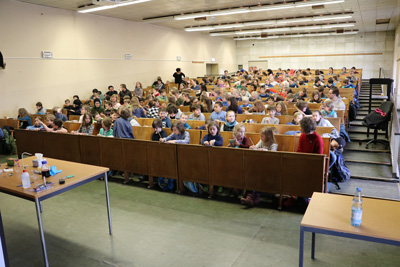 Im Rahmen der ausgebuchten Vorlesung wurde herausgefunden, dass das Leuchten von Fischen in der Tiefsee, die Farbe von Blättern und biegbare Bildschirme auf sehr ähnlichen Materialkonzepten beruhen. Zum Abschluss wurde aus dem Saft roter Rüben eine Solarzelle hergestellt.
Im Rahmen der ausgebuchten Vorlesung wurde herausgefunden, dass das Leuchten von Fischen in der Tiefsee, die Farbe von Blättern und biegbare Bildschirme auf sehr ähnlichen Materialkonzepten beruhen. Zum Abschluss wurde aus dem Saft roter Rüben eine Solarzelle hergestellt.
28.02.2018Honorarprofessur für Ingolf V. Hertel
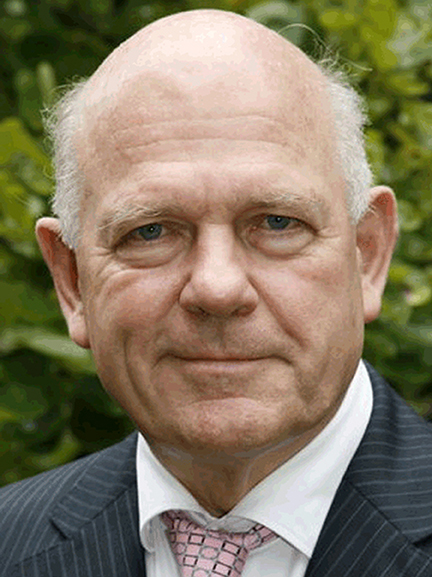 Die Humboldt-Universität zu Berlin verleiht eine Honorarprofessur an Prof. Dr. Ingolf V. Hertel und würdigt damit seine herausragenden fachwissenschaftlichen Arbeiten, seine Verdienste um den Wissenschaftsstandort Adlershof sowie sein jahrelanges hohes Engagement in der MINT-Lehrerbildung.
Die Humboldt-Universität zu Berlin verleiht eine Honorarprofessur an Prof. Dr. Ingolf V. Hertel und würdigt damit seine herausragenden fachwissenschaftlichen Arbeiten, seine Verdienste um den Wissenschaftsstandort Adlershof sowie sein jahrelanges hohes Engagement in der MINT-Lehrerbildung.
Professor Hertel ist einer der in Deutschland führenden und international herausragenden Vertreter der experimentellen Physik auf dem Forschungsgebiet der Atom-, Molekül- und Laserphysik. Im Jahre 2009 wurde er zum Wilhelm und Else Heraeus-Seniorprofessur für die Weiterentwicklung der Lehrerausbildung im Fach Physik an die Humboldt-Universität berufen und beschäftigte sich insbesondere mit hochschuldidaktischen Fragen der Lehrerausbildung und fachdidaktischen Fragen des Faches Physik. Mit IRIS Adlershof ist Herr Hertel über das interdisziplinären Humboldt-ProMINT-Kolleg verbunden, an dem er engagiert tätig ist und fachdidaktische Forschungs- und Entwicklungsarbeiten betreut.
Wir gratulieren Herrn Hertel sehr herzlich.
mehr...
27.02.2018Professor Michael Hintermüller neues Mitglied von IRIS Adlershof
 Michael Hintermüller, Professor für Angewandte Mathematik an der Humboldt-Universität zu Berlin, Sprecher des Einstein-Zentrums für Mathematik, sowie Direktor des Weierstraß-Institut für Angewandte Analysis und Stochastik, ist neues Mitglied von IRIS Adlershof. Herrn Hintermüllers aktuelle Forschungsschwerpunkte liegen auf dem Gebiet der mathematischen Modellierung, der Analyse der resultierenden Variationsprobleme oder Operatorgleichungen sowie in der Entwicklung, Analyse und numerischen Umsetzung von zugehörigen Lösungsverfahren.
Michael Hintermüller, Professor für Angewandte Mathematik an der Humboldt-Universität zu Berlin, Sprecher des Einstein-Zentrums für Mathematik, sowie Direktor des Weierstraß-Institut für Angewandte Analysis und Stochastik, ist neues Mitglied von IRIS Adlershof. Herrn Hintermüllers aktuelle Forschungsschwerpunkte liegen auf dem Gebiet der mathematischen Modellierung, der Analyse der resultierenden Variationsprobleme oder Operatorgleichungen sowie in der Entwicklung, Analyse und numerischen Umsetzung von zugehörigen Lösungsverfahren.
IRIS Adlershof freut sich sehr auf die Zusammenarbeit und gratuliert Herrn Hintermüller herzlich.
19.02.2018Jürgen P. Rabe zum Vorsitzenden des Berlin-Brandenburgischen Verband für Polymerforschung wiedergewählt
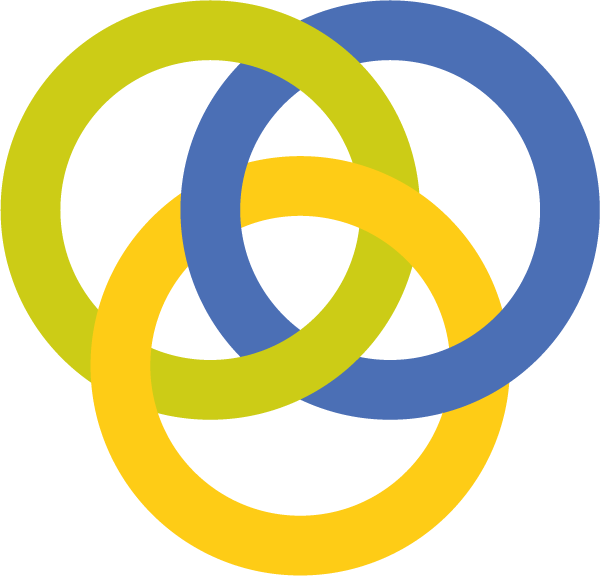 Die Mitgliederversammlung des Berlin-Brandenburgischen Verband für Polymerforschung (BVP) hat seinen Vorstand für zwei weitere Jahre wiedergewählt. Vorsitzender ist Prof. Jürgen P. Rabe (Humboldt-Universität zu Berlin), Stellvertreter sind Prof. Rainer Haag (Freie Universität Berlin) und Prof. Dieter Neher (Universität Potsdam), Schatzmeister ist Prof. Michael Gradzielski (Technische Universität Berlin), und Geschäftsführer ist Prof. Andreas Lendlein (Universität Potsdam).
Die Mitgliederversammlung des Berlin-Brandenburgischen Verband für Polymerforschung (BVP) hat seinen Vorstand für zwei weitere Jahre wiedergewählt. Vorsitzender ist Prof. Jürgen P. Rabe (Humboldt-Universität zu Berlin), Stellvertreter sind Prof. Rainer Haag (Freie Universität Berlin) und Prof. Dieter Neher (Universität Potsdam), Schatzmeister ist Prof. Michael Gradzielski (Technische Universität Berlin), und Geschäftsführer ist Prof. Andreas Lendlein (Universität Potsdam).
19.02.2018Christian Seifert hat seine Dissertation "Control of the electrical transport through single molecules and graphene" erfolgreich verteidigt
IRIS Nachwuchswissenschaftler Christian Seifert hat seine Dissertation Control of the electrical transport through single molecules and graphene erfolgreich verteidigt. Die Arbeit wurde von Prof. Jürgen P. Rabe betreut.
Glückwunsch!
15.02.2018Humboldt Forschungspreis für Professor Lance J. Dixon
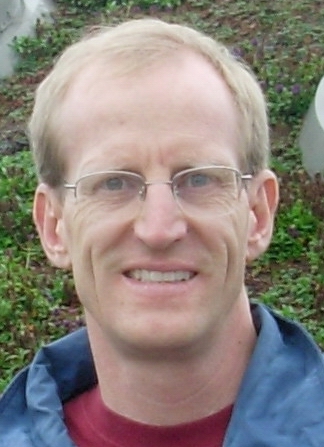 Lance J. Dixon, Professor am SLAC National Accelerator Laboratory, Stanford University, USA, wurde mit dem renommierten Forschungspreis der Alexander von Humboldt-Stiftung ausgezeichnet. Herr Dixon ist ein weltweit führender theoretischer Hochenergieforscher. Seine Arbeiten reichen von bahnbrechenden und mathematisch tiefen Beiträgen zur Stringtheorie über praktische Hochpräzisionsrechnungen zur Beschleunigerphysik der Quantenchromodynamik (QCD) hin zu einem vertieften Verständnis von Streuamplituden in allgemeinen Quantenfeldtheorien. Er beschäftigte sich überaus erfolgreich mit hochkomplexen störungstheoretischen Fragen der Quantengravitation.
Lance J. Dixon, Professor am SLAC National Accelerator Laboratory, Stanford University, USA, wurde mit dem renommierten Forschungspreis der Alexander von Humboldt-Stiftung ausgezeichnet. Herr Dixon ist ein weltweit führender theoretischer Hochenergieforscher. Seine Arbeiten reichen von bahnbrechenden und mathematisch tiefen Beiträgen zur Stringtheorie über praktische Hochpräzisionsrechnungen zur Beschleunigerphysik der Quantenchromodynamik (QCD) hin zu einem vertieften Verständnis von Streuamplituden in allgemeinen Quantenfeldtheorien. Er beschäftigte sich überaus erfolgreich mit hochkomplexen störungstheoretischen Fragen der Quantengravitation.
Der Forschungspreis ermöglicht Herrn Dixon insgesamt ein Jahr gemeinsam mit seinen Kollegen Matthias Staudacher, Dirk Kreimer und Jan Plefka vom IRIS Adlershof sowie von den Instituten für Physik und für Mathematik der Humboldt-Universität zu Berlin an der exakten nicht-perturbativen Lösung von Quantenfeldtheorien zu arbeiten, und tiefergehende Untersuchungen zur schwer zu fassenden Quantengravitation durchzuführen. Herr Dixon wird voraussichtlich ab 2019 Gast am IRIS Adlershof sein und mit seiner Expertise das IRIS-Forschungsfeld "Raum-Zeit-Materie" weiter stärken.
Wir gratulieren Herrn Dixon sehr herzlich und freuen uns auf eine spannende und fruchtbringende Zusammenarbeit.
13.02.2018Professor Jürgen P. Rabe zum Direktor von IRIS Adlershof wiedergewählt
 Die IRIS-Mitgliederversammlung hat für die zweite IRIS-Förderphase (01.11.2017-31.10.2021) Prof. Jürgen P. Rabe zum Direktor und Prof. Norbert Koch zu seinem Stellvertreter wiedergewählt. Zu Mitgliedern des IRIS-Rats wurden darüber hinaus Prof. Matthias Staudacher, Brückenprofessor für Mathematik und Physik wieder- und Prof. Emil List-Kratochvil, Brückenprofessor für Chemie und Physik hinzugewählt. Die Wahlen erfolgten einstimmig. Der gewählte Vertreter der IRIS Nachwuchswissenschaftler Julian Miczajka ist ebenfalls Mitglied des IRIS-Rats.
Die IRIS-Mitgliederversammlung hat für die zweite IRIS-Förderphase (01.11.2017-31.10.2021) Prof. Jürgen P. Rabe zum Direktor und Prof. Norbert Koch zu seinem Stellvertreter wiedergewählt. Zu Mitgliedern des IRIS-Rats wurden darüber hinaus Prof. Matthias Staudacher, Brückenprofessor für Mathematik und Physik wieder- und Prof. Emil List-Kratochvil, Brückenprofessor für Chemie und Physik hinzugewählt. Die Wahlen erfolgten einstimmig. Der gewählte Vertreter der IRIS Nachwuchswissenschaftler Julian Miczajka ist ebenfalls Mitglied des IRIS-Rats.
05.02.2018Kunstwettbewerb für den IRIS-Forschungsbau entschieden
Nach einem vorgeschalteten berlinweiten Bewerbungsverfahren hat die Senatsverwaltung für Kultur und Europa zusammen mit der Senatsverwaltung für Stadtentwicklung und Wohnen im August 2017 einen Kunstwettbewerb mit 10 eingeladenen Künstlerinnen und Künstlern für den neu entstehenden Forschungsbau des Integrativen Forschungsinstituts für die Naturwissenschaften (Integrative Research Institute for the Sciences) IRIS Adlershof der Humboldt-Universität zu Berlin ausgelobt.
Ziel des Kunstwettbewerbs war es, eigenständige künstlerische Entwürfe zu entwickeln, die auch mit der Kunst am Bau dem Aufgabenfeld des Instituts in der Spitzenforschung entsprechen. Die Kunst soll sich in der Auseinandersetzung mit der Architektur, der stadträumlichen Umgebung auf dem Campus Adlershof und der Nutzung des Gebäudes als lebendiger Ort der Forschung und des Austausches widerspiegeln.
Einstimmig hat das Preisgericht unter dem Vorsitz der Künstlerin Veronike Hinsberg am 1. Februar 2018 den 1. Preis an die Künstlergruppe BORGMAN | LENK (Anna Borgman und Candy Lenk), zwei 2. Preise an Gunda Förster und Barbara Trautmann sowie eine Anerkennung für Thomas Henninger vergeben.
.png)
Der zur Realisierung empfohlene Entwurf von BORGMAN | LENK trägt den Titel „Zugänge“ und schlägt die Installation von goldfarbigen Bauteilen und Elementen vor, die im Widerspruch zu den funktionalen Abläufen und Zugängen des Hauses funktionslos gestaltet sind. Das Preisgericht würdigt die Idee, künstlerisch die Funktionalität der Architektur zu konterkarieren. Goldfarbene Elemente, wie eine Schleusentür, eine Einstiegsluke und ein Aufzugsdisplay geben Impulse für die „freie und suchende Bewegung von Gedanken“. Der Entwurf ist gekennzeichnet von einem trockenen Humor und einem großen Gespür für die eingesetzte Materialität.
Es ist geplant, alle eingereichten Entwürfe des Kunstwettbewerbs im IRIS Adlershof auszustellen. Die Termine werden rechtzeitig öffentlich bekannt gegeben.
mehr...
29.01.2018Rufannahme durch Dr. Agostino Patella
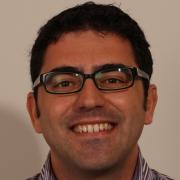 Herr Dr. Agostino Patella (Theoretical Physics Department, CERN) hat den Ruf auf die W2-Professur "Theoretische Teilchenphysik - Gitterfeldtheorie" am Institut für Physik der Humboldt-Universität zu Berlin angenommen.
Herr Dr. Agostino Patella (Theoretical Physics Department, CERN) hat den Ruf auf die W2-Professur "Theoretische Teilchenphysik - Gitterfeldtheorie" am Institut für Physik der Humboldt-Universität zu Berlin angenommen.
26.01.2018David Meidinger hat seine Dissertation "Integrability in weakly coupled super Yang‐Mills theory: form factors, on‐shell methods and Q‐operators" erfolgreich verteidigt
IRIS Nachwuchswissenschaftler David Meidinger hat seine Dissertation Integrability in weakly coupled super Yang‐Mills theory: form factors, on‐shell methods and Q‐operators erfolgreich verteidigt. Die Arbeit wurde von IRIS Ratsmitglied Prof. Matthias Staudacher betreut.
Glückwunsch!
19.12.2017Erster IRIS Roots-Day
 Beim IRIS Roots-Day, zu dem IRIS Adlershof erstmalig eingeladen hatte, verfolgten zahlreiche Teilnehmer mit sichtlichem Interesse und Vergnügen die Beiträge von neun IRIS-Nachwuchswissenschaftler/innen, die sich der Herausforderung stellten, in nur 5 Minuten einen Einblick in ihre aktuelle Forschung zu geben. Der aus IRIS-Mitgliedern sowie Vertretern des IRIS-Nachwuchses zusammengesetzten Jury viel es schwer, die besten Beiträge auszuwählen. Am Ende wurde das Preisgeld aufgestockt, um einen weiteren dritten Platz prämieren zu können.
Beim IRIS Roots-Day, zu dem IRIS Adlershof erstmalig eingeladen hatte, verfolgten zahlreiche Teilnehmer mit sichtlichem Interesse und Vergnügen die Beiträge von neun IRIS-Nachwuchswissenschaftler/innen, die sich der Herausforderung stellten, in nur 5 Minuten einen Einblick in ihre aktuelle Forschung zu geben. Der aus IRIS-Mitgliedern sowie Vertretern des IRIS-Nachwuchses zusammengesetzten Jury viel es schwer, die besten Beiträge auszuwählen. Am Ende wurde das Preisgeld aufgestockt, um einen weiteren dritten Platz prämieren zu können.
Der erste Preis, der mit einer Reisebeihlife zur Ermöglichung einer aktiven Teilnahme an einer nationalen oder internationalen wissenschaftlichen Konferenz verbunden ist, ging an Frau Inna Kviatkovsky, die seit wenigen Monaten Doktorandin in der von Dr. Ramelow geleiteten IRIS-Nachwuchsgruppe ist und dort im Bereich Infrarot-Quantenbildgebung forscht.
Den zweiten Platz belegte Yuhang Zhao, der als Doktorand in der Gruppe von Prof. Yan Lu am HZB forscht. Wadim Wormsbecher, Doktorand in der Gruppe von Prof. Plefka und der Masterstudent Matthias Runge aus der Gruppe von Prof. List-Kratochvil haben jeweils einen dritten Preis zuerkannt bekommen.

Inna Kviatkovsky Yuhang Zhao Wadim Wormsbecher Matthias Runge
IRIS Adlershof gratuliert den Preisträgern ganz herzlich und kündigt schon mal an, dass der IRIS Roots-Day als offenbar erfolgreiches Format fortgeführt werden wird.
15.12.2017Leibniz-Preis für Prof. A. Buonanno (MPI-G,UP,HU)
|
Die Potsdamer Gravitationsphysikerin Alessandra Buonanno, Direktorin am Max-Planck-Institut für Gravitationsphysik in Potsdam-Golm und Honorarprofessorin an der Humboldt-Universität sowie der Universität Potsdam, wird mit dem Leibniz-Preis ausgezeichnet, dem wichtigsten deutschen Forschungspreis. Sie gehört zu denen, die die von Einstein postulierten Gravitationswellen 2014 nachgewiesen haben. Ihr und 10 weiteren Wissenschaftlern wird der Preis am 19. März 2018 in Berlin verliehen.
Anlässlich der Verleihung der Honorarprofessur am 19.12. wird sie einen Vortrag am Institut für Physik halten. IRIS Adlershof gratuliert herzlich. mehr... |
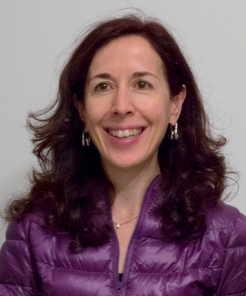 |
| © A. Buonanno |
14.12.2017Längere Lebensdauern für Perowskit-Absorber
|
Ein internationales Team von Wissenschaftlern hat die Stabilität organisch-anorganischer Bleihalogenid-Perowskite erheblich verbessert. Diese Materialien haben ein enormes Potenzial für photovoltaische Anwendungen, weisen aber immer noch eine vergleichsweise begrenzte Lebensdauer auf. Die Wissenschaftler, die von Forschern der EPFL, Lausanne, Schweiz, geleitet wurden, haben ein großes organisches Kation - Guanidinium - in die Perowskit-Kristallstruktur eingebaut, das teilweise die traditionell verwendeten Methylammonium- und Formamidiniumkationen ersetzt. Insgesamt liefert das neue Material einen durchschnittlichen Wirkunsgrad der Leistungsumwandlung von über 19%. Dabei konnte die Leistung für 1.000 Stunden bei kontinuierlicher Lichtausleuchtung stabilisert werden. Dies ist ein grundlegender Schritt innerhalb des Perowskit-Feldes, der kürzlich in Nature Energy veröffentlicht wurde. Unter den Autoren ist das Mitglied von IRIS Adlershof, Prof. Norbert Koch.
mehr... |
13.12.2017Julian Miczajka und Dr. Sven Ramelow zu Vertretern des wissenschaftlichen Nachwuchses von IRIS Adlershof gewählt
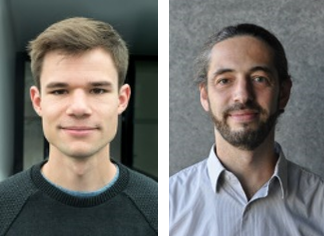 |
|
Julian Miczajka Dr. Sven Ramelow ©: Albert-Einstein-Institut |
Die Nachwuchswisenschaftler von IRIS Adlershof haben Herrn Julian Miczajka zu ihrem Repräsentaten in den IRIS-Gremien sowie Herrn Dr. Sven Ramelow zu seinem Stellvertreter gewählt. Damit ist der wissenschaftliche Nachwuchs in den IRIS-Mitgliederversammlungen sowie im IRIS-Rat mit Rede-, Antrags- und Stimmrecht vertreten.
Julian Miczajka ist Doktorand in der Arbeitsgruppe von Professor Jan Plefka und beschäftigt sich zur Zeit mit einer exzeptionellen Klasse von Higher-Spin-Theorien im flachen Raum, insbesondere mit deren Zusammenhang zu versteckten Symmetrien, Integrabilität und Dualität. Dr. Sven Ramelow ist Leiter der unabhängigen Emmy-Noether-Nachwuchsgruppe "Nichtlineare Quantenoptik".
Als erste "Amtshandlung" werden die beiden Nachwuchsvertreter am IRIS Roots-Day in der Jury sitzen und die Pitches von insgesamt neun IRIS NAchwuchswissenschaftlern mit bewerten.
IRIS Adlershof gratuliert Herrn Miczajka und Herrn Ramelow herzlich zu ihrer Wahl und freut sich auf eine gute Zusammenarbeit!
16.11.201715 Jahre Matheon
Das Berliner Forschungszentrum MATHEON, an welchem IRIS Adlershof-Mitglied Prof. Jürg Kramer beteiligt ist, beging am 15.11.2017 mit einem Fest der Berliner Mathematik sein 15-jähriges Bestehen.
IRIS Adlershof gratuliert sehr herzlich!
mehr...
13.11.2017Licht hilft beim n-Dotieren von organischen Halbleitern für Leuchtdioden oder Solarzellen
|
In einem Artikel, der gerade in Nature Materials erschienen ist, demonstriert ein Forscherteam des Georgia Institute of Technology, des Helmholtz-Zentrums Berlin, der Humboldt-Universität zu Berlin und der Princeton University einen neuen Ansatz für die n-Dotierung von organischen Halbleitern. Damit können Umgebungseinflüsse, die eine Dotierung organischer, elektronenleitender Materialien bislang erheblich erschwert hatten umgangen werden und auch Materialien bearbeitet werden, die bisher für die n-Dotierung unerreichbar waren.
„Wir glauben, dass unsere Arbeit eine einfache Verarbeitung von n-dotierten organischen Halbleitern in zahlreichen Bauelementarchitekturen ermöglicht, bei denen die kritische Stufe - Dotierungsaktivierung - nach der Standard-Bauelement-Verkapselung stattfinden kann. Dies trägt wesentlich zur verbesserten Lebensdauer der Bauelemente bei und vereinfacht in einigen Fällen die Bauelementefertigung.“, erläutert Prof. Norbert Koch von der Humboldt-Universität, Mitglied von IRIS Adlershof. mehr... |
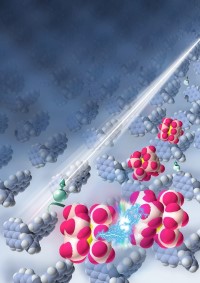 |
|
| Image by Jing Wang and Xin Lin | ||
04.11.2017Prof. Jürgen P. Rabe neues Mitglied des Beratungsgremiums des Vorstandes der Einstein Stiftung Berlin
 Jürgen P. Rabe, Professor am Institut für Physik der Humboldt-Universität zu Berlin und Direktor von IRIS Adlershof, wurde als neues Mitglied in das Beratungsgremium des Vorstandes der Einstein Stiftung Berlin berufen. Wir gratulieren Herrn Rabe herzlich und wünschen ihm in seiner neuen, zusätzlichen Funktion viel Erfolg.
Jürgen P. Rabe, Professor am Institut für Physik der Humboldt-Universität zu Berlin und Direktor von IRIS Adlershof, wurde als neues Mitglied in das Beratungsgremium des Vorstandes der Einstein Stiftung Berlin berufen. Wir gratulieren Herrn Rabe herzlich und wünschen ihm in seiner neuen, zusätzlichen Funktion viel Erfolg.
27.10.2017Dr. Christian Bogner erhält Einstein Junior Fellowship
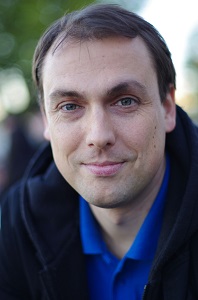 |
|
Dr. Christian Bogner, Foto: Anne Kathrin Doerr |
Christian Bogner wird ab Januar 2018 mit einer Einstein Junior Fellowship gefördert.
Wir freuen uns, dass der talentierte Nachwuchswissenschafter in Berlin bleiben wird und gratulieren herzlich!
20.10.2017“Distinguished Award 2017 for Novel Materials and their Synthesis” für Prof. Norbert Koch
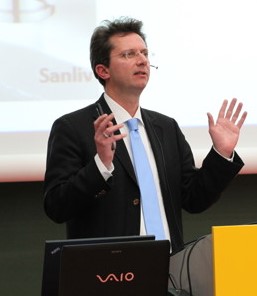 Im Rahmen der IUPAC NMS-XIII Konferenz in Nanjing wurde Norbert Koch, Professor am Institut für Physik, Mitglied von IRIS Adlershof und Leiter einer Gemeinsamen Forschergruppe am Helmholtz-Zentrum Berlin für Materialien und Energie, der “Distinguished Award 2017 for Novel Materials and their Synthesis” der IUPAC (International Union of Pure and Applied Chemistry) und des Konferenzkomitee verliehen. Er erhielt die Auszeichnung für seine Forschung zu hybriden elektronischen Materialien und deren Grenzflächen in elektronischen und optoelektronischen Bauelementen. IRIS Adlershof gratuliert herzlich.
Im Rahmen der IUPAC NMS-XIII Konferenz in Nanjing wurde Norbert Koch, Professor am Institut für Physik, Mitglied von IRIS Adlershof und Leiter einer Gemeinsamen Forschergruppe am Helmholtz-Zentrum Berlin für Materialien und Energie, der “Distinguished Award 2017 for Novel Materials and their Synthesis” der IUPAC (International Union of Pure and Applied Chemistry) und des Konferenzkomitee verliehen. Er erhielt die Auszeichnung für seine Forschung zu hybriden elektronischen Materialien und deren Grenzflächen in elektronischen und optoelektronischen Bauelementen. IRIS Adlershof gratuliert herzlich. 06.10.2017Rufannahme durch Prof. Dr. Arno Rauschenbeutel
|
Herr Prof. Dr. Arno Rauschenbeutel (Technische Universität Wien) hat den Ruf auf die W3-Professur "Grundlagen der Optik und Photonik" am Institut für Physik der Humboldt-Universität zu Berlin angenommen. Der Preisträger der renommierten Alexander von Humboldt-Professur wird auf dem Gebiet der experimentellen Quantenoptik und der Quanteninformation forschen. IRIS Adlershof gratuliert und freut sich auf eine gute Zusammenarbeit. |
 Foto: Jacqueline Godany |
02.10.2017Berliner Wissenschaft nimmt erfolgreich erste Hürde im Rahmen der Exzellenzstrategie
 |
Insgesamt neun Berliner Forschungsvorhaben sind zum Vollantrag im Rahmen der Exzellenzstrategie aufgefordert. IRIS Adlershof und seine Mitglieder beteiligen sich an den Exzellenzcluster-Projekten
Matters of Activity: Image Space Material
Eine neue Kultur des Materialen
Die Kraft der Mathematik
Unifying Systems in Catalysis (UniSysCat, Vereinigung von Systemen in der Katalyse)
Nachhaltigkeit braucht Katalyseforschung.
29.08.2017Dr. Edoardo Vescovi erhält Springer Thesis Award 2016
 Der Springer Thesis Award 2016 wurde an Dr. Edoardo Vescovi für seine Dissertation “Perturbative and non-perturbative approaches to string sigma-models in AdS/CFT” verliehen. Edoardo’s Arbeit, nominiert von der Humboldt-Universität zu Berlin, wurde bei Springer Theses, einer Buchserie zur Anerkennung herausragender Forschungsleistungen während der Promotion, zur Veröffentlichung ausgewählt. Sie führt Leser in die Typ II Superstringtheorie ein, mit einem Schwerpunkt auf AdS5×S5 und AdS4×CP3. Der Springer Thesis Award 2016 wurde an Dr. Edoardo Vescovi für seine Dissertation “Perturbative and non-perturbative approaches to string sigma-models in AdS/CFT” verliehen. Edoardo’s Arbeit, nominiert von der Humboldt-Universität zu Berlin, wurde bei Springer Theses, einer Buchserie zur Anerkennung herausragender Forschungsleistungen während der Promotion, zur Veröffentlichung ausgewählt. Sie führt Leser in die Typ II Superstringtheorie ein, mit einem Schwerpunkt auf AdS5×S5 und AdS4×CP3.Herr Vescovi führte seine Forschungsarbeiten am IRIS Adlershof der Humboldt-Universität zu Berlin durch und wurde dabei von Dr. Valentina Forini, einer unserer assoziierten Nachwuchsgruppenleiter, betreut. IRIS Adlershof gratuliert herzlich und wünscht Herrn Vescovi viel Erfolg in seiner weiteren Arbeit. |
Dr. E. Vescovi
Perturbative and Non-perturbative Approaches to String Sigma-Models in AdS/CFT
ISBN 978-3-319-63420-3
16.08.2017Prof. K. Balasubramanian, Prof. C. Cocchi und Prof. I.M. Sokolov neue Mitglieder von IRIS Adlershof


 Kannan Balasubramanian (linkes Foto), und Caterina Cocchi (Mitte), beide seit Anfang des Jahres Professoren an der Humboldt-Universität zu Berlin, sowie Igor Sokolov (rechts) sind neue Mitglieder von IRIS Adlershof.
Kannan Balasubramanian (linkes Foto), und Caterina Cocchi (Mitte), beide seit Anfang des Jahres Professoren an der Humboldt-Universität zu Berlin, sowie Igor Sokolov (rechts) sind neue Mitglieder von IRIS Adlershof.
Herrn Balasubramanians Forschungsschwerpunkt liegt in der Entwicklung nanostrukturierter Systeme zur Analyse. Im Mittelpunkt von Frau Cocchis Forschungsinteressen stehen Licht-Materie-Wechselwirkungen, welche Sie mithilfe der Dichtefunktionaltheorie (DFT & TDDFT) und der Vielteilchen-Störungstheorie (MBPT) untersucht. Das Hauptinteresse der Forschung von Herrn Sokolov gilt der Statistischen Physik sowie der Physikalischen Chemie der kondensierten und weichen Materie, vor allem solchen Problemen, in denen die diskrete, ungeordnete Struktur und Fluktuationen die Hauptrolle spielen.
IRIS Adlershof freut sich sehr auf die Zusammenarbeit mit seinen neuen Mitgliedern und gratuliert herzlich.
18.07.2017Wasser lässt das Proton zittern
Ein Team um IRIS Adlershof-Mitglied Prof. Thomas Elsässer berichtet im Journal Science über die direkte Aufzeichnung ultraschneller Protonbewegungen mittels Schwingungsspektroskopie. Dabei konnte das Zundel-Kation als die in Wasser vorherrschende Spezies identifiziert werden. Das damit vorgestellte neue Bild der Protondynamik ist von entscheidender Bedeutung für ein Verständnis des Protonentransports und für Protonverschiebungen in biologischen Systemen.
mehr...
17.07.2017Preis für gute Lehre 2016 an Professor Jürg Kramer
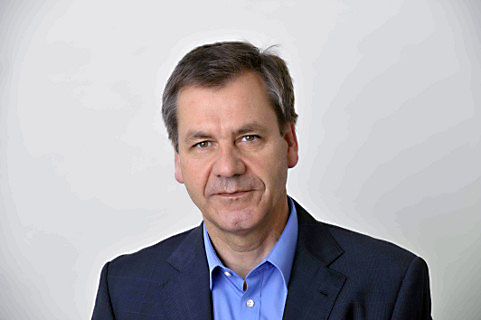 Der Preis für gute Lehre 2016 der Mathematisch-Naturwissenschaftlichen Fakultät der Humboldt-Universität ging an IRIS Adlershof-Mitglied Professor Jürg Kramer. Der Preis wird seit 2009 jährlich für besondere Leistungen in der Lehre vergeben.
Der Preis für gute Lehre 2016 der Mathematisch-Naturwissenschaftlichen Fakultät der Humboldt-Universität ging an IRIS Adlershof-Mitglied Professor Jürg Kramer. Der Preis wird seit 2009 jährlich für besondere Leistungen in der Lehre vergeben.
Wir gratulieren herzlich!
mehr...
13.07.2017Richtfest für IRIS-Forschungsbau mit Regierendem Bürgermeister
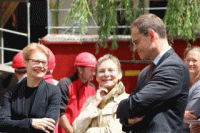 Auf Einladung der Senatorin für Stadtentwicklung und Wohnen, Katrin Lompscher, und im Beisein des Regierenden Bürgermeisters von Berlin, Michael Müller, sowie der Präsidentin der Humboldt-Universität zu Berlin, Prof. Dr.-Ing. Dr. Sabine Kunst und dem Architekten Prof. Hans Nickl von Nickl & Partner, wurde am heutigen Donnerstag, den 13. Juli, Richtfest für den von der Firma Riedel Bau errichteten neuen Forschungsbau von IRIS Adlershof gefeiert.
Auf Einladung der Senatorin für Stadtentwicklung und Wohnen, Katrin Lompscher, und im Beisein des Regierenden Bürgermeisters von Berlin, Michael Müller, sowie der Präsidentin der Humboldt-Universität zu Berlin, Prof. Dr.-Ing. Dr. Sabine Kunst und dem Architekten Prof. Hans Nickl von Nickl & Partner, wurde am heutigen Donnerstag, den 13. Juli, Richtfest für den von der Firma Riedel Bau errichteten neuen Forschungsbau von IRIS Adlershof gefeiert.
mehr...
07.07.2017„Bild Wissen Gestaltung. Ein Interdisziplinäres Labor“ feiert fünfjähriges Bestehen
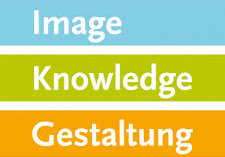 Das Exzellenzcluster "Bild Wissen Gestaltung. Ein Interdisziplinäres Labor“, hat am 7. Juli 2017 sein fünfjähriges Bestehen gefeiert. Das Interdisziplinäre Labor ist ein Zusammenschluss aus Geistes-, Natur- und Technikwissenschaften, der Medizin und der Gestaltungsdisziplinen Design und Architektur. IRIS Adlershof, das mit vier seiner Mitglieder an der interdisziplinären Forschung des Clusters aktiv beteiligt ist, gratuliert herzlich.
Das Exzellenzcluster "Bild Wissen Gestaltung. Ein Interdisziplinäres Labor“, hat am 7. Juli 2017 sein fünfjähriges Bestehen gefeiert. Das Interdisziplinäre Labor ist ein Zusammenschluss aus Geistes-, Natur- und Technikwissenschaften, der Medizin und der Gestaltungsdisziplinen Design und Architektur. IRIS Adlershof, das mit vier seiner Mitglieder an der interdisziplinären Forschung des Clusters aktiv beteiligt ist, gratuliert herzlich.
mehr...
26.06.2017Distinguished Professor Rich Spontak Gast am IRIS Adlershof
 Distinguished Professor Rich Spontak vom Department of Chemical and Biomolecular Engineering der North Carolina State University besucht IRIS Adlershof vom 26. Juni bis 27. Juli als Gastprofessor im Schwerpunktprojekt Experimentalsysteme des Exzellenzclusters Bild Wissen Gestaltung. Professor Spontaks Forschungs-schwerpunkte liegen auf den Gebieten Polymermorphologie und Phasenstabilität, multifunktionelle und nanostrukturierte Polymere, Mischungen und Netzwerke sowie der Anwendung von Mikroskopietechniken in der Polymerwissenschaft und -technik.
Distinguished Professor Rich Spontak vom Department of Chemical and Biomolecular Engineering der North Carolina State University besucht IRIS Adlershof vom 26. Juni bis 27. Juli als Gastprofessor im Schwerpunktprojekt Experimentalsysteme des Exzellenzclusters Bild Wissen Gestaltung. Professor Spontaks Forschungs-schwerpunkte liegen auf den Gebieten Polymermorphologie und Phasenstabilität, multifunktionelle und nanostrukturierte Polymere, Mischungen und Netzwerke sowie der Anwendung von Mikroskopietechniken in der Polymerwissenschaft und -technik.
15.06.2017THE Ranking sieht Humboldt-Universität in den Physical Sciences weiter verbessert
 Die Humboldt-Universität zu Berlin erreichte im aktuellen Times Higher Education (THE) World Reputation Ranking wie im Vorjahr die Gruppe der Plätze 51-60. Im nationalen Vergleich liegt sie damit nach der Ludwig-Maximilians-Universität München zusammen mit der Universität Heidelberg auf dem zweiten Platz. Die strategischen internationalen Partner von IRIS Adlershof und Profilpartner der HU, die Princeton University und die National University of Singapore belegen weltweit die Plätze 7 bzw. 24 (#1 in Asien). In den Physical Sciences hat sich die Humboldt-Universität im aktuellen THE World University Ranking weltweit auf Platz 46 und in Deutschland auf Platz 4 verbessert.
Die Humboldt-Universität zu Berlin erreichte im aktuellen Times Higher Education (THE) World Reputation Ranking wie im Vorjahr die Gruppe der Plätze 51-60. Im nationalen Vergleich liegt sie damit nach der Ludwig-Maximilians-Universität München zusammen mit der Universität Heidelberg auf dem zweiten Platz. Die strategischen internationalen Partner von IRIS Adlershof und Profilpartner der HU, die Princeton University und die National University of Singapore belegen weltweit die Plätze 7 bzw. 24 (#1 in Asien). In den Physical Sciences hat sich die Humboldt-Universität im aktuellen THE World University Ranking weltweit auf Platz 46 und in Deutschland auf Platz 4 verbessert.
12.06.2017Advanced Material Competition 2017
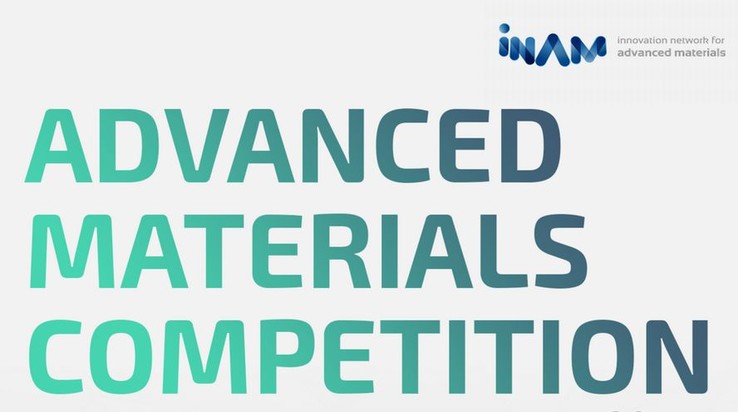 Das Innovation Network for Advanced Materials (INAM) führt vom 25.09. bis 06.10.2017 in Berlin die Advanced Materials Competition (AdMaCom), einen zweiiwöchigen Workshop zur Entwicklung innovativer Produktkonzepte mit internationalen Start-ups durch. Die AdMaCom richtet sich an Startups mit herausragenden Ideen, Technologien und Geschäftsmodellen im Bereich Neuer Materialien und deren Anwendung sowie verwandter digitaler Dienste. Mögliche Anwendungsfelder können Beleuchtung, Displays, Sensoren oder auch Wearables sein. Anmeldungen interssierter Startups sind bis zum 26.07.2017 möglich.
Das Innovation Network for Advanced Materials (INAM) führt vom 25.09. bis 06.10.2017 in Berlin die Advanced Materials Competition (AdMaCom), einen zweiiwöchigen Workshop zur Entwicklung innovativer Produktkonzepte mit internationalen Start-ups durch. Die AdMaCom richtet sich an Startups mit herausragenden Ideen, Technologien und Geschäftsmodellen im Bereich Neuer Materialien und deren Anwendung sowie verwandter digitaler Dienste. Mögliche Anwendungsfelder können Beleuchtung, Displays, Sensoren oder auch Wearables sein. Anmeldungen interssierter Startups sind bis zum 26.07.2017 möglich.
mehr...
30.05.2017Alexander von Humboldt-Professur für Arno Rauschenbeutel
|
Prof. Dr. Arno Rauschenbeutel forscht auf dem Gebiet der experimentellen Quantenoptik. Zu seinen bedeutendsten Arbeiten gehört die Kopplung von einzelnen Atomen und Photonen über optische Lichtleitfasern, wie sie auch in der heutigen Informationsübertragung genutzt werden. Dieser erfolgreiche Ansatz ist ein Meilenstein für die optische Quantentechnologie, die grundlegende Effekte der Quantenphysik in konkrete neue Anwendungen überführen möchte. Mit der Professur „Grundlagen der Optik und Photonik“ für Arno Rauschenbeutel soll auch der Startschuss für das „Berlin Joint Lab for Photonic Quantum Technologies“ gegeben werden. |
 Foto: Jacqueline Godany |
||
|
Das Lab wird die einzigartige Expertise in der Photonik, Optik und Mikrosystemtechnologie mit der Grundlagenforschung in der Quantenphysik auf dem Technologie- und Wissenschaftscampus Berlin-Adlershof der Humboldt-Universität zu Berlin (HU) zusammenführen. . Das Ziel ist es, in enger Kooperation zwischen dem Institut für Physik, dem IRIS Adlershof und außeruniversitären Forschungseinrichtungen, vor allem dem Ferdinand-Braun-Institut, Forschung zu integrierten und praktikablen Quantensystemen voranzutreiben, die dann unmittelbar vor Ort von lokalen Hightech-Unternehmen aufgegriffen werden können. Damit positioniert sich die HU auch in Vorbereitung auf das neue EU-Milliarden-Programm Quantum Technologies als eine treibende Kraft für neue photonische Quantentechnologien. mehr... |
|||
27.04.2017Prof. Yan Lu neues Mitglied von IRIS Adlershof
 Yan Lu ist neues Mitglied von IRIS Adlershof. Sie war bislang als HZB-Nachwuchsgruppenleiterin an IRIS assoziiert und hat im April 2017 eine W2-S-Professur für "Polymerbasierte Hybridmaterialien" an der Universität Potsdam angetreten. Ihre neue Position ist verbunden mit der Leitung einer Arbeitsgruppe am Helmholtz-Zentrum Berlin für Materialien und Energie GmbH. Dort forscht sie auf dem Gebiet der Kolloidchemie mit Schwerpunkt auf Synthese und Chrarakterisierung hybrider funktionaler Materialien.
Yan Lu ist neues Mitglied von IRIS Adlershof. Sie war bislang als HZB-Nachwuchsgruppenleiterin an IRIS assoziiert und hat im April 2017 eine W2-S-Professur für "Polymerbasierte Hybridmaterialien" an der Universität Potsdam angetreten. Ihre neue Position ist verbunden mit der Leitung einer Arbeitsgruppe am Helmholtz-Zentrum Berlin für Materialien und Energie GmbH. Dort forscht sie auf dem Gebiet der Kolloidchemie mit Schwerpunkt auf Synthese und Chrarakterisierung hybrider funktionaler Materialien.
27.04.2017Call for applications: Postdoc fellowships in Analytical Sciences
 The School of Analytical Sciences Adlershof (SALSA) at Humboldt-Universität Berlin is announcing a call for postdoc fellowships in selected areas of Analytical Sciences. Research areas of interest include nanoanalytics, x-ray structure analysis, inorganic mass spectrometry, ambient mass spectrometry, plasmon enhanced nanospectroscopy and in situ optical spectroscopies. Candidates should apply with their own project in the research areas named above and take into account the research of the hosting groups. Please apply via email only. Detailed information on the application process and requirements, on project areas defined by the hosting groups and on the conditions of the fellowship can be found here.
The School of Analytical Sciences Adlershof (SALSA) at Humboldt-Universität Berlin is announcing a call for postdoc fellowships in selected areas of Analytical Sciences. Research areas of interest include nanoanalytics, x-ray structure analysis, inorganic mass spectrometry, ambient mass spectrometry, plasmon enhanced nanospectroscopy and in situ optical spectroscopies. Candidates should apply with their own project in the research areas named above and take into account the research of the hosting groups. Please apply via email only. Detailed information on the application process and requirements, on project areas defined by the hosting groups and on the conditions of the fellowship can be found here.
25.04.2017IRIS-Gründungssprecher Prof. Jürgen P. Rabe zum Vorsitzenden des Konzils der HU gewählt.
|
Professor Jürgen P. Rabe, Physiker, Material- und Nanowissenschaftler am Institut für Physik sowie Gründungssprecher von IRIS Adlershof, ist zum neuen Vorsitzenden des Konzils der Humboldt-Universität zu Berlin (HU) gewählt worden. Seine Stellvertreterinnen sind Heidi Neugebauer, Maren Huberty und Christine Ilgert. IRIS Adlershof gratuliert Herrn Rabe herzlich und wünscht ihm in seiner neuen, zusätzlichen Funktion viel Erfolg. mehr... |
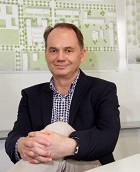 Prof. Jürgen P. Rabe Foto: Ralph Bergel |
22.04.201722. Berliner Tag der Mathematik auf dem Campus Adlershof der HU
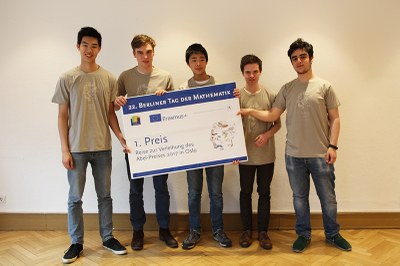 Team Die Hankinators 2.0: John Huynh, Julius Paul Russmann, Hanke Guo, Paul Barth und Arman Pour Tak Dost (v.l.n.r.) Foto: Nora Butter, IRIS Adlershof |
Knapp 1.000 Berliner und Brandenburger Schülerinnen und Schüler haben am 22. April 2017 beim jährlich stattfindenden Berliner Tag der Mathematik auf dem Campus Adlershof der Humboldt-Universität zu Berlin (HU) teilgenommen. Gewonnen hat das Team Die Hankinators 2.0 vom Herder-Gymnasium in Berlin-Charlottenburg. Wie die Siegerteams aus den Jahren zuvor, reisen sie nach Oslo zur Verleihung des Abelpreises 2017, eine der weltweit bedeutendsten Auszeichnungen in der Mathematik. Der Schülerwettbewerb wurde in diesem Jahr mit großer Unterstützung von IRIS Adlershof organisiert. mehr... |
18.04.2017Regierender Bürgermeister besucht den Wissenschafts- und Wirtschaftstandort Adlershof
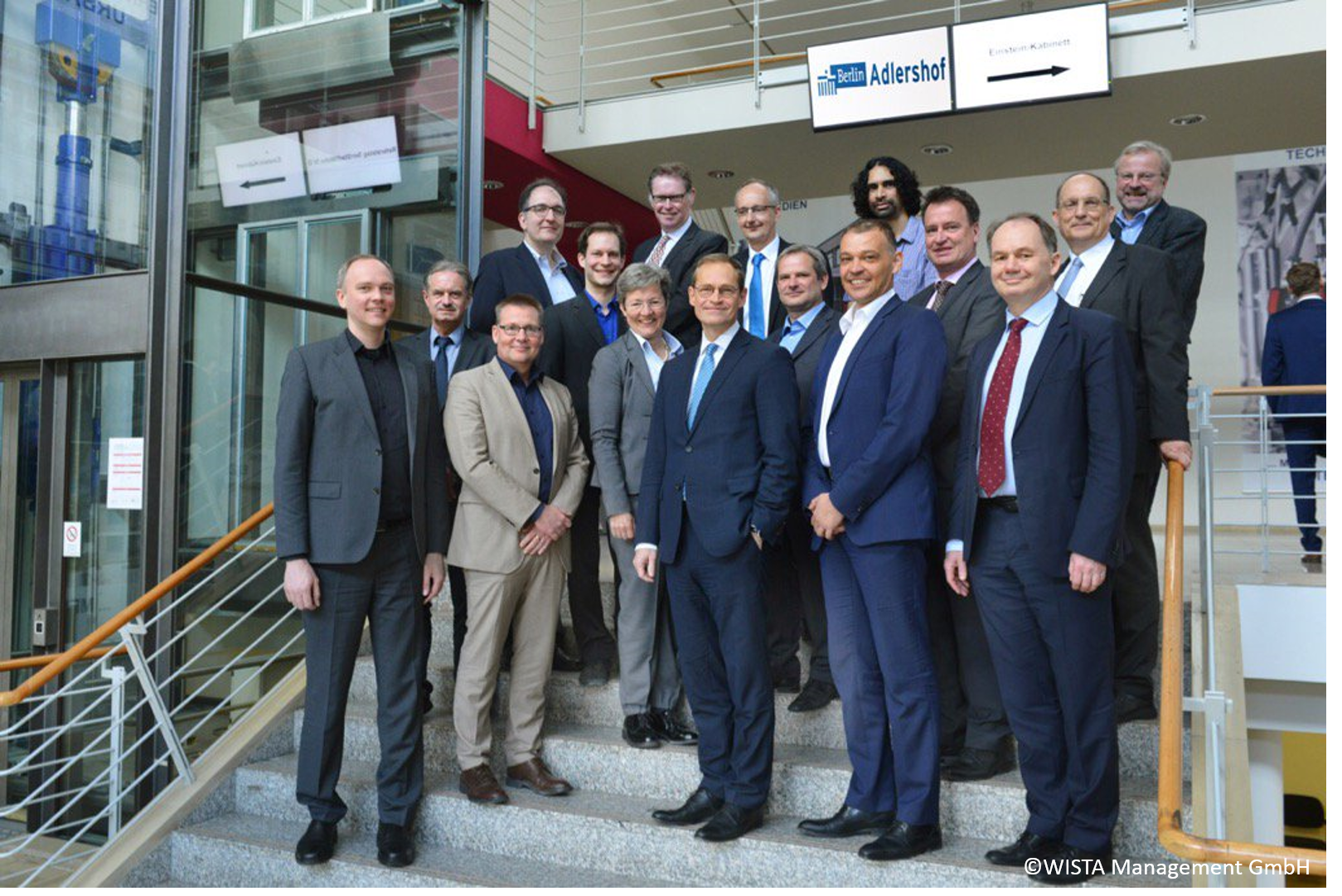 Am 18. April traf Berlins Regierender Bügermeister und Wissenschaftssentor Michael Müller im Technologiepark Adlershofer Standortpartner. Der Besuch stand unter dem Motto: „Wachstumsbeschleuniger Adlershof - Wie aus Wissenschaft Wirtschaft wird“. Unter den Teilnehmern war auch der Gründungssprecher von IRIS Adlershof, Prof. Jürgen P. Rabe.
Am 18. April traf Berlins Regierender Bügermeister und Wissenschaftssentor Michael Müller im Technologiepark Adlershofer Standortpartner. Der Besuch stand unter dem Motto: „Wachstumsbeschleuniger Adlershof - Wie aus Wissenschaft Wirtschaft wird“. Unter den Teilnehmern war auch der Gründungssprecher von IRIS Adlershof, Prof. Jürgen P. Rabe.
mehr...
03.04.2017Einstein Center Digital Future eröffnet
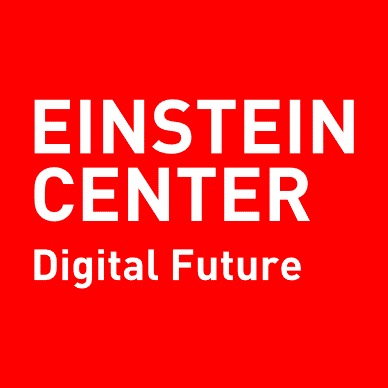 Am 03. April 2017 wurde das Einstein Center Digital Future (ECDF) im Robert-Koch-Forum in der Wilhelmstraße im Berliner Bezirk Mitte eröffnet. Fünfzig neue Professuren werden im Kernbereich Digitale Infrastruktur, Methoden und Algorithmen sowie in den Innovationsbereichen Digitale Gesundheit, Digitale Gesellschaft und Geisteswissenschaften sowie Digitale Industrie und Dienstleistungen eingerichtet. Insgesamt fließen 38,5 Millionen Euro in das Projekt. Sprecher des ECDF ist Prof. Dr. Odej Kao von der Technischen Universität Berlin. Johann-Christoph Freytag, Professor für Informatik an der Humboldt-Universität zu Berlin und Mitglied von IRIS Adlershof, ist Sprecher für den Bereich Digitale Infrastruktur, Methoden und Algorithmen.
Am 03. April 2017 wurde das Einstein Center Digital Future (ECDF) im Robert-Koch-Forum in der Wilhelmstraße im Berliner Bezirk Mitte eröffnet. Fünfzig neue Professuren werden im Kernbereich Digitale Infrastruktur, Methoden und Algorithmen sowie in den Innovationsbereichen Digitale Gesundheit, Digitale Gesellschaft und Geisteswissenschaften sowie Digitale Industrie und Dienstleistungen eingerichtet. Insgesamt fließen 38,5 Millionen Euro in das Projekt. Sprecher des ECDF ist Prof. Dr. Odej Kao von der Technischen Universität Berlin. Johann-Christoph Freytag, Professor für Informatik an der Humboldt-Universität zu Berlin und Mitglied von IRIS Adlershof, ist Sprecher für den Bereich Digitale Infrastruktur, Methoden und Algorithmen.
mehr...
01.04.2017IRIS Nachwuchsgruppenleiterin Yan Lu zur Universitätsprofessorin in Potsdam ernannt
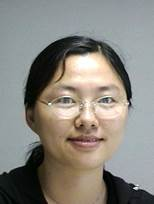 Frau Dr. Yan Lu, Nachwuchsgruppenleiterin am Helmholtz-Zentrum Berlin für Materialien und Energie GmbH (HZB) sowie am IRIS Adlershof ist zur W2-S-Professorin an der Universität Potsdam ernannt worden. Die Professur ist verbunden mit der Leitung einer Forschungsgruppe am Institut für Weiche Materie und Funktionale Materialien am HZB. Dort beschäftigt sich Frau Lu insbesondere mit Design und Synthese von Kolloid-Partikeln für maßgeschneiderte mesoskopische Strukturen sowie mit organisch / anorganischen Hybrid Partikeln und deren Anwendung als Energiespeicher, Katalysatoren, Sensoren und Solarzellen. IRIS Adlershof gratuliert Frau Professorin Lu ganz herzlich und freut sich auf die weitere fruchtbringende Zusammenarbeit.
Frau Dr. Yan Lu, Nachwuchsgruppenleiterin am Helmholtz-Zentrum Berlin für Materialien und Energie GmbH (HZB) sowie am IRIS Adlershof ist zur W2-S-Professorin an der Universität Potsdam ernannt worden. Die Professur ist verbunden mit der Leitung einer Forschungsgruppe am Institut für Weiche Materie und Funktionale Materialien am HZB. Dort beschäftigt sich Frau Lu insbesondere mit Design und Synthese von Kolloid-Partikeln für maßgeschneiderte mesoskopische Strukturen sowie mit organisch / anorganischen Hybrid Partikeln und deren Anwendung als Energiespeicher, Katalysatoren, Sensoren und Solarzellen. IRIS Adlershof gratuliert Frau Professorin Lu ganz herzlich und freut sich auf die weitere fruchtbringende Zusammenarbeit.28.03.2017Wan-Ing Lin hat ihre Dissertation "Enhanced Raman Scattering of Molecular Monolayers" erfolgreich verteidigt
 IRIS Nachwuchswissenschaftlerin Wan-Ing Lin hat ihre Dissertation Enhanced Raman Scattering of Molecular Monolayers erfolgreich verteidigt. Ihre Arbeit wurde von IRIS-Gründungssprecher Prof. Jürgen P. Rabe und Prof. Renato Zenobi (ETH Zürich) im Rahmen der
IRIS Nachwuchswissenschaftlerin Wan-Ing Lin hat ihre Dissertation Enhanced Raman Scattering of Molecular Monolayers erfolgreich verteidigt. Ihre Arbeit wurde von IRIS-Gründungssprecher Prof. Jürgen P. Rabe und Prof. Renato Zenobi (ETH Zürich) im Rahmen der
SALSA School of Analytical Sciences Adlershof
betreut.
Glückwunsch!
03.03.2017Manuel Gensler hat seine Dissertation "Binding forces in metallo-supramolecular coordination compounds" erfolgreich verteidigt
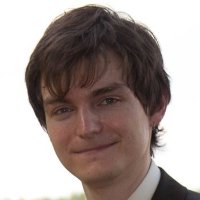 IRIS Nachwuchswissenschaftler Manuel Gensler hat seine Dissertation Binding forces in metallo-supramolecular coordination compounds erfolgreich verteidigt. Seine Arbeit wurde von IRIS-Gründungssprecher Prof. Jürgen P. Rabe im Rahmen des
IRIS Nachwuchswissenschaftler Manuel Gensler hat seine Dissertation Binding forces in metallo-supramolecular coordination compounds erfolgreich verteidigt. Seine Arbeit wurde von IRIS-Gründungssprecher Prof. Jürgen P. Rabe im Rahmen des
Integrierten Graduiertenkolleg des SFB 765
Multivalenz als chemisches Organisations- und Wirkprinzip:
Neue Architekturen, Funktionen und Anwendungen
betreut.
Glückwunsch!
24.02.2017Tobias Liebig hat seine Dissertation "Optomechanical properties of macromolecules on solid surfaces" erfolgreich verteidigt
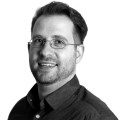 IRIS Nachwuchswissenschaftler Tobias Liebig hat seine Dissertation Optomechanical properties of macromolecules on solid surfaces erfolgreich verteidigt. Seine Arbeit wurde von IRIS-Gründungssprecher Prof. Jürgen P. Rabe im Rahmen der
IRIS Nachwuchswissenschaftler Tobias Liebig hat seine Dissertation Optomechanical properties of macromolecules on solid surfaces erfolgreich verteidigt. Seine Arbeit wurde von IRIS-Gründungssprecher Prof. Jürgen P. Rabe im Rahmen der
International Research Training Group 1524
Self-Assembled Soft Matter Nano-Structures at Interfaces
betreut.
Glückwunsch!
22.02.2017Dr. Raphael Schlesingers Dissertation in der Buchreihe Springer Theses erschienen
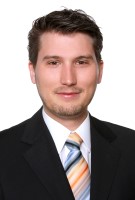 Dr. Raphael Schlesingers Dissertation wurde von Springer Theses, einer Buchserie zur Anerkennung herausragender Forschungsleistungen während der Promotion, zur Veröffentlichung ausgewählt. Herr Schlesinger führte seine Forschungsarbeiten im Rahmen des SFB951 am Institut für Physik und am IRIS Adlershof der Humboldt-Universität zu Berlin durch und wurde dabei vom stellvertretenden IRIS-Sprecher Prof. Norbert Koch betreut. Die Arbeit befasst sich mit grundlegenden Mechanismen, welche die Energieniveaus an hybriden organisch anorganischen Grenzflächen bestimmen, und entwickelt Methoden, um diese gezielt zu beeinflussen. Diese Erkenntnisse bereiten den Weg für eine neuartige technologische Kontrolle dieser Systeme und ermöglichen es, sie in zukünftigen Bauelementen und Anwendungen einzusetzen. Dr. Raphael Schlesingers Dissertation wurde von Springer Theses, einer Buchserie zur Anerkennung herausragender Forschungsleistungen während der Promotion, zur Veröffentlichung ausgewählt. Herr Schlesinger führte seine Forschungsarbeiten im Rahmen des SFB951 am Institut für Physik und am IRIS Adlershof der Humboldt-Universität zu Berlin durch und wurde dabei vom stellvertretenden IRIS-Sprecher Prof. Norbert Koch betreut. Die Arbeit befasst sich mit grundlegenden Mechanismen, welche die Energieniveaus an hybriden organisch anorganischen Grenzflächen bestimmen, und entwickelt Methoden, um diese gezielt zu beeinflussen. Diese Erkenntnisse bereiten den Weg für eine neuartige technologische Kontrolle dieser Systeme und ermöglichen es, sie in zukünftigen Bauelementen und Anwendungen einzusetzen.IRIS Adlershof gratuliert herzlich und wünscht Herrn Schlesinger viel Erfolg in seiner weiteren Arbeit. |
Dr. R. Schlesinger
Energy-Level Control at Hybrid Inorganic/Organic Semiconductor Interfaces
ISBN 978-3-319-46623-1 (Print)
ISBN 978-3-319-46624-8 (Online)
17.02.20177. „Nano and Photonics“ Meeting auf Schloss Mauterndorf, Österreich
Das 7. „Nano and Photonics Meeting” im Schloss Mauterndorf vom 22.3.-25.3.2017 wird gemeinsam von Wolfgang Knoll (Austrian Institute of Technology), Franz Aussenegg (Universität Graz und Erwin-Schrödinger Institut) und Emil J.W. List-Kratochvil (Humboldt-Universität zu Berlin und Mitglied von IRIS Adlershof)) organisiert.
Das diesjährige Programm wurde mit einem Fokus auf „Sensing applications based on plasmonic nanostructures“ zusammengestellt. Zu den eingeladenen Referenten gehören N. Halas von der Rice University, E. Maillart von HORIBA (Jobin-Yvon, Paris / FRA) und G. Strasser von der TU Wien.
Ziel dieser Veranstaltung ist es, ein internationales wissenschaftliches Treffen für alle, die in photonischer Anwendungen der modernen Nanotechnologie interessiert sind, zu organisieren. Damit soll auch eine informelle, europaweite Diskussionsplattform über den aktuellen Stand der Technik, sowohl in der Grundlagenforschung an den verschiedenen Universitäten, als auch in der industriellen Forschung und Entwicklung, geschaffen werden. Die Örtlichkeit, Schloss Mauterndorf, bietet das ideale Umfeld, um das gesamte Themenspektrum ohne jeglichen Zeitdruck zu diskutieren, insbesondere zwischen den Vormittags- und Nachmittags-Sessions sowie am Abend. In diesem Jahr werden 70 Teilnehmer aus 8 verschiedenen Ländern erwartet.
30.01.2017GLAD ermöglicht neuen organischen Datenspeicher
In ihrem neuesten News-Beitrag berichtet nanotechweb.org (IOP Publishing) über einen Nano Letters Artikel von Giovanni Ligorio, Marco Vittorio Nardi, und Norbert Koch, Mitglied von IRIS Adlershof:
"Researchers in Germany have used a technique called glancing angle deposition (GLAD) to fabricate non-volatile memory devices that are smaller than 100nm2. When integrated into the appropriate architectures, these devices have a memory density of more than 1 GB/cm2. They could be used in high-density, high-speed and low-power memories of the future."
(deutsch: Forscher in Deutschland haben eine Technik namens Blickwinkelablagerung verwendet, um nichtflüchtige Speichervorrichtungen herzustellen, die kleiner als 100 nm² sind. Wenn sie in die entsprechenden Architekturen integriert sind, weisen diese Geräte eine Speicherdichte von mehr als 1 GB/cm2 auf. Sie könnten in den hochkompakten, ultraschnellen und energiesparenden Speichern der Zukunft eingesetzt werden.)
mehr...
Lithography-Free Miniaturization of Resistive Nonvolatile Memory Devices to the 100 nm Scale by Glancing Angle Deposition
G. Ligorio, M.V. Nardi, N. Koch
Nano Lett., Article published online
23.12.2016Farb-Dualität von Photonen - ein APS Highlight des Jahres 2016
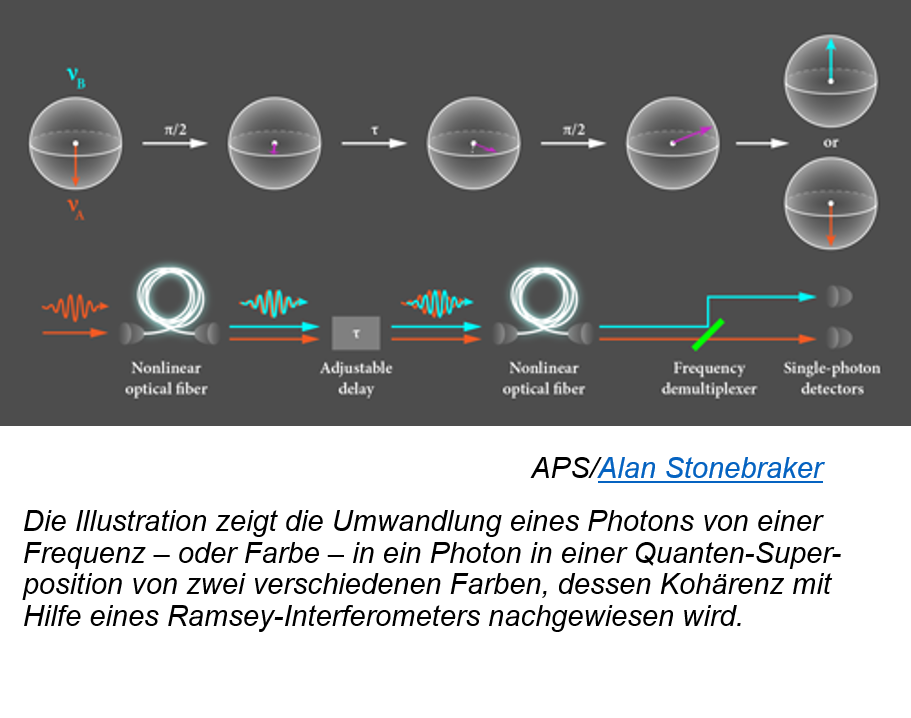 Die Physical Review Letters Publikation “Ramsey Interference with Single Photons”[1] und der begleitende Viewpoint “Photon Qubit is Made of Two Colors”[2] sind als eines der “Highlights of the Year 2016” von APS Physics ausgewählt worden. Einer der Autoren dieser Arbeit ist Dr. Sven Ramelow, der seit kurzem eine Emmy-Noether-Gruppe am Institut für Physik der Humboldt Universität leitet und als Nachwuchsgruppenleiter am IRIS Adlershof assoziiert ist. Während im letzten Jahr wieder sehr viele Meilensteine in der Physik in PRL publiziert wurden, begründete APS Physics die Auswahl: “Es ist keine Überraschung, dass der Nachweis von Gravitationswellen durch LIGO an der Spitze der Liste unserer Highlights steht. Die anderen Plätze gingen an Arbeiten, die einen besonderen Perspektivwechsel markierten, eine besonders beeindruckenden experimentelle Leistung demonstrierten oder uns einfach zum Nachdenken brachten."
Die Physical Review Letters Publikation “Ramsey Interference with Single Photons”[1] und der begleitende Viewpoint “Photon Qubit is Made of Two Colors”[2] sind als eines der “Highlights of the Year 2016” von APS Physics ausgewählt worden. Einer der Autoren dieser Arbeit ist Dr. Sven Ramelow, der seit kurzem eine Emmy-Noether-Gruppe am Institut für Physik der Humboldt Universität leitet und als Nachwuchsgruppenleiter am IRIS Adlershof assoziiert ist. Während im letzten Jahr wieder sehr viele Meilensteine in der Physik in PRL publiziert wurden, begründete APS Physics die Auswahl: “Es ist keine Überraschung, dass der Nachweis von Gravitationswellen durch LIGO an der Spitze der Liste unserer Highlights steht. Die anderen Plätze gingen an Arbeiten, die einen besonderen Perspektivwechsel markierten, eine besonders beeindruckenden experimentelle Leistung demonstrierten oder uns einfach zum Nachdenken brachten."
Nicht ganz zufällig arbeitet Dr. Sven Ramelow an Ideen und Experimenten, die gerade auf dieser Arbeit aufbauen. Er freut sich schon auf deren Implementierung am Institut für Physik und am IRIS Adlershof sowie auf entsprechende neue, faszinierende Ergebnisse. Wir freuen uns mit und gratulierem dem Autor herzlich.
[1] “Ramsey Interference with Single Photons”, Stéphane Clemmen, Alessandro Farsi, Sven Ramelow, Alexander L. Gaeta, Phys. Rev. Lett. 117, 223601 (2016)
[2] Viewpoint: Photon Qubit is Made of Two Colors, Philipp Treutlein, Physics 9, 135 (2016)
12.12.2016Licht kontrolliert die Reparatur von Materialien
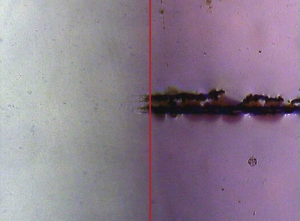 Ein Team unter Leitung von Forschern der Humboldt-Universität zu Berlin hat erstmals Kunststoffbeschichtungen entwickelt, die mit Hilfe von Licht gezielt Beschädigungen heilen können. Eine durch Erwärmen hervorgerufene Selbstausbesserung des Materials findet nur dort statt, wo die beschädigte Stelle vorher mit Licht einer bestimmten Farbe beleuchtet wurde.
Ein Team unter Leitung von Forschern der Humboldt-Universität zu Berlin hat erstmals Kunststoffbeschichtungen entwickelt, die mit Hilfe von Licht gezielt Beschädigungen heilen können. Eine durch Erwärmen hervorgerufene Selbstausbesserung des Materials findet nur dort statt, wo die beschädigte Stelle vorher mit Licht einer bestimmten Farbe beleuchtet wurde.
mehr...
07.12.2016Prof. Christoph T. Koch und Prof. Nicola Pinna neue Mitglieder von IRIS Adlershof
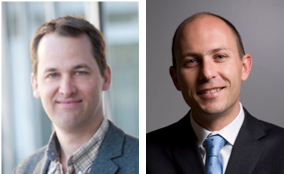 Christoph T. Koch (linkes Foto), seit August 2015 Professor für Strukturforschung und Elektronenmikroskopie am Institut für Physik der Humboldt-Universität zu Berlin und Nicola Pinna, seit Juli 2012 Professor für Funktionale Materialien am Institut für Chemie der Humboldt-Universität zu Berlin, sind neue Mitglieder von IRIS Adlershof. Herrn Kochs Forschungsschwerpunkt liegt in der Entwicklung neuer Methoden der quantitativen Transmissions-Elektronenmikroskopie (TEM) und ihrer Anwendung auf materialwissenschaftliche Fragestellungen. Im Mittelpunkt von Herrn Pinnas Forschungsinteressen stehen nanostrukturierte Materialien. Dabei liegt ein besonderer Schwerpunkt auf der Synthese neuartiger multifunktionaler Materialien sowie deren Charakterisierung. IRIS Adlershof freut sich sehr auf die Zusammenarbeit mit seinen beiden neuen Mitgliedern und gratuliert herzlich.
Christoph T. Koch (linkes Foto), seit August 2015 Professor für Strukturforschung und Elektronenmikroskopie am Institut für Physik der Humboldt-Universität zu Berlin und Nicola Pinna, seit Juli 2012 Professor für Funktionale Materialien am Institut für Chemie der Humboldt-Universität zu Berlin, sind neue Mitglieder von IRIS Adlershof. Herrn Kochs Forschungsschwerpunkt liegt in der Entwicklung neuer Methoden der quantitativen Transmissions-Elektronenmikroskopie (TEM) und ihrer Anwendung auf materialwissenschaftliche Fragestellungen. Im Mittelpunkt von Herrn Pinnas Forschungsinteressen stehen nanostrukturierte Materialien. Dabei liegt ein besonderer Schwerpunkt auf der Synthese neuartiger multifunktionaler Materialien sowie deren Charakterisierung. IRIS Adlershof freut sich sehr auf die Zusammenarbeit mit seinen beiden neuen Mitgliedern und gratuliert herzlich.
23.11.2016Dr. Lorenzo Bianchi erhält den Carl-Ramsauer-Preis 2016
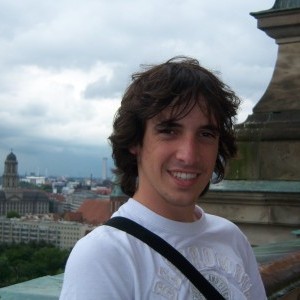 Dr. Lorenzo Bianchi, ehemaliges Mitglied der Emmy Noether Nachwuchsgruppe von Frau Dr. Valentina Forini in der Arbeitsgruppe von Prof. Jan Plefka, Mitglied von IRIS Adlershof, wird für seine herausragende Dissertation "Perturbation theory for string sigma models" mit dem Carl-Ramsauer-Preis 2016 der Physikalischen Gesellschaft zu Berlin ausgezeichnet. Durch die Entwicklung neuer, leistungsstarker Techniken konnte die Arbeit dazu beitragen, störungstheoretische Berechnungen in der Stringtheorie wesentlich zu vereinfachen. Unter Verwendung dieser innovativen Verfahren wurden mehrere neue Ergebnisse im starken Kopplungsregime der AdS/CFT-Korrespondenz gewonnen. IRIS Adlershof gratuliert Herrn Bianchi herzlich.
Dr. Lorenzo Bianchi, ehemaliges Mitglied der Emmy Noether Nachwuchsgruppe von Frau Dr. Valentina Forini in der Arbeitsgruppe von Prof. Jan Plefka, Mitglied von IRIS Adlershof, wird für seine herausragende Dissertation "Perturbation theory for string sigma models" mit dem Carl-Ramsauer-Preis 2016 der Physikalischen Gesellschaft zu Berlin ausgezeichnet. Durch die Entwicklung neuer, leistungsstarker Techniken konnte die Arbeit dazu beitragen, störungstheoretische Berechnungen in der Stringtheorie wesentlich zu vereinfachen. Unter Verwendung dieser innovativen Verfahren wurden mehrere neue Ergebnisse im starken Kopplungsregime der AdS/CFT-Korrespondenz gewonnen. IRIS Adlershof gratuliert Herrn Bianchi herzlich.
17.11.2016Claire Glanois erhält Humboldt-Forschungsstipendium
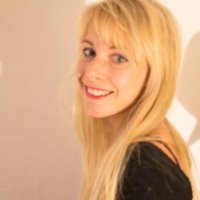 Dr. Claire Glanois ist Empfängerin eines Alexander von Humboldt-Forschungsstipendiums für Postdoktoranden. Sie wird ab April 2017 in der Gruppe von Prof. Dirk Kreimer, Mitglied von IRIS Adlershof, an der Humboldt-Universität arbeiten. Dr Glanois promovierte im Januar 2016 in Mathematik an der Universität Pierre et Marie Curie (Paris) und ist seitdem Postdoktorandin am MPI Mathematik (Bonn). Die Zahlentheoretikerin beschaeftigt sich mit den Perioden wie sie in Rechnungen in der Quantenfeldtheorie auftreten, ein zentrales Forschungsthema in Prof. Kreimers Arbeitsgruppe.
Dr. Claire Glanois ist Empfängerin eines Alexander von Humboldt-Forschungsstipendiums für Postdoktoranden. Sie wird ab April 2017 in der Gruppe von Prof. Dirk Kreimer, Mitglied von IRIS Adlershof, an der Humboldt-Universität arbeiten. Dr Glanois promovierte im Januar 2016 in Mathematik an der Universität Pierre et Marie Curie (Paris) und ist seitdem Postdoktorandin am MPI Mathematik (Bonn). Die Zahlentheoretikerin beschaeftigt sich mit den Perioden wie sie in Rechnungen in der Quantenfeldtheorie auftreten, ein zentrales Forschungsthema in Prof. Kreimers Arbeitsgruppe.
15.11.2016Dr. Ludwig Kronthaler zum Vizepräsidenten für Haushalt, Personal und Technik gewählt
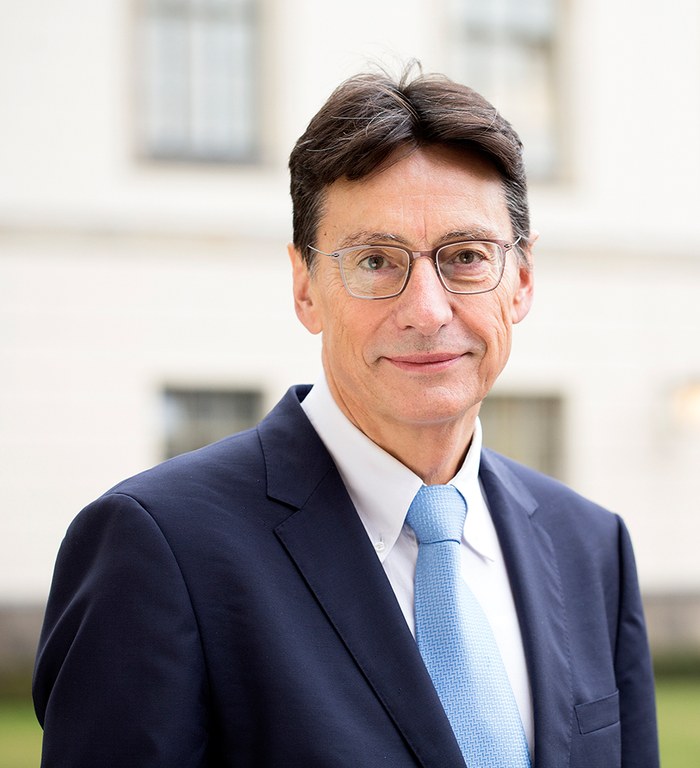
Abbildung: Matthias Heyde
„Ich freue mich sehr über diese Wahl und bin dankbar für das in mich gesetzte Vertrauen“, sagt Ludwig Kronthaler. Im Bereich Verwaltung, Technik, Service steht für ihn im Vordergrund, „Wissenschaft optimal zu ermöglichen“, was eine komplexe Herausforderung sei. Kern sei, dass die Verwaltung die Wissenschaft verstehen muss und ihr Partner auf Augenhöhe sein sollte.
IRIS Adlershof gratuliert sehr herzlich und freut sich auf eine erfolgreiche Zusamenarbeit.
mehr...
10.11.2016"Lukrative Quantentechnologie ist schon unter uns" - Interview mit IRIS-Mitglied Prof. Thomas Elsässer
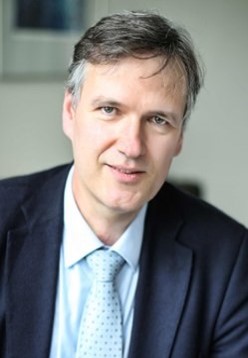 Im Rahmen der Science Week richtet die Humboldt-Universität zu Berlin (HU) am 10. November die Next Frontier Debate aus. Bei der Podiumsdiskussion im Tieranatomischen Theater sprechen Prof. Dr. Birgitta Whaley (University of California, Berkeley), sowie die Mitglieder von IRIS Adlershof Prof. Dr. Oliver Benson und Prof. Dr. Thomas Elsässer über den Stand der Quantenforschung, unterschiedliche Ansätze und Perspektiven auf zukünftige Entwicklungen. Im Vorfeld gibt Prof. Elsässer im Interview Einblicke in den Forschungsbereich.
Im Rahmen der Science Week richtet die Humboldt-Universität zu Berlin (HU) am 10. November die Next Frontier Debate aus. Bei der Podiumsdiskussion im Tieranatomischen Theater sprechen Prof. Dr. Birgitta Whaley (University of California, Berkeley), sowie die Mitglieder von IRIS Adlershof Prof. Dr. Oliver Benson und Prof. Dr. Thomas Elsässer über den Stand der Quantenforschung, unterschiedliche Ansätze und Perspektiven auf zukünftige Entwicklungen. Im Vorfeld gibt Prof. Elsässer im Interview Einblicke in den Forschungsbereich.
mehr...
18.10.2016Licht für neue Anwendungen in Form bringen - Neuer Forscherverbund zu Photonischen Nano-Filmen
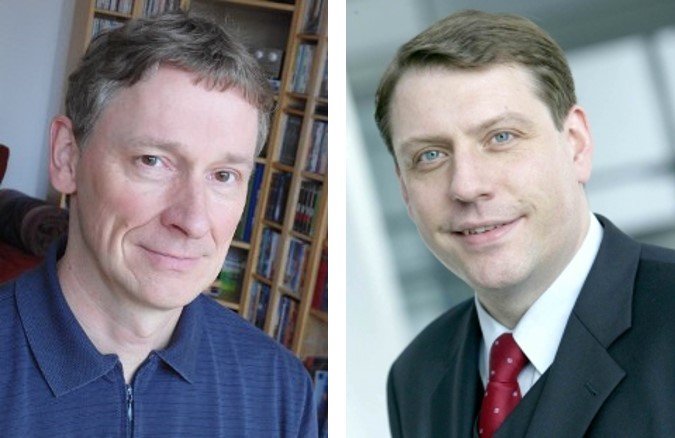 Das BMBF fördert das von der Friedrich-Schiller-Universität Jena koordinierte Forschungsverbundprojekt „Nano-Film – Photonische Nano-Filme mit umfassender optischer Funktionalität“ in den kommenden drei Jahren mit knapp zwei Millionen Euro. Seitens der Humboldt-Universität zu Berlin sind das Mitglied von IRIS Adlershof, Prof. Oliver Benson (links im Bild) sowie Prof. Kurt Busch beteiligt.
Das BMBF fördert das von der Friedrich-Schiller-Universität Jena koordinierte Forschungsverbundprojekt „Nano-Film – Photonische Nano-Filme mit umfassender optischer Funktionalität“ in den kommenden drei Jahren mit knapp zwei Millionen Euro. Seitens der Humboldt-Universität zu Berlin sind das Mitglied von IRIS Adlershof, Prof. Oliver Benson (links im Bild) sowie Prof. Kurt Busch beteiligt.
mehr...
09.10.2016Humboldt-Forschungsstipendium für Prof. Karen Yeats
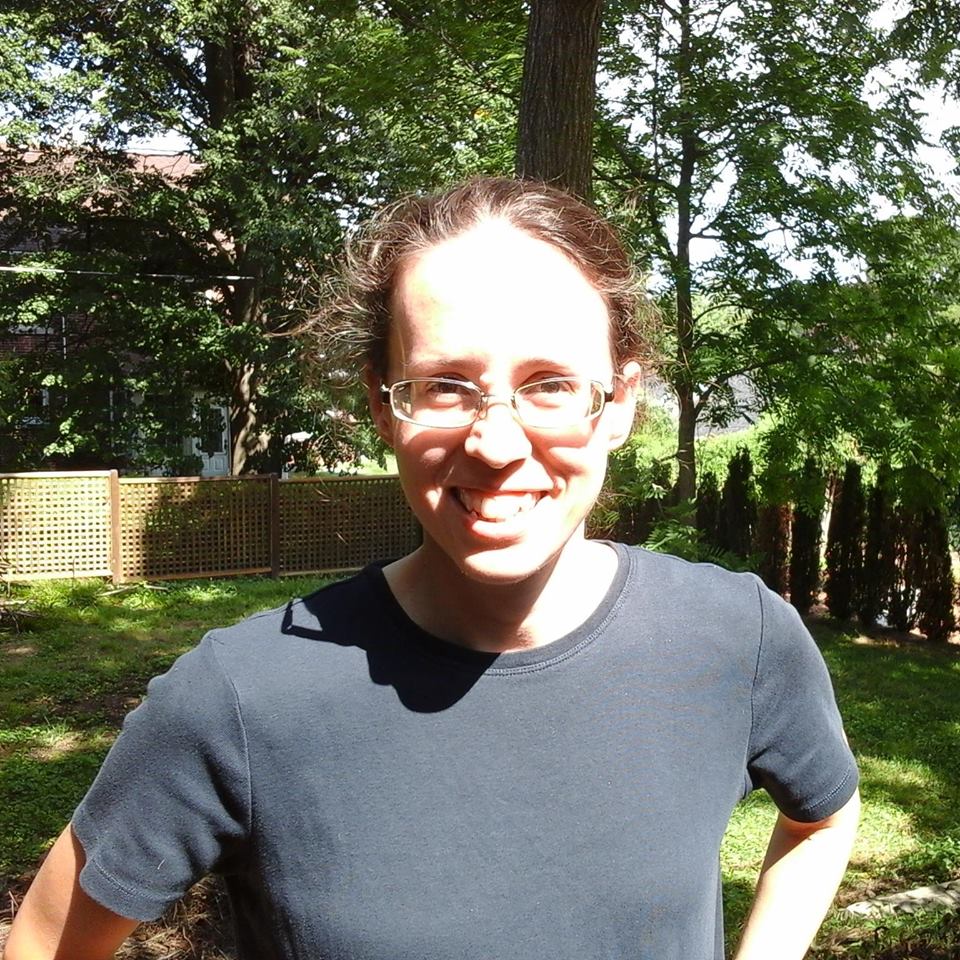 Professor Karen Yeats ist Empfängerin eines Alexander von Humboldt-Forschungsstipendiums für erfahrene Wissenschaftler. Sie wird drei Monate im Sommer 2017, und zwölf Monate in den Jahren 2018-2019 in der Gruppe von Prof. Dirk Kreimer, Mitglied von IRIS Adlershof, an der Humboldt-Universität verbringen.
Professor Karen Yeats ist Empfängerin eines Alexander von Humboldt-Forschungsstipendiums für erfahrene Wissenschaftler. Sie wird drei Monate im Sommer 2017, und zwölf Monate in den Jahren 2018-2019 in der Gruppe von Prof. Dirk Kreimer, Mitglied von IRIS Adlershof, an der Humboldt-Universität verbringen.
Seit August 2016 ist Karen Yeats Professorin in der Kombinatorik im Mathematik Department an der Universität Waterloo, wo sie 2003 auch ihren Bachelor in reiner Mathematik erwarb. Nach ihrer Doktorarbeit an der Universität Boston zu Dyson Schwinger Gleichungen in 2008 begann sie 2009 als Professorin an der Simon Fraser Universität. Ihre Forschungsinteressen fokussieren sich auf die mathematischen Grundlagen von Dyson--Schwinger Gleichungen und Quantenfeldtheorie und auf Feynman Integrale. In ihren Arbeiten verbindet sie algebraische Kombinatorik, Graphentheorie und algebraische Geometrie mit mathematischer Physik.
30.09.2016Neue Emmy-Noether-Nachwuchsgruppe "Quanten-Bildgebung und Spektroskopie im Mittleren Infrarot“ für Herrn Dr. Sven Ramelow
 Dr. Sven Ramelow wird als Emmy-Noether-Fellow ab Herbst diesen Jahres seine Gruppe zum Thema "Quanten-Bildgebung und Spektroskopie im Mittleren Infrarot“ am Institut für Physik der Humboldt-Universität zu Berlin etablieren. Hier wird er inhaltlich eng mit der von Prof. Oliver Benson, Mitglied von IRIS Adlershof, geleiteten Arbeitsgruppe Nano-Optik zusammenarbeiten. Herr Ramelow war zuvor an der Universität Wien (Österreich) und der Cornell Universität (NY, USA) zu experimentellen Themen der nichtlinearen Quantenoptik mit einzelnen Photonen tätig.
Dr. Sven Ramelow wird als Emmy-Noether-Fellow ab Herbst diesen Jahres seine Gruppe zum Thema "Quanten-Bildgebung und Spektroskopie im Mittleren Infrarot“ am Institut für Physik der Humboldt-Universität zu Berlin etablieren. Hier wird er inhaltlich eng mit der von Prof. Oliver Benson, Mitglied von IRIS Adlershof, geleiteten Arbeitsgruppe Nano-Optik zusammenarbeiten. Herr Ramelow war zuvor an der Universität Wien (Österreich) und der Cornell Universität (NY, USA) zu experimentellen Themen der nichtlinearen Quantenoptik mit einzelnen Photonen tätig.Das erste zentrale Ziel der Arbeitsgruppe wird es sein, quanten-optisch basierte Bildgebung und Spektroskopie im technologisch hoch-relavanten mittleren Infrarot erstmalig umzusetzen und als Methode zu etablieren. Ein besonderer Fokus wird sowohl in der Erschliessung von konkreten Anwendungen im bio-medizinischen Bereich liegen, als auch grundlegend zu erforschen und experimentell zu demonstrieren, wie fundamentale Grenzen der klassischen Optik durch quanten-optische Methoden überwunden werden können. IRIS Adlershof gratuliert herzlich und wünscht Herrn Ramelow viel Erfolg in seiner weiteren Arbeit.
13.09.2016Den Weg in die Anwendungen finden
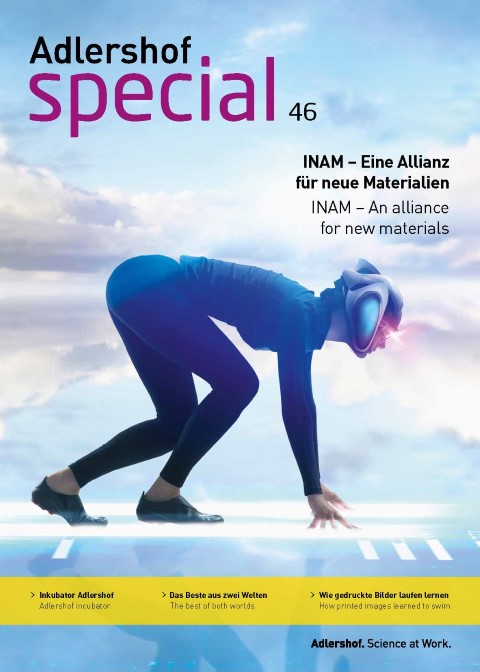 Das Heft Adlershofer special 46 ist dem Thema "INAM - Eine Allianz für neue Materialien" gewidmet. Im Editorial erläutert Gründungssprecher Professor Jürgen P. Rabe, wie IRIS Adlershof die Kooperationen weiter intensivieren will, damit Erkenntnisse der Grundlagenforschung ihren Weg in die Anwendung finden können.
Das Heft Adlershofer special 46 ist dem Thema "INAM - Eine Allianz für neue Materialien" gewidmet. Im Editorial erläutert Gründungssprecher Professor Jürgen P. Rabe, wie IRIS Adlershof die Kooperationen weiter intensivieren will, damit Erkenntnisse der Grundlagenforschung ihren Weg in die Anwendung finden können.
06.09.2016Humboldt-Universität im aktuellen QS World University Ranking auf Platz 5 der besten deutschen Universitäten
 Im aktuellen QS World University Ranking verbesserte sich die Humboldt-Universität zu Berlin auf Platz 5 der besten deutschen Hochschulen. In der weltweiten Rangliste steigerte sich die HU von Platz 126 auf 121. In der Informatik, der Mathematik und der Physik wird die HU weltweit jeweils unter den Top 100 und in Chemie und Biologie unter den Top 150 gelistet.
Im aktuellen QS World University Ranking verbesserte sich die Humboldt-Universität zu Berlin auf Platz 5 der besten deutschen Hochschulen. In der weltweiten Rangliste steigerte sich die HU von Platz 126 auf 121. In der Informatik, der Mathematik und der Physik wird die HU weltweit jeweils unter den Top 100 und in Chemie und Biologie unter den Top 150 gelistet.
18.08.2016AdMaCom Kick-Off: Advanced Material Startups treffen sich in Berlin
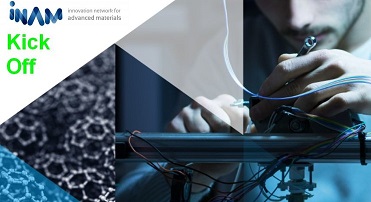 Als erste große international sichtbare Aktivität wird das Innovation Network for Advanced Materials (INAM) vom 28.08. bis 10.10.2016 die Advanced Materials Competition (AdMaCom), einen sechswöchigen Workshop zur Entwicklung innovativer Produktkonzepte mit internationalen Start-ups durchführen. Etablierte (Groß-) Unternehmen wie OSRAM, LG, Ledvance oder Henkel werden technologische Infrastruktur und Know-how und/oder Sponsorengelder bereitstellen. Dies kann von den 15 teilnehmenden Start-ups (Berlin und international) in Anspruch genommen werden, um ihre bestehenden Produkte zu verbessern und neue Produktkonzepte zu generieren.
Als erste große international sichtbare Aktivität wird das Innovation Network for Advanced Materials (INAM) vom 28.08. bis 10.10.2016 die Advanced Materials Competition (AdMaCom), einen sechswöchigen Workshop zur Entwicklung innovativer Produktkonzepte mit internationalen Start-ups durchführen. Etablierte (Groß-) Unternehmen wie OSRAM, LG, Ledvance oder Henkel werden technologische Infrastruktur und Know-how und/oder Sponsorengelder bereitstellen. Dies kann von den 15 teilnehmenden Start-ups (Berlin und international) in Anspruch genommen werden, um ihre bestehenden Produkte zu verbessern und neue Produktkonzepte zu generieren.
Die Teilnehmer werden dabei durch Mentoren von namhaften internationalen Forschungs- und Industrievertretern wie LG Technology Center Europe, BASF Ventures, der London School of Economics, dem Imperial College London, sowie aus Berlin von OSRAM, Direct Photonics Industries, Specs Nano Surface Analytics, dem Fab Lab Berlin, dem IRIS Adlershof der Humboldt-Universität, Humboldt Innovation, der ESMT, der WISTA und Berlin Partner begleitet. Berlin soll als internationaler Hightech Standort nicht nur für Start-ups, sondern auch für die Innovationsabteilungen von Großunternehmen sichtbar gemacht werden.
Der Regierende Bürgermeister von Berlin hat die Schirmherrschaft für die AdMaCom übernommen.
mehr…
04.07.2016Die Sonne anzapfen
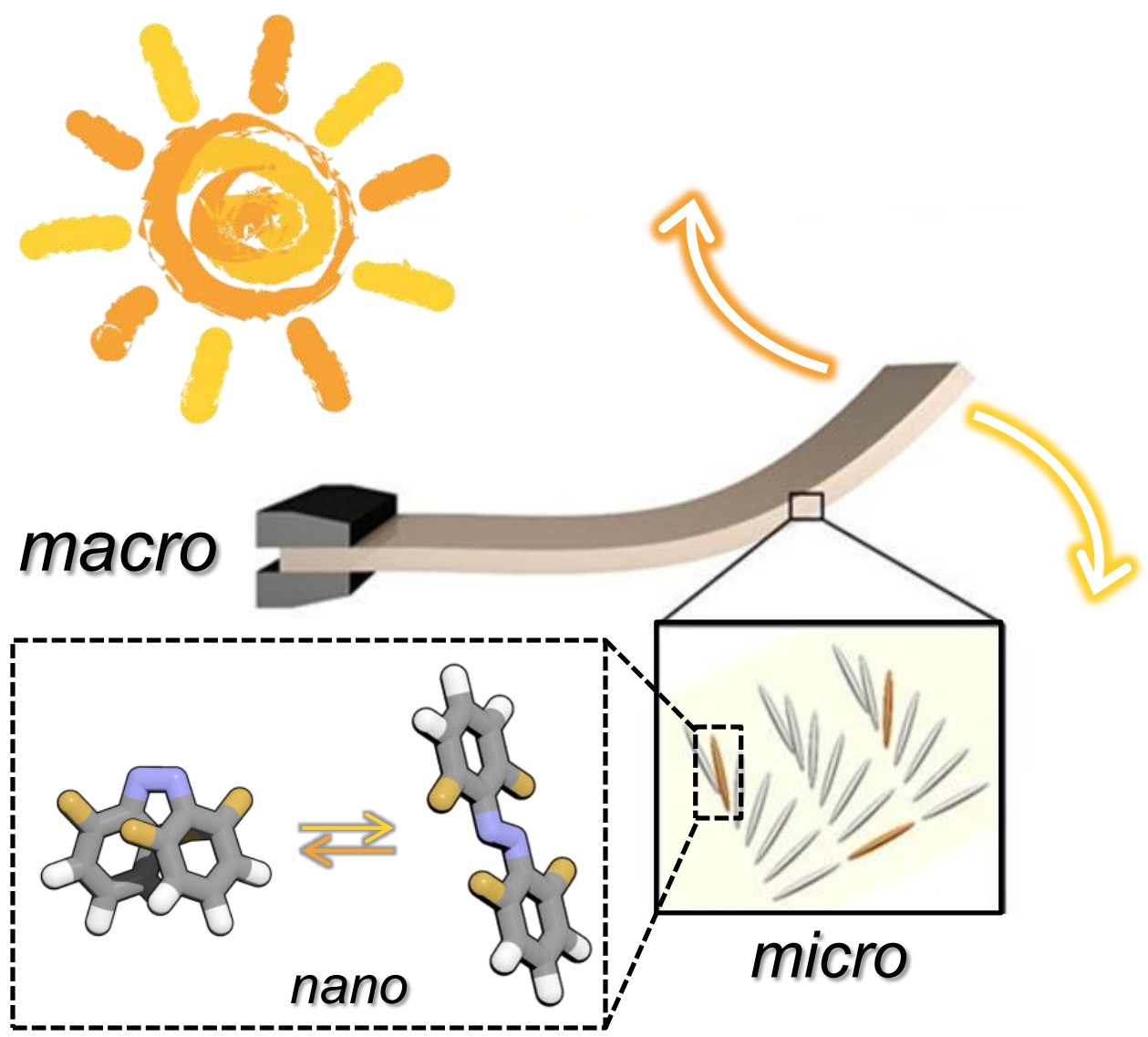 Ein Team von Forschern des IRIS Adlershof der Humboldt-Universität zu Berlin und der Technischen Universität Eindhoven in den Niederlanden hat dünne Plastikfilme entwickelt, die sich kontinuierlich im Sonnenlicht bewegen. Derartige Materialien, die die Energie des Sonnenlichtes direkt in Bewegung umwandeln können, sind vielversprechende Kandidaten für die Entwicklung von solar getriebenen aktiven Oberflächen, wie z.B. in selbstreinigenden Fenstern. Die Ergebnisse dieser Studie wurden jetzt in Nature Communications veröffentlicht.
Ein Team von Forschern des IRIS Adlershof der Humboldt-Universität zu Berlin und der Technischen Universität Eindhoven in den Niederlanden hat dünne Plastikfilme entwickelt, die sich kontinuierlich im Sonnenlicht bewegen. Derartige Materialien, die die Energie des Sonnenlichtes direkt in Bewegung umwandeln können, sind vielversprechende Kandidaten für die Entwicklung von solar getriebenen aktiven Oberflächen, wie z.B. in selbstreinigenden Fenstern. Die Ergebnisse dieser Studie wurden jetzt in Nature Communications veröffentlicht.
mehr...
20.06.2016Flexible optische Speicher entwickelt
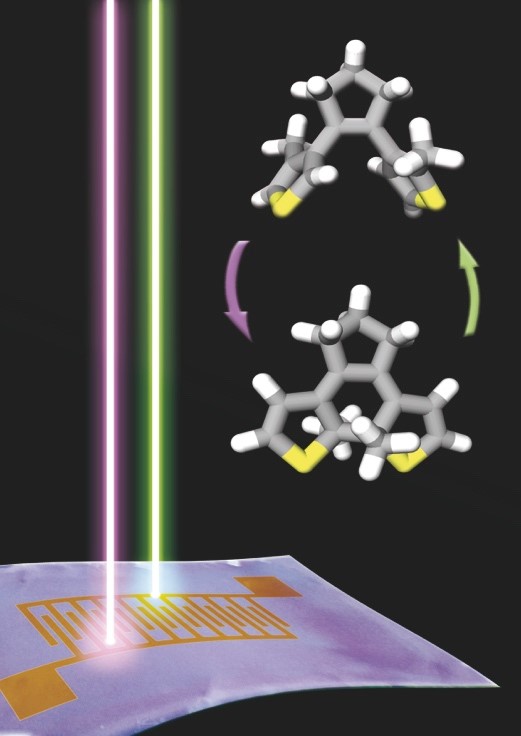 Forscher der Humboldt-Universität zu Berlin, unter der Leitung von Professor Stefan Hecht, Mitglied von IRIS Adlershof, haben in Zusammenarbeit mit Wissenschaftlern der Universität Strasbourg & CNRS in Frankreich und der Universität Nova Gorica in Slowenien leistungsstarke Speicherelemente entwickelt, die mit Licht beschrieben und gelöscht werden können. Hierzu haben sie kleine photoschaltbare Moleküle mit einem halbleitenden Polymer vereint. Darüber hinaus konnten erste Prototypen der optischen Speicher auch auf flexiblen Unterlagen realisiert werden und versprechen somit Anwendungen in trag- und biegbarer Elektronik sowie intelligenten Bauelementen.
Forscher der Humboldt-Universität zu Berlin, unter der Leitung von Professor Stefan Hecht, Mitglied von IRIS Adlershof, haben in Zusammenarbeit mit Wissenschaftlern der Universität Strasbourg & CNRS in Frankreich und der Universität Nova Gorica in Slowenien leistungsstarke Speicherelemente entwickelt, die mit Licht beschrieben und gelöscht werden können. Hierzu haben sie kleine photoschaltbare Moleküle mit einem halbleitenden Polymer vereint. Darüber hinaus konnten erste Prototypen der optischen Speicher auch auf flexiblen Unterlagen realisiert werden und versprechen somit Anwendungen in trag- und biegbarer Elektronik sowie intelligenten Bauelementen.
mehr...
18.06.2016Advanced Materials Competition Application open!
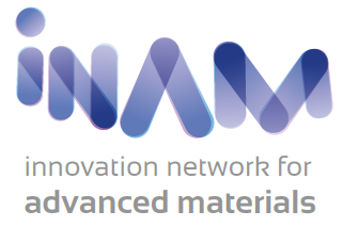 The Innovation Network for Advanced Materials based in Berlin opens the application period for ambitious hardware startups, which are focused on the development of innovative and marketable high-tech products! These products can be based on organic and molecular electronics,surface engineering, polymer science,compounds, battery technology, photovoltaics, hybrid materials, fibers, sensors, lighting as well as printedelectronics for all sorts of game changing applications! During a period of 6 weeks, start-ups discuss intensively their unique needs and challenges with professionals and industry experts to establish new business opportunities. Corporate teams, start-ups, researchers and internationally selected mentors work together, receive weekly trainings as well as business and technology guidance to develop innovative products and solutions. The 20 selected start-ups will receive gratis access to a co-working space, labs and materials in order to bring their product and business to the next level. Additionally, we will invite all our international start-ups to stay in sponsored apartments. Confirmed *Partners* so far: Osram, Tesla, Henkel, Embraer *Mentors*: BASF, LG, Direct Photonics, Pilotfish, Columbia University, London School of Economics, Humboldt University, Weitnauer, Embraer, Henkel, Osram, and many more.
The Innovation Network for Advanced Materials based in Berlin opens the application period for ambitious hardware startups, which are focused on the development of innovative and marketable high-tech products! These products can be based on organic and molecular electronics,surface engineering, polymer science,compounds, battery technology, photovoltaics, hybrid materials, fibers, sensors, lighting as well as printedelectronics for all sorts of game changing applications! During a period of 6 weeks, start-ups discuss intensively their unique needs and challenges with professionals and industry experts to establish new business opportunities. Corporate teams, start-ups, researchers and internationally selected mentors work together, receive weekly trainings as well as business and technology guidance to develop innovative products and solutions. The 20 selected start-ups will receive gratis access to a co-working space, labs and materials in order to bring their product and business to the next level. Additionally, we will invite all our international start-ups to stay in sponsored apartments. Confirmed *Partners* so far: Osram, Tesla, Henkel, Embraer *Mentors*: BASF, LG, Direct Photonics, Pilotfish, Columbia University, London School of Economics, Humboldt University, Weitnauer, Embraer, Henkel, Osram, and many more.
Apply at: www.inam.berlin
07.06.2016Schmiede für neue Produkte in Elektronik, Optik und Photonik
Innovationsnetzwerk für neue Materialien (INAM) in Berlin-Adlershof gegründet

Im Wissenschafts- und Technologiepark Adlershof haben sich Wissenschaftler und Vertreter der Wirtschaft zu einem neuen Netzwerk zusammengeschlossen. Das Innovationsnetzwerk für neue Materialien (Innovation Network for Advanced Materials, INAM) schließt die Wertschöpfungskette von der Grundlagenforschung bis zum Produktdesign.
Zu den Partnern gehören Industrievertreter wie die Osram GmbH, das Integrative Research Institute for the Sciences (IRIS Adlershof) der Humboldt-Universität zu Berlin (HU), die Wirtschaftsfördergesellschaft Berlin Partner und die Wista-Management GmbH.
Produkte marktreif entwickeln
Ziel des auf zunächst drei Jahre angelegten Netzwerks ist es, innovative Konzepte zum Einsatz neuer Materialien und Technologien in Elektronik, Optik und Photonik zu entwickeln und umzusetzen. Beispiele dafür sind kostengünstige Herstellungsprozesse durch neue Drucktechnologie, transparente, leitfähige Beschichtungen für Dünnschichtsolarzellen oder die Einführung organischer Leuchtdioden (OLED) in der Automobilbranche.
Die Initiative zur Gründung des INAM e.V. kam aus dem Wissenschafts- und Technologiepark Berlin Adlershof, wo sich rund um das IRIS Adlershof der HU Berlin, außeruniversitäre Forschungseinrichtungen und innovative Unternehmen ein Kompetenzzentrum der optischen Analytik und der Materialwissenschaften gebildet hat.
Das INAM-Netzwerk verknüpft nicht nur Wissenschaft und Wirtschaft, Forschung und Entwicklung. Ihm gehören auch Partner an, die helfen, Produkte marktreif zu entwickeln. Hier reicht das Spektrum von der auf Produktdesign spezialisierten Agentur Pilotfish GmbH über die offene Entwicklungswerkstatt Fab Lab Berlin bis zur Patent- und Technologietransferberatung durch die Humboldt Innovation GmbH und der Weitnauer Rechtsanwälte Partnerschaftsgesellschaft.
Gemeinsame Forschung und Entwicklung
„Durch die interdisziplinäre Zusammenarbeit werden neue Anwendungen und letztendlich Fertigerzeugnisse entstehen, durch die auch die Wettbewerbsfähigkeit der Unternehmen in der Region steigen wird“, sagt Peter A. Frensch, Vizepräsident für Forschung an der Humboldt-Universität. Zu diesem Zweck sollen die in Berlin Adlershof vorhandenen Infrastrukturen zur gemeinsamen Forschung und Entwicklung genutzt werden. Hinzu kommen Entrepreneurship- sowie Startup- beziehungsweise Accelerator-Programme, Veranstaltungen sowie gemeinsame Auftritte auf Kongressen und Fachmessen.
In diesem Jahr verbuchte das INAM-Netzwerk bereits einen Ansiedlungserfolg für den Technologiepark Adlershof: „Das Startup Inuru GmbH hat sich einer innovativen Idee verschrieben, mit einer flachen Lichtquelle (OLED) bringt es Licht und Animation aufs Papier und bietet Unternehmen völlig neue Möglichkeiten zu werben“, erklärt Jonas Pauly, designierter INAM-Geschäftsführer. Mit der auf die Herstellung von Hochtechnologie spezialisierten Certi-Stiftung aus Brasilien wurde außerdem ein erster ausländischer strategischer Partner gewonnen.
24.05.2016Ausschreibung von 20 SALSA-Promotionsstipendien
SALSA, die School of Analytical Sciences Adlershof der Humboldt-Universität zu Berlin, hat weitere 20 Promotionsstipendien ausgeschrieben, welche zwischen 1. August und 1. November beginnen sollen. Hochschulabsolventen (Diplom, Master-Abschluss oder Äquivalent) in Chemie, Biologie, Physik oder verwandten Disziplinen mit Interesse an Analytical Sciences sowie Absolventen mit einem Hintergrund in Naturwissenschaftliche Didaktik sind eingeladen sich zu bewerben.
Die Bewerbungfrist endet am 8. Juni 2016.
mehr...
22.04.2016DZLM geht in die zweite Runde
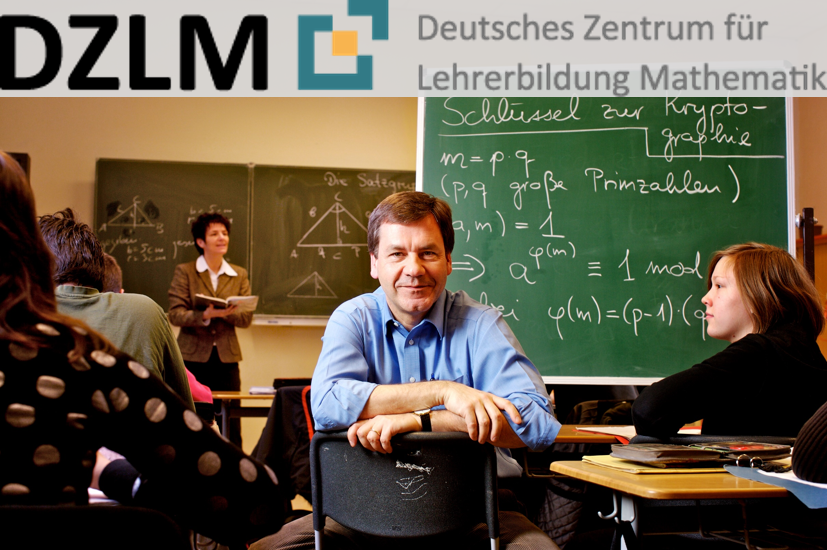 Initiiert von der Deutsche Telekom Stiftung arbeitet das Deutsche Zentrum für Lehrerbildung Mathematik (DZLM) seit Oktober 2011 sehr erfolgreich als erste bundesländerübergreifende Anlaufstelle für die Lehrerfortbildung Mathematik. Die Deutsche Telekom Stiftung fördert das DZLM nun für weitere drei Jahre und investiert dafür bis Ende 2019 4,5 Millionen Euro. Der Direktor des DZLM, Professor Jürg Kramer (Mitglied von IRIS Adlershof), zeigte sich hocherfreut über die mit der weiteren Förderung verbundene Anerkennung der bisherigen Arbeit des DZLM, an der die Humboldt-Universität als Sprecherhochschule einen wichtigen Anteil hat.
Initiiert von der Deutsche Telekom Stiftung arbeitet das Deutsche Zentrum für Lehrerbildung Mathematik (DZLM) seit Oktober 2011 sehr erfolgreich als erste bundesländerübergreifende Anlaufstelle für die Lehrerfortbildung Mathematik. Die Deutsche Telekom Stiftung fördert das DZLM nun für weitere drei Jahre und investiert dafür bis Ende 2019 4,5 Millionen Euro. Der Direktor des DZLM, Professor Jürg Kramer (Mitglied von IRIS Adlershof), zeigte sich hocherfreut über die mit der weiteren Förderung verbundene Anerkennung der bisherigen Arbeit des DZLM, an der die Humboldt-Universität als Sprecherhochschule einen wichtigen Anteil hat.
Das DZLM entwickelt forschungsbasierte und praxisnahe Fortbildungsprogramme, um diese in Kooperation mit den Bundesländern und Bildungseinrichtungen durchzuführen, weiter zu beforschen und kontinuierlich zu verbessern. Künftig, so Kramer, wird noch stärker auf langfristige Fortbildungsprogramme für Lehrende fokussiert, die wiederum andere fortbilden und begleiten und so als Multiplikatorinnen und Multiplikatoren wirken. Aufgebaut wird dabei auf bestehenden Netzwerken und Kooperationen mit der Bildungsadministration. IRIS Adlershof gratuliert den erfolgreichen Antragstellern und in erster Linie seinem Mitglied Jürg Kramer ganz herzlich.
19.04.2016Bessel Preis für Professor Gabriele Travaglini
 Prof. Dr. Gabriele Travaglini von der Queen Mary Universität London erhält den Friedrich-Wilhelm Bessel Forschungspreis der Alexander-von-Humboldt Stiftung. Mit diesem Preis wird er einen einjährigen Forschungsaufenthalt am Institut für Physik und IRIS Adlershof verbringen, sein Gastgeber ist Prof. Dr. Jan Plefka, AG Quantenfeld- und Stringtheorie. Das Preisgeld beträgt 45.000 Euro.
Prof. Dr. Gabriele Travaglini von der Queen Mary Universität London erhält den Friedrich-Wilhelm Bessel Forschungspreis der Alexander-von-Humboldt Stiftung. Mit diesem Preis wird er einen einjährigen Forschungsaufenthalt am Institut für Physik und IRIS Adlershof verbringen, sein Gastgeber ist Prof. Dr. Jan Plefka, AG Quantenfeld- und Stringtheorie. Das Preisgeld beträgt 45.000 Euro.
Prof. Travaglini ist ein führender theoretischer Physiker, der am Schnittpunkt der Quantenfeldtheorie und der Stringtheorie arbeitet. Er hat wegweisende Beiträge zum Verständnis von Streuamplituden in Quantenfeldthorien und Gravitation geleistet, die die fundamentalen Wechselwirkungen von Elementarteilchen im Mikrokosmos beschreiben. Dieses Forschungsfeld wurde in den letzten zehn Jahren durch die Entwicklung von neuen sogenannten Massenschalenmethoden revolutioniert. Prof. Travaglini war an diesen Erfolgen maßgeblich beteiligt. Während seines Aufenthaltes in Berlin wird er gemeinsam mit der Arbeitsgruppe Plefka an Fragen zu versteckten Symmetrien in Streuamplituden und Formfaktoren arbeiten.
18.03.2016Professor Thomas Elsässer erhält Ellis R. Lippincott Award
 Professor Thomas Elsässer, Direktor am Max-Born-Institut und Mitglied von IRIS Adlershof, erhält den Ellis R. Lippincott Award 2016 in Anerkennung seiner „bahnbrechenden Beiträge zum Verständnis kohärenter und inkohärenter Schwingungsdynamik von Wasserstoffbrücken in Flüssigkeiten und Biomolekülen“. Damit werden seine Pionierarbeiten zur Aufklärung molekularer Prozesse und Wechselwirkungen in Wasser, Säuredimeren, Nukleinbasenpaaren und Biomolekülen in wässriger Umgebung, etwa DNA und Phospholipiden gewürdigt. Diese Untersuchungen beruhen auf Methoden der nichtlinearen Infrarotspektroskopie im Piko- und Femtosekundenzeitbereich. IRIS Adlershof gratuliert herzlich.
Professor Thomas Elsässer, Direktor am Max-Born-Institut und Mitglied von IRIS Adlershof, erhält den Ellis R. Lippincott Award 2016 in Anerkennung seiner „bahnbrechenden Beiträge zum Verständnis kohärenter und inkohärenter Schwingungsdynamik von Wasserstoffbrücken in Flüssigkeiten und Biomolekülen“. Damit werden seine Pionierarbeiten zur Aufklärung molekularer Prozesse und Wechselwirkungen in Wasser, Säuredimeren, Nukleinbasenpaaren und Biomolekülen in wässriger Umgebung, etwa DNA und Phospholipiden gewürdigt. Diese Untersuchungen beruhen auf Methoden der nichtlinearen Infrarotspektroskopie im Piko- und Femtosekundenzeitbereich. IRIS Adlershof gratuliert herzlich.
05.03.2016IRIS Forschungsbau begonnen
 Nachdem im Juni 2013 die Gemeinsame Wissenschaftskonferenz (GWK) des Bundes und der Länder beschlossen hatte, einen Forschungsbau für das am IRIS Adlershof bearbeitete Vorhaben "Hybridsysteme für Elektronik, Optoelektronik und Photonik" zu finanzieren, haben nun, nach Abschluss umfangreicher Planungsarbeiten und nach erfolgter Ausschreibung, die Baumaßnahmen auf dem Grundstück "Zum Großen Windkanal 6" begonnen.
Nachdem im Juni 2013 die Gemeinsame Wissenschaftskonferenz (GWK) des Bundes und der Länder beschlossen hatte, einen Forschungsbau für das am IRIS Adlershof bearbeitete Vorhaben "Hybridsysteme für Elektronik, Optoelektronik und Photonik" zu finanzieren, haben nun, nach Abschluss umfangreicher Planungsarbeiten und nach erfolgter Ausschreibung, die Baumaßnahmen auf dem Grundstück "Zum Großen Windkanal 6" begonnen.
mehr...
25.02.2016Ruf an Professor Stefan Fredenhagen
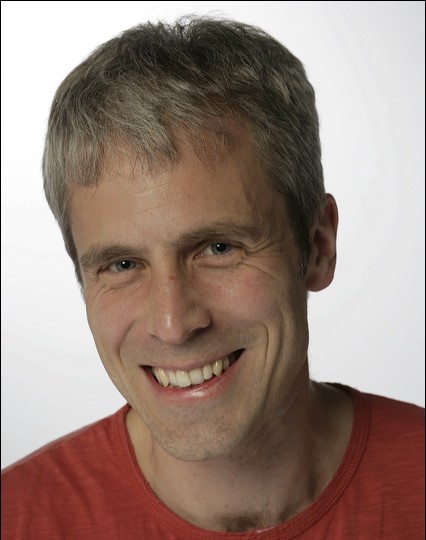 Herr Prof. Stefan Fredenhagen (MPI für Gravitationsphysik und gegenwärtig Gastprofessor in der AG Mathematische Physik von Raum, Zeit und Materie während Prof. Matthias Staudacher die Geschichte und Theorie der Experimentalsysteme vertritt) hat einen Ruf auf eine Professur für Mathematische Physik an der physikalischen Fakultät der Universität Wien erhalten. IRIS Adlershof gratuliert herzlich.
Herr Prof. Stefan Fredenhagen (MPI für Gravitationsphysik und gegenwärtig Gastprofessor in der AG Mathematische Physik von Raum, Zeit und Materie während Prof. Matthias Staudacher die Geschichte und Theorie der Experimentalsysteme vertritt) hat einen Ruf auf eine Professur für Mathematische Physik an der physikalischen Fakultät der Universität Wien erhalten. IRIS Adlershof gratuliert herzlich.
19.02.2016Gravitationswellen 100 Jahre nach der Einstein'schen Vorhersage entdeckt - IRIS gratuliert
 Gravitationswellen, jene vor exakt 100 Jahren als Konsequenz der Einstein’schen Gravitationstheorie vorhergesagten Kräuselungen der Raumzeit, wurden erstmalig am LIGO Detektor in den USA nachgewiesen. Zu diesem Jahrhundertereignis gratuliert IRIS Adlershof insbesondere seinem Kooperationspartner im Forschungsfeld Raum-Zeit-Materie, dem MPI für Gravitationsphysik (Albert-Einstein-Institut) ganz herzlich, das maßgeblich an diesem Erfolg beteiligt war.
Gravitationswellen, jene vor exakt 100 Jahren als Konsequenz der Einstein’schen Gravitationstheorie vorhergesagten Kräuselungen der Raumzeit, wurden erstmalig am LIGO Detektor in den USA nachgewiesen. Zu diesem Jahrhundertereignis gratuliert IRIS Adlershof insbesondere seinem Kooperationspartner im Forschungsfeld Raum-Zeit-Materie, dem MPI für Gravitationsphysik (Albert-Einstein-Institut) ganz herzlich, das maßgeblich an diesem Erfolg beteiligt war.
mehr...
12.02.2016Herr Prof. Peter A. Frensch als Vizepräsident für Forschung bestätigt
 Der amtierende Vizepräsident für Forschung der Humboldt-Universität zu Berlin (HU), Prof. Dr. Peter A. Frensch ist am 9. Februar 2016 mit 34 Stimmen gewählt worden. Er wurde damit vom Konzil in seinem Amt bestätigt und wird Teil des vierköpfigen Präsidiums unter Leitung von Prof. Dr.-Ing. Dr. Sabine Kunst sein.
Der amtierende Vizepräsident für Forschung der Humboldt-Universität zu Berlin (HU), Prof. Dr. Peter A. Frensch ist am 9. Februar 2016 mit 34 Stimmen gewählt worden. Er wurde damit vom Konzil in seinem Amt bestätigt und wird Teil des vierköpfigen Präsidiums unter Leitung von Prof. Dr.-Ing. Dr. Sabine Kunst sein.
mehr...
12.02.2016Humboldt-Universitäts-Medaille und Dissertationspreis Adlershof verliehen
Gleich zwei Überraschungen gab es anlässlich der Verleihung des Dissertationspreises Adlershof 2015 am 9. Februar 2016 auf dem Campus Adlershof. Der Preis ging erstmalig in der 14-jährigen Geschichte der Auszeichnung an zwei Preisträger: Neysha Lobo-Ploch und Jan-Ferenc Kischkat.
Nach der Preisvergabe betrat Jan-Hendrik Olbertz, Präsident der HU, als Überraschungsgast die Bühne, um Hardy R. Schmitz für seine Verdienste für die HU zu ehren. Schmitz war zum Jahreswechsel nach 14 Jahren als Geschäftsführer der Wista in den Ruhestand gegangen.
mehr...
11.02.2016Second Joint Call for Proposals: TAU-HU Project "Biological and Soft Matter Physics" - Deadline extended

After three years of successful cooperation between Tel Aviv University and Humboldt-Universität zu Berlin IRIS Adlershof and the IRI for the Life Sciences announce a second joint call for proposals either to start or to continue the research in the field of biological and soft matter physics. Funding is available for bilateral collaborative research projects comprising researchers or research teams from the two participating universities. The main goal of the program is to support the ongoing and stimulate new collaborations between the research groups of the two universities.
Joint project proposals by scientists from TAU and HU may be submitted until January 31st, 2016. Deadline extended: March 31st, 2016
more...
27.01.2016Einstein auf dem Prüfstand
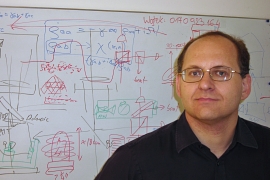 Einsteins Allgemeine Relativitätstheorie liefert eine Theorie von Raum und Zeit, die der experimentellen Überprüfung seit hundert Jahren Stand gehalten hat. Dennoch widerspricht sie der fast ebenso alten und ebenfalls experimentell unzählige Male überprüften Quantenmechanik, die die Materie im Kleinen beschreibt. Für das am IRIS Adlershof intensiv bearbeitete Forschungsfeld „Raum - Zeit - Materie“ sind daher Experimente, die beide Theorien einander näher bringen, von besonderem Interesse. Ein aktuelles Beispiel sind die kürzlich erfolgreich durchgeführten Tests der Projekte KALEXUS und FOKUS, die von Adlershofer Wissenschaftlern um Prof. Achim Peters vom Institut für Physik der Humboldt-Universität und dem Ferdinand-Braun-Institut entwickelt wurden.
Einsteins Allgemeine Relativitätstheorie liefert eine Theorie von Raum und Zeit, die der experimentellen Überprüfung seit hundert Jahren Stand gehalten hat. Dennoch widerspricht sie der fast ebenso alten und ebenfalls experimentell unzählige Male überprüften Quantenmechanik, die die Materie im Kleinen beschreibt. Für das am IRIS Adlershof intensiv bearbeitete Forschungsfeld „Raum - Zeit - Materie“ sind daher Experimente, die beide Theorien einander näher bringen, von besonderem Interesse. Ein aktuelles Beispiel sind die kürzlich erfolgreich durchgeführten Tests der Projekte KALEXUS und FOKUS, die von Adlershofer Wissenschaftlern um Prof. Achim Peters vom Institut für Physik der Humboldt-Universität und dem Ferdinand-Braun-Institut entwickelt wurden.
mehr…
19.01.2016Frau Prof. Sabine Kunst als Präsidentin der Humboldt-Universität zu Berlin gewählt
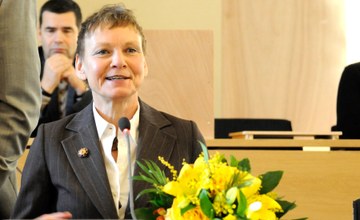 |
|
| Sabine Kunst; Foto: Mark Wagner | |
Prof. Dr.-Ing. Dr. Sabine Kunst ist am 19.1.2016 vom Konzil der Humboldt-Universität zu Berlin (HU) mit 49 Ja-Stimmen bei 6 Nein-Stimmen und 2 ungültigen Stimmen zur neuen Präsidentin der HU gewählt worden. Sie wird ihr Amt voraussichtlich im Sommersemester antreten. Sabine Kunst ist Ministerin für Wissenschaft, Forschung und Kultur des Landes Brandenburg sowie Vorsitzende der Verwaltungskommission und Koordinatorin der Länder im Wissenschaftsrat, dem wichtigsten wissenschaftspolitischen Beratungsgremium in Deutschland. Die international renommierte Hochschullehrerin und Politikerin hat breite Erfahrungen in Wissenschaft und Forschung sowie bei der Entwicklung von wissenschaftlichen Institutionen und Strukturen.
mehr...
05.01.2016Prof. J.-C. Freytag, Ph.D. in das Präsidium der Gesellschaft für Informatik e.V. gewählt
 Professor Johann-Christoph Freytag, Ph.D., Mitglied von IRIS Adlershof, wurde in das Präsidium der Gesellschaft für Informatik (GI) e.V. gewählt. Zu der Wahl waren alle Mitglieder der GI aufgerufen, um aus fünf Kandidaten drei für das zukünftige Präsidium auszuwählen. Damit wird Prof. Freytag weiterhin seine langjährige Erfahrung in die GI einbringen, nachdem er schon in den vergangenen 6 Jahren dem Präsidium als Sprecher des GI-Fachbereiches Datenbanken und Informationssysteme (DBIS) angehörte.
Professor Johann-Christoph Freytag, Ph.D., Mitglied von IRIS Adlershof, wurde in das Präsidium der Gesellschaft für Informatik (GI) e.V. gewählt. Zu der Wahl waren alle Mitglieder der GI aufgerufen, um aus fünf Kandidaten drei für das zukünftige Präsidium auszuwählen. Damit wird Prof. Freytag weiterhin seine langjährige Erfahrung in die GI einbringen, nachdem er schon in den vergangenen 6 Jahren dem Präsidium als Sprecher des GI-Fachbereiches Datenbanken und Informationssysteme (DBIS) angehörte.
more...
15.12.2015Second Joint Call for Proposals: TAU-HU Project "Biological and Soft Matter Physics"

After three years of successful cooperation between Tel Aviv University and Humboldt-Universität zu Berlin IRIS Adlershof and the IRI for the Life Sciences announce a second joint call for proposals either to start or to continue the research in the field of biological and soft matter physics. Funding is available for bilateral collaborative research projects comprising researchers or research teams from the two participating universities. The main goal of the program is to support the ongoing and stimulate new collaborations between the research groups of the two universities.
Joint project proposals by scientists from TAU and HU may be submitted until January 31st, 2016.
more...
10.12.2015HU Wissenschaftler/innen im Dialog mit Unternehmen – Synergien in der modernen Materialforschung
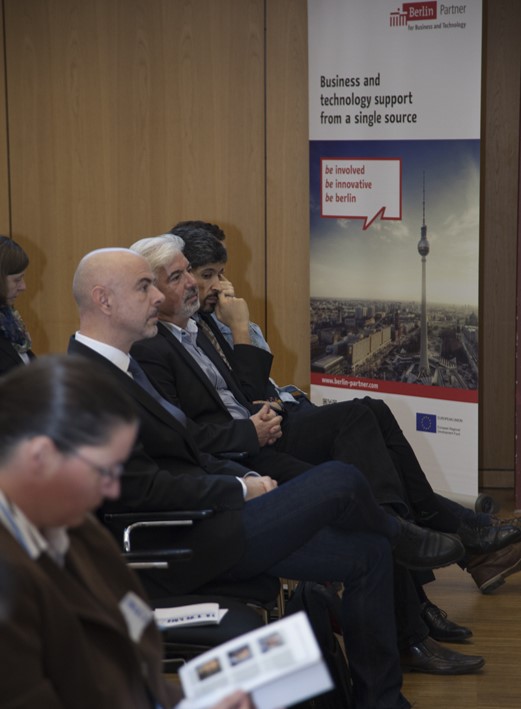 Am 8. Dezember fand zum vierten Mal das jährliche Wissens- und Technologietransfer-Forum „Wissenschaft trifft Wirtschaft“ der Humboldt-Universität zu Berlin statt. Die Veranstaltungsreihe dient der Vernetzung zwischen Wissenschaft und Wirtschaft, fördert den Austausch untereinander und ermöglicht die Initiierung gemeinsamer Projekte.
Am 8. Dezember fand zum vierten Mal das jährliche Wissens- und Technologietransfer-Forum „Wissenschaft trifft Wirtschaft“ der Humboldt-Universität zu Berlin statt. Die Veranstaltungsreihe dient der Vernetzung zwischen Wissenschaft und Wirtschaft, fördert den Austausch untereinander und ermöglicht die Initiierung gemeinsamer Projekte.
Der stellvertretende Sprecher von IRIS Adlershof und Impulsgeber des neuen Formates der Veranstaltung, Prof. Norbert Koch, sagte: „Um gemeinsame Ansätze in der modernen Materialforschung zu finden, müssen sich die Partner kennenlernen. Dies ist das Ziel am 8. Dezember. Die Wissenschaftler/innen der HU werden ihr Expertisen-Portfolio darstellen und – noch wichtiger – die Unternehmen ihre aktuellen Fragestellungen. Genaues Zuhören, mitunter auch Zwischentöne zu erhaschen, und Aufeinanderzugehen sind hier gefragt.“
20.11.2015Prof. Peter Hegemann mit Berliner Wissenschaftspreis ausgezeichnet
Peter Hegemann, Professor für Experimentelle Biophysik an der Humboldt-Universität zu Berlin und UniCat-Mitglied, hat den Berliner Wissenschaftspreis 2015 verliehen bekommen. Prof. Hegemann ist einer der Begründer der Optogenetik, einer neuen innovativen Methode, mit der durch Licht aktivierbare Proteine aus Mikroorganismen in ausgewählte Neuronen eingebracht werden. IRIS Adlershof gratuliert sehr herzlich und freut sich mit ihm über diese herausragende Auszeichnung.
mehr...
19.11.2015Prof. Emil List-Kratochvil neues Mitglied von IRIS Adlershof
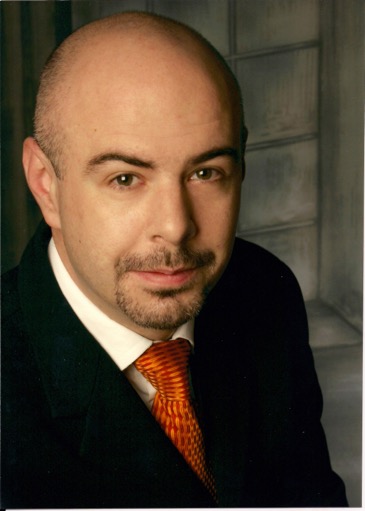 Emil List-Kratochvil, seit dem 01. Oktober 2015 Professor für "Hybride Bauelemente" an der Humboldt-Universität zu Berlin, ist neues Mitglied von IRIS Adlershof. Seine Professur ist als Brückenprofessur von IRIS Adlershof sowohl am Institut für Physik als auch am Institut für Chemie angesiedelt. Herr List-Kratochvil ist ein renommierter Experte auf dem Gebiet der organischen und gedruckten Elektronik und wurde international vor allem durch seine Arbeiten zu organischen Bauelementen, insbesondere Leuchtdioden und hybriden Speicherelementen, sowie mit seinen Untersuchungen zu Struktur-Eigenschaftsbeziehungen an organischen Halbleitern, insbesondere verbrückten Polyparaphenylenen, bekannt. IRIS Adlershof freut sich sehr auf die Zusammenarbeit mit Herrn List-Kratochvil und gratuliert herzlich.
Emil List-Kratochvil, seit dem 01. Oktober 2015 Professor für "Hybride Bauelemente" an der Humboldt-Universität zu Berlin, ist neues Mitglied von IRIS Adlershof. Seine Professur ist als Brückenprofessur von IRIS Adlershof sowohl am Institut für Physik als auch am Institut für Chemie angesiedelt. Herr List-Kratochvil ist ein renommierter Experte auf dem Gebiet der organischen und gedruckten Elektronik und wurde international vor allem durch seine Arbeiten zu organischen Bauelementen, insbesondere Leuchtdioden und hybriden Speicherelementen, sowie mit seinen Untersuchungen zu Struktur-Eigenschaftsbeziehungen an organischen Halbleitern, insbesondere verbrückten Polyparaphenylenen, bekannt. IRIS Adlershof freut sich sehr auf die Zusammenarbeit mit Herrn List-Kratochvil und gratuliert herzlich.
12.10.2015Preis für gute Lehre 2015 der Humboldt-Universität zu Berlin an PD Dr. Thomas Klose
Klassische Theoretische Physik und Quantenmechanik ausgezeichnet gelehrt
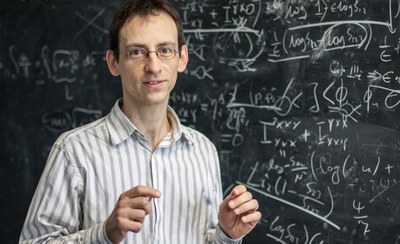 Thomas Klose, Gewinner des Humboldt-Preis für gute Lehre 2015 Abbildung: Florian Loebbert |
21 Dozenten haben eine Nominierung erhalten. PD Dr. Thomas Klose aus der AG Quantenfeld- und Stringtheorie von IRIS Adlershof-Mitglied Jan Plefka hat die Wahl einstimmig gewonnen. „Damit habe ich überhaupt nicht gerechnet. Das hat mich ehrlich gesagt sehr überrascht. Ich freue mich natürlich über die Auszeichnung!“ 10.000 Euro Preisgeld stehen dem Physiker nun zur Verfügung.
mehr...15.09.2015Im aktuellen QS World University Ranking Humboldt-Universität zu Berlin auf Platz 6 der besten deutschen Universitäten
 Im aktuellen QS World University Ranking gehört die Humboldt-Universität zu Berlin zu den besten deutschen Hochschulen. Sie verteidigte ihren sechsten Platz im Vergleich zum Vorjahr. In der weltweiten Rangliste verbesserte sich die HU von Platz 134 auf 126. Im Bereich der Naturwissenschaften liegt die HU weltweit auf Platz 121 und in der Informatik, der Mathematik und der Physik jeweils unter den Top 100.
Im aktuellen QS World University Ranking gehört die Humboldt-Universität zu Berlin zu den besten deutschen Hochschulen. Sie verteidigte ihren sechsten Platz im Vergleich zum Vorjahr. In der weltweiten Rangliste verbesserte sich die HU von Platz 134 auf 126. Im Bereich der Naturwissenschaften liegt die HU weltweit auf Platz 121 und in der Informatik, der Mathematik und der Physik jeweils unter den Top 100.
01.09.2015Rufannahme durch Herrn Prof. Emil List-Kratochvil
 Herr Prof. Dr. Emil J. W. List-Kratochvil (TU Graz) hat den Ruf auf die W3-Professur "Hybride Bauelemente" an der Humboldt-Universität zu Berlin zum 01. Oktober 2015 angenommen. Die Professur ist als Brückenprofessur von IRIS Adlershof sowohl am Institut für Physik als auch am Institut für Chemie angesiedelt.
Herr Prof. Dr. Emil J. W. List-Kratochvil (TU Graz) hat den Ruf auf die W3-Professur "Hybride Bauelemente" an der Humboldt-Universität zu Berlin zum 01. Oktober 2015 angenommen. Die Professur ist als Brückenprofessur von IRIS Adlershof sowohl am Institut für Physik als auch am Institut für Chemie angesiedelt.
01.09.2015Rufannahme durch Frau Dr. Simone Raoux
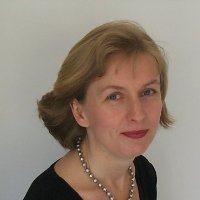 Frau Dr. Simone Raoux (HZB) hat den Ruf auf die W3-S-Professur „Nanospektroskopie für Design und Optimierung energierelevanter Materialien“ am Institut für Physik der Humboldt-Universität zu Berlin angenommen. Die Professur ist verbunden mit der Leitung des Institut Nanospektroskopie am Helmholtz-Zentrum Berlin für Materialien und Energie GmbH.
Frau Dr. Simone Raoux (HZB) hat den Ruf auf die W3-S-Professur „Nanospektroskopie für Design und Optimierung energierelevanter Materialien“ am Institut für Physik der Humboldt-Universität zu Berlin angenommen. Die Professur ist verbunden mit der Leitung des Institut Nanospektroskopie am Helmholtz-Zentrum Berlin für Materialien und Energie GmbH.28.07.2015Personaler sehen Absolventen der Naturwissenschaften der Humboldt-Universität bundesweit auf Platz 3
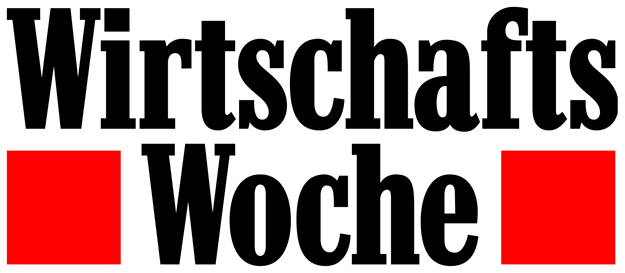 Welche Hochschule bildet die Studenten für Ihre Bedürfnisse am besten aus? Diese Frage wurden 540 Personalern aus ganz Deutschland gestellt. In den Naturwissenschaften sehen 15,4 % die Humboldt-Universität auf Platz 1. Genau so viele nennen die LMU München. Nur die RWTH Aachen (19,6%) und die TU München (15,9%) werden noch etwas häufiger genannt.
Welche Hochschule bildet die Studenten für Ihre Bedürfnisse am besten aus? Diese Frage wurden 540 Personalern aus ganz Deutschland gestellt. In den Naturwissenschaften sehen 15,4 % die Humboldt-Universität auf Platz 1. Genau so viele nennen die LMU München. Nur die RWTH Aachen (19,6%) und die TU München (15,9%) werden noch etwas häufiger genannt.
Link zum bundesweiten Hochschulranking 2015 der Wirtschaftswoche
07.07.2015 Flexible Nanodrähte: Berlin-Grazer Wissenschaftlerteam entwickelt molekulare Drähte mit hoher Leitfähigkeit und Biegsamkeit
 Ein internationales Team von Wissenschaftlern unter Leitung von Stefan Hecht, Mitglied von IRIS Adlershof, sowie Leonhard Grill von der Karl-Franzens-Universität Graz konnte erstmals Molekülketten herstellen, die trotz ihrer Flexibilität ungeahnt hohe Leitfähigkeit besitzen. Der neue Ansatz der Forscher ermöglicht das Design flexibler Nanodrähte und gibt somit detaillierten Einblick in den Zusammenhang zwischen chemischer Struktur und elektronischen sowie mechanischen Eigenschaften. Derartig leitfähige und flexible Nanodrähte gelten als Schlüsselbausteine für künftige logische Schaltkreise (“molecular electronics”) sowie flexible elektronische Alltagsgegenstände (“wearable plastic electronics”). Die Studie wurde jetzt in der aktuellen Ausgabe der Zeitschrift Nature Communications veröffentlicht.
Ein internationales Team von Wissenschaftlern unter Leitung von Stefan Hecht, Mitglied von IRIS Adlershof, sowie Leonhard Grill von der Karl-Franzens-Universität Graz konnte erstmals Molekülketten herstellen, die trotz ihrer Flexibilität ungeahnt hohe Leitfähigkeit besitzen. Der neue Ansatz der Forscher ermöglicht das Design flexibler Nanodrähte und gibt somit detaillierten Einblick in den Zusammenhang zwischen chemischer Struktur und elektronischen sowie mechanischen Eigenschaften. Derartig leitfähige und flexible Nanodrähte gelten als Schlüsselbausteine für künftige logische Schaltkreise (“molecular electronics”) sowie flexible elektronische Alltagsgegenstände (“wearable plastic electronics”). Die Studie wurde jetzt in der aktuellen Ausgabe der Zeitschrift Nature Communications veröffentlicht.
mehr...
26.05.2015SFB 951 “Hybrid Inorganic/Organic Systems for Opto-Electronics (HIOS)” geht in die zweite Förderperiode
 Im wissenschaftlichen Fokus des SFB 951 stehen innovative Hybridsysteme, die anorganische Halbleiter, konjugierte organische Materialien und metallische Nanostrukturen miteinander kombinieren, mit dem langfristigen Ziel, funktionale Elemente für die Optoelektronik im meso- bzw. nanoskopischen Längenbereich mit neuartigen, von den Einzelkomponenten bislang nicht erreichten Eigenschaften, zu realisieren. In der ersten Förderperiode (2011-2015) hat der SFB durch eine Fülle beeindruckender Ergebnisse die inhaltlichen Grundlagen für die Fortsetzung dieser spannenden Forschung für weitere vier Jahre gelegt. Die Deutsche Forschungsgemeinschaft (DFG) hat dies nun mit der Entscheidung zur Fortsetzung der Förderung des SFB für eine zweite Periode für den Zeitraum 2015-2019 gewürdigt. Sprecher und Vize-Sprecher des SFB, Norbert Koch und Oliver Benson (beide Mitglieder von IRIS Adlershof) freuen sich sehr auf die weitere enge Zusammenarbeit mit insgesamt 25 Teilprojektleiterinnen und Teilprojektleitern der Institute für Physik und für Chemie sowie des IRIS Adlershof der Humboldt-Universität zu Berlin (Sprecherhochschule), der Technischen Universität Berlin, der Universität Potsdam, des Helmholtz-Zentrums für Materialien und Energie sowie des Fritz-Haber Instituts der Max-Planck Gesellschaft.
Im wissenschaftlichen Fokus des SFB 951 stehen innovative Hybridsysteme, die anorganische Halbleiter, konjugierte organische Materialien und metallische Nanostrukturen miteinander kombinieren, mit dem langfristigen Ziel, funktionale Elemente für die Optoelektronik im meso- bzw. nanoskopischen Längenbereich mit neuartigen, von den Einzelkomponenten bislang nicht erreichten Eigenschaften, zu realisieren. In der ersten Förderperiode (2011-2015) hat der SFB durch eine Fülle beeindruckender Ergebnisse die inhaltlichen Grundlagen für die Fortsetzung dieser spannenden Forschung für weitere vier Jahre gelegt. Die Deutsche Forschungsgemeinschaft (DFG) hat dies nun mit der Entscheidung zur Fortsetzung der Förderung des SFB für eine zweite Periode für den Zeitraum 2015-2019 gewürdigt. Sprecher und Vize-Sprecher des SFB, Norbert Koch und Oliver Benson (beide Mitglieder von IRIS Adlershof) freuen sich sehr auf die weitere enge Zusammenarbeit mit insgesamt 25 Teilprojektleiterinnen und Teilprojektleitern der Institute für Physik und für Chemie sowie des IRIS Adlershof der Humboldt-Universität zu Berlin (Sprecherhochschule), der Technischen Universität Berlin, der Universität Potsdam, des Helmholtz-Zentrums für Materialien und Energie sowie des Fritz-Haber Instituts der Max-Planck Gesellschaft.
mehr...
20.05.2015Studentische/n Mitarbeiter/in gesucht
Die IRIS-Geschäftsstelle sucht zum frühestmöglichen Zeitpunkt für die Dauer von 24 Monaten eine/n studentische/n Mitarbeiter/in.
mehr...
07.05.2015Mehr Photonen durch optische Nanofaser
Einem von Professor Oliver Benson, Mitglied von IRIS Adlershof, geleitetem internationalen Team aus Forschern der Humboldt-Universität zu Berlin (HU) und der Universität Kyoto in Japan ist es gelungen, durch Einsatz einer neuartigen strukturierten Nanofaser die Emission von einzelnen Photonen zu verstärken. Bei dem Experiment konnte nicht nur eine außerordentlich große Anzahl an Photonen erzeugt werden, sondern es gelang auch, deren Wellenlänge genau einzustellen. Über die Faser können diese maßgeschneiderten Lichtteilchen für Anwendungen in den neuen Quantentechnologien direkt verfügbar gemacht werden. Die Forschungsergebnisse sind in der aktuellen Onlineausgabe der Open-Access-Zeitschrift „Scientific Reports“ der Nature Publishing Group erschienen.

mehr...
17.04.2015Christian Kassung vertritt Professur für Experimentalsysteme
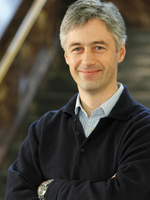 Christian Kassung, Professor für Kulturtechniken und Wissensgeschichte im Institut für Kulturwissenschaft der Humboldt-Universität zu Berlin vertritt im Sommersemester 2015 die Professur Theorie und Geschichte der Experimentalsysteme des Exzellenzclusters „Bild Wissen Gestaltung. Ein interdisziplinäres Labor" und wird dazu auch am IRIS Adlershof lehren und forschen.
Christian Kassung, Professor für Kulturtechniken und Wissensgeschichte im Institut für Kulturwissenschaft der Humboldt-Universität zu Berlin vertritt im Sommersemester 2015 die Professur Theorie und Geschichte der Experimentalsysteme des Exzellenzclusters „Bild Wissen Gestaltung. Ein interdisziplinäres Labor" und wird dazu auch am IRIS Adlershof lehren und forschen.
mehr…
15.04.2015Chinesischer Botschafter Shi Mingde besucht IRIS Adlershof
 Der Botschafter der Volksrepublik China Shi Mingde hat im “Jahr der Innovationskooperation zwischen Deutschland und China” am 8. April den Wissenschafts- und Technologiepark Adlershof besucht.
Der Botschafter der Volksrepublik China Shi Mingde hat im “Jahr der Innovationskooperation zwischen Deutschland und China” am 8. April den Wissenschafts- und Technologiepark Adlershof besucht.
Im IRIS Adlershof informierte Gründungssprecher Professor Jürgen P. Rabe über die Forschung und Entwicklung von IRIS am Standort sowie über Kooperationen mit chinesischen Partnern wie der Peking Universität und der Chinesischen Akademie der Wissenschaften. Besonders interessierte Shi Mingde die Ausbildung des wissenschaftlichen Nachwuchses wie etwa im Berlin-weiten Masterstudiengang “Polymer Science”, der auch viele, mittlerweile international erfolgreiche chinesische Absolventen hervorgebracht hat.
Der hier begonnene Dialog mit Botschafter Shi Mingde soll fortgesetzt werden.
mehr…
15.04.2015IRIS Adlershof richtet KOSMOS Summer University 2016 aus
 IRIS Adlershof wird vom 15. August bis 02. September 2016 auf dem naturwissenschaftlichen Campus der Humboldt-Universität in Berlin-Adlershof eine dreiwöchige KOSMOS Summer University zum Thema "Integrability for the Holographic Universe" ausrichten. Hier soll jungen Nachwuchswissenschaftlerinnen und Nachwuchswissenschaftlern von international ausgewiesenen Experten die Theoretische und Mathematische Physik sowie das Symbolic Programming nahegbracht werden. Die KOSMOS Summer University wird von Prof. Matthias Staudacher, Dr. Alessandro Sfondrini und Prof. Jan Plefka organisiert und aus Mitteln des KOSMOS-Programms der Humboldt-Universität sowie dem Marie Curie Network "Gauge theory as an Integrable system" (GATIS) gefördert.
IRIS Adlershof wird vom 15. August bis 02. September 2016 auf dem naturwissenschaftlichen Campus der Humboldt-Universität in Berlin-Adlershof eine dreiwöchige KOSMOS Summer University zum Thema "Integrability for the Holographic Universe" ausrichten. Hier soll jungen Nachwuchswissenschaftlerinnen und Nachwuchswissenschaftlern von international ausgewiesenen Experten die Theoretische und Mathematische Physik sowie das Symbolic Programming nahegbracht werden. Die KOSMOS Summer University wird von Prof. Matthias Staudacher, Dr. Alessandro Sfondrini und Prof. Jan Plefka organisiert und aus Mitteln des KOSMOS-Programms der Humboldt-Universität sowie dem Marie Curie Network "Gauge theory as an Integrable system" (GATIS) gefördert.
14.04.2015Call for 10 SALSA doctoral fellowships open
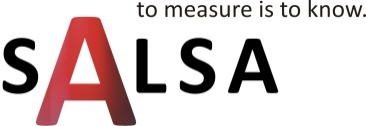 SALSA, the Graduate School of Analytical Sciences Adlershof at Humboldt-Universität zu Berlin, is announcing 10 doctoral fellowships to begin on October 10st, 2015. The program offers a structured, three-year period of multidisciplinary research combined with an integrated curriculum in Analytical Sciences.
SALSA, the Graduate School of Analytical Sciences Adlershof at Humboldt-Universität zu Berlin, is announcing 10 doctoral fellowships to begin on October 10st, 2015. The program offers a structured, three-year period of multidisciplinary research combined with an integrated curriculum in Analytical Sciences.
Applications will be accepted upon submission via our online application tool only (www.analytical-sciences.de), which will be accessible from April 15th until May 11th, 2015. Graduate students (master’s degree or equivalent) in chemistry, biology, physics and related disciplines with an interest in Analytical Sciences as well as graduates with a background in natural sciences education are invited to apply. For further information please visit http://www.analytical-sciences.de.
12.03.2015Humboldt-Universität unter den Top 50 der weltweit angesehensten Universitäten
 Die Humboldt-Universität zu Berlin (HU) macht einen weiten Sprung nach vorne: Im aktuellen Reputationsranking des britischen Magazins Times Higher Education (THE) belegt die HU Platz 41 der weltweit angesehensten Universitäten. Damit verbessert sie sich deutlich gegenüber dem Vorjahr, in dem sie einen Platz in der Ranggruppe 71-80 erreichte. In den Physical Sciences verbesserte sie sich um 31 Plätze auf Rang 69.
Die Humboldt-Universität zu Berlin (HU) macht einen weiten Sprung nach vorne: Im aktuellen Reputationsranking des britischen Magazins Times Higher Education (THE) belegt die HU Platz 41 der weltweit angesehensten Universitäten. Damit verbessert sie sich deutlich gegenüber dem Vorjahr, in dem sie einen Platz in der Ranggruppe 71-80 erreichte. In den Physical Sciences verbesserte sie sich um 31 Plätze auf Rang 69.
05.03.2015Optisch schaltbare organische Feldeffekt-Transistoren erzeugt
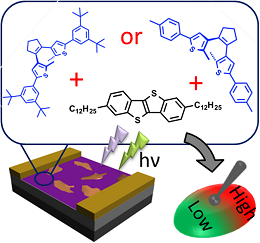 Ein internationales Team von Wissenschaftlern unter Leitung von Professor Stefan Hecht, Mitglied von IRIS Adlershof, und Professor Paolo Samori von der Universität Strasbourg (Frankreich) hat in Zusammenarbeit mit Wissenschaftlern der Stanford University (USA) und der Universität Brüssel (Belgium) demonstriert, wie optisch schaltbare Feld-Effekt-Transistoren aus organischen Molekülen mit unterschiedlichen Funktionen erhalten werden können. Derartige optisch adressierbare molekulare Bauelemente gelten als Schlüsselbausteine für künftige logische Schaltkreise. Die Ergebnisse sind von großem Interesse für die Entwicklung von optisch-kontrollierten elektronischen Bauelementen mit potenziellen Anwendungen in Speichermedien und logischen Schaltkreisen, sowie generell in der Optoelektronik und in der optischen Sensorik. Die Studie wurde jetzt in der aktuellen Ausgabe der Zeitschrift Nature Communications veröffentlicht.
Ein internationales Team von Wissenschaftlern unter Leitung von Professor Stefan Hecht, Mitglied von IRIS Adlershof, und Professor Paolo Samori von der Universität Strasbourg (Frankreich) hat in Zusammenarbeit mit Wissenschaftlern der Stanford University (USA) und der Universität Brüssel (Belgium) demonstriert, wie optisch schaltbare Feld-Effekt-Transistoren aus organischen Molekülen mit unterschiedlichen Funktionen erhalten werden können. Derartige optisch adressierbare molekulare Bauelemente gelten als Schlüsselbausteine für künftige logische Schaltkreise. Die Ergebnisse sind von großem Interesse für die Entwicklung von optisch-kontrollierten elektronischen Bauelementen mit potenziellen Anwendungen in Speichermedien und logischen Schaltkreisen, sowie generell in der Optoelektronik und in der optischen Sensorik. Die Studie wurde jetzt in der aktuellen Ausgabe der Zeitschrift Nature Communications veröffentlicht.
mehr...
01.03.2015Rufannahme durch Professor Christoph T. Koch
|
Herr Prof. Dr. Christoph T. Koch (Universität Ulm) hat den Ruf auf die W3-Professur "Strukturforschung/Elektronenmikroskopie" am Institut für Physik der Humboldt-Universität zu Berlin zum 01. August 2015 angenommen. |
 |
23.02.2015Professor Norbert Koch zum neuen Sprecher des SFB 951 gewählt
|
Prof. Dr. Norbert Koch, stellvertretender Sprecher von IRIS Adlershof, wurde am 20.Februar 2015 auf der Vollversammlung des SFB 951: "Hybrid Inorganic/Organic Systems for Opto-Electronics" zum Sprecher gewählt. Prof. Dr. Oliver Benson, ebenfalls Mitglied von IRIS Adlershof, wurde zum stellvertretenden Sprecher gewählt. mehr... |
 |
12.02.2015Professor Steven L. Bernasek (Princeton University) als KOSMOS Fellow am IRIS Adlershof
|
Professor Steven L. Bernasek vom Department of Chemistry der Princeton University forscht und lehrt in diesem Frühjahr als Fellow der KOSMOS Summer University on Chemistry and Physics of Novel Materials for (Opto-)Electronics am IRIS Adlershof. Im Mittelpunkt seines wissenschaftlichen Interesses steht die Selbstorganisation organischer Moleküle auf Graphit, Graphen und an Grenzflächen zu anderen anorganischen Materialien. Für seine Forschungsarbeiten nutzt er in enger Zusammenarbeit mit der Arbeitsgruppe von IRIS Sprecher Prof. Jürgen P. Rabe die Rastertunnelmikroskopie sowie optische Spektroskopie. |
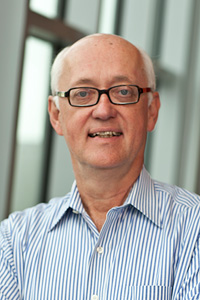 |
01.02.2015Trauer um Professor Fritz Henneberger
|
Mit großer Bestürzung und Trauer haben wir vom plötzlichen, völlig unerwarteten Tod unseres Kollegen Herrn Professor Dr. Fritz Henneberger erfahren. Herr Henneberger war Gründungsmitglied von IRIS Adlershof und Sprecher des Sonderforschungsbereiches 951. Wir verlieren in ihm einen herausragenden Wissenschaftler, dessen überaus großes Engagement in Forschung und Lehre sowie in der akademischen Selbstverwaltung die erfolgreiche Entwicklung unseres Hauses maßgeblich beförderte. Unsere besondere Anteilnahme gilt Professor Hennebergers Familie. mehr... |
 |
20.12.2014Frohe Weihnachten und ein glückliches Neues Jahr 2015!

IRIS Adlershof wünscht Ihnen
ein frohes Weihnachtsfest
und
einen guten Rutsch in das neue Jahr 2015!
19.12.2014Wie einzelne Makromoleküle durch Licht bewegt werden
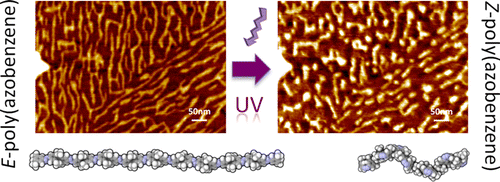 Die Natur hat die Wissenschaft schon seit langem mit ihren scheinbar unerschöpflichen Möglichkeiten inspiriert, Sonnenenergie zur Steuerung verschiedener physiologischer Prozesse zu nutzen. Neuartige, künstlich hergestellte molekulare Photoschalter bieten die Möglichkeit, die Natur sogar noch zu übertreffen, beispielsweise indem letztlich multifunktionale Materialien entwickelt und hergestellt werden, die auf Licht unterschiedlicher Wellenlängen unterschiedlich reagieren. Eine der großen Herausforderungen bei der Entwicklung solcher künstlicher, lichtgesteuerter „molekularer Maschinen“ liegt darin, möglichst genau zu verstehen, wie sich Makromoleküle und deren molekulare Bauteile durch die Wechselwirkung mit Licht verändern. Einem Team aus Chemikern und Physikern der Humboldt-Universität zu Berlin um David Bléger und Jürgen P. Rabe, Mitglied von IRIS Adlershof, sind nun mithilfe der Rasterkraftmikroskopie überaus interessante Einblicke in das Reaktionsverhalten einzelner photoempfindlicher Moleküle auf Licht unterschiedlicher Wellenlänge gelungen. Es ist Ihnen gelungen, einzelne Polymer-Moleküle auf einer modifizierten Graphit-Unterlage durch die Einwirkung von ultraviolettem Licht zusammenzuziehen und anschließend durch die Bestrahlung mit blauem Licht wieder in Ihren Ursprungszustand zu strecken und damit Arbeit verrichten zu lassen. Der Bericht von C.-L. Lee, T. Liebig, S. Hecht, D. Bléger und J.P. Rabe wurde in der aktuellen Ausgabe von ACS Nano veröffentlicht (DOI: 10.1021/nn505325w) und von ACS & ACS Nano in einer Perspective besprochen (DOI: 10.1021/nn506656r).
Die Natur hat die Wissenschaft schon seit langem mit ihren scheinbar unerschöpflichen Möglichkeiten inspiriert, Sonnenenergie zur Steuerung verschiedener physiologischer Prozesse zu nutzen. Neuartige, künstlich hergestellte molekulare Photoschalter bieten die Möglichkeit, die Natur sogar noch zu übertreffen, beispielsweise indem letztlich multifunktionale Materialien entwickelt und hergestellt werden, die auf Licht unterschiedlicher Wellenlängen unterschiedlich reagieren. Eine der großen Herausforderungen bei der Entwicklung solcher künstlicher, lichtgesteuerter „molekularer Maschinen“ liegt darin, möglichst genau zu verstehen, wie sich Makromoleküle und deren molekulare Bauteile durch die Wechselwirkung mit Licht verändern. Einem Team aus Chemikern und Physikern der Humboldt-Universität zu Berlin um David Bléger und Jürgen P. Rabe, Mitglied von IRIS Adlershof, sind nun mithilfe der Rasterkraftmikroskopie überaus interessante Einblicke in das Reaktionsverhalten einzelner photoempfindlicher Moleküle auf Licht unterschiedlicher Wellenlänge gelungen. Es ist Ihnen gelungen, einzelne Polymer-Moleküle auf einer modifizierten Graphit-Unterlage durch die Einwirkung von ultraviolettem Licht zusammenzuziehen und anschließend durch die Bestrahlung mit blauem Licht wieder in Ihren Ursprungszustand zu strecken und damit Arbeit verrichten zu lassen. Der Bericht von C.-L. Lee, T. Liebig, S. Hecht, D. Bléger und J.P. Rabe wurde in der aktuellen Ausgabe von ACS Nano veröffentlicht (DOI: 10.1021/nn505325w) und von ACS & ACS Nano in einer Perspective besprochen (DOI: 10.1021/nn506656r).
mehr...
19.12.2014Humboldt-Universität schließt Profilpartnerschaft mit der National University of Singapore
 Die Humboldt-Universität zu Berlin und die National University of Singapore (NUS) sind nun Profilpartner: Beide Universitäten werden künftig in Forschung und Lehre eng kooperieren und ihren Angehörigen vielfältige Gelegenheiten zum gemeinsamen Forschen, Lehren und Lernen geben sowie den Austausch auf Verwaltungsebene stärken. Die NUS ist eine der besten Universitäten Asiens und mit der HU durch langjährige und erfolgreiche Forschungskooperationen verbunden. Auch IRIS Adlershof hat enge Beziehungen zur NUS aufgebaut. Sichtbarstes Zeichen hierfür sind zwei gemeinsam ausgerichetete KOSMOS Summer Universities in den Jahren 2011 und 2014, sowie Internships für NUS-Studenten und der Austausch von Masterstudenten, Doktoranden und Postdocs.
Die Humboldt-Universität zu Berlin und die National University of Singapore (NUS) sind nun Profilpartner: Beide Universitäten werden künftig in Forschung und Lehre eng kooperieren und ihren Angehörigen vielfältige Gelegenheiten zum gemeinsamen Forschen, Lehren und Lernen geben sowie den Austausch auf Verwaltungsebene stärken. Die NUS ist eine der besten Universitäten Asiens und mit der HU durch langjährige und erfolgreiche Forschungskooperationen verbunden. Auch IRIS Adlershof hat enge Beziehungen zur NUS aufgebaut. Sichtbarstes Zeichen hierfür sind zwei gemeinsam ausgerichetete KOSMOS Summer Universities in den Jahren 2011 und 2014, sowie Internships für NUS-Studenten und der Austausch von Masterstudenten, Doktoranden und Postdocs.
mehr...
17.12.2014Professor Jürg Kramer zum Mitglied der Deutschen Akademie der Technikwissenschaften - acatech - gewählt
 Die Mitgliederversammlung von acatech – Deutsche Akademie der Technikwissenschaften – hat Jürg Kramer, Professor am Institut für Mathematik der Humboldt-Universität zu Berlin und Mitglied von IRIS Adlershof, in ihre Reihen gewählt. Herr Kramer befasst sich mit arithmetischer Geometrie und der Theorie der automorphen Formen, sowie mit der Mathematikdidaktik. Darüber hinaus engagiert er sich stark für die Popularisierung der Mathematik. Er ist Präsident der Deutschen Mathematiker-Vereinigung, Mitglied der Academia Europaea, Sprecher der Berlin Mathematical School, des internationalen Graduiertenkollegs „Moduli und automorphe Formen“ sowie Direktor des Deutschen Zentrums für Lehrerbildung Mathematik (DZLM). Mit seiner Wahl in die acatech kann Herr Kramer sein umfangreiches Wissen in die Beratung von Politik und Gesellschaft einbringen und die acatech Themennetzwerke bei der Erarbeitung von Empfehlungen unterstützen. IRIS Adlershof gratuliert Herrn Kramer sehr herzlich und wünscht ihm für seine Arbeit viel Erfolg.
Die Mitgliederversammlung von acatech – Deutsche Akademie der Technikwissenschaften – hat Jürg Kramer, Professor am Institut für Mathematik der Humboldt-Universität zu Berlin und Mitglied von IRIS Adlershof, in ihre Reihen gewählt. Herr Kramer befasst sich mit arithmetischer Geometrie und der Theorie der automorphen Formen, sowie mit der Mathematikdidaktik. Darüber hinaus engagiert er sich stark für die Popularisierung der Mathematik. Er ist Präsident der Deutschen Mathematiker-Vereinigung, Mitglied der Academia Europaea, Sprecher der Berlin Mathematical School, des internationalen Graduiertenkollegs „Moduli und automorphe Formen“ sowie Direktor des Deutschen Zentrums für Lehrerbildung Mathematik (DZLM). Mit seiner Wahl in die acatech kann Herr Kramer sein umfangreiches Wissen in die Beratung von Politik und Gesellschaft einbringen und die acatech Themennetzwerke bei der Erarbeitung von Empfehlungen unterstützen. IRIS Adlershof gratuliert Herrn Kramer sehr herzlich und wünscht ihm für seine Arbeit viel Erfolg.
mehr...
03.12.2014Forum junge Spitzenforscher – Humboldt-Universität punktet beim diesjährigen Wettbewerb
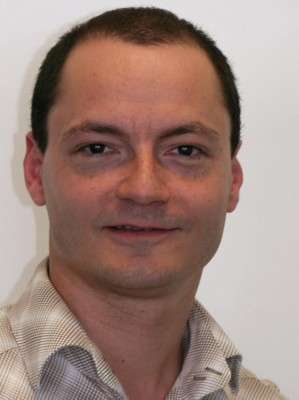 |
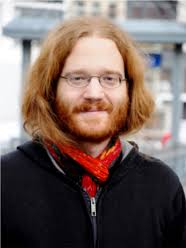 |
| Dr. Joachim Paier | Andreas Schell |
Beim jährlichen „Forum Junge Spitzenforscher“ der Stiftung Industrieforschung in Kooperation mit der Humboldt-Innovation GmbH konnten die Nachwuchsforscherinnen und -forscher der HU punkten: Fünf der insgesamt sechs gut dotierten Preise gingen an Wissenschaftler/innen der HU. Aus IRIS-Sicht besonders erfreulich ist der zweite Preis von Andreas Schell, den er für seinen Beitrag "Neuartige hybride Materialien für Quantenoptikanwendungen" zugesprochen bekommen hat. Herr Schell promoviert derzeit in der Arbeitsgruppe von Prof. Oliver Benson und wurde dabei von IRIS Adlershof unterstützt. Ein weiterer Preisträger ist Dr. Joachim Paier, Postdoc in der Arbeitsgruppe von IRIS-Mitglied Prof. Joachim Sauer. Wir gratulieren den Preisträgern herzlich.
mehr...
02.12.2014Prof. M. Staudacher zum neuen Sprecher des SFB 647 gewählt
|
Professor Matthias Staudacher, Mitglied im Rat von IRIS Adlershof, wurde am 2. Dezember auf der Vollversammlung des "SFB 647: Space - Time - Matter. Analytic and Geometric Structures." zum Sprecher gewählt. Der bisherige Sprecher, Prof. Dr. Jochen Brüning, ebenfalls Mitglied von IRIS Adlershof, wurde zum stellvertretenden Sprecher ernannt. mehr... |
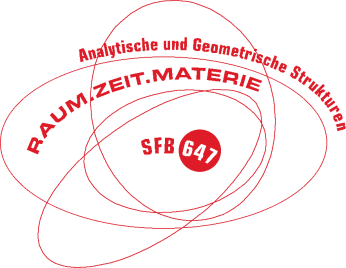 |
12.11.2014Bita Rezania mit dem Posterpreis des Adlershofer Forschungsforum 2014 ausgezeichnet
|
Der mit 500 EUR dotierte Preis für das beste Poster auf der am 11. November im Rahmen des Adlershofer Forschungsforums durchgeführten Posterschau ging an Frau Bita Rezania für ihren Beitrag "Hydration of Bilayered Graphene Oxide". Frau Rezania promoviert derzeit in der Arbeitsgruppe von Prof. Jürgen P. Rabe, Sprecher von IRIS Adlershof. Wir gratulieren der Preisträgerin herzlich. mehr... |
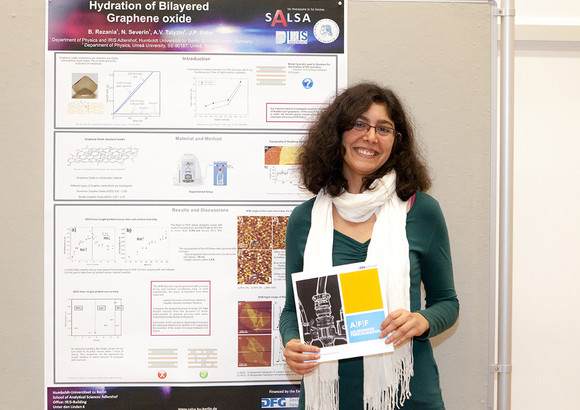 |
15.10.2014An der Grenze des Denkbaren - ein Schlaglicht auf IRIS Adlershof
|
Artikel in der HU-Beilage 2014 des Tagesspiegel zum Forschungsfeld Hybridsysteme von IRIS Adlershof und zur kürzlichen Entdeckung des graphitischen Halbleiters TGCN. mehr... |
 |
14.10.2014Call for 10 SALSA doctoral fellowships open - deadline extended
 SALSA, the Graduate School of Analytical Sciences Adlershof at Humboldt-Universität zu Berlin, is announcing 10 doctoral fellowships to begin on April 1st, 2015. The program offers a structured, three-year period of multidisciplinary research combined with an integrated curriculum in Analytical Sciences.
SALSA, the Graduate School of Analytical Sciences Adlershof at Humboldt-Universität zu Berlin, is announcing 10 doctoral fellowships to begin on April 1st, 2015. The program offers a structured, three-year period of multidisciplinary research combined with an integrated curriculum in Analytical Sciences.
Applications will be accepted upon submission via our online application tool only (www.analytical-sciences.de), which will be accessible from October 14th until November 16th, 2014. Graduate students (master’s degree or equivalent) in chemistry, biology, physics and related disciplines with an interest in Analytical Sciences as well as graduates with a background in natural sciences education are invited to apply. For further information please visit http://www.analytical-sciences.de.
02.10.2014Humboldt-Universität im THE World University Ranking weiter verbessert
 In den Physical Sciences hat sich die Humboldt-Universität zu Berlin im Times Higher Education World University Ranking weltweit auf Platz 69 und in Deutschland auf Platz 6 hinter den Universitäten aus München, Göttingen und Heidelberg, der TU München und der Universität Bonn verbessert. Auch die Arts & Humanities und die Social Sciences zählen zu den Top 100. Die Humboldt-Universität als Ganze wird weltweit auf Platz 80 und in Deutschland auf Platz 4 geführt.
In den Physical Sciences hat sich die Humboldt-Universität zu Berlin im Times Higher Education World University Ranking weltweit auf Platz 69 und in Deutschland auf Platz 6 hinter den Universitäten aus München, Göttingen und Heidelberg, der TU München und der Universität Bonn verbessert. Auch die Arts & Humanities und die Social Sciences zählen zu den Top 100. Die Humboldt-Universität als Ganze wird weltweit auf Platz 80 und in Deutschland auf Platz 4 geführt.
01.10.2014Janik Wolters mit Carl-Ramsauer- und Humboldt-Preis ausgezeichnet
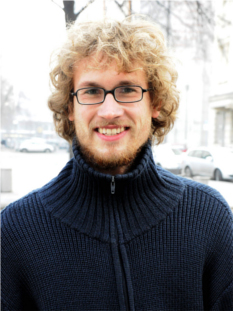 Herr Dr. Janik Wolters erhält den Carl-Ramsauer-Preis der Physikalischen Gesellschaft zu Berlin für seine Dissertationsschrift „Integrated Quantum Hybrid Systems", die er bei Prof. Oliver Benson, Mitglied von IRIS Adlershof, angefertigt hat. Herr Wolters konnte in seiner Doktorarbeit herausragende Ergebnisse zur optischen Untersuchung einzelner Quantensysteme präsentieren. Diese sind einerseits von hoher Relevanz für Anwendungen in einer zukünftigen integrierten Quantentechnologie. Zum anderen verdeutlicht der von ihm erstmals an einem einzelnen Spin beobachtete Quanten-Zeno-Effekt die Eigentümlichkeiten bei der Messung einzelner isolierter Quantensysteme.
Herr Dr. Janik Wolters erhält den Carl-Ramsauer-Preis der Physikalischen Gesellschaft zu Berlin für seine Dissertationsschrift „Integrated Quantum Hybrid Systems", die er bei Prof. Oliver Benson, Mitglied von IRIS Adlershof, angefertigt hat. Herr Wolters konnte in seiner Doktorarbeit herausragende Ergebnisse zur optischen Untersuchung einzelner Quantensysteme präsentieren. Diese sind einerseits von hoher Relevanz für Anwendungen in einer zukünftigen integrierten Quantentechnologie. Zum anderen verdeutlicht der von ihm erstmals an einem einzelnen Spin beobachtete Quanten-Zeno-Effekt die Eigentümlichkeiten bei der Messung einzelner isolierter Quantensysteme.
Auch die Humboldt-Universität zu Berlin hat Herrn Wolters herausragende Doktorarbeit mit der Verleihung des Humboldt-Preises gewürdigt. IRIS Adlershof gratuliert dem jungen Forscher auf diesem Weg sehr herzlich.
mehr...
08.09.2014Film KOSMOS Summer University 2014
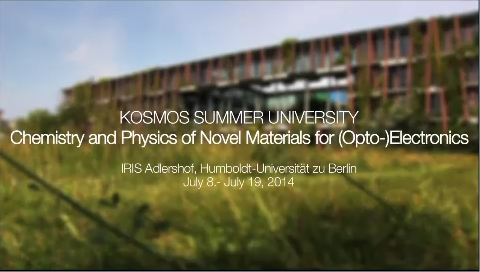 Die Teilnehmer der KOSMOS Summer University 2014 "Chemistry and Physics of Novel Materials for (Opto-)Electronics" wurden von einem Filmteam begleitet. Den Film, sowie einige Bilder, finden sie hier.
Die Teilnehmer der KOSMOS Summer University 2014 "Chemistry and Physics of Novel Materials for (Opto-)Electronics" wurden von einem Filmteam begleitet. Den Film, sowie einige Bilder, finden sie hier.
17.07.2014Philipp Lange mit Lise-Meitner-Preis ausgezeichnet
 Der Lise-Meitner-Preis 2014 in der Kategorie "beste Dissertation" geht an Dr. Philipp Lange vom Institut für Physik der Humboldt-Universität zu Berlin. Dieser Preis wird seit 1998 alljährlich von der Vereinigung der Freunde und Förderer der Physik der Humboldt-Universität verliehen. Herr Lange hat in der Arbeitsgruppe Physik von Makromolekülen von IRIS-Sprecher Prof. Jürgen P. Rabe zum Thema "Optical and structural properties of systems of conjugated molecules and graphenes" mit summa cum laude promoviert. Dabei wurde er auch durch IRIS Adlershof gefördert. Außerdem wurden Kathrin Höfner und Johann Förster für ihre Masterarbeiten ausgezeichnet. IRIS Adlershof gratuliert sehr herzlich.
Der Lise-Meitner-Preis 2014 in der Kategorie "beste Dissertation" geht an Dr. Philipp Lange vom Institut für Physik der Humboldt-Universität zu Berlin. Dieser Preis wird seit 1998 alljährlich von der Vereinigung der Freunde und Förderer der Physik der Humboldt-Universität verliehen. Herr Lange hat in der Arbeitsgruppe Physik von Makromolekülen von IRIS-Sprecher Prof. Jürgen P. Rabe zum Thema "Optical and structural properties of systems of conjugated molecules and graphenes" mit summa cum laude promoviert. Dabei wurde er auch durch IRIS Adlershof gefördert. Außerdem wurden Kathrin Höfner und Johann Förster für ihre Masterarbeiten ausgezeichnet. IRIS Adlershof gratuliert sehr herzlich.
mehr...
02.07.2014Prof. Christian Limberg neues Mitglied von IRIS Adlershof
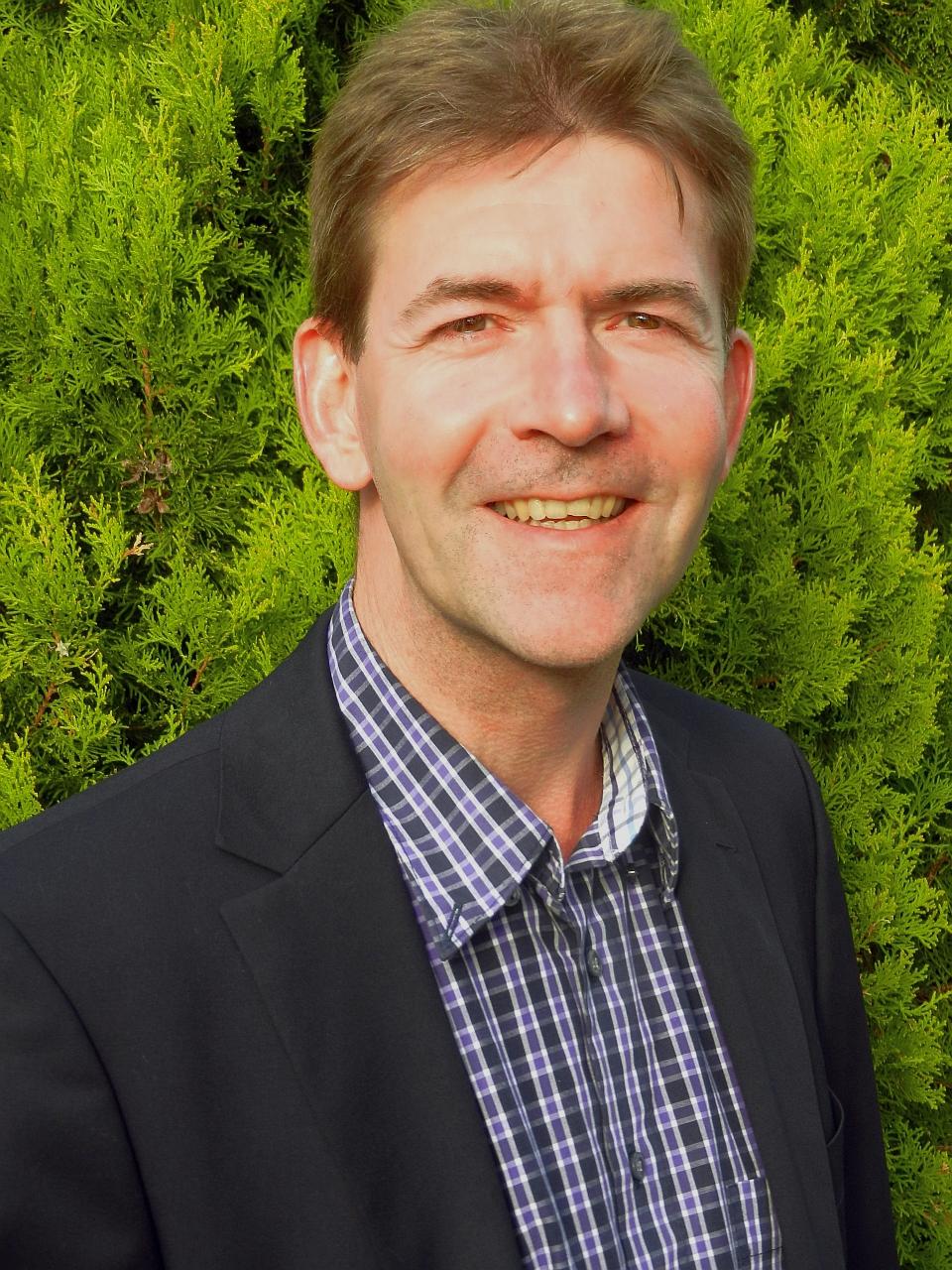 Christian Limberg, Professor für Anorganische und Allgemeine Chemie an der Humboldt-Universität zu Berlin ist neues Mitglied von IRIS Adlershof. Internationales Renommee erlangte er mit seinen Arbeiten zu molekularen Metall-Sauerstoff-Systemen sowie zu deren Verwendung für die katalytische Oxidation von Kohlenwasserstoffen. Er ist Mitglied des Exzellenzclusters „Unifying Concepts in Catalysis“ (UniCat) und Sprecher des im April 2014 gestarteten SFB 1109: „Molekulare Einblicke in Metalloxid/Wassersysteme: Strukturelle Evolution, Grenzflächen und Auflösung“. IRIS Adlershof freut sich sehr auf die Zusammenarbeit mit Christian Limberg und gratuliert herzlich.
Christian Limberg, Professor für Anorganische und Allgemeine Chemie an der Humboldt-Universität zu Berlin ist neues Mitglied von IRIS Adlershof. Internationales Renommee erlangte er mit seinen Arbeiten zu molekularen Metall-Sauerstoff-Systemen sowie zu deren Verwendung für die katalytische Oxidation von Kohlenwasserstoffen. Er ist Mitglied des Exzellenzclusters „Unifying Concepts in Catalysis“ (UniCat) und Sprecher des im April 2014 gestarteten SFB 1109: „Molekulare Einblicke in Metalloxid/Wassersysteme: Strukturelle Evolution, Grenzflächen und Auflösung“. IRIS Adlershof freut sich sehr auf die Zusammenarbeit mit Christian Limberg und gratuliert herzlich.
mehr...
30.06.2014Einstein-Professorin Claudia Draxl wird Max Planck Fellow am Fritz-Haber-Institut Berlin

Frau Prof. Claudia Draxl, Mitglied von IRIS-Adlershof, wurde vom Präsidenten der Max-Planck-Gesellschaft (MPG) zum „Max Planck Fellow“ am Fritz-Haber-Institut der MPG in Berlin ernannt. Das Programm der „Max Planck Fellows“ soll nicht nur die Kooperation zwischen Universitäten und Max-Planck-Instituten dokumentieren und stärken, sondern beinhaltet auch den Aufbau einer eigenen Arbeitsgruppe am Fritz-Haber-Institut.
mehr...17.06.2014"HoW exciting! 2014" - Workshop 31. Juli - 8. August
 Die Dichtefunktionaltheorie ist ein Fundament der computergestützen Materialforschung. Sie ist auch die erste Sprosse auf der Leiter der Multiskalen-Modellierung, um reale physikalische Phänomene und Prozesse quantitativ zu beschreiben. Sie hat sich als eine hervorragende Technik zur Berechnung von Strukturen und Molekulardynamik erwiesen. Die Beschreibung von angeregten Zuständen geht aber darüber hinaus.
Die Dichtefunktionaltheorie ist ein Fundament der computergestützen Materialforschung. Sie ist auch die erste Sprosse auf der Leiter der Multiskalen-Modellierung, um reale physikalische Phänomene und Prozesse quantitativ zu beschreiben. Sie hat sich als eine hervorragende Technik zur Berechnung von Strukturen und Molekulardynamik erwiesen. Die Beschreibung von angeregten Zuständen geht aber darüber hinaus.
Der Workshop, organisiert von Prof. Dr. Claudia Draxl, Mitglied des IRIS Adlershof, und Mitarbeiter/innen bringt junge Wissenschaftler/innen mit weltweit führendenen Expert/innen zusammen, die in Keynote-Vorträgen die theoretischen Grundlagen der führenden ab-initio-Techniken einführen. Dabei wird es vor allem um die Behandlung verschiedener Anregungen gehen, welche für die elektronischen, optischen und thermodynamischen Eigenschaften von Materialien ausschlaggebend sind. All dieses Wissen wird dann "hands-on" mittels des in der Arbeitsgruppe entwickelten Computercodes "exciting" in die Praxis umgesetzt.
Weitere Informationen auf how-exciting-2014.physik.hu-berlin.de
05.06.2014Matteo Guzzo erhält Humboldt-Forschungsstipendium
 Matteo Guzzo erhält ein Humboldt-Forschungsstipendium für Postdoktoranden der Alexander-von-Humboldt-Stiftung. Damit wird er sich in den kommenden zwei Jahren seinem neuen Forschungsgebiet Electron-phonon Coupling in Photoemission Spectra within Advanced Greens Function Methods widmen. Guzzo hat an der Ecole Polytechnique promoviert, wo seine Doktorarbeit über Dynamical Correlations in Solids als die beste des Jahre 2012 ausgezeichnet wurde. Seit 2013 ist er in der Arbeitsgruppe Festkörpertheorie von Prof. Claudia Draxl als Postdoc tätig und wurde in dieser Zeit auch aus Mitteln von IRIS Adlershof gefördert.
Matteo Guzzo erhält ein Humboldt-Forschungsstipendium für Postdoktoranden der Alexander-von-Humboldt-Stiftung. Damit wird er sich in den kommenden zwei Jahren seinem neuen Forschungsgebiet Electron-phonon Coupling in Photoemission Spectra within Advanced Greens Function Methods widmen. Guzzo hat an der Ecole Polytechnique promoviert, wo seine Doktorarbeit über Dynamical Correlations in Solids als die beste des Jahre 2012 ausgezeichnet wurde. Seit 2013 ist er in der Arbeitsgruppe Festkörpertheorie von Prof. Claudia Draxl als Postdoc tätig und wurde in dieser Zeit auch aus Mitteln von IRIS Adlershof gefördert.
02.06.2014Förderung von Kooperationsprojekten zwischen der Tel Aviv University und der Humboldt-Universität zu Berlin
Biophysik und Soft Matter Physics sind Forschungsfelder, die für das Verständnis biologischer Strukturen und Prozesse unerlässlich sind. Sie erlauben die Entwicklung neuer Materialien, die ähnliche zu biologische Strukturen in der Nano-Biotechnologie oder für medizinische Zwecke, beispielsweise für regenerative Therapien verwendet werden könnten. Beide Universitäten haben sich ergänzende Expertise in diesen Bereichen, wodurch eine attraktive Basis für gemeinsame hochinnovative Projekte gegeben ist. Das Ziel des vorgeschlagenen Programms ist es, eine interdisziplinäre Plattform für sowohl Seniorwissenschaftler/Innen und als auch für Nachwuchswissenschaftler/Innen der Humboldt-Universität zu Berlin und der Universität Tel Aviv zu schaffen, um die physikalischen Gesetzmäßigkeiten in der Funktionsweise von einander abhängigen biologischer Molekülen im Einzelnen und in ihrem Zusammenspiel in vitro und in lebenden Zellen zu untersuchen.


mehr...
23.05.2014Neuer zweidimensionaler graphitischer Halbleiter entdeckt
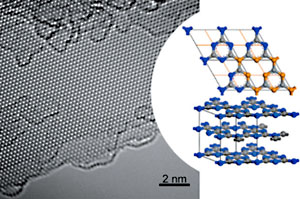 Ein europäisches Team aus Chemikern und Physikern, darunter Dr. Nikolai Severin und Prof. Jürgen P. Rabe vom Institut für Physik der Humboldt-Universität und dem Joint Laboratory of Structural Research am IRIS Adlershof, haben einen neuen, dem Graphen verwandten, quasi zweidimensionalen Halbleiter entdeckt (s.a. Kommentar in ars technica). Das Material, ein Triazin-basiertes graphitisches Kohlenstoffnitrid (TGCN), wurde bereits 1996 theoretisch vorhergesagt. Jetzt konnte es erstmals vorgestellt werden. TGCN ist ein Mitglied der Graphen-Familie, von denen bisher nur fünf nichtmetallische Mitglieder bekannt waren: Graphen selbst, hexagonales Bornitrid, Bor-Kohlenstoff-Nitrid, Fluorgraphen und Graphenoxid. TGCN ist strukturell dem Graphit ähnlich, aber es ist halbleitend und daher hochinteressant für opto-elektronische Anwendungen. Zu den Kooperationspartnern in diesem Projekt gehören Dr. Michael J. Bojdys und Professor Arne Thomas (TU Berlin), Professor Markus Antonietti (MPI für Kolloid- und Grenzflächenforschung) sowie fünf weitere Gruppen aus Großbritannien, Deutschland und Finnland. Im IRIS Adlershof spielen 2D Kristalle eine wichtige Rolle im Forschungsfeld "Hybridsysteme für Optik und Elektronik" .
Ein europäisches Team aus Chemikern und Physikern, darunter Dr. Nikolai Severin und Prof. Jürgen P. Rabe vom Institut für Physik der Humboldt-Universität und dem Joint Laboratory of Structural Research am IRIS Adlershof, haben einen neuen, dem Graphen verwandten, quasi zweidimensionalen Halbleiter entdeckt (s.a. Kommentar in ars technica). Das Material, ein Triazin-basiertes graphitisches Kohlenstoffnitrid (TGCN), wurde bereits 1996 theoretisch vorhergesagt. Jetzt konnte es erstmals vorgestellt werden. TGCN ist ein Mitglied der Graphen-Familie, von denen bisher nur fünf nichtmetallische Mitglieder bekannt waren: Graphen selbst, hexagonales Bornitrid, Bor-Kohlenstoff-Nitrid, Fluorgraphen und Graphenoxid. TGCN ist strukturell dem Graphit ähnlich, aber es ist halbleitend und daher hochinteressant für opto-elektronische Anwendungen. Zu den Kooperationspartnern in diesem Projekt gehören Dr. Michael J. Bojdys und Professor Arne Thomas (TU Berlin), Professor Markus Antonietti (MPI für Kolloid- und Grenzflächenforschung) sowie fünf weitere Gruppen aus Großbritannien, Deutschland und Finnland. Im IRIS Adlershof spielen 2D Kristalle eine wichtige Rolle im Forschungsfeld "Hybridsysteme für Optik und Elektronik" .
mehr...
16.05.2014Architekten und Planer für Forschungsbau von IRIS Adlershof beauftragt
Nachdem im Juni 2013 die Gemeinsame Wissenschaftskonferenz (GWK) des Bundes und der Länder beschlossen hatte, einen Forschungsbau für das am IRIS Adlershof bearbeitete Vorhaben "Hybridsysteme für Elektronik, Optoelektronik und Photonik" zu finanzieren, hat jetzt der Bauherr, die Senatsverwaltung für Stadtentwicklung und Umwelt Berlin, im Rahmen eines VOF-Vergabeverfahrens ein Vorentwurfskonzept ausgewählt, das nun umgesetzt wird.
Das von den Architekten Nickl & Partner und dem Planungsbüro IDK Kleinjohann entwickelte Vorentwurfskonzept sieht auf dem Grundstück Zum Großen Windkanal 6 einen eigenständigen markanten Baukörper vor, der sich wie selbstverständlich in die Bestandsstruktur zweier ehemaliger Kasernen integriert und dabei IRIS Adlershof als zusammenhängende Forschungseinrichtung präsentiert. Der Neubau wird als Verbinder zwischen beide Bestandsbauten gesetzt. So bleibt zur Straße Zum Großen Windkanal ein repräsentativer hofartiger Außenraum erhalten, der zusammen mit dem Foyer als gemeinsamer Eingangsbereich und verbindendes Element der verschiedenen Arbeitsgruppen von IRIS Adlershof fungiert.

IRIS-Sprecher Professor Jürgen P. Rabe ist von diesem Konzept begeistert: „Wir freuen uns sehr, dass es den Architekten und Planern gelungen ist, die vom Forschungsthema vorgegebenen funktionalen Erfordernisse mit einer anspruchsvollen und modernen Architektur zu verbinden. Wenn das Gebäude 2018 fertiggestellt ist, wird dies eine echte Bereicherung nicht nur für die Wissenschaftlerinnen und Wissenschaftler sowie die Studierenden der Humboldt-Universität, sondern auch für unsere strategischen Partner hier an unserem Standort in Berlin-Adlershof und darüber hinaus.“
15.05.2014DFG verlängert Graduiertenkolleg SOAMED
 Die Deutsche Forschungsgemeinschaft (DFG) wird die zweite Phase des Graduiertenkollegs „Service-orientierter Architekturen zur Integration Software-gestützter Prozesse am Beispiel des Gesundheitswesens und der Medizintechnik“ (SOAMED) mit insgesamt ungefähr 3.5 Millionen Euro fördern. Das Graduiertenkolleg nahm im Jahr 2010 seine Arbeit auf und kann diese nun bis 2019 fortsetzen.SOAMED erforscht die Frage, wie man rechnerbasierte Systeme zur Unterstützung komplexer medizinischer Prozesse durch das Zusammenfügen verteilter Softwarekomponenten (auch Services genannt) konstruieren kann. Seitens IRIS Adlershof ist Professor Johann-Christoph Freytag am Graduiertenkolleg beteiligt.
Die Deutsche Forschungsgemeinschaft (DFG) wird die zweite Phase des Graduiertenkollegs „Service-orientierter Architekturen zur Integration Software-gestützter Prozesse am Beispiel des Gesundheitswesens und der Medizintechnik“ (SOAMED) mit insgesamt ungefähr 3.5 Millionen Euro fördern. Das Graduiertenkolleg nahm im Jahr 2010 seine Arbeit auf und kann diese nun bis 2019 fortsetzen.SOAMED erforscht die Frage, wie man rechnerbasierte Systeme zur Unterstützung komplexer medizinischer Prozesse durch das Zusammenfügen verteilter Softwarekomponenten (auch Services genannt) konstruieren kann. Seitens IRIS Adlershof ist Professor Johann-Christoph Freytag am Graduiertenkolleg beteiligt.
mehr...
10.05.2014Science at Work @ IRIS Adlershof
Rechtzeitig zur Langen Nacht der Wissenschaften hat sich IRIS Adlershof in die WISTA-Kampagne "Adlershof. Science at Work." eingebracht. Auf dem Campusgelände finden sich vier einschlägige Motive.
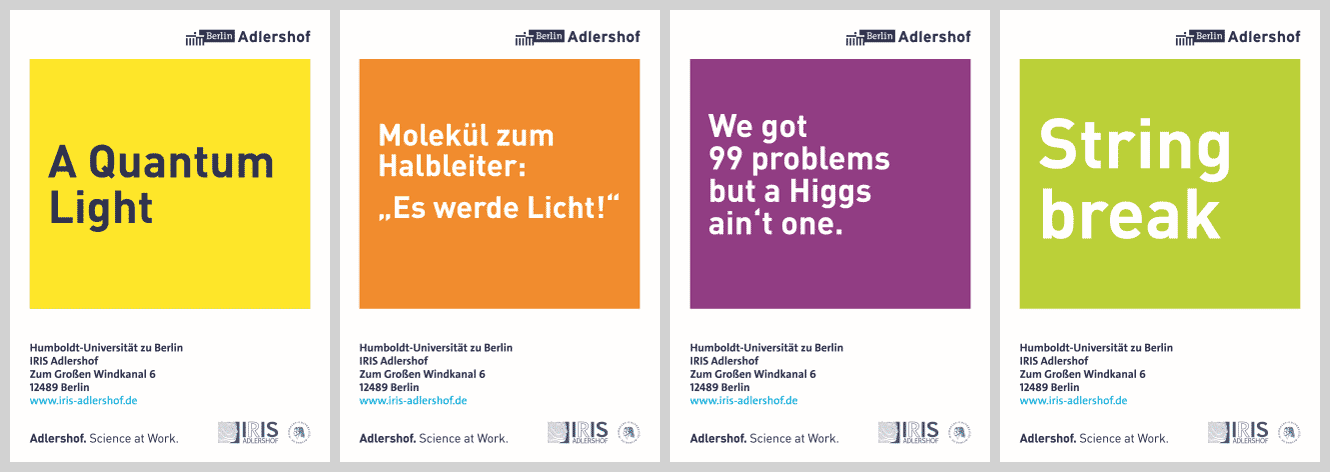
14.04.2014Jürgen P. Rabe Gastprofessor an der Princeton University im Spring Term 2014
 Professor Jürgen P. Rabe, Sprecher von IRIS Adlershof, forscht und lehrt im Spring Term 2014 am Department of Chemistry der Princeton University. Er arbeitet dort mit Professor Steven L. Bernasek an organisch-anorganischen Hybridsystemen und hält einen Graduate Course für fortgeschrittene Studierende aus Physik, Chemie und der School of Engineering and Applied Sciences. Professor Bernasek sowie Professor Roberto Car aus Princeton werden sich umgekehrt an der kommenden KOSMOS Summer University 2014 on Chemistry and Physics of Novel Materials for (Opto-)Electronics am IRIS Adlershof beteiligen. Die Humboldt-Universität kooperiert mit der Princeton University im Rahmen ihrer ersten Profilpartnerschaft. Die Physical Sciences der Princeton University werden im aktuellen „Times Higher Education“ World Reputation Ranking weltweit als Nummer 2 (nach dem California Institute of Technology) geführt.
Professor Jürgen P. Rabe, Sprecher von IRIS Adlershof, forscht und lehrt im Spring Term 2014 am Department of Chemistry der Princeton University. Er arbeitet dort mit Professor Steven L. Bernasek an organisch-anorganischen Hybridsystemen und hält einen Graduate Course für fortgeschrittene Studierende aus Physik, Chemie und der School of Engineering and Applied Sciences. Professor Bernasek sowie Professor Roberto Car aus Princeton werden sich umgekehrt an der kommenden KOSMOS Summer University 2014 on Chemistry and Physics of Novel Materials for (Opto-)Electronics am IRIS Adlershof beteiligen. Die Humboldt-Universität kooperiert mit der Princeton University im Rahmen ihrer ersten Profilpartnerschaft. Die Physical Sciences der Princeton University werden im aktuellen „Times Higher Education“ World Reputation Ranking weltweit als Nummer 2 (nach dem California Institute of Technology) geführt.
08.04.2014KOSMOS Summer University 2014 on Chemistry and Physics of Novel Materials for (Opto-)Electronics

The KOSMOS Summer University 2014 on "Chemistry and Physics of Novel Materials for (Opto-) Electronics" hosted by IRIS Adlershof will take place at the Campus Adlershof from July 8-19, 2014. Organized in cooperation with the National University of Singapore and Princeton University, this summer university will focus on an integrative approach combining the key expertise from outstanding scientists.
In a creative and interactive learning environment young researchers from different backgrounds will be trained in the following topics:· Electronic structure theory
· Synthesis of molecular materials
· Spectroscopic techniques
· Materials classes and properties
· Interfacial design and analysis
· Device fabrication and characterization
Scientific Chairs
Claudia Draxl, IRIS Adlershof & Department of Physics, Humboldt-Universität zu Berlin, Germany
Stefan Hecht, IRIS Adlershof & Department of Chemistry, Humboldt-Universität zu Berlin, Germany
For more information see kosmos2014.iris-adlershof.de and the flyer (PDF, 876 kb), or contact our organisation team:
Ms Nora Butter
Humboldt-Universität zu Berlin, IRIS Adlershof
Zum Großen Windkanal 6, 12489 Berlin, Germany
Phone: +49 30 2093 66350
Fax: +49 30 2093 66351
Email: kosmos2014iris-adlershof.de
The participants of the KOSMOS Summer University 2014 on "Chemistry and Physics of Novel Materials for (Opto-)Electronics" - Film have been followed by a filmteam. It can be watched here. There you can also find some pictures.
07.04.2014Jan Plefka im Sommersemester 2014 Gastprofessor an der ETH Zürich
 Professor Jan Plefka verbringt sein Forschungsfreisemester 2014 am renommierten Institut für theoretische Physik an der ETH Zürich. Er forscht dort gemeinsam mit den Mitgliedern der Arbeitsgruppen Quantenfeldtheorie und Stringtheorie von Prof. M. Gaberdiel und Prof. N. Beisert zu Themen der Mathematischen Physik. Der Austausch stärkt die Kooperation von IRIS Adlershof mit der ETH. Darüberhinaus hält er eine Spezialvorlesung an der ETH zum Thema "Streuamplituden in Eichtheorien", einem aktuellen Forschungsthema am Schnittpunkt von mathematischer Physik und der Phänomenologie der Elementarteilchen. Diesem Thema ist auch sein kürzlich erschienenes Lehrbuch in der Lecture Notes in Physics Reihe des Springer Verlags gewidmet, das mit Dr. J. Henn (IAS Princeton) verfasst wurde.
Professor Jan Plefka verbringt sein Forschungsfreisemester 2014 am renommierten Institut für theoretische Physik an der ETH Zürich. Er forscht dort gemeinsam mit den Mitgliedern der Arbeitsgruppen Quantenfeldtheorie und Stringtheorie von Prof. M. Gaberdiel und Prof. N. Beisert zu Themen der Mathematischen Physik. Der Austausch stärkt die Kooperation von IRIS Adlershof mit der ETH. Darüberhinaus hält er eine Spezialvorlesung an der ETH zum Thema "Streuamplituden in Eichtheorien", einem aktuellen Forschungsthema am Schnittpunkt von mathematischer Physik und der Phänomenologie der Elementarteilchen. Diesem Thema ist auch sein kürzlich erschienenes Lehrbuch in der Lecture Notes in Physics Reihe des Springer Verlags gewidmet, das mit Dr. J. Henn (IAS Princeton) verfasst wurde.
02.04.2014Call for 12 SALSA doctoral fellowships open
 SALSA, the Graduate School of Analytical Sciences Adlershof at Humboldt-Universität zu Berlin, is announcing 12 doctoral fellowships to begin on October 1st, 2014. The program offers a structured, three-year period of multidisciplinary research combined with an integrated curriculum in Analytical Sciences.
SALSA, the Graduate School of Analytical Sciences Adlershof at Humboldt-Universität zu Berlin, is announcing 12 doctoral fellowships to begin on October 1st, 2014. The program offers a structured, three-year period of multidisciplinary research combined with an integrated curriculum in Analytical Sciences.
Applications will be accepted upon submission via our online application tool only (www.analytical-sciences.de), which will be accessible from April 7th until May 4th, 2014. Graduate students (master’s degree or equivalent) in chemistry, biology, physics and related disciplines with an interest in Analytical Sciences as well as graduates with a background in natural sciences education are invited to apply.
more...
17.03.201478. Jahrestagung der DPG und DPG-Frühjahrstagung SAMOP an der Humboldt- Universität zu Berlin
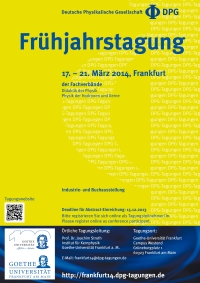 Vom 17. - 21. März 2014 fand die 78. Jahrestagung der DPG und DPG-Frühjahrstagung der Sektion AMOP (Atome, Moleküle, Quantenoptik und Plasmen) an der Humboldt Universität zu Berlin statt. Die Tagung wurde von Prof. Oliver Benson, Mitglied von IRIS Adlershof, organisiert und geleitet.
Vom 17. - 21. März 2014 fand die 78. Jahrestagung der DPG und DPG-Frühjahrstagung der Sektion AMOP (Atome, Moleküle, Quantenoptik und Plasmen) an der Humboldt Universität zu Berlin statt. Die Tagung wurde von Prof. Oliver Benson, Mitglied von IRIS Adlershof, organisiert und geleitet.
12.03.2014Humboldt-Universität zählt in den "Physical Sciences" zu den 100 angesehensten Universitäten der Welt
 Das „Times Higher Education“ World Reputation Ranking zählt die Humboldt-Universität zu Berlin in den "Physical Sciences" zu den 100 weltweit angesehensten Universitäten. Auch die "Arts & Humanities" und die "Social Sciences" sowie die Humboldt-Universität als Ganze werden zu den Top 100 gezählt. In Deutschland werden in den Physical Sciences außerdem die beiden Universitäten in München sowie die Universitäten in Göttingen, Heidelberg, Aachen und Bonn in dieser Kategorie geführt.
Das „Times Higher Education“ World Reputation Ranking zählt die Humboldt-Universität zu Berlin in den "Physical Sciences" zu den 100 weltweit angesehensten Universitäten. Auch die "Arts & Humanities" und die "Social Sciences" sowie die Humboldt-Universität als Ganze werden zu den Top 100 gezählt. In Deutschland werden in den Physical Sciences außerdem die beiden Universitäten in München sowie die Universitäten in Göttingen, Heidelberg, Aachen und Bonn in dieser Kategorie geführt.
Das "QS" World University Ranking 2014 sieht die Humboldt-Universität in den Fächern Informatik, Mathematik und Physik unter den TOP 100 und außerdem die FU Berlin in Chemie und die TU Berlin in Informatik und Mathematik.
mehr...
21.02.2014Norbert Koch neuer "Chair Professor" am FUNSOM, Soochow Universität, China
 Am 19. Februar 2014 wurde Professor Norbert Koch, Mitglied von IRIS Adlershof, zum "Chair Professor" am Functional Nano & Soft Materials Laboratory (FUNSOM), einem Institut der Soochow-Universität in Suzhou, VR China, ernannt.
Am 19. Februar 2014 wurde Professor Norbert Koch, Mitglied von IRIS Adlershof, zum "Chair Professor" am Functional Nano & Soft Materials Laboratory (FUNSOM), einem Institut der Soochow-Universität in Suzhou, VR China, ernannt.
"Damit verstärke ich die internationale Ausrichtung und Vernetzung des Instituts, das die interdisziplinäre Forschung (Physik, Chemie, Elektrotechnik, Biologie, Medizin) rund um nanostrukturierte und weiche Materialien für die Elektronik und Optoelektronik in China vorantreibt. Besonderes Augenmerk gilt der exzellenten Ausbildung von Studierenden in einem offenen Umfeld, wo ich durch Block-Kurse und "Coaching" in kleinen Gruppen beitragen werde. Der Austausch von Studierenden (Master- und Doktoranden-Level) bildet einen weiteren Schwerpunkt der Zusammenarbeit.", so Norbert Koch.
14.02.2014Dissertationspreis Adlershof an Dr. Martin Hempel
Bei der diesjährigen Verleihung des Dissertationspreises konnte sich Herr Dr. Martin Hempel erfolgreich gegen seine beiden Mitnominierten durchsetzen. Seit 2002 wird der Dissertationspreis Adlershof jährlich von der Humboldt-Universität zu Berlin, der Initiativgemeinschaft Außeruniversitärer Forschungseinrichtungen in Adlershof e.V. (IGAFA) und der WISTA-MANAGEMENT GMBH verliehen. Drei Nominierte treten mit Kurzvorträgen zum Thema ihrer Dissertation aus dem gerade zu Ende gegangenen Jahr gegeneinander an. Die Jury entscheidet im Anschluss, wer nicht nur sehr gut forschen, sondern auch mitreißend und überzeugend vortragen kann.
Dr. Martin Hempel promovierte in der Arbeitsgruppe von IRIS-Mitglied Prof. Dr. Thomas Elsässer, Max-Born-Institut für Nichtlineare Optik und Kurzzeitspektroskopie (MBI) und Humboldt-Universität zu Berlin. Er hat als Doktorand am MBI Defektmechanismen in Hochleistungs-Diodenlasern untersucht. Dabei erfasste und interpretierte er den zeitlichen Ablauf der Degradation für unterschiedliche Klassen kommerzieller Diodenlaser. Hochleistungs-Diodenlaser sind derzeit die effizienteste menschengemachte Struktur zur Umwandlung von elektrischer Energie in Licht. Die Forschungsergebnisse von Martin Hempel sind von hoher Relevanz für die Angewandte Physik, die Optoelektronik und die Photonik. IRIS Adlershof gratuliert herzlich.
27.01.2014Seminar "Wissenschaftliches Schreiben" für junge IRIS Forscher im Februar
IRIS Adlershof hat eine Seminarreihe über wissenschaftliches Schreiben organisiert, welche sich gezielt an junge Forscher richtet, die an IRIS relevanten Forschungsbereichen arbeiten. Diese drei zweitägigen Seminare werden im Februar 2014 (18. & 19., 20. & 21. und 24. & 25. Februar) von Katherine Tiede durchgeführt. Die kanadischen Sprachwissenschaftlerin ist spezialisiert auf technische und ingenieurtechnische Kommunikation. Das Seminar konzentriert sich auf die Lösung von Problemen, mit welchen sich Wissenschaftler konfrontiert sehen, wenn sie ihre Arbeit auf Englisch kommunizieren sollen. Eine Reihe von linguistischen Grundregeln wird erklärt, um Forschungsergebnisse klar, kohärente, überzeugend und prägnant vorzustellen. Eine kleine Anzahl von Plätzen ist noch verfügbar. Wenn Sie sich bewerben möchten, kontaktieren Sie bitte Frau Nora Butter: butteriris-adlershof.de.
30.12.2013Einstein-Stiftung fördert Forschungsvorhaben von IRIS-Miglied Prof. Oliver Benson
Oliver Benson, Professor am Institut für Physik der Humboldt-Universität zu Berlin und Mitglied von IRIS Adlershof und Prof. Kurt Busch (Institut für Physik der HU und Max-Born-Institut für Nichtlineare Optik und Kurzzeitspektroskopie), bilden für die nächsten drei Jahre ein Forscherteam mit ihren israelischen Fachkollegen Prof. Ronen Rapaport und Prof Uriel Levy von der Hebrew University Jerusalem. Im Rahmen des Einstein-Forschungsvorhabens „Actiplant“ möchten die Wissenschaftler herauszufinden, wie sich mithilfe von Erkenntnissen aus der Quantenmechanik die Emission und Absorption von Licht kontrollieren lässt. Dabei arbeiten sie auf kleinster Skala: Sie wollen einzelne Lichtquanten untersuchen und manipulieren.
mehr...
26.11.2013Neuer Sonderforschungsbereich "Molekulare Einblicke in Metalloxid-Wasser-Systeme" an der Humboldt-Universität zu Berlin
Die Deutsche Forschungsgemeinschaft (DFG) hat einen neuen Sonderforschungsbereich (SFB) an der Humboldt-Universität bewilligt. Der Forschungsverbund mit dem Titel „Molekulare Einblicke in Metalloxid-Wasser-Systeme: Strukturelle Evolution, Grenzflächen und Auflösung“ wird zunächst für drei Jahre und neun Monate gefördert. Sprecher des SFB ist Prof. Dr. Christian Limberg vom Institut für Chemie. Seitens IRIS Adlershof ist Prof. Dr. Joachim Sauer beteiligt.
mehr...
26.11.2013HU-Physiker Janik Wolters gewinnt Berliner Science Slam
Beim 28. Science Slam Berlin am 04.11.2013 konnte Herr Dipl-Phys. Janik Wolters aus der Arbeitsgruppe von Prof. Oliver Benson (Mitglied von IRIS Adlershof) mit seinem Beitrag "Beobachtung beeinflusst Bewegung, Der Quanten-Zeno-Effekt" das Publikum begeistern und den 1. Platz erringen. Er setzte sich erfolgreich gegen eine sehr starke Konkurrenz aus den Bereichen Jura, Medizin, Physik und Biologie durch.
25.11.2013Vom Schülerlabor zum Lehr-Lern-Labor
Das Humboldt-ProMINT-Kolleg widmet sich gemeinsam mit der Freien Universität Berlin und mit den Universitäten in Kiel, Koblenz-Landau, Münster und Oldenburg der Frage, wie Hochschulen ihre Schülerlabore zu Lehr-Lern-Laboren weiterentwickeln und curricular ins Lehramtsstudium einbetten können. Das Ziel: Lehramtsstudierende sollen so frühzeitig Erfahrung im praktischen Unterrichten sammeln. Das Projekt wird von der Deutschen Telekom Stiftung gefördert. Seitens IRIS Adlershof ist Professor Jürg Kramer am ProMINT Kolleg beteiligt.
mehr...
06.11.2013Caroline von Humboldt-Professur 2013 für Frau Prof. Dr. Claudia Draxl
Die diesjährige Caroline von Humboldt-Professur der Humboldt-Universität wird an Frau Prof. Dr. Claudia Draxl (Institut für Physik und IRIS Adlershof) vergeben. Die feierliche Verleihung findet im Dezember statt. Als Auszeichnung für herausragende Leistungen in Forschung und Lehre wird jedes Jahr eine Professorin der HU mit dieser Professur geehrt. Die Namensprofessur ist mit 80.000 Euro dotiert, die insbesondere der Projektförderung und der Unterstützung für die weitere Karriere der Preisträgerin dient. Durch die Auszeichnung soll zudem die öffentliche und internationale Sichtbarkeit der Professorin erhöht werden. Die Caroline von Humboldt-Professur wird abwechselnd in den Geistes- oder Sozialwissenschaften und in den Naturwissenschaften vergeben. IRIS Adlershof gratuliert herzlich.
mehr...
06.11.2013Urania-Medaille an Herrn Prof. Dr. Anton Zeilinger
Herr Prof. Dr. Anton Zeilinger (Institut für Quantenoptik und Quanteninformation Wien und Universität Wien, Präsident der Österreichischen Akademie der Wissenschaften) wurde auf einer Festveranstaltung in der Urania am 21. Oktober 2013 mit der Urania-Medaille 2013 ausgezeichnet. Er erhielt die Medaille für seine beispielhafte Verbindung von international hoch angesehener Leistung in Lehre und Forschung mit der Vermittlung komplexer wissenschaftlicher Fragestellungen an eine breite Öffentlichkeit. Herr Prof. Dr. Zeilinger ist seit 2005 Ehrendoktor der Mathematisch-Naturwissenschaftlichen Fakultät I der Humboldt-Universität zu Berlin. IRIS Adlershof gratuliert herzlich.
04.11.2013Call for Applications: 15 doctoral fellowships in Chemistry, Biology, Physics and Natural Sciences Education - Deadline shifted!
SALSA, the Graduate School of Analytical Sciences Adlershof at Humboldt-Universität zu Berlin, is announcing 15 doctoral fellowships to begin on April 1st, 2014. The program offers a structured, three-year period of multidisciplinary research combined with an integrated curriculum in Analytical Sciences.
Applications will be accepted upon submission via our online application tool only (www.analytical-sciences.de), which will be accessible from October 10th until November 4th, 2013. November 17th, 2013.Graduate students (master’s degree or equivalent) in chemistry, biology, physics and related disciplines with an interest in Analytical Sciences as well as graduates with a background in natural sciences education are invited to apply. For further information please visit http://www.analytical-sciences.de.
General information for applicants
Online application tool for registration
List of 3rd call projects including abstracts
23.10.2013Profilpartnerschaft der Humboldt-Universität mit der Princeton University gewinnt an Fahrt
Die zu Jahresbeginn vereinbarte Profilpartnerschaft zwischen der Humboldt-Universität zu Berlin und der Princeton University ist nun in ein neues Stadium eingetreten: Wissenschaftlerinnen und Wissenschaftler beider Universitäten haben am 27. und 28. Oktober im Rahmen eines von IRIS Adlershof am naturwissenschaftlichen Campus der HU ausgerichteten Workshops Forschungsergebnisse zum Thema „Novel (Opto)-Electronic Materials“ vorgestellt und über die weitere Vertiefung der wissenschaftlichen Kooperation in diesem innovativen Forschungsfeld an der Schnittstelle zwischen Physik, Chemie und Materialwissenschaften diskutiert.
Federführend sind Professor Antoine Kahn (Department of Electrical Engineering der Princeton University) und Professor Norbert Koch (IRIS Adlershof und Institut für Physik der Humboldt-Universität). Auch der wissenschaftliche Nachwuchs beider Universitäten hat sich im Rahmen eines Young Researcher Meetings in dieses spannende Vorhaben eingebracht. Der Nachfolge-Workshop wird im nächsten Frühjahr in Princeton stattfinden.
mehr...
14.10.2013Dr. Konstantin Wiegandt erhält Humboldt-Preis
Mit dem Humboldt-Preis werden ausgezeichnete wissenschaftliche Arbeiten von Studierenden sowie von Nachwuchswissenschaftlerinnen und -wissenschaftlern gewürdigt. Einer der diesjährigen Preisträger ist Dr. Konstantin Wiegandt, ehemaliger Doktorand der Arbeitsgruppe von IRIS-Adlershof Mitglied Prof. Plefka (AG Quantenfeld- und Stringtheorie), der für seine 2012 verteidigte Dissertation "Superconformal Quantum Field Theories in String - Gauge Theory Dualities" ausgezeichnet wurde.
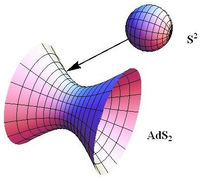 Im ersten Teil der Dissertation wurde die Berechnung von Wilson-Schleifen in einer Quantenfeldtheorie mit anderen Symmetrien vorgenommen, der N=6 Super Chern-Simons Theorie, die ebenfalls dual zu einer Stringtheorie ist. Dabei stellte sich erstaunlicherweise nicht nur heraus, dass die Wilson-Schleifen mit den Streuamplituden dieser Theorie übereinstimmen, sondern dass diese auch noch äquivalent zu denen der N=4 SYM Theorie sind. Im zweiten Teil der Dissertation wurde die Berechnung von sog. Strukturkonstanten vorgenommen, mit Hilfe derer die Korrelationsfunktionen indirekt konstruiert werden können.
Im ersten Teil der Dissertation wurde die Berechnung von Wilson-Schleifen in einer Quantenfeldtheorie mit anderen Symmetrien vorgenommen, der N=6 Super Chern-Simons Theorie, die ebenfalls dual zu einer Stringtheorie ist. Dabei stellte sich erstaunlicherweise nicht nur heraus, dass die Wilson-Schleifen mit den Streuamplituden dieser Theorie übereinstimmen, sondern dass diese auch noch äquivalent zu denen der N=4 SYM Theorie sind. Im zweiten Teil der Dissertation wurde die Berechnung von sog. Strukturkonstanten vorgenommen, mit Hilfe derer die Korrelationsfunktionen indirekt konstruiert werden können.
mehr...
10.10.2013Call for Applications: 15 doctoral fellowships in Chemistry, Biology, Physics and Natural Sciences Education
SALSA, the Graduate School of Analytical Sciences Adlershof at Humboldt-Universität zu Berlin, is announcing 15 doctoral fellowships to begin on April 1st, 2014. The program offers a structured, three-year period of multidisciplinary research combined with an integrated curriculum in Analytical Sciences.
Applications will be accepted upon submission via our online application tool only (www.analytical-sciences.de), which will be accessible from October 10th until November 4th, 2013. Graduate students (master’s degree or equivalent) in chemistry, biology, physics and related disciplines with an interest in Analytical Sciences as well as graduates with a background in natural sciences education are invited to apply. For further information please visit http://www.analytical-sciences.de.
07.10.2013Humboldt-Universität im World University Ranking unter den Top 100
Die Humboldt-Universität zu Berlin belegt im aktuellen Times Higher Education World University Ranking 2013/2014 den Rang 94. Gegenüber dem Vorjahr konnte sie sich um fünf Plätze verbessern und gehört damit im weltweiten Hochschulvergleich zu den sechs deutschen Universitäten in den Top 100.
mehr...
01.09.2013Ulrich Panne neuer Präsident der Bundesanstalt für Materialforschung und -prüfung
Professor Ulrich Panne übernimmt ab dem 1. September 2013 die Leitung der Bundesanstalt für Materialforschung und -prüfung (BAM). Der Chemiker löst Professor Manfred Hennecke ab, der 11 Jahre die BAM als Präsident leitete und nun in den Ruhestand geht.
Bei seiner Ernennung zum BAM-Präsidenten betonte Ulrich Panne, dass er die Verbindung von Ingenieurwissenschaften und Naturwissenschaften der BAM weiter ausbauen ausmöchte. Nur so können die herausfordernden Themen der Chemie beziehungsweise der Materialwissenschaft und Werkstofftechnik multidisziplinär bearbeitet werden.
Der 49-jährige analytische Chemiker ist seit 2004 an der BAM tätig und leitete die Abteilung 1 Analytische Chemie, Referenzmaterialien. Darüber hinaus ist er Professor für Instrumentelle Analytische Chemie an der Humboldt-Universität zu Berlin. Professor Panne ist Mitinitiator und seit 2012 einer der Sprecher der Graduiertenschule für Analytical Sciences Adlershof (SALSA) innerhalb der Exzellenzinitiative des Bundes und der Länder.
IRIS Adlershof Adlershof gratuliert herzlich!
30.08.2013Grundsteinlegung für das Studentendorf in Adlershof
Nach mehr als sechsjähriger Planung ist auf dem Campus Adlershof der Humboldt-Universität zu Berlin (HU) am 30. August 2013 der Grundstein für ein weiteres Berliner Studentendorf gelegt worden. In direkter Nähe zu den naturwissenschaftlichen Instituten der HU entsteht ein Gebäudekomplex mit rund 380 Wohnplätzen. Davon sind 120 für HU-Studierende reserviert.
Die ersten Bewohnerinnen und Bewohner werden voraussichtlich im Herbst 2014 einziehen. Alle Zimmer werden über ein eigenes Bad verfügen und um Gemeinschaftsräume wie Wohnzimmer und Küche zu einer Wohnlandschaft gruppiert. Das Studentendorf erstreckt sich auf zehn Gebäude und liegt an der Abram-Joffe-Straße / Ecke Karl-Ziegler-Straße.
Bauherr des neuen Wohncampus ist die Studentendorf Adlershof GmbH, ein Joint Venture der Studentendorf Schlachtensee eG und der Schweizerischen CoOpera Sammelstiftung PUK.
30.08.2013HU-Physiker messen Quanten-Zeno-Effekt erstmalig am einzelnen Quantensystem
Einem Team aus Forschern um Prof. Oliver Benson, Mitglied von IRIS Adlershof, ist es gelungen, den Quanten-Zeno-Effekt an einem einzelnen Elektron in einem Festkörpersystem nachzuweisen. Dies verspricht ein tieferes Verständnis der quantenmechanischen Dynamik und somit weitere Einsichten in die komplexe Wechselwirkung einzelner Quantensysteme mit ihrer Umgebung.
mehr...
18.08.2013Carl-Ramsauer-Preis der Physikalischen Gesellschaft zu Berlin an Dr. Tim Schröder
Die Physikalischen Gesellschaft zu Berlin hat Herrn Dr. Tim Schröder, derzeit MIT Cambridge, USA, für seine Dissertationsschrift "Integrated photonic systems for single photon generation and quantum applications: Assembly of fluorescent diamond nanocrystals by novel nano-manipulation techniques", die er in der Arbeitsgruppe von Prof. Oliver Benson, Mitglied von IRIS Adlershof, angefertigt hat, den Carl-Ramsauer-Preis 2013 verliehen.
mehr...
05.08.2013Ferdinand-Braun-Institut in Adlershof mit "Advanced UV for Life" erfolgreich im Wettbewerb Zwanzig20 des BMBF
"Advanced UV for Life" – so der Name des vom Ferdinand-Braun-Institut in Adlershof koordinierten Konsortiums, das künftig innovative Anwendungen von UV-Licht in Medizin, Wasserbehandlung, Produktionstechnik und Sensorik erschließen wird. Der Zusammenschluss von Forschungseinrichtungen und Industrieunternehmen unterschiedlicher Fachdisziplinen hat sich im Wettbewerb Zwanzig20 im Rahmen der Hightech-Strategie des Bundesministeriums für Bildung und Forschung (BMBF) durchgesetzt. IRIS Adlershof gratuliert herzlich.
mehr...
01.08.2013Exzellenzcluster-Projekt ”Gestaltung von Laboren” besucht die Chiba University in Japan und die National University of Singapore (NUS)
Norbert Koch und Jürgen P. Rabe von IRIS Adlershof, die Kunsthistorikerin Charlotte Klonk und weitere Wissenschaftlerinnen und Wissenschaftler aus dem Projekt ”Gestaltung von Laboren” des Exzellenz-Clusters "Bild Wissen Gestaltung. Ein interdisziplinäres Labor" haben Institute der Chiba University in Japan sowie die Faculty of Science der National University of Singapore (NUS), das dortige Graphene Research Centre, das Centre for Quantum Technologies und das Mechanobiology Institute besucht, um die Gestaltung von Laboren für interdisziplinäre naturwissenschaftliche Forschung zu untersuchen. Nach den Besuchen des Nano TecCenter Weiz in Österreich, Instituten der Princeton University, des MIT, der Harvard University und der Columbia University in den USA ist dies die vorerst letzte Station der Feldforschung. Die gewonnenen Erkenntnisse sollen in die Gestaltung des IRIS-Forschungsbaus (siehe auch Pressemitteilung der HU vom 28.04.2013) einfließen.
Empfang der Delegation der Humboldt-Universität durch
Vizepräsident Takeshi Tokuhisa von der Chiba University
31.07.2013Kooperation zwischen Tel Aviv University und Humboldt-Universität zu Biologischer Physik und Physik weicher Materie
IRIS Adlershof und das IRI for the Life Sciences streben den Ausbau ihrer wissenschaftlichen Zusammenarbeit mit der Tel Aviv University (TAU) auf dem Gebiet der Biologischen Physik und der Physik der weichen Materie an. Für die Förderung entsprechender bilateraler Forschungsvorhaben stellen beide Universitäten Mittel zur Verfügung. Gemeinsame Projektvorschläge, an denen Forscherinnen und Forscher der TAU und der HU gleichermaßen beteiligt sind, können bis zum 31. Januar 2014 eingereicht werden.
mehr...25.07.2013Norbert Koch Visiting Professor der Chiba University in Japan
Norbert Koch, Mitglied von IRIS Adlershof, wurde zum Visiting Professor der Chiba University in Japan ernannt. IRIS Adlershof kooperiert insbesondere mit der Gruppe von Professor Nobuo Ueno und der Graduate School of Advanced Integration Science der Chiba University. Gemeinsam mit der Chiba University und der National University of Singapore hat IRIS Adlershof die erste KOSMOS Summer University 2011 zum Thema „Frontiers of Organic / Inorganic Hybrid Materials for Electronics and Optoelectronics” ausgerichtet.
03.07.2013Zehn Jahre Campus Adlershof der Humboldt-Universität zu Berlin
Die Humboldt-Universität zu Berlin hat das zehnjährige Bestehen ihres mathematisch-naturwissenschaftlichen Campus Adlershof feierlich mit einem Festakt begangen.
mehr...
29.06.2013GWK beschließt Förderung des Forschungsbau Hybridsysteme für IRIS Adlershof
Einer Empfehlung des Wissenschaftsrats folgend, hat die Gemeinsame Wissenschaftskonferenz (GWK) am 28.06.2013 beschlossen, 37,4 Mio. Euro für die Errichtung eines hochmodernen Forschungsbaus für IRIS Adlershof bereitzustellen. Mit der Förderung werden entsprechend der Förderkriterien des Verfahrens nach Art. 91b GG die herausragende wissenschaftliche Qualität und die nationale Bedeutung des Vorhabens "Organisch-anorganische Hybridsysteme für die Optik, Elektronik und Photonik" gewürdigt. Der Forschungsbau mit einer Gesamtnutzfläche von gut 4.700 Quadratmetern für etwa 140 Wissenschaftlerinnen und Wissenschaftler soll bis zum Jahr 2018 nordöstlich des Instituts für Physik entstehen und IRIS Adlershof zu einem international noch sichtbareren Zentrum dieses innovativen Forschungsfelds ausbauen (s.a. Pressemitteilung der HU vom 28.04.2013).
mehr...
08.06.2013IRIS Adlershof in der Langen Nacht der Wissenschaften 2013
Auch in diesem Jahr stellen die Mitglieder von IRIS Adlershof im Rahmen der Langen Nacht der Wissenschaften einige ihrer Projekte einer breiten Öffentlichkeit vor.
-
Aus einer Kooperation zwischen den Berliner Verkehrsbetrieben und dem Technologiestandort Adlershof resultiert ein besonderes Highlight: zwischen Adlershof, Schöneweide und Karlshorst werden zwei „Rollende Hörsäle“ unterwegs sein, in denen Wissenschaftler, Unternehmer und Standortmanager die Fahrgäste mit Beiträgen zu spannenden Themen der Wissenschaft unterhalten. In einem dieser „Rollenden Hörsäle“ wird IRIS-Sprecher Jürgen P. Rabe die Tram als rollenden Einstein-Zug verwenden.
-
IRIS-Mitglied Alexander Reinefeld bietet am Konrad-Zuse-Zentrum für Informationstechnik Vorträge und Führungen u. a. zum Ursprung des Computers, zu autostereoskopischen Displays und zu computergestützter Molekülentwicklung an.
-
Im Programm „Datenstriptease“ der Arbeitsgruppe Datenbanken und Informationssysteme (DBIS) von IRIS-Mitglied Johann-Christoph Freytag erfahren die Besucher anhand von alltäglichen Szenarios, wie ihre Daten aufgespürt und zu Informationen kombiniert werden, die ihnen beruflich, sozial oder finanziell schaden können.
-
Im Max-Born-Institut für Nichtlineare Optik und Kurzzeitspektroskopie, welches von IRIS-Mitglied Thomas Elsässer geleitet wird, können sich Besucher in Laborbsichtigungen, Ausstellungen und anhand von Experimenten zu extrem kurzen Lichtimpulsen und Lasern informieren.
-
Mitarbeiter der IRIS-Arbeitsgruppe "Physik der Makromoleküle" geben Interessierten einen Einblick in die Welt der Moleküle. Einzelne DNA-Stränge auf Glimmer werden mithilfe der Kraftmikroskopie gerastert und anschaulich gemacht, Oberflächen mit Höhenunterschieden, nicht größer als ein einige Atome, werden genau bestimmt. In einem zweiten Experiment werden einzelne Moleküle gedehnt und zerrissen. Beide Messprinzipien werden am Modell an großen Objekten, z. B. einem menschlichen Haar, gelochter Pappkarton oder Draht, erklärt.
-
Unter dem Titel „Was ein Lehrer wissen muss“ gibt das Humboldt-ProMINT-Kolleg einen Einblick in die Wissenschaft vom Lehren und Lernen in den mathematisch naturwissenschaftlichen Fächern.
25.05.2013SFB 658 geht in die dritte Förderperiode
Die Deutsche Forschungsgemeinschaft hat die Fortsetzung der Förderung des Sonderforschungsbereichs SFB 658 "Elementarprozesse in molekularen Schaltern an Oberflächen" für eine dritte Periode für die Jahre 2013-2016 bewilligt. In dem 2005 eingerichteten Sonderforschungsbereich werden Grundlagen von Schaltprozessen, ausgelöst durch externe Stimuli an wohl definierten molekularen Systemen im Kontakt mit Festkörperoberflächen, systematisch untersucht. Sprecher des SFB ist Professor Felix von Oppen (FU Berlin). Seitens IRIS Adlershof sind Professor Claudia Draxl und Professor Stefan Hecht am SFB beteiligt.
22.05.2013Graduiertenkollegs „Masse, Spektrum, Symmetrie: Teilchenphysik in der Ära des Large Hadron Colliders“ und „Self-Assembled Soft Matter Nano-Structures at Interfaces” gehen in die zweite Förderperiode
Die Deutsche Forschungsgemeinschaft (DFG) hat die Förderung zweier Graduiertenkollegs, an denen IRIS Adlershof beteiligt ist, für weitere viereinhalb Jahre beschlossen und stellt hierfür insgesamt über sieben Millionen Euro zur Verfügung.
Im Graduiertenkolleg 1504 „Masse, Spektrum, Symmetrie: Teilchenphysik in der Ära des Large Hadron Colliders“ kooperieren Wissenschaftlerinnen und Wissenschaftler der Humboldt-Universität zu Berlin, der Technischen Universität Dresden und des DESY Zeuthen zu theoretischen und experimentellen Fragen der Teilchen- und Astroteilchenphysik. Verbindendes Glied aller Standorte ist die Mitarbeit im ATLAS-Experiment am Large Hadron Collider (LHC) des CERN in Genf. Im Sommer des vergangenen Jahres gelang dort der Nachweis der Existenz von Higgs-Bosonen. Sprecher des Kollegs ist Prof. Heiko Lacker vom Institut für Physik der HU Berlin. Seitens IRIS Adlershof sind Prof. Jan Plefka und Prof. Matthias Staudacher beteiligt.
mehr...
Im Internationalen Graduiertenkolleg 1524 „Self-Assembled Soft Matter Nano-Structures at Interfaces” erforschen Nachwuchswissenschaftlerinnen und Nachwuchswissenschaftler die Eigenschaften selbstorganisierter Nanostrukturen aus weicher organischer und biomolekularer Materie an Grenzflächen. Dabei werden sie von Forscherinnen und Forschern der Technischen Universität Berlin, der Humboldt-Universität zu Berlin sowie des Max-Planck-Institut für Kolloid- und Grenzflächenforschung in Potsdam betreut. Von US-Seite sind die North Carolina State University, die University of North Carolina at Chapel Hill, die University of Pennsylvania sowie neu die Duke University beteiligt. Sprecher des Kollegs ist Prof. Martin Schoen von der TU Berlin. Seitens IRIS Adlershof sind Prof. Matthias Ballauff sowie als stellvertretende Sprecher des Kollegs Prof. Regine von Klitzing und Prof. Jürgen P. Rabe beteiligt.
15.05.2013Moderner Forschungsbau für Hybridsysteme in Optoelektronik und Nanoanalytik
Wissenschaftsrat empfiehlt Baufinanzierung für das IRIS Adlershof der Humboldt-Universität
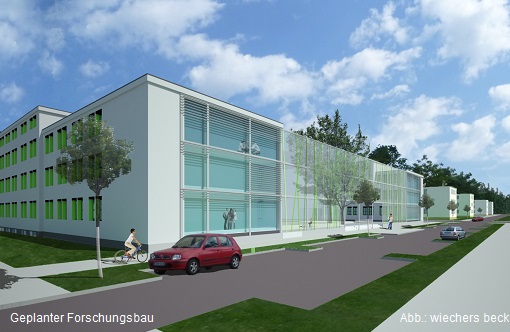
Die Mitglieder des Integrative Research Institute for the Sciences - IRIS Adlershof der Humboldt-Universität zu Berlin haben Grund zur Freude: Der Wissenschaftsrat hat auf seiner Frühjahrssitzung Bund und Ländern empfohlen, 37,4 Mio Euro für einen modernen Forschungsbau bereitzustellen.
Mit einer Gesamtnutzfläche von gut 4.700 Quadratmetern wird so auf dem Campus Adlershof der HU, in unmittelbarer Nähe der Institute für Physik und Chemie, ein neuer, hochmoderner Forschungsbau für ca. 140 Wissenschaftlerinnen und Wissenschaftler entstehen.
„Die Empfehlung des Wissenschaftsrates für den IRIS-Forschungsbau ist eine besondere Auszeichnung, die einmal mehr die hohe Leistungsfähigkeit unseres Konzepts Integrativer Forschungsinstitute sowie die der beteiligten Wissenschaftlerinnen und Wissenschaftler bestätigt“, sagt HU-Präsident Prof. Dr. Jan-Hendrik Olbertz.
„Wir freuen uns sehr, dass es uns gelungen ist, den Wissenschaftsrat von der Qualität und der Relevanz unseres Forschungsprogramms zu überzeugen“, unterstreicht IRIS-Sprecher Prof. Dr. Jürgen P. Rabe. „Das gibt uns die Chance, IRIS Adlershof zu einem international noch sichtbareren Zentrum der Erforschung von organisch-anorganischen Hybridsystemen für die Optik, Elektronik und Photonik auszubauen.“
Der stete und rasante Fortschritt in der Mikroelektronik und in den optischen Technologien ist Taktgeber für zahlreiche Innovationen. Die etablierte und über Jahrzehnte äußerst erfolgreiche Halbleitertechnologie stößt dabei jedoch zunehmend an Grenzen, vor allem wo es um Multifunktionalität sowie Ressourcen schonende Herstellung und energieeffizienten Betrieb einschlägiger Bauelemente geht. Der Übergang zu strukturierten Verbundsystemen aus unterschiedlichen organischen und anorganischen Materialien auf Nanoebene, die am IRIS Adlershof erforscht werden, erschließt dagegen neue Eigenschaften und damit neue Anwendungsperspektiven. Diese sind sehr breit: So können hocheffiziente Hybrid-Solarzellen dazu beitragen, die Energiewende zu beschleunigen. Die Integration von multifunktionalen Hybridelementen auf kleinsten Längenskalen bei gleichzeitig minimiertem Energieverbrauch eröffnet aber auch neue Möglichkeiten für differenziertere Diagnostik sowie für die elektronische und optische Verarbeitung von Informationen.
Das Forschungsprogramm des IRIS Adlershof bündelt die Expertise von insgesamt 15 Arbeitsgruppen der HU, die auf diesem Gebiet eng mit dem Helmholtz-Zentrum für Materialien und Energie Berlin (HZB), dem Max-Born-Institut für Nichtlineare Optik und Kurzzeitspektroskopie (MBI) sowie der Bundesanstalt für Materialforschung und -prüfung (BAM) zusammen arbeiten.
Dazu wird eine Core Facility mit dem Joint Lab for Structural Research (JLSR) und Open Access Laboratories (OPAL) for Advanced Materials und Analytical Sciences entstehen, die auch innovativen Unternehmen und Gründungsinitiativen sowie Kooperationspartnern aus der Freien Universität Berlin, der Technischen Universität Berlin und dem Fraunhofer Institut für angewandte Polymerforschung in Golm offen stehen. Internationale Kooperationen gibt es insbesondere mit der Princeton University, der National University of Singapore, der Chiba University in Tokyo sowie der Tel Aviv University.
Die an der HU bereits jetzt sehr gut aufgestellte Nachwuchsförderung wird von den neuen, exzellenten Arbeitsmöglichkeiten im IRIS-Forschungsbau ebenfalls stark profitieren. Dazu ist die Einrichtung von vier neuen Nachwuchsgruppen geplant. Darüber hinaus werden Doktorandinnen und Doktoranden von Verbundprojekten wie dem Sonderforschungsbereich 951 „Hybrid Inorganic/Organic Systems for Opto-Electronics“ (HIOS) und der „Graduate School of Analytical Sciences Adlershof“ (SALSA) in das Forschungsprogramm einbezogen. Auch den Studierenden des Internationalen Master Studienganges „Polymer Science“ werden die neuen Labor- und Begegnungsflächen offen stehen.
Wissenschaftrat, 26. April 2013
15.04.2013Ausschreibung von 15 SALSA-Promotionsstipendien
SALSA, die School of Analytical Sciences Adlershof der Humboldt-Universität zu Berlin, hat weitere 15 Promotionsstipendien ausgeschrieben, welche zum 1. Oktober 2013 beginnen sollen.Hochschulabsolventen (Diplom, Master-Abschluss oder Äquivalent) in Chemie, Biologie, Physik oder verwandten Disziplinen mit Interesse an Analytical Sciences sowie Absolventen mit einem Hintergrund in Naturwissenschaftliche Didaktik sind eingeladen, sich zu bewerben.
Die Bewerbungfrist wurde auf 13. Mai 2013 verlängert.
mehr...
11.04.2013Hochtechnologiestandort Berlin Adlershof auf klarem Wachstumskurs
 Professor Peter Frensch, Vizepräsident für Forschung der Humboldt-Universität zu Berlin (HU), blickt auf der Jahrespressekonferenz der Adlershofer Standortpartner auf ein ausgesprochen erfolgreiches Jahr zurück. In der zweiten Runde des Exzellenzwettbewerbs war die HU im Juni 2012 zur Exzellenzuniversität gekürt worden. Sie erreichte neben der erfolgreichen Fortsetzung von Projekten der ersten Förderperiode gemeinsam mit der Bundesanstalt für Materialforschung und -prüfung eine Förderzusage für die Graduiertenschule SALSA (Graduate School of Analytical Sciences Adlershof). Dank der Mittel des im Rahmen der Exzellenzinitiative geförderten Zukunftskonzepts der HU wird auch IRIS Adlershof an Fahrt gewinnen. So soll ein ehemaliger Kasernenkomplex auf dem Campus zum hochmodernen Forschungsbau für IRIS umgestaltet werden.
Professor Peter Frensch, Vizepräsident für Forschung der Humboldt-Universität zu Berlin (HU), blickt auf der Jahrespressekonferenz der Adlershofer Standortpartner auf ein ausgesprochen erfolgreiches Jahr zurück. In der zweiten Runde des Exzellenzwettbewerbs war die HU im Juni 2012 zur Exzellenzuniversität gekürt worden. Sie erreichte neben der erfolgreichen Fortsetzung von Projekten der ersten Förderperiode gemeinsam mit der Bundesanstalt für Materialforschung und -prüfung eine Förderzusage für die Graduiertenschule SALSA (Graduate School of Analytical Sciences Adlershof). Dank der Mittel des im Rahmen der Exzellenzinitiative geförderten Zukunftskonzepts der HU wird auch IRIS Adlershof an Fahrt gewinnen. So soll ein ehemaliger Kasernenkomplex auf dem Campus zum hochmodernen Forschungsbau für IRIS umgestaltet werden.
Bericht über Adlershof (2012) [PDF 2,8 MB]
WISTA Management GmbH, April 2013
mehr...
09.04.2013Quantenlicht aus Diamant und Plastik
Einem Team aus Forschern um Prof. Oliver Benson, Mitglied von IRIS Adlershof, ist es gelungen, mit einem sehr einfachen Verfahren stabile Quellen für einzelne Lichtquanten herzustellen. Die Forscher wählten einen ungewöhnlichen Hybridansatz durch Kombination von zwei ganz verschiedenen Materialien: Nanodiamanten und Photolack. Auf diese Weise können nahezu beliebige dreidimensionale Strukturen geschrieben werden, die dann einzelne Diamamtsplitter mit einzelnen Farbzentren als Quantenlichtquellen enthalten.
mehr...
28.03.2013Katharina Schultens mit dem Leonce-und-Lena-Preis ausgezeichnet
Katharina Schultens, Geschäftsführerin der Graduate School of Analytical Sciences Adlershof (SALSA) ist mit dem Leonce-und-Lena-Preis der Stadt Darmstadt ausgezeichnet worden. Dieser Preis gilt als der bedeutendste Literaturpreis für junge Autorinnen und Autoren auf dem Gebiet der Lyrik im deutschsprachigen Raum. IRIS Adlershof gratuliert Frau Schultens ganz herzlich.
mehr...
05.03.2013Humboldt-Universität mit international drittbestem Ruf aller deutschen Universitäten
Die Humboldt-Universität zu Berlin (HU) hat international den drittbesten Ruf aller deutschen Universitäten. Im aktuellen Reputations-Ranking des britischen Magazins "Times Higher Education" belegt die HU Platz 72.
mehr...
28.02.2013Neues EU Forscher-Erstausbildungsnetz (ITN) für Doktoranden im Bereich Mathematische Physik
Das Marie Curie Forscher-Erstausbildungsnetz GATIS (Gauge Theory as an Integrable System) hat seine Arbeit aufgenommen. Sieben europäische Forschungseinrichtungen und sechs Wirtschaftspartner haben sich in diesem EU-Projekt zusammengeschlossen, um jungen Wissenschaftlern ein herausragendes Forschungsumfeld zur Ausbildung und Forschung auf dem Gebiet der exakt lösbaren Eichfeldtheorien zu bieten. Die Humboldt-Universität zu Berlin beteiligt sich mit einem Team von Wissenschaftlern um Prof. Dr. Matthias Staudacher, Mitglied von IRIS Adlershof. Die Partner im Netzwerk repräsentieren verschiedene Communities aus den Forschungsbereichen Eichfeldtheorie, Stringtheorie, Statistische Physik und Computeralgebra. GATIS will die verstärkten multidisziplinären Interaktionen zwischen diesen Bereichen auf ein neues Niveau heben und im Kontext der Graduiertenausbildung die Distanzen zwischen diesen Forschungsfeldern verringern.
Insgesamt 17 junge Wissenschaftlerinnen und Wissenschaftler werden innerhalb der nächsten vier Jahre die Möglichkeit haben in den beteiligten Instituten eine Doktorarbeit anzufertigen oder ein einjähriges Forschungsprojekt zu bearbeiten. Daneben veranstaltet das Netzwerk zahlreiche Konferenzen, Sommerschulen, Workshops, und Fortbildungen durch die Wirtschaftspartner.
mehr...
18.02.2013 Wie der Kontakt zwischen Kohlenstoffverbindungen und Metall gelingt
„Organische Elektronik“ steckt schon heute im Display von Smart-Phones und verspricht auch in Zukunft interessante Produkte, zum Beispiel biegsame Leuchtfolien, die Glühbirnen ersetzen sollen, oder Solarzellen, die Sonnenlicht in Strom umwandeln. Ein Problem besteht dabei stets darin, die aktive organische Schicht gut mit Metallkontakten zu verbinden. Auch für diese Aufgabe werden oft organische Moleküle eingesetzt. Allerdings war es bisher nicht möglich, genau vorherzusagen, welche Moleküle diese Aufgabe auch erfüllen. Sie mussten daher im Wesentlichen durch Ausprobieren identifiziert werden. Nun ein hat internationales Team von Wissenschaftlern um Dr. Georg Heimel und Prof. Dr. Norbert Koch, Mitglied von IRIS Adlershof, herausgefunden, was diese Moleküle miteinander gemeinsam haben. Ihre Ergebnisse könnten es ermöglichen, die Kontaktschichten zwischen Metallelektroden und aktivem Material in organischen Bauelementen gezielter zu verbessern.
mehr...
29.01.2013Brückenschlag von der Grundlagenforschung zur Anwendung
Immer mehr Forschungsergebnisse von Mitgliedern von IRIS Adlershof stoßen auf wachsendes Interesse von Wirtschaftsunternehmen und fließen in die Entwicklung innovativer Produkte ein. So haben zum Beispiel die IRIS-Mitglieder Prof. Norbert Koch und Prof. Stefan Hecht im Rahmen eines inzwischen abgeschlossenen BMBF-Verbundvorhabens grundlegende Erkenntnisse zu organischen Materialien und deren Optimierung für organische Leuchtdioden (OLEDs) gewonnen. Wie diese Resultate effektiv zur Herstellung neuartiger Bauteile für die Fahrzeugbeleuchtung und -Instrumentierung verwendet werden können, wurde kürzlich auf einem von Prof. Koch moderierten Workshop im Rahmen der 13th International Conference Intelligent Automotive Lighting 2013 mit Vertretern der Wirtschaft diskutiert.
mehr...
20.01.2013Princeton University erster Profilpartner der HU
Die Humboldt-Universität zu Berlin hat mit der Princeton University einen Vertrag über eine Profilpartnerschaft abgeschlossen. Mitglieder von IRIS Adlershof sind an dieser Kooperation substanziell beteiligt. Neben einem Austausch von Wissenschaftler/innen und Doktoranden/innen wird es auch gemeinsam organsierte wissenschaftliche Veranstaltungen wie Symposien und Sommerschulen geben.
mehr...
18.12.2012
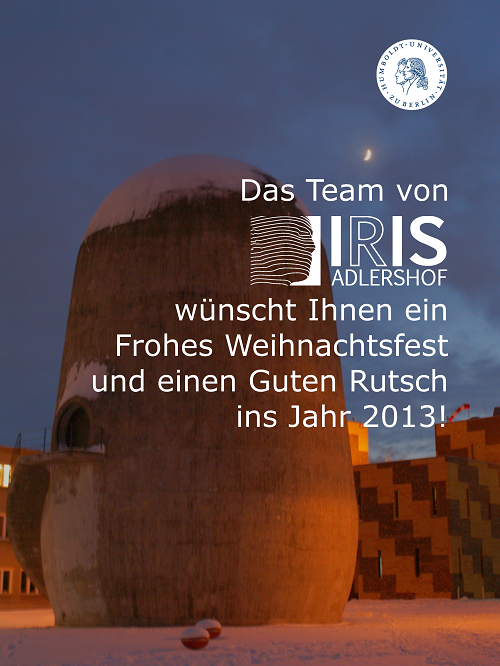
Der Trudelturm (Trudelwindkanal) in Adlershof im Winter
Video des Trudelexperimentes in einem Nachbau am NASA LaRC
17.12.2012Humboldt-Forschungspreis für Vladimir A. Smirnov
Dr. Vladimir A. Smirnov von der Staatlichen Universität Moskau hat einen Humboldt-Forschungspreis erhalten. Im Rahmen des damit verbundenen Forschungsaufenthalts verbringt er in diesem und den kommenden Jahren insgesamt acht Monate an der Humboldt-Universität zu Berlin in der Gruppe "Mathematische Physik von Raum, Zeit und Materie" von Prof. Dr. Matthias Staudacher, Mitglied von IRIS Adlershof, sowie vier Monate am Karlsruher Institut für Technologie (KIT) bei Prof. Dr. Matthias Steinhauser. Mit dem Preis zeichnet die Alexander von Humboldt-Stiftung Wissenschaftlerinnen und Wissenschaftler aus, deren grundlegende Entdeckungen, Erkenntnisse oder neue Theorien das eigene Fachgebiet nachhaltig geprägt haben und von denen auch in der Zukunft weitere Spitzenleistungen erwartet werden können. Er ist mit 60.000 Euro dotiert. Dr. Smirnov ist einer der herausragendsten Forscher auf dem Gebiet der perturbativen Quantenfeldtheorie, insbesondere der Evaluierung von Mehrschleifen-Feynman-Diagrammen. Er hat mehrere Schlüsseltechniken entwickelt, die hochkomplizierte für die phänomenologische Teilchenphysik und die Mathematische Physik relevante Berechnungen ermöglichen. Während seines Aufenthalts in Deutschland möchte Dr. Smirnov neue Klassen von Feynman-Integralen untersuchen, die mehrere direkte Anwendungen sowohl in der Quantenchromodynamik als auch in supersymmetrischen Yang-Mills-Theorien haben.
15.12.2012Detlef Günther von der ETH Zürich Einstein Visiting Fellow an der Humboldt-Universität
Detlef Günther, Professor für Spurenelement- und Mikroanalytik an der ETH Zürich und Mitglied der School of Analytical Sciences Adlershof (SALSA) der Humboldt-Universität ist einer der weltweit führenden Experten auf dem Gebiet der anorganischen Massenspektrometrie. Seine Förderung als Einstein Visiting Fellow ermöglicht es ihm, gemeinsame Forschungsprojekte mit den an SALSA beteiligten Kolleginnen und Kollegen und insbesondere dem wissenschaftlichen Nachwuchs voranzubringen, wobei er vor allem seine Expertise zur Analyse von Nanopartikeln einbringen wird. IRIS Adlerhof gratuliert herzlich und freut sich auf die Zusammenarbeit.
mehr...
14.12.2012Jochen Brüning gewähltes Mitglied des Institute for Advanced Study in Princeton 2012-2013
IRIS Adlershof-Mitglied Prof. Jochen Brüning wurde zum Mitglied der School of Mathematics des Institute for Advanced Study in Princeton 2012-2013 gewählt.
mehr...
13.12.2012Tiburtius-Preis 2012 für Asbjörn Burow
Dr. Asbjörn Burow wurde mit dem diesjährigen Tiburtius-Preis des Landes Berlin ausgezeichnet. Den mit 4.000 Euro dotierten 1. Preis für die beste Dissertation erhielt er für seine Arbeit „Methoden zur Beschreibung von chemischen Strukturen beliebiger Dimensionalität mit der Dichtefunktionaltheorie unter periodischen Randbedingungen”, die er unter der Betreuung von IRIS Adlershof-Mitglied Prof. Joachim Sauer am Institut für Chemie angefertigt hat.
mehr...
08.12.2012Einstein Stiftung fördert Projekte von Claudia Draxl und Matthias Staudacher
Die Einstein Stiftung Berlin finanziert sechs neue Projekte von Berliner Top-Wissenschaftlern als Einstein-Forschungsvorhaben. Dazu gehören das Projekt "ETERNAL - Exploring Thermoelectric Properties of Novel Materials" von IRIS Adlershof-Mitglied und Einstein-Professorin Claudia Draxl aus dem Institut für Physik der HU zusammen mit Prof. Klaus-Robert Müller von der TU Berlin und Prof. Matthias Scheffler vom Fritz-Haber-Institut, sowie das Projekt "Gravitation and High Energy Physics" von IRIS Adlershof-Mitglied Matthias Staudacher, Professor in den Instituten für Mathematik und Physik der HU.
mehr...
06.12.2012Peter Hegemann erhält Leibniz-Preis 2013
Peter Hegemann, Professor für Experimentelle Biophysik an der Humboldt-Universität zu Berlin und UniCat-Mitglied, hat von der DFG den Leibnizpreis 2013 zuerkannt bekommen. Prof. Hegemann ist einer der Begründer der Optogenetik, einer neuen innovativen Methode, mit der durch Licht aktivierbare Proteine aus Mikroorganismen in ausgewählte Neuronen eingebracht werden. IRIS Adlershof gratuliert sehr herzlich und freut sich mit ihm über diese herausragende Auszeichnung.
mehr...
22.11.2012SFB 647 "Raum-Zeit-Materie" geht in die dritte Förderperiode
Die Deutsche Forschungsgemeinschaft hat die Fortsetzung der Förderung des Sonderforschungsbereichs SFB 647 "Raum-Zeit-Materie" für eine dritte Periode für die Jahre 2013-2016 bewilligt. In dem seit 2005 existierenden Sonderforschungsbereich arbeiten theoretische Physiker und Mathematiker der Humboldt-Universität zu Berlin (Sprecherhochschule), der Freien Universität Berlin, des Max-Planck-Institut für Gravitationsphysik Potsdam sowie der Universität Potsdam gemeinsam an grundlegenden Fragen der Gravitations- und Quantenfeldtheorie. Der SFB hat dabei eine zentrale Plattform für die Mathematische Physik im Raum Berlin/Potsdam geschaffen. IRIS Adlershof ist am SFB maßgeblich mit vier Teilprojekten über die Professoren Brüning, Kreimer, Plefka und Staudacher beteiligt.
mehr...
22.11.2012Horst Bredekamp mit dem Berliner Wissenschaftspreis 2012 geehrt
Der diesjährige Berliner Wissenschaftspreis des Regierenden Bürgermeisters von Berlin geht an Prof. Horst Bredekamp. Die mit einem Preisgeld in Höhe von 40.000 Euro dotierte Ehrung würdigt den Kunsthistoriker der Humboldt-Universität zu Berlin für seine hervorragenden wissenschaftlichen Leistungen. Prof. Bredekamp ist u.a. einer der Sprecher des Exzellenzclusters "Bild Wissen Gestaltung. Ein interdisziplinäres Labor", an dem auch IRIS Adlershof beteiligt ist.
mehr...
15.11.2012Ausschreibung von 15 SALSA-Promotionsstipendien
SALSA, die neue School of Analytical Sciences Adlershof, gegründet im Rahmen der Exzellenzinitiative des Bundes und der Länder, hat am 1. November 2012 ihre Arbeit aufgenommen und nun 15 Promotionsstipendien ausgeschrieben.
mehr...
14.11.2012Carl-Ramsauer-Preis 2012 für Sylvia Schikora
Frau Dr. Sylvia Schikora, wissenschaftliche Mitarbeiterin in der Arbeitsgruppe von Prof. Fritz Henneberger (Mitglied von IRIS Adlershof), wurde für ihre Dissertationsschrift "All-optical noninvasive delayed feedback control of semiconductor lasers" mit dem Carl-Ramsauer-Preis 2012 der Physikalischen Gesellschaft zu Berlin ausgezeichnet.
15.10.2012IRIS Adlershof bezieht das IRIS-Haus Zum Großen Windkanal 6
Seit seiner Gründung im Jahr 2009 war IRIS Adlershof Gast in den Räumlichkeiten des Instituts für Physik im Lise Meitner-Haus. Nun hat die Humboldt-Universität Büro-, Besprechungs- und Seminarräume im neu hergerichteten IRIS-Haus Zum Großen Windkanal 6 in unmittelbarer Nachbarschaft des Lise Meitner-Haus eingerichtet. Der erste Bauabschnitt wurde zwischenzeitlich an IRIS übergeben. Dort sind zunächst die Geschäftsstellen von IRIS Adlershof, des SFB 951 „Hybrid Inorganic/Organic Systems for Opto-Electronics“ (HIOS) und der Graduiertenschule für Analytical Sciences Adlershof (SALSA), sowie die theoretisch arbeitenden IRIS-Mitglieder Prof. Claudia Draxl (Theoretische Festkörperphysik) und Prof. Matthias Staudacher (Mathematische Physik von Raum, Zeit und Materie) mit ihren Arbeitsgruppen untergebracht. Außderdem werden IRIS-Mitglied Prof. Matthias Ballauff (Weiche Materie und funktionale Materialien) sowie Prof. Joachim Dzubiella (Theorie weicher Materie) einziehen. Darüber hinaus gibt es vor allem Büros für Mitglieder von verschiedenen nationalen und internationalen Graduiertenprogrammen sowie für Gäste.
In einem zweiten Bauabschnitt soll bis Ende 2013 Platz für weitere, vorwiegend theoretisch arbeitende IRIS-Mitglieder und deren Arbeitsgruppen im IRIS-Haus geschaffen werden. Für das IRIS-Forschungsfeld "Hybridsysteme für Optik und Elektronik" ist ein eigener dedizierter Forschungsbau mit einer Core Facility und einschlägigen Speziallaboren in der Planung.
04.10.2012Humboldt-Universität im World University Ranking unter den Top 100
Die Humboldt-Universität zu Berlin belegt im aktuellen Times Higher Education World University Ranking 2012/2013 den Rang 99. Gegenüber dem Vorjahr konnte sie sich um 10 Plätze verbessern und gehört damit im weltweiten Hochschulvergleich zu den vier deutschen Universitäten in den Top 100.
mehr...
27.09.2012Polydays 2012: Polymers and Light – Internationale Tagung des Berlin-Brandenburgischen Verband für Polymerforschung an der Humboldt-Universität zu Berlin in Adlershof
Polymere und ihre Wechselwirkung mit Licht gehören zu den interessantesten Untersuchungsgegenständen der modernen Natur- und Materialwissenschaften. Die speziellen Eigenschaften natürlicher wie auch synthetischer Polymere versprechen neuartige Nutzungsmöglichkeiten in breit gefächerten Gebieten von der modernen Optoelektronik bis hin zur Medizin. So lehrt uns beispielsweise die Natur, wie das Sonnenlicht mittels organischer photovoltaischer Systeme in elektrische Energie umgewandelt werden kann. Andererseits lässt sich elektrische Energie durch polymer-basierte Leuchtdioden sehr effizient in Licht verschiedenster Wellenlänge umwandeln. Besonders vielversprechende Chancen für technologische und medizinische Anwendungen ergeben sich aus der inzwischen immer besser beherrschten Möglichkeit, elektrische und optische Eigenschaften von Polymeren bei der Synthese gezielt zu ändern und optimal an spezielle Nutzungszwecke anzupassen.
Diese und ähnlich spannende Fragen der Grundlagen- und anwendungsorientierten Forschung stehen im wissenschaftlichen Fokus der alle zwei Jahre vom Berlin-Brandenburgischen Verband für Polymerforschung (BVP) veranstalteten internationalen Tagungsreihe POLYDAYS. In diesem Jahr findet die Tagung vom 30. September bis 02. Oktober auf dem Campus Adlershof der Humboldt-Universität zum Thema „Polymers and Light“ statt. Zu den herausragenden internationalen Sprechern gehören T. Aida (Tokyo), C.J. Barrett (Montreal), P. Fratzl (Potsdam), J.M.J. Frechét (Thuwal, Saudi Arabien), M. Havenith (Bochum), G.D. Scholes (Toronto), and C.G. Willson (Austin).
mehr...
21.09.2012Humboldt-Universität und Bundesdruckerei eröffnen Forschungslabor
Professor Peter Frensch, Vizepräsident für Forschung der Humboldt-Universität, und Ulrich Hamann, Vorsitzender der Geschäftsführung der Bundesdruckerei GmbH, eröffneten am 18. September 2012 das Forschungslabor „BeID-Lab“. Im neuen Labor, das an der Humboldt-Universität angesiedelt ist, setzen die Partner Forschungsarbeiten und Maßnahmen zur Förderung des wissenschaftlichen Nachwuchses auf dem Gebiet der „Sicheren Identität“ und der Sicherheitstechnologien gemeinsam um. „BeID-Lab“ steht für „Berlin elektronische Identitäten Labor“ und ist ein Ergebnis der bisherigen Forschungskooperation des Instituts für Informatik der Humboldt-Universität und der Bundesdruckerei GmbH.
mehr...
30.08.2012IRIS-Mitglied Stefan Hecht mit einem ERC Starting Grant ausgezeichnet
Prof. Stefan Hecht (Mitglied von IRIS Adlershof) und Prof. Hans Börner (beide Institut für Chemie der Humboldt-Universität) wurden vom Europäischen Forschungsrat (European Research Council, ERC) mit je einem der renommierten ERC Starting Grants ausgezeichnet. Damit konnten sie sich in einem zweistufigen hochkompetitiven Verfahren erfolgreich in der europäischen Nachwuchselite behaupten und erhalten nun für eine Dauer von fünf Jahren jeweils eine Fördersumme von 1,5 Mio. Euro, um ihre Forschung auf dem vom ERC attestierten Spitzenniveau zu konsolidieren.
Im Projekt “Light4Function“ wird Prof. Hecht mit seiner Gruppe verschiedene Strategien verfolgen, um mit Hilfe von Licht diverse Funktionen von Reaktivität und Katalyse bis hin zu Ladungstransport und Bewegung zu steuern. „Unsere bisherigen Anstrengungen, die Vorteile von Licht zur Kontrolle von molekularen Prozessen zu nutzen, sind dadurch nicht nur gewürdigt worden, sondern wir werden diese in Zukunft nun entscheidend intensivieren können,“ freut sich Hecht über die üppigen Fördermittel aus Brüssel. Stefan Hecht hat seit 2006 den Lehrstuhl für Organische Chemie und Funktionale Materialien am Institut für Chemie der Humboldt-Universität zu Berlin inne. Prof. Börner und sein Team werden in ihrem Vorhaben “Sip – Specifically Interacting Polymers“ spezifisch wechselwirkende Polymere entwickeln. Seit 2009 leitet er das Labor für Organische Synthese funktionaler Systeme am Institut für Chemie der Humboldt-Universität zu Berlin.
mehr…
03.07.2012IRIS-Mitglied Thomas Elsässer mit Julius Springer Prize ausgezeichnet
Thomas Elsässer, Direktor am Max-Born-Institut und Mitglied von IRIS Adlershof sowie Horst Weller von der Universität Hamburg erhalten den Julius Springer Prize for Applied Physics 2012. Die Wissenschaftler werden für ihre Pionierleistungen und ihr detailliertes Verständnis elementarer Prozesse auf der Sub-Nanoskala geehrt.
mehr...
26.06.2012Vielseitige Transistoren gesteuert durch Licht
Organische Halbleitermaterialien sind Schlüsselkomponenten für die Entwicklung leichter und flexibler elektronischer Bauelemente. Um jedoch komplexe Funktionen zu realisieren, müssen die Komponenten in verschiedenen Schaltzuständen vorliegen können, die selektiv und im Idealfall mit Hilfe unterschiedlicher Stimuli adressiert werden können. Licht ist dabei einer der attraktivsten Stimuli, da es hohe räumliche und zeitliche Kontrolle ermöglicht und mit moderner Optik gekoppelt werden kann. Allerdings muss die benötigte Lichtempfindlichkeit der Bauelemente zunächst in die verwendeten Materialien eingebaut werden.
Ein internationales Forscherteam, an dem sowohl der Chemiker Stefan Hecht als auch der Physiker Norbert Koch – beide Mitglieder des IRIS Adlershof der Humboldt-Universität zu Berlin – beteiligt sind, hat nun erstmalig derartige „smarte“ Transistoren gefertigt, die durch Licht adressiert werden können. In ihrer aktuellen Veröffentlichung in Nature Chemistry demonstrieren die Autoren ein neues Konzept, bei dem photoschaltbare "Fallen" für Ladungsträger, sogenannte „traps“, direkt in den herkömmlichen Halbleiter integriert werden. Diese maßgeschneiderten kleinen Moleküle sind nach Bestrahlung mit UV-Licht in der Lage, den Stromfluss durch den Halbleiter im Transistor zu blockieren. Bestrahlung mit sichtbarem Licht schaltet die Fallen wieder ab, so dass der Strom wieder in gewohnter Weise durch das Bauelement fließen kann. Die entwickelte Methode, bei der die lichtempfindlichen Moleküle mit dem organischen Halbleiter einfach vermischt werden, ist sehr effektiv und erlaubt eine kostengünstige Bauelementherstellung. Die über Licht programmierbaren Transistoren könnten somit in Zukunft als multifunktionale opto-elektronische Bauelemente in logischen Schaltkreisen fungieren.
25.06.2012IRIS-Mitglied Jürg Kramer neuer Kopf der Deutschen Mathematiker-Vereinigung
Jürg Kramer, Professor für Mathematik und ihre Didaktik an der Humboldt-Universität zu Berlin und Mitglied von IRIS Adlershof, wird zum 1. Januar 2013 neuer Präsident der Deutschen Mathematiker-Vereinigung (DMV). Das entschied diese Woche das Präsidium der DMV. Jürg Kramer ist zurzeit Schatzmeister der DMV. Das Präsidentenamt der DMV ist ein Ehrenamt auf jeweils zwei Jahre.
15.06.2012IRIS Adlershof an allen drei Förderlinien der Exzellenzinitiative beteiligt
Die Humboldt-Universität zu Berlin gehört zu den elf Exzellenzuniversitäten Deutschlands. Sie hat in der zweiten Phase der Exzellenzinitiative von Bund und Ländern in allen drei Förderlinien erfolgreich abgeschnitten.
Im Rahmen ihres Zukunftskonzepts „Bildung durch Wissenschaft“ richtet die HU einen Strategischen Innovationsfonds ein, in dessen Zentrum das erfolgreiche HU-Forschungsformat der Integrativen Forschungsinstitute (IRI) steht. Damit wird die Humboldt-Universität IRIS Adlershof weiterentwickeln, das IRI für Lebenswissenschaften aufbauen und zum Themenkomplex Nachhaltigkeit, Landnutzung und Globalisierung das IRI THESys vorantreiben.
Mitglieder von IRIS Adlershof sind darüber hinaus an der „Graduiertenschule für Analytical Sciences Adlershof – SALSA“ (Matthias Ballauff, Oliver Benson, Stefan Hecht und Jürgen P. Rabe) sowie an den Exzellenzclustern Bild Wissen Gestaltung. Ein interdisziplinäres Labor (Jochen Brüning, Norbert Koch und Jürgen P. Rabe) und Unifying Concepts in Catalysis - UniCat (Joachim Sauer) beteiligt.
mehr...
08.06.2012IRIS Adlershof in der Langen Nacht der Wissenschaften 2013
Auch in diesem Jahr stellen die Mitglieder von IRIS Adlershof im Rahmen der Langen Nacht der Wissenschaften einige ihrer Projekte einer breiten Öffentlichkeit vor:
-
Aus einer Kooperation zwischen den Berliner Verkehrsbetrieben und dem Technologiestandort Adlershof resultiert ein besonderes Highlight: zwischen Adlershof, Schöneweide und Karlshorst werden zwei „Rollende Hörsäle“ unterwegs sein, in denen Wissenschaftler, Unternehmer und Standortmanager die Fahrgäste mit Beiträgen zu spannenden Themen der Wissenschaft unterhalten. In einem dieser „Rollenden Hörsäle“ wird IRIS-Sprecher Jürgen P. Rabedie Tram als rollenden Einstein-Zug verwenden.
-
IRIS-Mitglied Alexander Reinefeld bietet am Konrad-Zuse-Zentrum für Informationstechnik Vorträge und Führungen u. a. zum Ursprung des Computers, zu autostereoskopischen Displays und zu computergestützter Molekülentwicklung an.
-
Im Programm „Datenstriptease“ der Arbeitsgruppe Datenbanken und Informationssysteme (DBIS) von IRIS-Mitglied Johann-Christoph Freytag erfahren die Besucher anhand von alltäglichen Szenarios, wie ihre Daten aufgespürt und zu Informationen kombiniert werden, die ihnen beruflich, sozial oder finanziell schaden können.
-
Im Max-Born-Institut für Nichtlineare Optik und Kurzzeitspektroskopie, welches von IRIS-Mitglied Thomas Elsässer geleitet wird, können sich Besucher in Laborbsichtigungen, Ausstellungen und anhand von Experimenten zu extrem kurzen Lichtimpulsen und Lasern informieren.
-
Mitarbeiter der IRIS-Arbeitsgruppe "Physik der Makromoleküle" geben Interessierten einen Einblick in die Welt der Moleküle. Einzelne DNA-Stränge auf Glimmer werden mithilfe der Kraftmikroskopie gerastert und anschaulich gemacht, Oberflächen mit Höhenunterschieden, nicht größer als ein einige Atome, werden genau bestimmt. In einem zweiten Experiment werden einzelne Moleküle gedehnt und zerrissen. Beide Messprinzipien werden am Modell an großen Objekten, z. B. einem menschlichen Haar, gelochter Pappkarton oder Draht, erklärt.
-
Unter dem Titel „Was ein Lehrer wissen muss“ gibt das Humboldt-ProMINT-Kolleg einen Einblick in die Wissenschaft vom Lehren und Lernen in den mathematisch naturwissenschaftlichen Fächern.
02.06.2012Lange Nacht der Wissenschaften - IRIS Mitglieder live erleben
Am 2. Juni ist es wieder so weit: renommierte Forschungseinrichtungen in Berlin und Potsdam öffnen von 17:00 bis 01:00 Uhr ihre Türen für ein wissenschaftliches Erlebnis der ganz besonderen Art. Am Campus Adlershof stellen IRIS-Mitglieder ihre Forschungsgebiete vor. So gibt z. B. Herr Professor Plefka einen Überblick über „Die Welt als Hologramm: Neues aus der Stringtheorie“. Von der „Wissenschaft vom Lehren und Lernen in den mathematisch-naturwissenschaftlichen Fächern“ berichtet das ProMINT Kolleg. Die Arbeitsgruppe von Professor Rabe demonstriert anschaulich, wie sich einzelne Makromoleküle zerreißen lassen, während die Gruppe von Professor Freytag zu einem „Daten Striptease“ einlädt, und Professor Elsässer und sein Team am Max-Born-Institut Experimente zu Licht und Laser zum Mitmachen präsentieren.
mehr…
30.05.2012HU-Beteiligung an einem Projekt der Einstein-Stiftung zur Materialforschung an Pflanzen
Silica (Siliziumoxid) kann einen positiven Effekt auf Pflanzen haben. Es erhöht die Ernteausbeute und mildert den Einfluss pflanzlicher Stressfaktoren. Der bisher nur wenig verstandene Wirkmechanismus soll in einem neuen, von der Einstein Stiftung Berlin geförderten Projekt untersucht werden. Hier arbeiten Forscherinnen und Forscher der Humboldt-Universität zu Berlin, der Bundesanstalt für Materialforschung und -prüfung und der Hebrew University Jerusalem zusammen.
mehr...
15.05.2012Polydays 2012: Polymers and Light
Die alle zwei Jahre vom Berlin-Brandenburgischen Verband für Polymerforschung (BVP) veranstalteten POLYDAYS finden dieses Jahr vom 30. September bis 02. Oktober auf dem Campus Adlershof zum Thema „Polymers and Light“ statt. Zu den herausragenden eingeladenen Sprechern gehören T. Aida (Tokyo), C.J. Barrett (Montreal), J.M.J. Frechet (Berkeley), M. Havenith (Bochum), T. Salditt (Göttingen), G.D. Scholes (Toronto), and C.G. Willson (Austin). Erfahren Sie mehr unter www.polydays.de oder kontaktieren Sie uns direkt: polydays2012polydays.de.
mehr...
14.05.2012Einstein Stiftung bewilligt neues Einstein-Zentrum in der Mathematik
Die Einstein Stiftung Berlin fördert zukünftig das neue Einstein-Zentrum für Mathematik Berlin, das die Aktivitäten dreier erfolgreicher Einrichtungen der Berliner Mathematik, dem DFG-Forschungszentrum Matheon, der Berlin Mathematical School (BMS) und des Deutschen Zentrums für Lehrerbildung Mathematik (DZLM) bündeln soll.
An dem von den drei großen Berliner Universitäten, dem Weierstraß-Institut für Angewandte Analysis und Stochastik sowie dem Konrad-Zuse-Zentrum für Informationstechnik betriebenen neuen Einstein-Zentrum ist das Mitglied von IRIS Adlershof, Prof. Jürg Kramer, als Koordinator des DZLM maßgeblich beteiligt.
mehr...
12.05.2012Neues internationales Graduiertenkolleg an der Humboldt-Universität eingerichtet
Die Deutsche Forschungsgemeinschaft (DFG) hat ein neues Internationales Graduiertenkolleg mit dem Titel „Moduli und automorphe Formen: arithmetische und geometrische Aspekte“ an der Humboldt-Universität zu Berlin eingerichtet. Sprecher ist das Mitglied von IRIS Adlershof, Professor Jürg Kramer. Kooperationspartner sind die niederländischen Universitäten in Leiden und Amsterdam.
mehr...
02.05.2012Mathematik, Physik und Chemie der HU Berlin überzeugen mit Spitzenpositionen im CHE Ranking
Im aktuellen CHE Hochschulranking, das am 2. Mai 2012 im neuen ZEIT Studienführer 2012/13 veröffentlicht wurde, erzielten in IRIS Adlershof vertretene Fächer sehr gute Bewertungen. So rangiert die Mathematik bei der Forschungsreputation sowie bei den Veröffentlichungen und den Forschungsgeldern pro Wissenschaftler bundesweit auf Spitzenplätzen. Die Studierenden sind insbesondere mit der IT-Infrastruktur sehr zufrieden. Die Physik konnte vor allem in den Kategorien Veröffentlichungen und Erfindungen pro Wissenschaftler sowie Promotionen pro Professor mit Spitzenplätzen punkten. Im Votum der Studierenden wird neben der sehr guten räumlichen und IT-Infrastruktur vor allem eine sehr gute Einbeziehung in die Lehrevaluation positiv gewürdigt. In der Chemie werden die Räume und die Ausstattung der Praktikumslabore mit Spitzennoten bewertet.
mehr…
27.03.2012Prof. J.C. Freytag, Ph.D. betreut drei Firmenausgründungen
06.03.2012“Outstanding referee award” der American Physical Society an Prof. Dr. Lutz Schimansky-Geier und Prof. Dr. Oliver Benson
Prof. Dr. Lutz Schimansky-Geier (Institut für Physik der HU) und Prof. Dr. Oliver Benson (Institut für Physik und IRIS Adlershof der HU) wurden mit einem “Outstanding referee award” für das Jahr 2012 der Zeitschriften der American Physical Society ausgezeichnet. Der Preis würdigt jedes Jahr etwa 150 von den ca. 60.000 aktiven Reviewern. Die Auswahl basiert auf der Qualität, Anzahl und Verlässlichkeit der Begutachtungen.
mehr...
27.02.2012Neue Materialien für die Photovoltaik Helmholtz-Energie-Allianz am Campus Adlershof
Das Helmholtz-Zentrum Berlin und das Forschungszentrum Jülich bilden zusammen mit der Humboldt-Universität zu Berlin, der Universität Potsdam und der Freien Universität Berlin eine der drei neuen Energie-Allianzen, die von der Helmholtz-Gemeinschaft ins Leben gerufen wurden. Ziel dieser Energie-Allianz mit dem Namen „Anorganisch/organische Hybrid-Solarzellen und -Techniken für die Photovoltaik“ ist es, den drängenden Forschungsbedarf zum raschen Umbau der Energieversorgung gezielt zu decken. Sprecher der Energie-Allianz ist Prof. Norbert Koch, Mitglied von IRIS Adlershof. Das Vorhaben wird durch den Impuls- und Vernetzungsfonds der Helmholtz-Gemeinschaft für drei Jahre gefördert, wobei die universitären Partner zusätzlich eigene Mittel einbringen. Eine Fortsetzung der Forschung auch über die drei Jahre hinaus, ist geplant.
mehr...
02.02.2012Wie Plastik durch fremde Moleküle leitfähig wird - Mechanismen bei der Dotierung organischer Halbleiter geklärt
Seit einigen Jahren wird die sogenannte organische Elektronik als zukunftsweisende Technologie entwickelt. Wissenschaftlerinnen und Wissenschaftler der Arbeitsgruppe um IRIS-Mitglied Prof. Norbert Koch haben nun in Kooperation mit dem Helmholtz-Zentrum Berlin (HZB) klären können, welcher Mechanismus das Dotieren organischer Halbleiter bestimmt. Demnach findet kein direkter Elektronenübertrag mit dem Dotier-Molekül statt. Vielmehr entsteht - im Gegensatz zu bisherigen Vermutungen - zunächst ein zwischenmolekularer Komplex. Erst die Anregung der Komplexe führt zu beweglichen Ladungsträgern, die die Leitfähigkeit erhöhen.
mehr...
28.01.2012Team mit Katja Wundermann aus dem ProMINT-Kolleg auf Platz 1 der Europa-League des SPHERES-Wettbewerbs 2011 von MIT, NASA und ESA
Katja Wundermann, abgeordnete Lehrerin im ProMINT-Kolleg hat mit Schülerinnen und Schülern ihrer Käthe-Kollwitz-Oberschule und in einer Allianz mit dem Berliner Heinrich-Hertz-Gymnasium und einem Team aus Turin im SPHERES-Wettbewerb 2011 den 1. Platz in der Europa-League belegt. Die SPHERES-Satelliten sind Teil des ZERO-Robotics/SPHERES Wettbewerbs vom MIT, der NASA und der Europäischen Weltraumorganisation ESA. Die beiden Finalrunden, jeweils eine für die US-Teams und eine für die EU-Teams, wurden an Bord der Internationale Raumstation ISS ausgetragen. Die Mitglieder der europäischen Allianzen haben gemeinsam im Headquarter der ESA in Noordwijk (NL) per live Videoschaltung zur ISS die Leistungsfähigkeit Ihrer Codes im direkten Wettbewerb miteinander feststellen können.
16.01.2012Komplexen Nanostrukturen ein Stück näher: Chemikern an der Humboldt-Universität gelingt gezielte Verknüpfung winziger programmierbarer molekularer Bausteine
„Controlling on-surface polymerization by hierarchical and substrate-directed growth“
Veröffentlichung in der Zeitschrift “Nature Chemistry“ (Ausgabe in March 2012 issue, online ab 15. Januar 2012)
Materie auf der kleinster Skala, d.h. im Bereich von wenigen Nanometern
Dem selben Forscherteam aus Chemikern der Humboldt-Universität zu Berlin um Prof. Stefan Hecht (Mitglied von IRIS Adlershof) ist es nun – in Zusammenarbeit mit Physikern am Fritz-Haber-Institut und am Laboratorio TASC in Trieste – gelungen, die von Ihnen entwickelte Methode erheblich zu verbessern.
mehr...
07.12.2011Joint Laboratory for Structural Research (JLSR) am IRIS Adlershof eröffnet
Das JLSR ist eine Einrichtung am IRIS Adlershof, in der die Humboldt-Universität mit dem Helmholtz-Zentrum Berlin für Materialien und Energie GmbH und der Technischen Universität Berlin kooperiert. Es umspannt ein Arbeitsfeld, das von kristallinen Halbleiter- und Isolatormaterialien über organische molekulare und supramolekulare Systeme bis hin zu Biomaterialien reicht.
mehr...
02.11.2011Claudia Draxl ist die erste Einstein-Professorin der Humboldt-Universität
Durch die Unterstützung der Einstein Stiftung Berlin konnte die Humboldt-Universität zu Berlin die renommierte Physikerin Claudia Draxl gewinnen. Frau Draxl ist eine international anerkannte Spitzenforscherin auf dem Gebiet der Theoretischen Festkörperphysik. Ein Schwerpunkt ihrer wissenschaftlichen Tätigkeit liegt im Bereich der Wechselwirkungen und Anregungen in Nanostrukturen und Hybrid-Materialien, womit sich ein enger inhaltlicher Bezug zu einem der Forschungsgebiete von IRIS Adlershof ergibt.
mehr...
28.10.2011Caroline-von-Humboldt-Preis 2011 geht an Dr. Costanza Toninelli, Forscherin auf dem Gebiet der Nanostrukturen
Der mit 15 000 Euro dotierte Caroline-von-Humboldt-Preis wird jährlich an exzellente Nachwuchswissenschaftlerinnen der Humboldt-Universität für herausragende Forschung verliehen und ist der höchstdotierte Forschungspreis seiner Art in Deutschland. Er wird zum zweiten Mal vergeben und wurde in diesem Jahr explizit für Naturwissenschaftlerinnen ausgeschrieben. Die Preisträgerin 2011 ist die Physikerin Dr. Costanza Toninelli.
Am 2. November 2011, 18 Uhr, wird im Senatssaal der Humboldt-Universität zu Berlin der Caroline-von-Humboldt-Preis an Dr. Costanza Toninelli verliehen.
„Bei Frau Toninelli beeindruckt das fantastische Projekt. Dieses behandelt Photonik in Nanostrukturen. Konkret geht es um stabile Moleküle, die in Halbleiter-Nanostukturen eingebettet sind", erklärt Prof. Peter Frensch, Vizepräsident für Forschung und Vorsitzender der Jury. Die Wissenschaftlerin forscht derzeit als Postdoc an der ETH Zürich und wird im Rahmen des Preises als „Scientist in Residence“ in der Forschungsgruppe von Prof. Oliver Benson, Mitglied von IRIS Adlershof, am Institut für Physik und hier vor allem im Sonderforschungsbereich HIOS eingebunden sein. In diesem SFB geht es um die Erforschung künstlicher Hybridmaterialien, die aus Halbleitern, konjugierten organischen Molekülen und metallischen Nanostrukturen bestehen. Die Forscher wollen diese sehr unterschiedlichen Materialien in Einklang bringen, um neue physikalische und chemische Eigenschaften für optoelektronische Bauelemente zu erreichen.
Anmeldungen bitte an: cvh-prizehu-berlin.de
mehr...
14.10.2011IRIS-Mitglied Prof. Jürg Kramer in die Academia Europaea gewählt
Das Mitglied von IRIS Adlershof, Jürg Kramer, Professor für Mathematik und ihre Didaktik am Institut für Mathematik der Humboldt-Universität zu Berlin ist zum Mitglied der Academia Europaea gewählt worden.
mehr...
07.10.2011Start für ein neues EU-Forschungsprojekt am IRIS Adlershof
Norbert Koch, Professor für Supramolekulare Systeme am Institut für Physik und Mitglied von IRIS Adlershof, koordiniert ab Oktober 2011 das EU-Forschungsprojekt “Hybrid organic/inorganic memory elements for integration of electronic and photonic circuitry” (HYMEC), welches durch das 7. EU-Rahmenprogramm gefördert wird. Neben der Humboldt-Universität beteiligen sich Universitäten und außeruniversitäre Forschungseinrichtungen aus Belgien, Deutschland, Italien, Österreich, Frankreich und Polen an dem Projekt, sowie ein Technologie-orientiertes Unternehmen.
HYMEC widmet sich der Aufklärung aller relevanten Eigenschaften von Hybridmaterialien die aus Metallnanopartikeln und konjugierten organischen Halbleitern bestehen. Ziel ist es, diese Materialien in nicht-volatilen Speicherbauelementen anzuwenden, die sowohl elektrisch als auch optisch adressiert werden können. Dieses Forschungsvorhaben ist auf dem Kompetenzfeld "Molekulare Systeme" von IRIS Adlershof angesiedelt.
mehr...
Kontakt:
Prof. Dr. Norbert Koch
Humboldt-Universität zu Berlin
IRIS Adlershof und Institut für Physik
Newtonstraße 15
12489 Berlin
eMail: norbert.kochphysik.hu-berlin.de
07.10.2011Humboldt-Universität erreicht im World University Ranking Rang 109
Im aktuellen Times Higher Education World University Ranking belegt die Humboldt-Universität zu Berlin den 109. Rang. Gegenüber dem Vorjahr konnte sie sich damit im weltweiten Hochschulvergleich um 69 Plätze verbessern.
mehr...
01.09.2011Humboldt-Universität reicht Langanträge im Exzellenzwettbewerb ein
Die Humboldt-Universität zu Berlin bewirbt sich mit 15 Langanträgen in der zweiten Runde des Exzellenzwettbewerbs von Bund und Ländern um die Förderung der Spitzenforschung in allen drei Förderlinien – mit ihrem Zukunftskonzept „Bildung durch Wissenschaft“, vier Exzellenzclusteranträgen und zehn Graduiertenschulanträgen. Das Zukunftskonzept beinhaltet ein umfassendes Programm zur Entwicklung von drei Integrativen Forschungsinstituten (IRI). Neben dem Ausbau des bereits seit 2009 erfolgreich arbeitenden IRIS Adlershof sollen ein IRI für Lebenswissenschaften und ein weiteres zum Themenkomplex Nachhaltigkeit, Landnutzung und Globalisierung eingerichtet werden.
mehr...
08.07.2011Chemiker entwickeln Drähte für Prototypen molekularer Computer
Eine Gruppe organischer Synthetiker um IRIS-Mitglied Professor Stefan Hecht entwickelt im Rahmen des Projekts „Atomic Scale and Single Molecule Logic Gate Technologies (AtMol)“ molekulare Bausteine zur Herstellung einzelner molekularer Drähte mit dem Ziel, einen ersten Prototypen Molekül-basierter Computerchips zu realisieren. Die von der Arbeitsgruppe Hecht modellierten Nanodrähte werden anschließend in Zusammenarbeit mit dem Fritz-Haber-Institut hinsichtlich ihrer elektrischen Leitfähigkeit untersucht. Nach erfolgreicher Herstellung und Testung sollen diese Molekülschaltkreise dann von anderen Wissenschaftlern mit winzigen Nano-Elektroden kontaktiert werden und letztlich in einem kompletten molekularen Chip verpackt werden.
Das Projekt, in welchem ein internationales Konsortium aus Wissenschaftlern und Ingenieuren über einen Zeitraum von vier Jahren zusammenarbeitet, wird von der Europäischen Union mit 10 Millionen Euro gefördert.
mehr…
25.06.2011Nationales Zentrum für Lehrerbildung im Fach Mathematik an der Humboldt-Universität
Ein Konsortium aus sechs Hochschulen unter Führung der Humboldt-Universität zu Berlin hat die von der Deutsche Telekom Stiftung initiierte Ausschreibung für ein Nationales Zentrum für Lehrerbildung im Fach Mathematik (NZLM) gewonnen. Ziel des NZLM ist es, die Lehrerbildung in Deutschland spürbar und nachhaltig zu verbessern. Dafür stellt die Deutsche Telekom Stiftung 5 Millionen Euro, verteilt auf 5 Jahre, zur Verfügung und investiert damit in ihr bisher größtes Einzelvorhaben.
Am NZLM, das von IRIS-Mitglied Professor Jürg Kramer geleitet wird, sind neben der Humboldt-Universität zu Berlin auch die Freie Universität Berlin, die Deutsche Universität für Weiterbildung in Berlin, die Ruhr-Universität Bochum, die Universität Duisburg-Essen und die Universität Paderborn beteiligt.
mehr...
14.06.2011IRIS Adlershof richtet die erste KOSMOS Summer University zum Thema „Frontiers of Organic / Inorganic Hybrid Materials for Electronics and Optoelectronics” aus.
Die erste KOSMOS Summer University der Humboldt-Universität zu Berlin KOSMOS 2011 wird vom 17. bis zum 25. September 2011 zum Thema „Frontiers of Organic/ Inorganic Hybrid Materials for Electronics and Optoelectronics” vom Integrated Research Institute for the Sciences IRIS Adlershof, in Zusammenarbeit mit der Chiba University in Japan und der National University of Singapore ausgerichtet. Master-Studierende in der Abschlussphase, Doktoranden und Postdocs sind herzlich eingeladen, sich hier gemeinsam mit international in der Physik und Chemie von Hybridmaterialen ausgewiesenen Forschern mit den Grundlagen dieser vielversprechenden Klasse neuer Materialien auseinandersetzen.
Programm mehr...
25.05.2011Neuer Sonderforschungsbereich „Hybrid Inorganic/Organic Systems for Opto-Electronics“ an der HU
Die Deutsche Forschungsgemeinschaft hat die Förderung des neuen Sonderforschungsbereich SFB 951 „Hybrid Inorganic/Organic Systems for Opto-Electronics“ beschlossen. Im Fokus des SFB stehen innovative Hybridsysteme, die anorganische Halbleiter, konjugierte organische Materialien und metallische Nanostrukturen miteinander kombinieren. Dabei sollen die grundlegenden chemischen, elektronischen und photonischen Wechselwirkungen, die sich aus der unterschiedlichen Natur der Einzelkomponenten ergeben, aufgeklärt werden. Langfristig werden funktionale Elemente für die Optoelektronik im meso- bzw. nanoskopischen Längenbereich mit neuartigen, von den Einzelkomponenten bislang nicht erreichten Eigenschaften angestrebt.
Seitens der federführenden Humboldt-Universität sind die IRIS Mitglieder Matthias Ballauff, Oliver Benson, Thomas Elsässer, Stefan Hecht, Fritz Henneberger (designierter Sprecher), Norbert Koch und Jürgen P. Rabe sowie weitere Wissenschaftlerinnen und Wissenschaftler der Institute für Physik und Chemie beteiligt. Darüber hinaus forschen Mitglieder der Technischen Universität Berlin, der Universität Potsdam, des Helmholtz-Zentrum Berlin für Materialien und Energie, des Max-Born-Institut für Nichtlineare Optik und Kurzzeitspektroskopie, des Fritz-Haber-Institut der Max-Planck-Gesellschaft sowie des Paul-Drude-Institut für Festkörperelektronik mit.
Für die erste vierjährige Förderperiode stellt die DFG für 18 wissenschaftliche und 3 zentrale Teilprojekte eine Zusatzausstattung von über 8 Mio Euro zur Verfügung. Davon sollen unter anderem ca. 30 zusätzliche Stellen für Doktorandinnen und Doktoranden, für PostDocs und für technisches Personal finanziert werden.
mehr...
24.05.2011Humboldt-Universität im "Qualitätspakt Lehre" erfolgreich
Förderung in Höhe von 13 Millionen Euro für die Lehre bis 2016
Die Humboldt-Universität hat im Qualitätspakt Lehre erfolgreich abgeschnitten. Ihr Antrag "Übergänge", der die Übergänge der Bildungsbiographie von der Schule bis zur Dissertation beziehungsweise von der Universität in die Berufswelt fokussiert, wird mit über 13 Millionen Euro bis 2016 gefördert. Seitens IRIS Adlershof leistet das ProMINT-Kolleg einen wichtigen Beitrag auf diesem Gebiet.
23.05.2011Erstes deutsch-brasilianisches Graduiertenkolleg an der HU
Die Erforschung von Netzwerken mit komplexer Topologie steht im Vordergrund des ersten deutsch-brasilianischen Graduiertenkollegs „Dynamische Phänomene in komplexen Netzwerken“. Seitens der federführenden Humboldt-Universität sind IRIS Adlershof sowie die Institute für Physik und Mathematik beteiligt.
mehr...
05.05.2011Beteiligung an neuer DFG-Forschergruppe
Die Arbeitsgruppe von IRIS Mitglied Professor Oliver Benson beteiligt sich an der neu eingerichteten DFG-Forschergruppe „Diamond Materials and Quantum Application“. Im Teilprojekt "Integrated quantum optics and nanophotonics with defect centers in nano-diamonds" wird die besondere Expertise im Bereich der integrierten Quantenoptik eingebracht.
Die Forschergruppe mit dem Sprecher Professor Dr. Jörg Wachtrup, Universität Stuttgart, widmet sich mit Diamant einem sehr viel versprechenden Quantenmaterial und nutzt die technologischen Grundlagen dazu, besser kontrollierte und immer komplexere Diamant-Strukturen herzustellen. Hierzu bringt die Forschergruppe Experten zu Materialwachstum, Strukturierung und Defekterzeugung, aber auch Quantenoptik und Spintronik zusammen. Sie fokussiert vor allem auf die Anwendung von „Quanten-Diamanten“ in den Bereichen Quantenphotonik und Spintronik. Die Ergebnisse der Forschergruppe könnten in der Zukunft aber auch unter anderem in der Medizin Anwendung finden.
11.03.2011Humboldt-Universität unter den 100 renommiertesten Universitäten weltweit
Das britische Magazin Times Higher Education hat am 10. März 2011 sein neues Reputations-Ranking veröffentlicht. Die Humboldt-Universität zu Berlin erlangte im internationalen Hochschulvergleich den 72. Rang.
Als ein Aspekt des jährlich erscheinenden World University Ranking basiert die Erhebung zur Reputation auf einer Befragung von rund 13.400 erfahrenen Wissenschaftlerinnen und Wissenschaftlern aus 131 Ländern. Erstmalig wurden die Daten zum Ruf einer universitären Einrichtung gesondert veröffentlicht. Die Befragten wurden beispielsweise um ihre Meinung gebeten, welche Universität sie international in ihrem Fachbereich am renommiertesten halten. HU-Präsident Jan-Hendrik Olbertz zum Ranking: „Im nationalen Maßstab ein durchaus beachtliches Ergebnis.“Insgesamt haben es vier deutsche Hochschulen unter die 100 renommiertesten Universitäten weltweit geschafft – neben der HU konnten sich die Ludwig-Maximilians-Universität München, die Technische Universität München sowie die Ruprecht-Karls-Universität Heidelberg unter den Top 100 platzieren.
mehr...
02.03.2011 Humboldt-Universität im Exzellenzwettbewerb in allen drei Förderlinien eine Runde weiter
Die Humboldt-Universität zu Berlin bleibt im Wettbewerb um die Förderung der Spitzenforschung in der Exzellenzinitiative von Bund und Ländern weiter im Rennen. Die Humboldt-Universität wurde heute DFG und vom Wissenschaftsrat (WR) dazu aufgefordert, bis zum 1. September 2011 in allen drei Förderlinien - Graduiertenschulen, Exzellenzcluster und Zukunftskonzept – Langanträge zu erarbeiten. Der Campus Adlershof der Humboldt-Universität zu Berlin geht mit Anträgen für zwei Graduiertenschulen in die nächste Phase des Wettbewerbs:
Graduiertenschule für Analytical Sciences Adlershof (SALSA)
Designierte Sprecher: Prof. Dr. Janina Kneipp/Chemie, Prof. Dr. Ulrich Panne/Chemie
Analytische Wissenschaft ist entscheidend für viele wissenschaftliche und technische Problemlösungen und Innovationen. Die Graduiertenschule SALSA soll durch ihren interdisziplinären Ansatz in Ausbildung und Forschung, durch ein neues Curriculum und die Zusammenarbeit von Wissenschaftlerinnen und Wissenschaftlern der Analytischen und Physikalischen Chemie, Biologie, Physik, Statistik, Modellierung und Didaktik nachhaltig zur Erneuerung der Analytical Sciences mit einem Fokus der „Analytic City Adlershof“ beitragen.
FutureLand Graduate School - Wege zu einer nachhaltigen Landnutzung
Designierter Sprecher: Prof. Dr. Patrick Hostert/Geografie
In der FutureLand Graduate School sollen aus systemanalytischer, prozessorientierter und sozio-kultureller Sicht Ansätze zu nachhaltigen Landnutzungsstrategien entwickelt werden. Dazu bedarf es einer neuen Generation von Wissenschaftlerinnen und Wissenschaftlern, um die komplexen Fragestellungen mittels interdisziplinärer Ansätze zu beantworten. Die konzeptionelle und modellhafte Verknüpfung von Methoden unterschiedlicher Fachkulturen stellt in diesem Zusammenhang eine besondere Herausforderung dar. Themen umfassen beispielsweise Anpassungsstrategien der Landwirtschaft an den Klimawandel, Wege zum Erhalt von Ökosystemleistungen oder Untersuchungen zum Ein-fluss unserer Lebensgewohnheiten auf die globale Landnutzung und den Kohlenstoffhaushalt.
mehr...
27.01.2011Dissertationspreis Adlershof 2010 an Dr. Michael Barth
Der Disserationspreis Adlershof 2010 geht an Dr. Michael Barth vom Institut für Physik der Humboldt-Universität zu Berlin. Herr Barth hat in der Arbeitsgruppe Nanooptik von IRIS-Mitglied Prof. Oliver Benson zu einem Themengebiet der optischen Nanostrukturen mit ‚summa cum laude’ promoviert. Der Schwerpunkt seiner Arbeit lag auf zweidimensionalen photonischen Strukturen in Form von mikro-strukturierten Fasern und Membranstrukturen. Mit diesen Komponenten sind neben der grundlegenden Untersuchung der Licht-Materie-Wechselwirkung auf der Nanometerskala, neuartige Anwendungen im Bereich der Quantenoptik und Sensorik möglich. Die Preis-Jury würdigte neben den hervorragenden wissenschaftlichen Resultaten auch die überzeugende und für ein breites Publikum erfassbare Darstellung der in der Promotion verfolgten Fragestellungen.
11.12.2010Die kleinste Lichtquelle der Welt
Physikern der Humboldt-Universität ist es gelungen, die kleinste fasergekoppelte Lichtquelle der Welt zu konstruieren. Diese Lichtquelle besteht aus nur zwei Komponenten – aus einem speziellen, winzig kleinen Diamanten und aus einer handelsüblichen Glasfaser. Auf Grund des Durchmessers der Glasfaser von nur 90 Mikrometern (1 Mikrometer = 1 Millionstel Meter) hat das gesamte System lediglich die Ausmaße eines menschlichen Haares. Die Ergebnisse der Arbeit wurden jetzt in der Online-Ausgabe von Nano Letters veröffentlicht.
mehr...
28.11.2010Alexander von Humboldt-Forschungspreis für Prof. Jelena Vučković
Frau Prof. Jelena Vučković (Stanford University), die ab 2011 am IRIS Adlershof sowie am Institut für Physik der Humboldt-Universität zu Berlin Forschungsarbeiten zum Thema „Hybride Quantensysteme für die fundamentale Optik und Photonik“ betreiben wird, ist nun mit dem renommierten Alexander von Humboldt-Forschungspreis ausgezeichnet worden.
mehr...
03.11.2010CHE ExcellenceRanking 2010: Spitzenplatzierungen für die Humboldt-Universität
Erneut konnte die Humboldt-Universität zu Berlin im aktuellen ExcellenceRanking des Centrums für Hochschulentwicklung (CHE) für drei mathematisch-naturwissenschaftliche Fächer Spitzenplatzierungen erreichen. Damit zählen die Biologie, die Mathematik und die Physik an der HU im europäischen Vergleich zu den besonders forschungsstarken und international orientierten Fachbereichen.
mehr...
18.10.2010Stefan Hecht mit Klung-Wilhelmy-Weberbank-Preis ausgezeicnet
Stefan Hecht, Professor für Organische Chemie und funktionale Materialien an der Humboldt-Universität zu Berlin und Mitglied von IRIS Adlershof hat für seine bahnbrechenden Arbeiten auf dem Gebiet funktionaler organischer Nanostrukturen den mit 100.000 € dotierten Klung-Wilhelmy-Weberbank-Preis zuerkannt bekommen. Der Preis wurde am 5. November 2010 feierlich im Henry-Ford-Bau der Freien Universität Berlin verliehen.
Der Klung-Wilhelmy-Weberbank-Preis zählt zu den angesehensten wissenschaftlichen Auszeichnungen für Nachwuchswissenschaftler in Deutschland – nicht zuletzt deshalb, weil fünf der bisherigen Preisträger später den Nobelpreis und weitere Preisträger andere bedeutende nationale und internationale Auszeichnungen erhalten haben.
mehr...
17.09.2010Joachim Sauer mit Liebig-Denkmünze ausgezeichnet
Joachim Sauer, Professor für Quantenchemie an der Humboldt- Universität und Mitglied von IRIS Adlershof, erhält die Liebig- Denkmünze 2010, mit der die Gesellschaft Deutscher Chemiker seit 1903 hervorragende Leistungen auf dem gesamten Gebiet der Chemie auszeichnet.
Der Preis wird am 20. September 2010 auf einer Festsitzung anlässlich der diesjährigen Tagung der Gesellschaft Deutscher Naturforscher und Ärzte in Dresden verliehen.
19.08.2010DFG flexibilisiert Förderbedingungen
Die von der Deutschen Forschungsgemeinschaft (DFG) geförderten Wissenschaftlerinnen und Wissenschaftler sollen ihre Fördermittel künftig noch freier und ganz an den konkreten Bedürfnissen des geförderten Projekts ausgerichtet verwenden können. Um dies zu erreichen, hat die DFG ihre Förderbedingungen in einem zentralen Punkt neu geregelt und weiter flexibilisiert.
Aufgrund dieser Neuregelung kann die Entscheidung darüber, ob die Fördermittel für Personal, Sachmittel oder Geräte verwendet werden, in Zukunft grundsätzlich von den Universitäten und Forschungseinrichtungen selbst getroffen werden. Die bislang praktizierte Form der sogenannten Stellenbewilligung wird damit durch ein System der freien Umdisposition von Mitteln ersetzt. Als Konsequenz wird die DFG künftig statt Stellen pauschalierte Geldbeträge bewilligen.
02.08.2010Grenzüberschreitender Ansatz: Bericht der Berliner Zeitung über IRIS Adlershof
Neues Interdisziplinäres Institut in Adlershof verzahnt Forschung aus Physik, Mathematik, Chemie und Informatik. Ein Artikel von Jan Steeger in der Berliner Zeitung vom 28.07.2010
mehr...
08.07.2010Thomas Elsässer zum Mitglied der Berlin-Brandenburgischen Akademie der Wissenschaften gewählt
Der Physiker Thomas Elsässer, Mitglied von IRIS Adlershof, S-Professor am Institut für Physik der Humboldt-Universität zu Berlin und Direktor am Max-Born-Institut, wurde zum ordentlichen Mitglied der Berlin-Brandenburgischen Akademie der Wissenschaften gewählt. Er gehört der Mathematisch-Naturwissenschaftlichen Klasse der BBAW an.
mehr...
22.06.2010ERC Starting Grant für Janina Kneipp
Der Europäische Forschungsrat (European Research Council, ERC) hat Janina Kneipp mit einem ERC Starting Grant ausgezeichnet. Diese Preise werden seit 2007 an international herausragende Nachwuchswissenschaftler vergeben und wurden 2009 zum dritten Mal ausgeschrieben. Für die Auswahl der durch den ERC geförderten Projekte bilden die Exzellenz von Antragsteller und Projekt sowie das Umfeld des Antragstellers die Auswahlkriterien. Janina Kneipp ist seit 2008 Junior(S)-Professorin für Analytische Chemie am Institut für Chemie der Humboldt-Universität und der Bundesanstalt für Materialforschung und –prüfung (BAM). Im Rahmen des durch den ERC geförderten Projektes wird sie in den nächsten 5 Jahren mit ihrer Gruppe neue mikrospektroskopische Methoden für analytische Anwendungen weiterentwickeln.
22.06.2010Alexander von Humboldt-Professur für Dirk Kreimer
Der Physiker Dirk Kreimer, international führender Forscher auf dem Gebiet der
Mathematischen Physik, ist jetzt mit einer Alexander von Humboldt-Professur
ausgezeichnet worden. An den Preis geknüpft ist der Antritt der Professur an der
Humboldt-Universität zu Berlin.
mehr...
04.06.20101st International IRIS-Symposium on Hybrid Systems for Optics and Electronics - IRIS 1
Das 1st International IRIS-Symposium on Hybrid Systems for Optics and Electronics - IRIS 1 findet am 13.07. 2010 und 14.07.2010 in Berlin Adlershof statt.
mehr...
31.03.2010Ruf an Frau Dr. Saskia Fischer
Frau Dr. Saskia Fischer (Ruhr-Universität Bochum) hat einen Ruf auf die W3-Professur "Neue Materialien" am Institut für Physik der Humboldt-Universität zu Berlin erhalten.
mehr...
25.03.2010Rufannahme durch Dr. Matthias Staudacher
Herr Dr. Matthias Staudacher hat seinen Ruf auf die Professur "Mathematische Physik von Raum, Zeit und Materie" mit Wirkung zum 1. April 2010 angenommen. Die W3-Professur ist von den Instituten für Physik und Mathematik der Humboldt-Universität zu Berlin als gemeinsame Brückenprofessur eingerichtet worden.
14.03.2010Leibniz-Preis an Prof. Peter Fratzl
Professor Fratzl, Direktor am Max-Planck-Institut für Kolloid- und Grenzflächenforschung Potsdam/Golm und seit 2004 Honorarprofessor am Institut für Physik der Humboldt-Universität zu Berlin hat den von der Deutschen Forschungsgemeinschaft (DFG) jährlich für Spitzenleistungen in der Forschung verliehenen Gottfried Wilhelm Leibniz-Preis 2010 erhalten.
mehr...
14.03.2010Bunsen-Kirchhoff-Preis an Prof. Janina Kneipp
Frau Kneipp, seit April 2008 S-Juniorprofessorin für Analytische Chemie an der Humboldt Universität zu Berlin und der BAM (Bundesanstalt für Materialforschung und -prüfung), hat den von der Deutschen Arbeitsgemeinschaft für Angewandte Spektroskopie (DASp) vergebenen "Bunsen-Kirchhoff-Preis für analytische Spektroskopie" erhalten, der für herausragende Leistungen vor allem jüngerer Wissenschaftler aus Universitäten, Forschungsinstituten oder der Industrie in der analytischen Spektroskopie vergeben wird.
mehr...
14.03.2010ERC Grant für Prof. Thomas Elsässer
Professor Thomas Elsässer, Direktor am Max-Born-Institut für Nichtlineare Optik und Kurzzeitspektroskopie im Forschungsverbund Berlin e. V. und S-Professor am Institut für Physik der Humboldt-Universität zu Berlin, erhält vom Europäischen Forschungsrat (ERC) einen "Advanced Grant" in Höhe von 2,49 Millionen Euro.
mehr...
14.03.2010CHE-Forschungsranking im Fach Physik aktualisiert
Das Institut für Physik der Humboldt-Universität zu Berlin rangiert unter den ersten sechs deutschen Physikfachbereichen beim Parameter "Publikationen pro Jahr", der sich aus der über die Jahre 2005-07 gemittelten Zahl der Publikationen und der Zitationsrate ergab.
mehr...


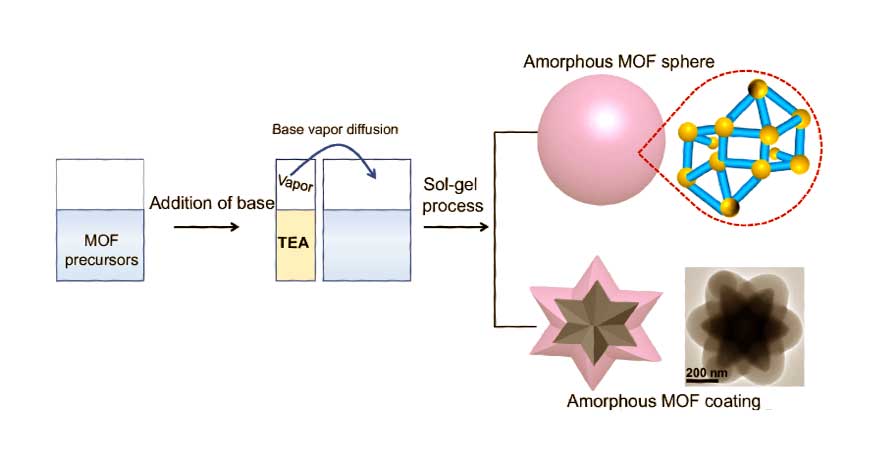

 Dr. Mogull & Visualisierung einer Streuung zweier schwarzer Löcher inklusive Wellenprofil
Dr. Mogull & Visualisierung einer Streuung zweier schwarzer Löcher inklusive Wellenprofil